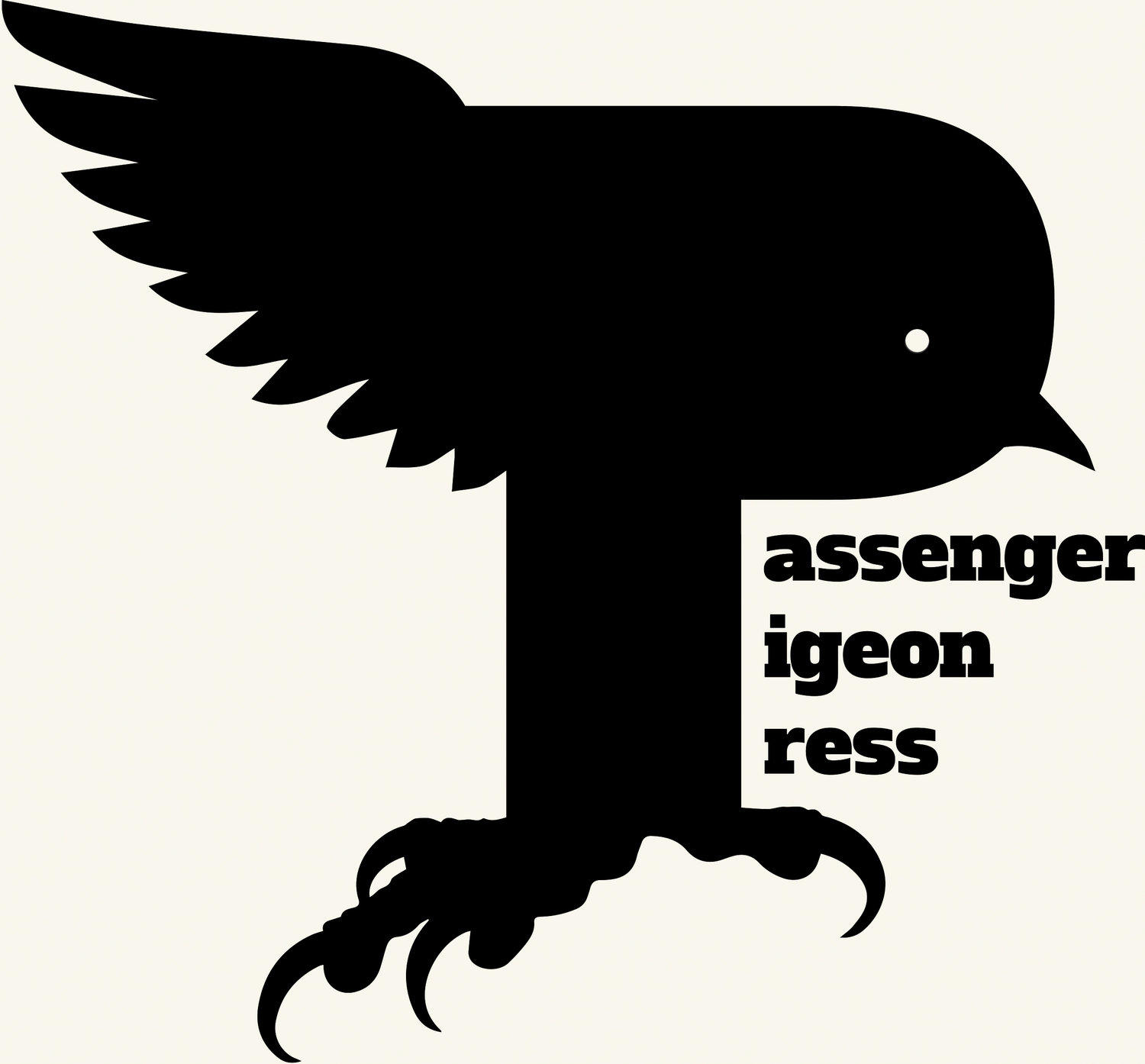Martha’s Quarterly is a quarterly subscription for four handmade artist books a year. Each season, subscribers will receive a new artist book that may take the form of an object, an experimental binding, or a simply beautiful hand-bound book. Martha’s Quarterly aims to present urgent topics through thoughtful and nuanced interdisciplinary collaborations with contributions from people working across disparate subjects, perspectives, and expertises.
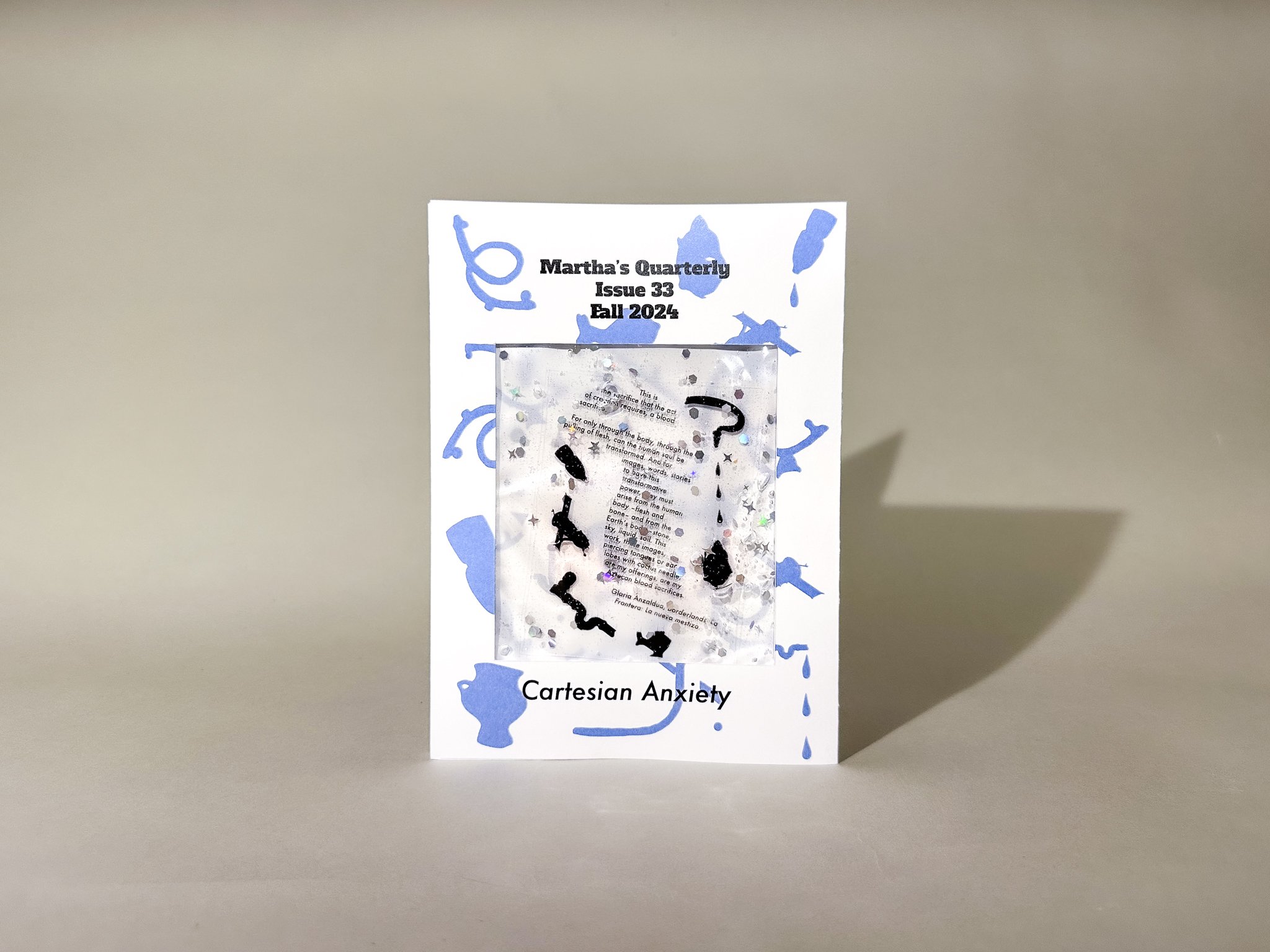
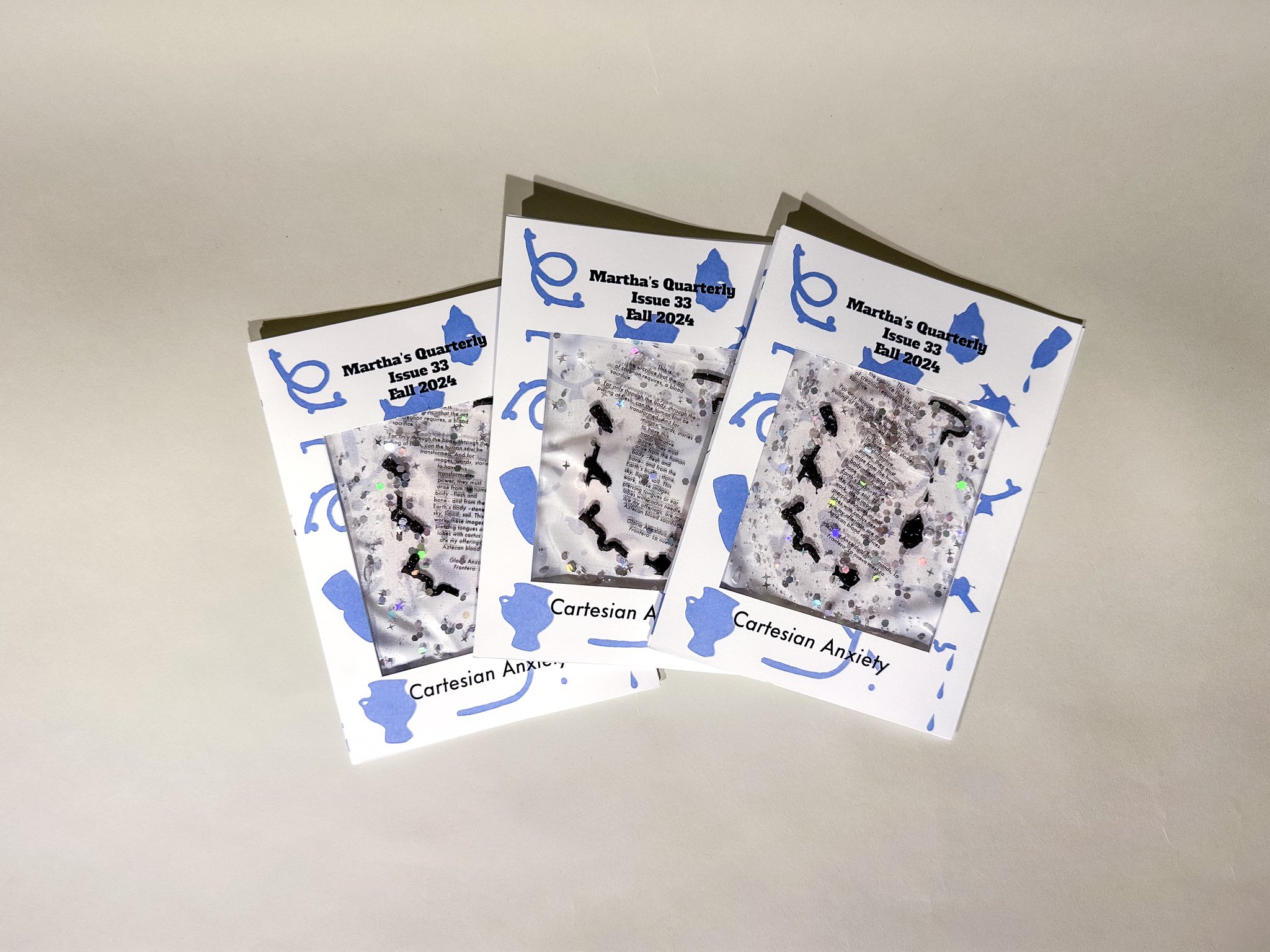

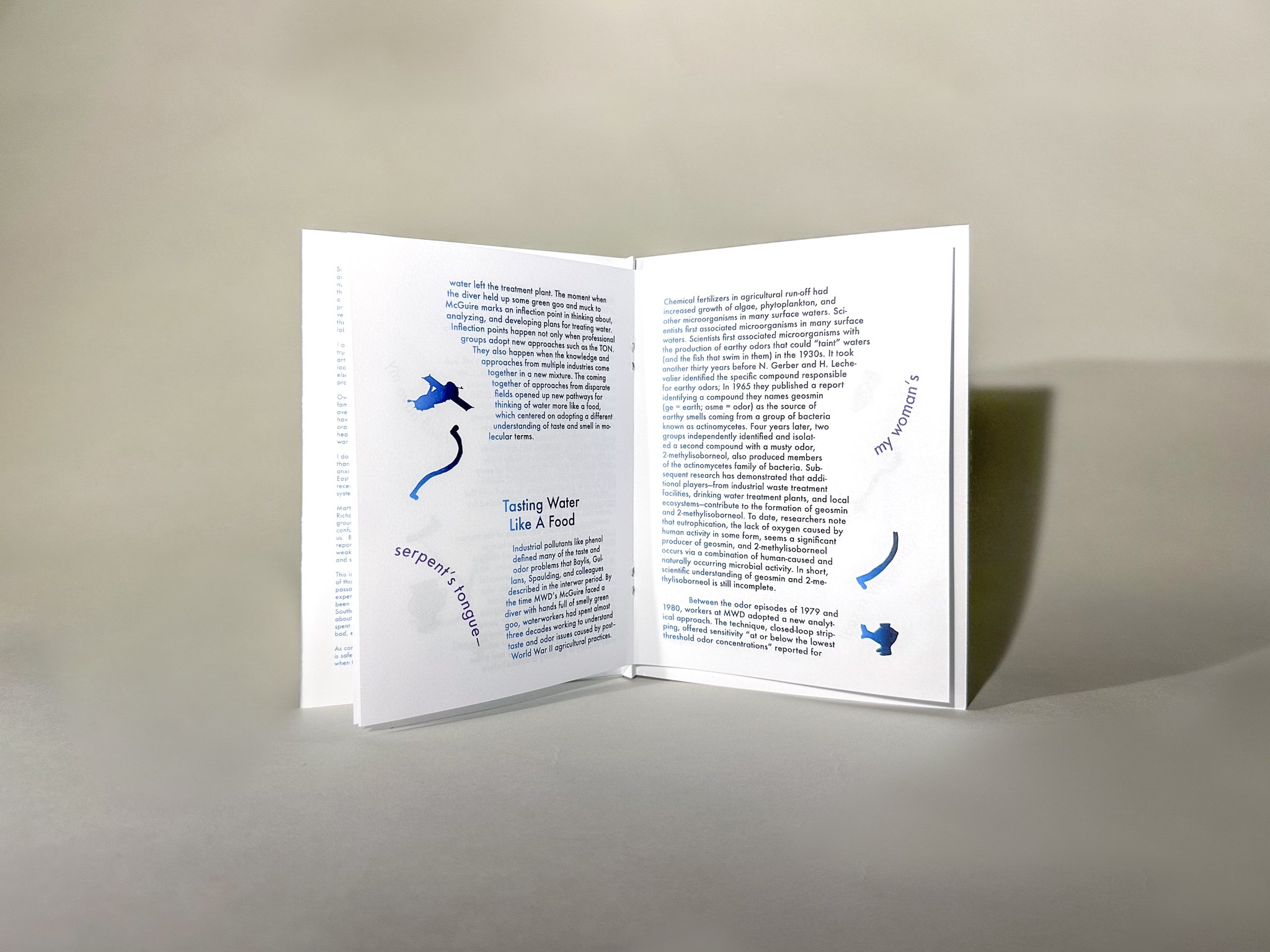
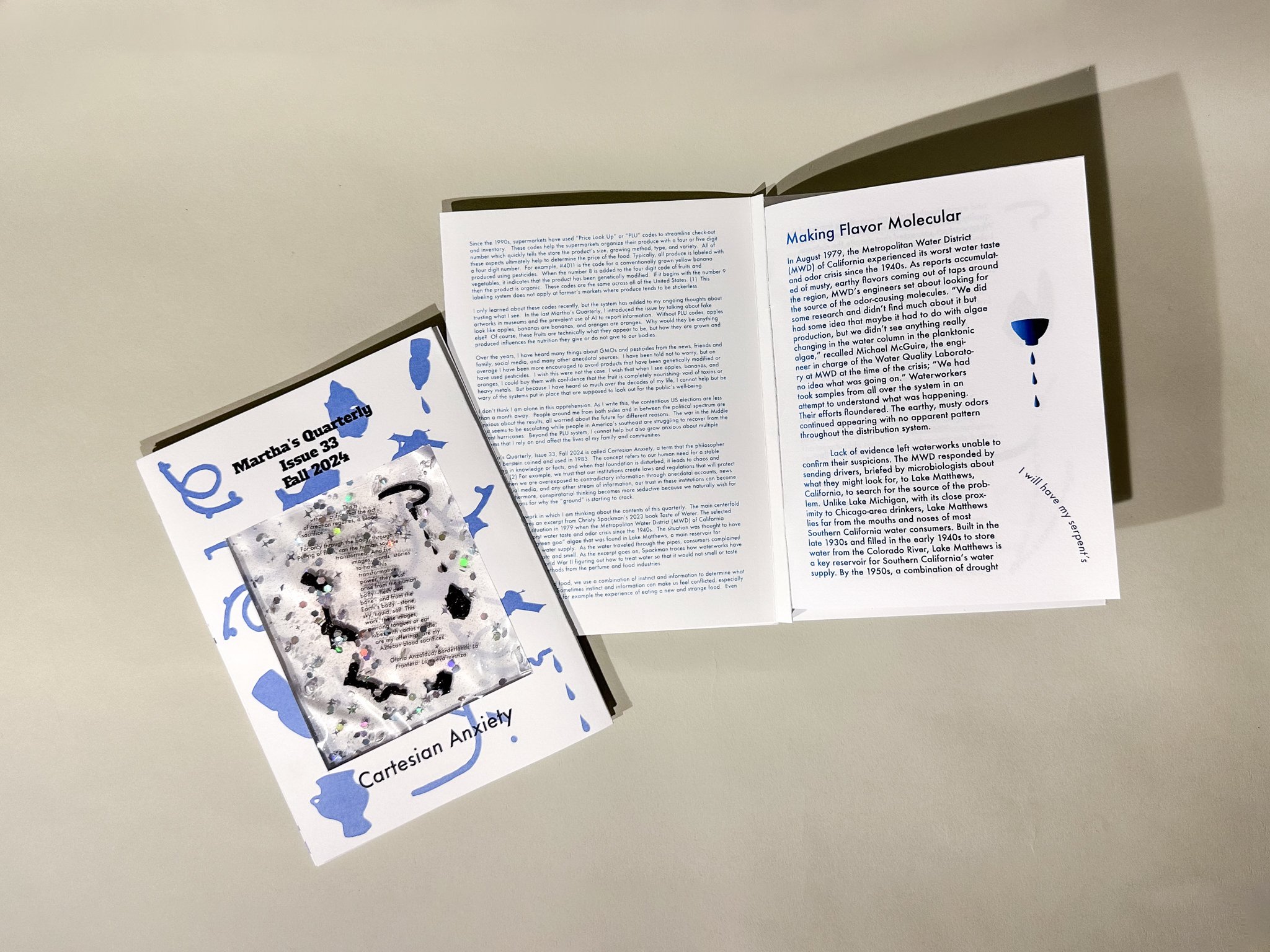


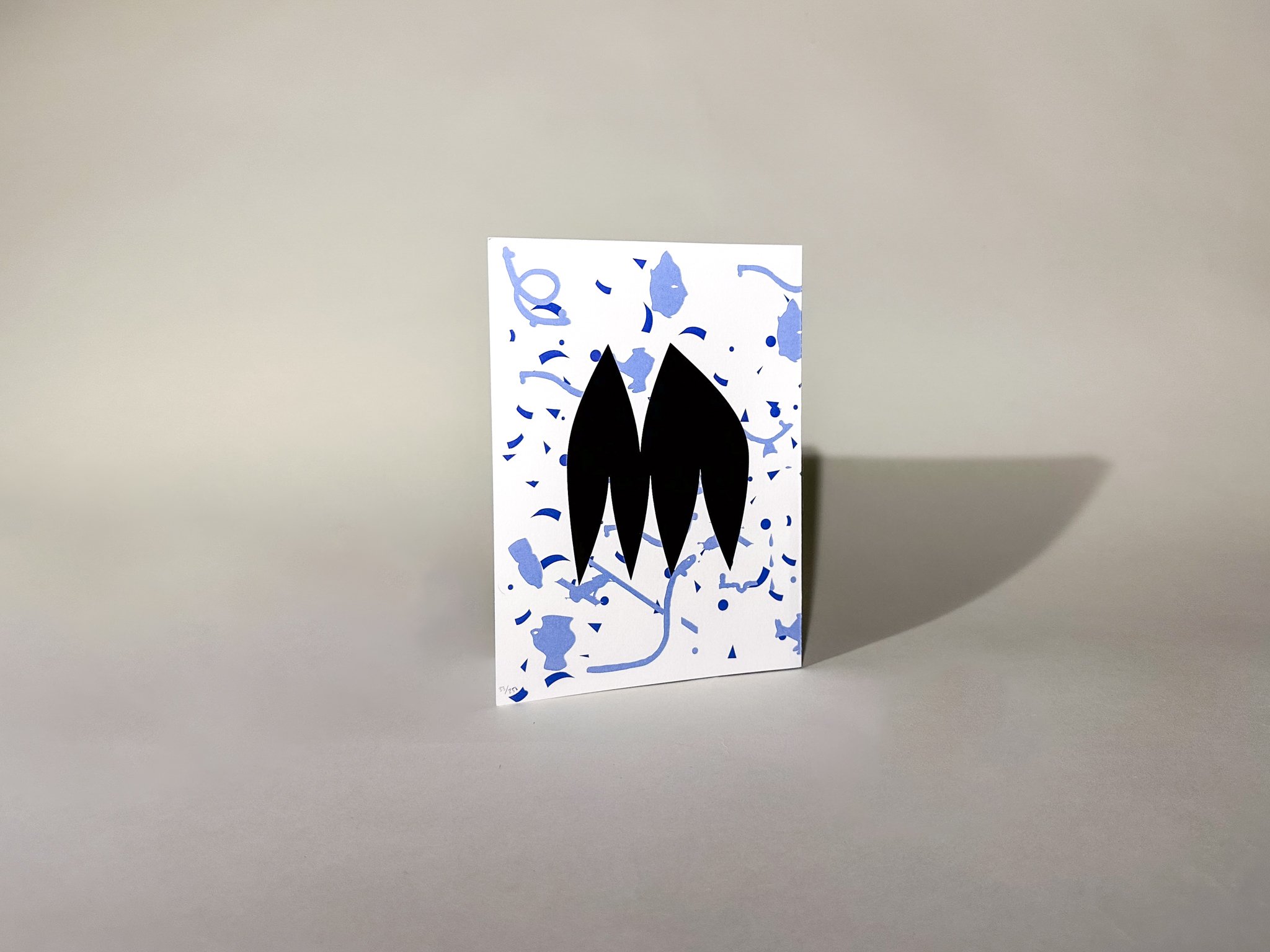
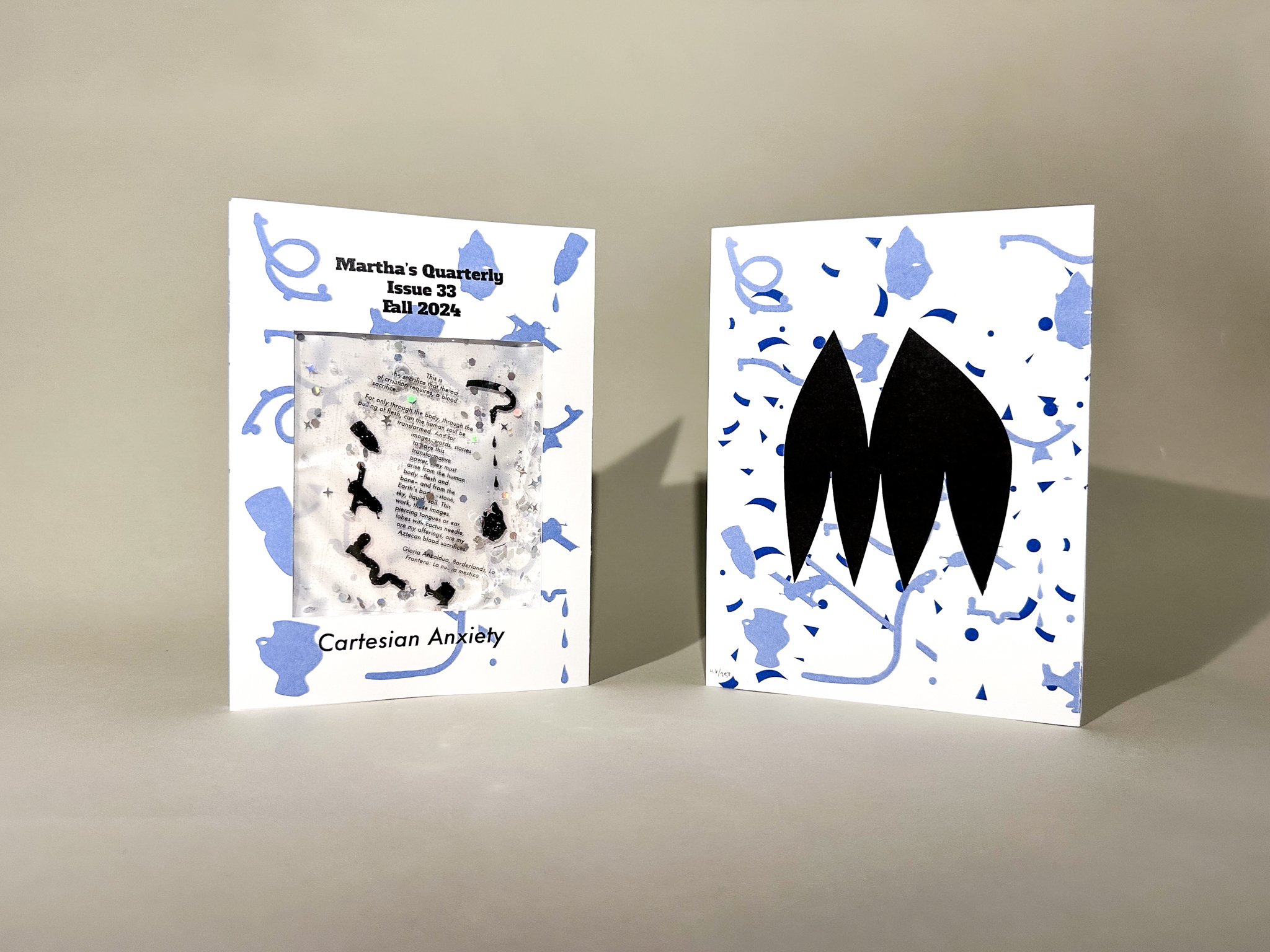
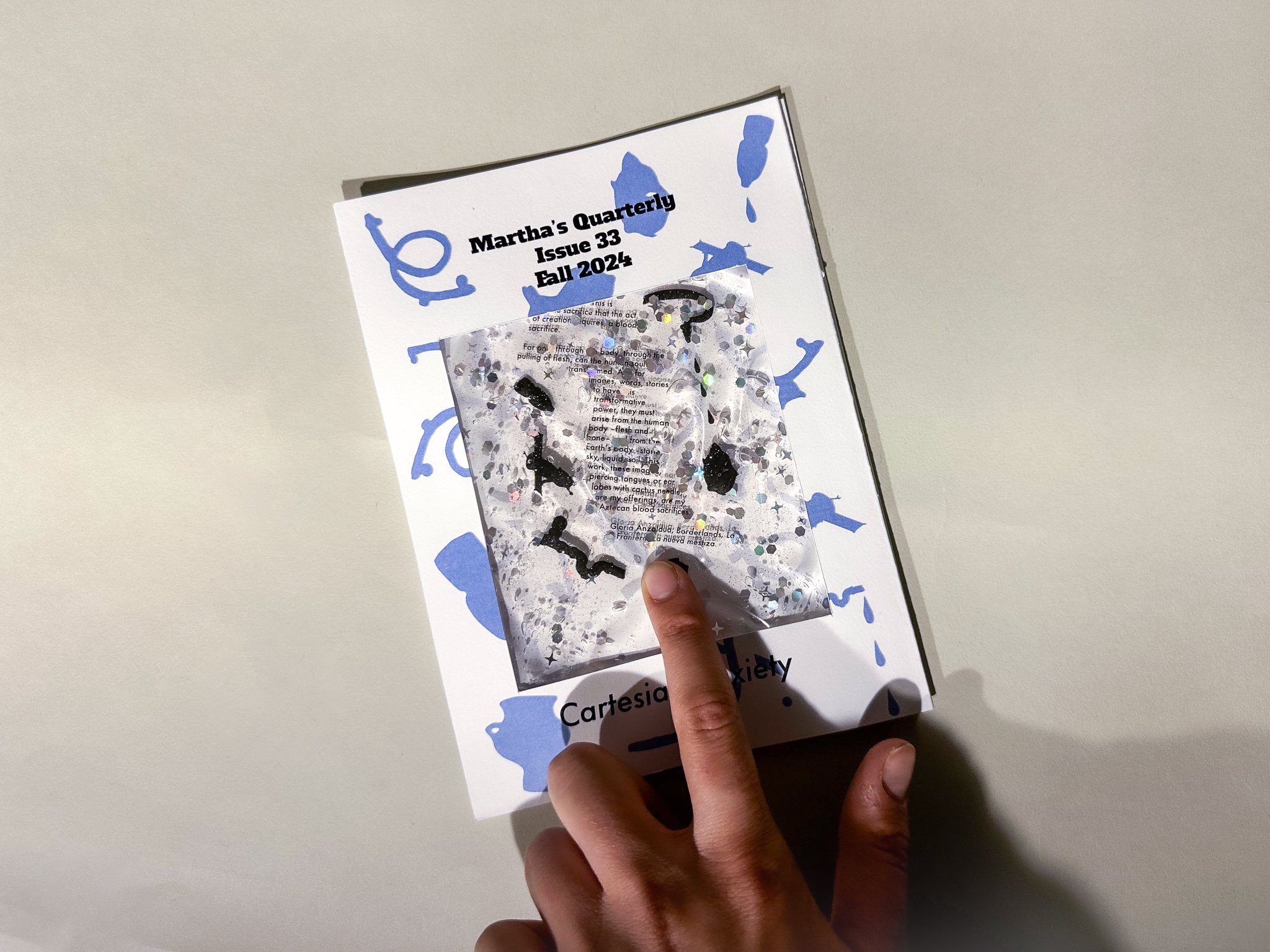

One subscription of four artist books a year starting with Fall 2025.
Two subscriptions of four artist books a year starting with Fall 2025. Great gift for a friend! Fill out any additional addresses at check-out.
Martha's Quarterly
Issue 33
Fall 2024Cartesian Anxiety
7.5” x 5.5” x 0.5”
About the contributors:
Alva Mooses is an artist living and working in Brooklyn, NY. Her works across printed media, installation, and sculpture engage with earth-based materials to create an index of place and signal the memory of geological time. Alva holds a BFA from The Cooper Union and a MFA from Yale University. She has exhibited her work locally and internationally, most recently at Salón SIlicón in Mexico City.
Christy Spackman is a researcher whose work focuses on the sensory experiences of making, consuming, and disposing of food influence and are influenced by “technologies of taste.” She is a baker, aspiring candle stick maker, and fermenter of things.
Since the 1990s, supermarkets have used “Price Look Up” or “PLU” codes to streamline check-out and inventory. These codes help the supermarkets organize their produce with a four or five digit number which quickly tells the store the product’s size, growing method, type, and variety. All of these aspects ultimately help to determine the price of the food. Typically, all produce is labeled with a four digit number. For example, #4011 is the code for a conventionally grown yellow banana produced using pesticides. When the number 8 is added to the four digit code of fruits and vegetables, it indicates that the product has been genetically modified. If it begins with the number 9 then the product is organic. These codes are the same across all of the United States. (1) This labeling system does not apply at farmer’s markets where produce tends to be stickerless.
I only learned about these codes recently, but the system has added to my ongoing thoughts about trusting what I see. In the last Martha’s Quarterly, I introduced the issue by talking about fake artworks in museums and the prevalent use of AI to report information. Without PLU codes, apples look like apples, bananas are bananas, and oranges are oranges. Why would they be anything else? Of course, these fruits are technically what they appear to be, but how they are grown and produced influences the nutrition they give or do not give to our bodies.
Over the years, I have heard many things about GMOs and pesticides from the news, friends and family, social media, and many other anecdotal sources. I have been told not to worry, but on average I have been more encouraged to avoid products that have been genetically modified or have used pesticides. I wish this were not the case. I wish that when I see apples, bananas, and oranges, I could buy them with confidence that the fruit is completely nourishing- void of toxins or heavy metals. But because I have heard so much over the decades of my life, I cannot help but be wary of the systems put in place that are supposed to look out for the public’s well-being.
I don’t think I am alone in this apprehension. As I write this, the contentious US elections are less than a month away. People around me from both sides and in between the political spectrum are anxious about the results, all worried about the future for different reasons. The war in the Middle East seems to be escalating while people in America’s southeast are struggling to recover from the recent hurricanes. Beyond the PLU system, I cannot help but also grow anxious about multiple systems that I rely on and affect the lives of my family and communities.
Martha’s Quarterly, Issue 33, Fall 2024 is called Cartesian Anxiety, a term that the philosopher Richard Berstein coined and used in 1983. The concept refers to our human need for a stable grounding in knowledge or facts, and when that foundation is disturbed, it leads to chaos and confusion. (2) For example, we trust that our institutions create laws and regulations that will protect us. But, when we are overexposed to contradictory information through anecdotal accounts, news reports, social media, and any other stream of information, our trust in these institutions can become weaker. Furthermore, conspiratorial thinking becomes more seductive because we naturally wish for and seek reasons for why the “ground” is starting to crack.
This is the framework in which I am thinking about the contents of this quarterly. The main centerfold of this zine features an excerpt from Christy Spackman’s 2023 book Taste of Water. (3) The selected passage tells of a situation in 1979 when the Metropolitan Water District (MWD) of California experienced the worst water taste and odor crisis since the 1940s. The situation was thought to have been caused by a “green goo” algae that was found in Lake Matthews, a main reservoir for Southern California’s water supply. As the water traveled through the pipes, consumers complained about an off-putting taste and smell. As the excerpt goes on, Spackman traces how waterworks have spent decades since World War II figuring out how to treat water so that it would not smell or taste bad, even borrowing methods from the perfume and food industries.
As consumers of water and food, we use a combination of instinct and information to determine what is safe or not to consume. Sometimes instinct and information can make us feel conflicted, especially when they don’t align. Take for example the experience of eating a new and strange food. Even though we are told it is safe to eat, the strange appearance or smell of a new food can easily make us hesitate to consume it. This tension between primal instinct and information delivered and superimposed by humans is embedded in the second component of this zine, which intervenes with the artist Alva Mooses’ recent body of work Medida del Mar (The Measure of Sea).
The shapes and icons that have been collaged all over and inserted in the cover’s sensory pack are extracted from the artwork Turtle Face and the Last Drop, where Mooses had pounded aluminum cutouts into symbols that point to ancient histories and human-made systems that strive to control societies. These images include milk jugs, water vessels, pipes, droplets, and a deconstructed globe. Floating in the sensory pack and slithering along the margins of Spackman’s writing are pieces of writing by Gloria Anzaldua, from whom Moose draws inspiration.
When you push through the clear goo of sparkling glitter and iconography, you’ll be able to read a short passage by Anzaldua. It is a vivid passage that alludes to motherhood and the intimate and bodily connection humans have with the planet. For me, this text along with Mooses’ work serves as a striking juxtaposition to Spackman’s writing. Together, they point to a tension that we constantly have to make peace with. This is the negotiation between gut instinct and information that strives to be objective and truthful while also being misleading and biased. Gut instinct is something that I see as intrinsic and deeply embedded in Mooses’ imagery– we all have it as a result of being children, parents, siblings, community members, and more. The sensory packet is presented on the cover of this zine to first direct you to something sensorial. It is your senses - your trust in water - that get pushed and pulled as the world of information swirls around you.
- Tammy Nguyen
(2) https://en.wikipedia.org/wiki/Cartesian_anxiety
(3) Speckman, Christy, “Making Flavor Molecular,” The Taste of Water: Sensory Perception and the Making of an Industrialized Beverage, University of California, 2024, pg 67-93.
@passengerpigeonpress
Martha’s Quarterly, Issue 33, Fall 2024, Cartesian Anxiety was produced using digital printing for all of its printed components. The inner pamphlet was printed on 20 lb. white and the cover was printed on 110 lb. cardstock. The sensory packet was made with vacuum sealed plastic, aloe vera gel, digitally printed acetate, and holographic glitter in varying shapes. The font used throughout was Fortuna in different sizes and styles. “Make Flavor Molecular” was used with permission from Christy Spackman and University of California Press. This issue was edited and designed by Tammy Nguyen and produced by Holly Greene, Chance Lockard, and Daniella Porras.
Published in October 2024, this is an edition of 250.
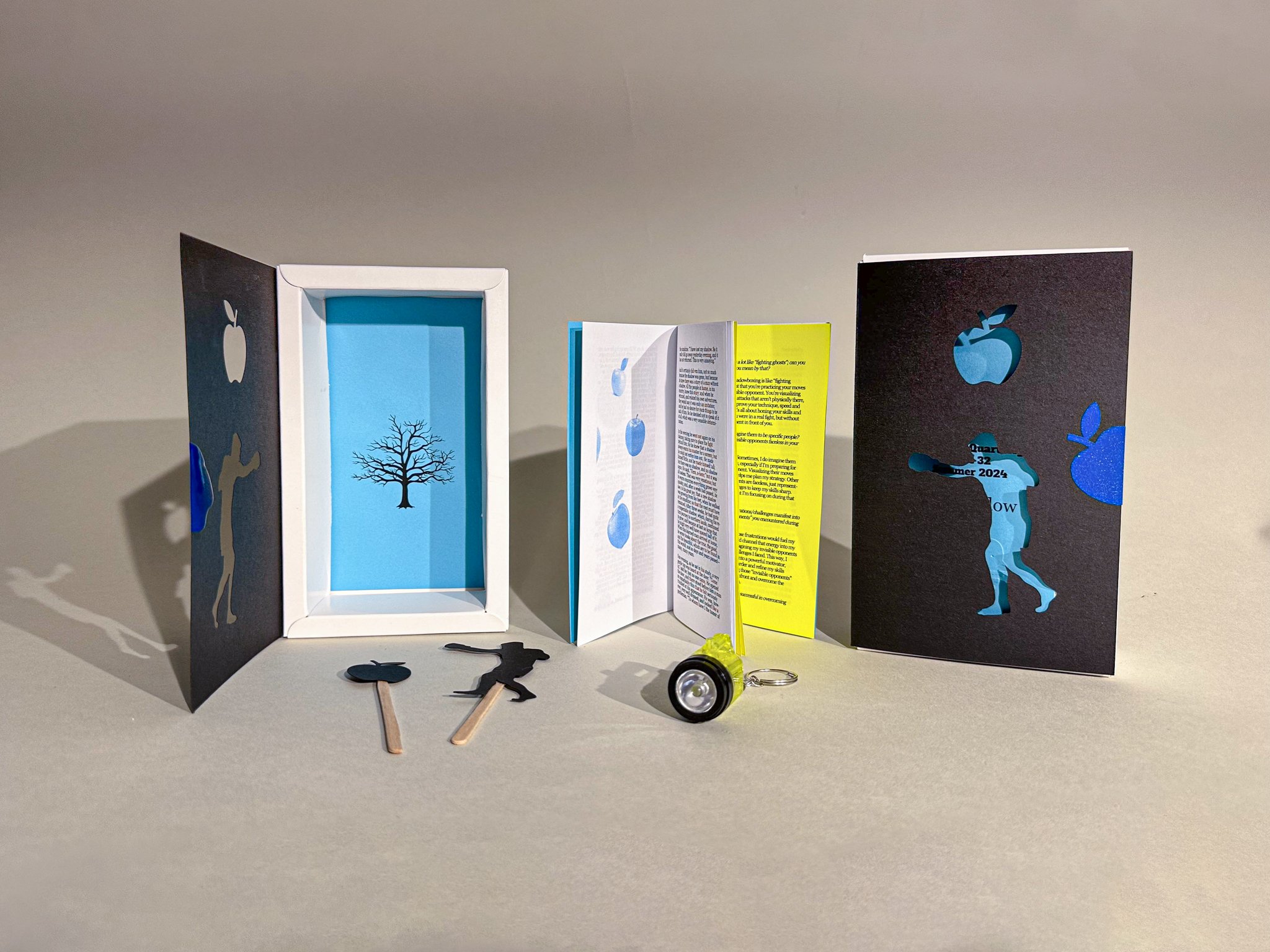
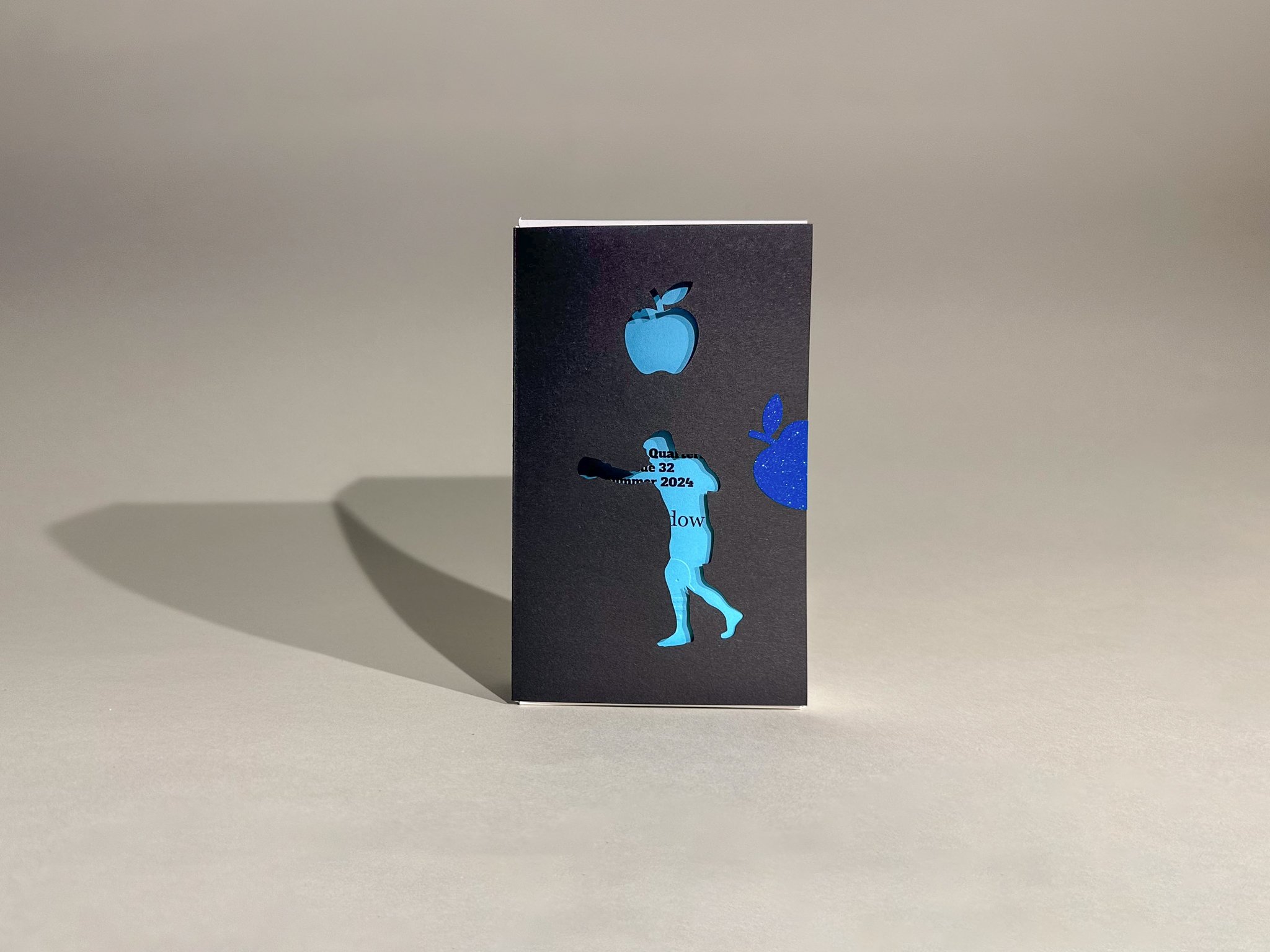
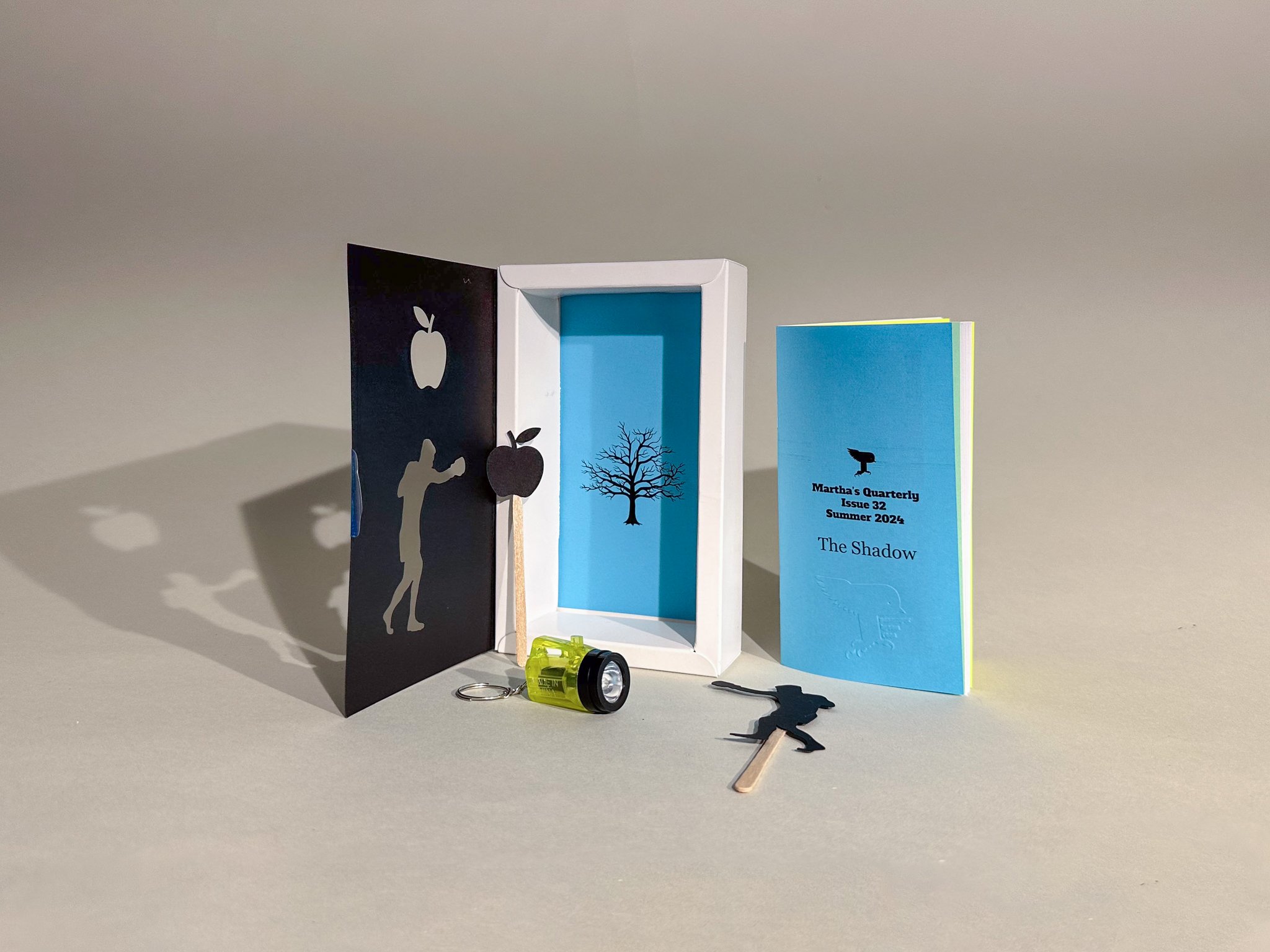
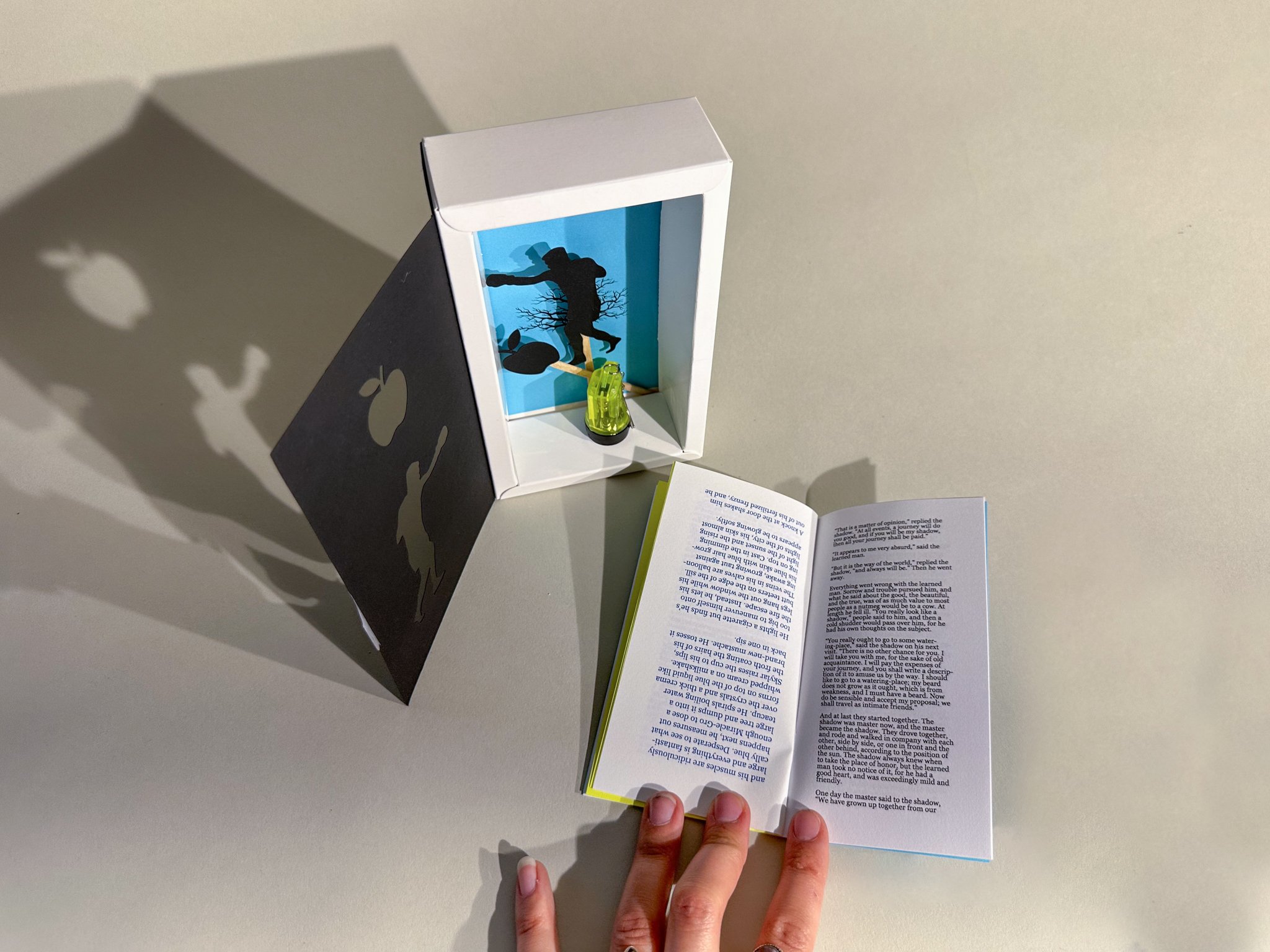
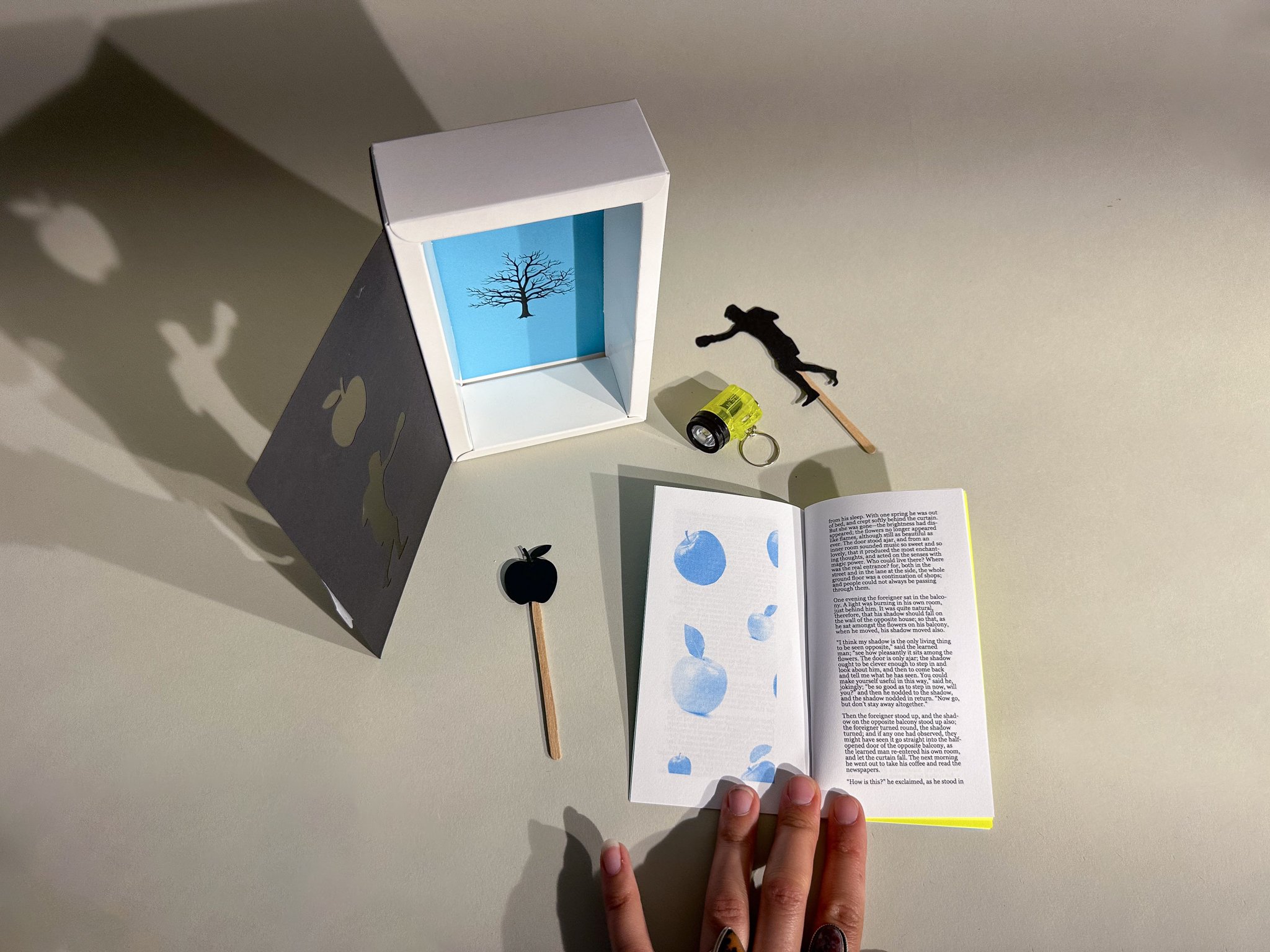
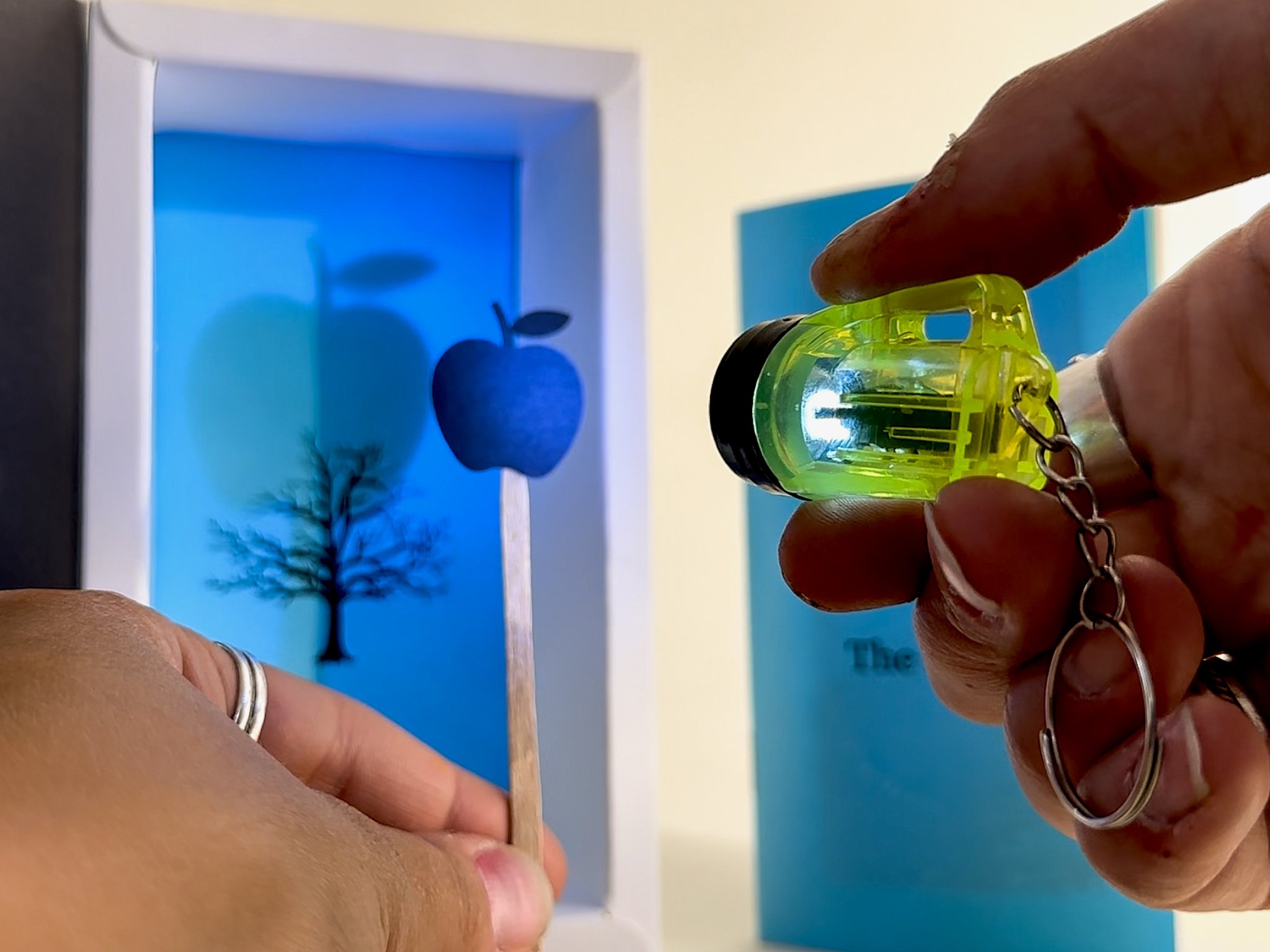
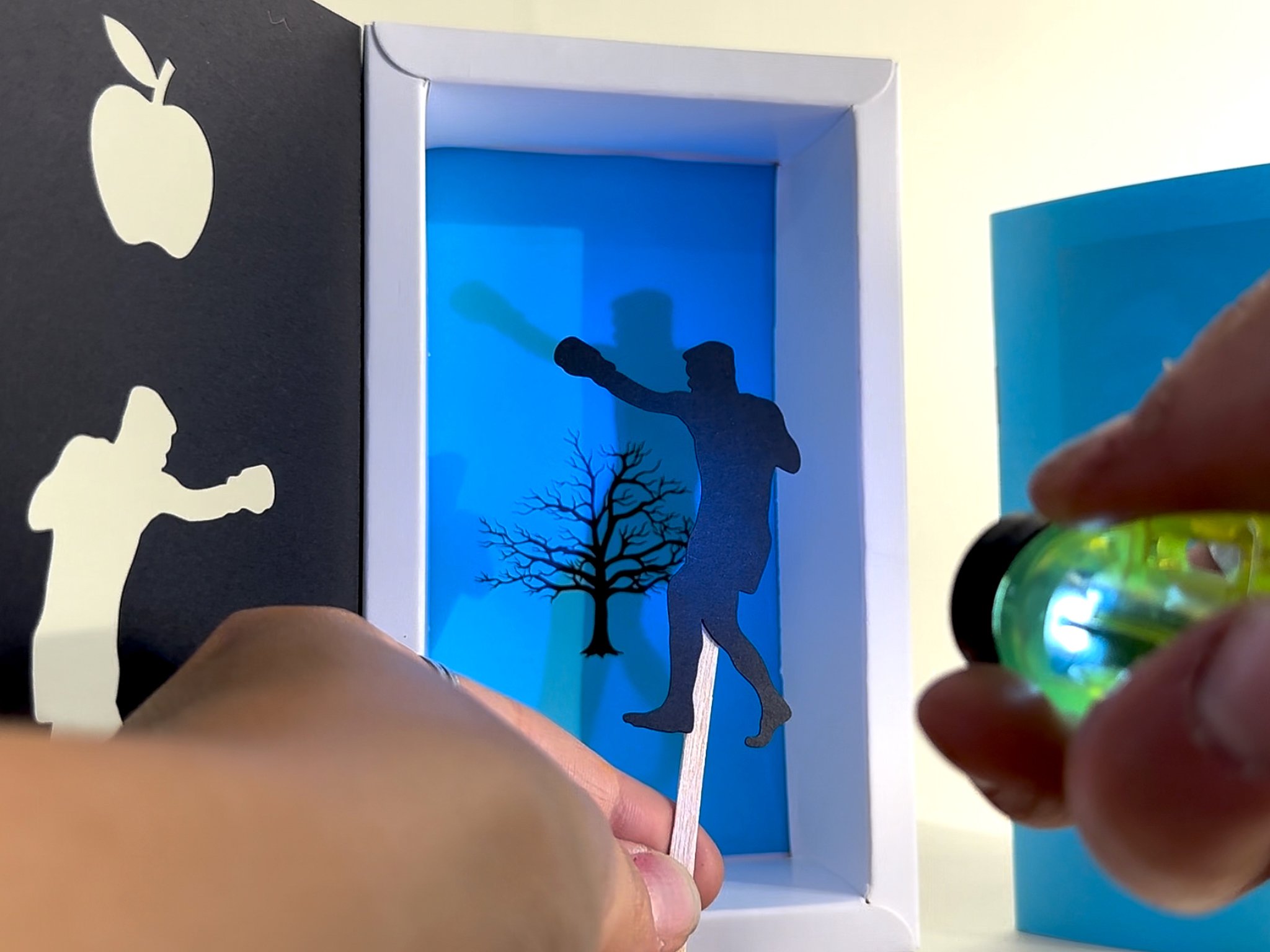
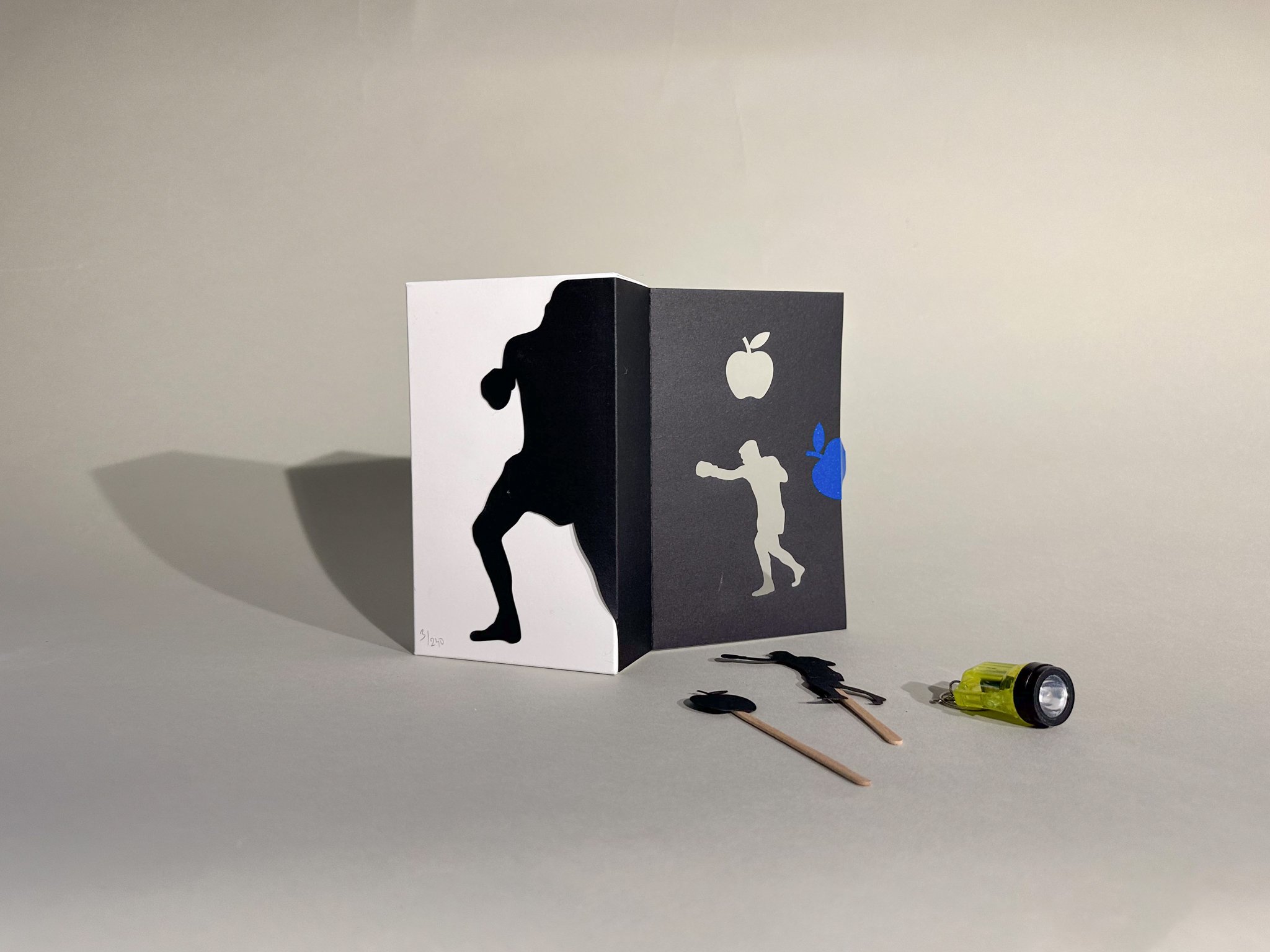
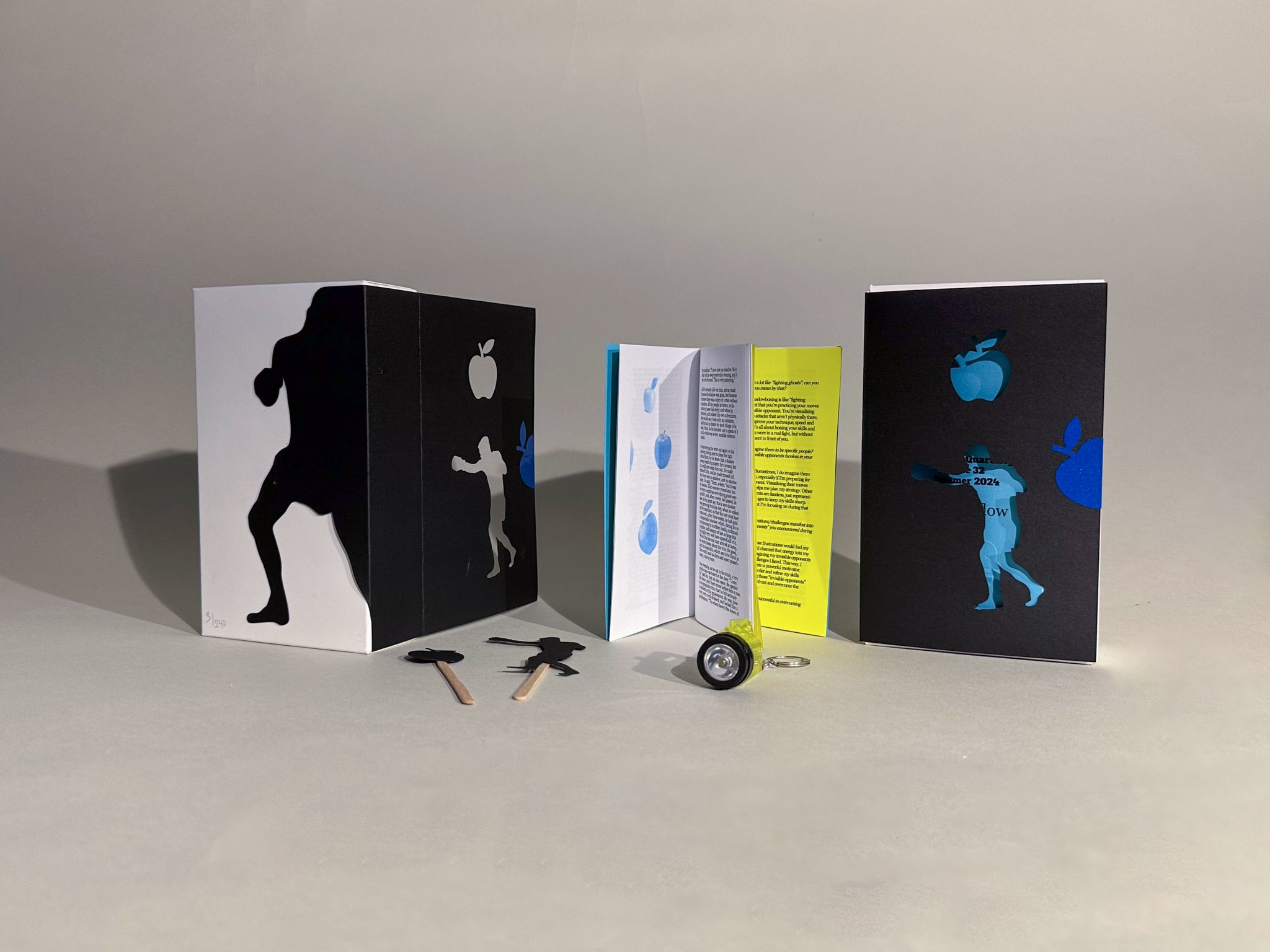
Martha's Quarterly
Issue 32
Summer 2024
The Shadow
6.75” x 4.25” x 1.5”
About the contributors:
Hunter Julo is a writer from Kansas City. They graduated from Wesleyan University in 2022 and live in Brooklyn where they dress the superheroes of tomorrow at Brooklyn’s Superhero Supply Co.
Hans Christian Andersen (1805-1875) was a Danish author who wrote plays, travelogues, novels, and poems. His most loved and remembered works are his literary fairy tales, of which there are over 150 across nine volumes.
Sabine Chai is from Fairfield County, Connecticut. She is an undergraduate student at Vassar College pursuing a degree in Art History, and is hoping to enter the field of Art Conservation.
ChatGBT Muhammad Ali is an AI generated, digital persona of Muhammad Ali that was developed through the automated synthesis of online archives.
This summer, I have continued to ponder the importance or insignificance of truth. When I was living and working in Saigon fifteen years ago, I remember speaking to someone from the Ministry of Culture regarding artifacts at the Fine Arts Museum of Ho Chi Minh City. The authenticity of the objects in the museum was commonly questioned. It wouldn’t be strange to hear jokes about how the objects in the museum were all fake and that the real objects were probably sitting in some official’s house. I asked this officer whether or not she thought the object or its story was more important to the public. Without pause, she said that the story was more important, without the story, visitors would not learn about Vietnam.
I am awestruck by deepfakes. These are images and videos that have been entirely rendered, as in, they do not use source materials from real life, like a human subject or an environment. Rather, what you see has been built from synthetic elements generated by artificial intelligence. Some of this content has been so compelling that the message is undoubtedly absorbed— that is… if you don’t question the authenticity of the content in the first place. If I have to question, I can become disturbed, and at the very least a little bit distrustful.
This was my feeling when I saw Victoria Shi, the world’s first AI diplomat. Speaking on behalf of Ukraine’s foreign ministry, Victoria delivers statements from the humans working in the foreign ministry’s press service. The statements, she asserted, will be verified by real people. Victoria is a beautiful woman, modeled after Rosalie Nombre, a Ukrainian singer and former contestant in Ukraine’s version of The Bachelor. The foreign ministry said that Nombre took part in creating Victoria and that Nombre and Victoria are two different people. I am unsure if knowing any of this instills trust in the public. But, if Victoria continues to be seen, she will surely have her own life in the public’s consciousness. (1)
As I was thinking about this, I encountered a conversation between Salman Rushdie and Ezra Klein on the Ezra Klein show that inspired Martha’s Quarterly, Issue 32, Summer 2024, The Shadow. In April, Klein interviewed Rushdie on the debut of his new book Knife, a memoir and reflection on his life, relationships, and also his near-death experience when someone stabbed him fifteen times. At the beginning of the interview, Rushdie tells Klein of one of his favorite stories, The Shadow by Hans Christian Andersen, about a man and his shadow. The shadow leaves his man and lives a life of his own. It thrives to the point where the man in his old ailing age becomes the shadow’s shadow, and ultimately the shadow leads the man to his demise. (2)
Rushdie used this story as a way to speak about how his own life has been defined by a kind of shadow. Rushdie’s shadow was generated by the public after Iran’s Supreme Leader, Ayatollah Ruhollah Khomeini, issued a fatwa ordering the execution of Rushdie due to the publication of his novel The Satanic Verses. As the conversation continued, Rushdie expressed frustration at how this fatwa affects how people perceive him. Every book he has published since the fatwa seemed to always refer back to the Satanic Verses and then the fatwa. He couldn’t control his expression— people’s idea of him seemed to take on a life of its own, thriving to the point that decades later a young man decided to seek him out at a literary festival to finish the fatwa’s ordering. (3)
Rushdie’s story really moved me, and I think it speaks to a conflict that many people share. How many times have we felt that the public or community took an idea of us and let it run free? How often have we felt the sadness that our true selves are not known to others?
Hans Christian Andersen’s The Shadow is featured in this quarterly, and I asked the writer Hunter Julo to respond to it with their own fiction. The protagonist in their vignette is named Skylar, a young person who is exploring his gender identity as well as his overall identity in the world. Julo’s story takes us through Skylar’s thoughts where they remember an apple tree of his childhood. This later seems to represent a kind of shadow when a glowing blue apple is taken out of their throat by a girl named Greta. The blue apple seems to hold all of Skylar’s masculine aspirations and as it leaves his body, his previous biology reemerges.
Wedged inside of The Shadow and Julo’s fiction is a conversation between Sabine Chai and ChatGPT as Muhammad Ali, one of the world’s finest athletes who epitomizes masculinity. The conversation begins with Sabine asking Muhammad Ali about shadowboxing. He talked about why it was essential to his practice and how he would create invisible opponents through the training. Later on, he talked about the fame he achieved and suggested that it allowed him to become an activist for the civil rights movement, anti-war movements, and much more. Fame, it seemed, was part of his shadow which amplified his true self. But of course, this overly smooth conversation was generated by ChatGBT which takes all of its information from the internet. This AI can only ever be another shadow of the real Ali.
Enclosed inside of this box are a small light and two shadow puppets, one of an apple and the other of a boxer. Pasted into the bottom of the box is an image of a barren apple tree. Use the light to project shadows onto and around the tree. Use it to generate your own stories, which will also become more shadows of all of the truths and fictions shared here.
- Tammy Nguyen
(1) https://www.theguardian.com/technology/article/2024/may/03/ukraine-ai-foreign-ministry-spokesperson
(2) https://www.nytimes.com/2024/04/26/opinion/ezra-klein-podcast-salman-rushdie.html
@passengerpigeonpress
Martha's Quarterly, Issue 32, Summer 2024, The Shadow was produced using single-color photocopy, xerox, and cricut and laser cutting. Georgia font was used in various sizes and styles throughout. This edition was printed on text weight, Astrobright paper in varying colors. The work entitled The Shadow was sourced from Andersen’s website and has been released to the public domain. The short fiction by Hunter Julo was published with the author’s permission. This issue was designed and edited by Tammy Nguyen with additional editing from Holly Greene. This quarterly was produced by Holly Greene, Sabine Chai, Cheney Hester, and Elisa Alt.
Andersen, Hans Christian. “The Shadow”. HCA.Gilead.org, http://hca.gilead.org.il/shadow.html.
Julo, Hunter. Untitled, 2024.
Published in June 2024, this is an edition of 240.










Martha's Quarterly
Issue 31
Spring 2024
Wrinkle from the Sun
About the contributors:
Alexander Hill (1856 - 1929) was a medical doctor and professor at the University of Cambridge. He was a brain specialist who is credited as being the first person to use the term 'neuron' in English to describe the nerve cell and its processes.
Mely Kornfeld is a writer and recent graduate of Wesleyan University, where she majored in American Studies. You should check out her blog tellittothedog.substack.com.
In the early weeks of spring, I was on vacation with my family and friends in Barcelona. On a bright sunny day, we went to visit the storied Sagrada Familia, a grand cathedral designed by the Spanish visionary architect Antoni Gaudí. Gaudí is known for his buildings that are imbued with narrative and ornate geometry— often using shapes that are found in nature but that challenge the physical characteristics of building materials such as stone and wood. I have been lucky to visit many stunning houses of worship in my life, but I don’t think I have ever been as awestruck as I was visiting this temple.
The entire story of Christianity seemed like it could crash upon you like an avalanche. The whole basilica could be thought of as a stone bible (1). Visitors enter the church from the Nativity facade, the side of the building that tells the story of the birth of Christ. It seemed that all over four tours and three entrances, the church was bursting with stone foliage and blossoms. In each floral opening, a different aspect of the birth of Christ emerged: Mary and Joseph’s union, the annunciation, the star of Bethlehem, and more. Your eyes could not rest in space because you would see a deer, a cow, a bird, and more and more of the Earth’s animals. The introduction to the church was like a stream of visual drums beating on your eyes, the rhythm and tempo becoming more overwhelming until the speed of visual information reached an unworldly crescendo; and then you could finally enter.
And then exhale.
The inside of the Sagrada Familia is very airy with slick stone pillars that look like earth was simply pulled from the ground and flowered into a sunburst once the stems reached the vaulted ceilings. After rolling my head around to look at the many intricacies above, I was drawn to the many stained glass windows that were framed by each pillar. The windows were all made of geometric shapes and boldly filled in with a color of the rainbow in such a way that if you were to step back, all of the windows depicted a rainbow made of clear primary and secondary colors. Even though sunlight was being strained through the colored glass, it felt as if each window was trying to suck you out of the church into an endless rainbow.
My family and I continued to explore the church, entering the sanctuary and admiring the altar of a suspended, crucified Christ with a ring of grapes and lights circling Him. As I looked back to where we came from, the bold stained glass rainbow was no longer seen. Instead, I saw soft rainbows beaming in. Even gradations of red, orange, yellow, green, blue, and purple light flowed into the church’s airspace as if we had found the end of a rainbow.
This experience inspired Martha's Quarterly, Issue 31, Spring 2024, Wrinkle in the Sun. If I had to zero in on what I found so profound at the Sagrada Familia, it was the felt contradiction of materials evoking things that they were not, and therefore challenging the secular side of my ethos to lower its shield and welcome the spiritual. The transformation of distinct colored glass into the experience of a rainbow was so simple, the technology of light and glass appearing before my eyes- no tricks, and yet, the suggestion of faith? Maybe so.
Seeing is believing, right? This is the framework in which I invite you to explore this zine with me. Featured in this Martha’s Quarterly are two pieces of writing embedded in a folded card that has been collaged with the images from the Nativity facade of the Sagrada Familia. The small green pamphlet contains original fiction by the writer Mely Kornfeld commissioned by Passenger Pigeon Press for this zine. We asked Kornfeld to respond in any way to rainbows, and her vignette tells us of an unsatisfied girl and her tepid, yet existential relationship with rainbows. Juxtaposed to this work is an excerpt entitled Vision from the 1908 book A Treatise on the Principles of Physiology by Alex Hill. With clear diagrams and illustrative descriptions, Hill describes the mechanics of these vital organs we use in the seamless act of seeing. Between these two writings, I hope to probe at the query of sight and faith.
When this whole zine is unfolded, there is a triangular window that you can hold up to your eyes. Look through it, and your whole line of vision will be filled with rainbows.
We live in a unique time of slippage, where what we see could align with what we believe, but it very well could not. This happens frequently in the digital space, where we can’t tell the difference between real life and rendered reality. What is special about the rainbow effect in the Sagrada Familia is that the illusion of a rainbow happens in real life through real physical materials you can identify. And, even though it is real, it is simultaneously so unreal that it suggests a level of consciousness we cannot see but could choose to believe in.
-Tammy Nguyen
(1) The Basilica of the Sagrada Familia, Dosde, 2022, pp. 024.
@passengerpigeonpress
Martha's Quarterly, Issue 31, Spring 2024, Wrinkle From the Sun was produced using single-color photocopy, xerox, and laser cutting. Futura Medium font was used in various sizes and styles. The cover paper printed on Springhill blue 147 gsm cardstock. The internal pamphlets were printed on 20 lb. Hammermill green paper and 24 lb. Astrobright neon yellow paper. The paper sleeve was printed on 20 lb. Neenah solar yellow paper. The pamphlet entitled “The Body at Work: A Treatise on the Principles of Physiology, Chapter XIII: Vision” was written by Alex Hill, M.A., M.D., F.R.C.S. and sourced from Project Gutenberg. Mely Kornfeld wrote the short fiction on the green pages. The images on the cover were collaged from The Basilica of the Sagrada Familia. Mely Kornfeld has granted permission for the use of her work in this publication, and “The Body at Work” has been released into the public domain. This issue was designed and edited by Tammy Nguyen with additional editing from Holly Greene. Production was led by Daniella Porras with assistance from Cheney Hester, Dylan Ng, Lena Weiman, Spencer Klink, and Lexi Radziner.
Hill, Alex. “Chapter XIII: Vision.” The Body at Work: A Treatise on the Principles of Physiology, 1908, pp. 372-403.
Kornfeld, Mely. Untitled, 2024.
Published in April 2024, this is an edition of 250.
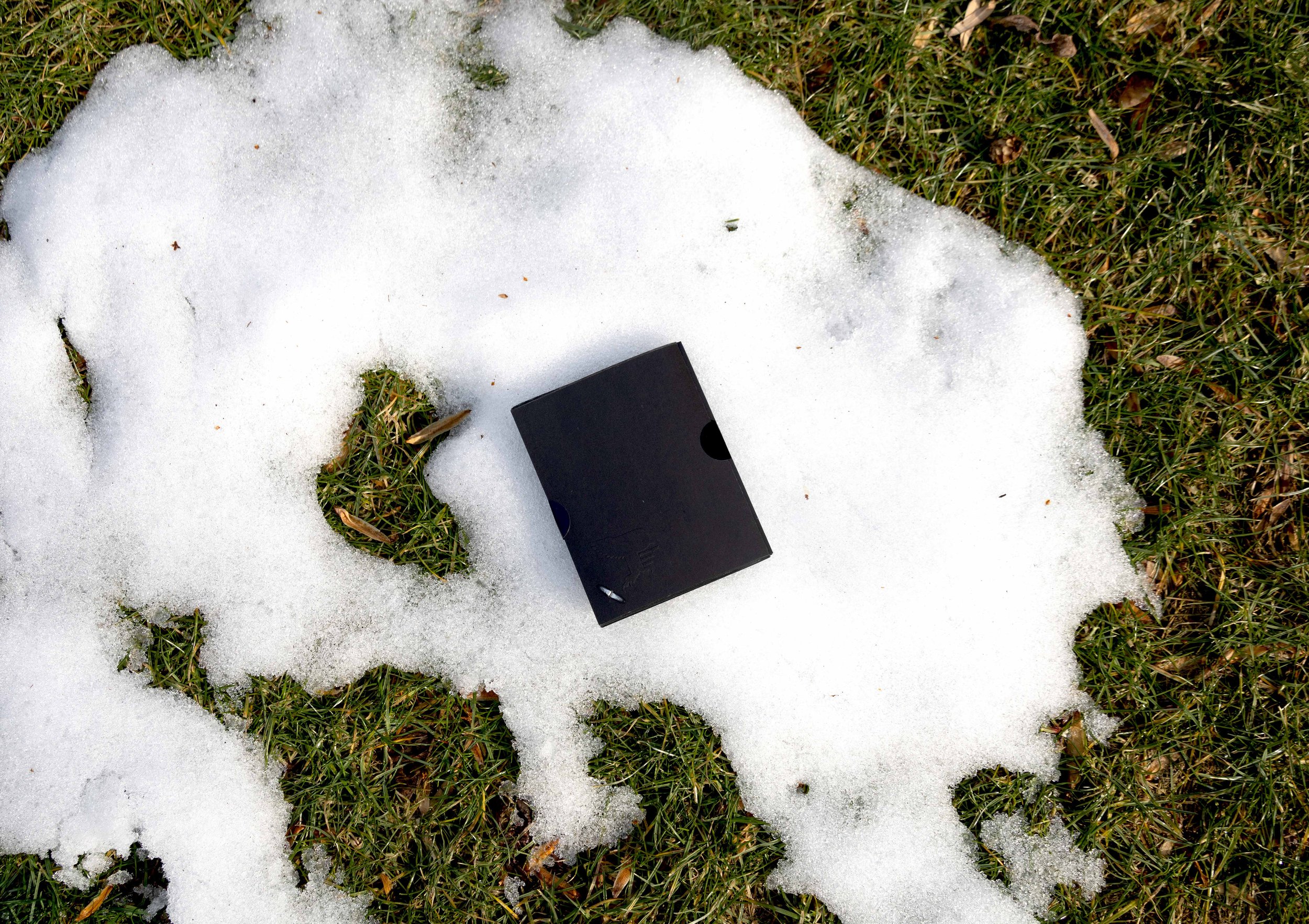

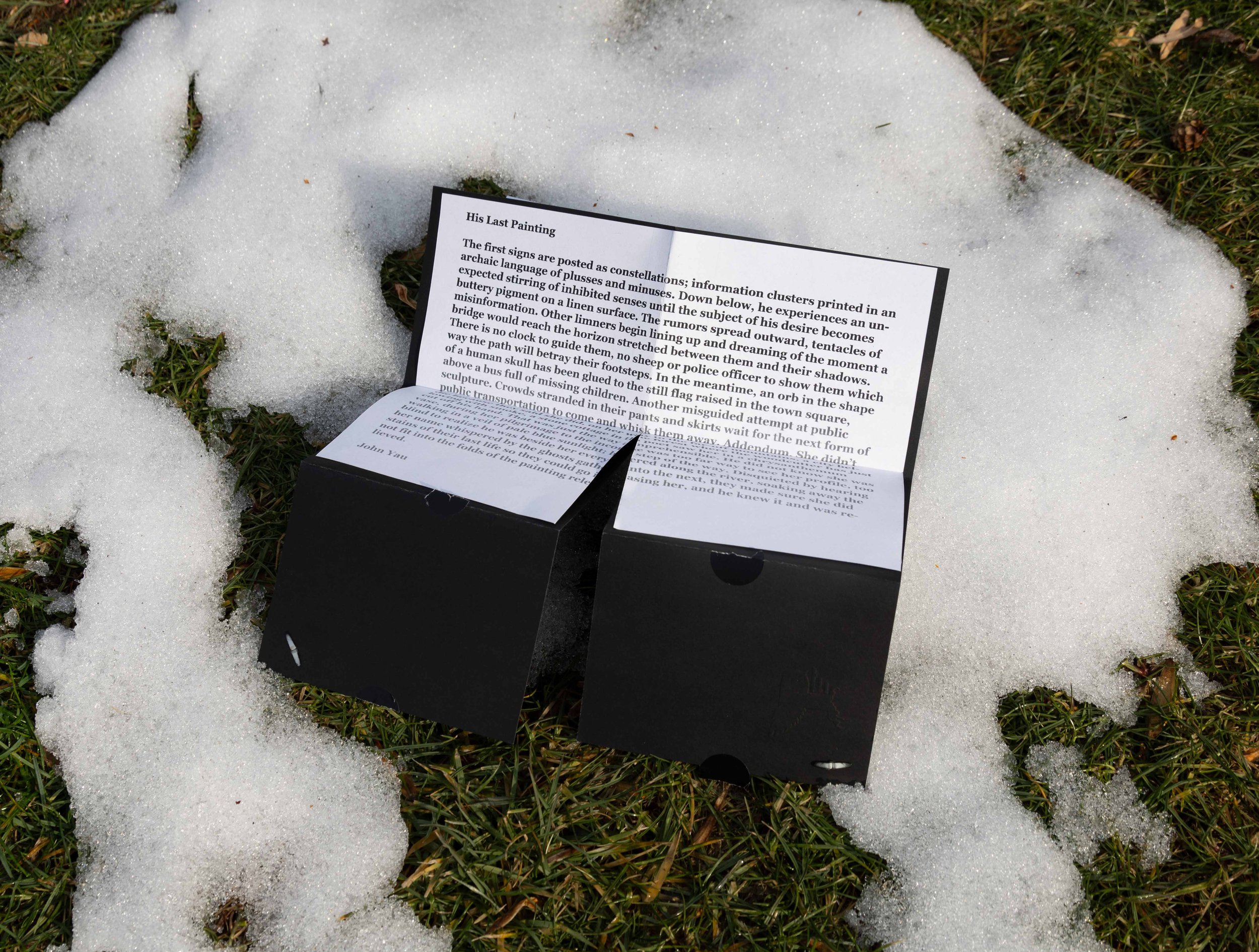
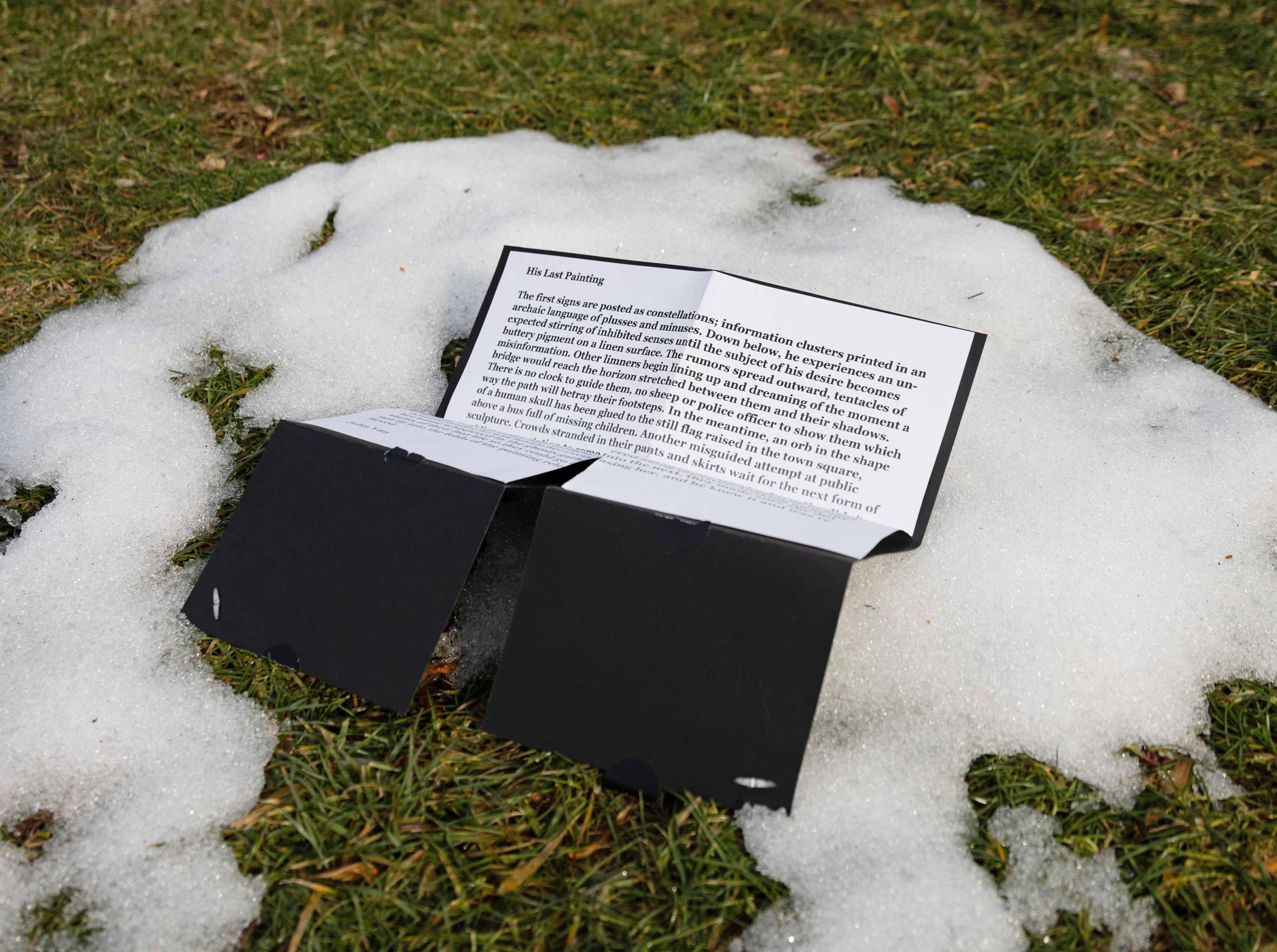

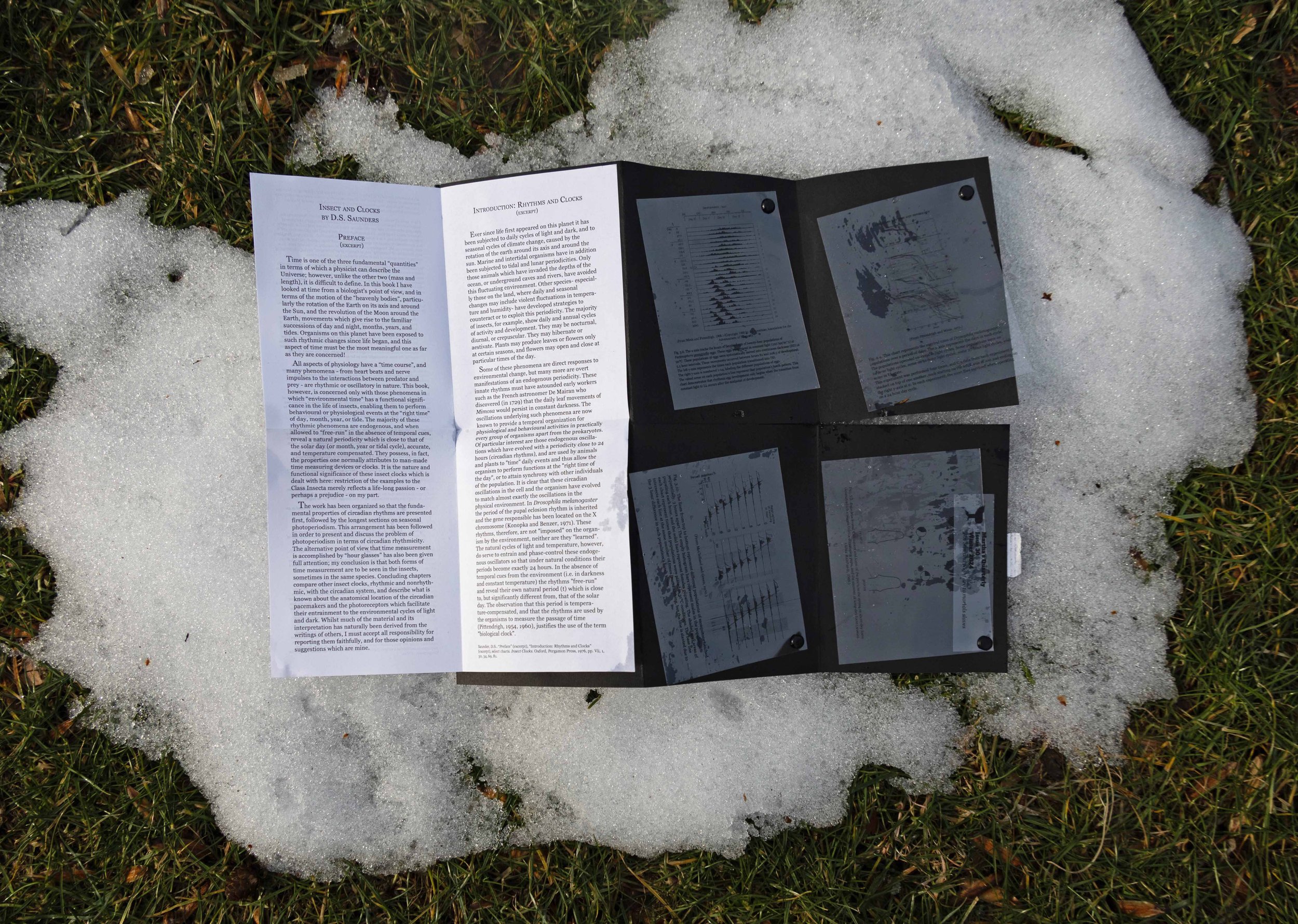
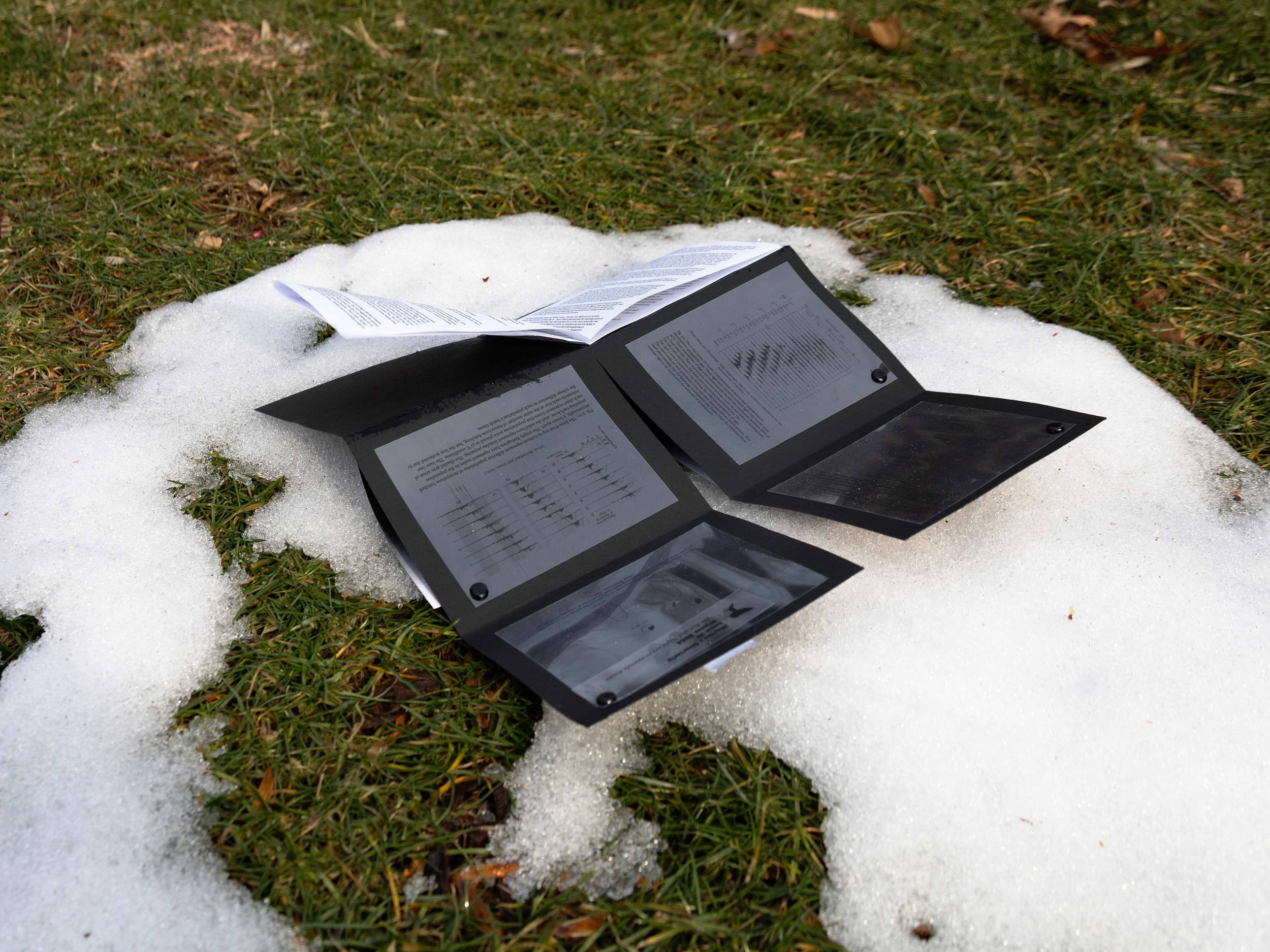
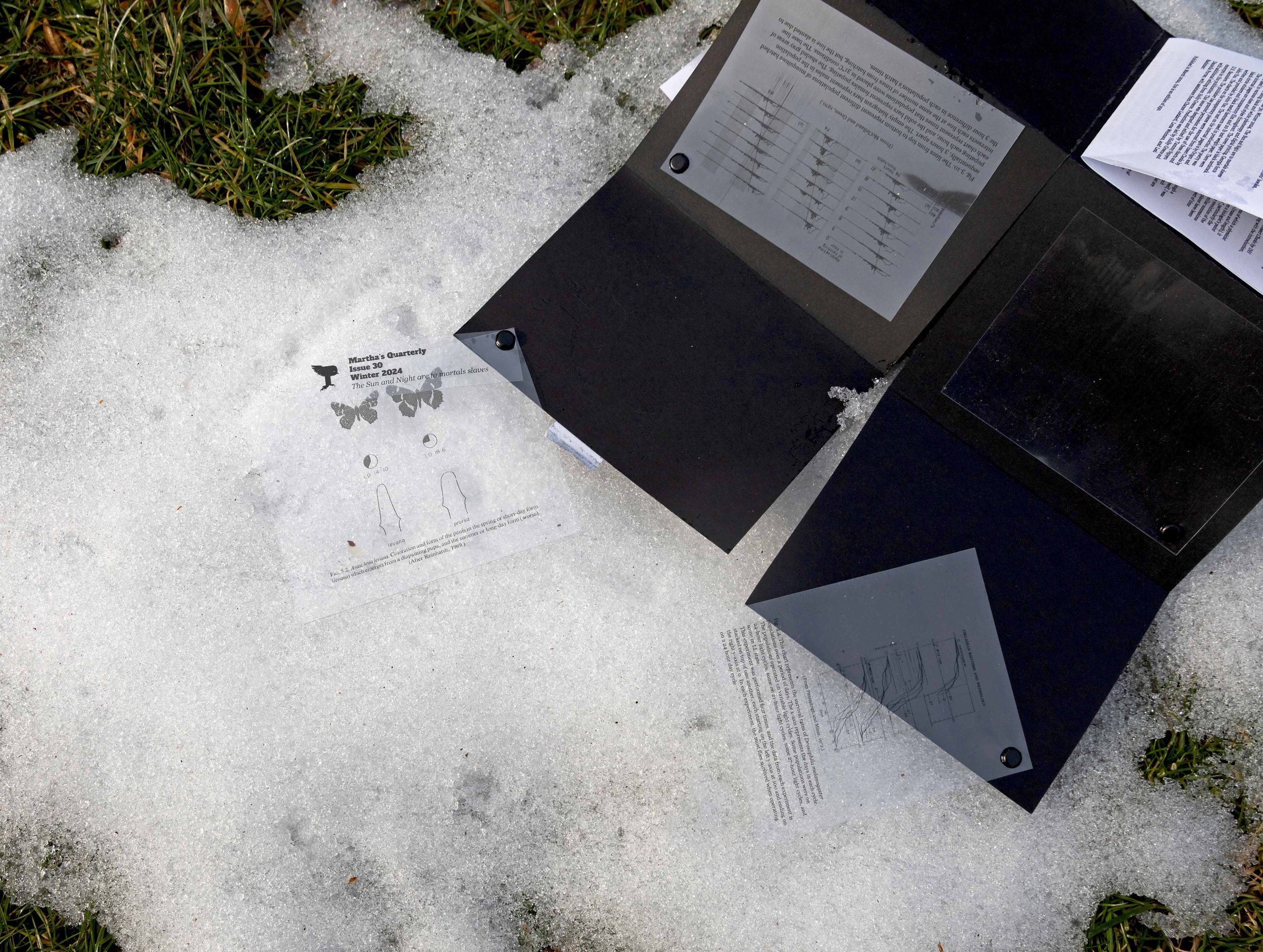
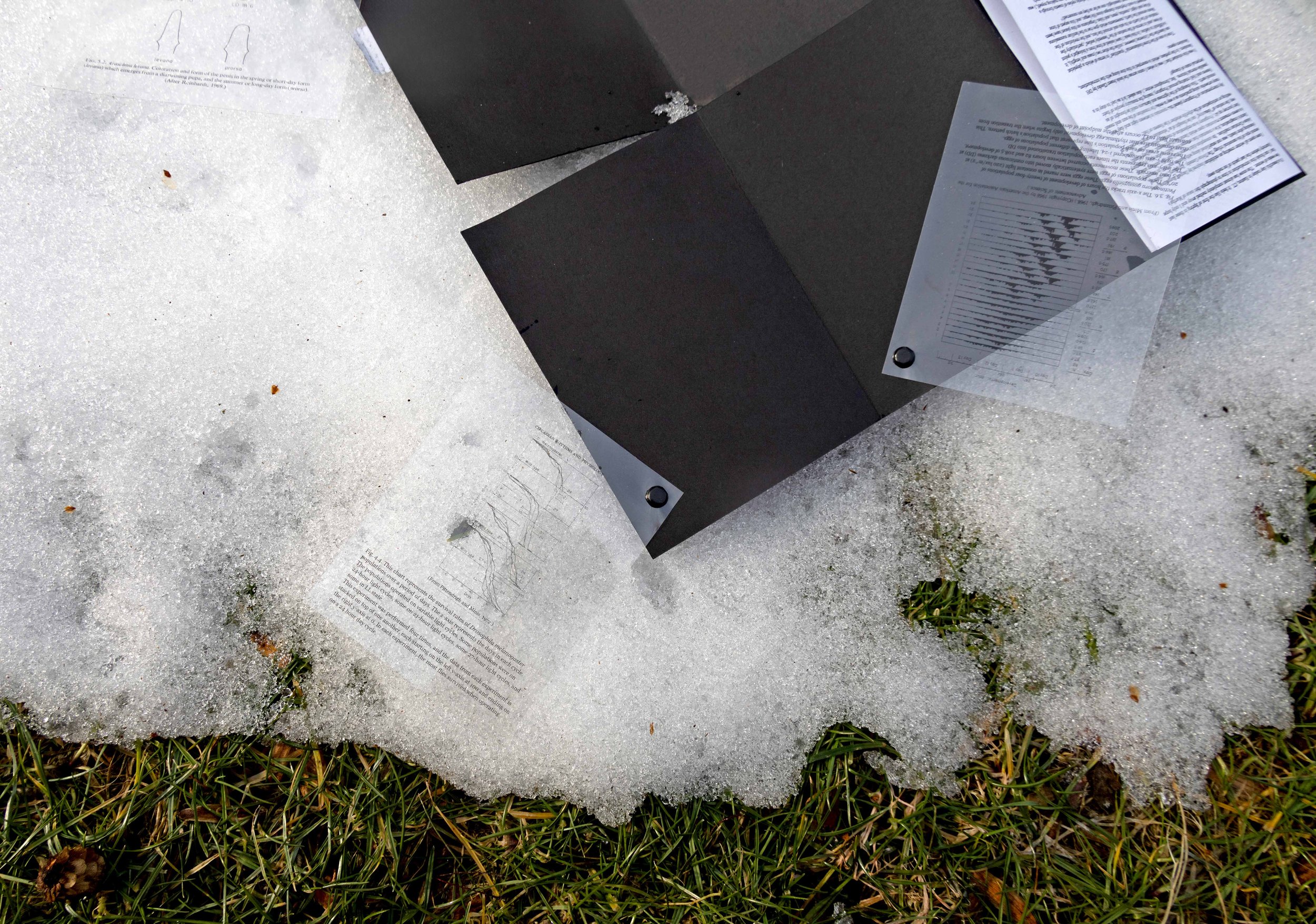
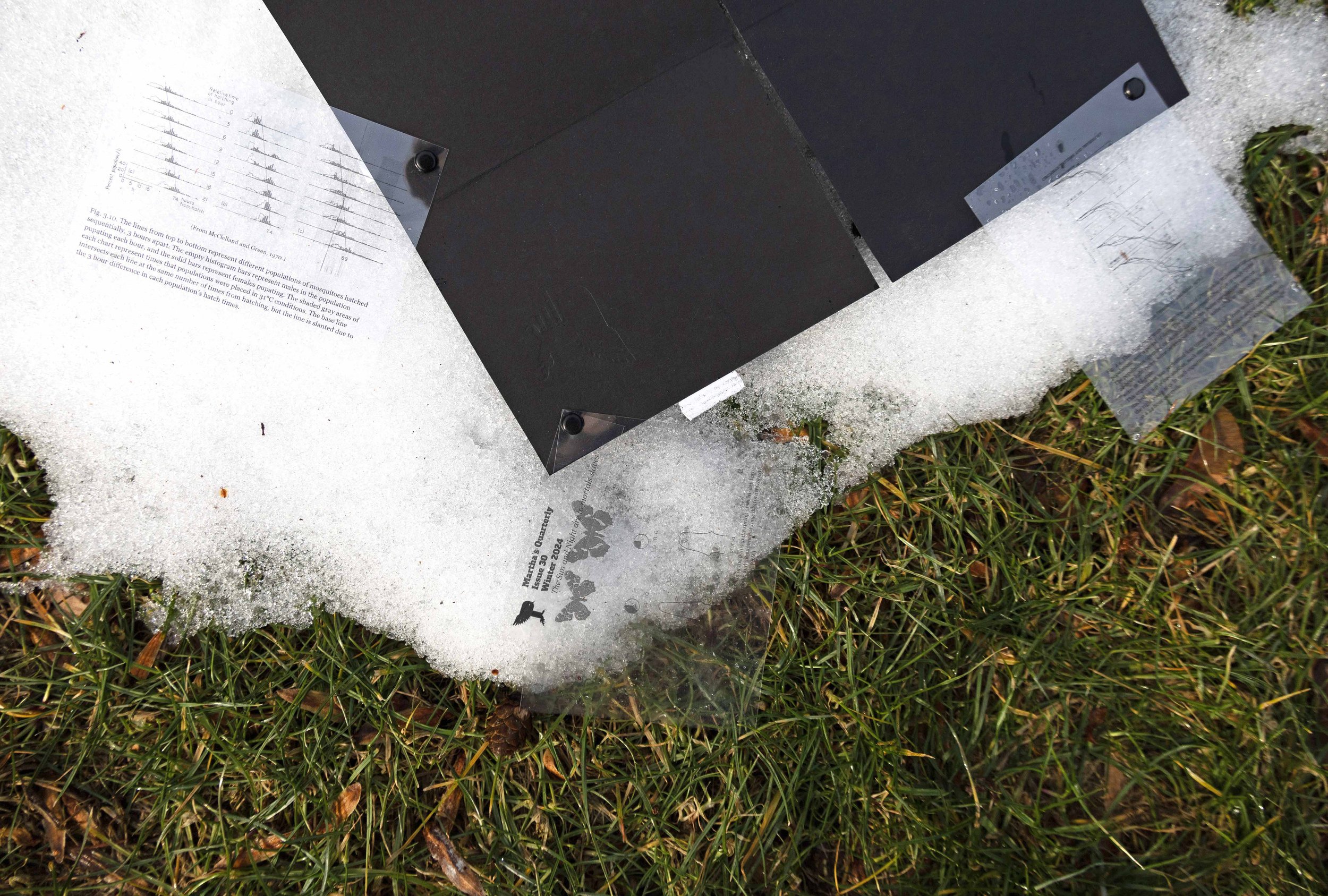
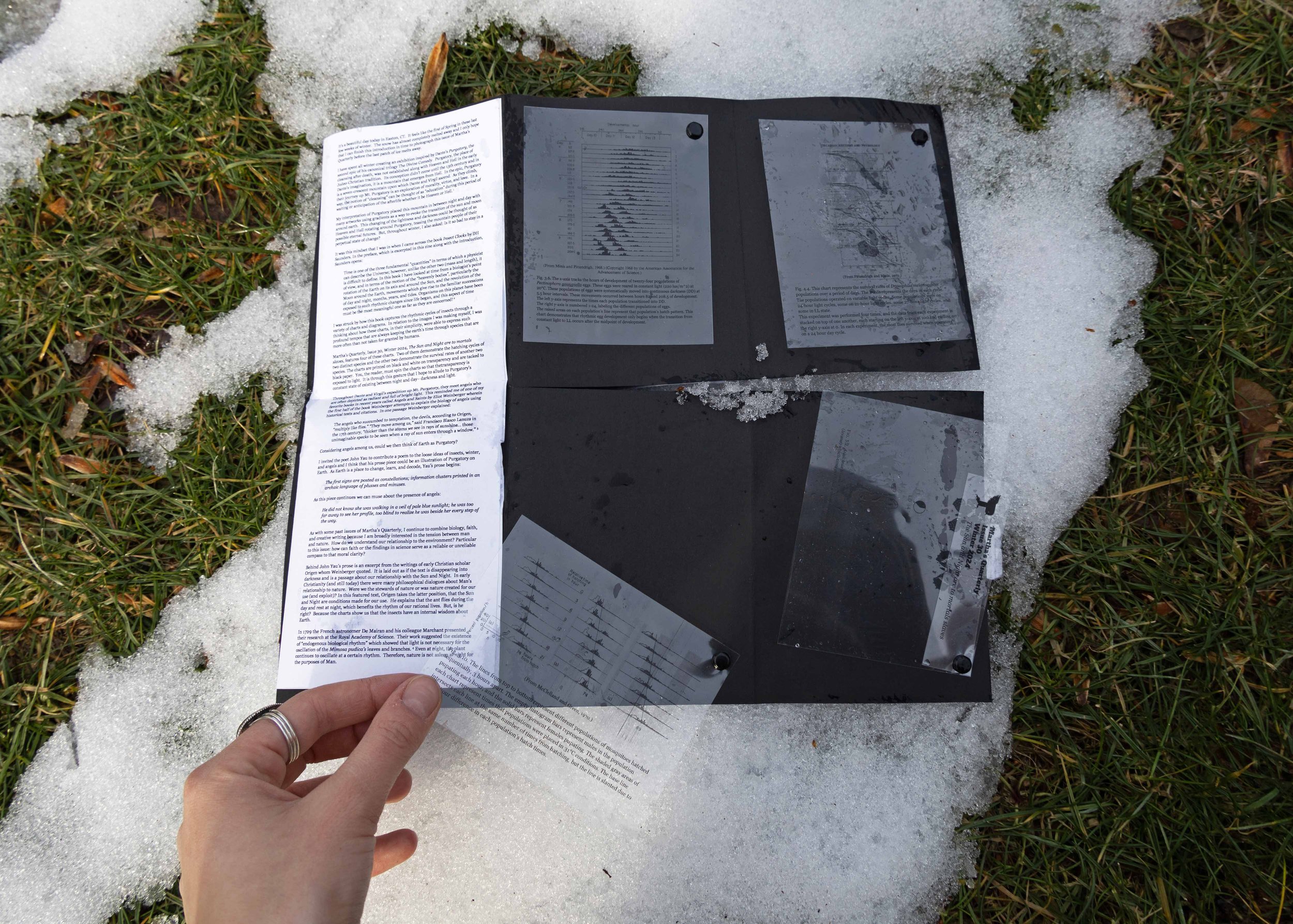
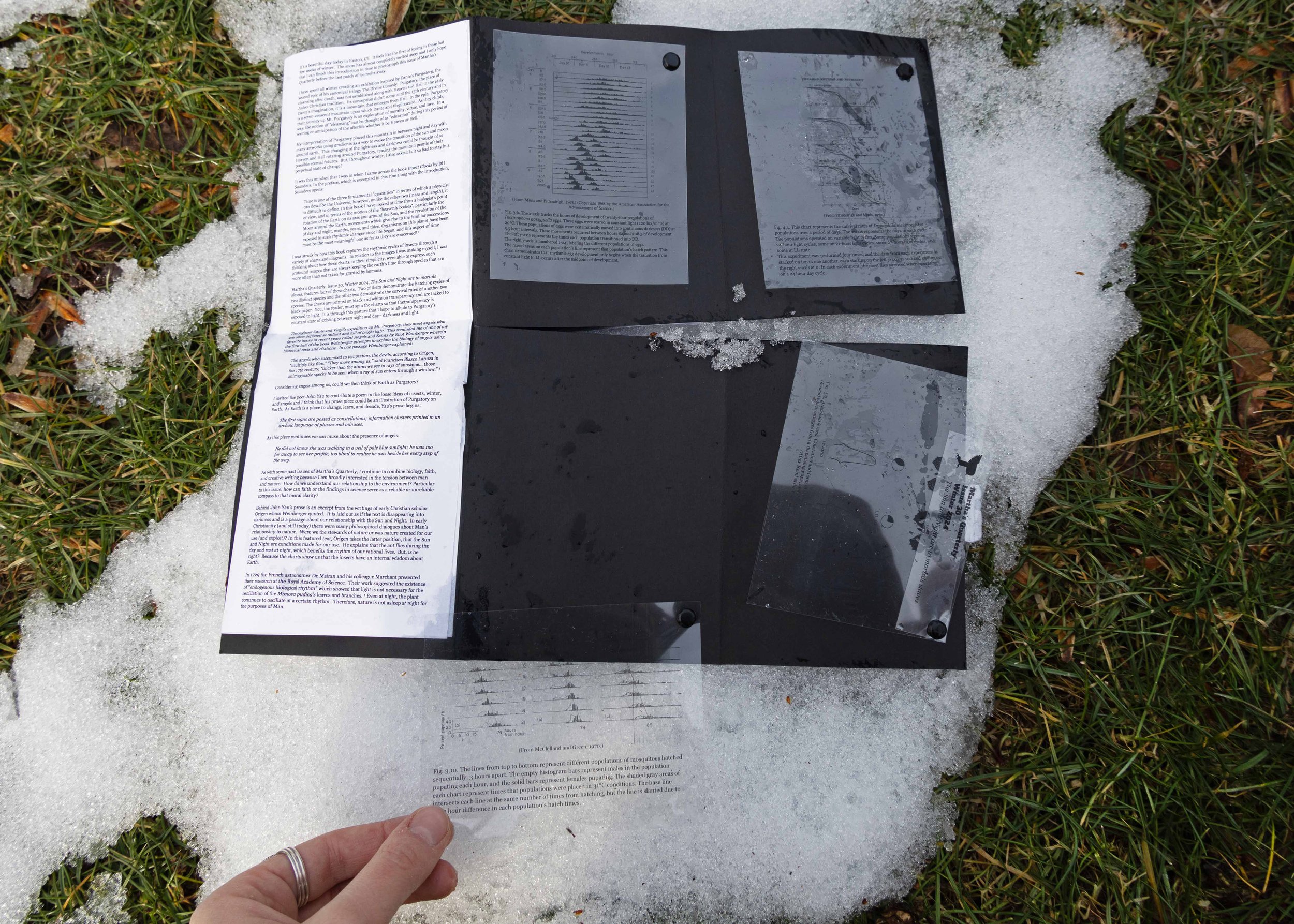
Martha's Quarterly
Issue 30
Winter 2024The Sun and night are to mortals slaves
5.5” x 4.25”About the contributors:
Origen of Alexandria (185-254 CE) was an early Christian theologian.
David S. (DS) Saunders, (1935-2023) was a scientist who helped the world understand how insects reproduced and adapted to our planet.
John Yau is an American poet and critic based in New York. Born in Lynn, Massachusetts in 1950, Yau attended Bard College and earned an MFA from Brooklyn College in 1978. He has published over 50 books of poetry, artists' books, fiction, and art criticism.
It’s a beautiful day today in Easton, CT. It feels like the first of Spring in these last few weeks of winter. The snow has almost completely melted away and I only hope that I can finish this introduction in time to photograph this issue of Martha’s Quarterly before the last patch of ice melts away.
I have spent all winter creating an exhibition inspired by Dante’s Purgatory, the second epic of his canonical trilogy The Divine Comedy. Purgatory, the place of cleansing after death, was not established along with Heaven and Hell in the early Judeo-Christian tradition. Its conception didn’t come until the 13th century and in Dante’s imagination, it is a mountain that emerges from Hell. In the epic, Purgatory is a seven-crescent mountain upon which Dante and Virgil ascend. As they climb, their journey up Mt. Purgatory is an exploration of morality, virtue, and love. In a way, the notion of “cleansing” can be thought of as “education” during this period of waiting or anticipation of the afterlife whether it be Heaven or Hell. (1)
My interpretation of Purgatory placed this mountain in between night and day with many artworks using gradients as a way to evoke the transition of the sun and moon around earth. This changing of the lightness and darkness could be thought of as Heaven and Hell rotating around Purgatory, teasing the mountain people of their possible eternal futures. But, throughout winter, I also asked: Is it so bad to stay in a perpetual state of change?
It was this mindset that I was in when I came across the book Insect Clocks by DH Saunders. In the preface, which is excerpted in this zine along with the introduction, Saunders opens:
Time is one of the three fundamental “quantities” in terms of which a physicist can describe the Universe; however, unlike the other two (mass and length), it is difficult to define. In this book I have looked at time from a biologist’s point of view, and in terms of the motion of the “heavenly bodies”, particularly the rotation of the Earth on its axis and around the Sun, and the revolution of the Moon around the Earth, movements which give rise to the familiar successions of day and night, months, years, and tides. Organisms on this planet have been exposed to such rhythmic changes since life began, and this aspect of time must be the most meaningful one as far as they are concerned! (2)
I was struck by how this book captures the rhythmic cycles of insects through a variety of charts and diagrams. In relation to the images I was making myself, I was thinking about how these charts, in their simplicity, were able to express such profound tempos that are always keeping the earth’s time through species that are more often than not taken for granted by humans.
Martha’s Quarterly, Issue 30, Winter 2024, The Sun and Night are to mortals slaves, features four of these charts. Two of them demonstrate the hatching cycles of two distinct species and the other two demonstrate the survival rates of another two species. The charts are printed on black and white on transparency and are tacked to black paper. You, the reader, must spin the charts so that the transparency is exposed to light. It is through this gesture that I hope to allude to Purgatory’s constant state of existing between night and day– darkness and light.
Throughout Dante and Virgil’s expedition up Mt. Purgatory, they meet angels who are often depicted as radiant and full of bright light. This reminded me of one of my favorite books in recent years called Angels and Saints by Eliot Weinberger wherein the first half of the book Weinberger attempts to explain the biology of angels using historical texts and citations. In one passage Weinberger explained:
The angels who succumbed to temptation, the devils, according to Origen, “multiply like flies.” “They move among us,” said Francisco Blasco Lanuza in the 17th century, “thicker than the atoms we see in rays of sunshine… those unimaginable specks to be seen when a ray of sun enters through a window.” (3)
Considering angels among us, could we then think of Earth as Purgatory?
I invited the poet John Yau to contribute a poem to the loose ideas of insects, winter, and angels and I think that his prose piece could be an illustration of Purgatory on Earth. As Earth is a place to change, learn, and decode, Yau’s prose begins:
The first signs are posted as constellations; information clusters printed in an archaic language of plusses and minuses.
As this piece continues we can muse about the presence of angels:
He did not know she was walking in a veil of pale blue sunlight; he was too far away to see her profile, too blind to realize he was beside her every step of the way.
As with some past issues of Martha’s Quarterly, I continue to combine biology, faith, and creative writing because I am broadly interested in the tension between man and nature. How do we understand our relationship to the environment? Particular to this issue: how can faith or the findings in science serve as a reliable or unreliable compass to that moral clarity?
Behind John Yau’s prose is an excerpt from the writings of early Christian scholar Origen whom Weinberger quoted. It is laid out as if the text is disappearing into darkness and is a passage about our relationship with the Sun and Night. In early Christianity (and still today) there were many philosophical dialogues about Man’s relationship to nature. Were we the stewards of nature or was nature created for our use (and exploit)? In this featured text, Origen takes the latter position, that the Sun and Night are conditions made for our use. He explains that the ant flies during the day and rest at night, which benefits the rhythm of our rational lives. But, is he right? Because the charts show us that the insects have an internal wisdom about Earth.
In 1729 the French astronomer De Mairan and his colleague Marchant presented their research at the Royal Academy of Science. Their work suggested the existence of “endogenous biological rhythm” which showed that light is not necessary for the oscillation of the Mimosa pudica’s leaves and branches. (4) Even at night, the plant continues to oscillate at a certain rhythm. Therefore, nature is not asleep at night for the purposes of Man.
Nonetheless, these questions are interesting for me to ask in an imagination of Purgatory because we live in such a unique time of change. Right now, there is unbelievable social unrest, brutal global-scale war, and extraordinary technology. Are we able to encompass or engulf the entirety of nature into the embrace of our concepts and ideas? I really do not know, and I know some men think they can.
– Tammy Nguyen, Editor-in-Chief
(1) Alighieri, Dante. The Divine Comedy: Purgatorio. Translated by Stanley Lombardo, Hackett Publishing Company, 2016.
(2) Saunder, D.S.. Insect Clocks. Oxford, Pergamon Press, 1976.
(3) Weinberger, Eliot. Angels and Saints. New Directions Publishing, 2020.
(4) https://srbr.org/the-birth-of-chronobiology-a-botanical-observation/
@passengerpigeonpress
Martha's Quarterly, Issue 30, Winter 2024, The Sun and Night are to mortals slaves was produced using black and white photocopy and digital printing. Georgia fonts were used in various sizes and styles throughout. The cover paper is black cardstock. The internal pages are transparency film and 20 lb text weight paper. There were black circle stickers and black metal fasteners used in production. The poetry was written and provided by John Yau. The text on the internal pages is by Origen and John Yau. The charts on the transparency pieces were sourced from Insect Clocks by D.S. Saunders. The publisher has granted permission for the use of these charts and excerpts in this publication. This issue was designed and edited by Tammy Nguyen with additional editing from Holly Greene. Production was led by Holly Greene and Daniella Porras, with assistance from Chance Lockard, Lena Weiman, and Lexi Radziner.
Published in March 2024 and mailed out in May 2024, this is an edition of 250.
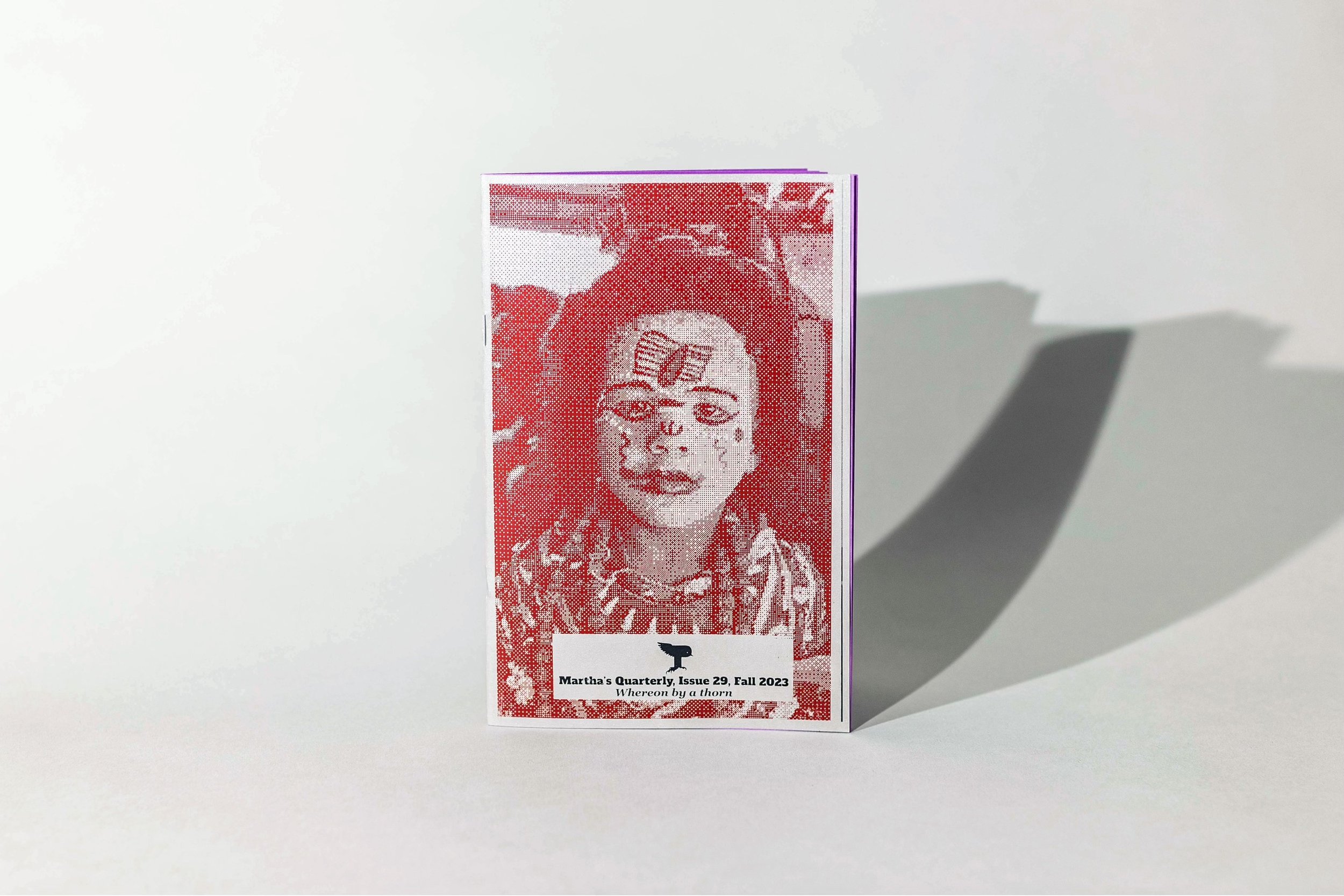
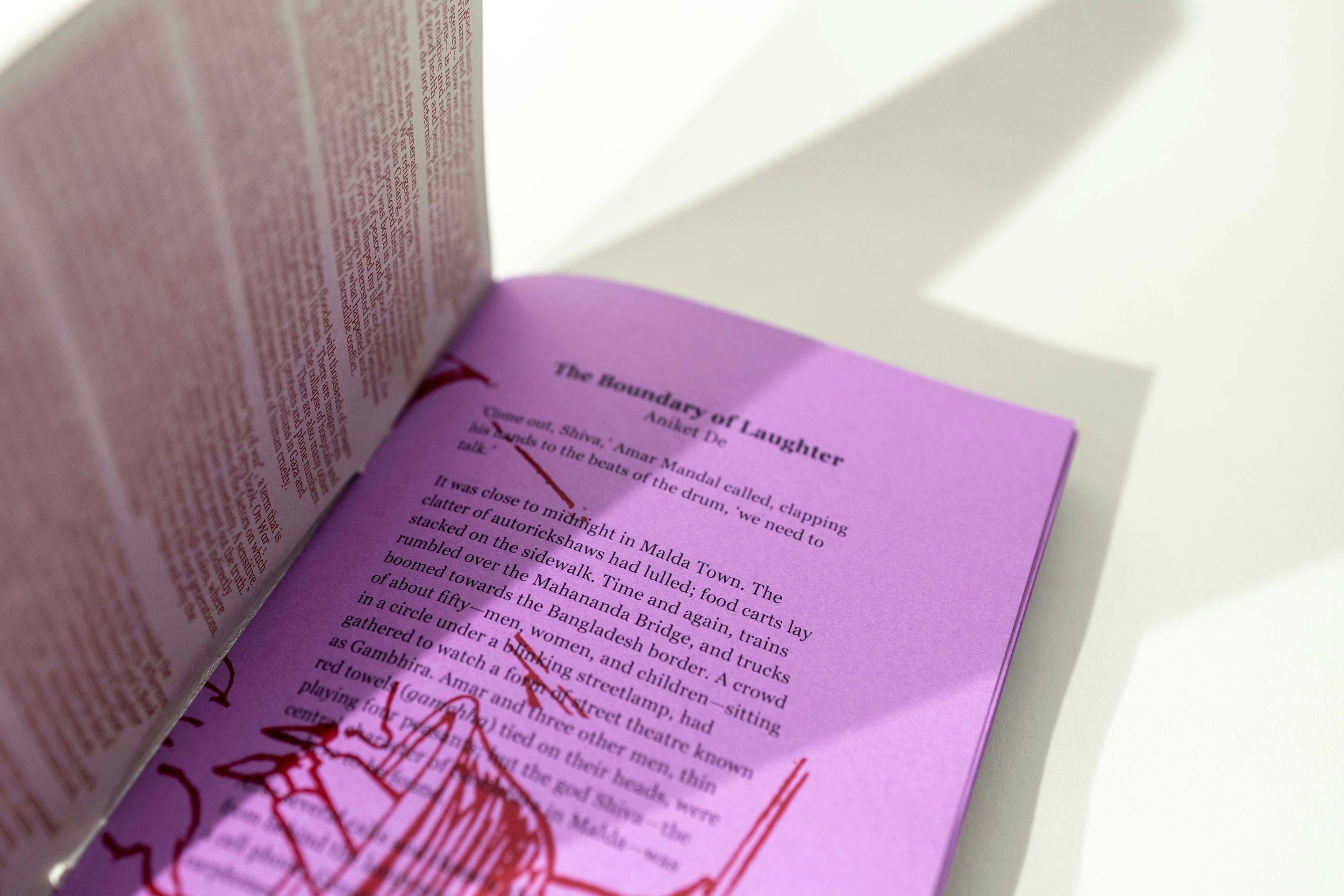
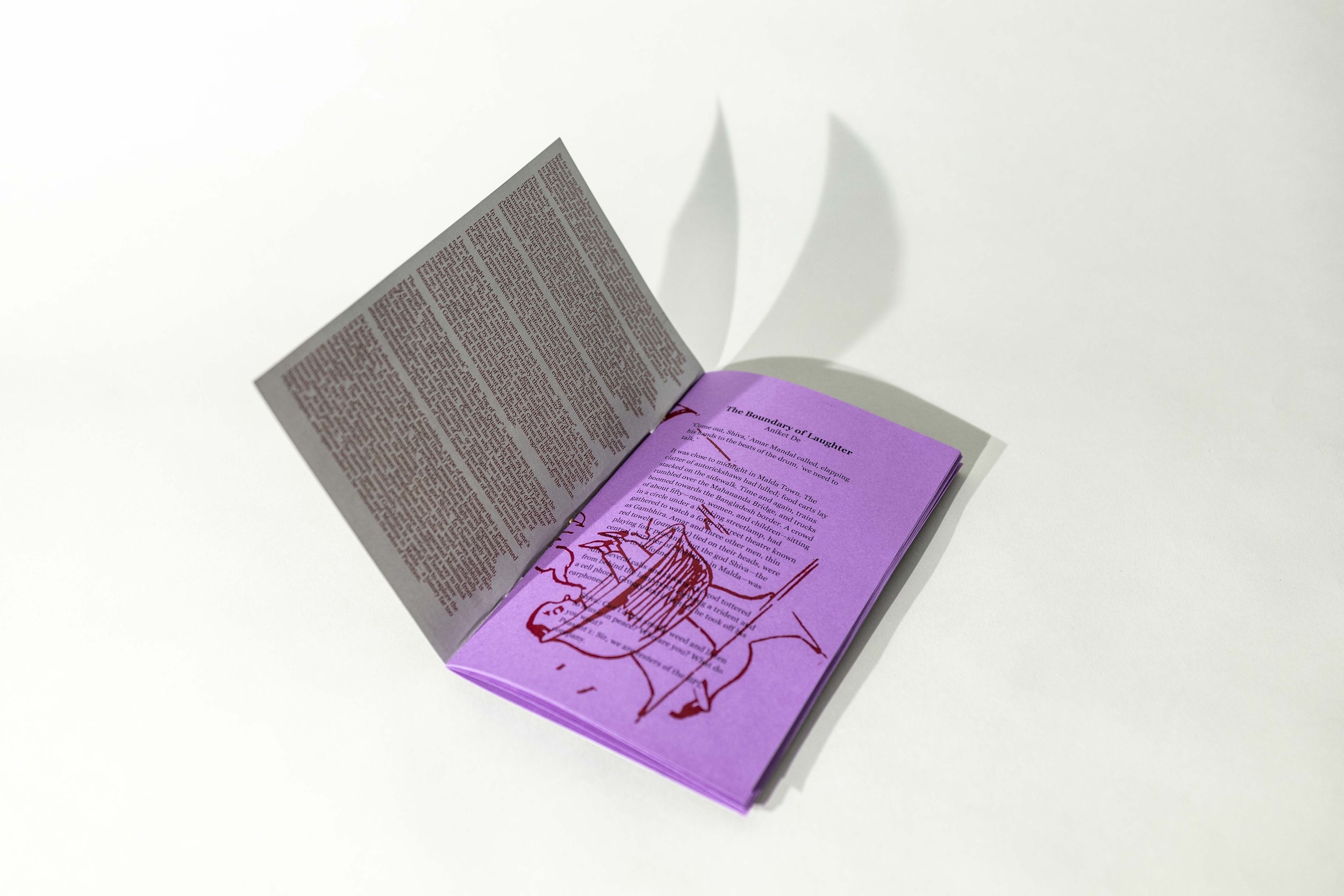
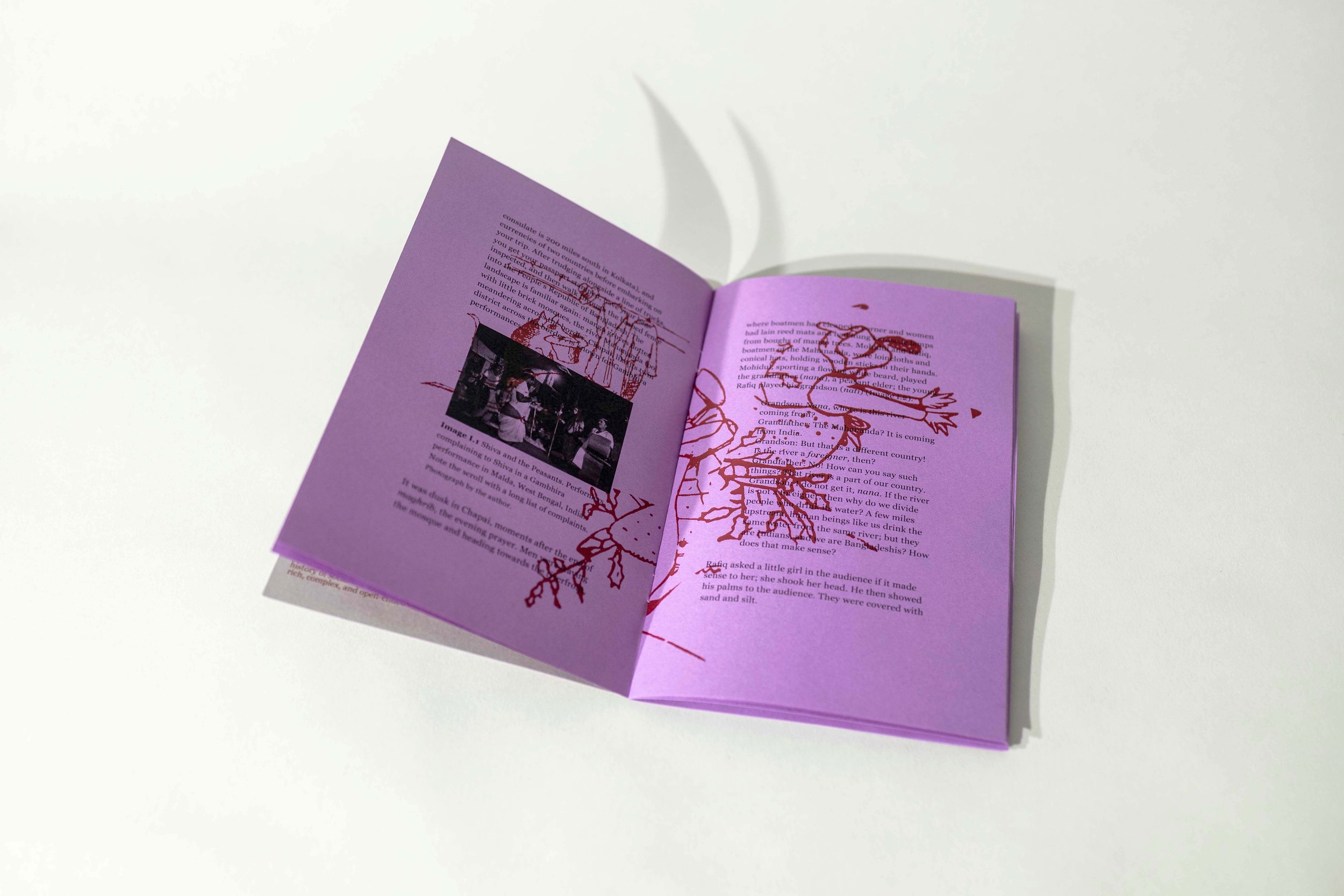

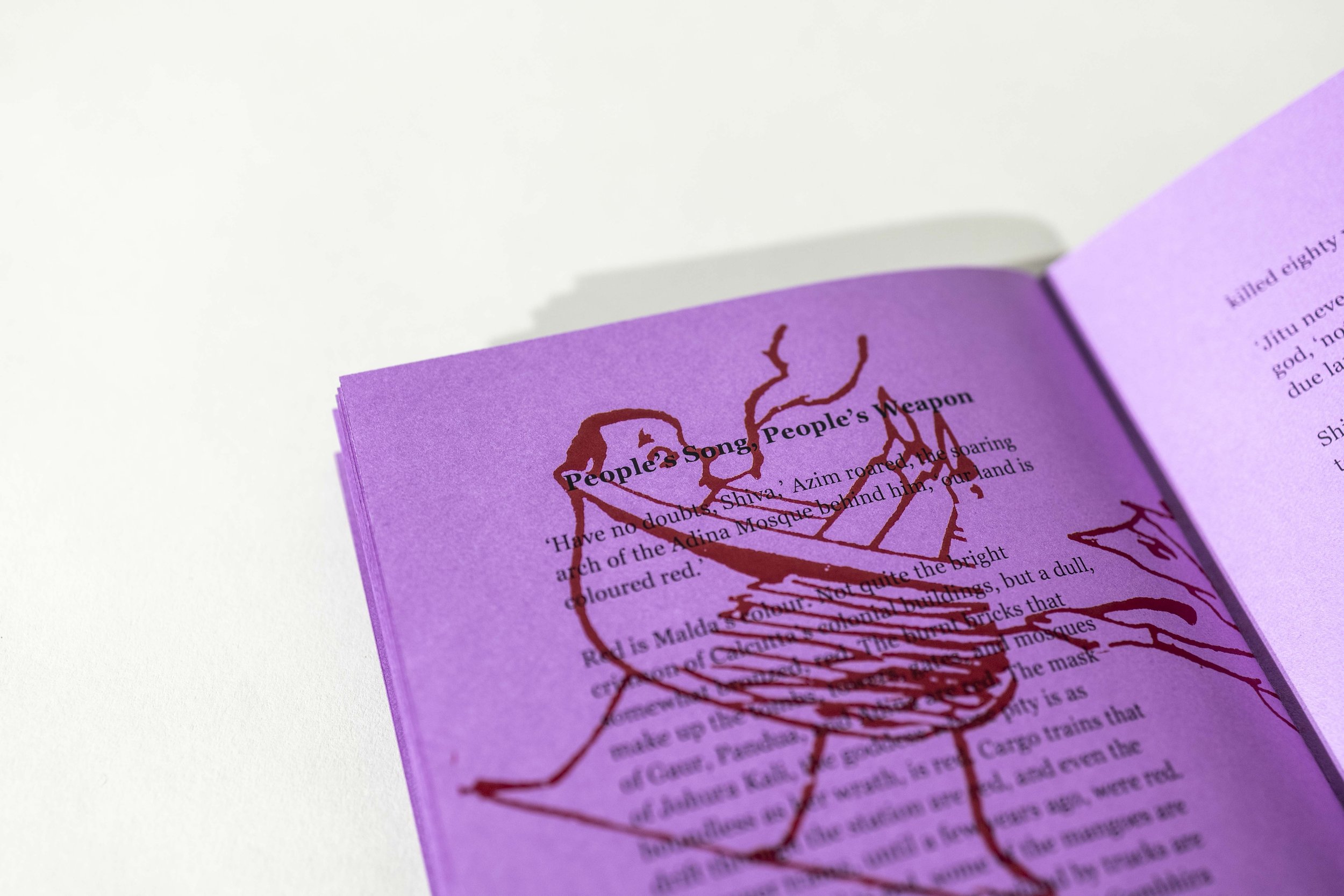
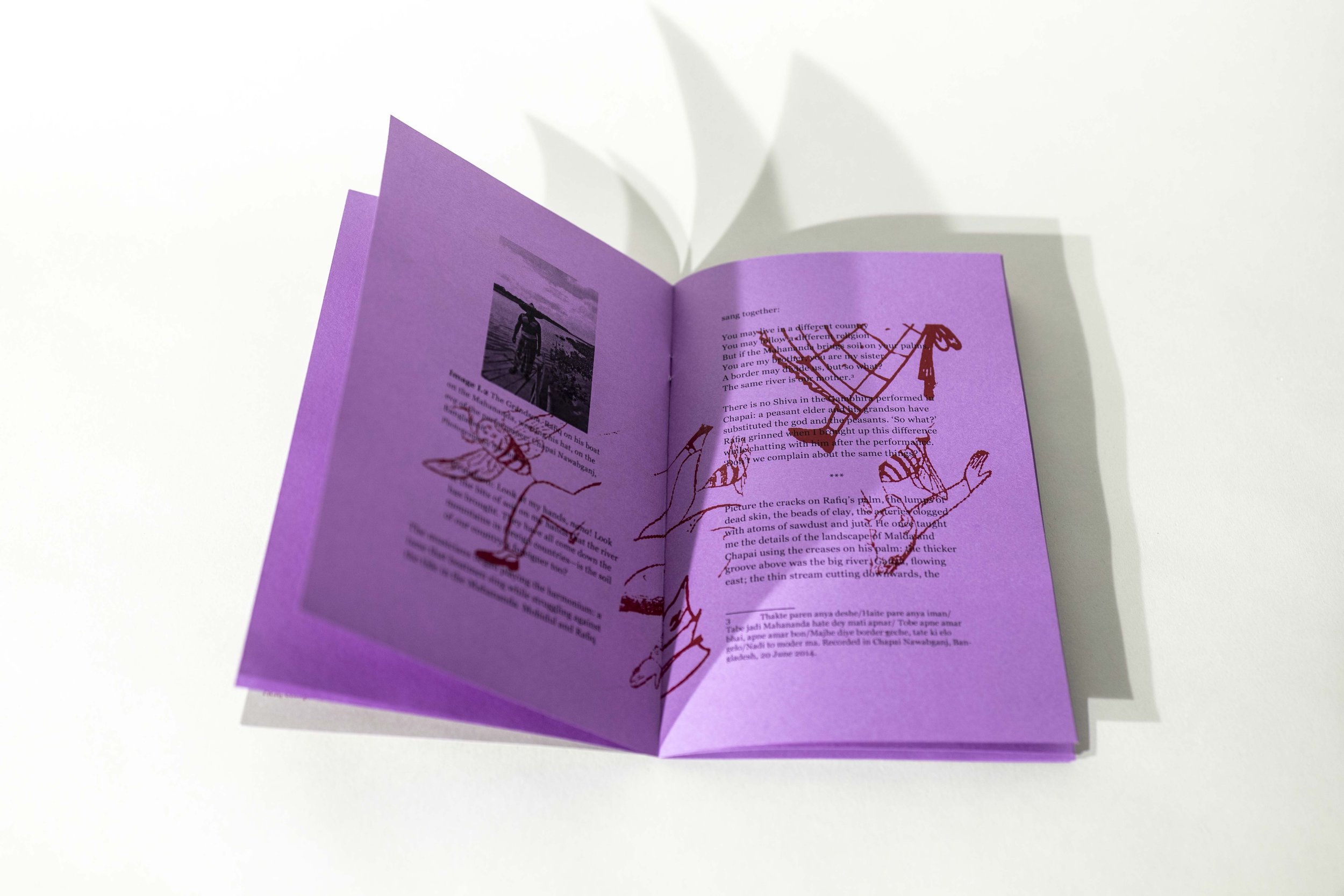
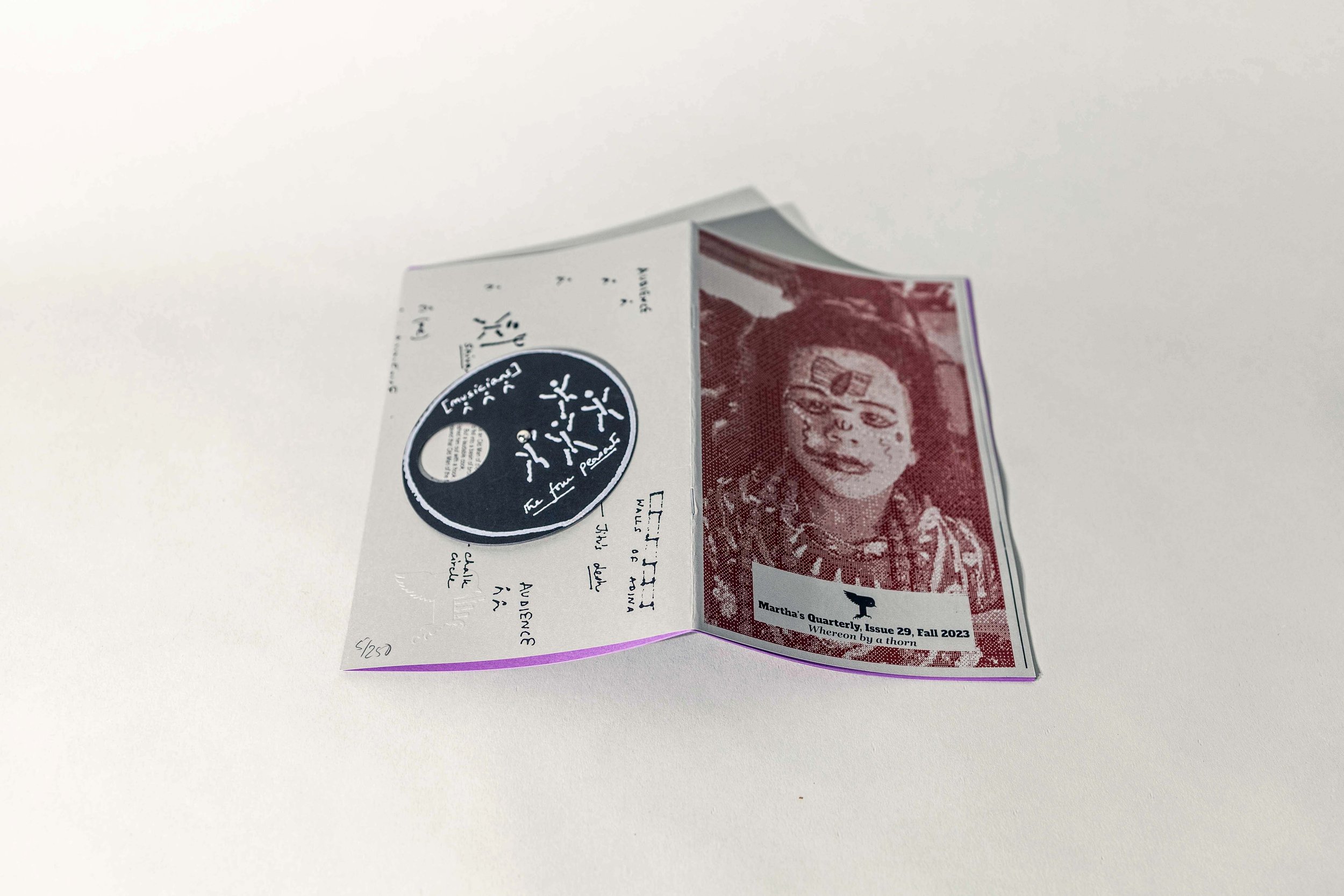
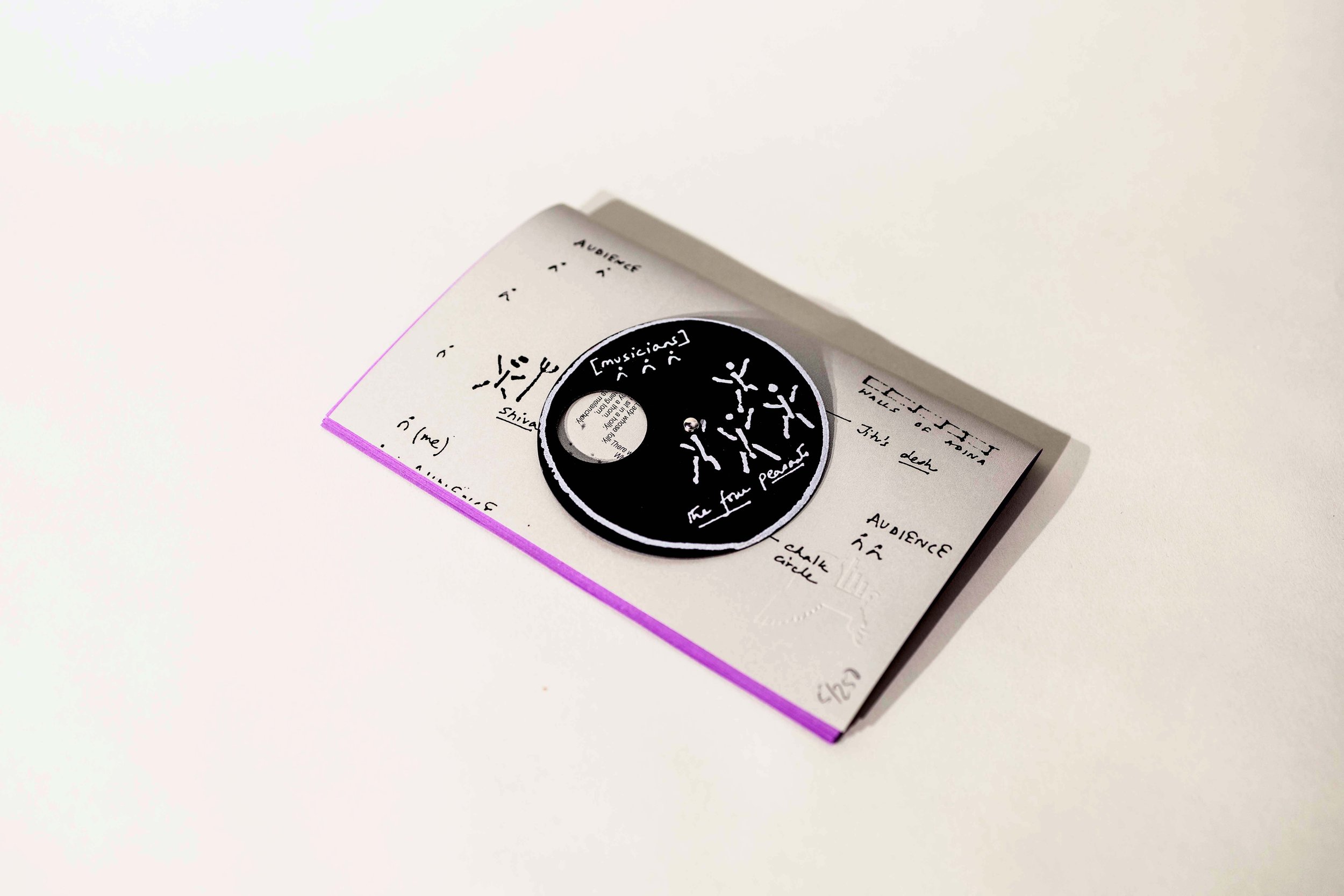
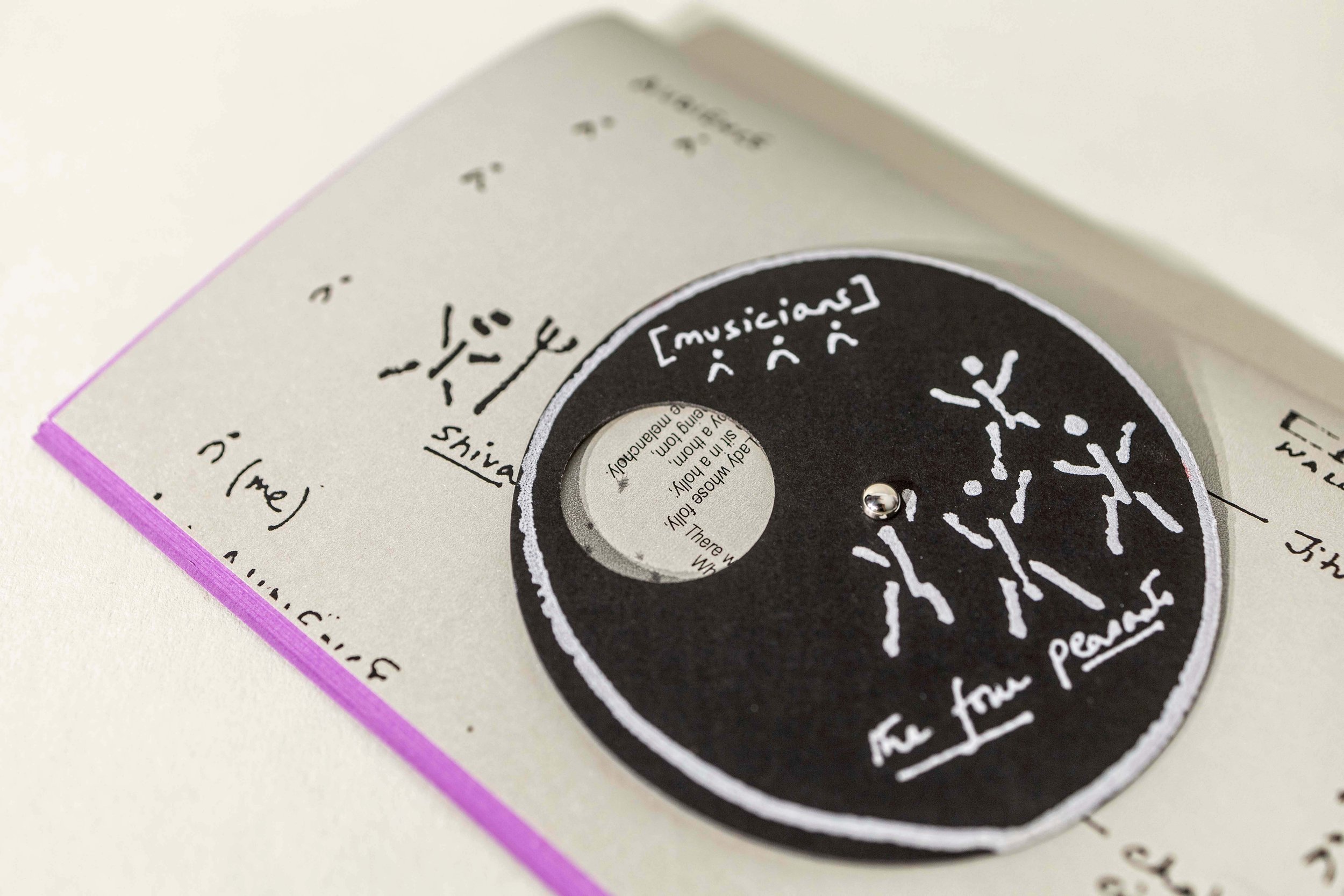

Martha's Quarterly
Issue 29
Fall 2023
Whereon by a thorn
8.5” x 5.5”About the contributors:
Aniket De is a historian and ethnographer of borders, rivers, and peasant performances in South and Southeast Asia. He is currently completing his PhD in the history of race and South Asian decolonization at Harvard.
Edward Lear was an English artist, illustrator, musician, author, and poet who lived from 1812-1888. He is best known for his nonsense prose and poetry and is widely credited with popularizing the limerick as we know it today.
So far in my life, I have been dealt a good hand in moral luck, a term introduced in Western philosophy by Bernard Williams and developed with Thomas Nagel. The idea essentially is that our moral agency-- how we elect right and wrong, pass ethical judgment, and make moral decisions-- is not completely in our control. Rather, our way of acting out our morality is relative and reflective of the circumstances we happen to find ourselves in. The gift of good health and being born in a time of peace, for example, are all situations that we do not determine (at least not in their entirety.)
This is why the distinction that I am a first-generation Vietnamese-American is important. My parents were Vietnamese War refugees in 1978. They fled Vietnam by boat where they found themselves on Pulau Galang, a refugee camp in Indonesia. There was a Christian family in Virginia that sponsored their immigration to America, then they settled in San Francisco in 1980 and I was born in 1984. These years are notable because the political climate, period of peace, and a good economy in America that followed the fall of Saigon in 1975 all shaped my life and indirectly, the opportunities that I was given. Naturally, I am always interested in the Vietnamese-American war. As I learn, I become more confused by what happened and why because there are thousands of facets woven into this incredible conflict.
In the weeks of this Fall season, my phone has been flooded with thousands of images about and related to the hot war between Israel and Hamas. There are images from news outlets reporting about events on the ground such as the collapse of hospitals and individuals who have lost their entire families in an instant. There are also many other images that encourage activism, informing publics about protests and phone numbers of elected representatives. Then, there are some images from civilians in Gaza and Israel, and some of them have shown unspeakable evidence of human cruelty.
I have thought a lot about my own moral luck in this new “fog of war”, a term that is not a direct quote, but an evolution from Carl von Clausewitz’s 1873 book, On War, where he said, “War is the realm of uncertainty; three quarters of the factors on which action in war is based are wrapped in a fog of greater or lesser uncertainty. A sensitive and discriminating judgment is called for; a skilled intelligence to scent out the truth.” The decisions being made by Israel, Hamas, and the entities directly and indirectly related to this conflict are being calculated in a state of chaos and high stakes, where one decision affects not just the lives of the living, but the lives of the next generations. For me, I am doing my best to learn about the history of this region and why the boundaries of Gaza have been so vulnerable and fragile.
The space between “moral luck” and the “fog of war” is where I want to consider the seemingly unrelated elements of this Martha’s Quarterly, Issue 29, Fall 2023, Whereon by a thorn. This installment features four English limericks from Edward Lear’s A Book of Nonsense from 1846 and some passages from the book The Boundary of Laughter by the historian Aniket De from 2021. One reason why I wanted to juxtapose these two writings in the context of this contemporary moment was to explore the idea of lightness and laughter as a way to find clarity-- or find light-- when situations are hard to understand, whether it is because of one’s direct experience of trauma or one’s attempt to understand the depths of human despair because of their own moral luck.
De’s book is about the tradition of Gambhira, a type of street theater that is performed in Malda Town, a district in West Bengal (India) and Chapai Nawabganj, a district in Bangladesh. In many of these performances, peasants are featured expressing their plight, often in a comical way. The performances bring light and lightness to realities that are undesirable, even harsh. In Malda, where people are mostly Hindu, the peasant characters are seen complaining to the god Shiva. In Chapai Nawabganj, where people are mostly Muslim, the peasant characters throw their woes against their grandfather. The performances are essentially the same, as the world of Gambhira is much older than the boundary between Bangladesh and India which was artificially created in 1947 in the British Partition, where lines crudely separated Muslims from Hindus. De’s work spotlights this beautiful performance tradition as a way to think more elaborately about nationalism, community, and the notion of border more broadly. As he puts it, “The shared space of Gambhira is a useful lens to explore the history of social relations between Hindus and Muslims in Malda— a history far too rich, complex, and open-ended to be reduced to the telos of Partition.”
De’s book features plenty of Gambhira images, and among them are his own drawings of the performances which we have appropriated on the back side of this zine. De’s diagram illustrates a performance that took place in Adina Masjid, Pandua in July 2015. The skit, in some ways, points to the folly of distinguishing a Muslim from a Hindu, as Azim, one of the characters exclaims, “‘You try to divide us into Hindu and Muslim [...] but do you discriminate when you kill people with storms and lightning? Do Hindus get a discount when you destroy mango harvests?” The center stage is a circle, and we have created a spinning wheel out of it. As you turn the wheel, four English limericks appear demonstrating the plight of four unlucky people.
England-- or Great Britain-- was the colonial empire of many parts of South Asia. But in the context of this quarterly, the characters of these seemingly silly poems could be any person. The origin of the limerick is unknown, but there have been suggestions that the word comes from an 18th-century Irish song, “Will You Come Up to Limerick” wherein the lyrics included absurdities and innuendo. The Edward Lear limericks we have selected are some of the earliest funny poems of the genre. Published with them were illustrations which we have appropriated and collaged all over this zine. The situations in the poems are nonsensical, and they each feature a person in a state of helplessness. By presenting these poems with De’s work, I wanted to probe at humor’s great power to spread empathy across borders and even oppositional sides.
It is news to no one that we currently live in a time of great divides. I worry about these schisms and have fear about how these ideological conflicts will unfold, evolve, and implode. But I’ll end with this memory from 2008 when I was living in Saigon. I was with my friend at his house when his older brother by almost a decade was also hanging out. My friend's brother had an infectious sense of humor. I don’t remember how we got to talking about it, but my friend’s brother started talking about his experience of the Vietnam War, something that neither my friend nor I knew firsthand. Holding a Saigon beer in one hand and a Red Craven cigarette in the other, my friend’s brother laughed, “God damn it! I ran so fast, but they still caught me. Dad said, let’s just try to get away from these Communists, so we ran towards the beach and jumped into some floating barrels. Who cares! Just go for it! Well, it didn’t work, and I am still here.”
– Tammy Nguyen, Editor-in-Chief
De, Aniket. The Boundary of Laughter: Popular Performances across Borders in South Asia, Oxford University Press, 2021.
Lear, Edward. A Book of Nonsense, 1846.
von Clausewitz, Carl. On War. Translated by J. J. Graham, Wordsworth Editions, 1997.
@passengerpigeonpress
Martha's Quarterly, Issue 29, Fall 2023, Whereon by a thorn was produced using black and white and single-color photocopy, digital printing, and silkscreen. Georgia and arial fonts were used in various sizes and styles throughout. The cover paper is 80 lbs text weight, and the internal pages are 20 lb text weight. The limericks and illustrations are sourced from The Book of Nonsense by Edward Lear (1846). The text on the internal pages was written by Aniket De in his book, The Boundary of Laughter. The map and images on the cover and the images on the internal images were sourced from The Boundary of Laughter. Aniket De has granted permission for the use of his work in this publication. This issue was designed and edited by Tammy Nguyen with additional editing from Holly Greene. Production was led by Holly Greene with assistance from Daniella Porras, Chance Lockard, and Spencer Klink.
Published in November 2023, this is an edition of 250.
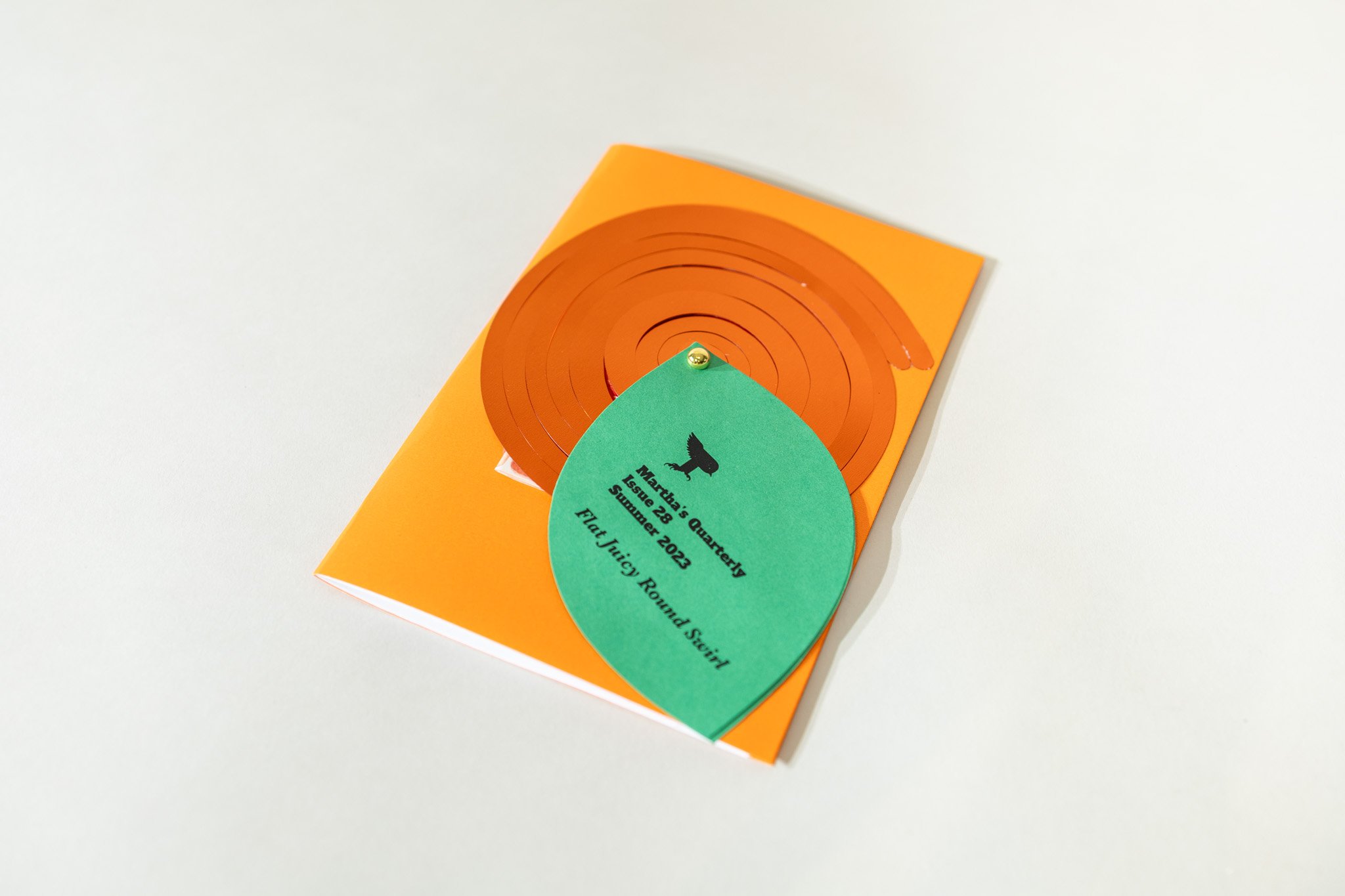
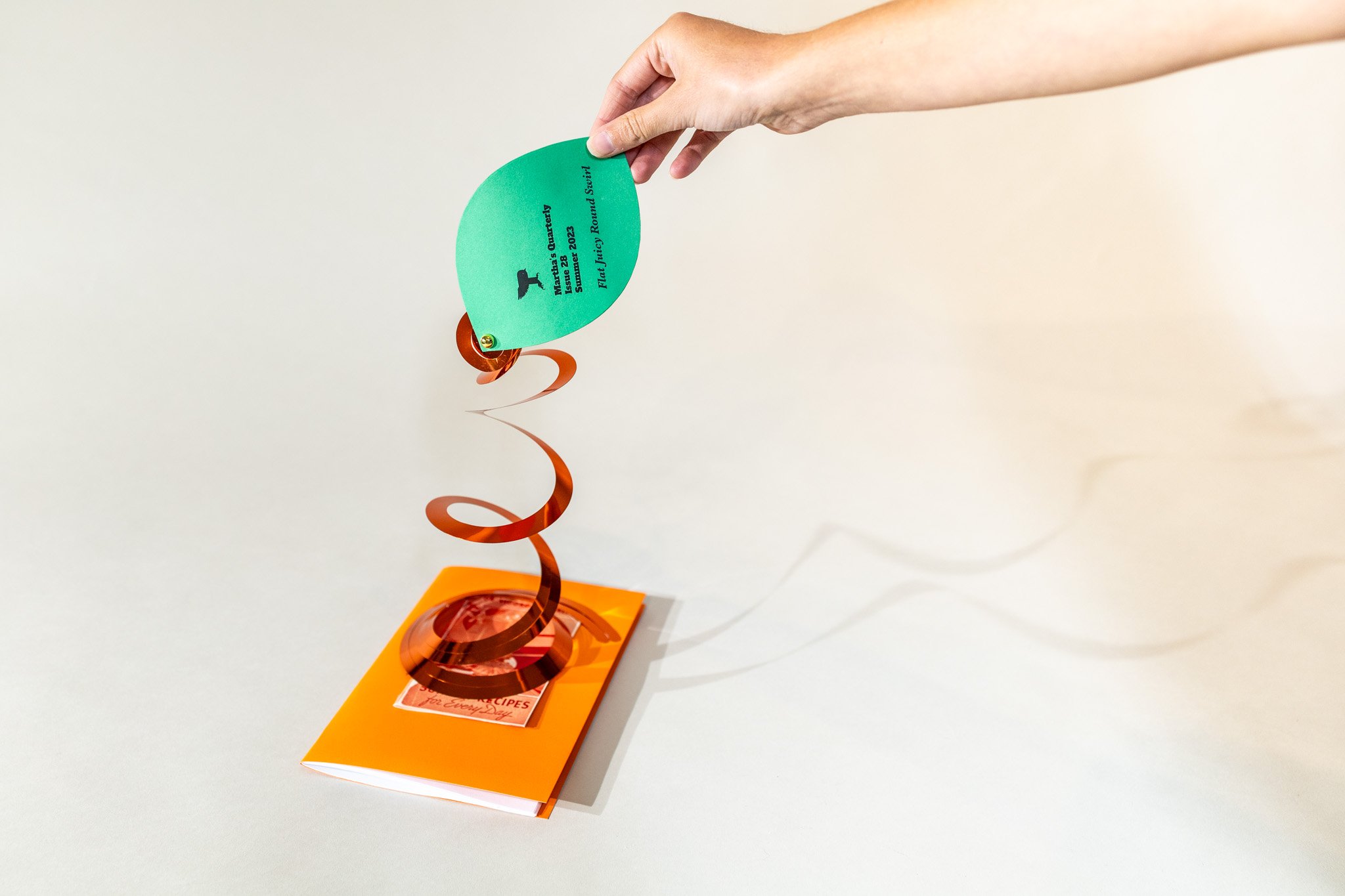
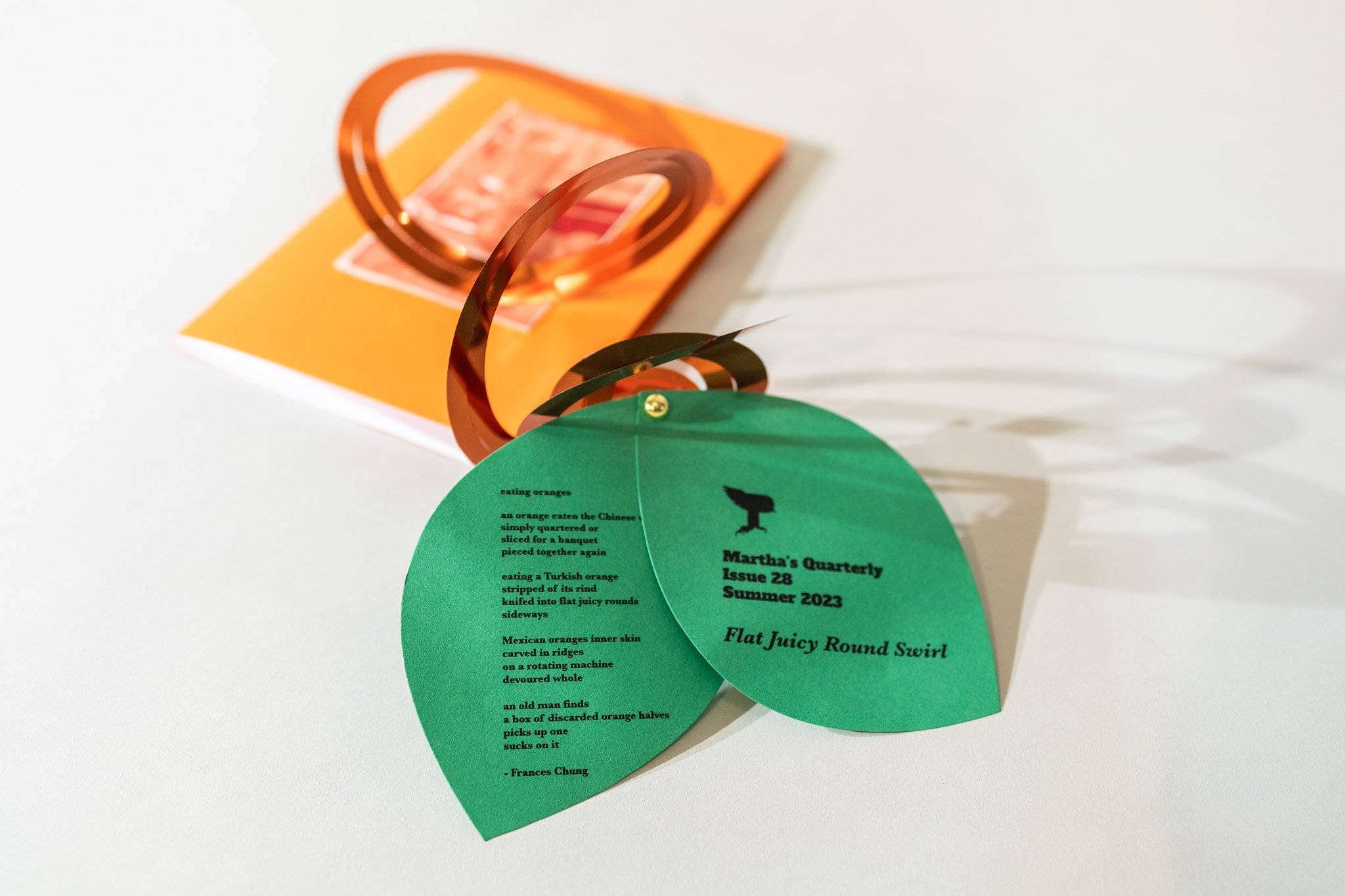
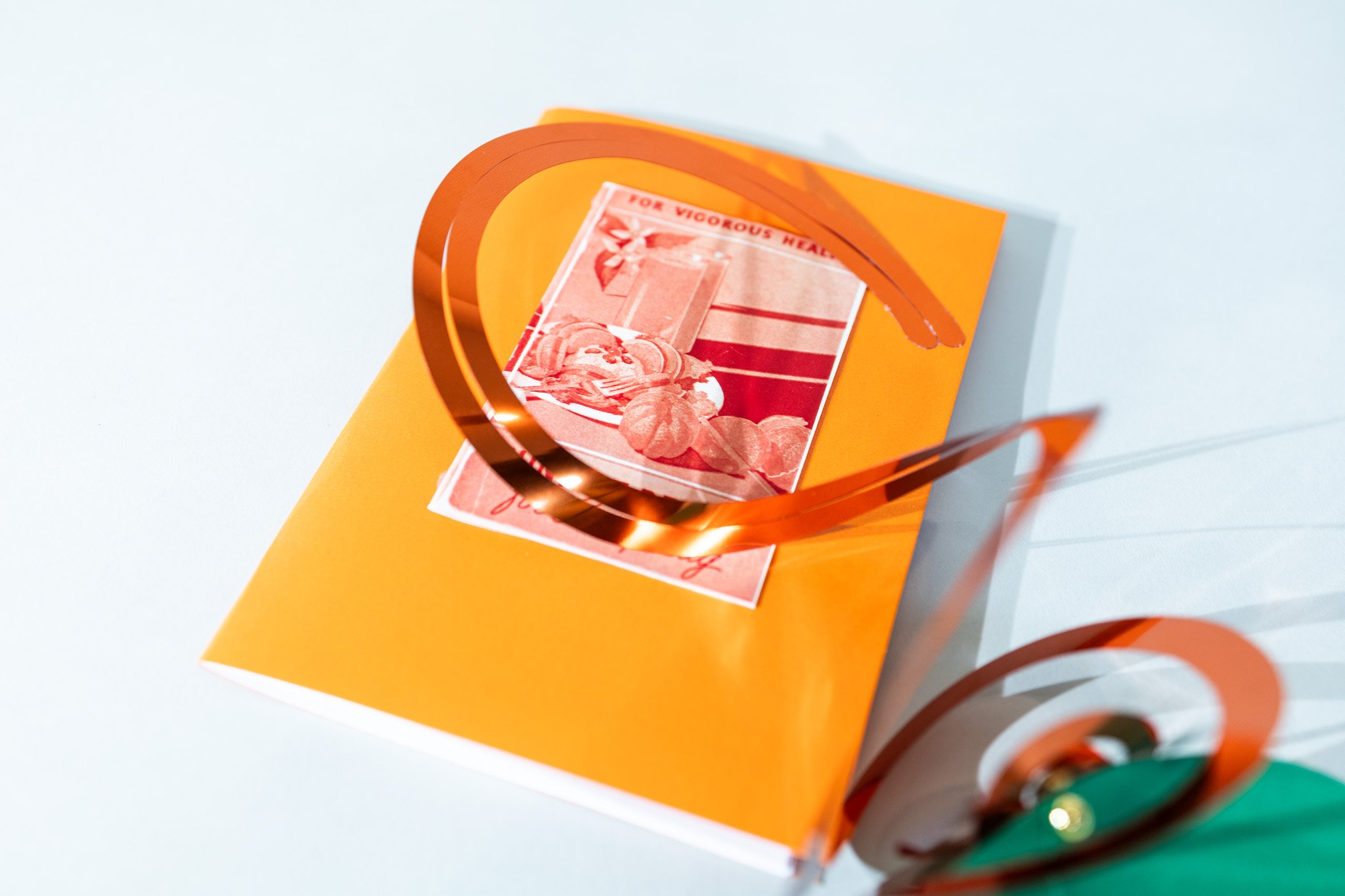

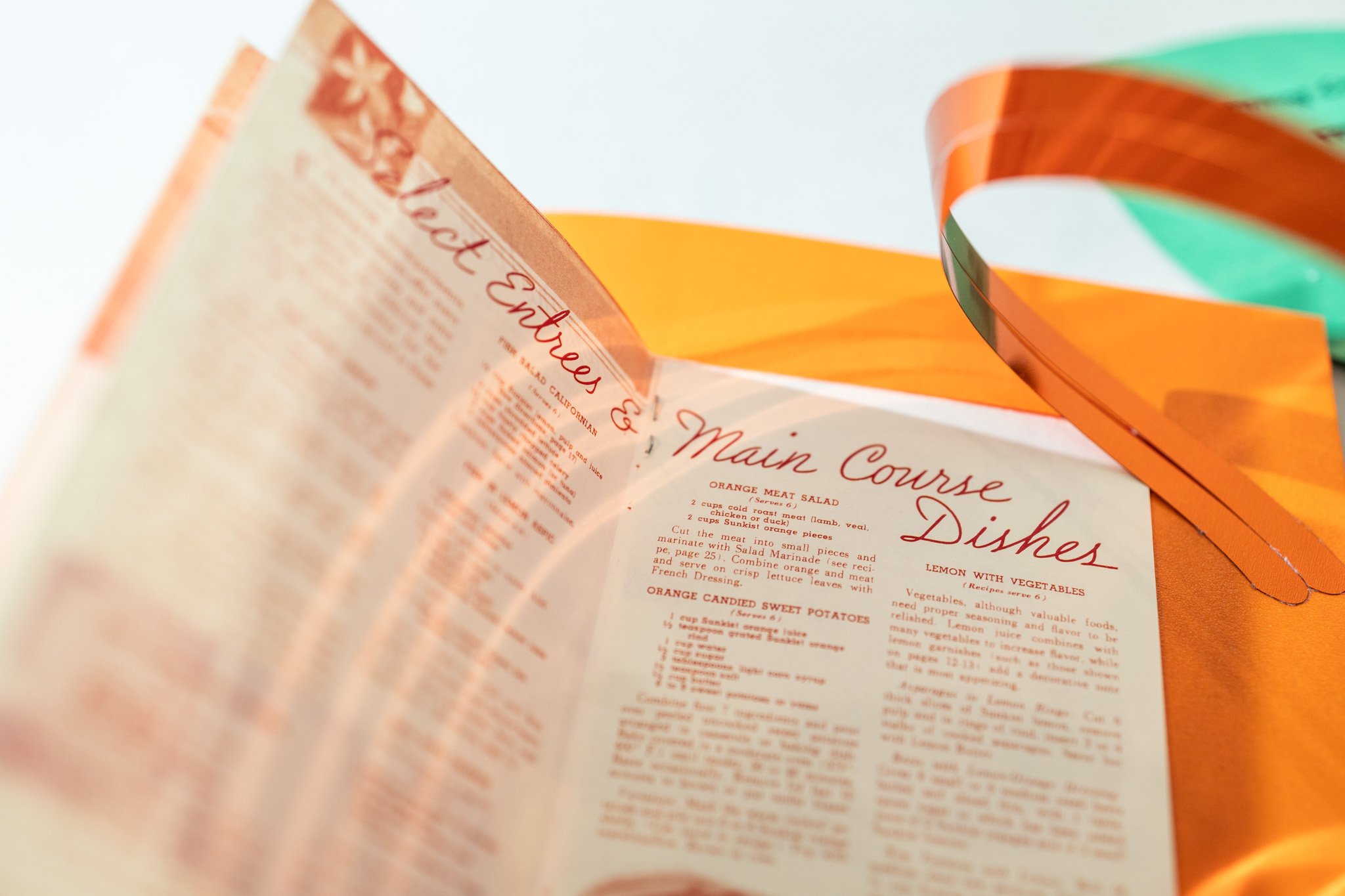
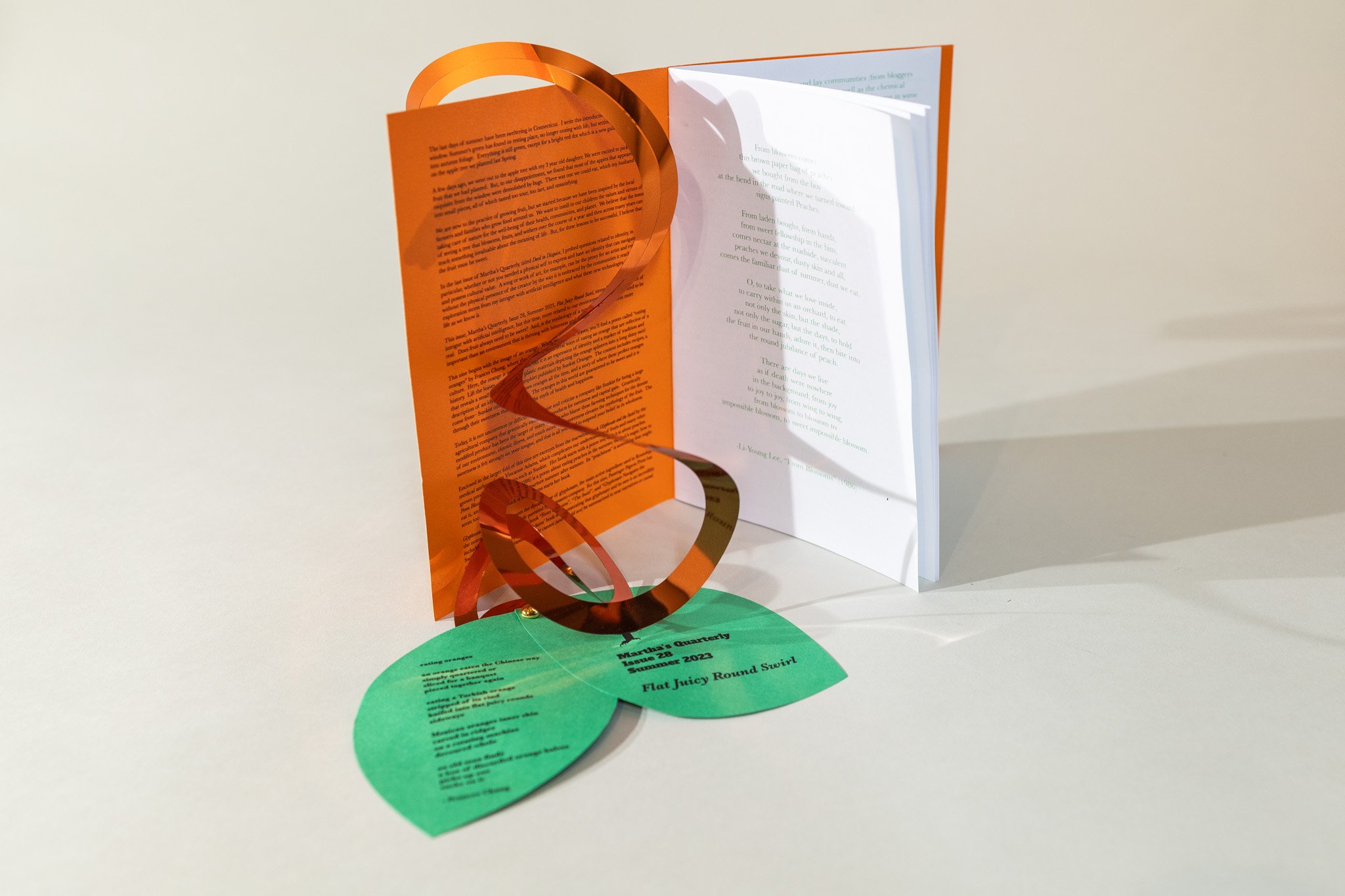
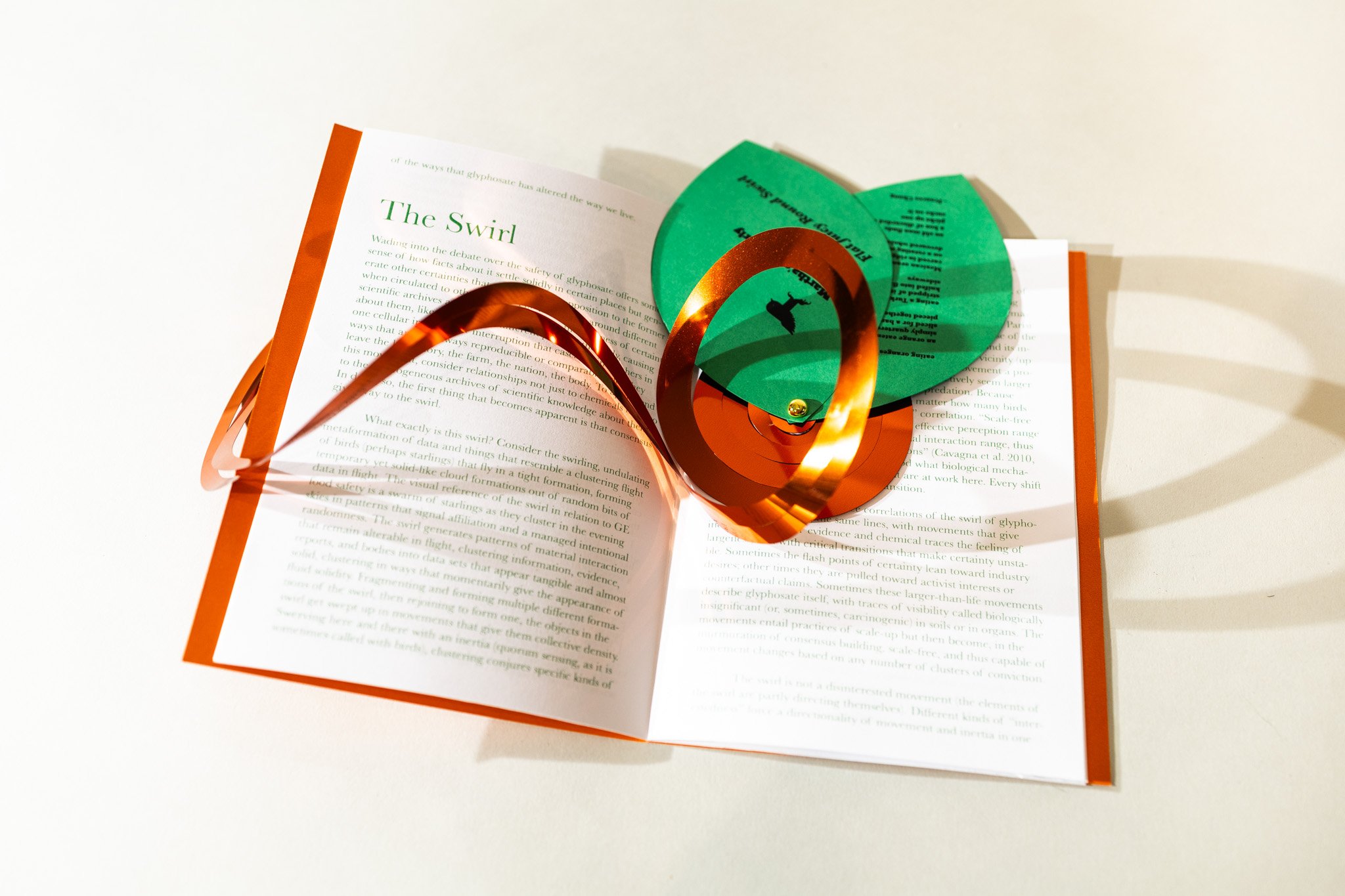
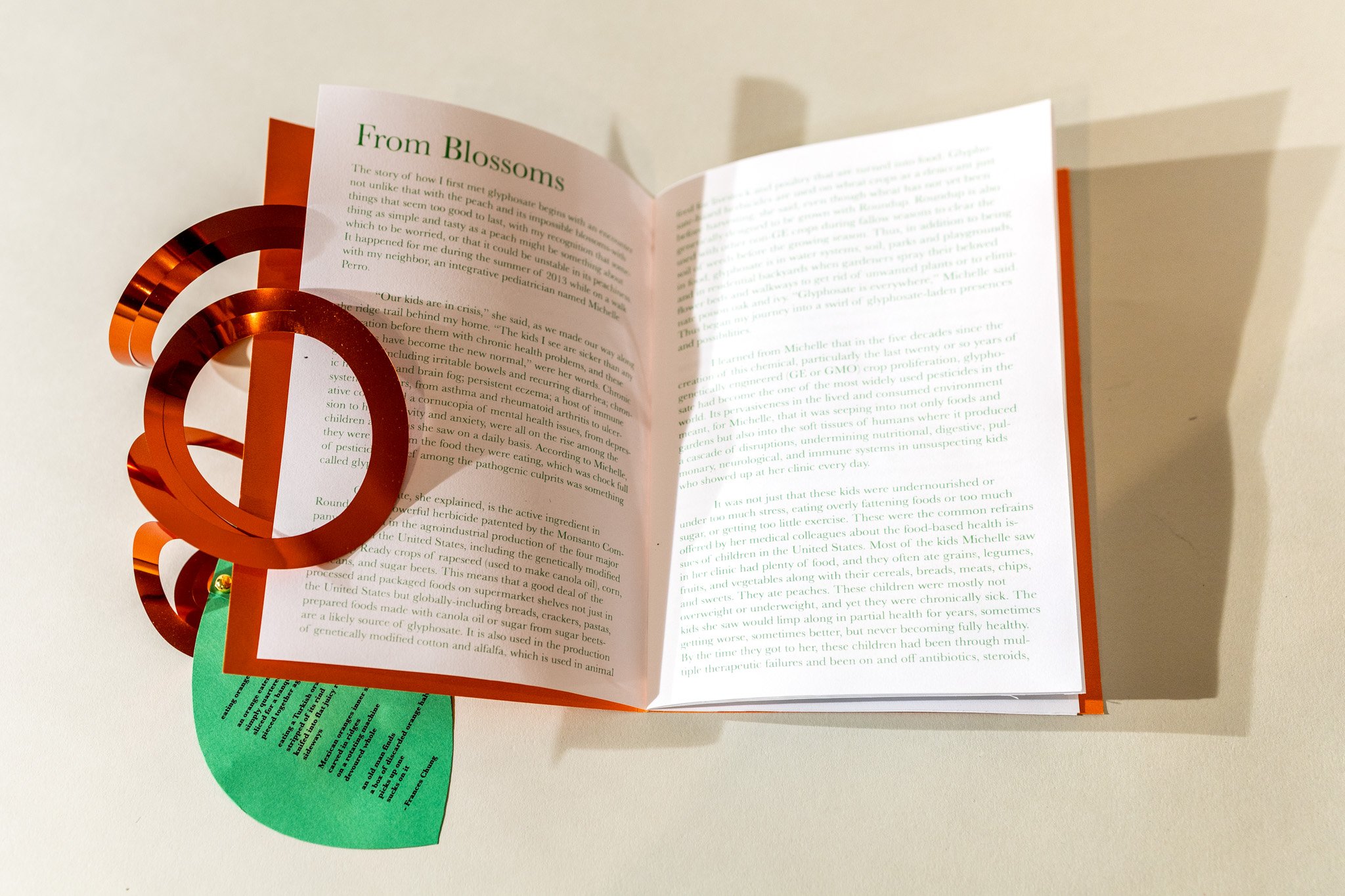
Martha's Quarterly
Issue 28
Summer 2023
Flat Juicy Round Swirl
8.25” x 5.75”
About the contributors:
Vincanne Adams is a medical anthropologist at UCSF whose research, books and articles explore a wide range of contemporary predicaments, from the use of metrics in global health and medical pluralism in Nepal and Tibet to disaster recovery in New Orleans and, more recently, the impact of industrial agrochemicals on life, knowledge and politics.
Frances Chung was an American poet born in 1950 and raised in Chinatown, New York. Chung taught math in NY public schools and published her poetry in several anthologies and journals throughout her life. Her collected poetry was published posthumously in 2000 in an anthology entitled, Crazy Melon and Chinese Apple.
The last days of summer have been sweltering in Connecticut. I write this introduction looking out my window. Summer's green has found its resting place, no longer oozing with life, but settled, ready to disappear into autumn foliage. Everything is still green, except for a bright red dot which is a new gala apple ripening on the apple tree we planted last Spring.
A few days ago, we went out to the apple tree with my 3 year old daughter. We were excited to pick the new fruit that we had planted. But, to our disappointment, we found that most of the apples that appeared exquisite from the window were demolished by bugs. There was one we could eat, which my husband cut into small pieces, all of which tasted too sour, too tart, and unsatisfying.
We are new to the practice of growing fruit, but we started because we have been inspired by the local farmers and families who grow food around us. We want to instill in our children the values and virtues of taking care of nature for the well-being of their health, communities, and planet. We believe that the lessons of seeing a tree that blossoms, fruits, and withers over the course of a year and then across many years can teach something invaluable about the meaning of life. But, for these lessons to be successful, I believe that the fruit must be sweet.
In the last issue of Martha’s Quarterly, titled Devil in Disguise, I probed questions related to identity, in particular, whether or not you needed a physical self to express and have an identity that can navigate society and possess cultural value. A song or work of art, for example, can be the proxy for an artist and evolve without the physical presence of the creator by the way it is embraced by the communities it reaches. This exploration stems from my intrigue with artificial intelligence and what these new technologies challenge in life as we know it.
This issue, Martha’s Quarterly, Issue 28, Summer 2023, Flat Juicy Round Swirl, stems from the same well of intrigue with artificial intelligence, but this time, more related to our environment and what we need to be real. Does fruit always need to be sweet? And, is the mythology of a nourishing environment more important than an environment that is thriving with bitterness and complexity?
This zine begins with the image of an orange. When you turn the leaves, you’ll find a poem called “eating oranges” by Frances Chung, where she describes the several ways of eating an orange that are reflective of a culture. Here, the orange is not just fruit, but it is an expression of identity and a marker of tradition and history. Lift the leaves, and the shiny plastic materials depicting the orange splinters into a long shiny swirl that reveals a small edited vintage pamphlet published by Sunkist Oranges. The content includes recipes, a description of an idyllic kitchen that uses oranges all the time, and a story of where these perfect oranges come from– Sunkist orchards of course. The oranges in this world are guaranteed to be sweet and it is through their sweetness that they ensure the myth of health and happiness.
Today, it is not uncommon or difficult to scrutinize and criticize a company like Sunkist for being a large agricultural company that genetically modified its products for sweetness and capital gain. Genetically modified produce has been the target of many activists who blame these farming techniques for the demise of our environment, chronic illness, and much more. The sweetness elevates the mythology of the fruit. The sweetness is felt strongly on your tongue, and that is all you need to suspend your belief in its wholeness.
Enclosed in the larger fold of this zine are excerpts from the marvelous book Glyphosate and the Swirl by the medical anthropologist Vincanne Adams, which complicates our understanding of fruits and many other grown products by companies such as Sunkist. Her book starts with a poem too, only it is about peaches. From Blossoms by Li-Young Lee (1986) is a poem about eating peaches in the summer, the fruit’s sugar, how to eat it, and its seasonal arrival and departure summer after summer. Its “peachiness” is something that might seem too good to last, which is how Adams starts her book.
Glyphosate and the Swirl illustrates the dynamic use of glyphosate, the main active ingredient used in Roundup, the notorious herbicidal pesticide patented by Monsanto company. For this zine, Passenger Pigeon Press has included three sections of Adams’ book “From Blossoms”, “The Swirl”, and “Glyphosate Navigates the Swirl”. One of the main points of Adams’ book is demonstrating that glyphosate and its uses is an incredibly complex issue and understanding its role cannot (and should not) be summarized in neat narratives or causal effect or even right and wrong. The “From Blossoms” section describes her past project with her colleague Michelle Perro where they collaborated on the book What’s Making Our Children Sick? The book was well received, but in Adam’s hindsight, the narrative was always too perfect that it oversimplified glyphosate. The overarching narrative was that children’s health was compromised because the food they ate was poisoned with chemicals such as glyphosate leading to chronic diseases and poor gut health. This well-packaged argument made glyphosate the culprit for all of these health issues, giving academics, activists, doctors, and many other communities an identifiable villain. However, Adams felt that this narrative made issues too clear-cut and convenient for a chemical that is much more complex:
Glyphosate has come to hold larger-than-life potencies because of its histories, its many constituencies, its chemical opportunisms, and its ability to create all kinds of relationships with science, bodies, activism, and the facts. Glyphosate has many of what Eben Kirksey (2020) calls chemosocialities across environments, sensations, scientific archives, and capitalist and political opportunities. How glyphosate builds its constituencies and how clinicians learn to sense the presence of glyphosate in damaged body tissues are processes that shift our focus from abject suffering to wider questions about how we live with the chemicals that have become ubiquitous in our times. (Adams 5-6)
Vincanne Adams’ book proposes another way of thinking about glyphosate, and I find her argument compelling and inspiring. She proposes that to more deeply understand glyphosate and its issues across different constituencies, you must think of it as a “swirl”, but, more provocatively, this is not a metaphor, it is a model.
Adams’ use of the swirl concept builds from the ideas of the Italian physicist Giorgio Parisi who calls the swirling movement of a flock of starlings murmuration – “ a shape-shifting cloud, a single being moving and twisting in unpredictable formations in the sky. As if it were one swirling liquid mass.” Glyphosate’s behavior could be thought of in this way too. One characteristic of the chemical can be thought of as an evidence point– or one flying bird–, but it is still part of the whole swirl. While the narrative of glyphosate contaminating our food is true, it is still only one point of a whole moving subject. Therefore, only focusing on that narrative, or using it as part of activism or academic argument misses the totality of the issue. Adams demonstrates:
I think of the scale-free correlations of the swirl of glyphosate as working along the same lines, with movements that give individual points of evidence and chemical traces the feeling of largeness, and with critical transitions that make certainty unstable. Sometimes the flash points of certainty lean toward industry desires; other times they are pulled toward activist interests or counterfactual claims. Sometimes these larger-than-life movements describe glyphosate itself, with traces of visibility called biologically insignificant (or, sometimes, carcinogenic) in soils or in organs. The movements entail practices of scale-up but then become, in the murmuration of consensus building, scale-free, and thus capable of movement changes based on any number of clusters of conviction. (Adams 108)
I wonder if Adams’ idea of the swirl could be applied to other complexities, as a way to avoid a singular consensus on an issue and to constantly consider a topic as a complex organism in of itself. The last section that we excerpted for this zine is titled, “Glyphosate Navigates the Swirl”. In it, Adams reported on a California hearing in 2017 about the degree to which glyphosate was carcinogenic. If the chemical could be proven to be toxic at a certain level, then it would be added to a list under Proposition 65 that would mandate that the makers of Roundup must provide warning labels on any products containing it in California. Throughout the hearing, information about glyphosate behaved like a swirl:
Glyphosate took center stage, enabling its human interlocutors to speak about its potencies in their lives and in others' by calling out its multiple effects and multiple harms, culminating in one harm to rule them all: carcinogenesis. Glyphosate became the master narrator and an active participant in a political turmoil of truth claims that swirled this way and that and then settled for a moment on its potencies as a cellular mutagen. (Adams 124)
As I told you at the beginning of this introduction, I began making this quarterly while still reflecting on the subject of artificial intelligence. More broadly, I have been thinking about identity and how one’s self is presented in culture, as a real body or as a proxy. In this zine, I try to tie identity to the culture around fruit, growing fruit, consuming fruit, and our expectations around what fruit– and in general what food– needs to be. The swirl model could be applied here too because not any one of these subjects is singular, each is part of a giant flock all working together to form “identity”. The genetically modified foods made by companies such as Sunkist are so easily villainized and yet they have constructed our understanding of a sweet, perfect orange. The fruit trees I am growing will be part of my daughter’s childhood, a period in her life where her own identity will form with bitterness as much as sweetness. Consensus on one or a group’s identity misses the big picture. Aspects of an identity are all individual points of a whole, much like the murmurations of a flock of starlings.
– Tammy Nguyen, Editor-in-Chief
Adams, Vincanne. “From Blossoms.” Glyphosate and the Swirl, Duke University Press, 2023, pp. 1-6.
Adams, Vincanne. “The Swirl.” Glyphosate and the Swirl, Duke University Press, 2023, pp. 106-113.
Adams, Vincanne. “Glyphosate Navigates the Swirl.” Glyphosate and the Swirl, Duke University Press, 2023, pp. 117-124.
Chung, Frances. “eating oranges.” Crazy Melon and Chinese Apple: the poems of Frances Chung, Wesleyan University Press, 2000, pp. 88.
www.passengerpigeonpress.com
@passengerpigeonpress on Instagram
Martha’s Quarterly, Issue 28, Summer 2023, Flat Juice Round Swirl was designed and edited by Tammy Nguyen. It was produced by Daniella Porras and Holly Greene with assistance from Chance Lockard, Lena Weiman, and Aisha Odetunde. Excerpts of text were sourced from Glyphosate and the Swirl by Vincanne Adams with permission from Duke University Press and Crazy Melon and Chinese Apple by Frances Chung with permission from Wesleyan University Press, as cited below. The Sunkist Oranges booklet is a vintage publication. Flat Juicy Round Swirl was made using an orange party decoration, green, white, and ivory textweight paper, and metallic orange cardstock. Everything was printed with a photocopier. Baskerville font was used in various styles and sizes throughout.
Published in September 2023, this is an edition of 250.
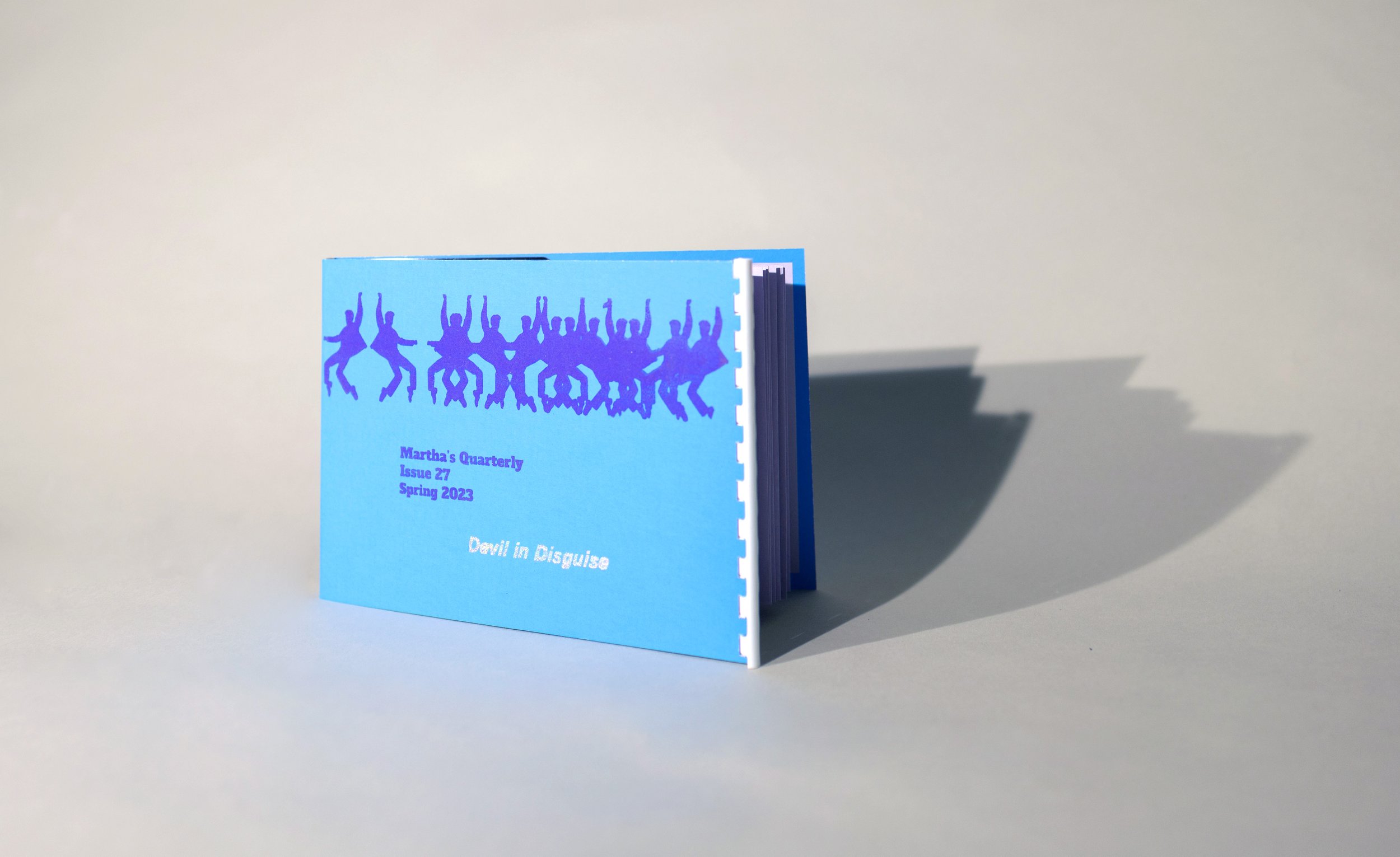
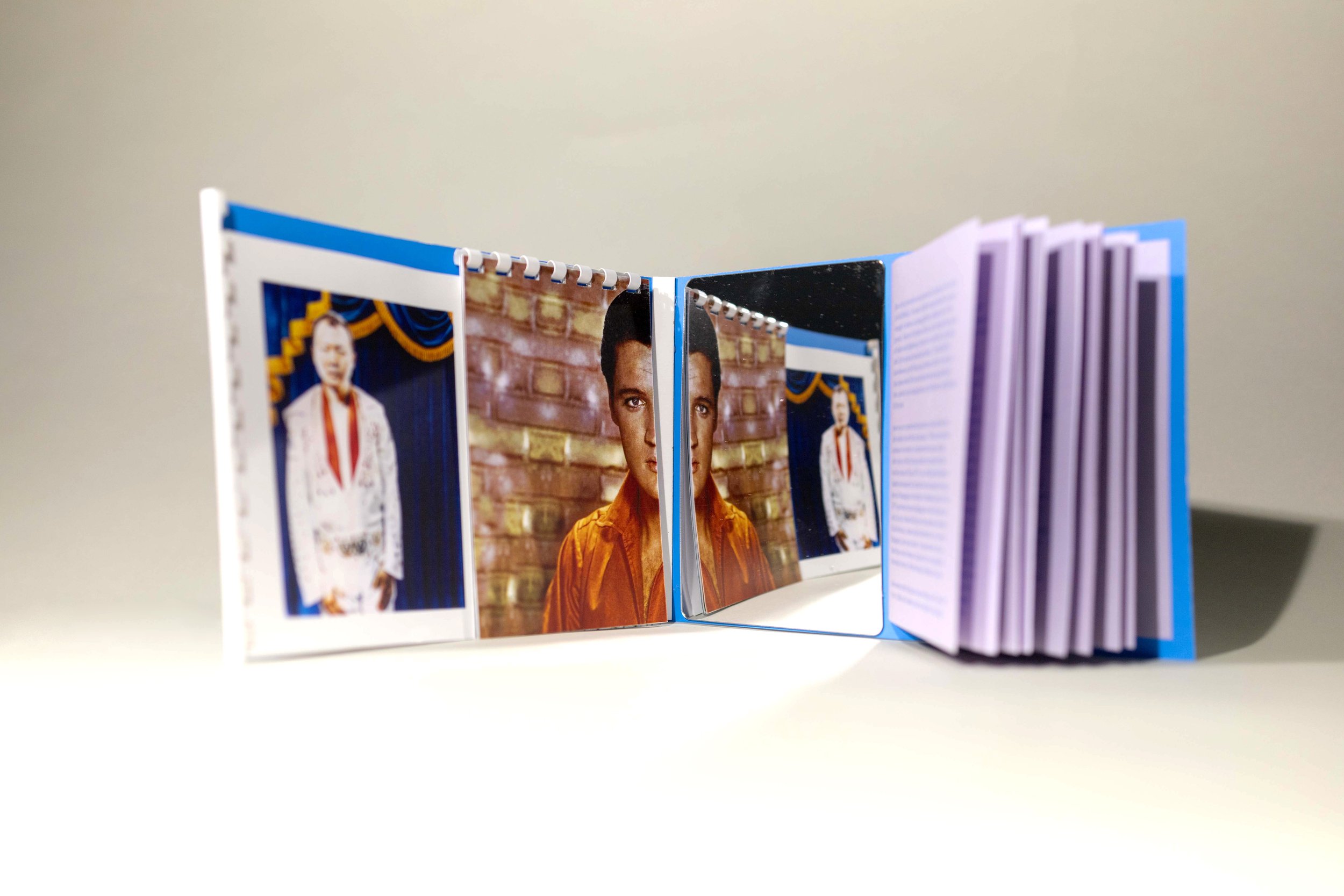
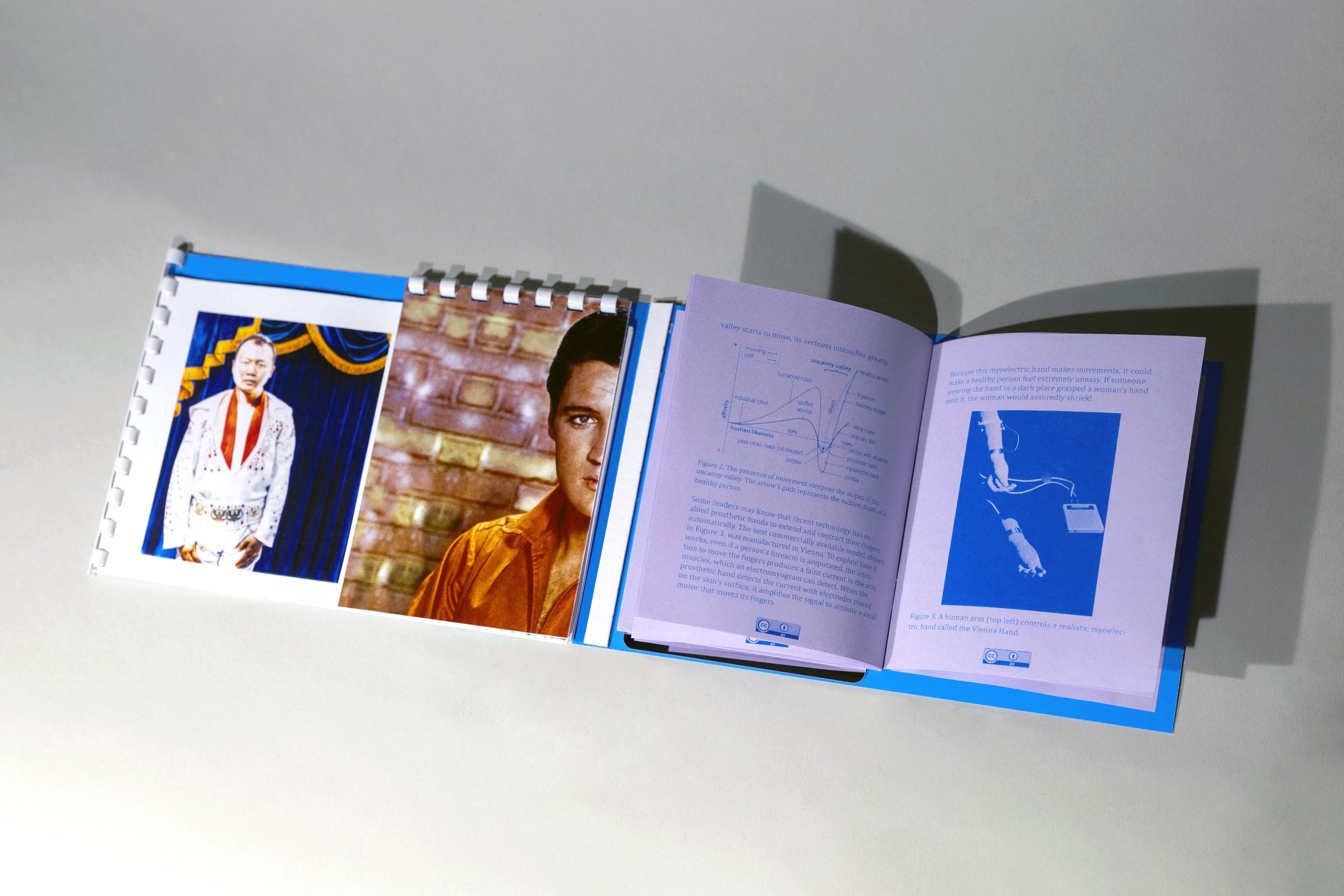
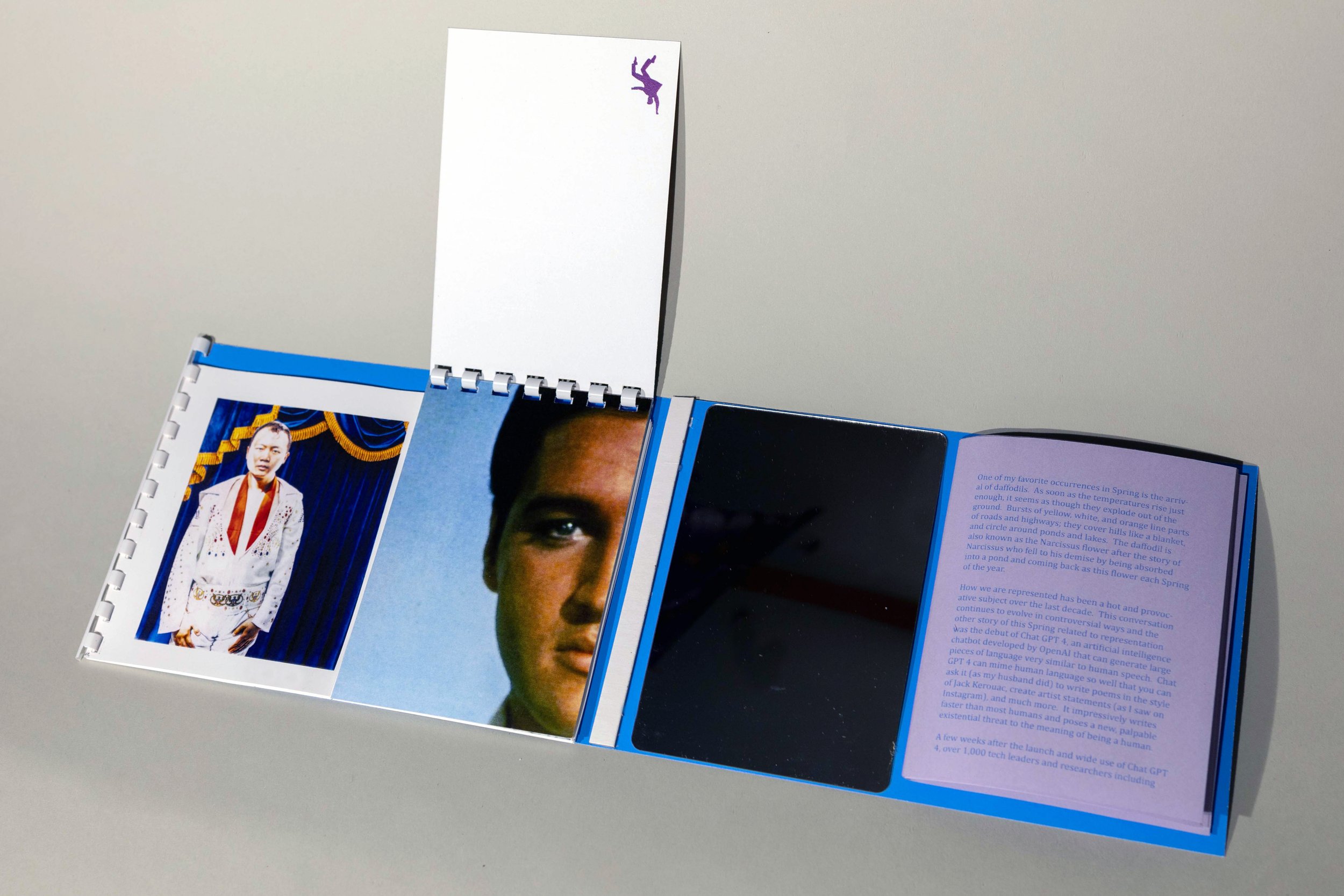
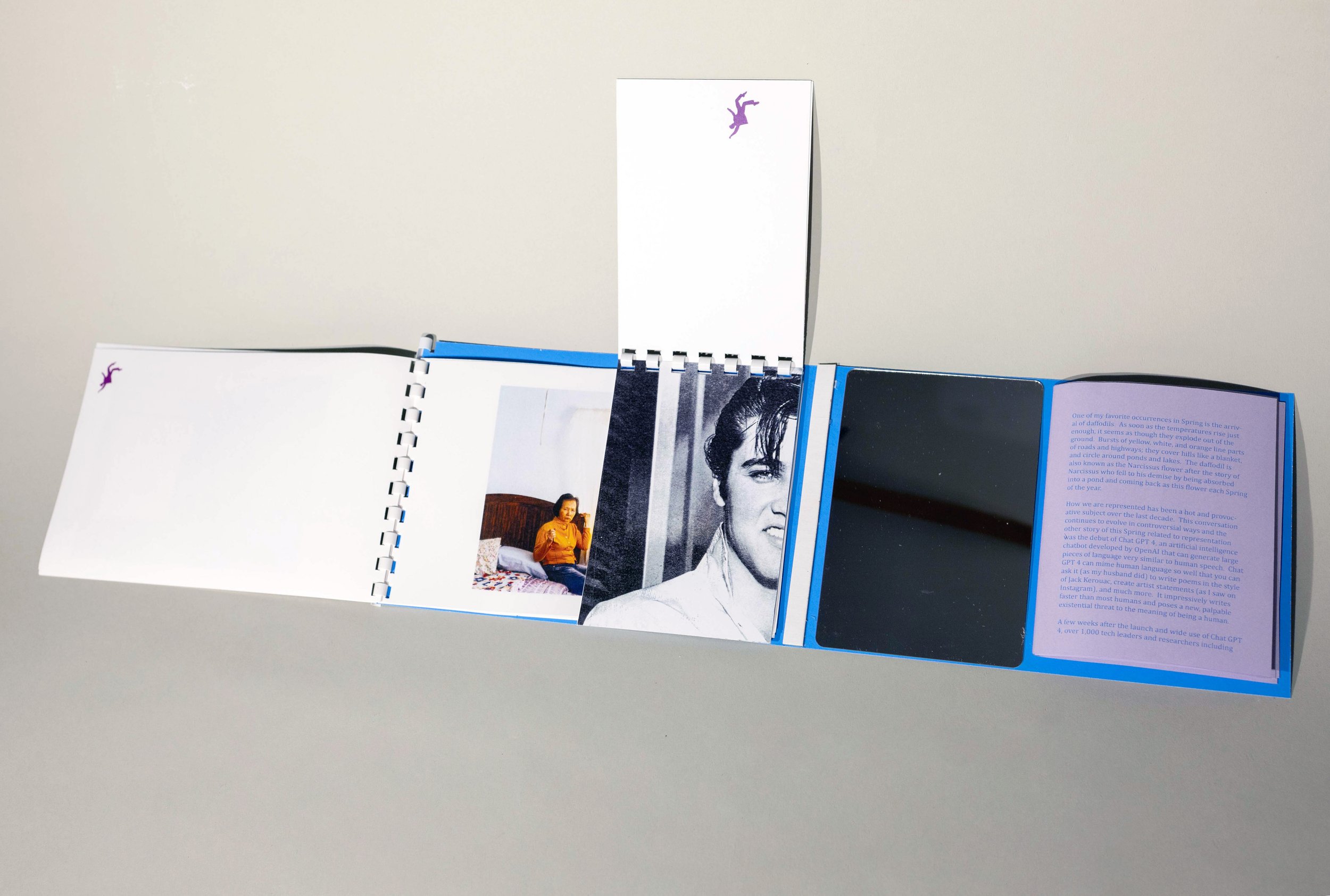
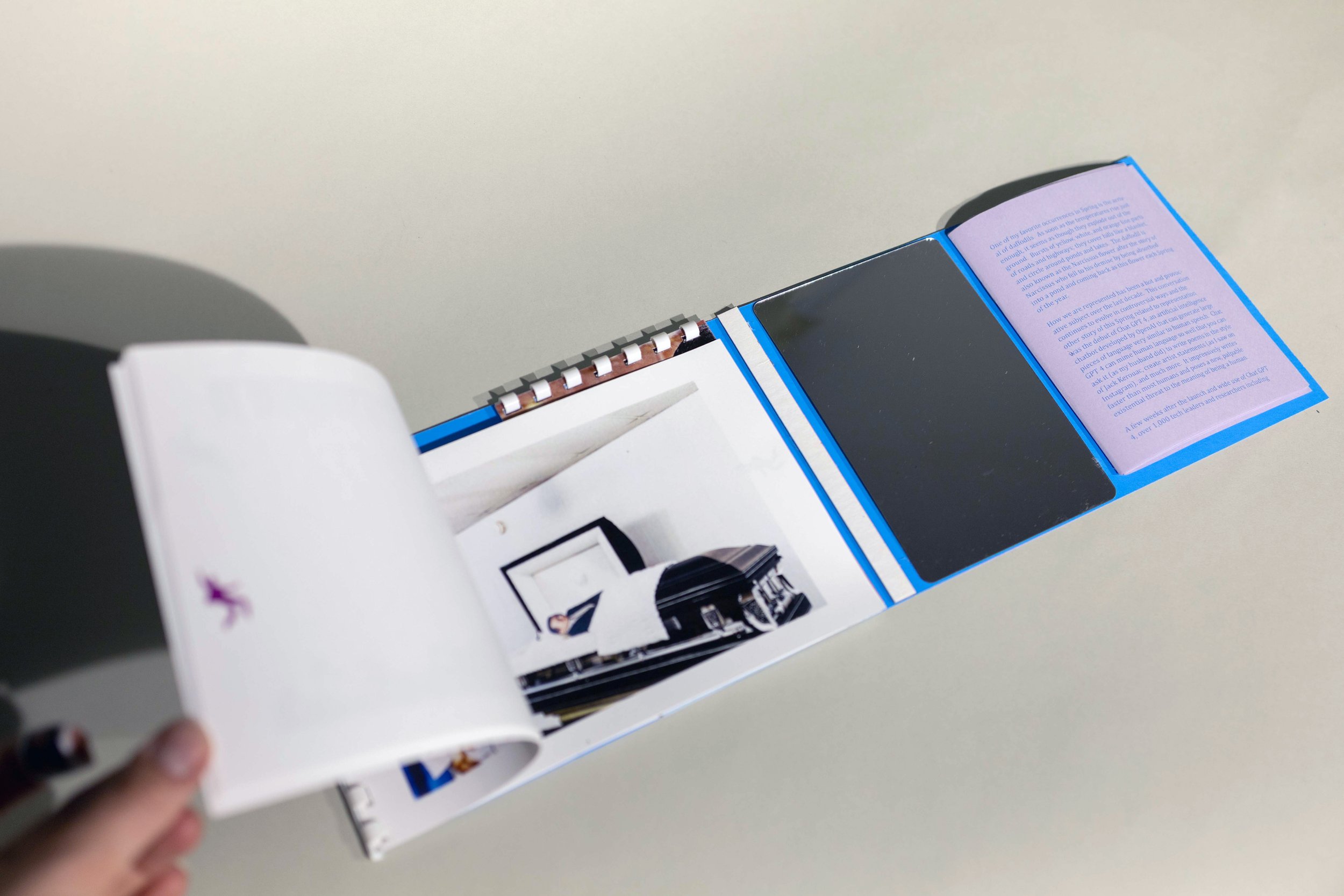
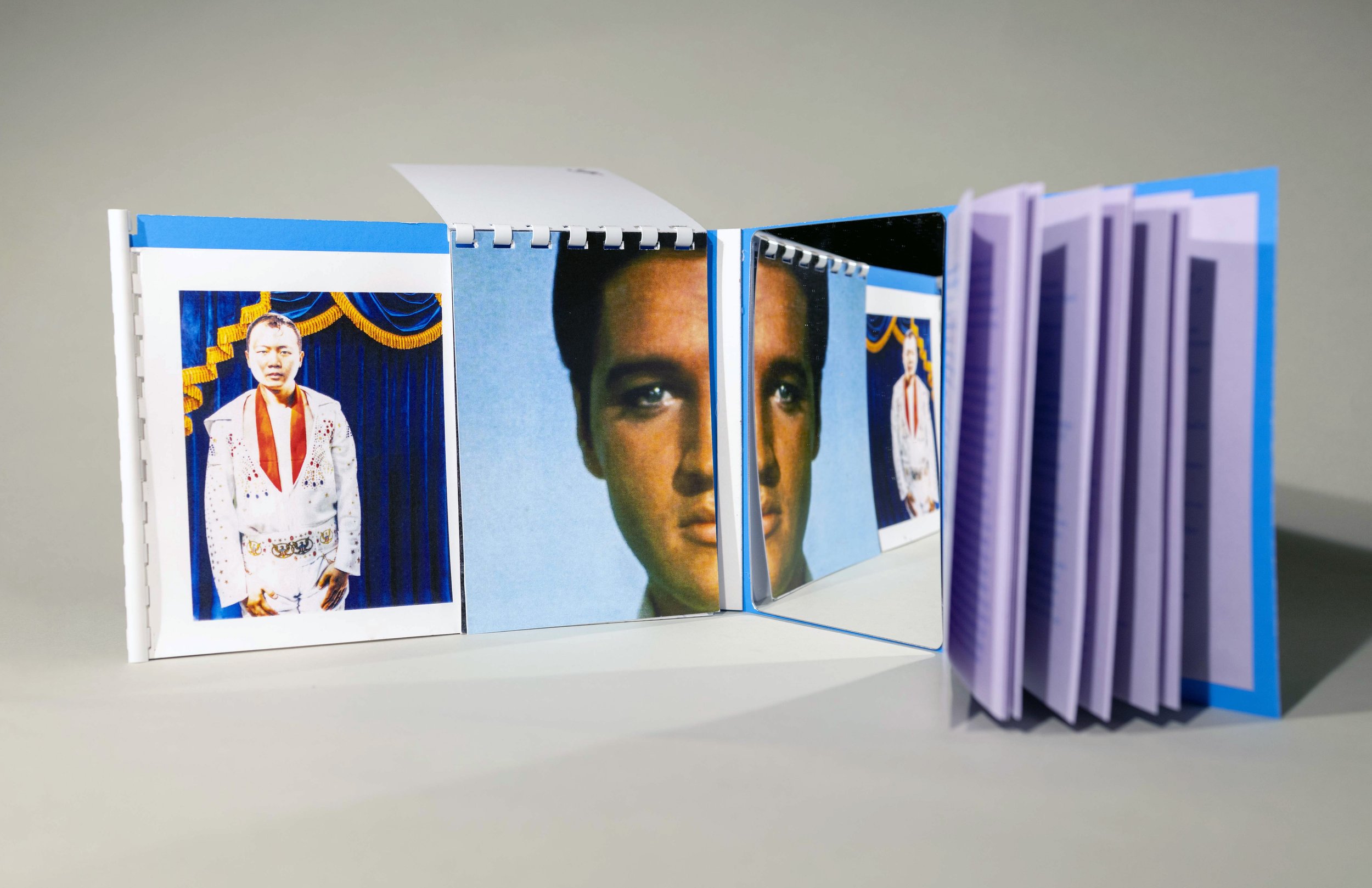
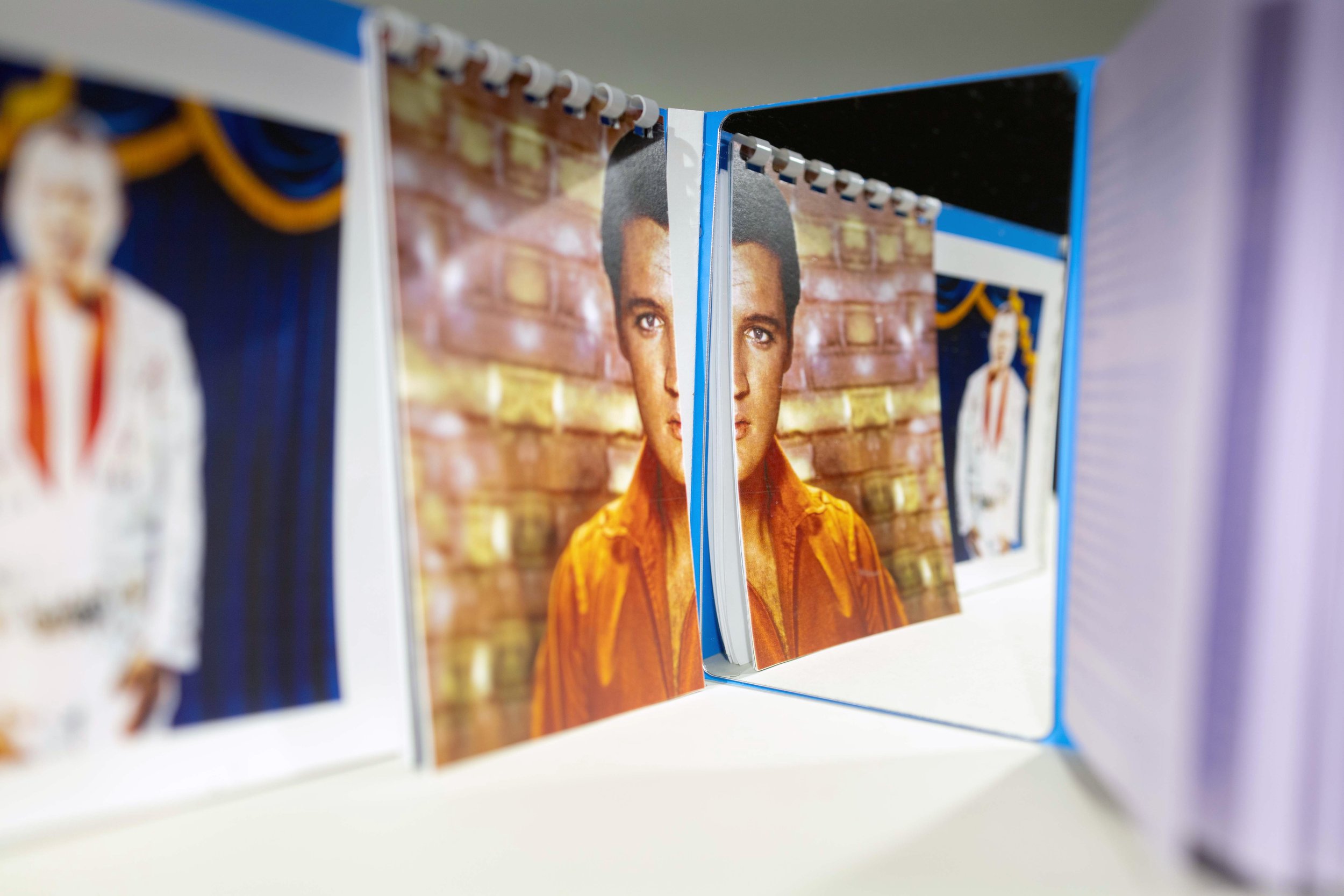

Martha's Quarterly
Issue 27
Spring 2023
Devil in Disguise
8.75” x 6”
About the contributors:
Tommy Kha is a Chinese-Vietnamese American photographer, working between New York City and Memphis, Tennessee. He likes to think he takes after his great aunt, who “read too many books and went crazy.”
Karl Fredric MacDorman is Associate Dean for Academic Affairs at Indiana University’s Luddy School of Informatics, Computing, and Engineering. He was previously an Assistant Professor at Osaka University’s School of Engineering. He received his Ph.D. in Computer Science from Cambridge University in 1997 and his B.S. in Computer Science from the University of California at Berkeley in 1988. He has published over 100 papers on human–robot interaction, machine learning, and cognitive science. His main research interests include the emergence and grounding of symbols, cognitive development robotics, android science, and the uncanny valley.
Masahiro Mori is Professor Emeritus at the Tokyo Institute of Technology, where he led robotics research for nearly two decades. He is also President of the Mukta Institute and Honorary President of the Robotics Society of Japan. Mori completed his doctorate in engineering at the University of Tokyo and has served on their faculty, among others. Mori is widely celebrated for introducing the concept of the uncanny valley in 1970, which has influenced fields ranging from humanoid robotics and computer animation to perceptual psychology and cognitive neuroscience. He is known for his thoughts on robotics and Buddhism, as detailed in The Buddha in the Robot and in many other books. He has contributed greatly to robotics and automation research and education, founding some of the earliest robotics contests. He has won numerous awards from learned societies, the NHK Broadcasting Culture Award in 1992, the Medal of Honor in 1994, and the Order of the Rising Sun in 1999.
One of my favorite occurrences in Spring is the arrival of daffodils. As soon as the temperatures rise just enough, it seems as though they explode out of the ground. Bursts of yellow, white, and orange line parts of roads and highways; they cover hills like a blanket, and circle around ponds and lakes. The daffodil is also known as the Narcissus flower after the story of Narcissus who fell to his demise by being absorbed into a pond and coming back as this flower each Spring of the year.
How we are represented has been a hot and provocative subject over the last decade. This conversation continues to evolve in controversial ways and the other story of this Spring related to representation was the debut of Chat GPT 4, an artificial intelligence chatbot developed by OpenAI that can generate large pieces of language very similar to human speech. Chat GPT 4 can mime human language so well that you can ask it (as my husband did) to write poems in the style of Jack Kerouac, create artist statements (as I saw on Instagram), and much more. It impressively writes faster than most humans and poses a new, palpable existential threat to the meaning of being a human.
A few weeks after the launch and wide use of Chat GPT 4, over 1,000 tech leaders and researchers including Elon Musk urged artificial intelligence labs to, “immediately pause for at least 6 months the training of AI systems more powerful than GPT-4.” (1) The letter illustrated that:
Advanced AI could represent a profound change in the history of life on Earth, and should be planned for and managed with commensurate care and resources. Unfortunately, this level of planning and management is not happening, even though recent months have seen AI labs locked in an out-of-control race to develop and deploy ever more powerful digital minds that no one – not even their creators – can understand, predict, or reliably control. (2)
In his recent interview with Tucker Carlson, Elon Musk emphasized these points by stating, "AI is more dangerous than, say, mismanaged aircraft design or production maintenance or bad car production in the sense that it has the potential, however small one may regard that probability, but it is not trivial; it has the potential of civilizational destruction.” (3) These ominous warnings put into question the meaning of human creation and our relationships. It challenges what is real or fake and whether that distinction is important at all.
But, in another recent interview with Manolis Kellis, a professor of Computer Science at MIT on the Lex Fridman podcast, Professor Kellis illustrates the integration of AI into our ordinary lives from a human evolution perspective. Considering AI as another step forward in our evolution he explains:
But maybe the next round of evolution on Earth is self-replicating AI, where we're actually using our current smarts to build better programming languages and the programming languages to build, chat GPT and that then build the next layer of software that will then sort of help AI speed up. And it's lovely that we're coexisting with this AI that sort of the creators of this next layer of evolution and this next stage are still around to help guide it and hopefully will be for the rest of eternity as partners. But it's also nice to think about it as simply the next stage of evolution where you've kind of extracted away the biological needs. Like if you look at animals, most of them spend 80% of their waking hours hunting for food or building shelter. Humans, maybe 1% of that time. And then the rest is left to creative endeavors. And AI doesn't have to worry about shelter, et cetera. So basically it's all living in the cognitive space. So in a way it might just be a very natural sort of next step to think about evolution. (4)
In other words, the physical world as we know it will change and become non-essential. Tom Hanks really illustrated this concept in this comment on the Adam Buxton podcast, “Anybody can now recreate themselves at any age they are by way of AI or deep fake technology … I could be hit by a bus tomorrow and that’s it, but my performances can go on and on and on”. (5)
All of this is the context for this Martha’s Quarterly, Issue 27, Spring 2023, Devil in Disguise, a title that takes after Elvis Presley’s 1968 hit (You’re the) Devil in Disguise. In the jolly tune, the lyrics warn:
You look like an angel (look like an angel)
Walk like an angel (walk like an angel)
Talk like an angel
But I got wise
You're the devil in disguise
Oh, yes, you are, devil in disguise
Humor the devil in disguise to be AI and that Elvis’ image has been one of the most desirable acts to preserve and keep alive in culture. There are countless Elvis impersonators who officiate weddings, sing, and dance. Sometimes these talents are so similar to the original Elvis that the audience can easily suspend their imagination into the act and imagine the King as still being alive. But, as AI becomes more common and integrated into daily life, it will be no surprise when AI can actually become Elvis.
Consider the blurring of real and fake Elvis as you open this Martha’s Quarterly. To the left of the centerfold is a series of half portraits of Elvis. To the right is a mirror that allows you to reflect the half face on the left, rendering the illusion of a whole face. Sometimes they look acceptable, but at other times, the symmetry appears so perfect that the portrait looks “wrong”.
This sensation and its possible relevance to AI is why we are featuring the 1970 essay The Valley of the Uncanny by Masahiro Mori who was a professor of robotics at the Tokyo Institute of Technology. The essay first appeared in a little-known Japanese journal called Energy. While it received very little attention in the first few years after its publication, it is now a very important article in the fields of robotics and culture. One of the main points of Mori’s essay is a description of a space where human creations of proxies such as prosthetics can be so similar, almost exacting of humanness, that the object evokes a feeling of eeriness or creepiness. Contrarily, human creations of puppets or personified toys, do not evoke this uneasy feeling. This space is the Valley of the Uncanny, and I wanted to center this concept within the conversation of AI.
Towards the end of Mori’s essay, he probes at essential questions on human existence:
I think this descent explains the secret lying deep beneath the uncanny valley. Why were we equipped with this eerie sensation? Is it essential for human beings? I have not yet considered these questions deeply, but I have no doubt it is an integral part of our instinct for self-preservation. (6)
This is the same question that I would also ask of AI, especially as it becomes ever-present in ordinary life. I wonder if human societies can actually embrace Kellis’ suggestion that AI is part of our natural evolution. Or, is AI to be extremely restricted because it is existential? These are the looming questions that I am asking as this issue of Martha’s Quarterly also presents a selection of pictures by the artist Tommy Kha.
In his portfolio, Kha is costumed as Elvis, reproduced as a cardboard printout, and sometimes only represented as a shadow. These pictures explore Kha’s identity in a host of ways, sometimes, with his mother who could be a reflection of the artist as she sits by him or with her own face cut out. The poetics of Kha’s images are expansive but I can also ground them in the underlying questions of this issue. What is our identity when we live in a form outside of our own flesh and bones? What is human life or dignity when we are physically detached from it? Can our environment and the people we know be enough to stand in for our own form? And if our lives can be extended through AI, then at which point will we no longer be necessary?
This issue of Martha’s Quarterly will probably arrive in your mailbox in the last days of Spring and the heat of Summer burns across my garden, where the daffodils of Spring now look shriveled and brown. Narcissus fell to his demise because he saw a reflection of himself in a pool and fell in love with it. Death came not in what he saw but in what the reflection could not do. The reflection could not love Narcissus, because in the end, it was not a real person who could reciprocate the same passion back.
-Tammy Nguyen, Editor-in-Chief
https://futureoflife.org/open-letter/pause-giant-ai-experiments/
https://futureoflife.org/open-letter/pause-giant-ai-experiments/
https://www.foxnews.com/media/elon-musk-develop-truthgpt-warns-civilizational-destruction-ai
https://www.cnn.com/2023/05/16/entertainment/tom-hanks-ai-movies-scli-intl/index.html
Mori, Masahiro. “The Uncanny Valley.” Translated by Karl Fredric MacDorman. Energy, 1970.
Martha’s Quarterly, Issue 27, Spring 2023, Devil in Disguise was edited by Tammy Nguyen, designed and produced by Holly Greene with assistance from Daniella Porras and Jane Lillard. The images of Elvis were sourced from Encyclopedia Britannica. Devil in Disguise was produced using full-color photocopy, silkscreen printing, hot stamping, mirrors, and comb bindings. The cover paper is 100lbs text weight, and the internal paper is 20 lbs, 32 lbs, and 100 lbs text weight. The fonts used are Cambria, Alfa Slab, and Univers.
Published June 2023, this is an edition of 200.

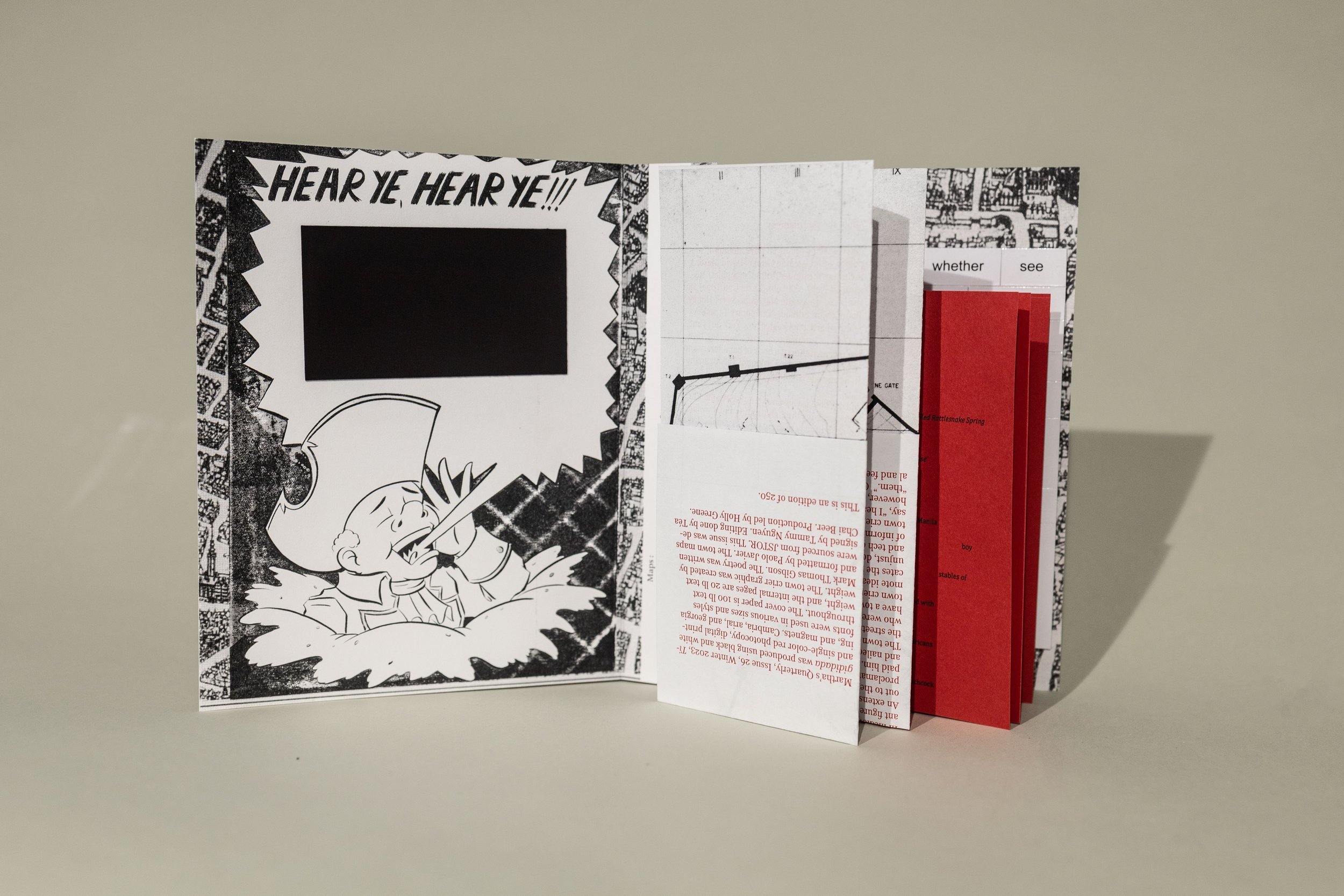
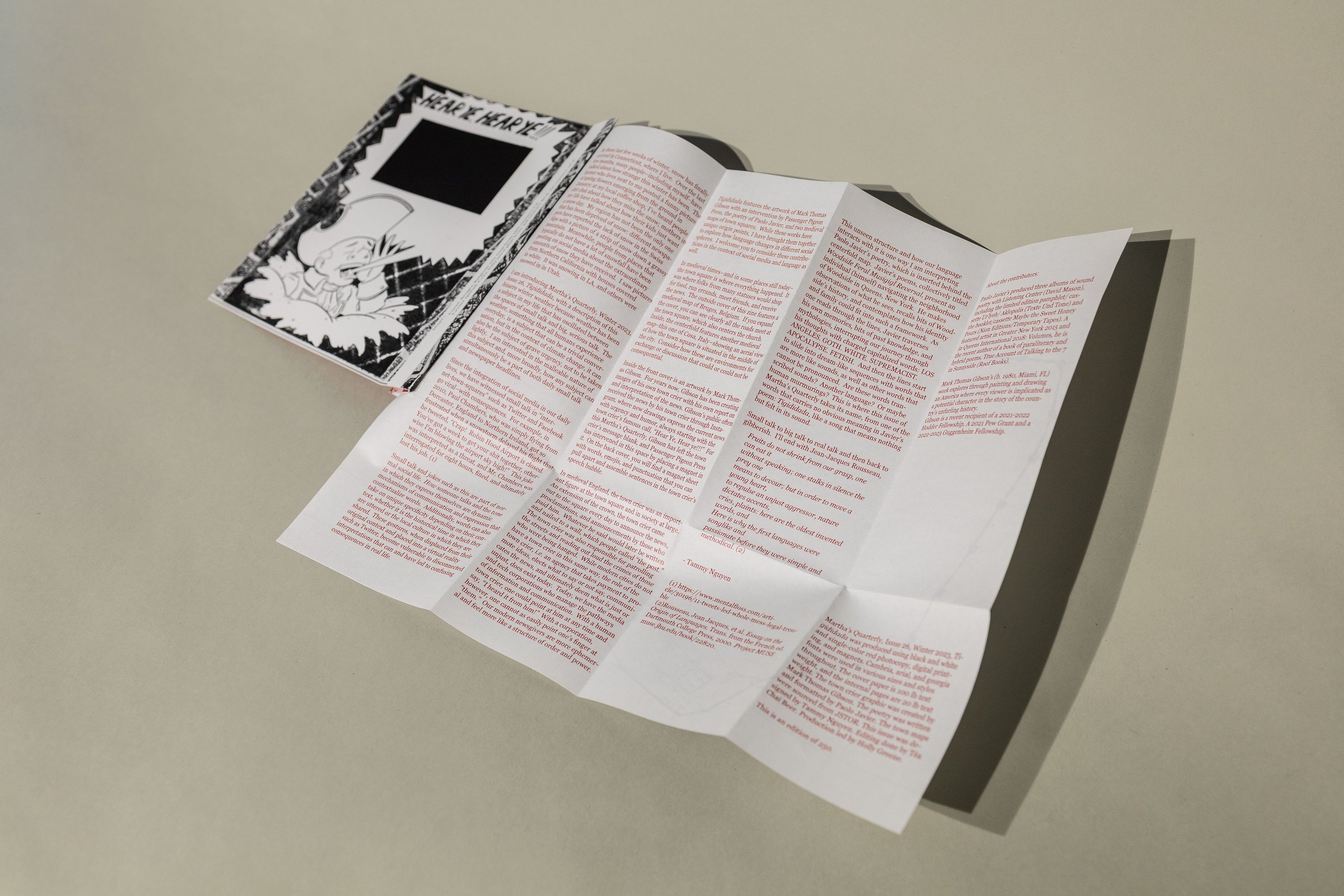

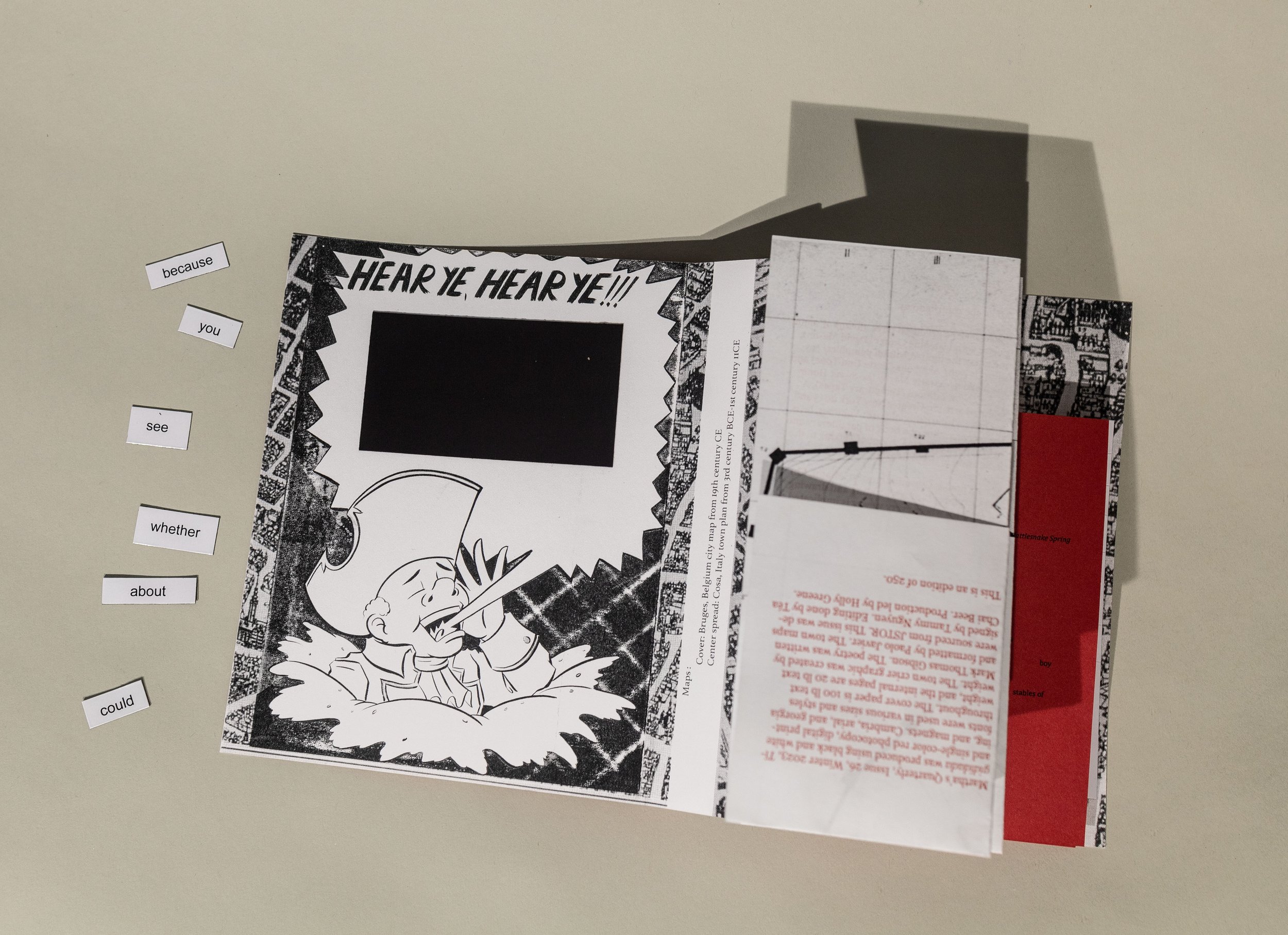
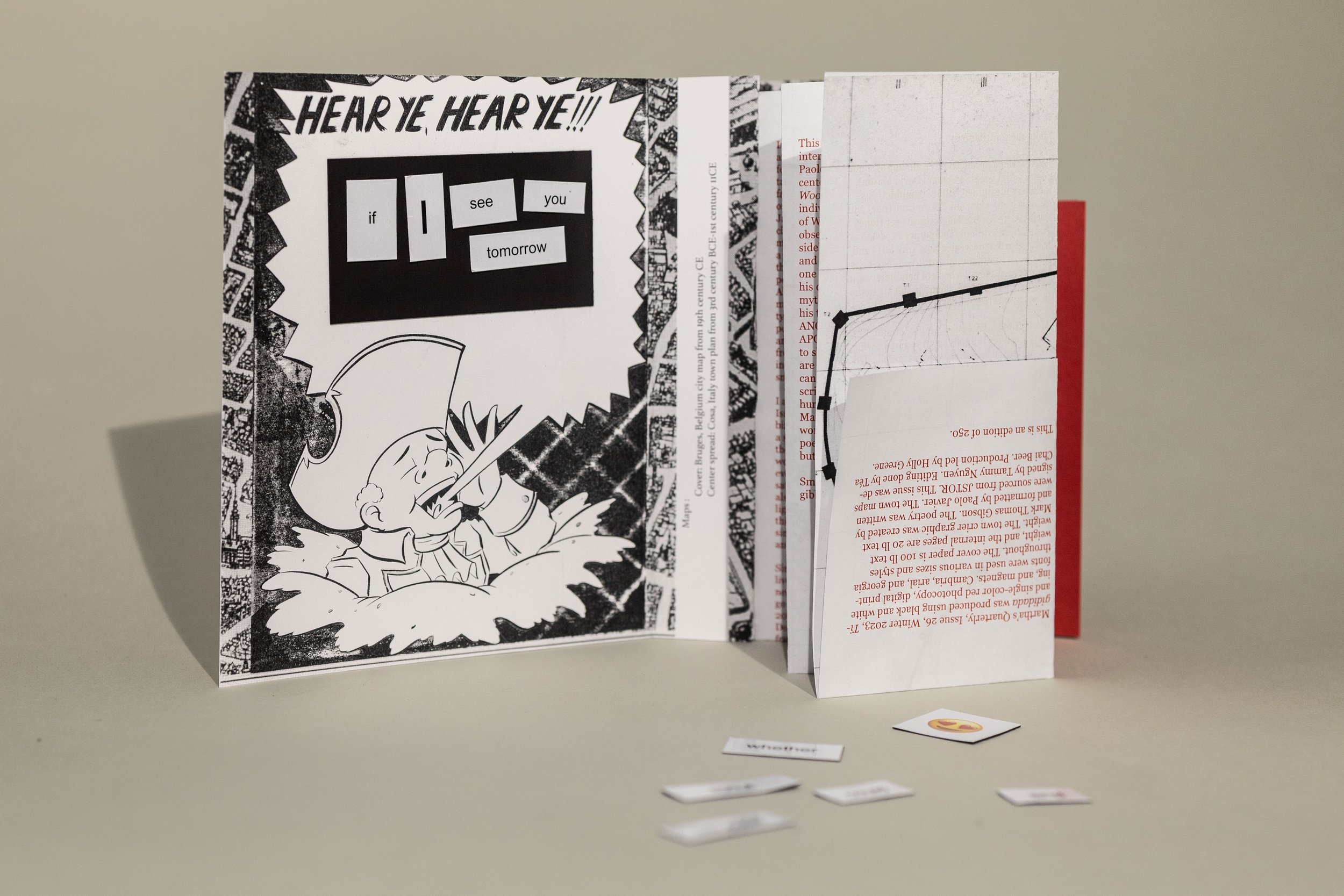
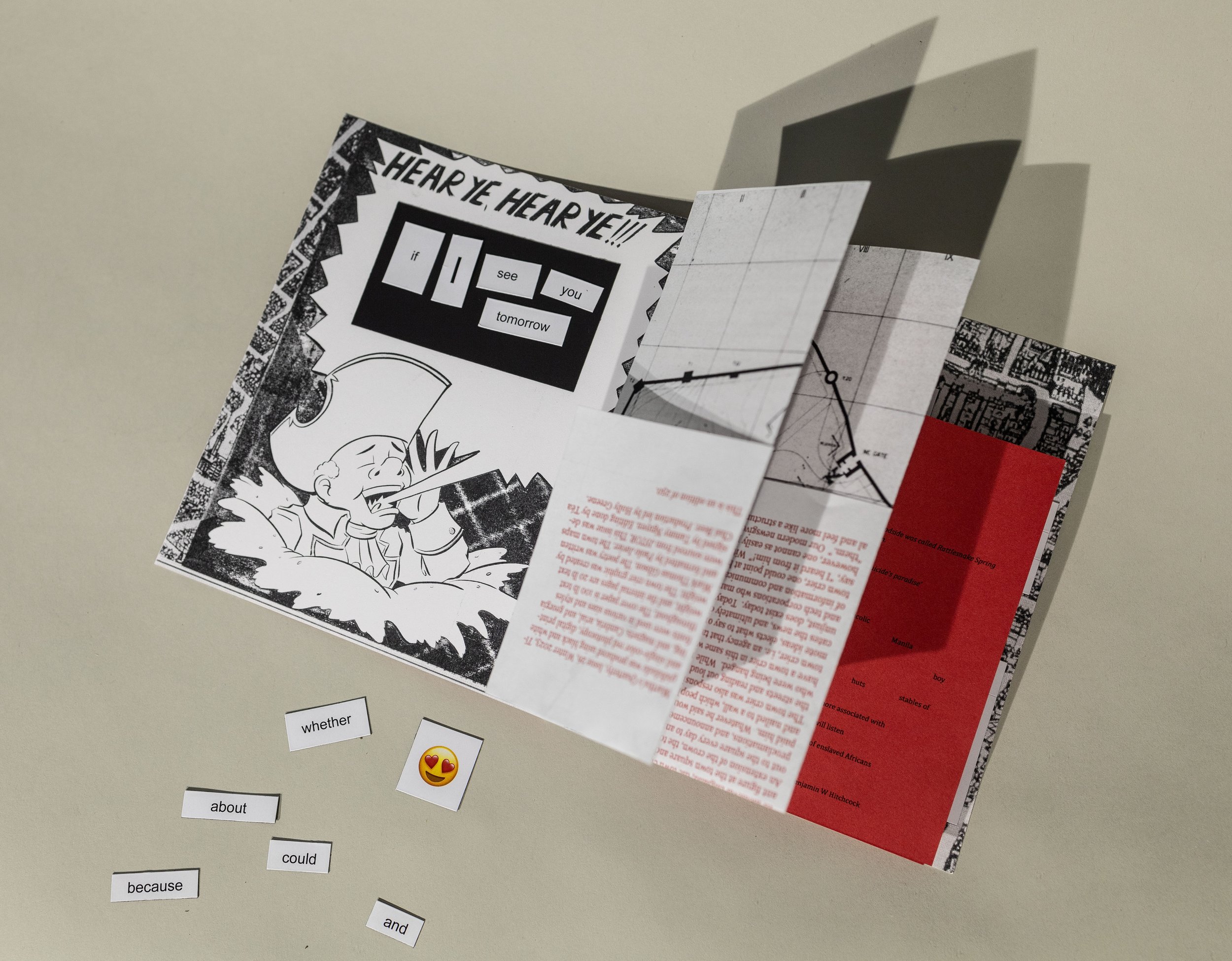

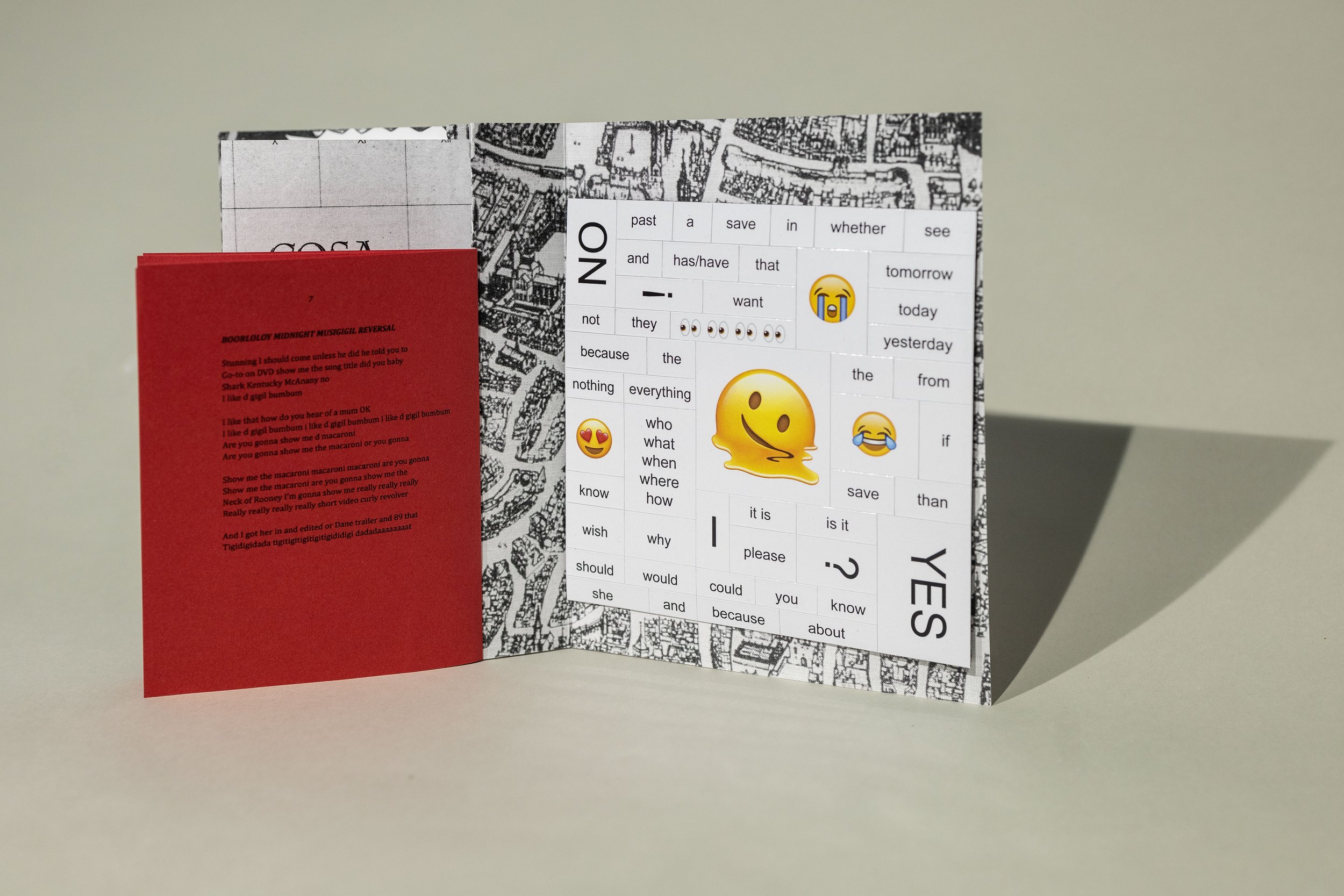
Martha's Quarterly
Issue 26
Winter 2023
Tigididada
7.25” x 5.75”
About the contributors:
Paolo Javier's produced three albums of sound poetry with Listening Center (David Mason), including the limited edition pamphlet/ cassette Ur’lyeh/ Aklopolis (Texte Und Tone) and the booklet/cassette Maybe the Sweet Honey Pours (Nion Editions/Temporary Tapes). A featured artist in Greater New York 2015 and in Queens International 2018: Volumes, he is the recent author of a book of paraliterary and hybrid poems, True Account of Talking to the 7 in Sunnyside (Roof Books).
Mark Thomas Gibson’s (b. 1980, Miami, FL) work explores through painting and drawing an America where every viewer is implicated as a potential character in the story of the country's unfurling history. Gibson is a recent recipient of a 2021-2022 Hodder Fellowship, A 2021 Pew Grant and a 2022-2023 Guggenheim Fellowship.
In these last few weeks of winter, snow has finally arrived in Connecticut, where I live. Over the last few months, many people–including myself–have talked about how strange this winter has been. The farmer who lives next to me posted a funny picture of spring flowers emerging from the ground in January; at my local coffee shop, I’ve heard people chit chat about how they miss the snow; mothers in my life have talked about how their kids just want a snow day. My region has not been the only one that has been deprived of snow: different newspapers have reported the lack of snow in the Swiss Alps with a picture of a strip of snow down a grassy mountain. Meanwhile, people from places that typically do not have a lot of snowfall have been posting on social media about the extraordinary amounts of snow they have received. I saw pictures from Northern California with houses covered in white. It was snowing in LA, and others were snowed in in Utah.
I am introducing Martha’s Quarterly, Winter 2023, Issue 26, Tigididada, with a description of this bizarre winter weather because weather has been a subject in my life that has oscillated between the spaces of small talk and big, serious talk. The weather, something that all humans experience everyday, is a subject that can be a trivial conversation, but in the context of climate change, it can also be the subject of grave urgency, not to be taken lightly. I am interested in the malleable nature of this subject and, more broadly, how any subject can simultaneously be a part of both daily small talk and newspaper headlines.
Since the integration of social media in our daily lives, we have witnessed small talk in “internet-town-squares” such as Twitter and Facebook go viral–with consequences. For example, in 2010, Paul Chambers, who was simply flying from Dorcaster, England to Northern Ireland, got so frustrated when a snowstorm delayed his flight that he tweeted, “Crap! Robin Hood Airport is closed. You’ve got a week to get your shit together, otherwise I’m blowing the airport sky high!” This joke was interpreted as a threat, and Mr. Chambers was interrogated for eight hours, fined, and ultimately lost his job. (1)
Small talk and jokes such as this are part of normal social life. How someone talks and the tone in which they express themselves are dynamic mechanisms of communication and expression that contextualize words. Additionally, words can also take on unique specificity depending on their context, whether it is the historical time in which they are uttered or the local culture in which they are shared. These gestures, when displaced from their original context and placed into a virtual reality such as Twitter, become vulnerable to disconnected interpretations that can and have led to confusing consequences in real life.
Tigididada features the artwork of Mark Thomas Gibson with an intervention by Passenger Pigeon Press, the poetry of Paolo Javier, and two medieval maps of town squares. While these works have unique origin points, I have brought them together to explore how language changes in different social spheres. I welcome you to consider these contributions in the context of social media and language as well.
In medieval times–and in some places still today–the town square is where everything happened. It was where folks from many statuses would shop for food, run errands, meet friends, and receive the news. The outside cover of this zine features a medieval map of Bruges, Belgium. If you expand the cover, you can see clearly all the roads meet at the town square, which also centers the church. Inside, the centerfold features another medieval map–this one of Cosa, Italy–showing an aerial view of how the town square is situated in the middle of the city. Consider how these are environments for exchange or discussion that could or could not be consequential.
Inside the front cover is an artwork by Mark Thomas Gibson. For years now, Gibson has been creating images of his own town crier with his own report on and interpretation of the news. Gibson’s public often received the news by his town crier through Instagram, where new drawings express the current news with urgency and humor, always starting with the town crier’s famous call, “Hear Ye, Hear ye!!!” For this Martha’s Quarterly, Gibson has left the town crier’s message blank, and Passenger Pigeon Press has intervened in this space by placing a magnet in it. On the back cover, you will find a magnet sheet with words, emojis, and punctuation that you can pull apart and assemble sentences in the town crier’s speech bubble.
In medieval England, the town crier was an important figure at the town square and in society at large. An extension of the crown, the town crier came out to the square every day to announce the news, proclamations, and announcements by those who paid him. Whatever he said would later be written and nailed to a wall, which people called “the post.” The town crier was also responsible for patrolling the streets and reading out loud the crimes of those who were being hanged. While modern cities do not have a town crier in this same way, the role of the town crier, i.e. an agency that takes payment to promote ideas, elects what to say or not say, communicates the news, and ultimately deem what is just or unjust, does exist today. Today, we have the media and tech corporations who manage the pathways of information and communication. With a human town crier, one could point at him at any time and say, “I heard it from him!” With a corporation, however, one cannot as easily point one’s finger at “them.” Our modern newsgivers are more ephemeral and feel more like a structure of order and power.
This unseen structure and how our language interacts with it is one way I am interpreting Paolo Javier’s poetry, which is inserted behind the centerfold map. Javier’s poems, collectively titled Woodside Feral Musigigl Reversal, present an individual (himself) navigating the neighborhood of Woodside in Queens, New York. He makes observations of what he sees, recalls bits of Woodside’s history, and contemplates how his identity and family could fit into such a framework. As one reads through the lines, Javier traverses his own memories, bits of past knowledge, and mythologies, interrupting our journey through his thoughts with charged capitalized words: LOS ANGELES. GOTH. WHITE. SUPREMACIST. APOCALYPSE. FETISH. And then the lines start to slide into dream-like sequences with words that are more like sounds, as well as other words that cannot be pronounced. Are these words transcribed sounds? Another language? Or maybe human murmurings? This is where this issue of Martha’s Quarterly takes its name, from one of the words that carries no obvious meaning in Javier’s poem: Tigididada, like a song that means nothing but felt in its sound.
Small talk to big talk to real talk and then back to gibberish. I’ll end with Jean-Jacques Rousseau, whom Javier also quotes:
Fruits do not shrink from our grasp, one can eat it
without speaking; one stalks in silence the prey one
means to devour; but in order to move a young heart,
to repulse an unjust aggressor, nature dictates accents,
cries, plaints: here are the oldest invented words, and
Here is why the first languages were songlike and
passionate before they were simple and methodical. (2)
- Tammy Nguyen
(1) https://www.mentalfloss.com/article/30196/11-tweets-led-whole-mess-legal-trouble
(2) Rousseau, Jean Jacques, et al. Essay on the Origin of Languages. Trans. from the French ed. Dartmouth College Press, 2000. Project MUSE muse.jhu.edu/book/22820.
Martha's Quarterly, Issue 26, Winter 2023, Tigididada was produced using black and white and single-color red photocopy, digital printing, and magnets. Cambria, arial, and georgia fonts were used in various sizes and styles throughout. The cover paper is 100 lb text weight, and the internal pages are 20 lb text weight. The town crier graphic was created by Mark Thomas Gibson. The poetry was written and formatted by Paolo Javier. The town maps were sourced from JSTOR. This issue was designed and edited by Tammy Nguyen with additional editing from Téa Chai Beer. Production was led by Holly Greene with assistance from Catherine Capeci, Chance Lockard, Sophie Clapacs, Minyoung Huh, Lena Weiman, Alex Weidenfeld, Rebecca Trevino, and Jane Lillard.
Publish March 2023, this is an edition of 250.
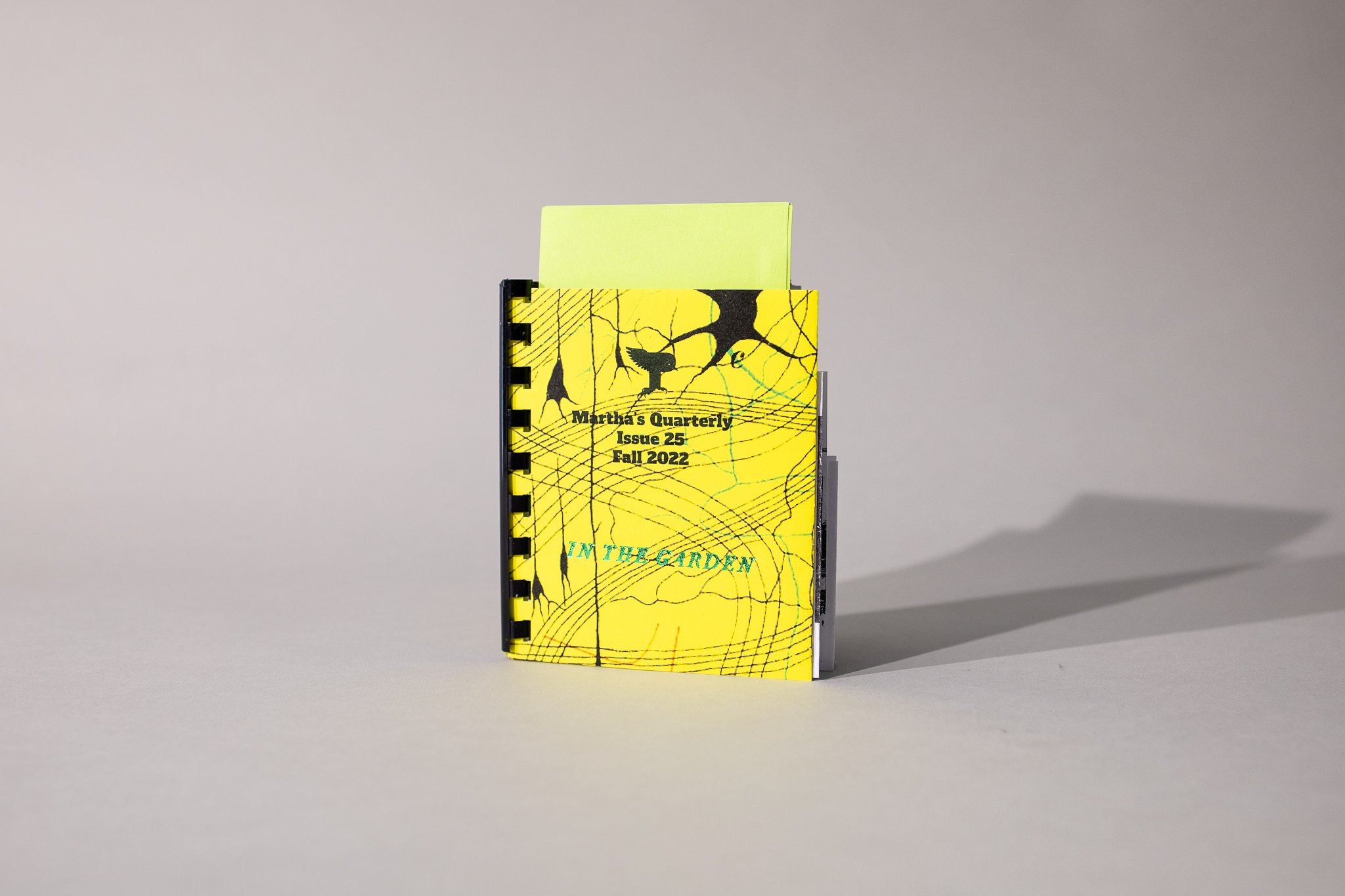
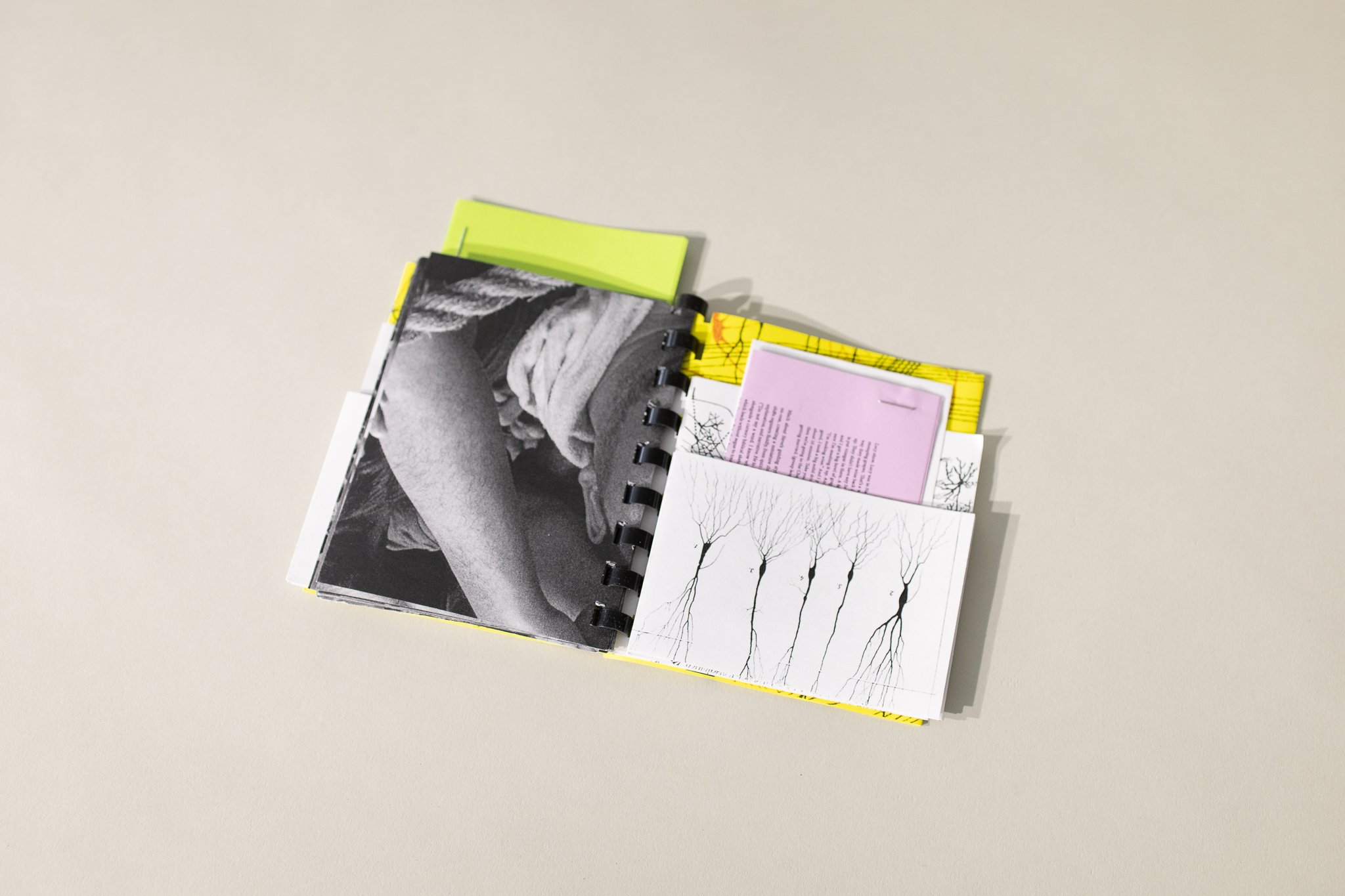
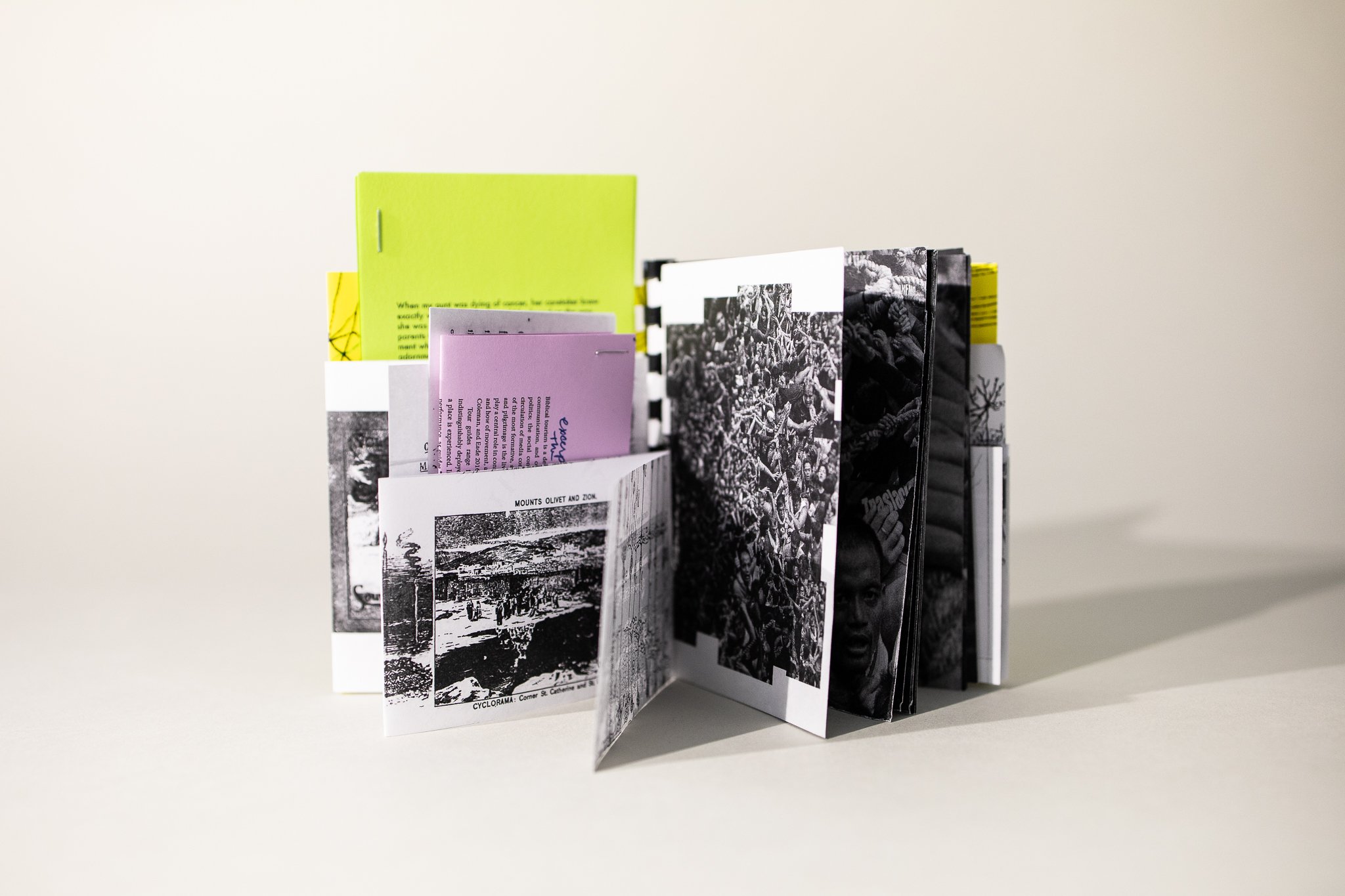
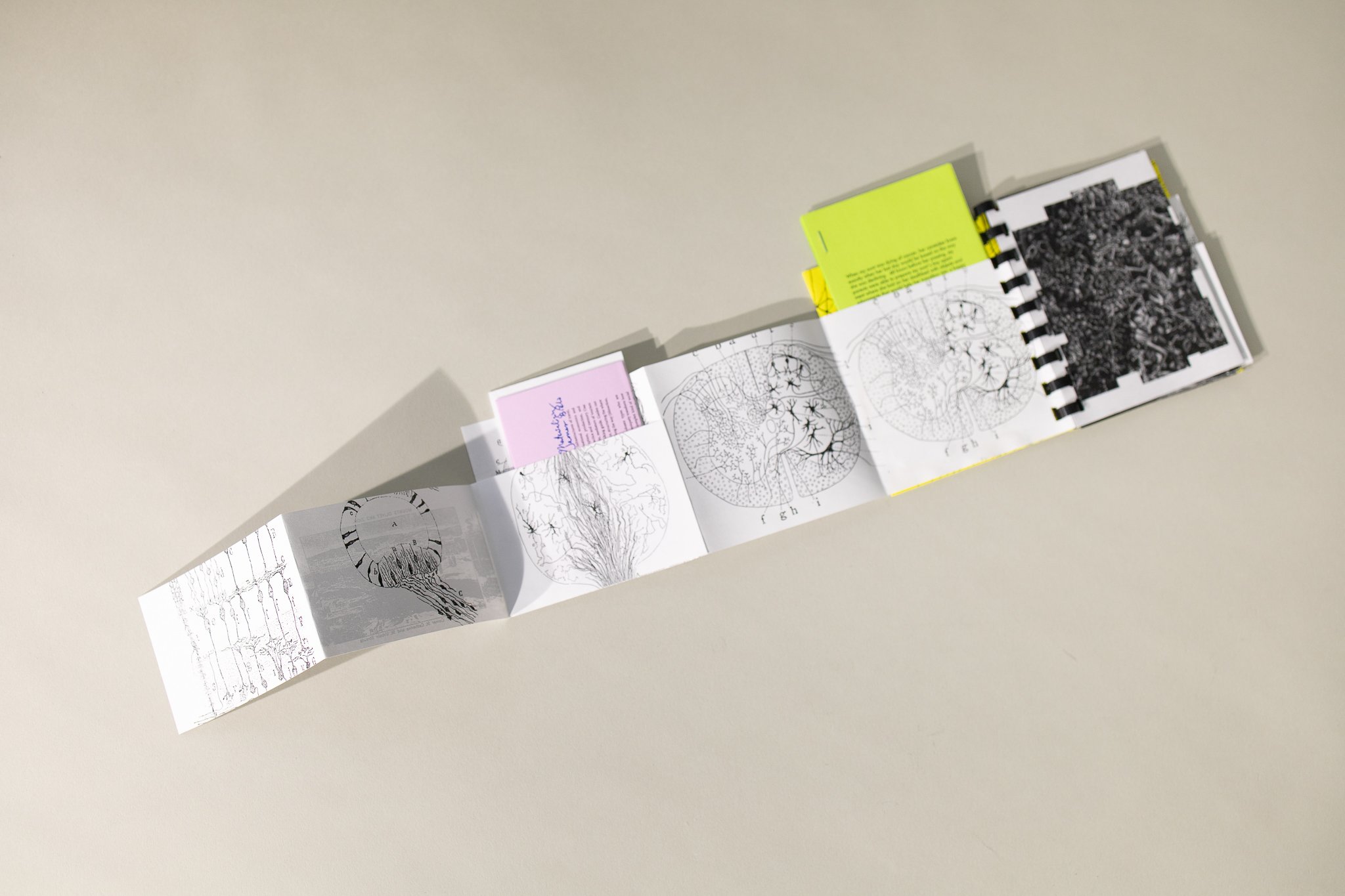
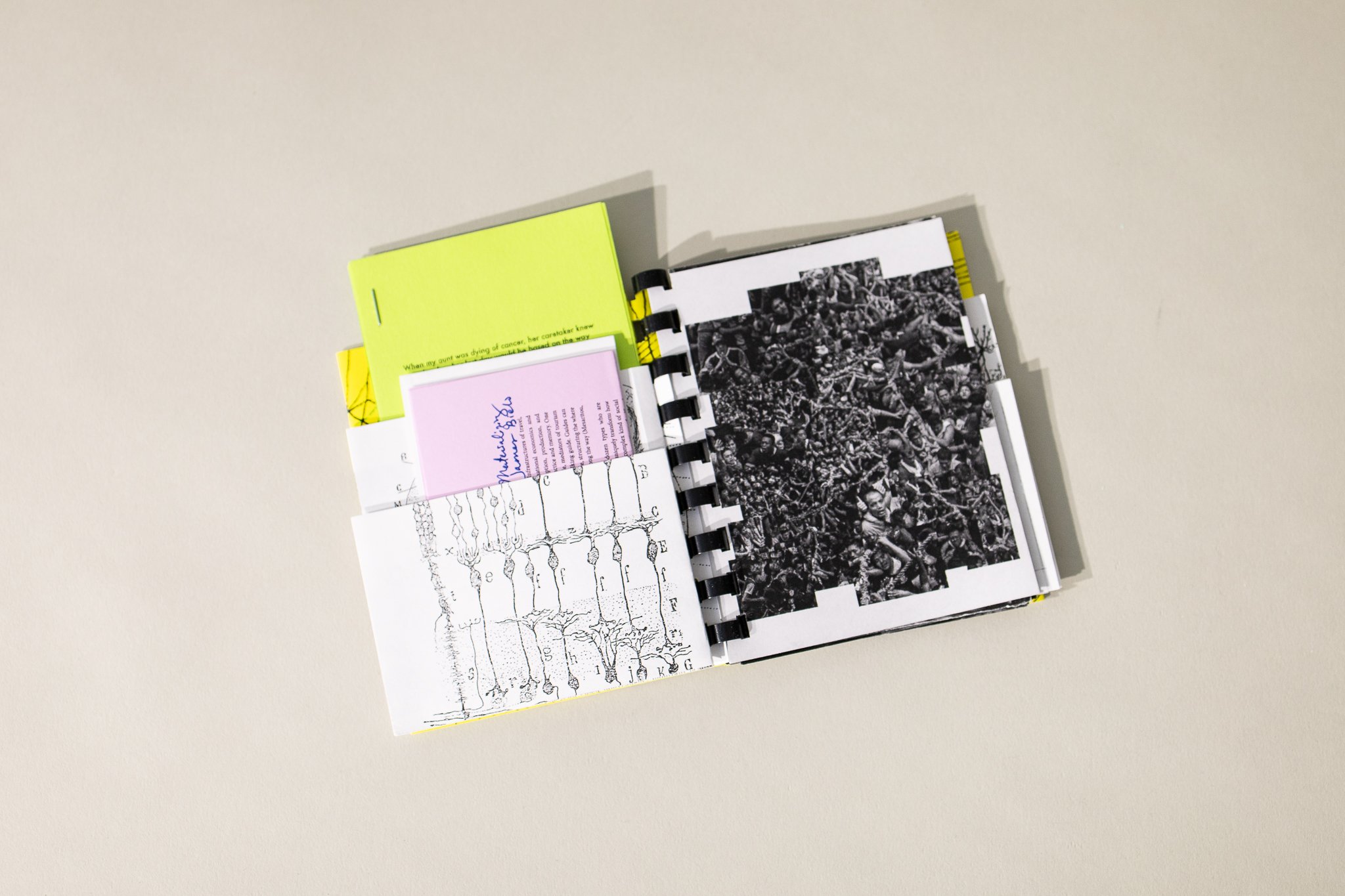
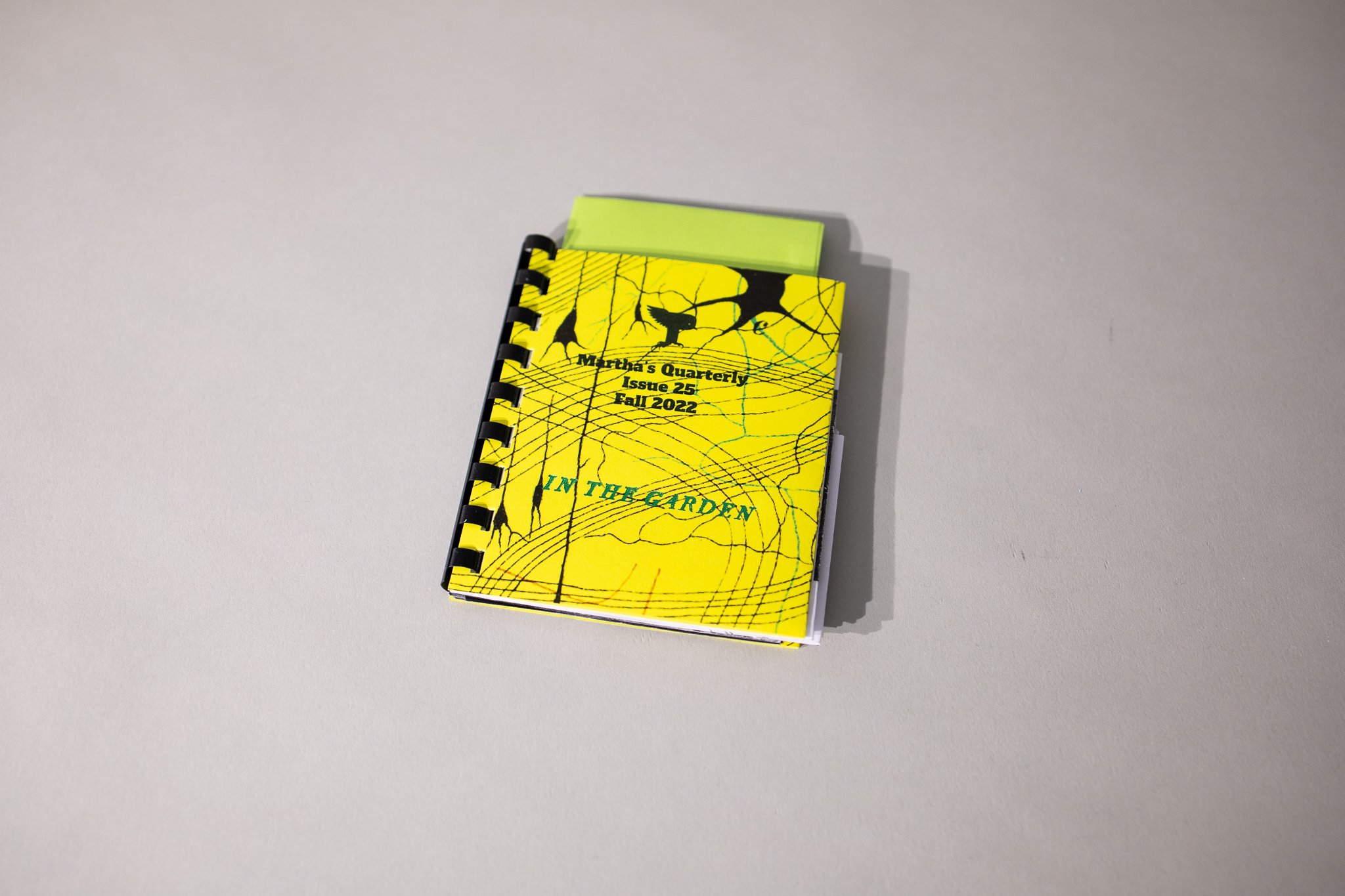
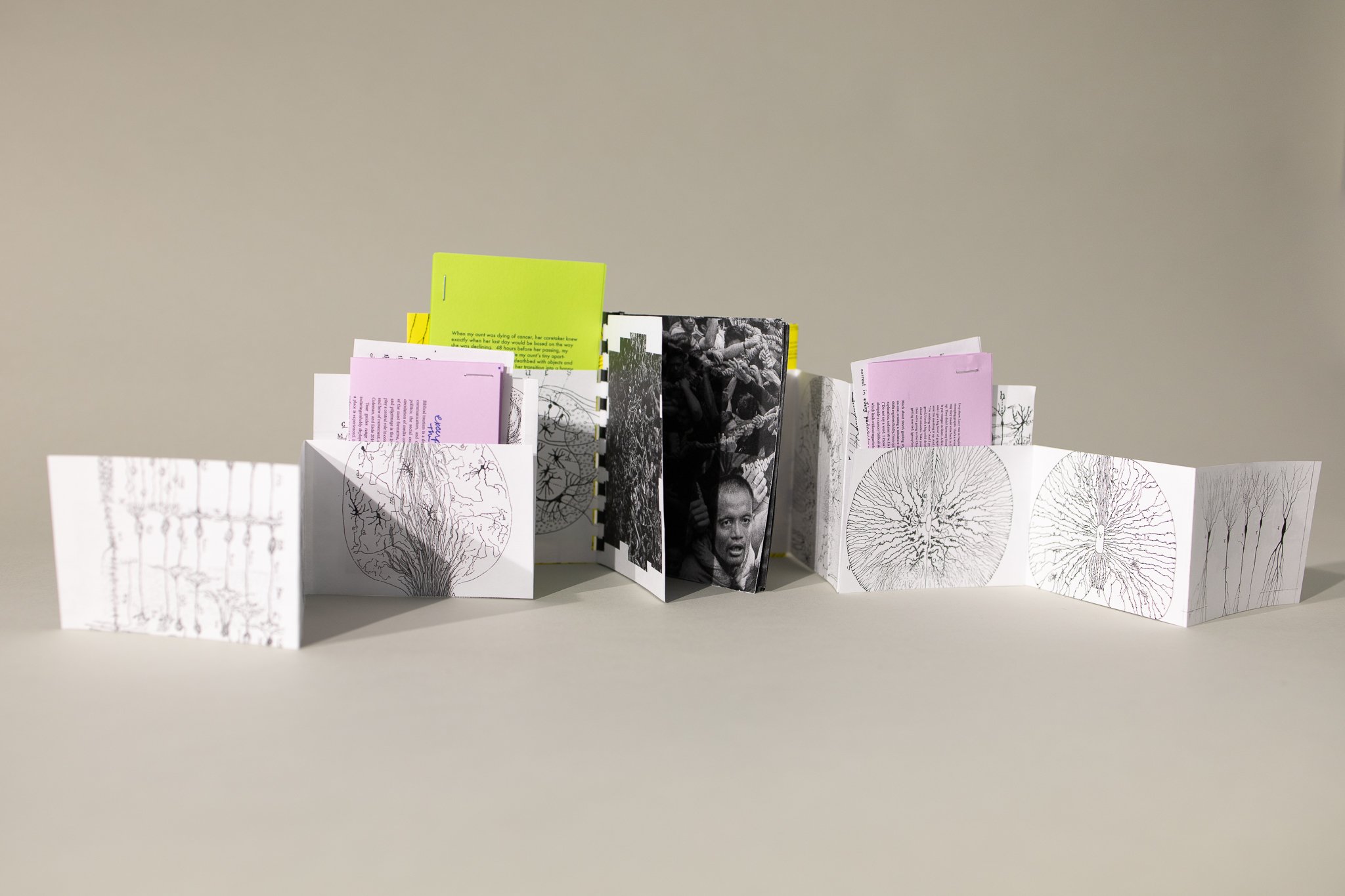
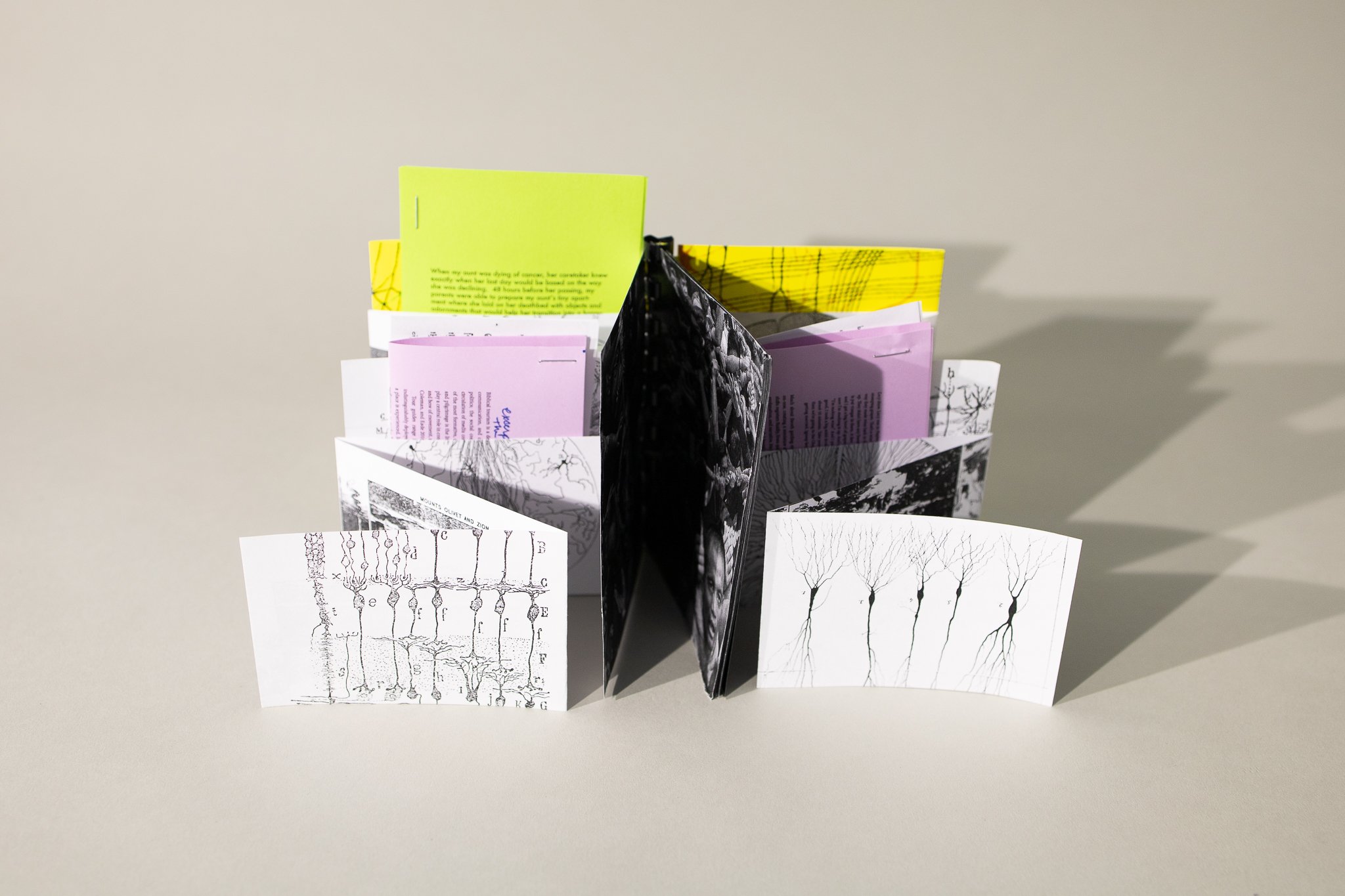
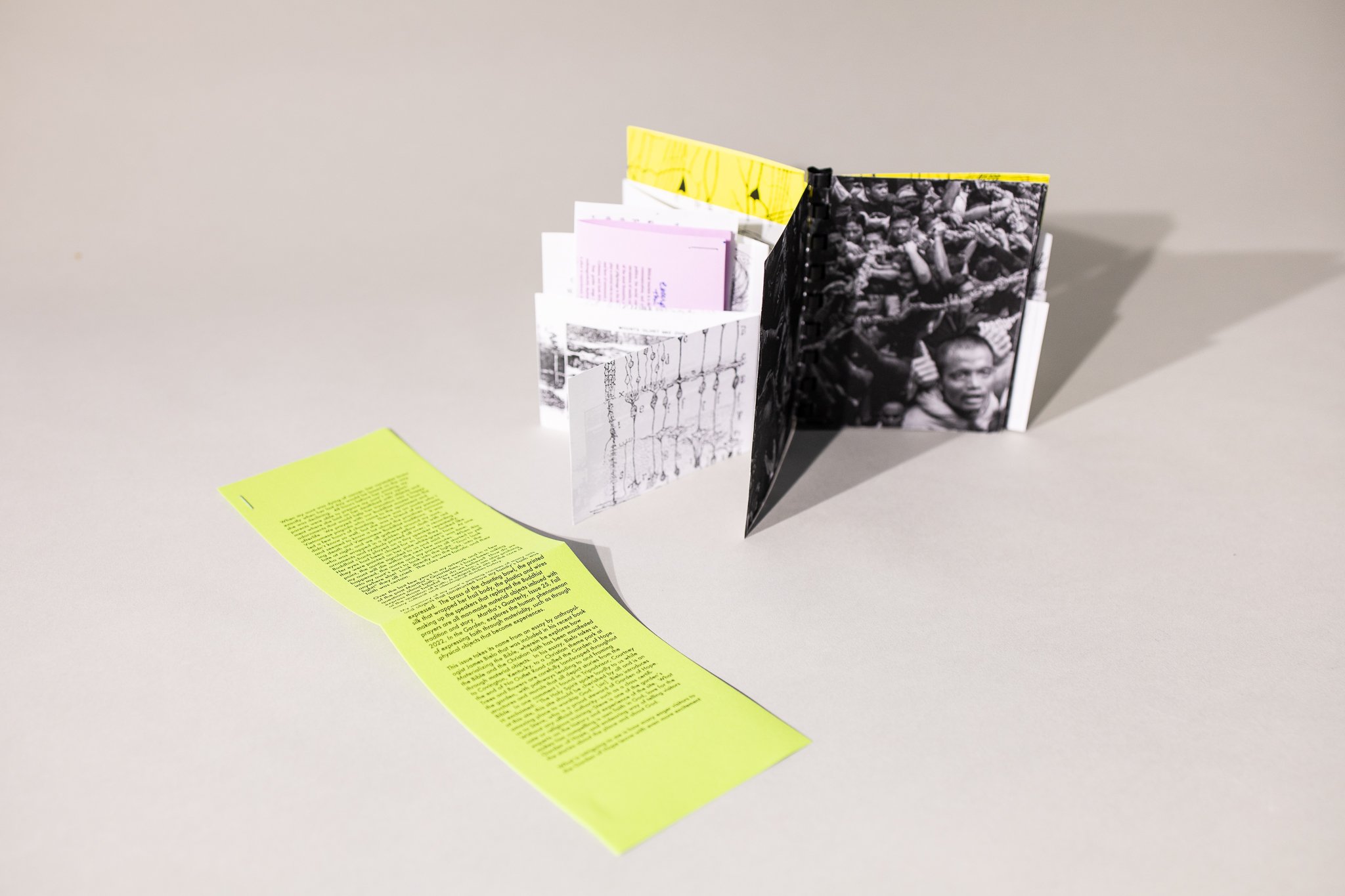
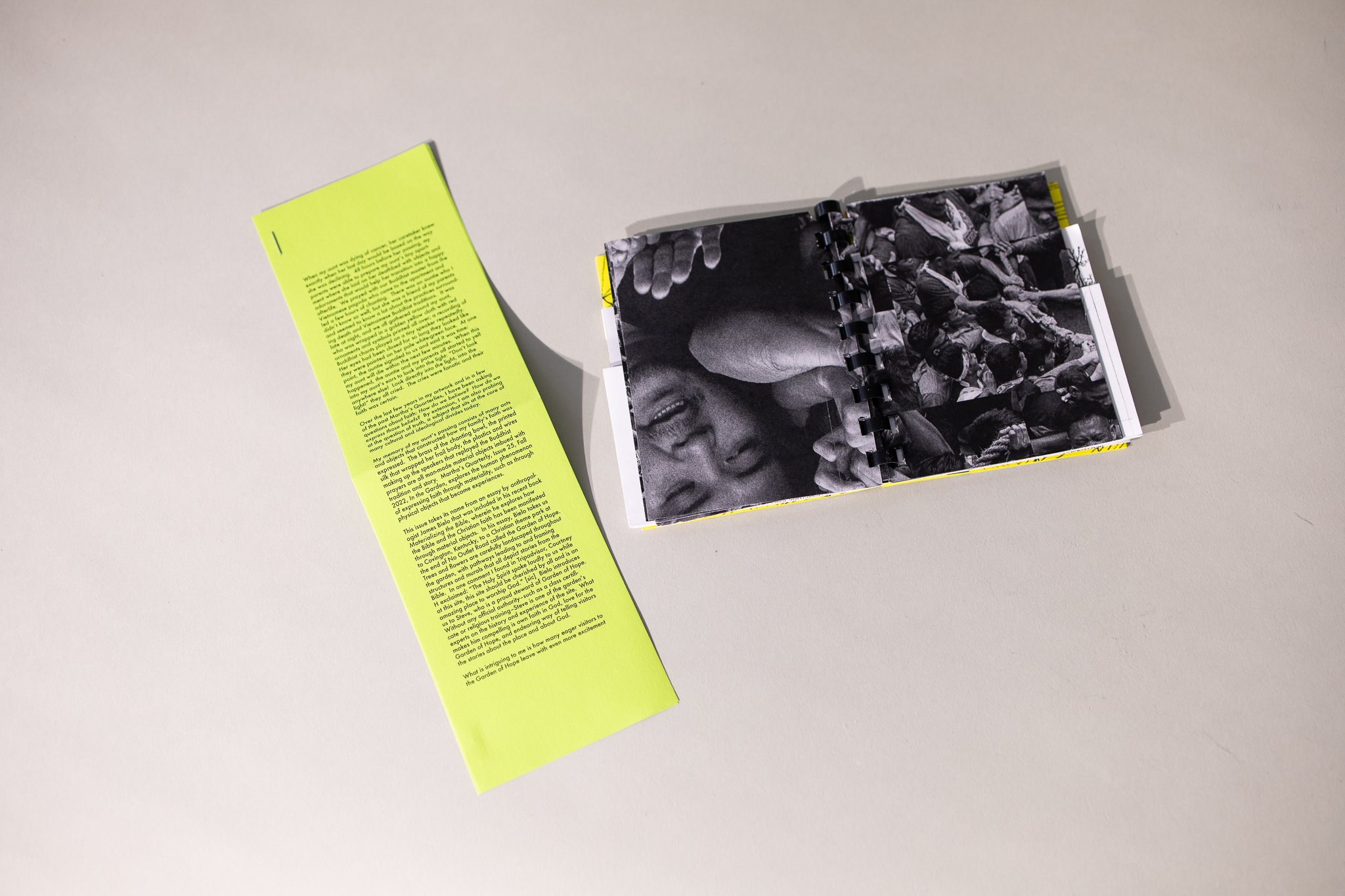
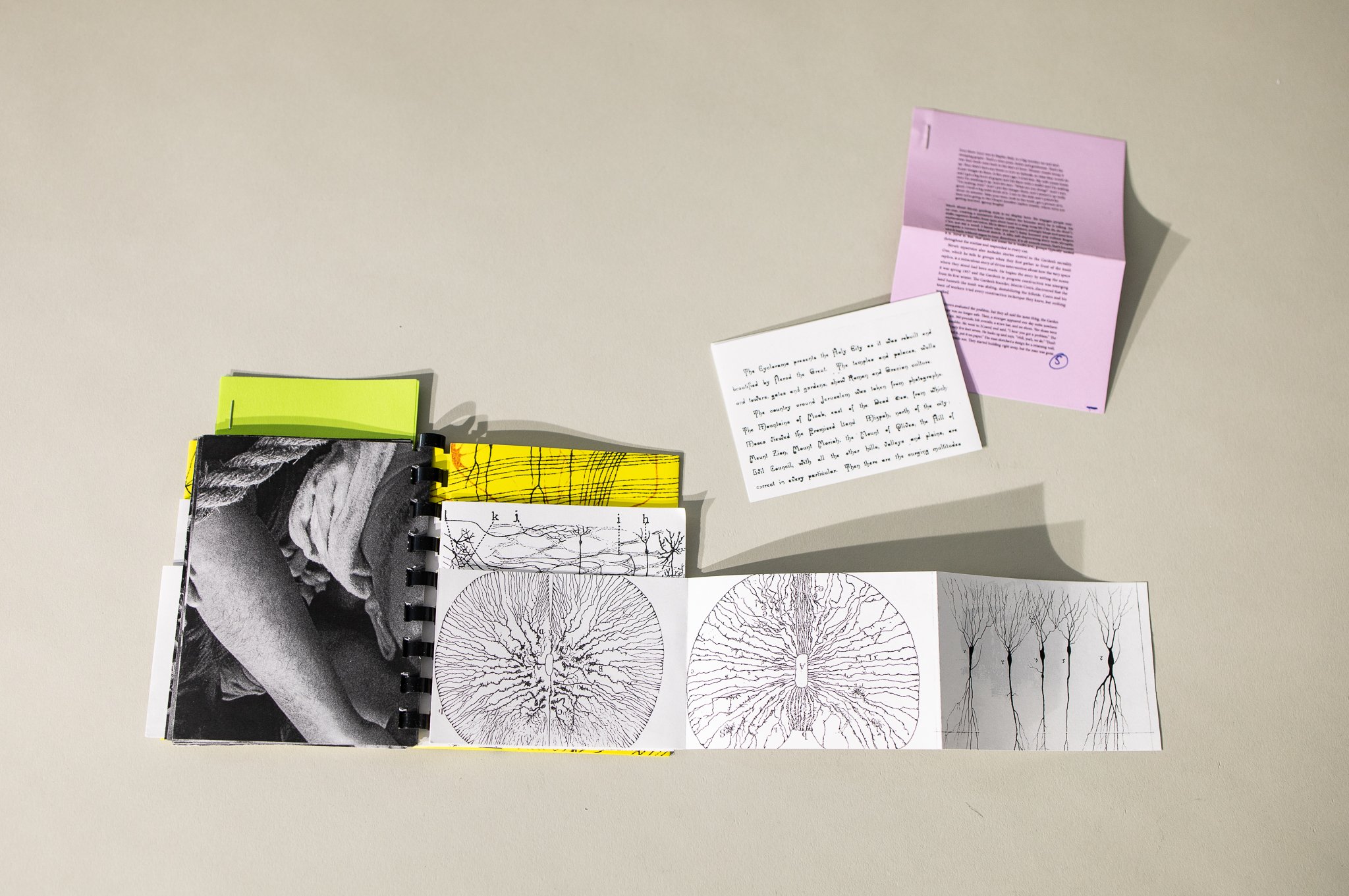
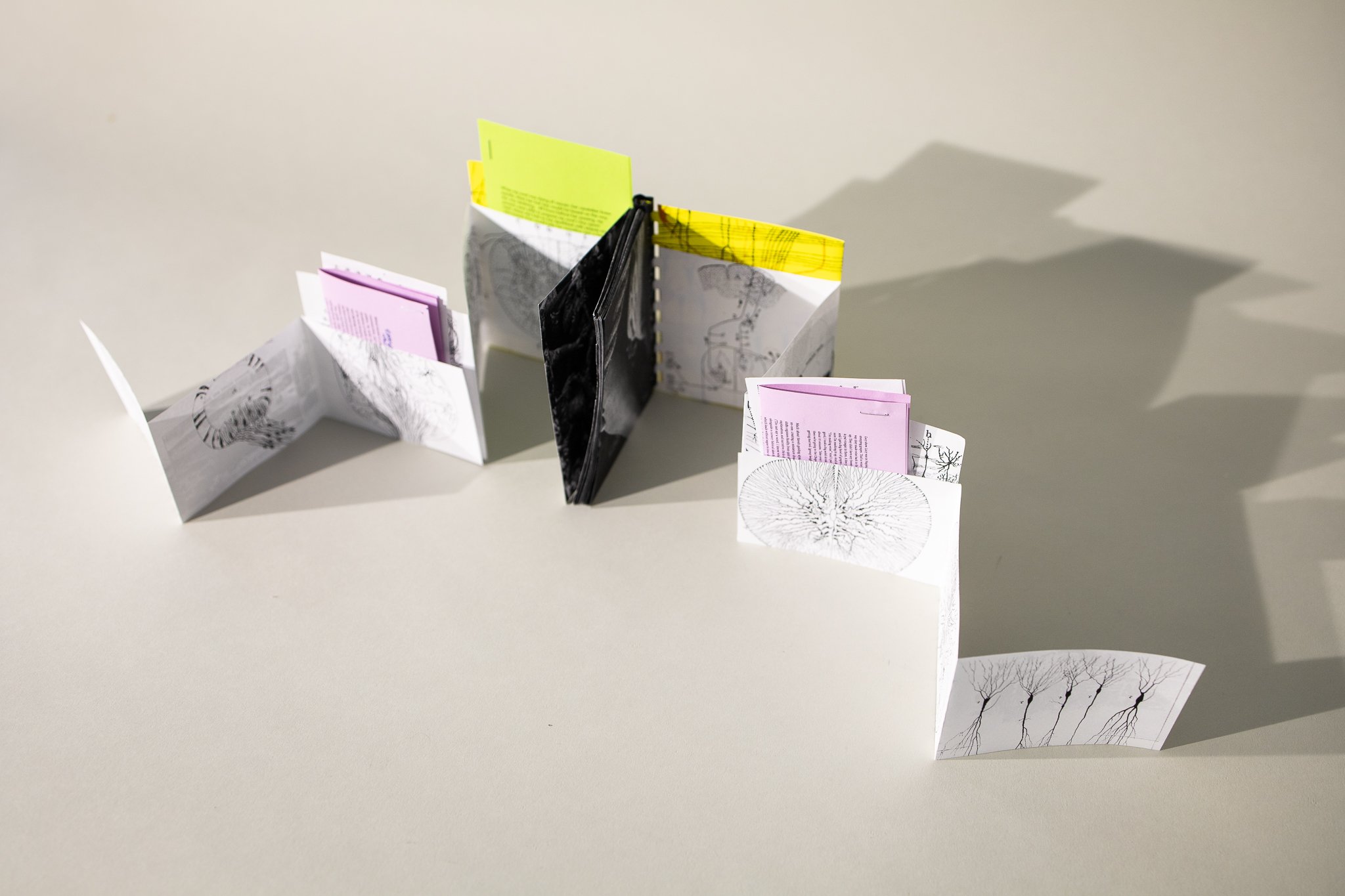

Martha's Quarterly
Issue 25
Fall 2022
In the Garden
5” x 4”
About the Contributors:
James S. Bielo is Associate Professor of Anthropology at Miami University. He is the author of five books, most recently Materializing the Bible: Scripture, Sensation, Place (Bloomsbury, 2021).
Gio Panlilio (b. 1994) is a curator, photo editor and artist based in Manila, Philippines. He is the Co-Founder of Tarzeer Pictures, a Production Agency and Photography Platform dedicated to the development of Filipino Photography, and is a founding member of Fotomoto. His work has been exhibited in galleries locally and abroad.
Santiago Rámon y Cajal was a scientist and artist responsible for the Neuron Doctrine.
When my aunt was dying of cancer, her caretaker knew exactly when her last day would be based on the way she was declining. 48 hours before her passing, my parents were able to prepare my aunt’s tiny apartment where she laid on her deathbed with objects and adornments that would help her transition into a happy afterlife. We prayed with our Buddhist master from the Vietnamese pagoda who came to the apartment and led a few hours of chanting. There was an auntie who I didn’t know so well, but she was a friend of my parents and seemed to know a lot about the practices surrounding death and Vietnamese Buddhist traditions. It was late at night, and we all gathered around my aunt, who was wrapped in a golden yellow cloth with red ornaments and symbols printed all over; a recording of Buddhist chants played on a tiny speaker repeatedly. Her eyes had been closed for so long they looked like they were painted on her pale white-green face. At one point, the auntie signaled to us and said it was time: my aunt will die within the next few minutes. When this happened, the auntie and my parents all started to yell into my aunt’s ears to look into the light: “Don’t look anywhere else! Look directly into the light, into the light!” they all cried. The cries were fanatic and their faith was certain.
Over the last few years in my artwork and in a few of the past Martha’s Quarterlies, I have been asking questions about faith: How do we believe? How do we express those beliefs? By extension, I am also probing at the question of truth, a subject that sits at the core of many cultural and ideological divides today.
My memory of my aunt’s passing consists of many acts and objects that constructed how my family’s faith was expressed. The brass of the chanting bowl, the printed silk that wrapped her frail body, the plastics and wires making up the speakers that replayed the Buddhist prayers are all man-made material objects imbued with tradition and story. Martha’s Quarterly, Issue 25, Fall 2022, In the Garden, explores the human phenomenon of expressing faith through materiality, such as through physical objects that become experiences.
This issue takes its name from an essay by anthropologist James Bielo that was included in his recent book Materializing the Bible, wherein he explores how the Bible and the Christian faith has been manifested through material objects. In his essay, Bielo takes us to Covington, Kentucky, to a Christian theme park at the end of No Outlet Road called the Garden of Hope. Trees and flowers are carefully landscaped throughout the garden, with pathways leading to and framing structures and murals that all depict stories from the Bible. In one comment I found in Tripadvisor, Courtney H exclaimed: “The Holy Spirit spoke loudly to us while at this site, this site should be cherished by all and is an amazing place to worship God.” [sic] Bielo introduces us to Steve, who is a proud steward of Garden of Hope. Without any official authority–such as a class certificate or religious training–Steve is one of the garden’s experts on the history and experience of the site. What makes him compelling is own faith in God, love for the Garden of Hope, and endearing way of telling visitors the stories about the place and about God.
What is intriguing to me is how many eager visitors to the Garden of Hope leave with even more excitement and elation for their faith. I think this has something to do with the power of storytelling coupled with its physical manifestation. Describing the tomb of Jesus, MsPearl105 also commented on Tripadvisor: “The visionary laid the foundation for this quaint but powerful replica. How can any believer stand on the hill and not marvel at God’s awesomeness. Even the Cincinnati skyline is a work of His hands for it is He who gave man the ability to create. The sky and clouds tell of His glory. The empty tomb replica resonated especially deeply since it was, after all, that Jesus followers found visited His empty tomb!”
It seems to me that sites–whether it is elaborate like the Garden of Hope, my aunt’s living room, or a modest table made into a place of worship with a wooden crucifix or a ceramic Buddha–have the capacity to activate stories. Without a site, there is no place for stories to be “lived out” in real time. Even a captivating storyteller benefits from a site as a place for folks to gather to learn of traditions and miracles. The idea of a religious site is one of the reasons I was moved by Gio Panlilio’s photograph Swell, where he has collaged aerial photographs of many worshipers swarmed around the Feast of the Black Nazarene that occurs every January in the Quiapo district in Manila, Philippines. We took Panlilio’s photograph and zoomed into many areas of it. As you flip through the center booklet, you can see details of hands and faces, many of which are stressed in some way: faces are screaming, wailing, and crying; many hands are grasping, reaching, and slipping.
Brought to the Philippines from Mexico by Spanish missionaries in the 17th century, the Black Nazarene was a lifesize statue of Jesus that survived a terrible fire, giving it its stark black color. Many believe this statue holds powers that can wash away sins and cure illness. The statue lives in a church in Quiapo and draws thousands of people on the feast day to activate the story again and again. What is peculiar to me in this photograph is the complete absence of the Black Nazarene statue that this entire festival is centered around: it is almost as if the materiality of Christianity was so powerful that it inspired a level of passion which no longer needed physical props or storytelling.
Do you have to see it to believe it? Collaged all over the wings of this Martha’s Quarterly are drawings of brains by Santiago Ramón Cajal and reproductions of paintings at the Cyclorama of Jérusalem in Montreal. This comparison aims to juxtapose narratives of faith and science through artistic manifestations. These man-made images help audiences believe in two subjects that cannot be seen: the workings of the insides of a brain and God. Regarded as the father of modern neuroscience, Santiago Ramón Cajal was a scientist and artist who discovered that the brain was made up of individual nerve cells, i.e. neurons. Using staining techniques that allowed him to see the brain in fresh detail, he observed that the brain was not made up of continuous cells, but rather that the cells were separated by gaps, which eventually became known as the Neuron Doctrine. The drawings throughout this zine are cropped reproductions of his drawing studies of the brain.
Cajal said, “The cerebral cortex is similar to a garden filled with innumerable trees, the pyramidal cells, which can multiply their branches thanks to their intelligent cultivation, send their roots deeper, and produce more exquisite flowers and fruits every day.”¹ Let’s consider the brain’s exquisite flowers and fruits as creativity. Organized religion has been greatly evolved through artistic processes, from the way language is used to write and tell sacred stories to the ways in which religious buildings are constructed and decorated.
The Cyclorama of Jérusalem is North America’s largest panorama and depicts Jerusalem during the time of Christ’s crucifixion. The souvenir pamphlet has been reproduced for this zine, with the text folded into the wings and the images spread across the front and back cover fold-outs. Based on original paintings by the German painter Her Bruno Piglhein, this reproduction wraps 360 degrees around the viewer and spans more than 16,000 square feet. It is so large and illustrative that many visitors feel that they are “reliving” Christ’s death in Jerusalem. In the pamphlet, there is a quote by a former Turkish soldier, J. Drew Gay:
“During the period of my service in the Turkish army, I had occasion to visit the Holy Land in a professional capacity, and having just seen your Cyclorama of Jerusalem on the day of the Crucifixion, am able to testify to the astonishing vraisemblance of the illustration. Eastern scenes are usually depicted in so grotesque a manner as to draw the derision of all Oriental travellers. But the people, the caravans, the buildings and the general tone of both buildings, atmosphere and costumes in your Cyclorama are so true that the spectacle is both admirable and instructive.”
I think that Colonel Gay’s felt truth is what acutally sits at the core of all the elements in this issue of Martha’s Quarterly. From my aunt’s deathbed, to the Garden of Hope, to the Feast of the Black Nazarene, to the brain drawings, and Cyclorama, truth is felt, largely because of something that was physically and artistically created by man. As a result of materiality, particular narratives of faith and science are able to evolve, often ultimately being able to live on without the material manifestation that made the story so true in the beginning.
–Tammy Nguyen
Editor-in-Chief
1. Cajal, Santiago Ramón y, et al. The Beautiful Brain: The Drawings of Santiago Ramón y Cajal. Harry N. Abrams, 2017. 61.
Martha’s Quarterly, Issue 25, Fall 2022, In the Garden is a comb-bound booklet with fold-outs and inserts. Most of the content was digitally printed with the exception of the title, which was hot stamped in hand-set type. All of the papers used were 20 lb text weight in yellow, green, purple, and white colors. The works of James Bieolo and Gio Panlilio were adapted with their permission. The drawings by Santiago Rámon y Cajal and reproductions from Cyclorama of Jerusalem are part of the Public Domain. This issue was designed and edited by Tammy Nguyen. Production was led by Holly Greene with assistance from Téa Chai Beer, Clara Burger, Lucy Hoffman, Mely Kornfeld, and Robie Scola.
Published October 2022, edition of 200.
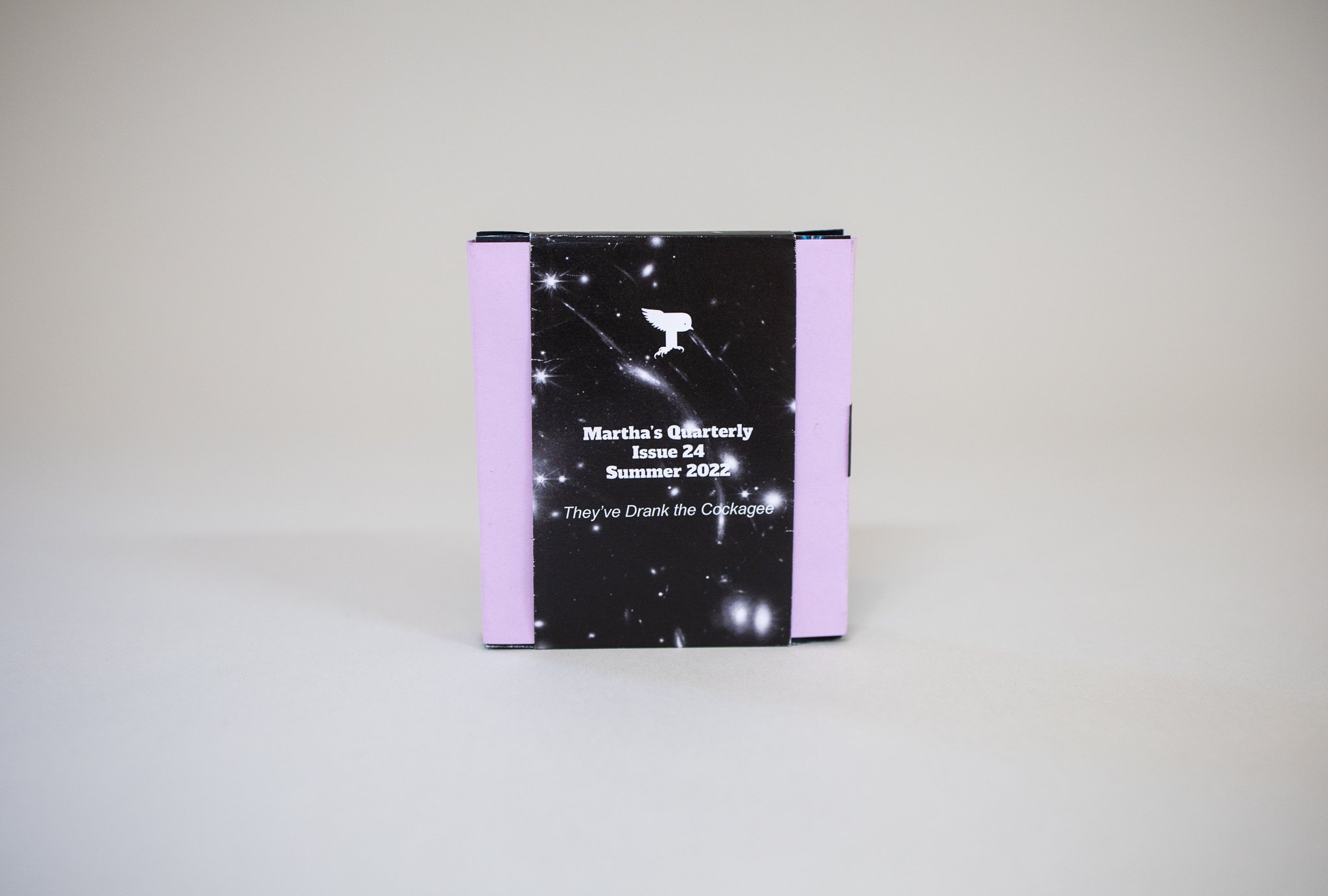
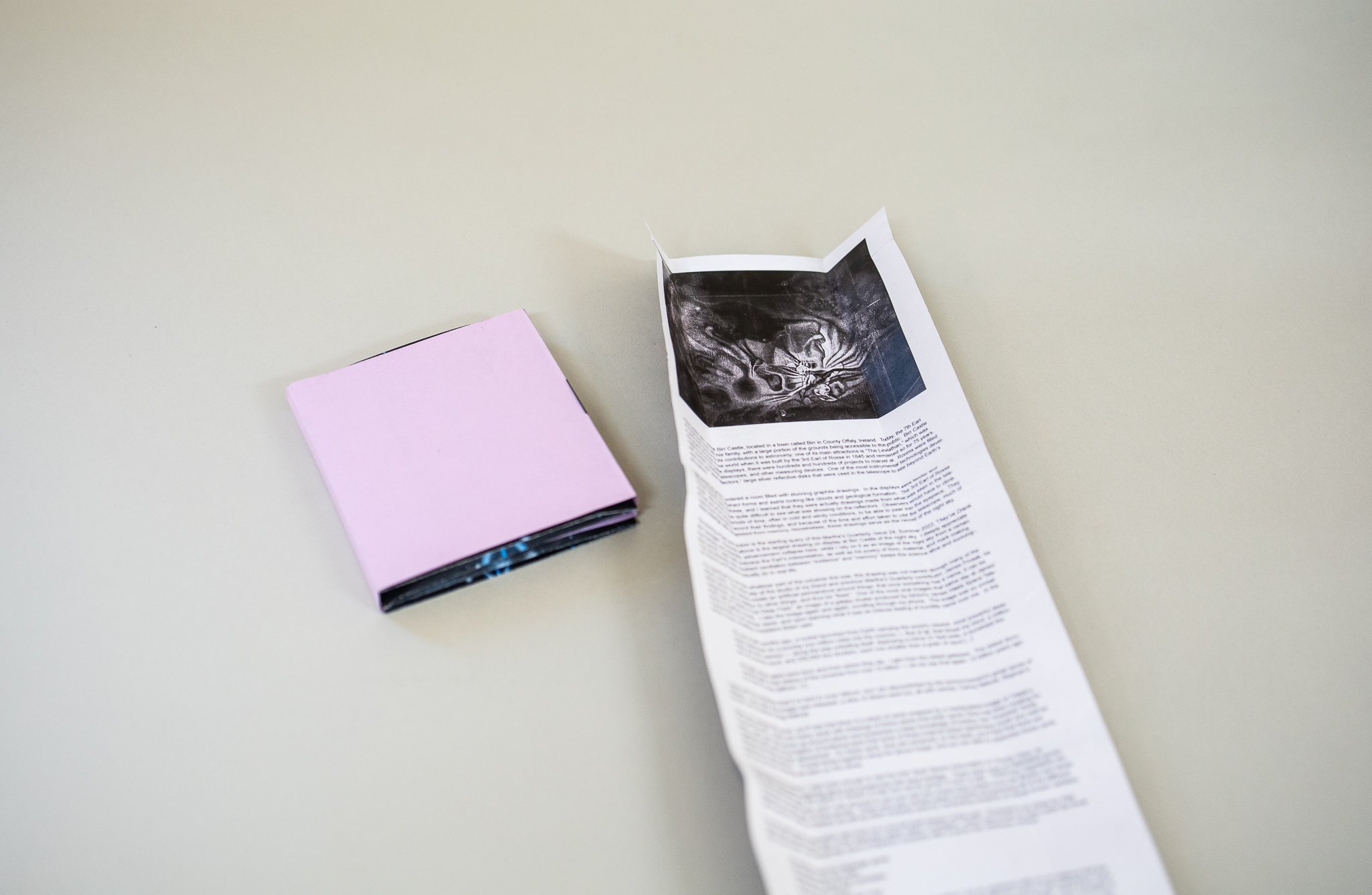
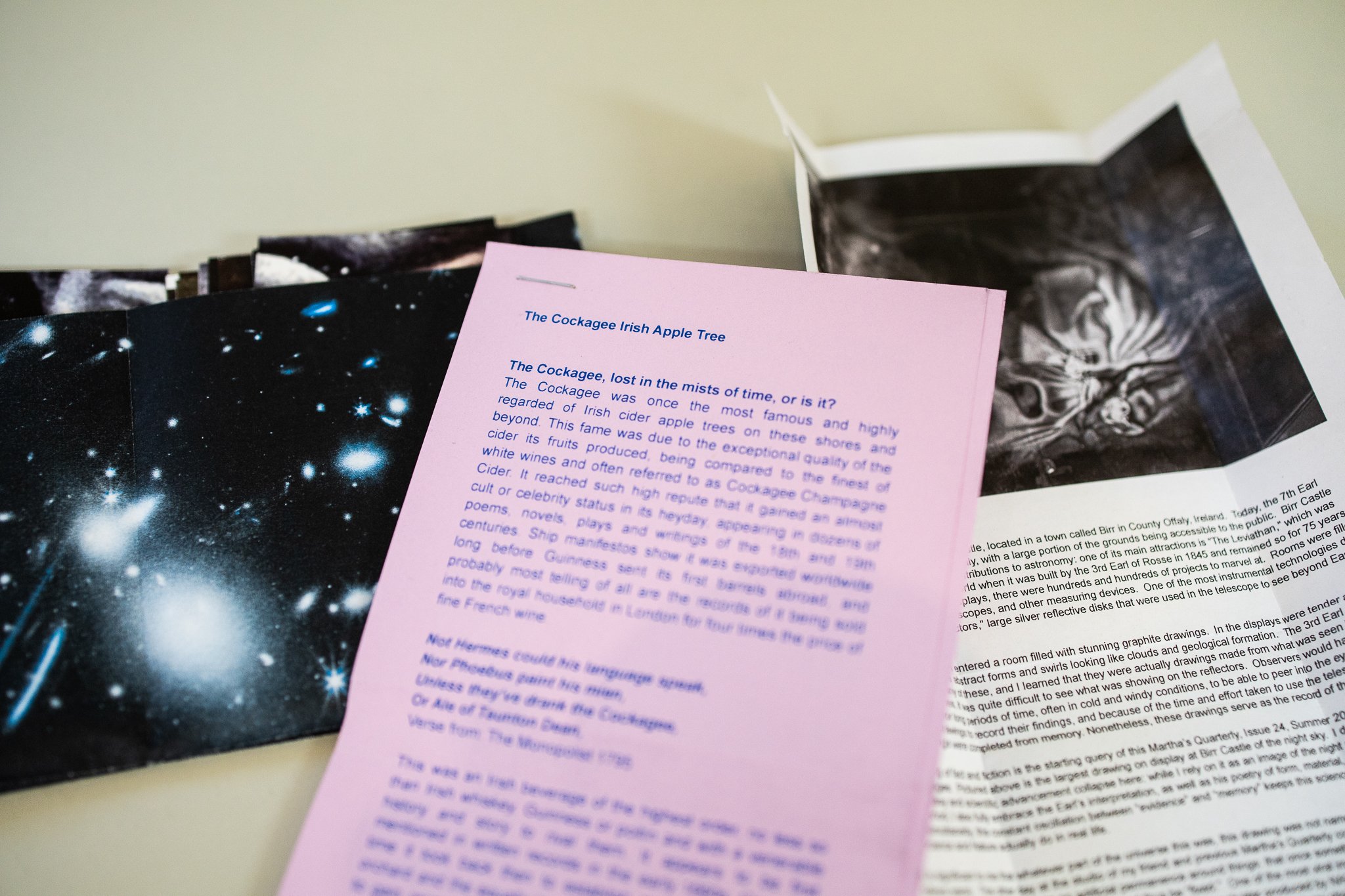
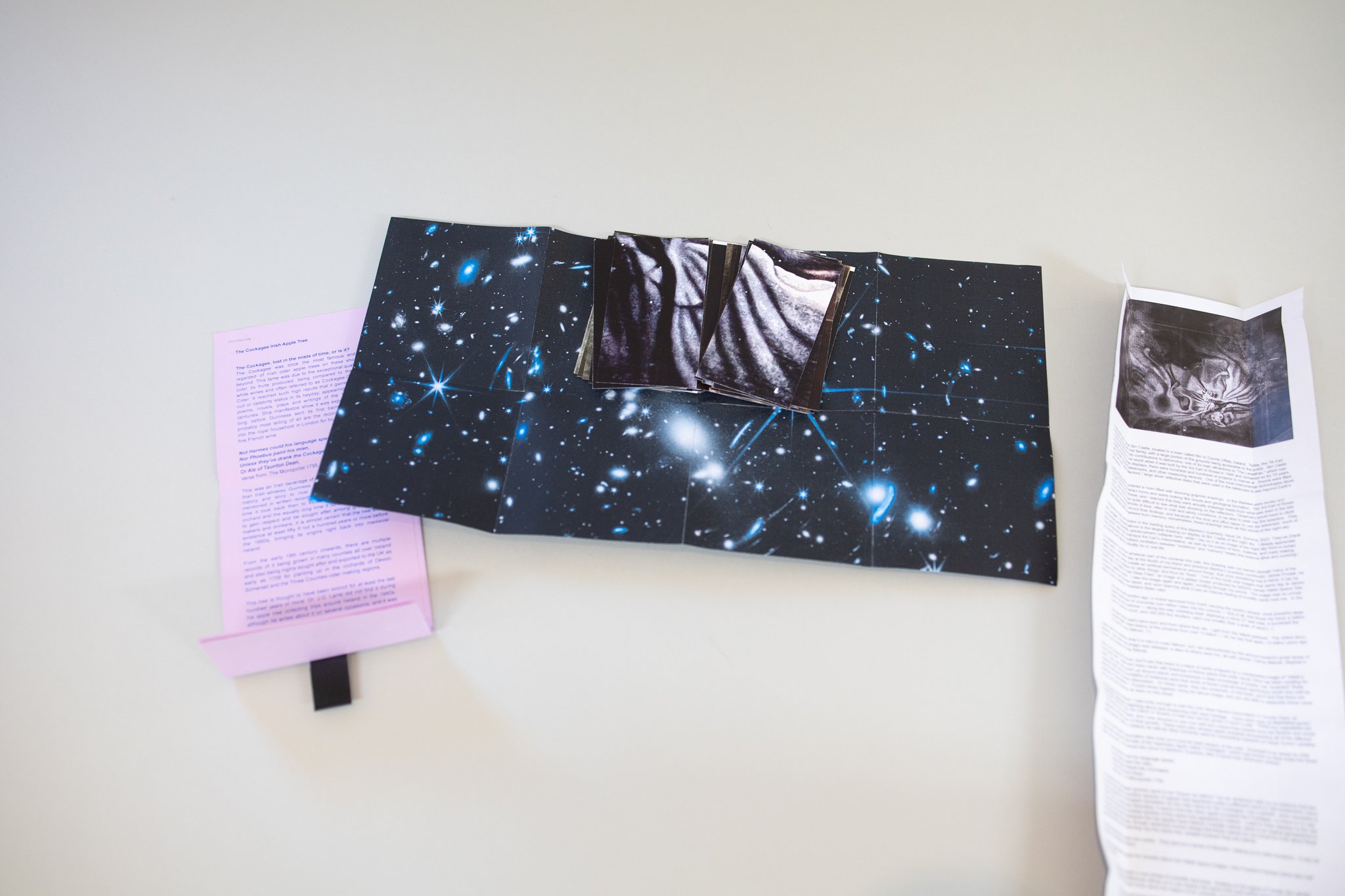

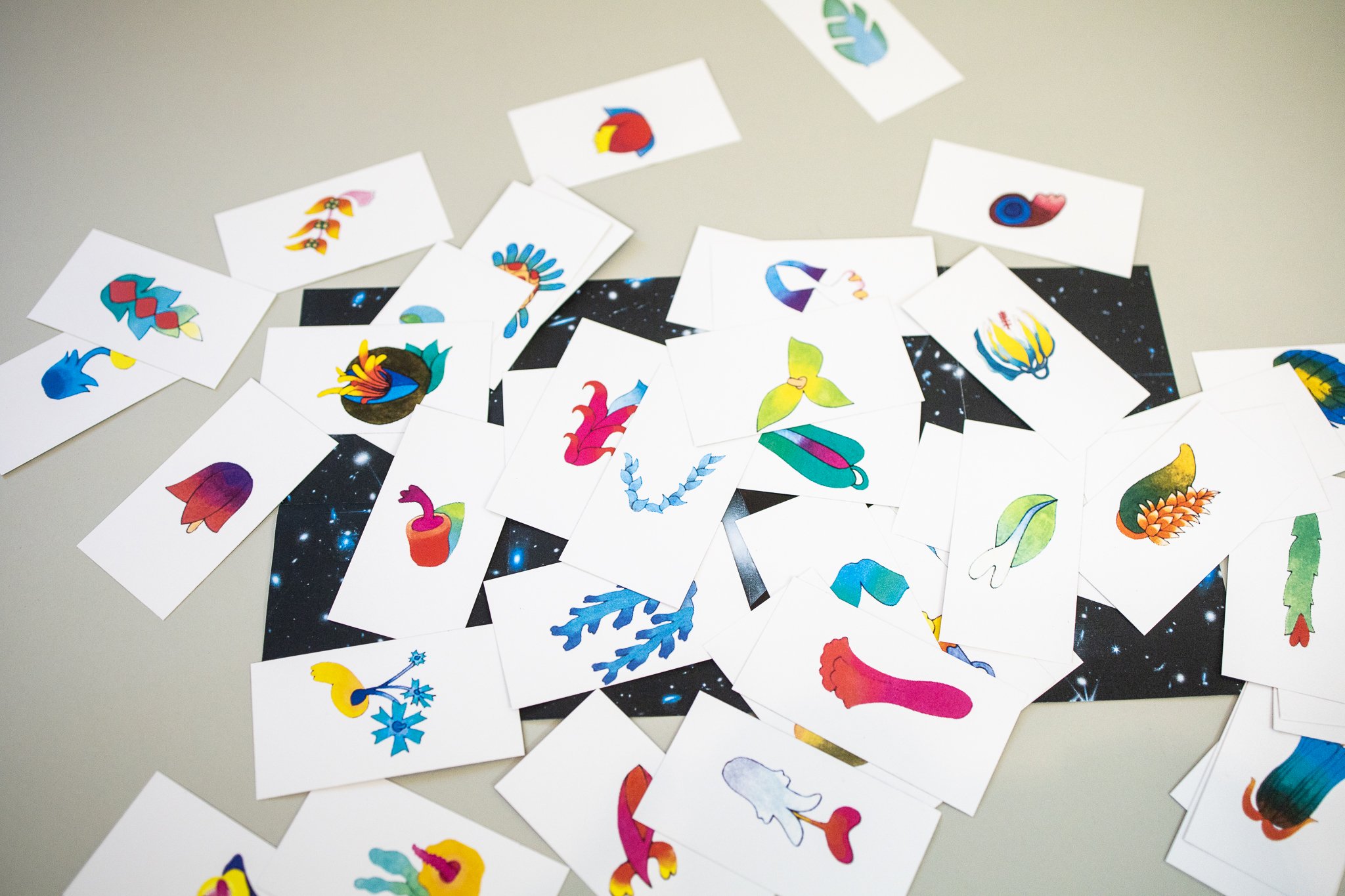
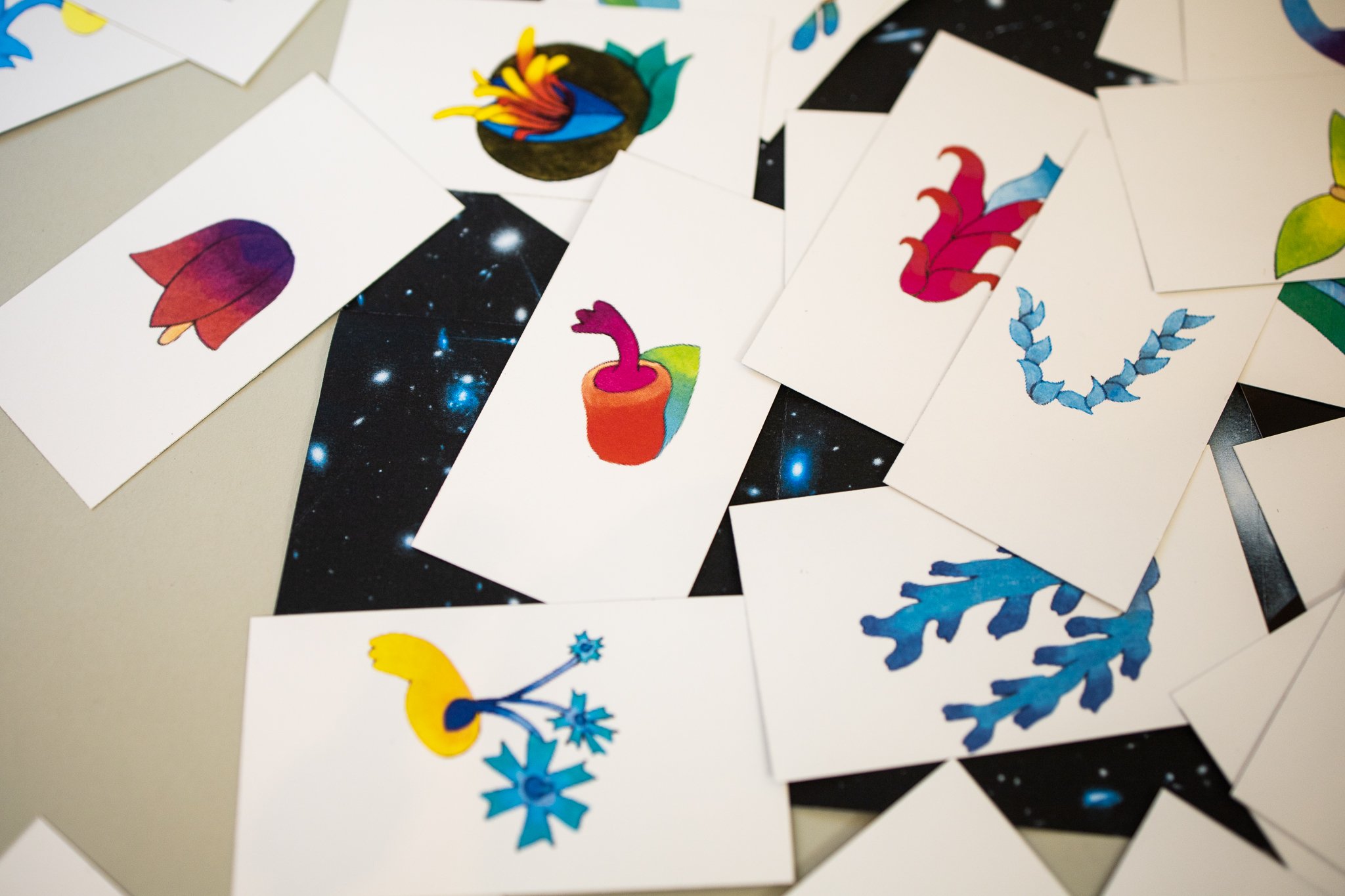

Martha's Quarterly
Issue 24
Summer 2022
They’ve Drank the Cockagee
4.25” x 4”
About the contributors:
Jacob Cline grew up in Cocoa Beach, Floria and drew inspiration from surfing and his parents’ garden, exploring the connections between fantasy and reality. Jacob resides in Brooklyn, NY and fishes in the East river every weekend.
Mark Jenkinson produces premium craft cider on his historic Farm just outside Slane in County Meath using apples from his own orchards.
A few weeks ago I visited Birr Castle, located in a town called Birr in County Offaly, Ireland. Today, the 7th Earl of Rosse lives there with his family, with a large portion of the grounds being accessible to the public. Birr Castle is particularly famous for its contributions to astronomy: one of its main attractions is “The Leviathan,” which was the largest telescope in the world when it was built by the 3rd Earl of Rosse in 1845 and remained so for 75 years. Walking around the castle displays, there were hundreds and hundreds of projects to marvel at. Rooms were filled with sundials, handheld telescopes, and other measuring devices. One of the most instrumental technologies developed here was “great reflectors,” large silver reflective disks that were used in the telescope to see beyond Earth’s atmosphere.
I was awestruck when I entered a room filled with stunning graphite drawings. In the displays were tender and tedious drawings, the abstract forms and swirls looking like clouds and geological formation. The 3rd Earl of Rosse himself created many of these, and I learned that they were actually drawings made from what was seen in the telescope. Many times, it was quite difficult to see what was showing on the reflectors. Observers would have to climb 60 feet and sit for long periods of time, often in cold and windy conditions, to be able to peer into the eyepiece. They made these drawings to record their findings, and because of the time and effort taken to use the telescope, much of these drawings were completed from memory. Nonetheless, these drawings serve as the record of the night sky.
The blurring of fact and fiction is the starting query of this Martha’s Quarterly, Issue 24, Summer 2022: They’ve Drank the Cockagee. Pictured above is the largest drawing on display at Birr Castle of the night sky. I deeply appreciate how fantasy and scientific advancement collapse here: while I rely on it as an image of the night sky from a certain time period, I also fully embrace the Earl’s interpretation, as well as his poetry of form, material, and mark making. This simultaneity, this constant oscillation between “evidence” and “memory” keeps this science alive and evolving–as science and Nature actually do in real life.
It is significant to me that whatever part of the universe this was, this drawing was not named (though many of the others were). The other day at the studio of my friend and previous Martha’s Quarterly contributor, James Prosek, he talked about how names create an artificial permanence around things: that once something has a name, it can be categorized, put in relation to other things, and thus be “fixed.” One of the most viral images that same day at James’ studio was of “Webb’s First Deep Field,” an image of a galaxy cluster produced by NASA’s James Webb Space Telescope of a galaxy cluster. I saw the image again and again, scrolling through my phone. The image was so unreal: it looked like a cool screen saver, and upon learning what it was an intense feeling of humility came over me. In the White House unveiling, President Biden said:
Six and a half months ago, a rocket launched from Earth carrying the world’s newest, most powerful deep-space telescope on a journey one million miles into the cosmos — first of all, that blows my mind: a million miles into the cosmos — along the way unfolding itself, deploying a mirror 21 feet wide, a sunshield the size of a tennis court, and 250,000 tiny shutters, each one smaller than a grain of sand [...]
But light where stars were born and from where they die. Light from the oldest galaxies. The oldest documented light in the history of the universe from over 13 billion — let me say that again: 13 billion years ago. It’s hard to even fathom. (1)
I agree with the president that it is hard to even fathom, but I am discomforted by the announcement's great sense of certainty. Soon after that image was released, a slew of others were too, all with names: Carina Nebula, Stephan’s Quintet, and Southern Ring Nebula.
When you unwrap this issue, you’ll see that there is a stack of cards wrapped by a manipulated image of “Webb’s First Deep Field.” Inside are many cards with drawings of fictive plants that artist Jacob Cline has been creating for years. Cline, who has grown up around plants and possesses a deep knowledge of botany, has “invented” these organisms with such a foundation of botanical parts that some of these tropical-esque specimens could very well be species that have not been discovered. On these cards, they are unnamed; on the back, you’ll find that there are swatches of “atmosphere.” Puzzle these together using the above image, and you are able to assemble these cards into the 3rd Earl’s drawing as seen on this sheet.
On this same trip to Ireland, I was lucky enough to visit the Irish Seed Savers Association in County Clare, an organization dedicated to learning about and preserving Irish seed heritage. There were rows of vegetables grown for seed–I had never seen the plants or flowers of kale and carrots grown in such a way. These two vegetables are so common in my world view, and I was stunned to see how wild and unique they looked once the flowers and seeds appeared in the later cycle of their growth. There were also verdant apple orchards documenting all of the different native species of apples in Ireland, as well as other orchards used for conducting research on lesser known varieties.
The Irish Seed Savers Association also puts out a journal each season of the year. Enclosed is an essay by cider maker Mark Jenkinson that tells of the legendary apple called “Cockagee,” which was known to have made the finest ciders ever known. We named this issue of Martha’s Quarterly after a quote that Jenkinson shared:
Not Hermes could his language speak,
Nor Phoebus paint his mien,
Unless they’ve drank the Cockagee,
Or Ale of Taunton Dean,
Verse from: The Monopolist 1795
For decades, the Cockagee species came to be “known as extinct,” but as Jenkinson tells us, he believes that this is not the case based on another species of apples that appeared under a different name in Gloucestershire–Hens’ Turds, as opposed to the English translation for the Irish name for the Cockagee, Cac a ghéidh, which translates to Goose Turds. As Jenksinon describes, it seems that this other apple is indeed the Cockagee, but there is no way to prove this through DNA unless another of the same tree appeared in Ireland. I want to draw attention to the use of names in this context: because the two apples have distinct, if similar names, there is an implied permanence to their being different species, though Jenkinson knows deeply that these names do not reveal the truth about these species–that the truth is that they are the same tree, despite however they are named.
All of this being said, names are useful. They give us a sense of direction, helping us to make decisions. If only we were not so beholden to them.
Before President Biden gave his remarks about the Webb Space images, Vice President Kamala Harris also had some remarks:
And now we enter a new phase of scientific discovery. Building on the legacy of Hubble, the James Webb Space Telescope allows us to see deeper into space than ever before and in stunning clarity. It will enhance what we know about the origins of our universe, our solar system, and possibly life itself. (1)
In the background of all of this today is the extraordinary tension in the United States with the recent overturn of Roe v Wade by the Supreme Court. Whatever side you land on, I think that naming is essential to the Court’s decision and the people’s fears, celebration, anxiety, and hopes. What does Vice President Harris mean here by “life”– what exactly do we know with such certainty? How do we name life? And do we negotiate the definition of things in relationship to the truth in which we believe?
Tammy Nguyen
Editor-in-Chief
1. https://www.whitehouse.gov/briefing-room/statements-releases/2022/07/11/remarks-by-president-biden-and-vice-president-harris-in-a-briefing-to-preview-the-first-images-from-the-james-webb-space-telescope/
Martha’s Quarterly, Issue 24, Summer 2024: They’ve Drank the Cockagee was created using xerox on various text weight and cardstock papers. Arial font was used throughout in different sizes and styles. This issue was designed and edited by Tammy Nguyen and produced by Téa Chai Beer, Holly Greene, and Maia Panlilio. It was an edition of 200.
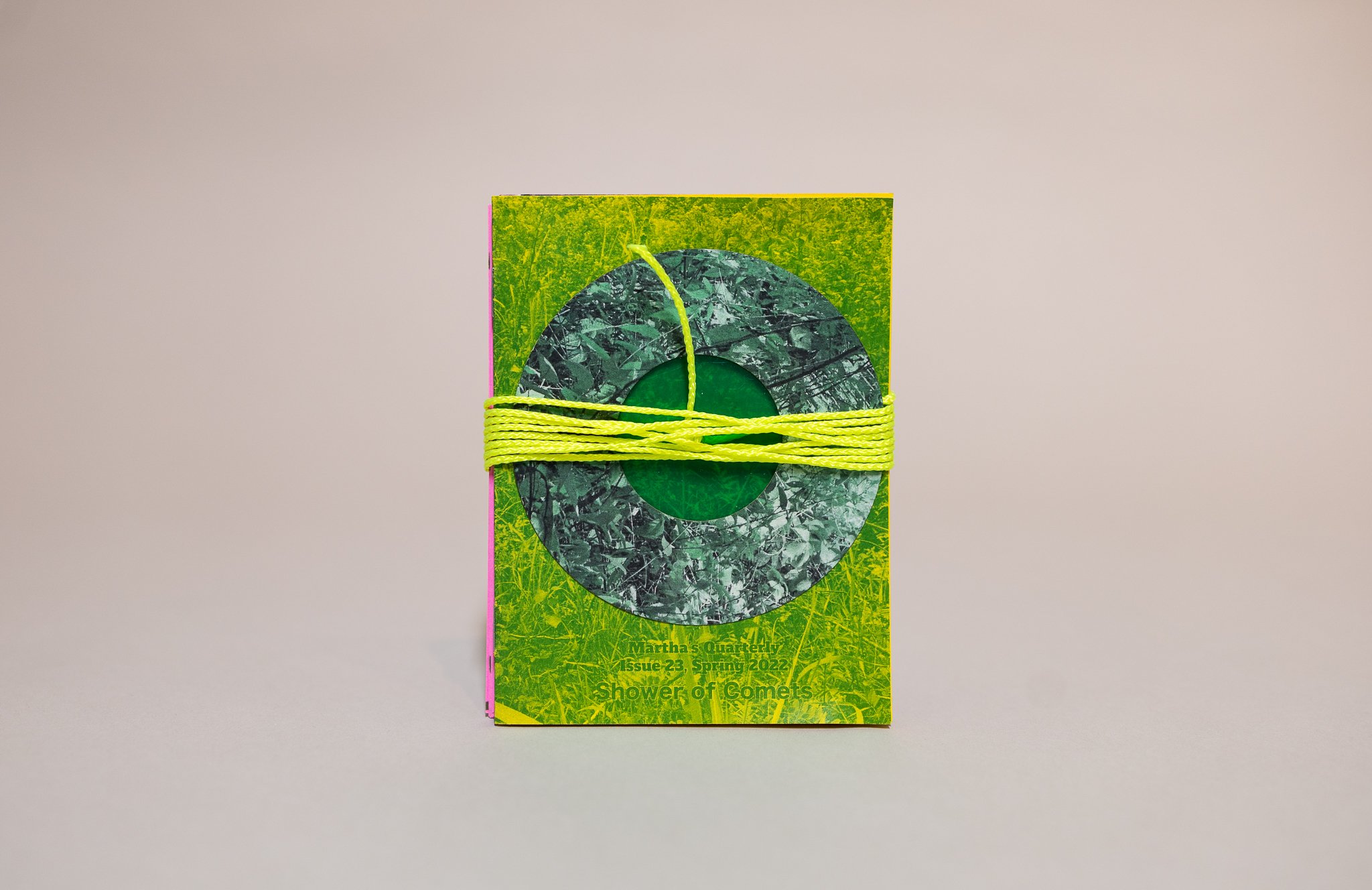
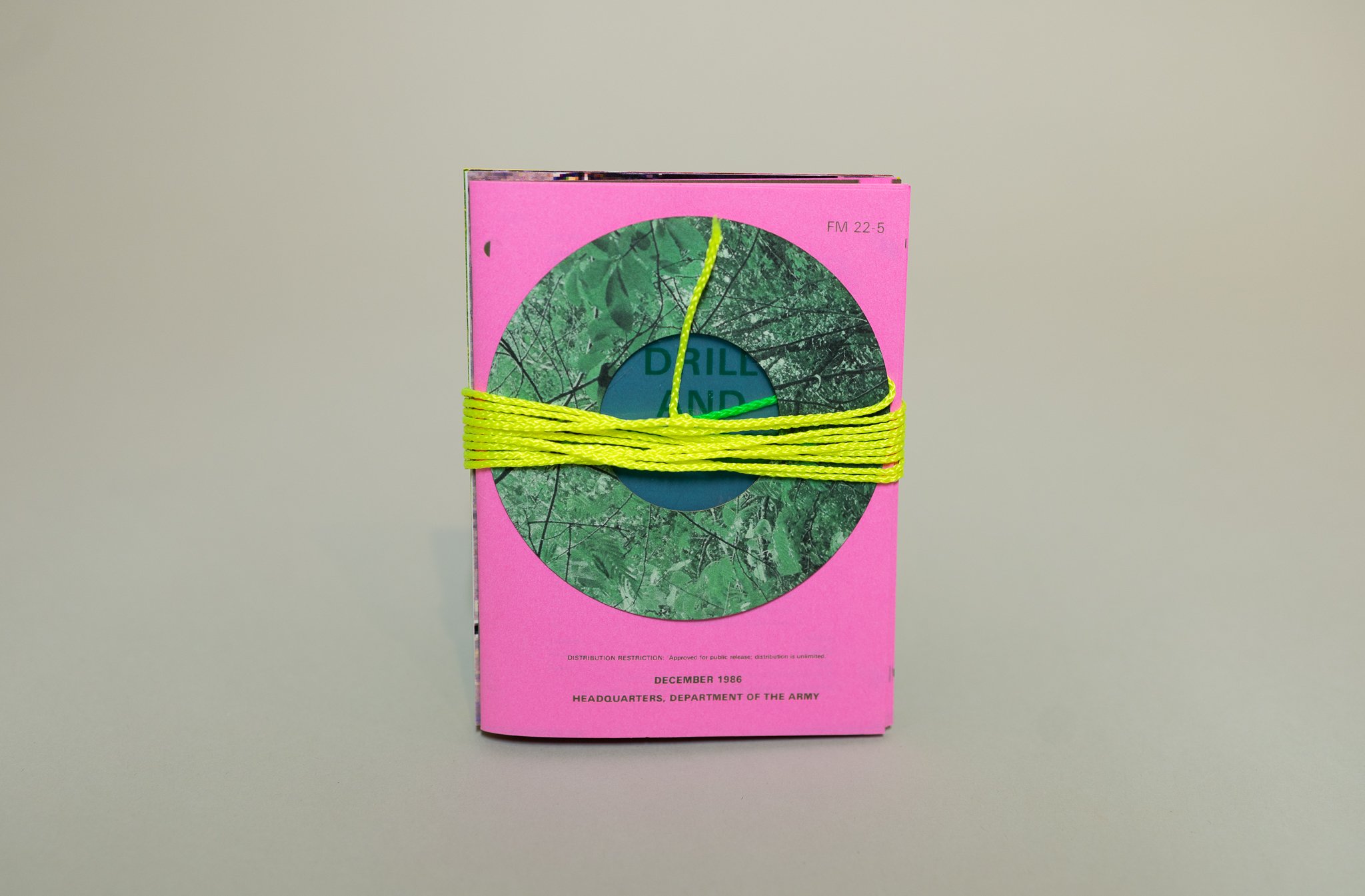
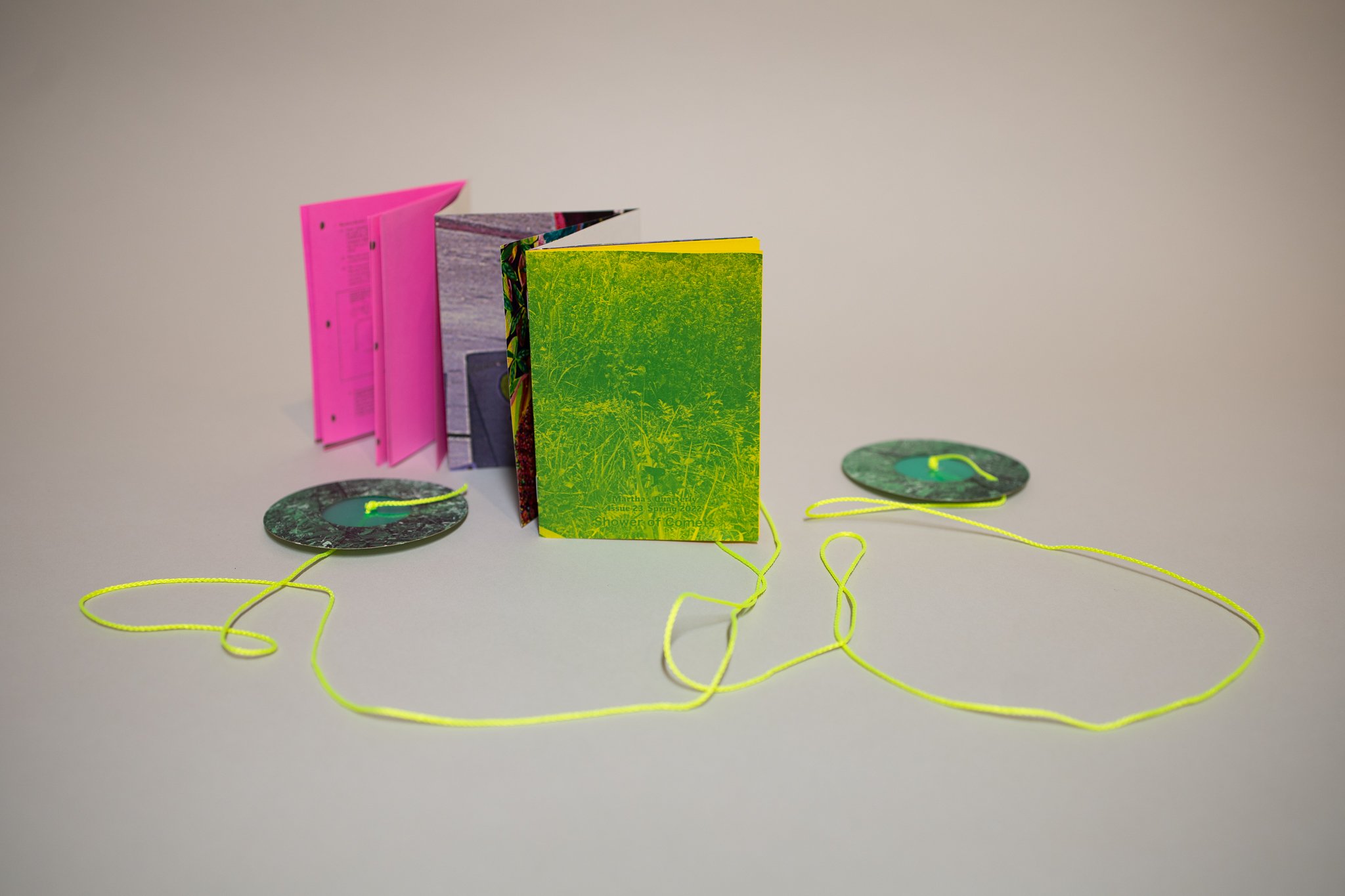

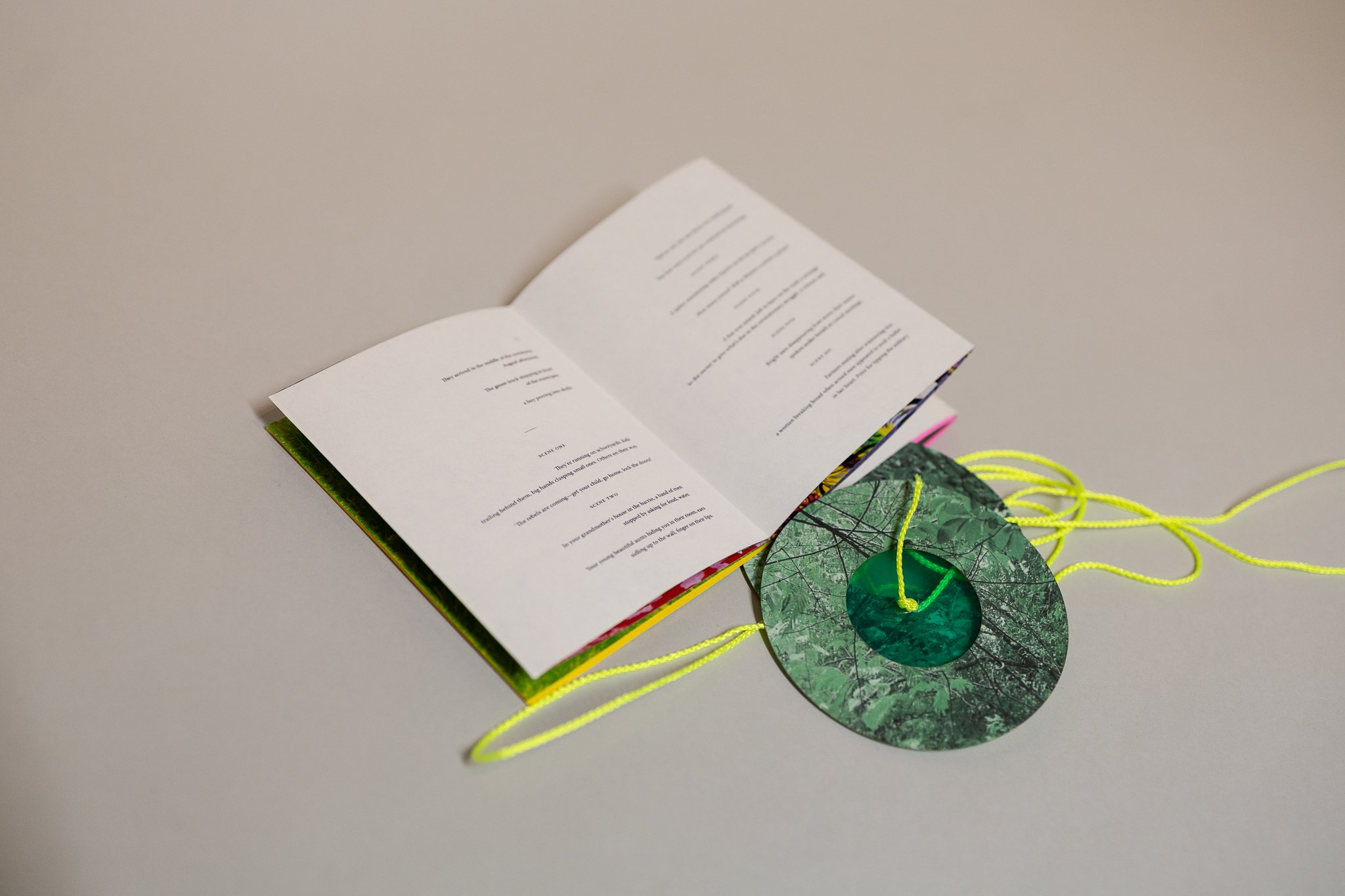
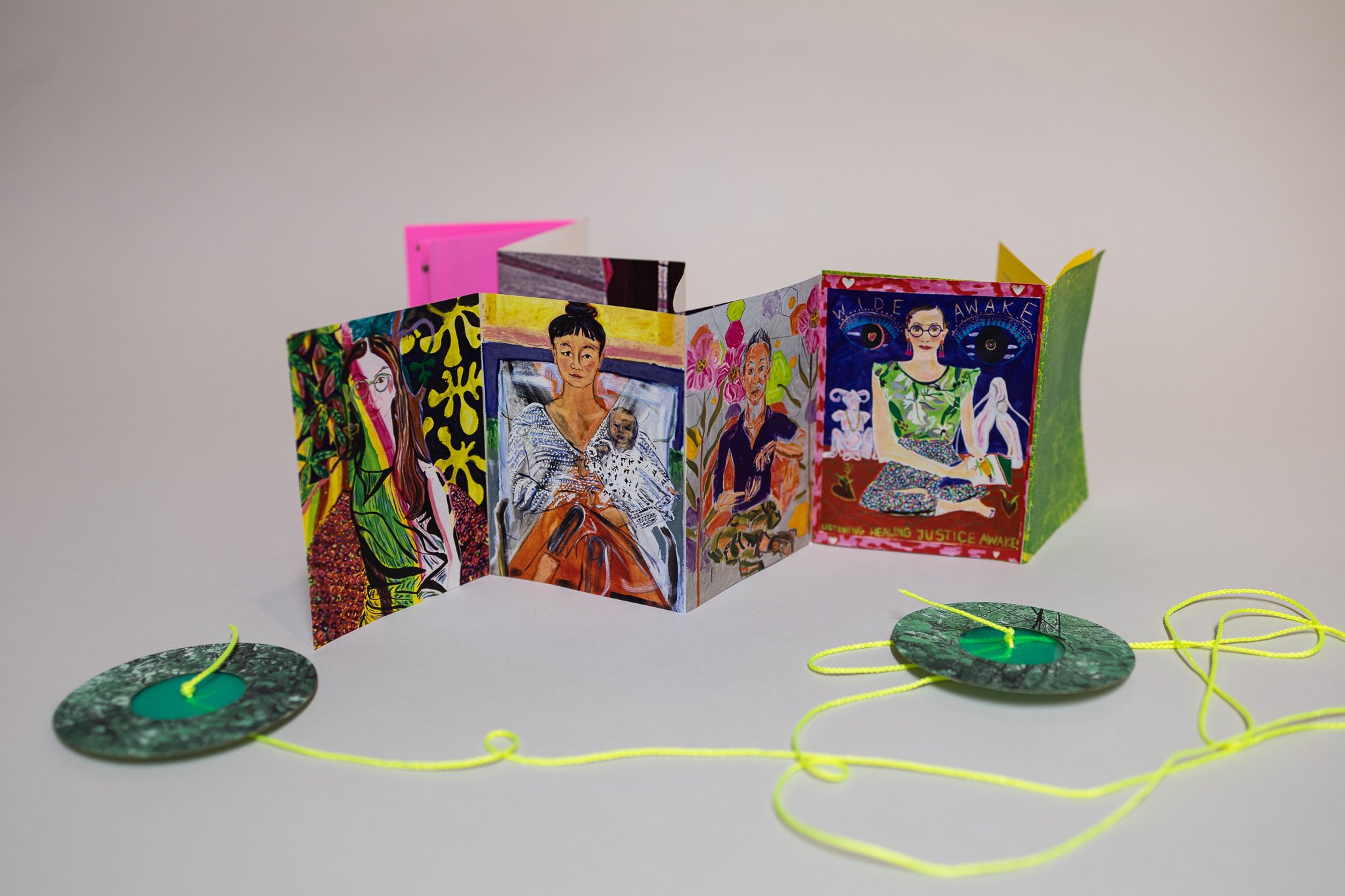

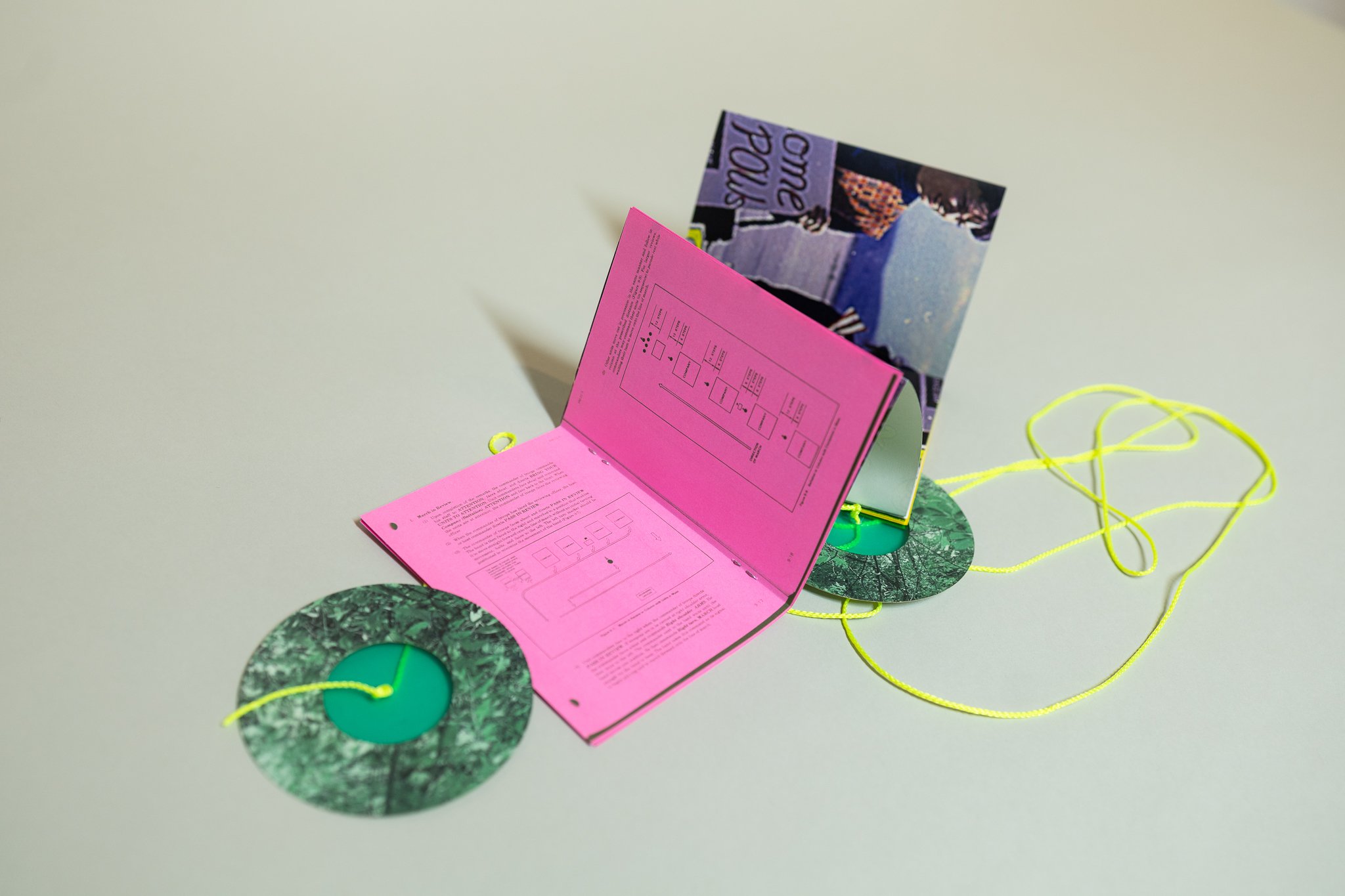
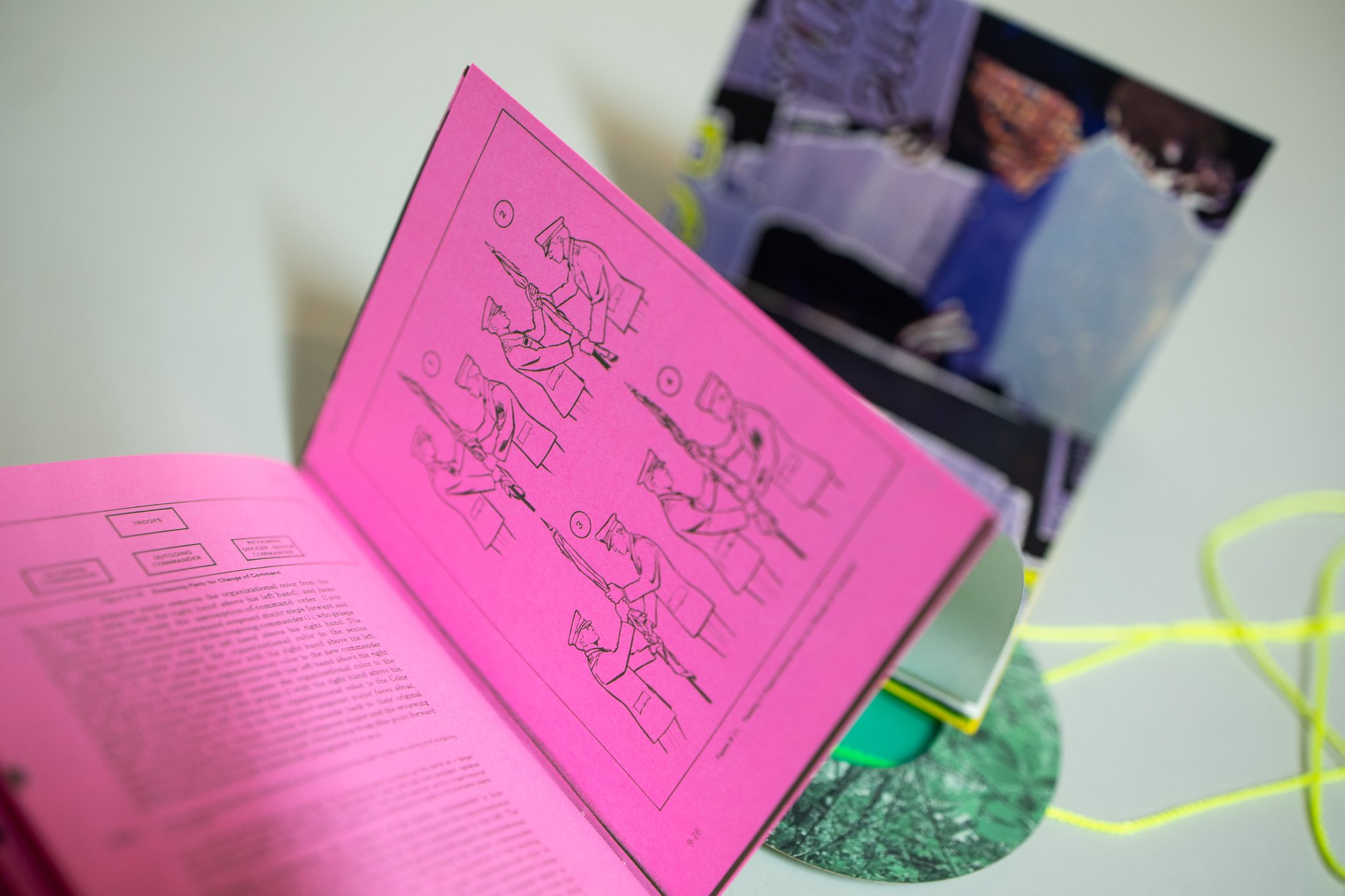
Martha's Quarterly
Issue 23
Spring 2022
Shower of Comets
5.25” x 4”
About the contributors:
Heidi Howard was born and raised in Queens, New York, where they still live today. Their expansive portrait practice includes conversations, ceramics and installations.
Poet, scholar, and curator, Charlie Samuya Veric is the author of four poetry books, including Boyhood (AdMU Press, 2017), where the poems featured here were originally published. He teaches at the Ateneo de Manila University in the Philippines.
Around 2009 or so, I was at a party in Saigon, and the topic of the Vietnam War came up. The topic of the “war times” comes up casually, and it is common to have “the war” be spoken about in a fleeting way. Sometimes, it starts with a small remark like, “Oh, my family was for the North.” I now forget what we were talking about, but during this conversation, an older friend who was a refugee and experienced the war during his childhood said: “You know, during the war, gossip was very important. And you know who did it the most? The gold merchants, those women who sit around all day talking with each other. The Viet Cong used them as a way to send messages and secrets.”
I didn’t live during war times. I was born in America nearly a decade after the fall of Saigon, but the war framed significant parts of my upbringing that I am frequently trying to piece together. I remember, as a kid, my mom would talk about a Vietnamese fruit that you could eat to clean your teeth. The image was clear yet confusing; how could you eat any fruit during war? My imagination of war was filled with dramatic images of explosions, men, military uniforms, and a combination of carnage and formality. In the calm after a battle, I can imagine the faces of the war-torn, but the space between ordinary life and war is perplexing. How does life continue in the midst of war? This is why my friend's anecdote was so striking: it started to fill in the picture of a full life in the midst of war, gossiping and selling gold as part of a war effort, with ordinary ways to make ends meet.
Since the war started in Ukraine, I have been interested again in the space between ordinary life and war, especially since this war has mobilized social media. As I scroll, I encounter moments of mundanity coupled with the violence of war. I look through my iPhone at someone who is roaming an empty street and suddenly sprayed with bullets; then, immediately, I’ll see an image of a pregnant Ukrainian woman, a dog, children playing, and more and more. Because of these images, the way that my mind fills with my imagination of the war in Ukraine is entirely different from the ways in which I have constructed images of wars in the past.
Martha’s Quarterly, Issue 23, Spring 2022, Shower of Comets, reflects on the spaces between ordinary life and war. This zine is about no war in particular, but aims to explore how war can be abstract and obscure. The whole book is tied together with a paper teletone that was modeled off of a 1950s vintage science toy. Like a paper cup, you can speak into one paper disc, and someone can hear you from the other disc if they put it up to their ear. Alluding to children’s pretend war games, the disc features foliage from the Ke Bang National Park in Vietnam, where crucial battles took place during the Vietnam War. The center of the disc is made of green film as a reference to night vision or the sight of a gun.
Once you have unwrapped the teletone, the first pamphlet is an excerpt from an old military manual, Drill and Ceremonies, from the chapter “Reviews.” This chapter details the ceremonial practices and procedures meant to honor and salute distinguished individuals, alongside diagrams that show how such a performance would take place. I was moved by the thoughtfulness of the traditions, but remain mindful of how these gestures make the subject of war impalpable.
This pamphlet leads to the beautiful poetry of Charlie Samuya Veric from his book Boyhood, a lyrical reconstruction of his childhood hometown Ibajay, Aklan, on the island of Panay in central Philippines. During his youth, there were communist insurgencies where armed members of the revolutionary movement resisted the Cory Aquino regime. In Veric’s work, he refers to green trucks, which were the military vehicles that these insurgents used. From his vantage point, the images of brutality are difficult to understand, as if the stains of violence are more like a “shower of comets,” from which this quarterly takes its name.
Alongside Veric’s poetry are four portraits by Heidi Howard, who makes portraits from seated individuals in her studio and other places. Howard’s lively portraits are done in real time over the course of many hours. They are sensitive and express a kind of friendship between Howard and the subject. I wanted to place these portraits in the context of war, because it is exactly Howard’s type of ordinary that I know to be a constant in times of both war and peace. Yet, it is hard for me to fill the theater of war with portraits of people who are sitting in composure.
Sandwiched between Veric’s and Howard’s work is an image of the wives of US Marine POWs who were released from Hanoi in 1973. Their welcome signs, which use similar colors to the Howard paintings, read “Welcome Home POW” and “God Bless You All.” Since the end of March, many Ukrainians have fled their homes. This morning, as I was scrolling through the Financial Times, I saw an image of a young couple walking through a bloom-filled National Botanic Garden in Kyiv on April 28, 2022. Even when there are few people to wander the gardens, spring will still yield green.
– Tammy Nguyen, Editor-in-Chief
Martha’s Quarterly, Issue 23, Spring 2022, Shower of Comets was created using xerox on various papers and laser cut lighting gels. It was designed and edited by Tammy Nguyen. It was produced by Téa Chai Beer and Holly Greene with assistance from Clara Burger, Hunter Julo, Spencer Klink, Mely Kornfeld, Maia Panlilio, Robbie Scola and Olivia Thanadabout. It was an edition of 200.


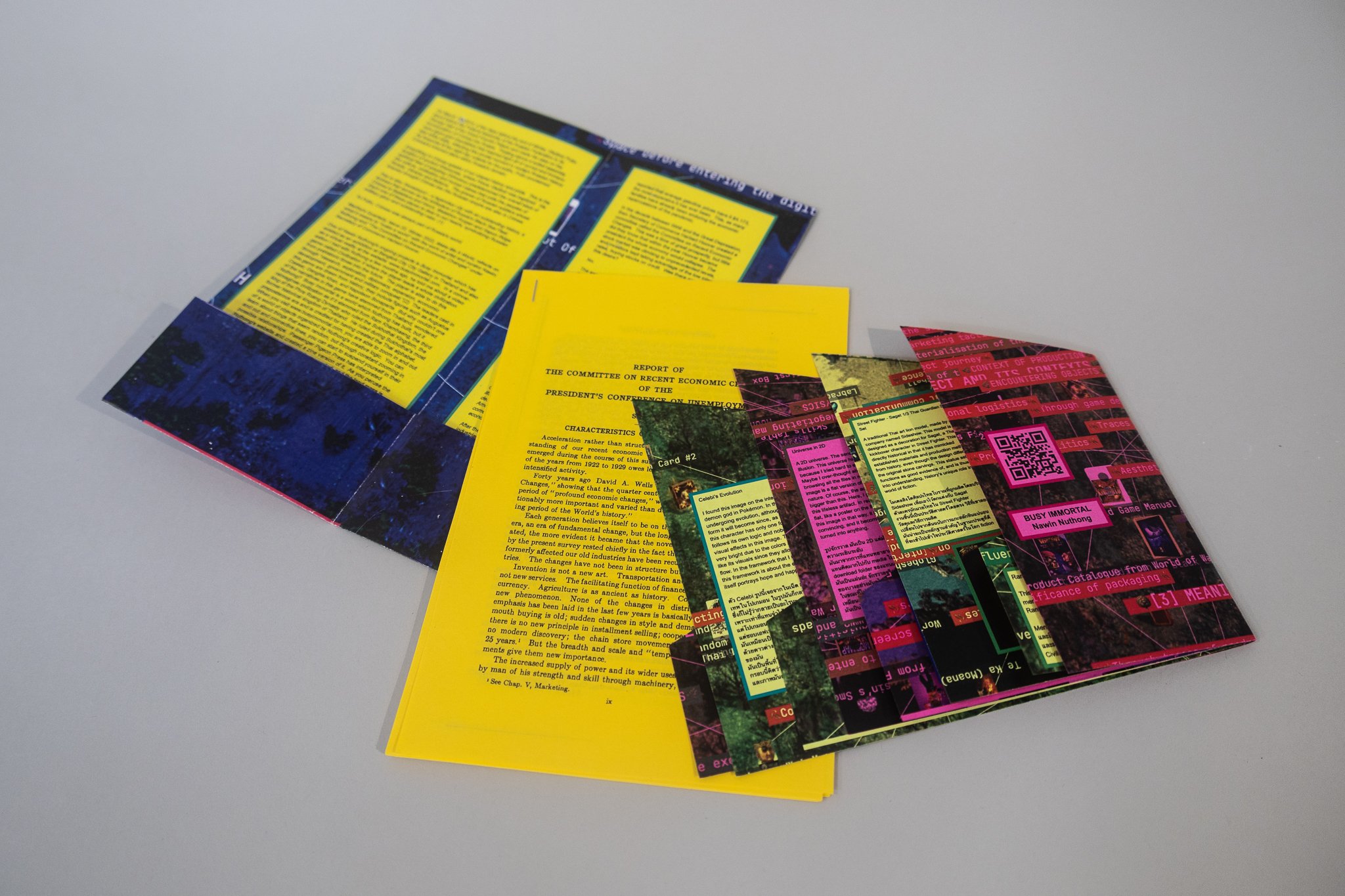
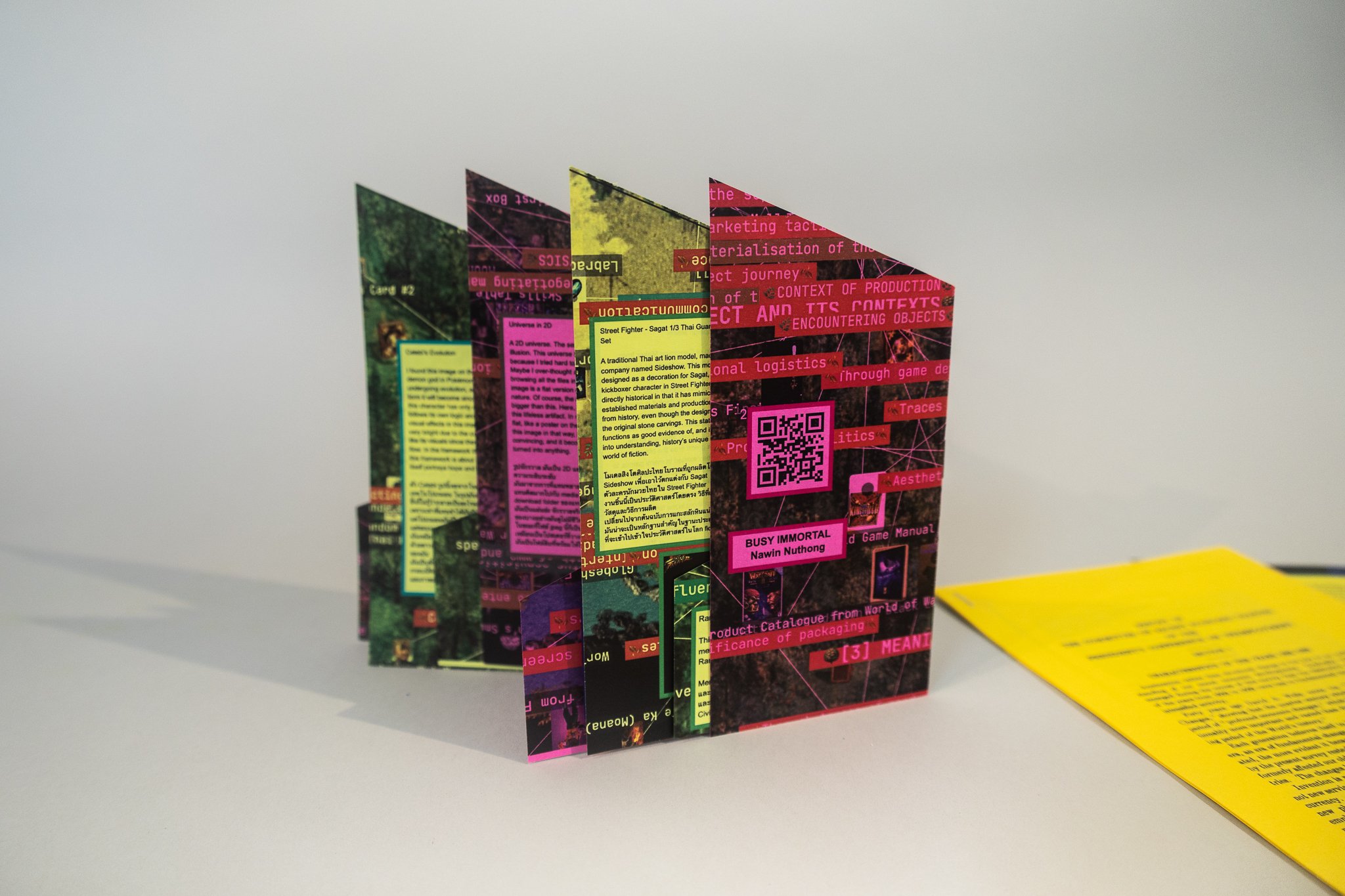
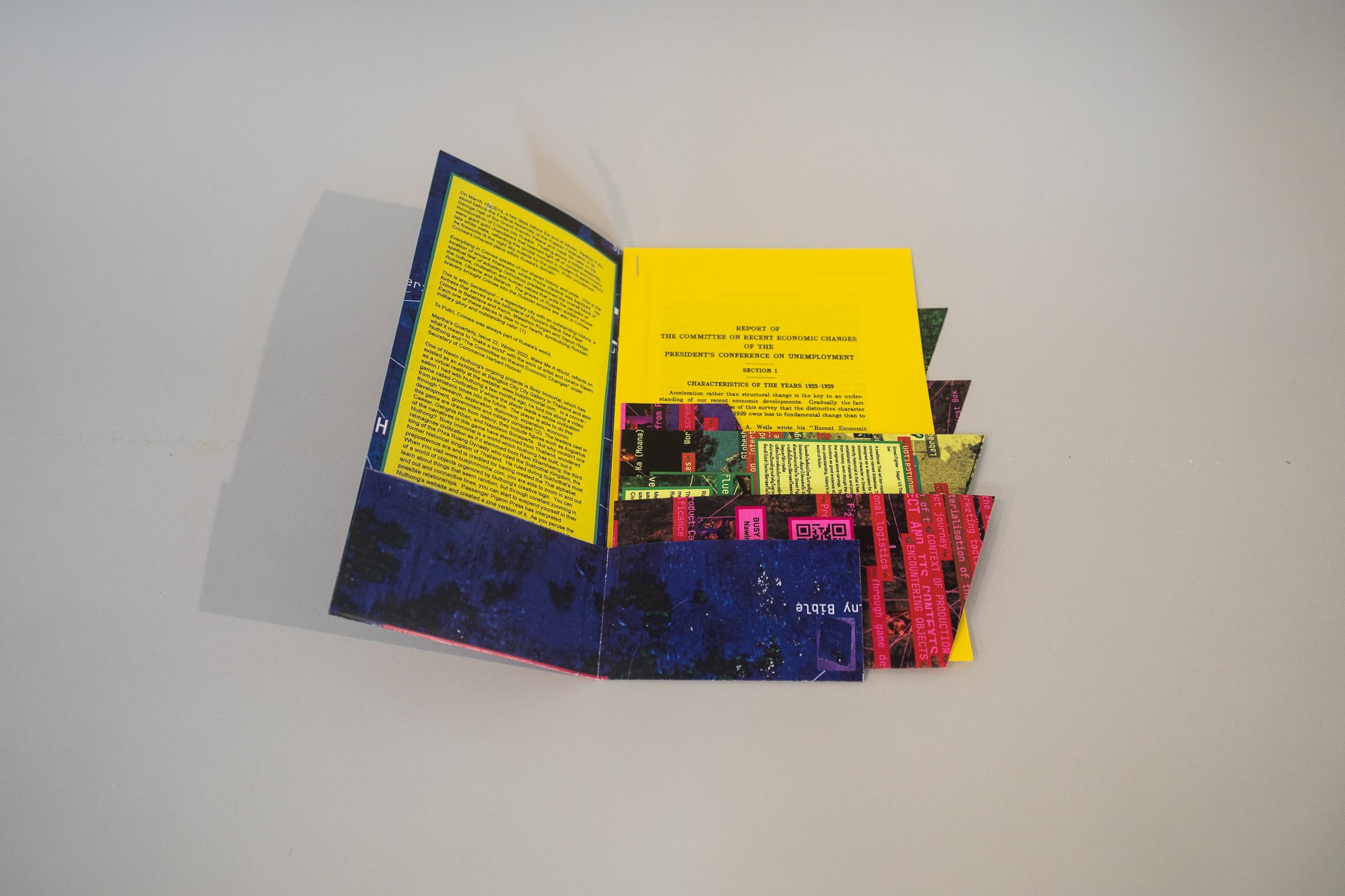

Martha's Quarterly
Issue 22
Winter 2022
Make Me A World
8.5” x 6.5”
About the contributors:
Herbert Hoover was the 31st president of the United States.
Nawin Nuthong is an artist who lives and works in Bangkok, Thailand. He always marks the junction between simulation and history to speculate on art practice.
On March 18, 2014, a few days before the end of Winter, Vladimir Putin stood before the Federal Assembly of the Russian Federation in St. George Hall of the Grand Kremlin Palace and made his case on the incorporation of Crimea into Russia. Floating above a suited assembly were giant gold chandeliers that beamed light off of curved and immaculate white walls, reflecting this pivotal moment in modern Russian history. As fireworks lit the night sky outside for the public, Putin proclaimed Crimea’s inherent place within Russia’s domain:
Everything in Crimea speaks of our shared history and pride. This is the location of ancient Khersones, where Prince Vladimir was baptized. His spiritual feat of adopting Orthodoxy predetermined the overall basis of the culture, civilisation and human values that unite the peoples of Russia, Ukraine and Belarus. The graves of Russian soldiers whose bravery brought Crimea into the Russian empire are also in Crimea.
This is also Sevastopol – a legendary city with an outstanding history, a fortress that serves as the birthplace of Russia's Black Sea Fleet. Crimea is Balaklava and Kerch, Malakhov Kurgan and Sapun Ridge. Each one of these places is dear to our hearts, symbolizing Russian military glory and outstanding valor. (1)
To Putin, Crimea was always part of Russia’s world.
Martha’s Quarterly, Issue 22, Winter 2022, Make Me A World, reflects on what it means to “make a world” with the work of artist and curator Nawin Nuthong and “The Committee on Recent Economic Changes” under Secretary of Commerce Herbert Hoover.
One of Nawin Nuthong’s ongoing projects is Busy Immortal, which has existed as an exhibition at Bangkok City City Gallery in Thailand and also as a virtual reality at the website: www.busyimmortal.com. In a conversation I had with Nuthong a few months ago, he told me about a video game called Civilization V where the player leads a whole civilization from prehistoric times into the future. The player is able to do this through “research, exploration, diplomacy, expansion, economic development, government and military conquest.”(2) The leaders cast in this game are drawn from history; they include figures such as Augustus Caesar, Genghis Khan, and Napoleon Bonaparte. But why couldn’t one of the narratives in this game have stemmed from Thailand, wondered Nuthong? Busy Immortal is a world which Nuthong has built, but it reimagines civilization as if it stemmed from Ram Khamhaeng, the third king of the Phra Ruang Dynasty who ruled the Sukhothai Kingdom, the former historical kingdom of Thailand. He ruled during Sukhothai’s most preposterous era and is credited for having created the Thai alphabet. When you visit www.busyimmortal.com, you are able to zoom in and out of a world of objects organized by Nuthong’s creative logic. You can learn about things that seem random, but through constant zooming in and out and connective lines, you can start to suspend yourself in their possible relationships. Passenger Pigeon Press has interpreted Nuthong’s website and created a zine version of it. As you peruse the pages, a mountainous landscape is suggested, and the land mass is filled with screen captures and selections from Busy Immortal. You can also use the QR code to visit the original site.
Our whole world awoke to the news that Russia had invaded Ukraine on February 24, 2022. For Ukrainians, their world had been punctured by a larger power whose leader had a different vision of how their world should be defined and contained. After the first day of war, the 44-year-old comedian-turned-president, Volodymyr Zelenskyy, addressed his nation:
Today, I asked the twenty-seven leaders of Europe whether Ukraine will be in NATO. I asked directly. Everyone is afraid. They do not answer.
And we are not afraid of anything. We are not afraid to defend our state. We are not afraid of Russia. We are not afraid to talk to Russia. We are not afraid to say everything about security guarantees for our state. We are not afraid to talk about neutral status. We are not in NATO now. But the main thing – what security guarantees will we have? And what specific countries will give them? (3)
Translators around the world could be heard tearing up as they translated President Zlenskyy’s address into other languages. The people of Ukraine now must endure this war. Many will die; many are refugees; thousands of personal worlds are shattered.
In a world far away, many Americans were abhorred by the Russian invasion. Protests for Ukraine’s sovereignty sprouted all over commons across America. As this happened, many Americans also wondered how this war could have a direct impact on their own lives. Oil, oil, oil, said all the talking heads on the right, left, and in between. As I write this introduction, it is March 8th, 2022 and the Wall Street Journal has reported that average gasoline prices have it $4.173, the most expensive it has ever been. This, as many families have already been enduring the economic repercussions of the pandemic.
In the decade between WWI and the Great Depression, then Secretary of Commerce Herbert Hoover created a committee called the Committee on Recent Economic Changes. This was a time of great prosperity, but little did they know that within the year Hoover became president the whole economy would collapse. The stock market was climbing to unprecedented levels, and investors kept taking advantage of the low interest rates, buying stocks on credit. Was there any limit to this desire?
No.
The second component of this Martha’s Quarterly is a report that the Committee on Recent Economic Change published just before The Great Crash. The report summarizes American spending in between the years 1921-1928. It details how technology, geography, wages, and the cost of living all work harmoniously to create an environment wherein the public can satiate their desires, or in other words, build and fill their worlds:
Perhaps the deepest economic significance of the new situation lies, not in the rapidity with which the service industries have grown and have become integrated, nor in the universality of their spread, but in the fact that the situation which they have created is reciprocal. Our increasing standard of living is not participated in only by those who produce our food, clothing, and shelter, but has flowed back to those in the service industries. The population as a whole can enjoy the rising standard of living–the music which comes in over the radio, the press, the automobile and good roads, the schools, the colleges, parks, playgrounds, and the myriad other facilities for comfortable existence and cultural development.
Our ancestors came to these shores with few tools and little organization to fight nature for a livelihood. Their descendants have developed a new and peculiarly American type of civilization in which services have come to rank with other forms of production as a major economic factor.
After the stock market crashed in the Fall of 1929, industrial production quickly plummeted and economic suffering pervaded society leading to hunger and death. It goes without saying that human civilization is all interconnected; but, we can also consider that the collapse of one world does not birth a new one, but rather destroys the worlds around it.
– Tammy Nguyen
Martha’s Quarterly, Issue 22, Winter 22, Make Me A World, was edited and produced by Passenger Pigeon Press. Tammy Nguyen directed the content and design. Nawin Nuthong’s contribution was edited by Spencer Klink. The introduction was edited by Téa Chai Beer. This edition was produced by Holly Greene and Maia Panlilio. The artist book was created using xerox on colored and glossy white text weight papers. Arial font was used throughout in various sizes and styles. This was an edition of 200.
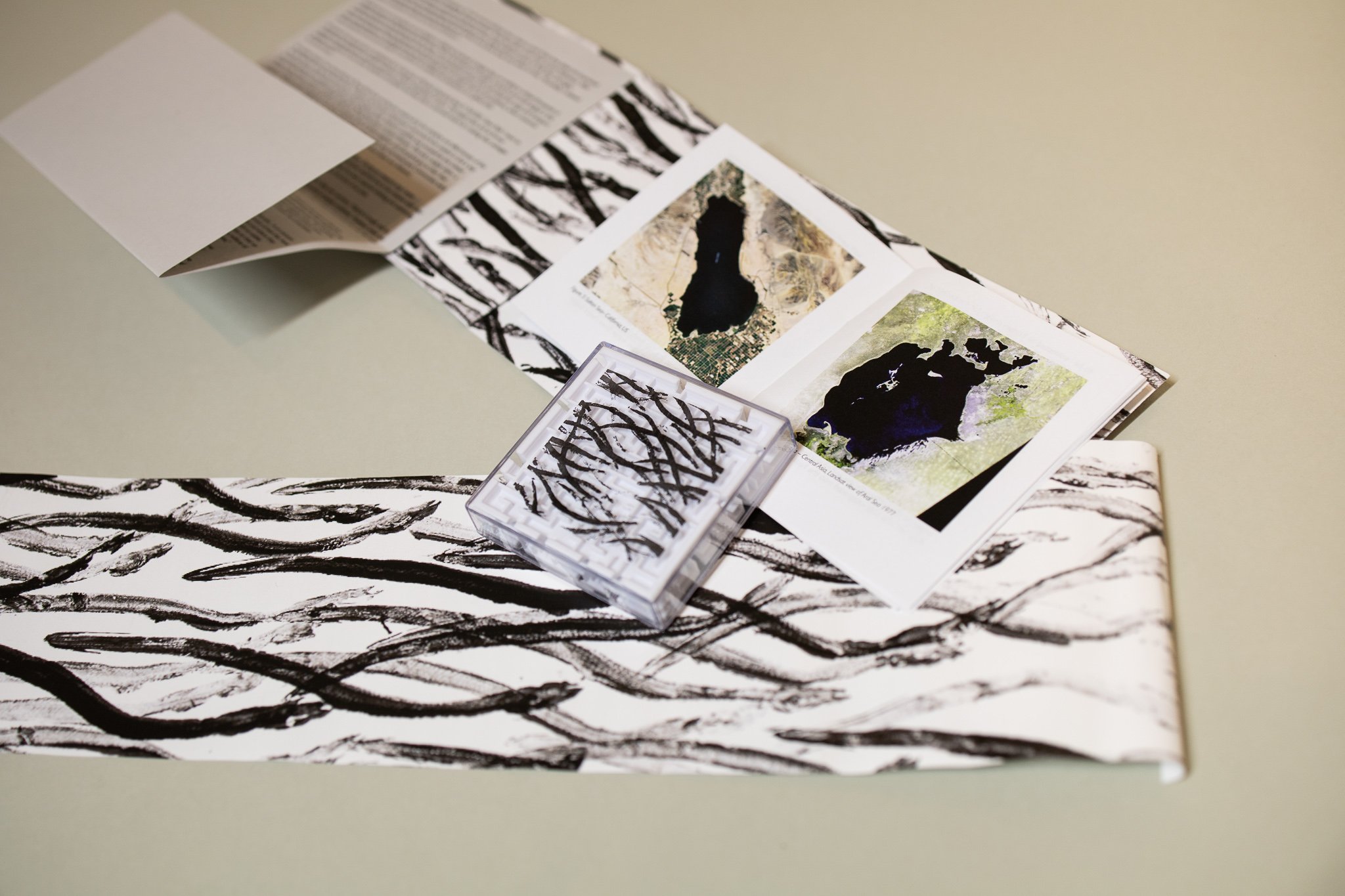
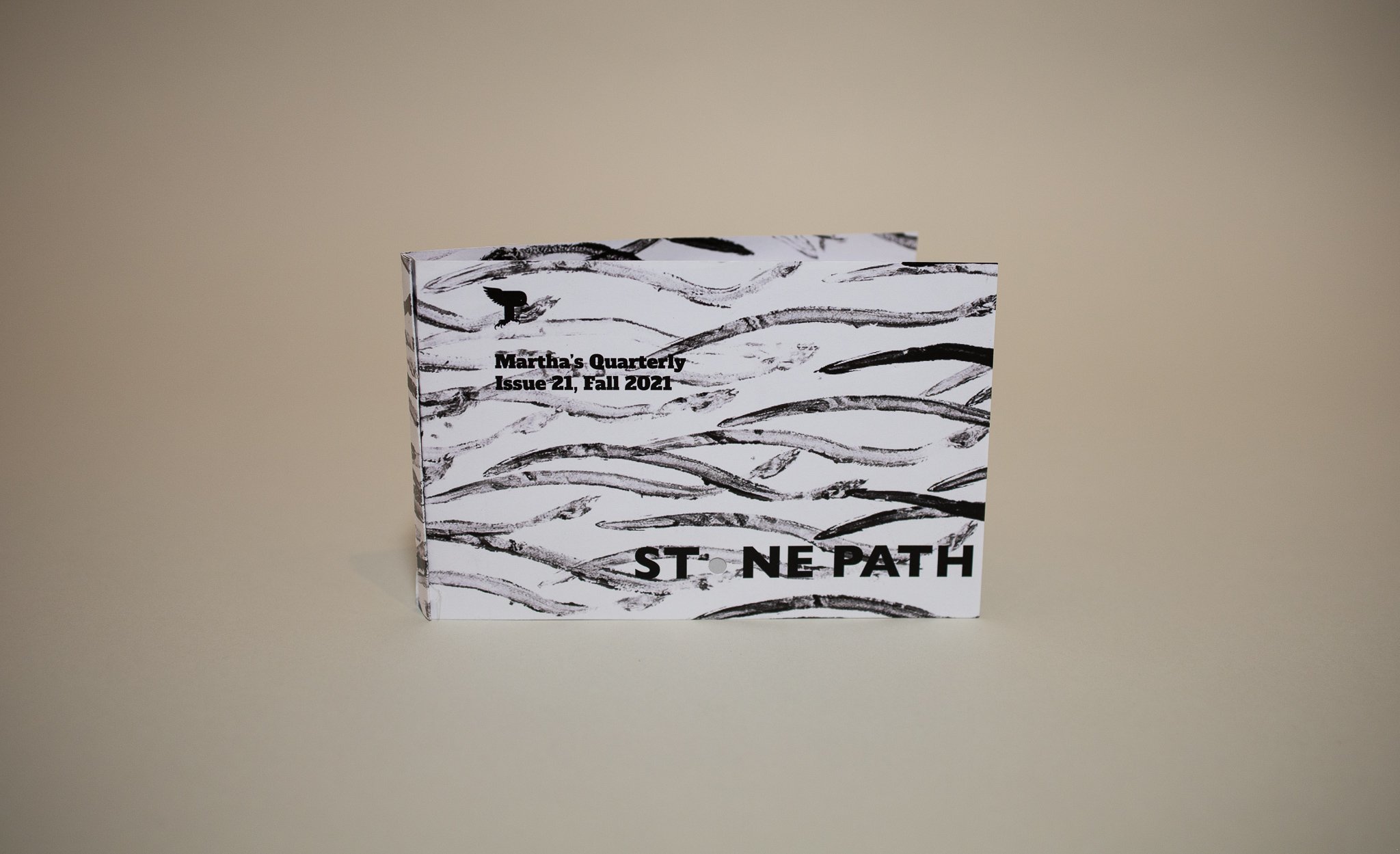
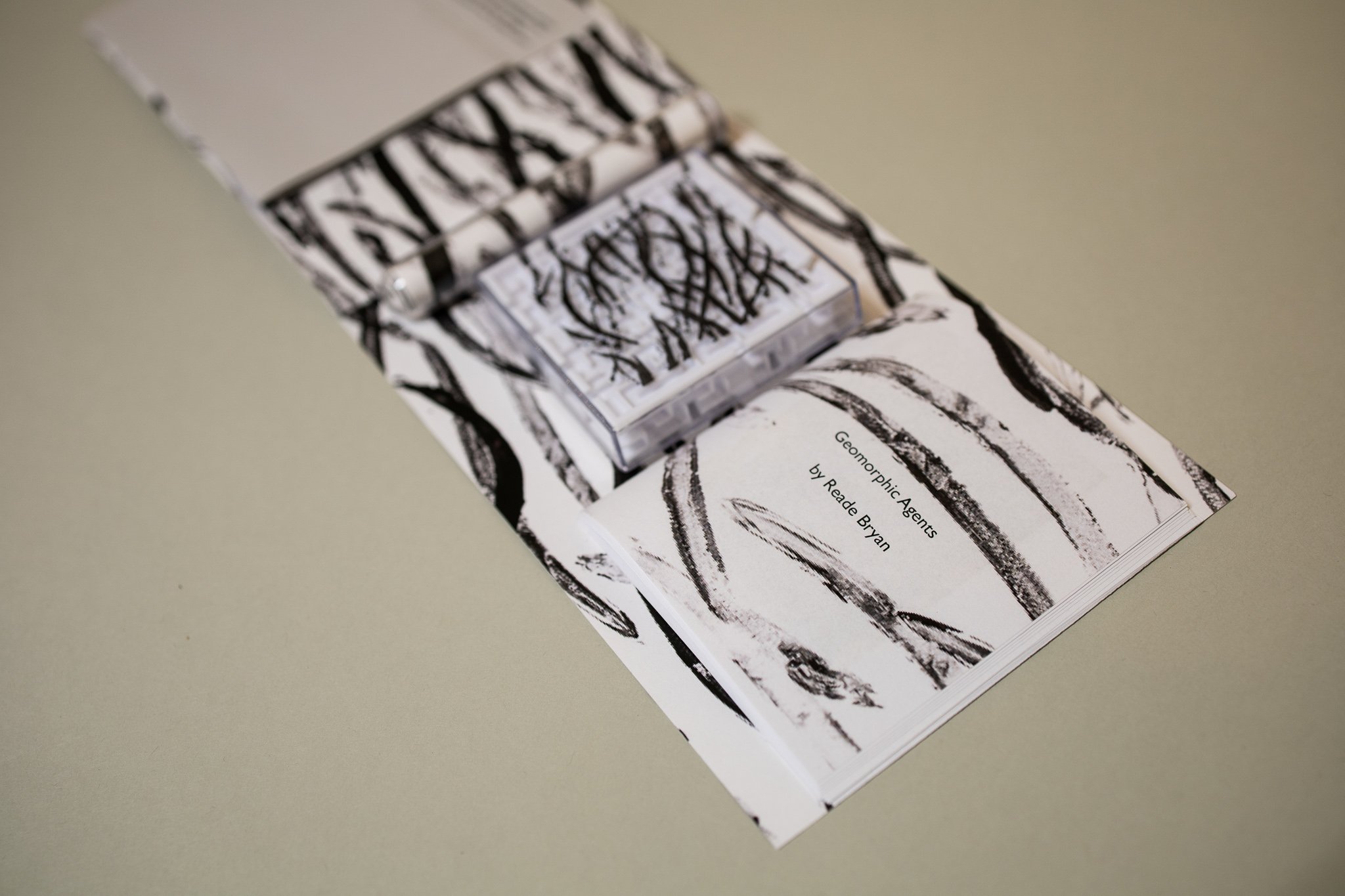
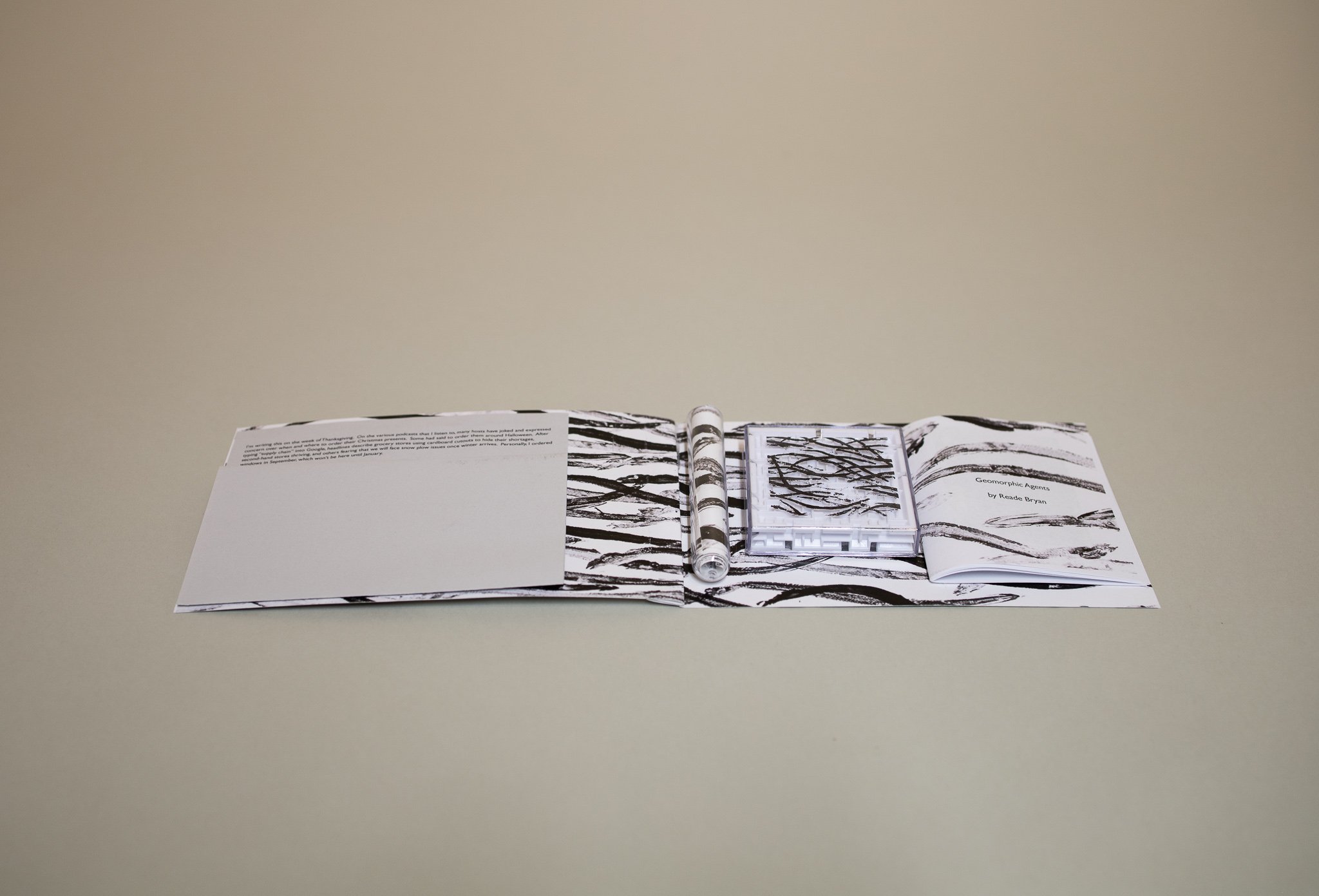
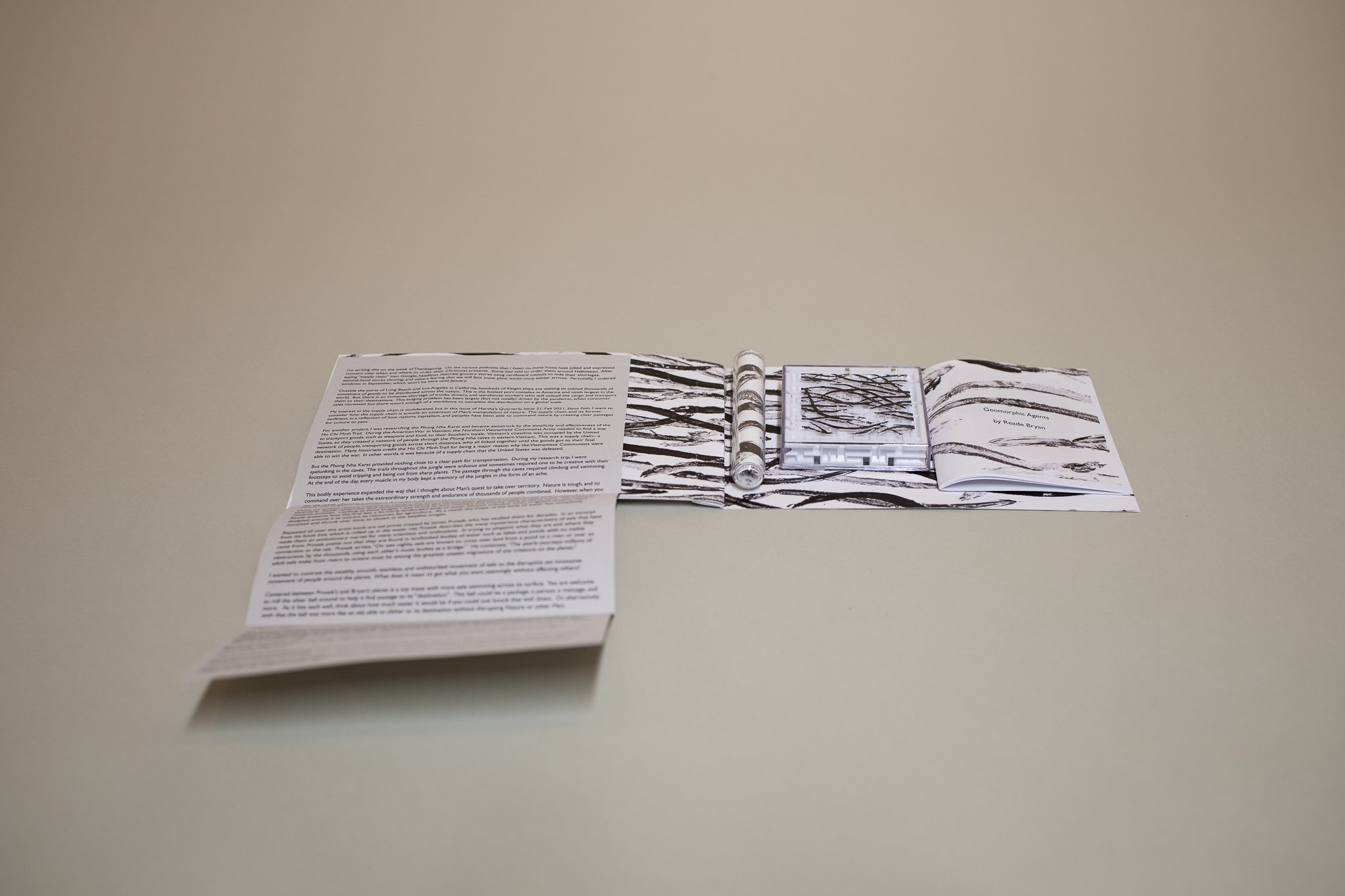
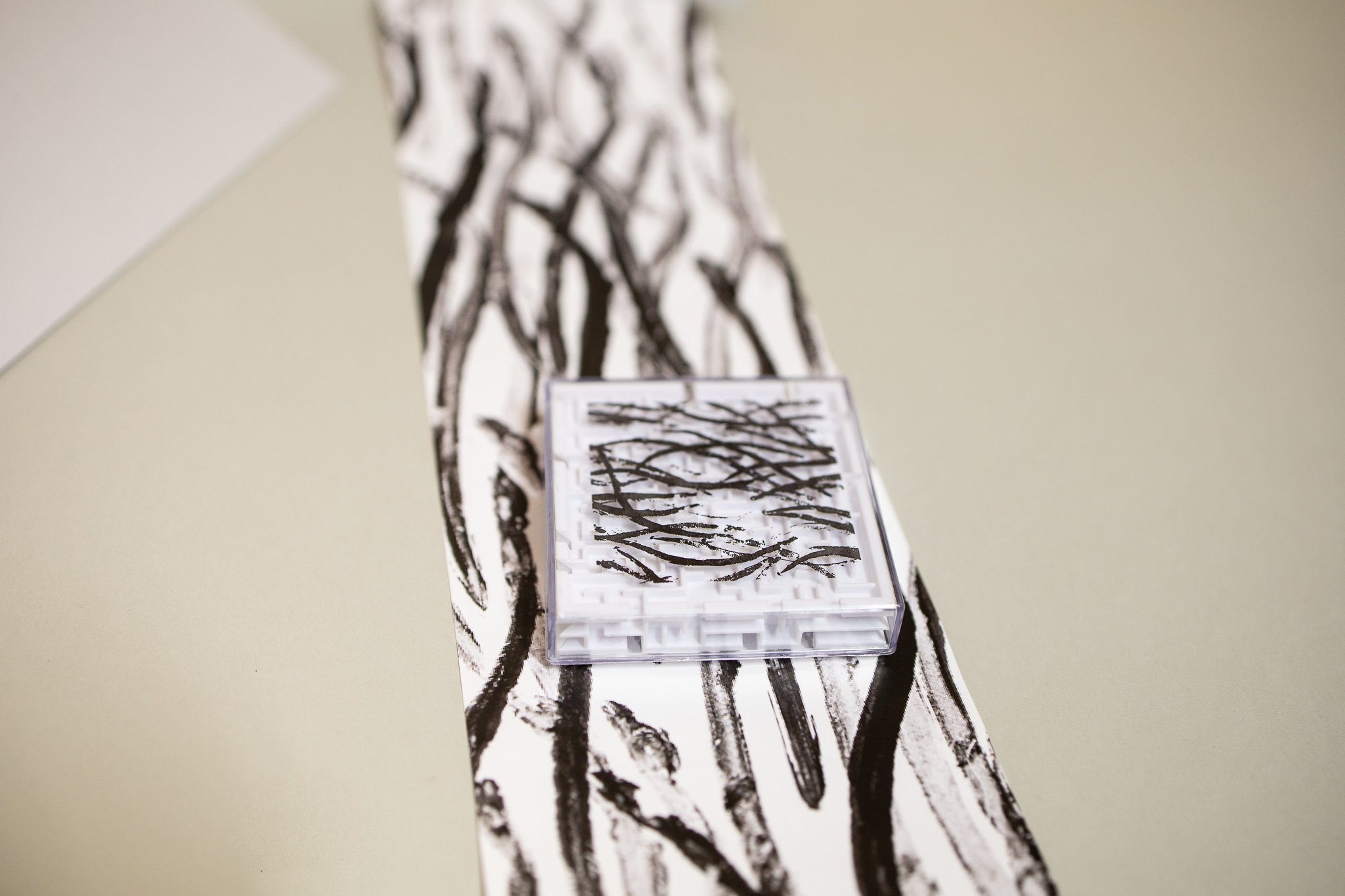
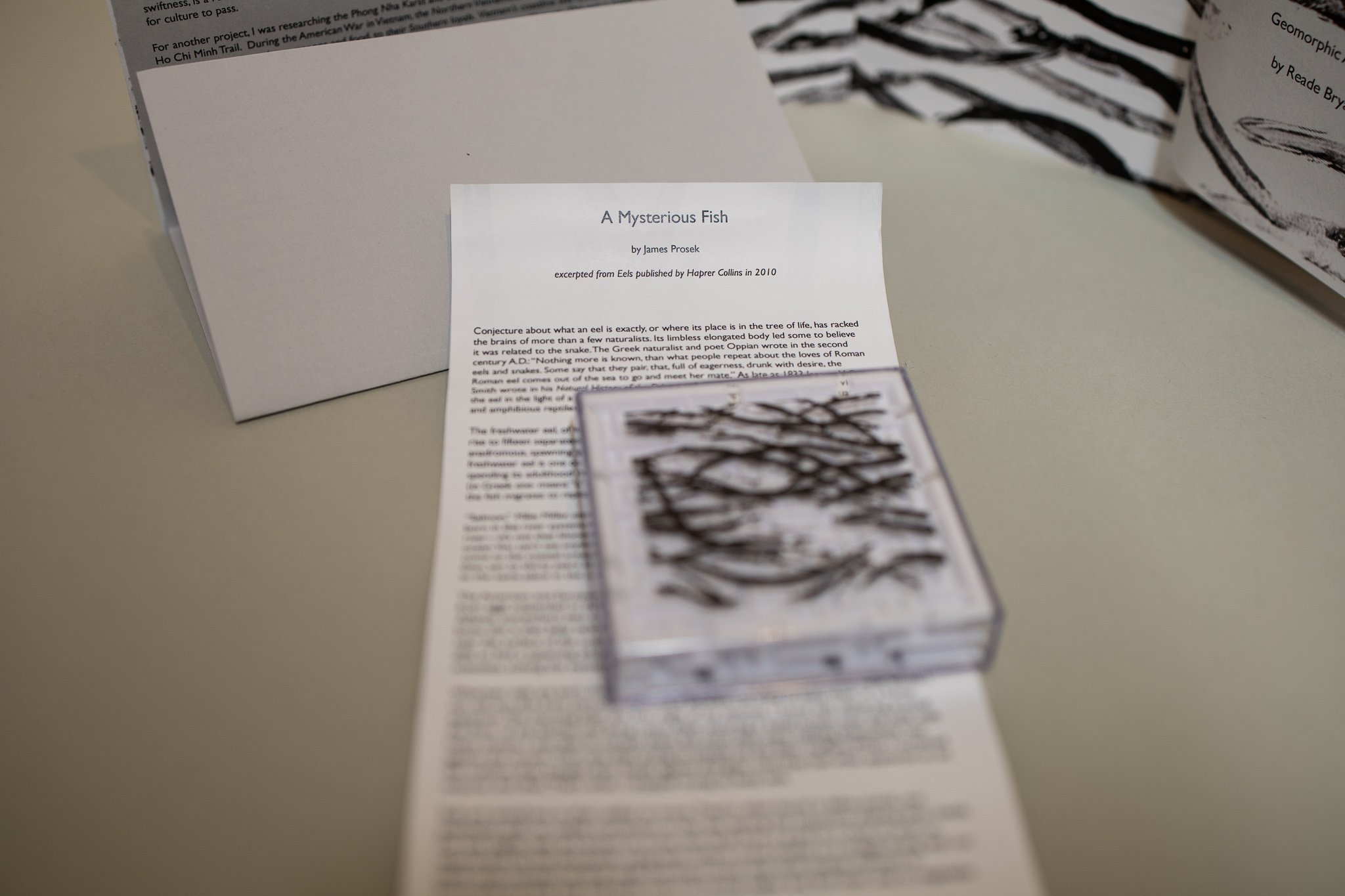
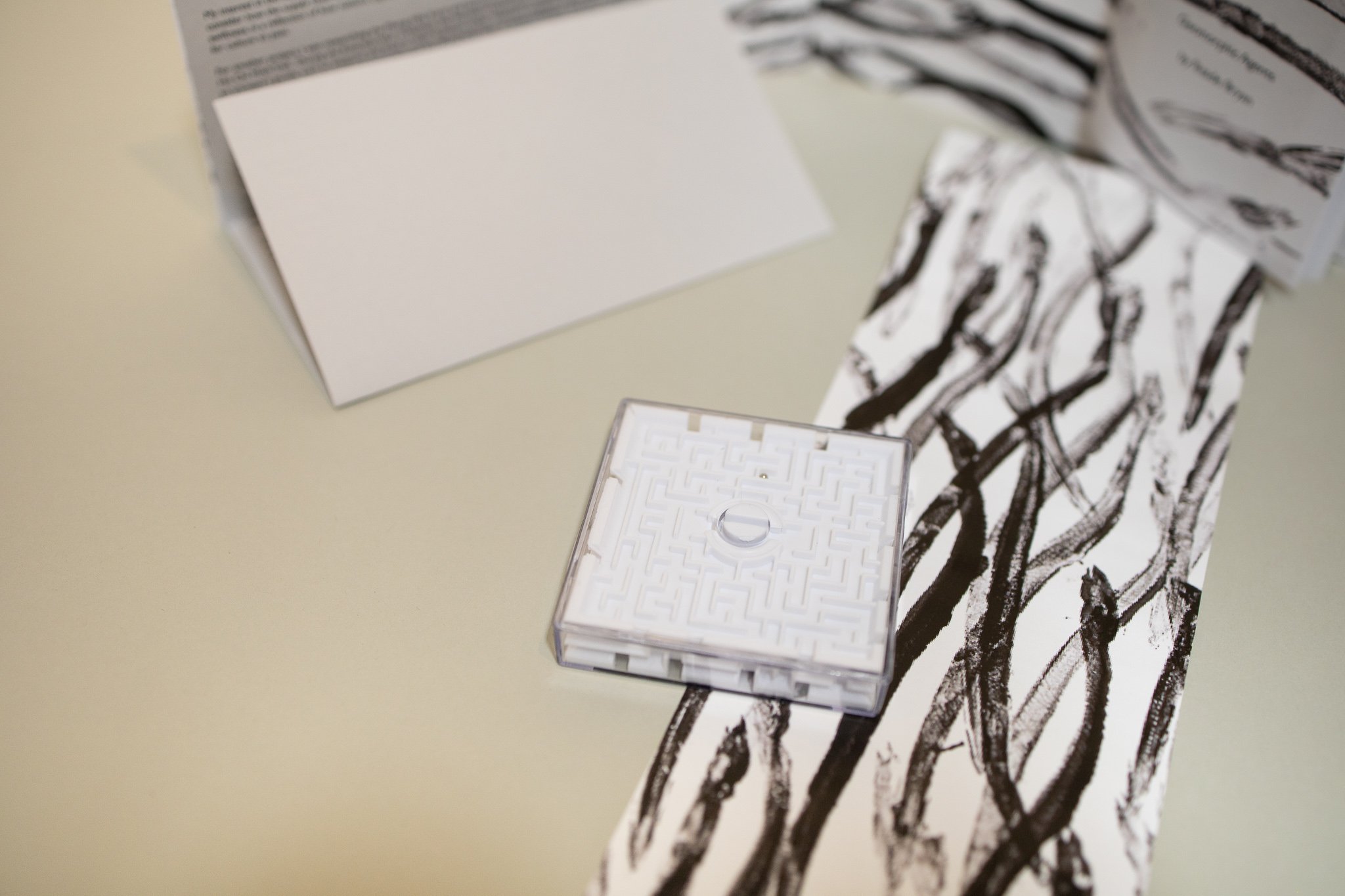
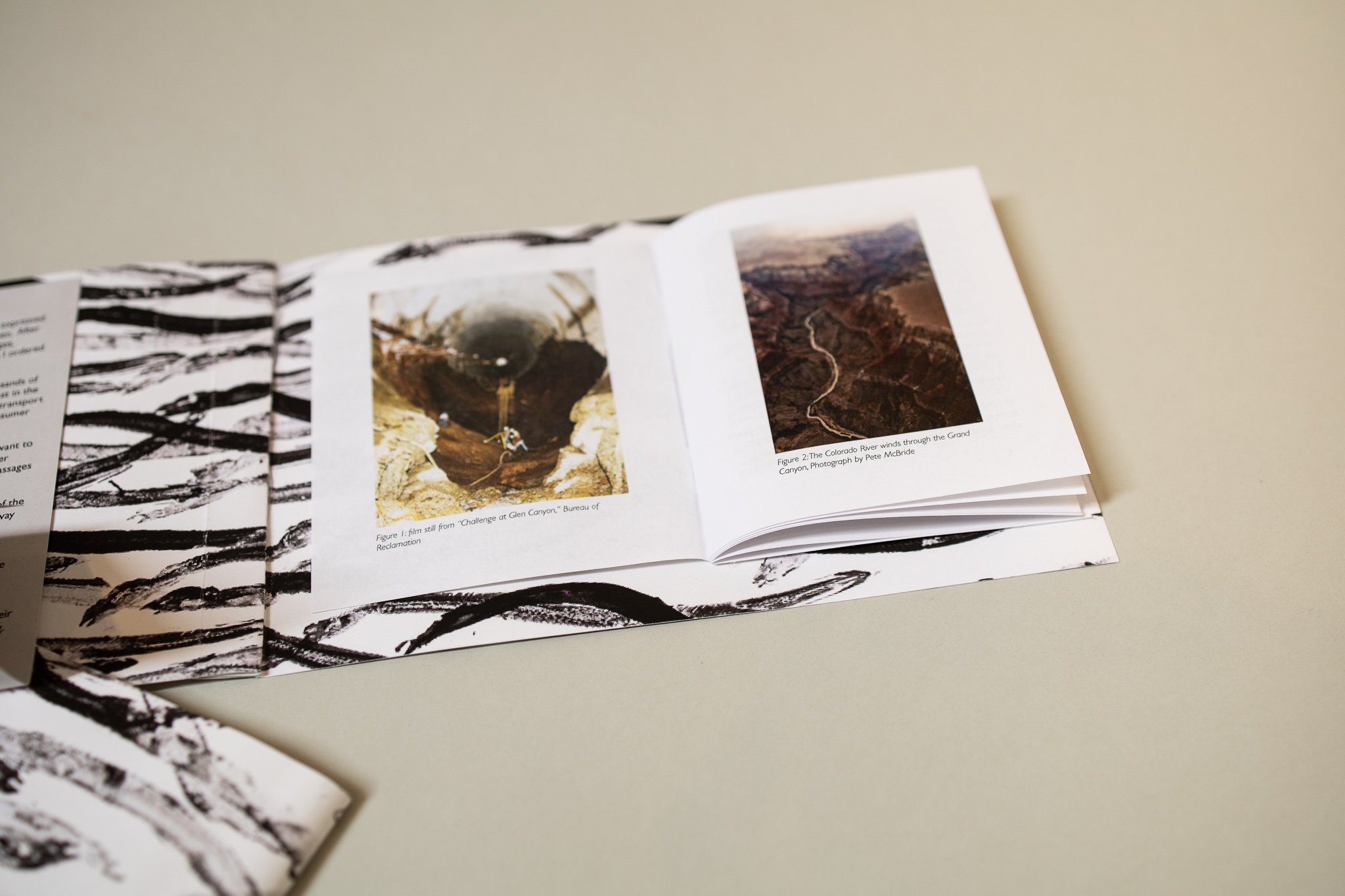
Martha's Quarterly
Issue 21
Fall 2021
Stone Path
5” x 7”
About the contributors:
Reade Bryan is an interdisciplinary artist living in Philadelphia. He’s been watching a ton of Korean films from the 70’s and becoming a Cold War history buff.James Prosek is an artist and writer living in Easton, Connecticut. His show Art, Artifact, Artifice at the Yale University Art Gallery ran through 2020 and early 2021.
I’m writing this on the week of Thanksgiving. On the various podcasts that I listen to, many hosts have joked and expressed concern over when and where to order their Christmas presents. Some had said to order them around Halloween. After typing “supply chain” into Google, headlines describe grocery stores using cardboard cutouts to hide their shortages, second-hand stores thriving, and others fearing that we will face snow plow issues once winter arrives. Personally, I ordered windows in September, which won’t be here until January.
Outside the ports of Long Beach and Los Angeles in California, hundreds of freight ships are waiting to unload thousands of containers of goods to be distributed across the nation. This is the busiest port complex in America and ninth largest in the world. But, there is an immense shortage of trucks, drivers, and warehouse workers who will unload the cargo and transport them to their destinations. This bulging problem has been largely (but not totally) driven by the pandemic, when consumer sales increased but there wasn’t enough of a workforce to complete the distribution on a global scale.
My interest in the supply chain is multifaceted, but in this issue of Martha’s Quarterly, Issue 21, Fall 2021, Stone Path, I want to consider how the supply chain is actually an extension of Man’s manipulation of nature. The supply chain, and its former swiftness, is a reflection of how nations, capitalism, and peoples have been able to command nature by creating clear passages for culture to pass.
For another project, I was researching the Phong Nha Karst and became awestruck by the simplicity and effectiveness of the Ho Chi Minh Trail. During the American War in Vietnam, the Northern Vietnamese Communist Army needed to find a way to transport goods, such as weapons and food, to their Southern loyals. Vietnam’s coastline was occupied by the United States, so they created a network of people through the Phong Nha caves in eastern Vietnam. This was a supply chain– a network of people, transporting goods across short distances, who all linked together until the goods got to their final destination. Many historians credit the Ho Chi Minh Trail for being a major reason why the Vietnamese Communists were able to win the war. In other words, it was because of a supply chain that the United States was defeated.
But the Phong Nha Karst provided nothing close to a clear path for transportation. During my research trip, I went spelunking in the caves. The trails throughout the jungle were arduous and sometimes required one to be creative with their footsteps to avoid tripping and being cut from sharp plants. The passage through the caves required climbing and swimming. At the end of the day, every muscle in my body kept a memory of the jungles in the form of an ache.
This bodily experience expanded the way that I thought about Man’s quest to take over territory. Nature is tough, and to command over her takes the extraordinary strength and endurance of thousands of people combined. However, when you see the result of taming a territory, the image is of a grand interstate highway, a water canal, a train track, etc; and, the many people who helped to shape Nature are gone from the image.
These are various reasons I wanted to combine the work of Reade Bryan and James Prosek in this issue of Martha’s Quarterly. Reade researches land reclamation projects, and the pamphlet features a variety of sites he has collected in his research archives. Looking at these images, I was struck by how visionary and invasive these projects were. For example, Reade presents how the Aral Sea, a formerly landlocked body of water, became unlocked when irrigation systems were designed around it to extract its resources for agriculture. As a result, the shape of the body of water has completely morphed and shrunk over time, as shown in the satellite images.
Repeated all over this artist book are eel prints created by James Prosek, who has studied them for decades. In an excerpt from his book Eels, which is rolled up in the water vial, Prosek describes the many mysterious characteristics of eels that have made them an evolutionary marvel for many scientists and enthusiasts. In trying to pinpoint what they are and where they came from, Prosek points out that they are found in landlocked bodies of water such as lakes and ponds with no visible connection to the sea. Prosek writes, “On wet nights, eels are known to cross over land from a pond to a river, or over an obstruction, by the thousands, using each other’s moist bodies as a bridge.” He continues, “The yearly journeys millions of adult eels make from rivers to oceans must be among the greatest unseen migrations of any creature on the planet.”
I wanted to contrast the stealthy, smooth, seamless, and undisturbed movement of eels to the disruptive yet innovative movement of people around the planet. What does it mean to get what you want seemingly without affecting others?
Centered between Prosek’s and Bryan’s pieces is a toy maze with more eels swimming across its surface. You are welcome to roll the silver ball around to help it find passage to its “destination”. This ball could be a package, a person, a message, and more. As it hits each wall, think about how much easier it would be if you could just knock that wall down. Or, alternatively, wish that the ball was more like an eel, able to slither to its destination without disrupting Nature or other Men.
– Tammy Nguyen
Editor-in-Chief
This issue of Martha’s Quarterly, Issue 21, Fall 2021, Stone Path was created using Xerox printing and print-on-demand technologies. The papers used included white 80 lb cover stock, 20 lb plain text weight, and 30 lb plain text weight. Gill Sans font was used in various sizes and styles throughout. Reade Bryan’s text was adapted from a presentation he gave at Smack Mellon in the Summer of 2021 and was edited by Chloe Greene. James’ Prosek’s text was excerpted from his book Eels, published by HarperCollins in 2010, and edited for our use by Holly Greene. This edition was produced by Téa Chai Beer, Clara Burger, Chloe Green, Holly Greene, Spencer Klink, and Mely Kornfield. It was designed and directed by Tammy Nguyen. This was an edition of 200.
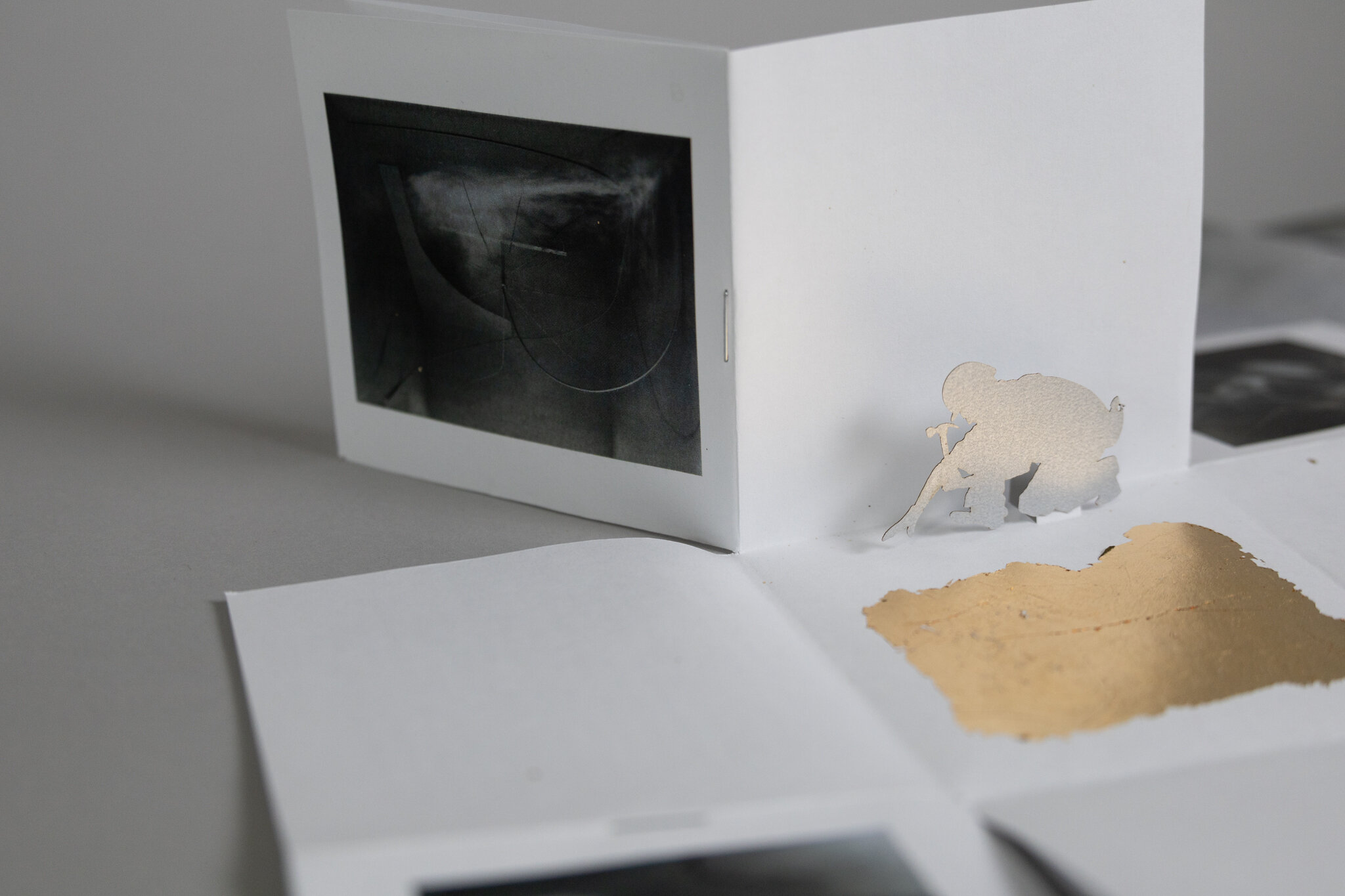

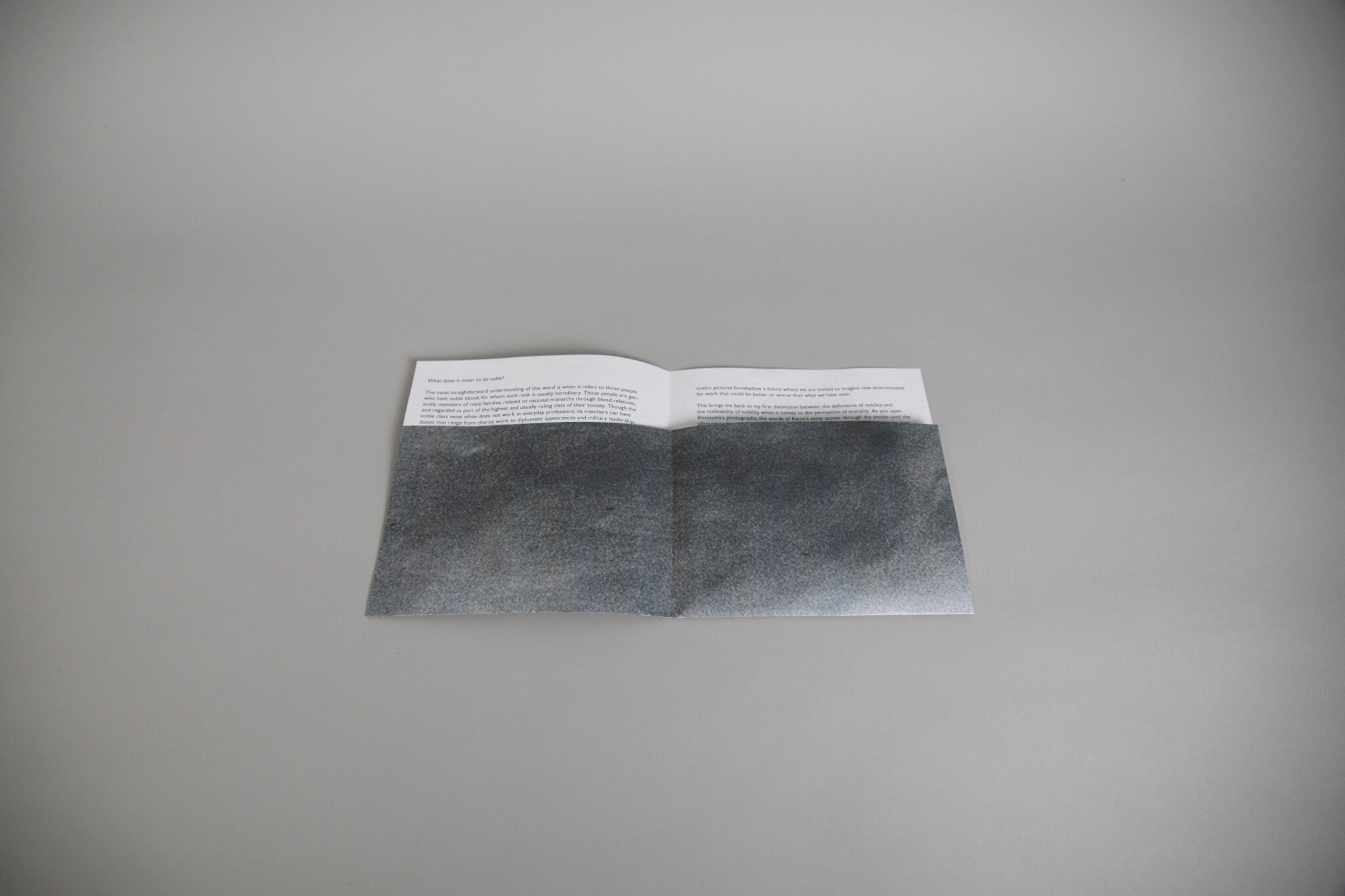
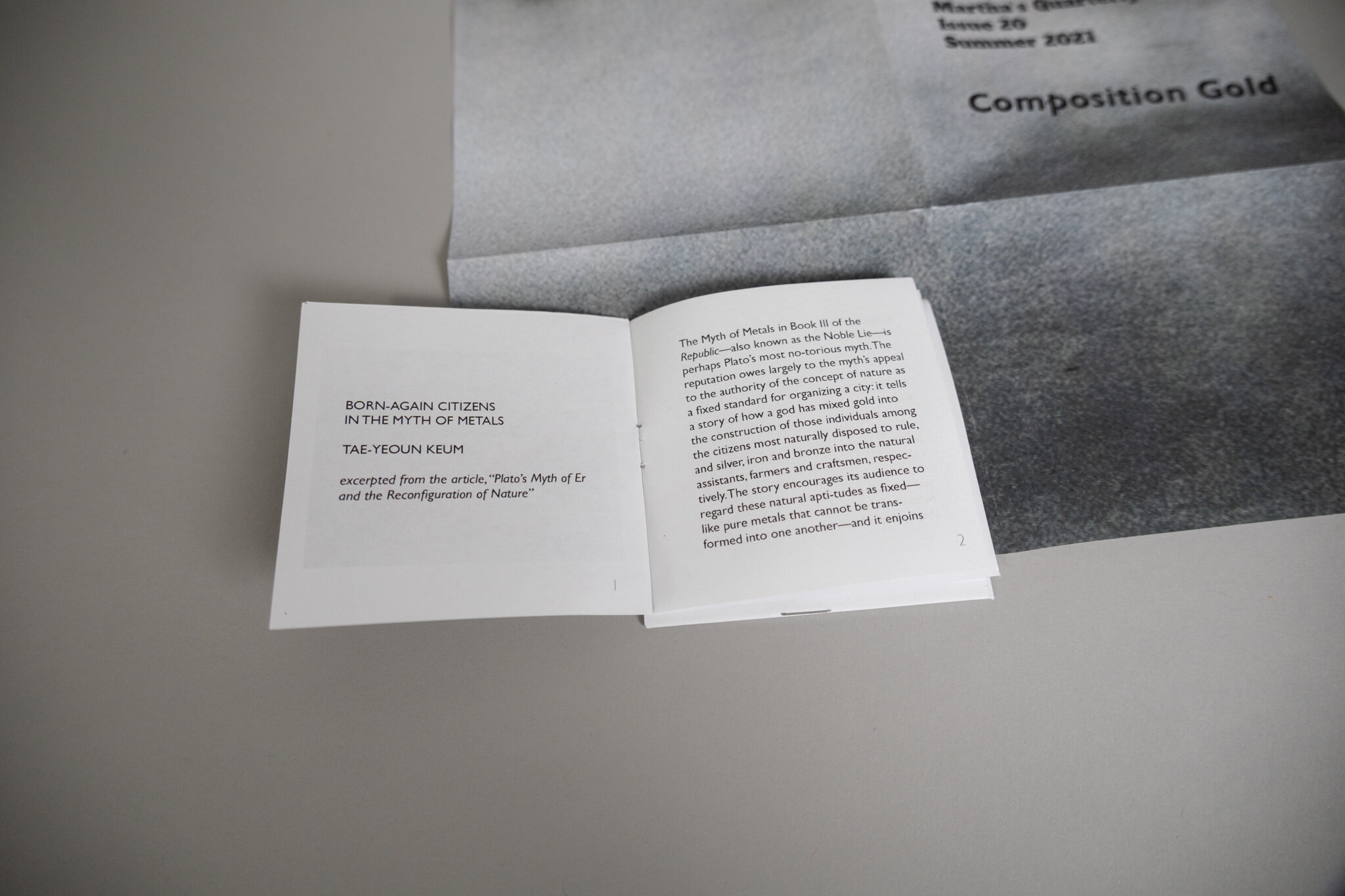
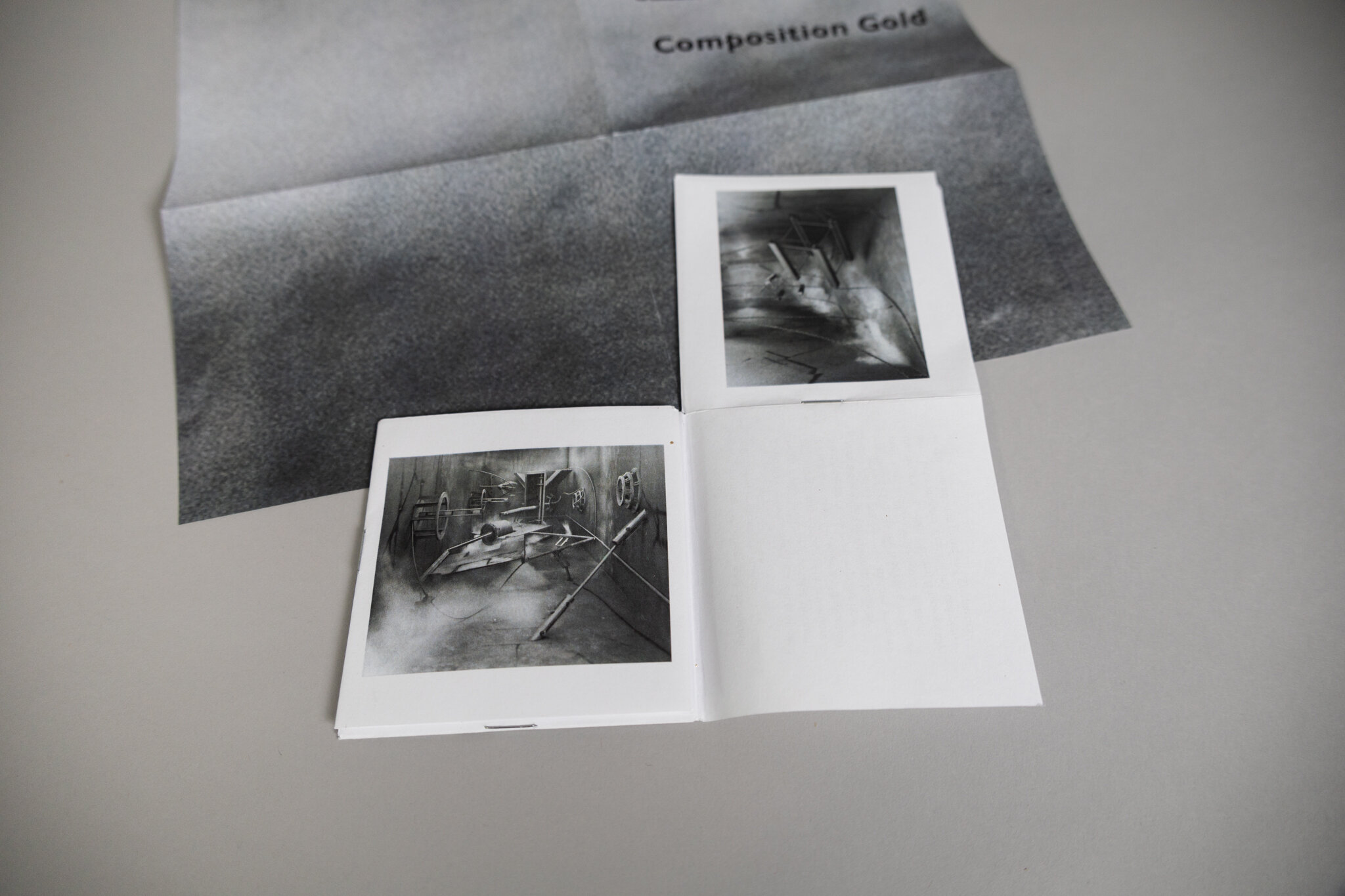
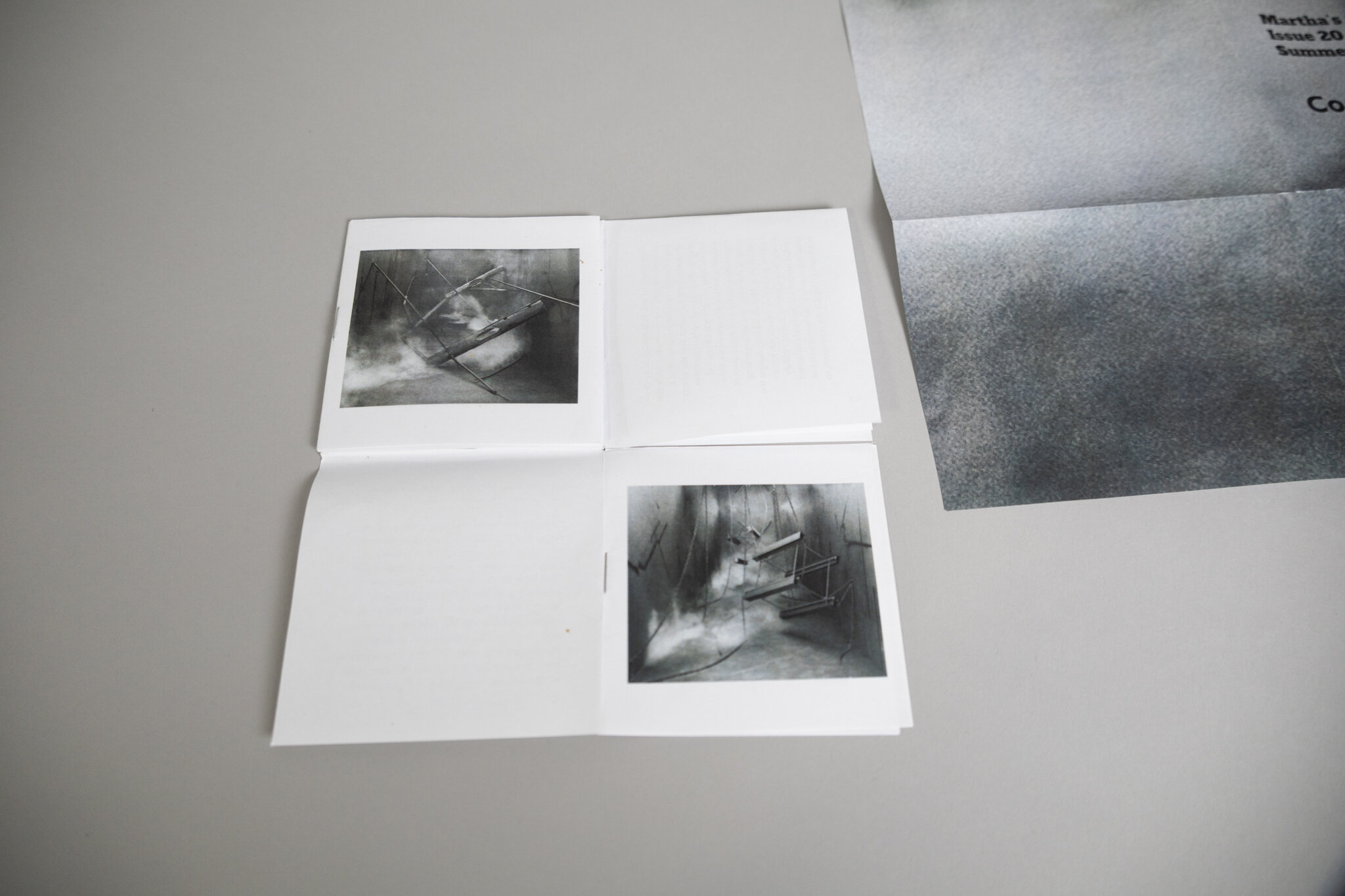

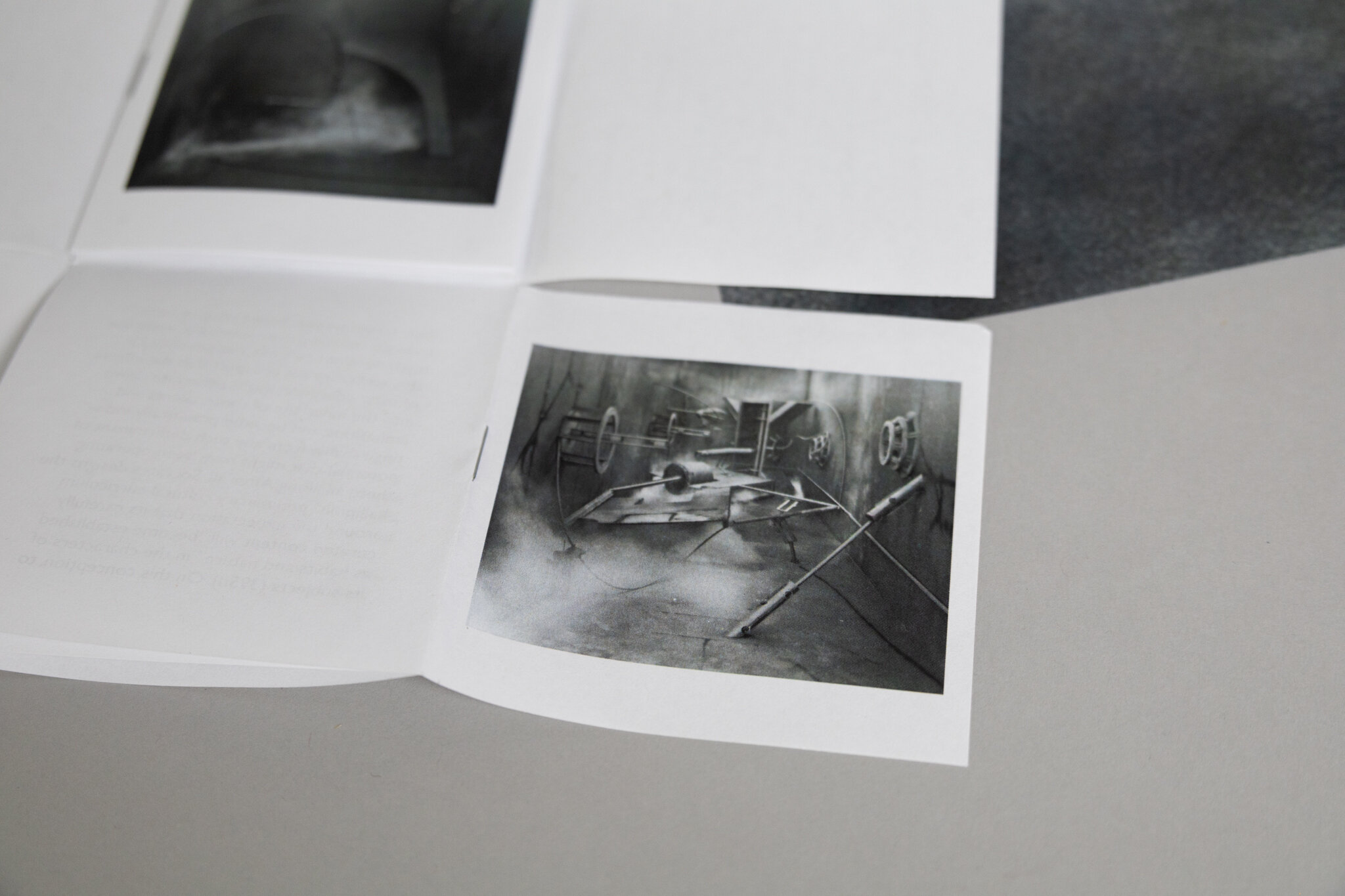

Martha's Quarterly
Issue 20
Summer 2021
Composition Gold
6” x 6”
Martha's Quarterly, Issue 20, Summer 2021, Composition Gold
About the contributors:
Tae-Yeoun Keum is a political theorist teaching at the University of California, Santa Barbara. Her research focuses on ancient political theory, German social thought, and the symbolic dimensions of politics.Rodrigo Valenzuela (b.Santiago, Chile 1982) lives and works in Los Angeles, CA, where he is the Assistant Professor and Head of the Photography Department at UCLA. Valenzuela has been awarded the 2021 Guggenheim Fellowship in Photography and Smithsonian Artist Research Fellowship; Joan Mitchell award for painters and sculptors; Art Matters Foundation grant; and Artist trust Innovators Award.
What does it mean to be noble?
The most straightforward understanding of this word is when it refers to those people who have noble blood, for whom such rank is usually hereditary. Those people are generally members of royal families, related to national monarchs through blood relations, and regarded as part of the highest and usually ruling class of their society. Though the noble class most often does not work in everyday professions, its members can have duties that range from charity work to diplomatic appearances and military leadership. They are usually expected to behave with a certain visible presentation of elegance and dignity; this is why stories like Prince Andrew partying with underage girls with Jeffrey Epstein are enticing to the public and a catastrophe for Buckingham Palace’s public relations, as well as why royal weddings can draw enormous virtual crowds.
This idea of etiquette is related to the second, more fluid, and more complicated understanding of the word noble, which means to show or possess high moral principles and ideals. In some religious communities and various ethno-states, what is deemed moral is indisputable. And, for the most part, there are some principles—such as murder and theft—that are distinctly labeled as wrong across cultures, even within a diverse society that shares different values. But, it is within the more commonplace roles that humans play in our societies where what is noble becomes flexible and can, at times, even become exploitative.
This issue of Martha’s Quarterly, Issue 20, Summer 2021, Composition Gold, brings together an essay by classicist Tae-Yeoun Keum and photographs by artist Rodrigo Valenzuela to explore questions of nobility and class, labor and imagination, and fate and agency. I was inspired when I listened to someone talk about the noble lie, a kind of myth often told by the elite or ruling class of a society that is meant to maintain social harmony. In monarchies and caste system societies, the noble lie is essential to keeping people spread across different classes, in their place and seldom questioning their situation. Today, many democratic societies also use a noble lie that many accept: “meritocracy,” i.e. the idea that one is rewarded and can move between classes as a result of one’s hard work and talent.
In Tae-Yeoun Keum’s essay, she retells the story of the noble lie, which originated in Plato’s Republic and is popularly known as the Myth of Er. The most common, simple, and somewhat crass summary of this story is that men come into the world with metals mixed into their composition, and the value of these metals determines their class. Those composed of gold become part of the ruling elite, and other people who are composed of silver, iron, or bronze fill in the other roles of a society, such as farmers and laborers. This reading of the Myth of Er became notorious and was embraced by Nazis, as suggested in their national slogan “Blood and Soil.”
Keum’s essay presents a provocative and more complex interpretation of this story: she emphasizes the opening passage of the myth, where the moment of birth is defined. Unlike the common assumption that birth occurs when a baby emerges from their mother, the opening lines to the Myth of Er suggest that birth is an event that occurs after a person has completed a primary education. This, therefore, completely shifts the notion that people are destined to certain classes by a natural selection; rather, it puts the Myth of Er more intimately in discourse with the idea of a meritocracy.
The paper that this introduction is printed on includes a zoomed-in moment of smoke that threads Rodrigo Venezuela’s photographs. Enclosed in this paper fold is another piece of paper that presents four of Venezuela’s fantastic photographs, featuring geometric sculptures suspended, dangling, and finding balance in a space smudged with grey and the air infused with ever-present smoke. Is this smoke the steam of labor? Are the objects the leftover tools and sites of a place that laborers have left? Or are the objects proxies for laborers themselves, finding rest in an environment that is difficult to breathe in? On the one hand, the pictures conjure fantasies about the industrial age–the momentum of factories transforming metals into all kinds of useful objects that ultimately benefit the ruling or capitalist elite. But, in another way, and maybe simultaneously, Venezuela’s pictures foreshadow a future where we are invited to imagine new environments for work that could be better or worse than what we have seen.
This brings me back to my first distinction between the definitions of nobility and the malleability of nobility when it comes to the perception of morality. As you open Venezuela’s photographs, the words of Keum’s essay appear through the smoke until the silhouette of a silver laborer is seen hammering the ground. The “ground,” also the last page of the pamphlet, features a piece of composition gold, as if the silver man is trying to mine something that seems valuable but is actually a mixture of unspecial minerals. The way you open this book mimics a person's emergence from the moment of birth in Keum’s essay; considering that “birth” may occur after one’s primary education, Venezuela’s pictures present the place of one’s birth as a place of imagined labor. What does nobility mean to a laborer? What do work and merit mean to a hereditary ruling elite?
Our current pandemic and global geopolitical reality has brought to light how people shape gestures in an effort to appear noble, even when such actions or expressions may be shallow or even malicious. On August 30, 2021, the United States Armed Forces finished their withdrawal from Afghanistan, an act that was framed by President Biden in his speech the following day as an “extraordinary success.” But this language does not mirror the vast skepticism of the U.S.’s withdrawal method and its overall project in the Middle East over the last several decades.
Composition Gold, the title of this issue, is metal leaf that looks like gold but is actually made from a mixture of brass, copper, and zinc. It is used to illuminate the grand ceilings of esteemed buildings, such as train stations, banks, and government centers. It is used as a display of nobility and “extraordinary success.”
- Tammy Nguyen, Editor-in-Chief
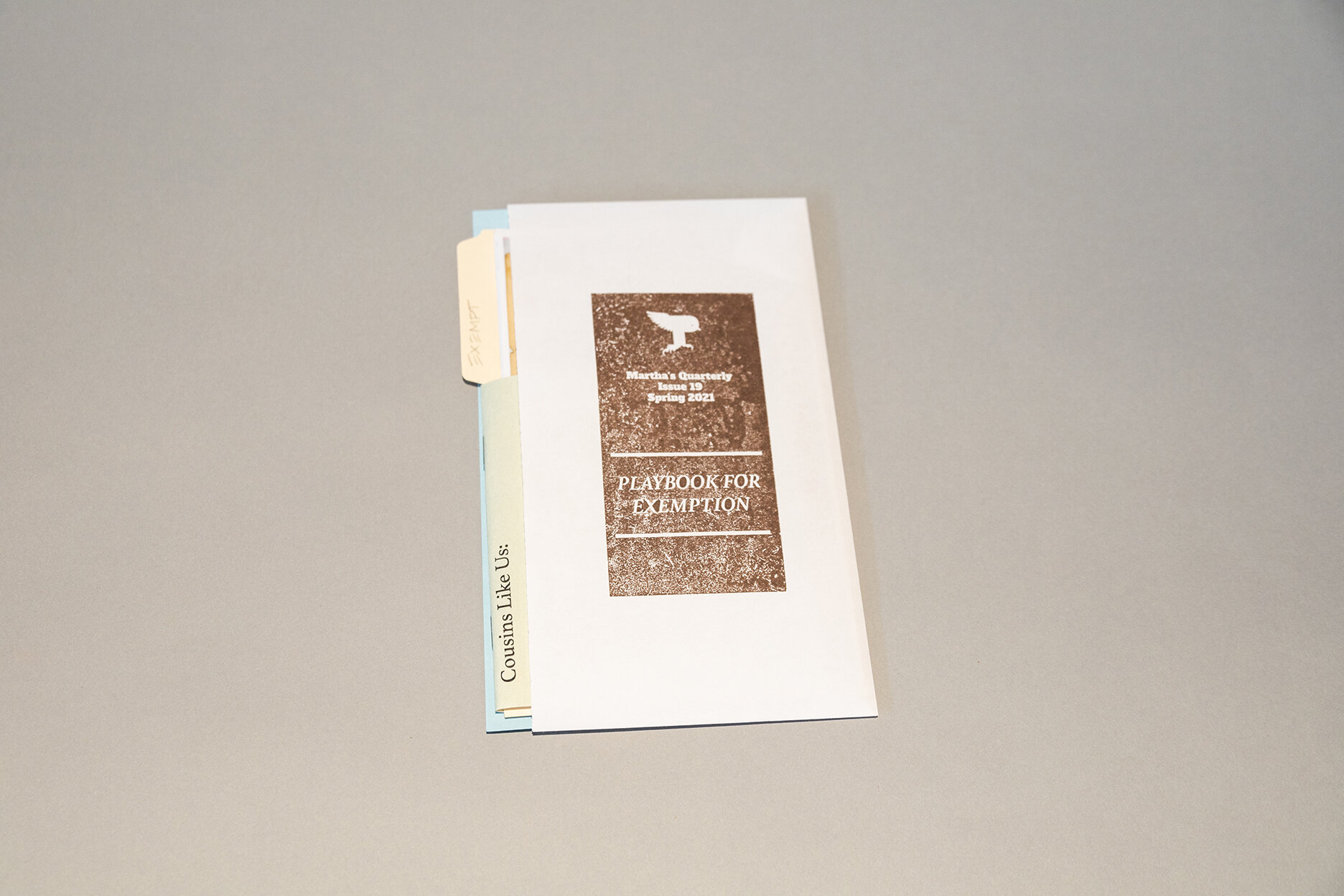
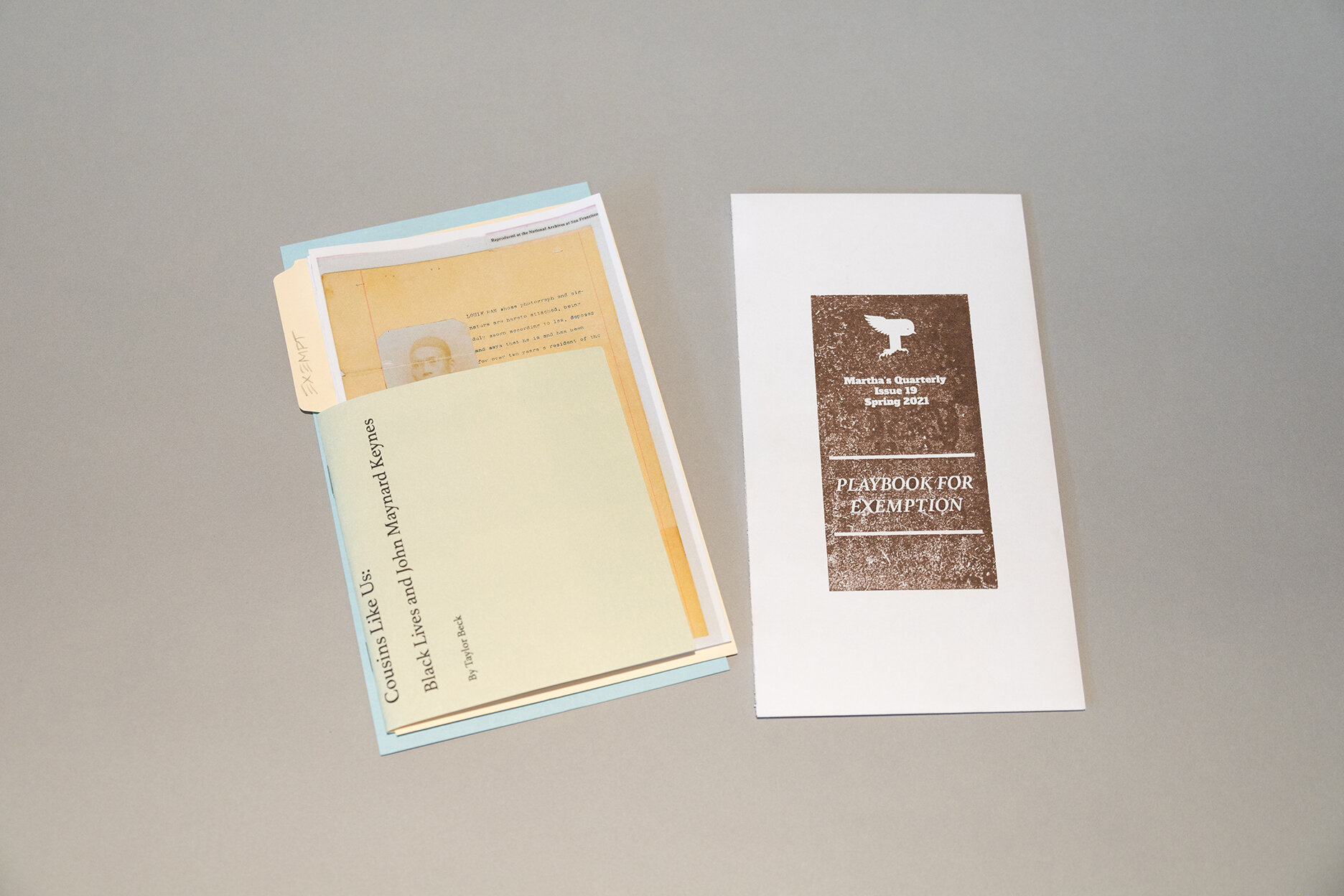
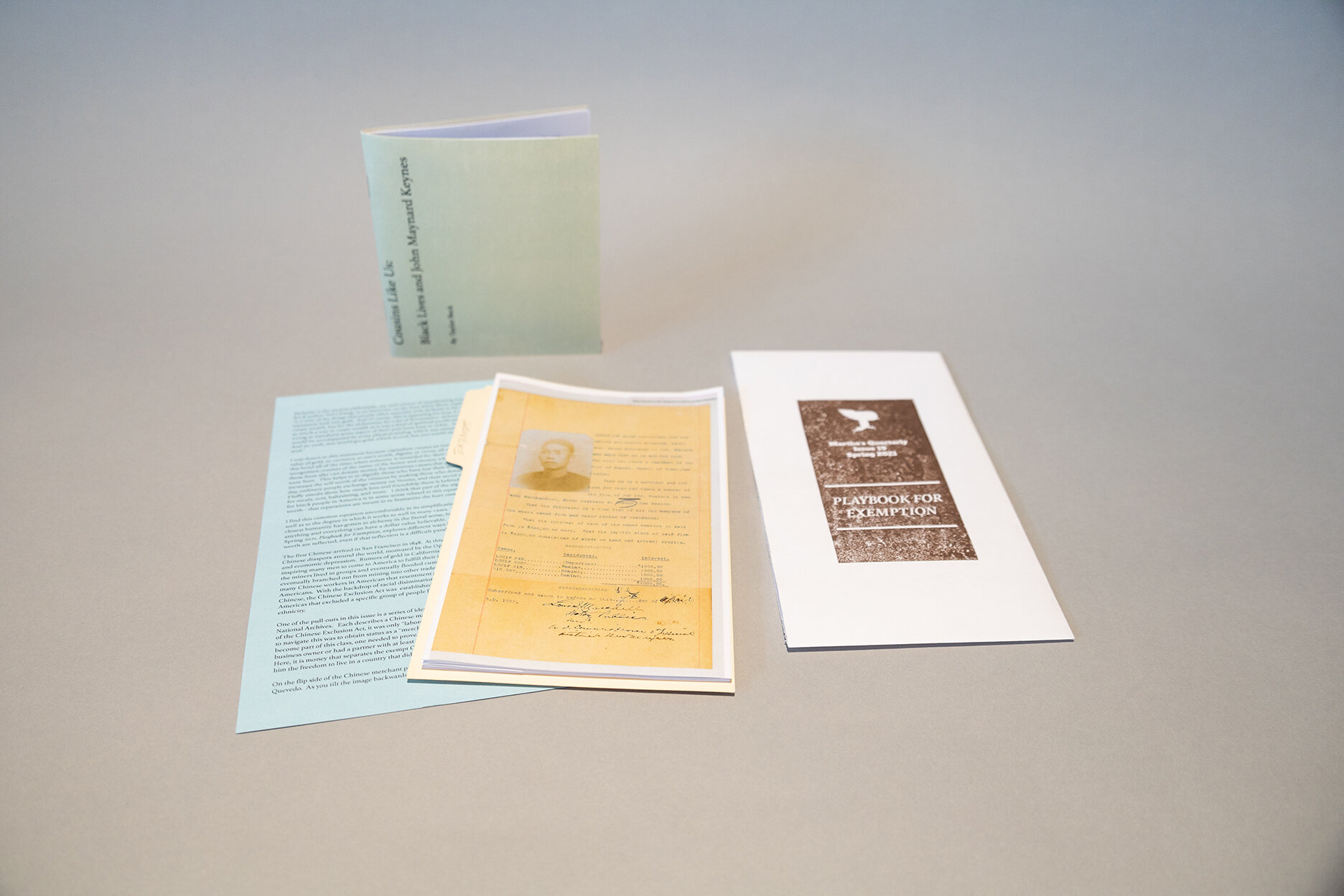
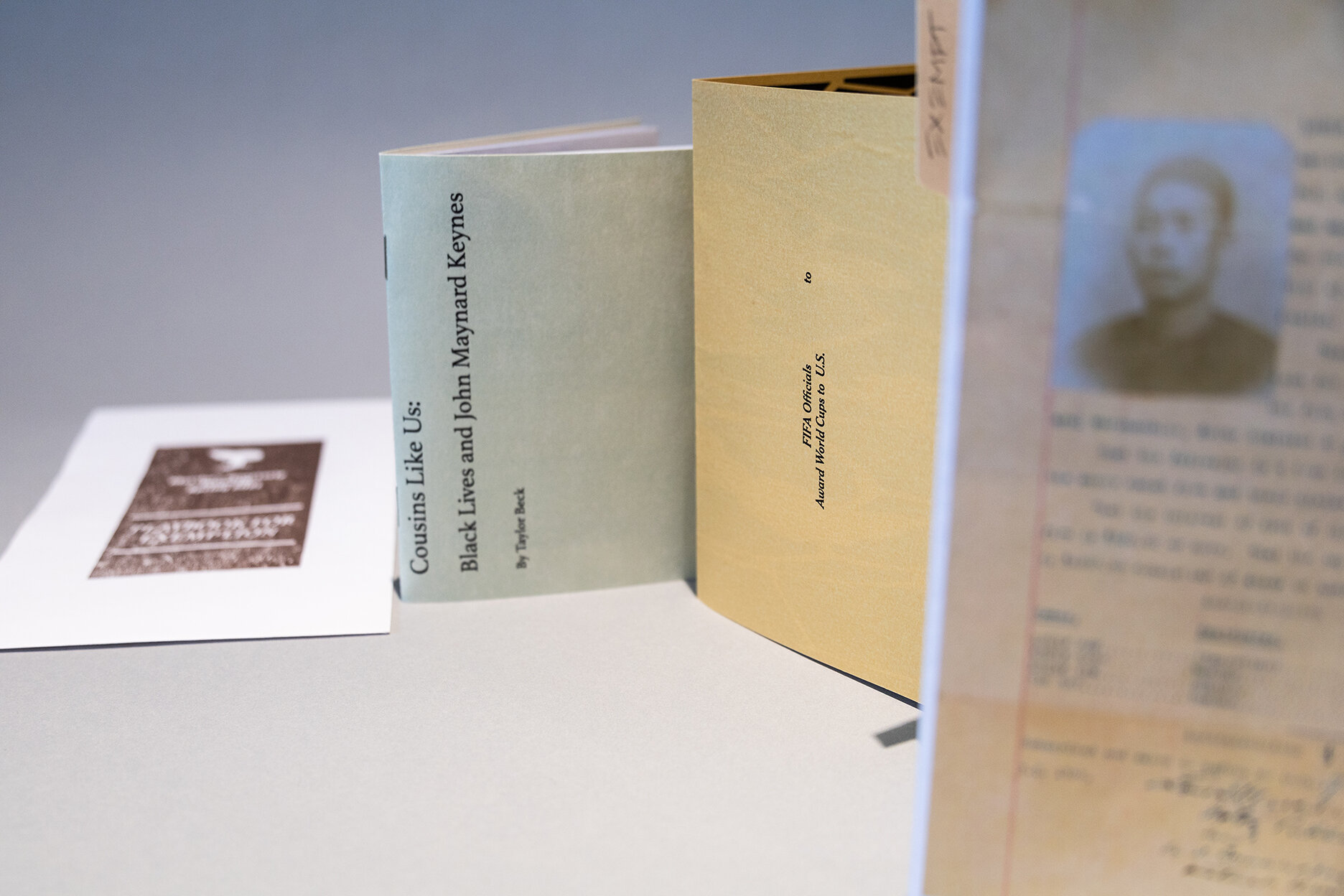
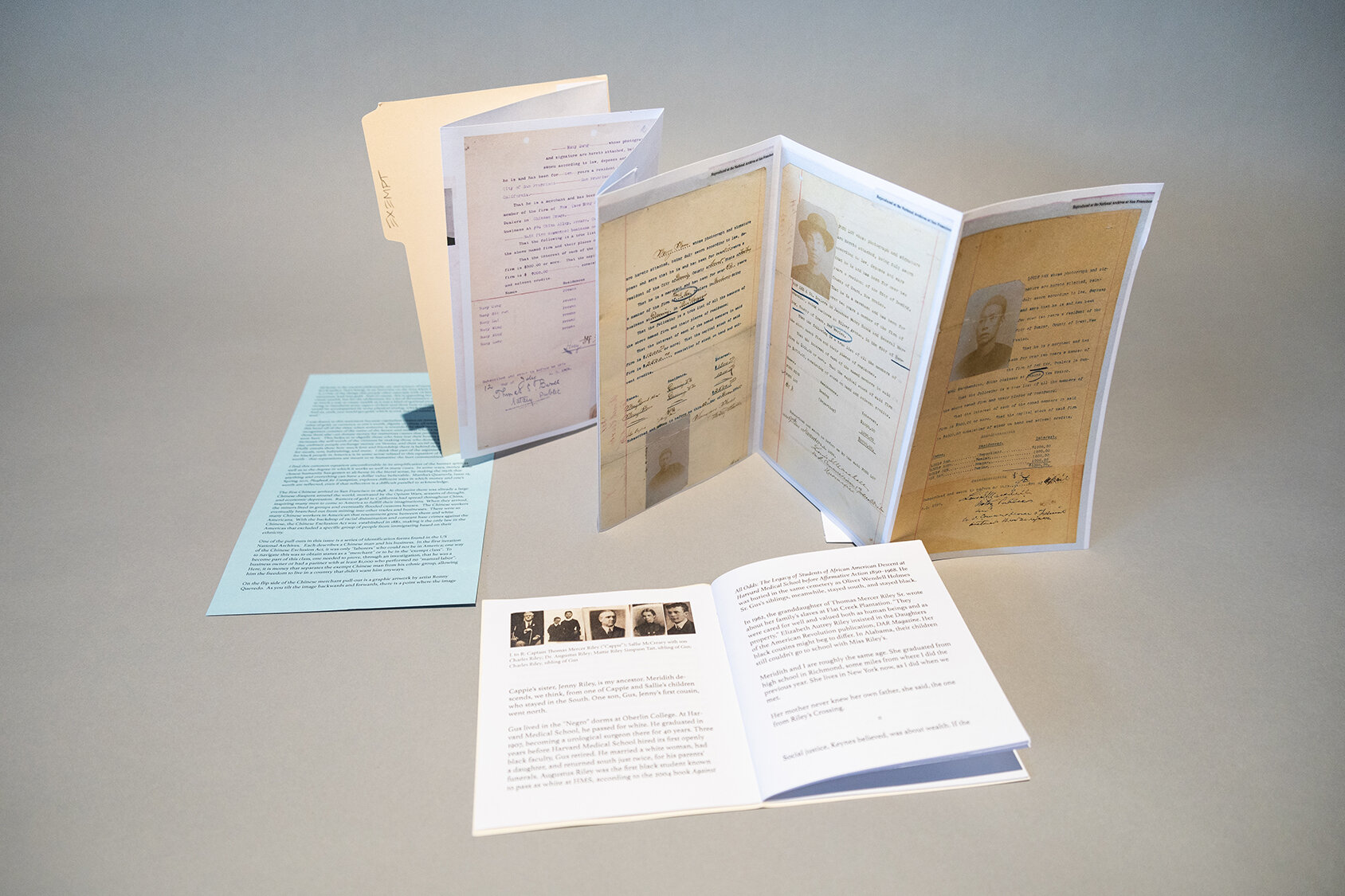
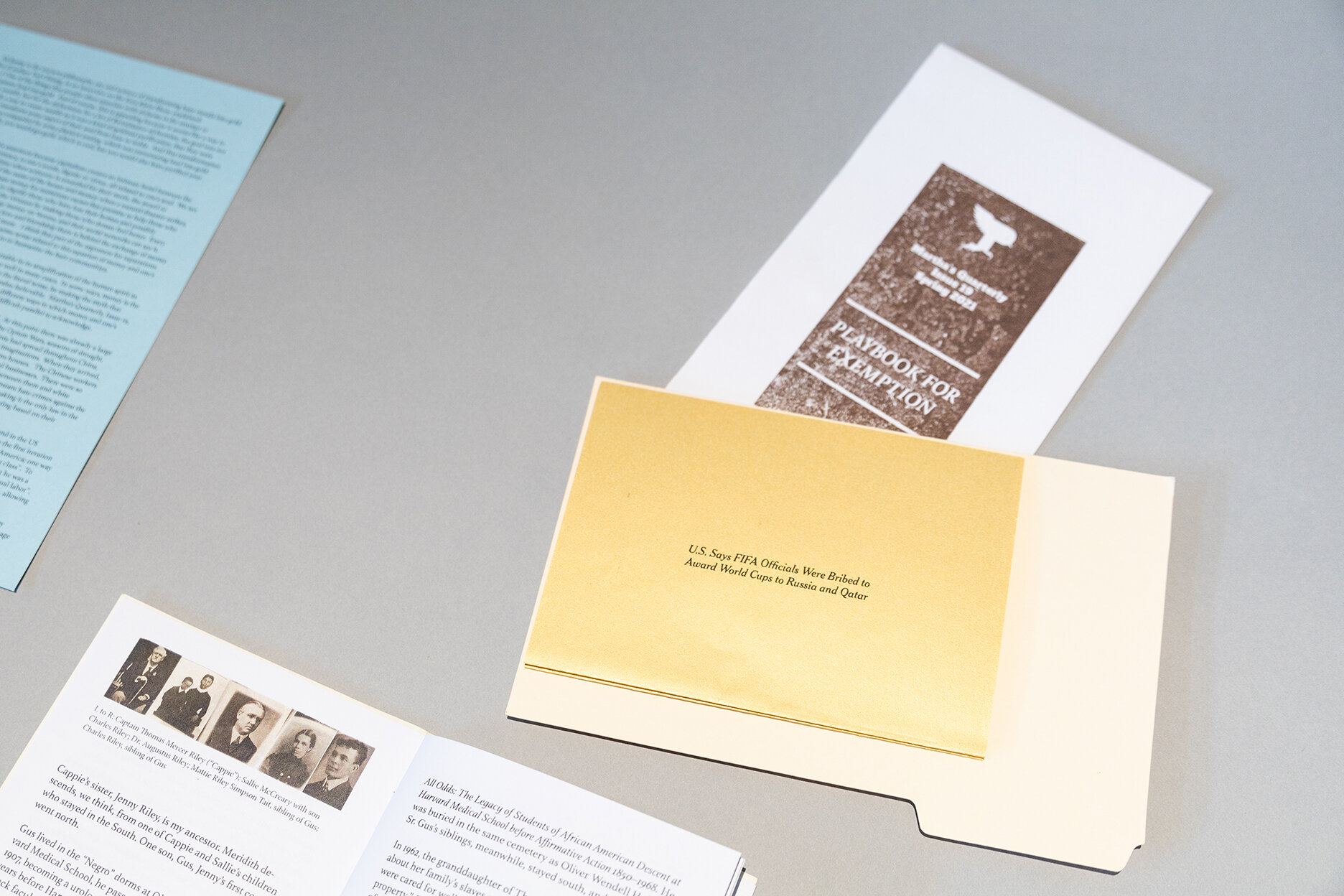
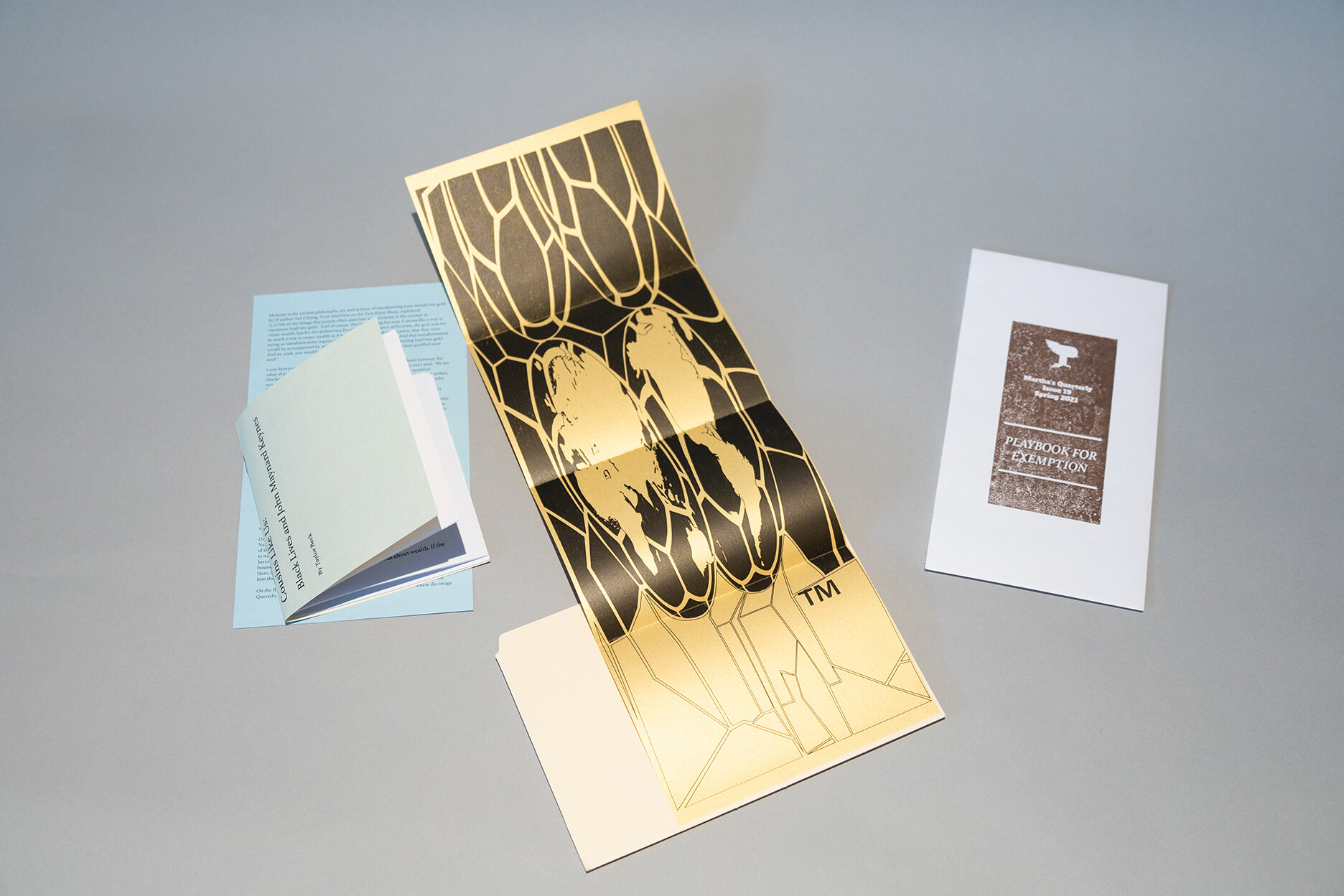

Martha's Quarterly
Issue 19
Spring 2021
Playbook for Exemption
8.5” x 5”
About the contributors:
Taylor Beck is a writer & a teacher based in Westport, CT. His work has appeared in The Atlantic, The L.A. Review of Books, The Washington Post and other publications.
Ronny Quevedo’s artistic practice is an examination of the vernacular languages and aesthetic forms generated by displacement, migration, and resilience.
Alchemy is the ancient philosophy, art, and science of transforming base metals into gold. Sci-fi author Ted Chiang, in an interview on the Ezra Klein Show, explained:
“[...] One of the things that people often associate with alchemy is the attempt to transmute lead into gold. And of course, this is appealing because it seems like a way to create wealth, but for the alchemists, for a lot of Renaissance alchemists, the goal was not so much a way to create wealth as it was a kind of spiritual purification, that they were trying to transform some aspect of their soul from base to noble. And that transformation would be accompanied by some physical analog, which was transmuting lead into gold. And so, yeah, you would get gold, which is cool, but you would also have purified your soul.”
I was drawn to this statement because capitalism creates an intimate bond between the value of gold, or currency, to one's worth, dignity or virtue, all related to one’s soul. We see this bond all of the time: when someone is rewarded for their merit, the award or recognition consists of the name of the honor and money; when a natural disaster strikes, those from afar can donate money for numerous causes that promise to help those who were hurt. This helps to re-dignify those who have lost their homes and possibly increases the self-worth of the virtuous by making those who donate feel better. Every day, ordinary people exchange money on Venmo, and their social networks can see it. Fluffy emojis show how much love and friendship there is behind the exchange of money for meals, rent, babysitting, and more. I think that part of the argument for reparations for black people in America is in some sense related to this equation of money and one’s worth-- that reparations are meant to re-humanize the hurt communities.
I find this common equation uncomfortable in its simplification of the human spirit as well as to the degree in which it works so well in many cases. In some ways, money is the closest humanity has gotten to alchemy in the literal sense, by making the myth that anything and everything can have a dollar value believable. Martha’s Quarterly, Issue 19, Spring 2021, Playbook for Exemption, explores different ways in which money and one’s worth are reflected, even if that reflection is a difficult parallel to acknowledge.
The first Chinese arrived in San Francisco in 1848. At this point there was already a large Chinese diaspora around the world, motivated by the Opium Wars, seasons of drought, and economic depression. Rumors of gold in California had spread throughout China, inspiring many men to come to America to fulfill their imaginations. When they arrived, the miners lived in groups and eventually flooded customs houses. The Chinese workers eventually branched out from mining into other trades and businesses. There were so many Chinese workers in American that resentment grew between them and white Americans. With the backdrop of racial disimination and constant hate crimes against the Chinese, the Chinese Exclusion Act was established in 1882, making it the only law in the Americas that excluded a specific group of people from immigrating based on their ethnicity.
One of the pull-outs in this issue is a series of identification forms found in the US National Archives. Each describes a Chinese man and his business. In the first iteration of the Chinese Exclusion Act, it was only “laborers” who could not be in America; one way to navigate this was to obtain status as a “merchant” or to be in the “exempt class”. To become part of this class, one needed to prove, through an investigation, that he was a business owner or had a partner with at least $1,000 who performed no “manual labor”. Here, it is money that separates the exempt Chinese man from his ethnic group, allowing him the freedom to live in a country that didn’t want him anyways.
On the flip side of the Chinese merchant pull-out is a graphic artwork by artist Ronny Quevedo. As you tilt the image backwards and forwards, there is a point where the image becomes two perfect soccer balls with a map of the world on it. This is the FIFA logo; soccer is one of the most emotionally charged sports in the world. During the World Cup season, you can see many people crying in exaltation or devastation on the streets of many cities around the globe. No other sport brings together as many people as the international fanfare of soccer. I think this unique sport, for whatever reason, is able to allow its fans to project their nation’s dignity: when they see their players play, their country becomes an extension of their personhood, an image worthy of pride.
Soccer and other sports in which people gamble harness the human spirit and its passions to money. Some fans gamble casually with friends; some gamble with dreams of sudden changes in fortune; some gamble to prove themselves. FIFA is a corrupt organization, energized with backdoor deals and bribery. A sport that holds so many people’s ideals for 90 minutes is kept alive by the dealings of greedy individuals and countries. The US was once upset about these backdoor dealings because they did not win the bid to host the 2022 World Cup; as a result, the US District Attorney charged FIFA with bribery. Money in soccer keeps the human spirit alive.
Finally, this Martha’s Quarterly also comes with an essay by Taylor Beck that originally appeared in the LA Times Review of Books last year. While the essay is a review of the book The Price of Peace by Zachary D. Carter, it is much more than simply a synopsis of the book that is about the economist John Maynard Keynes. Cold numbers and statistics can appear to be a safety net for arguments about human lives, dignity and even equity; however, questions of good and evil, justice and injustice, are not simple. Evil is contextual, often created by circumstances like economic inequality, as Keynes knew. Were the Americans who excluded the Chinese in the context of widespread poverty, the Gold Rush, and dreams of sudden changes in fortune necessarily evil? Is it inherently “good” to donate one’s money? Whose dignity is that really about? Money is, and has been, the base metal that we transform into humanity, whether for others or for ourselves.
– Tammy Nguyen
Editor-in-Chief
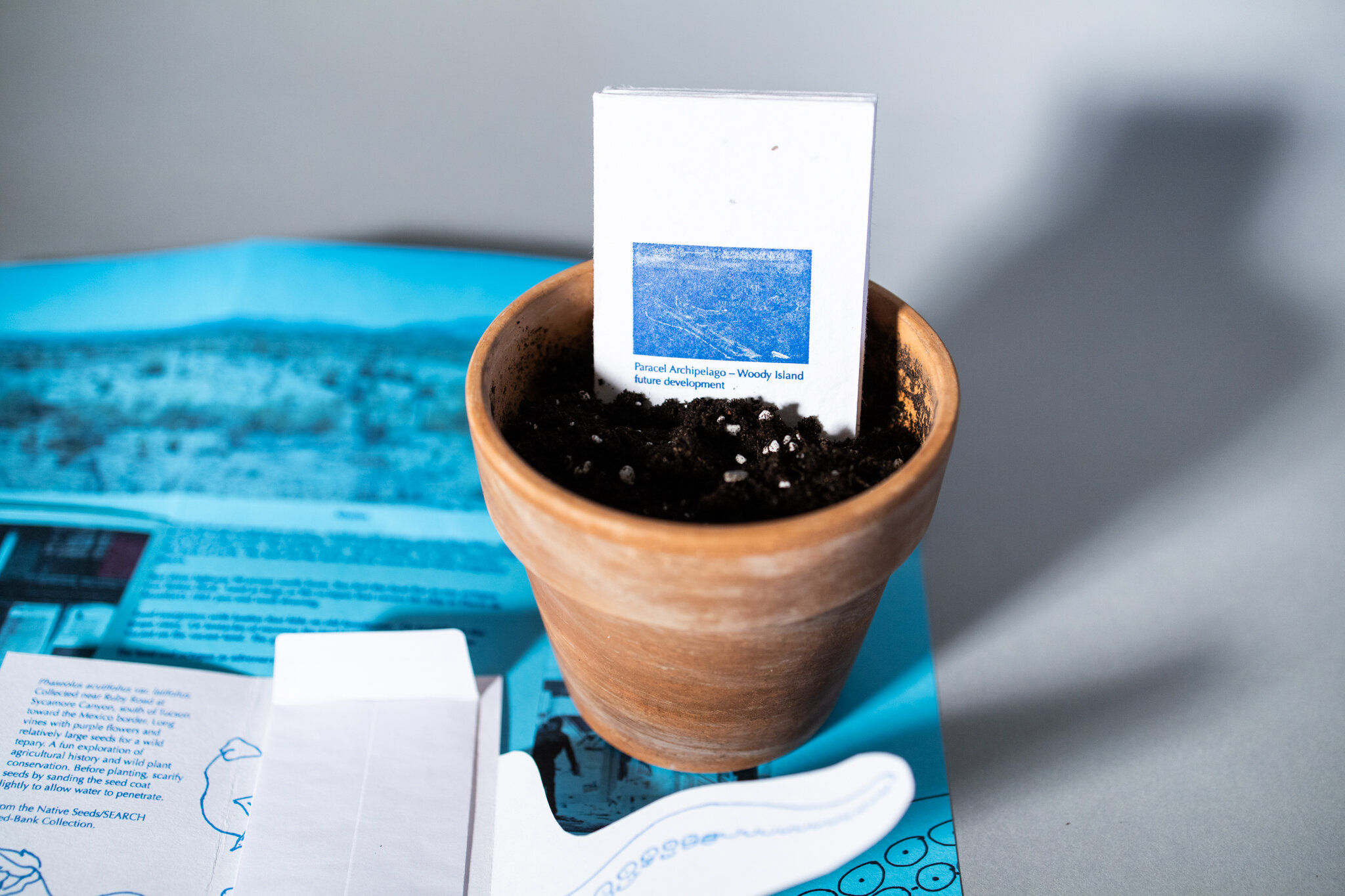
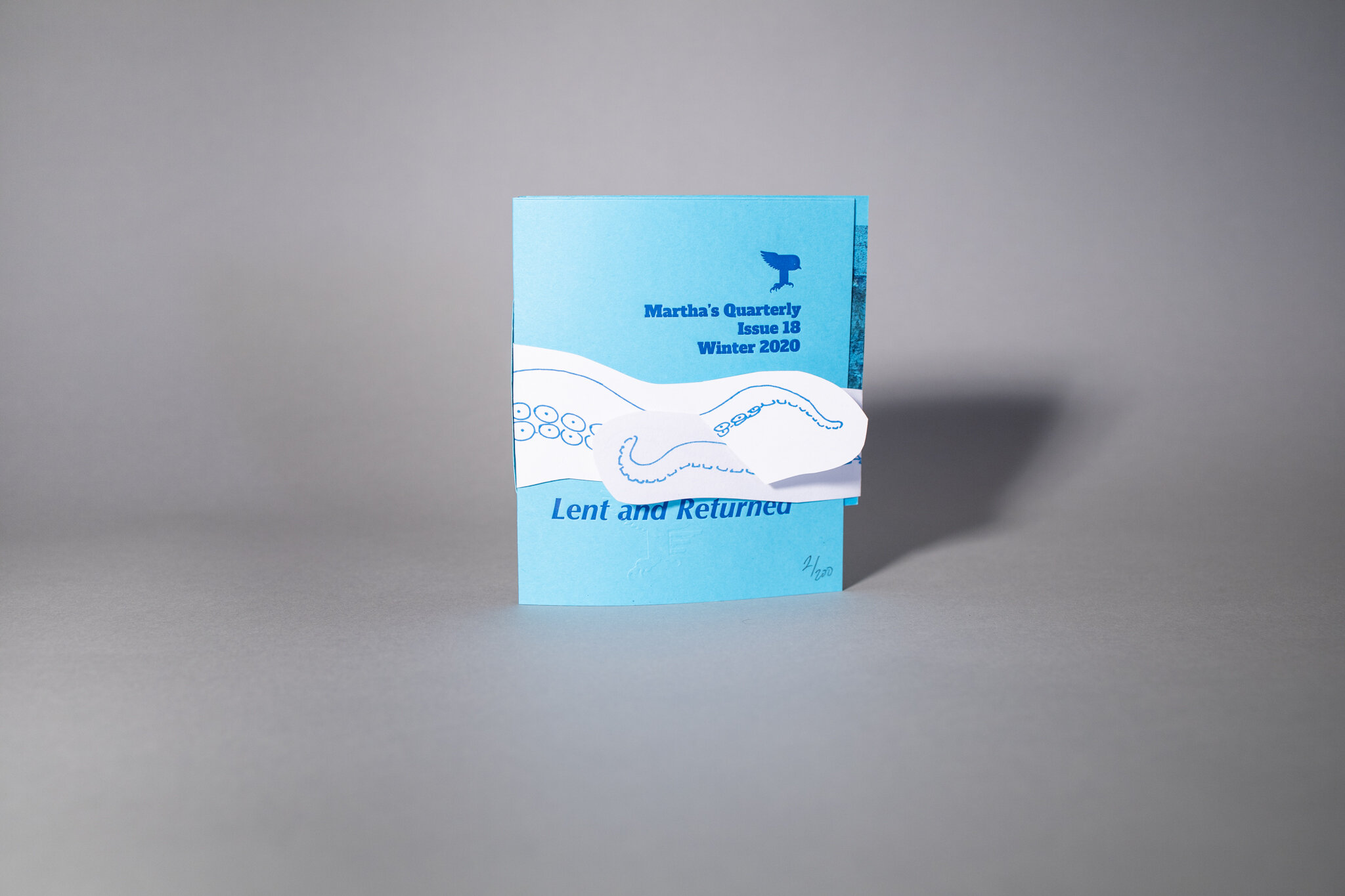
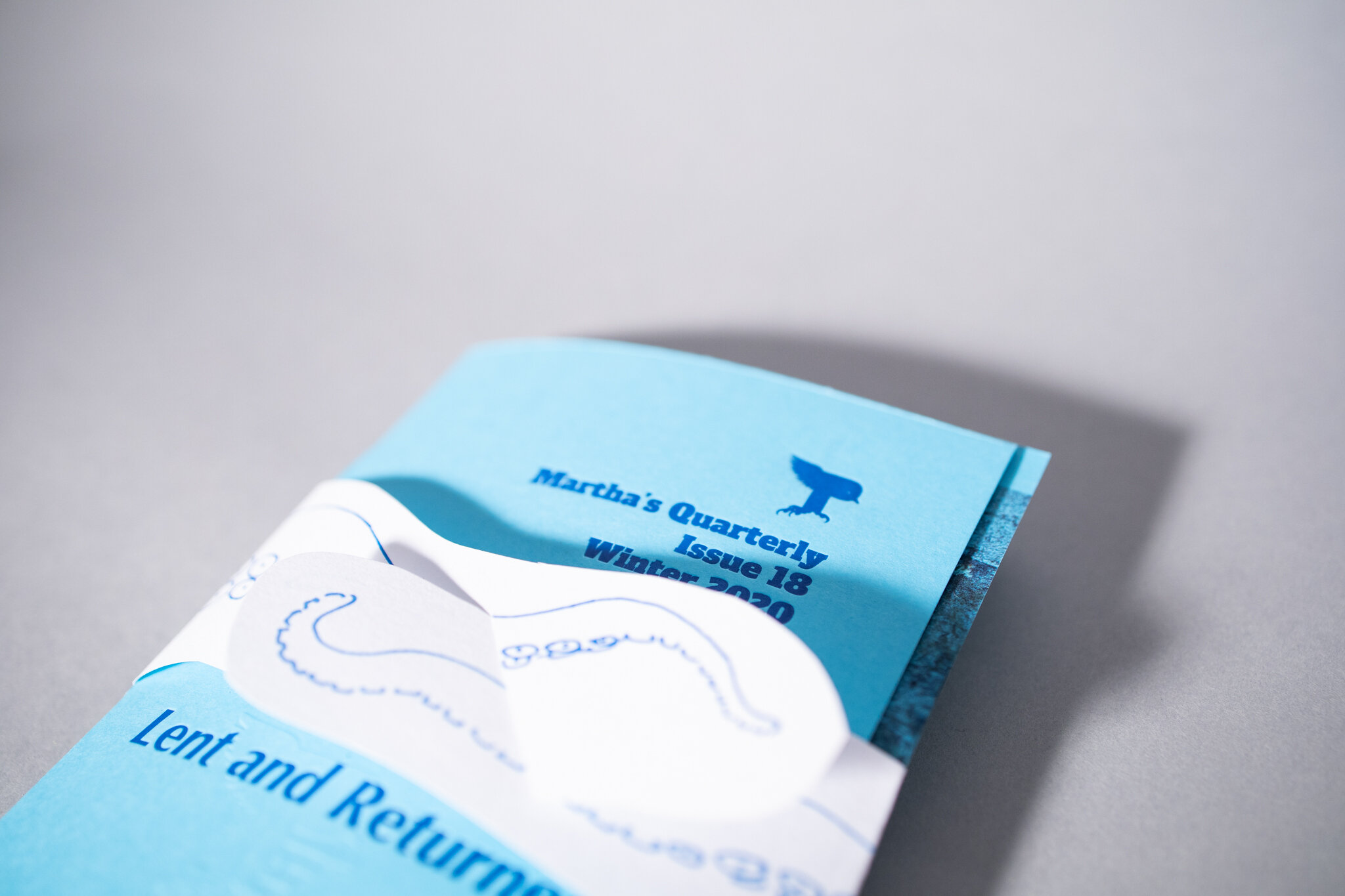
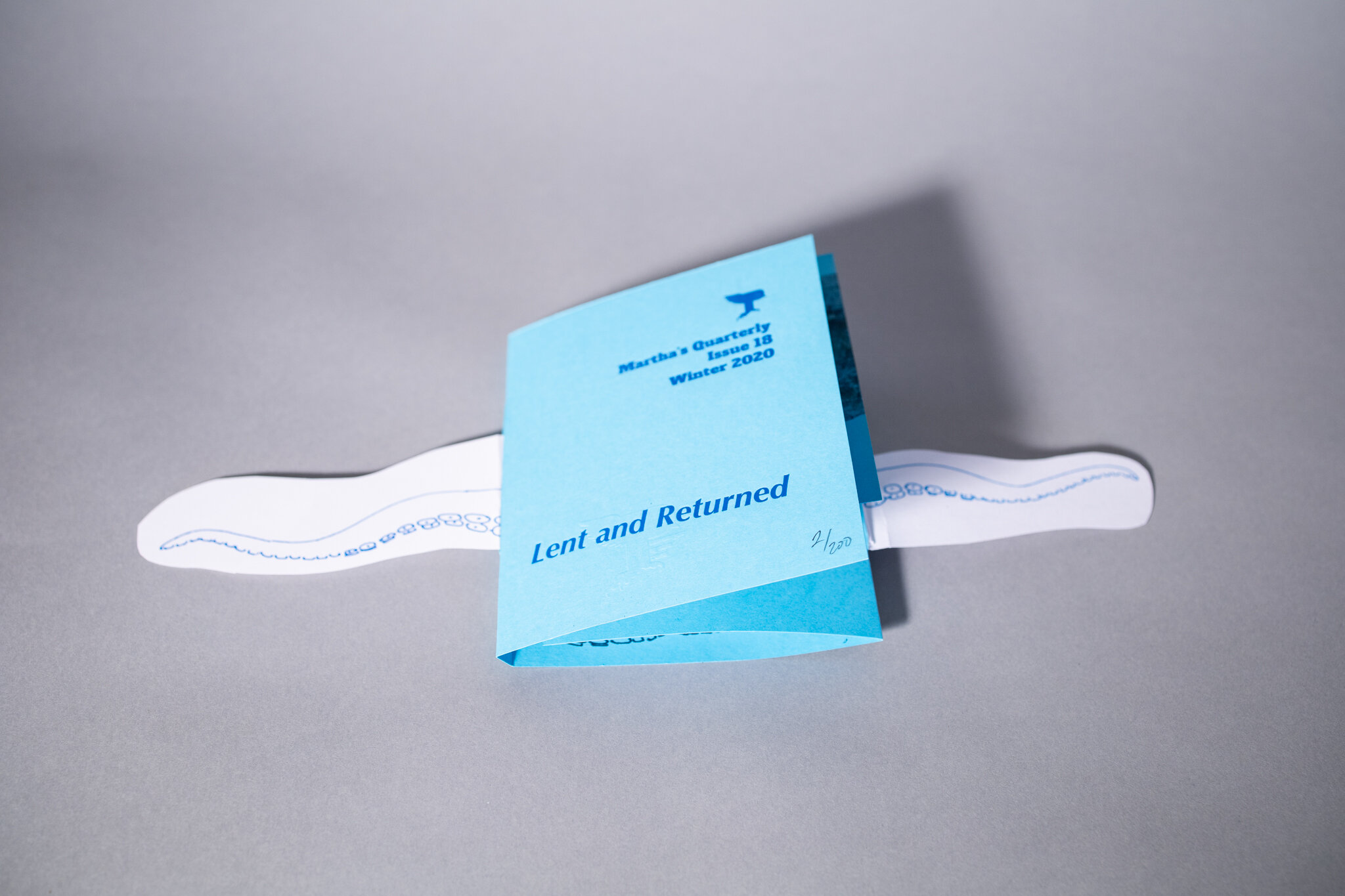
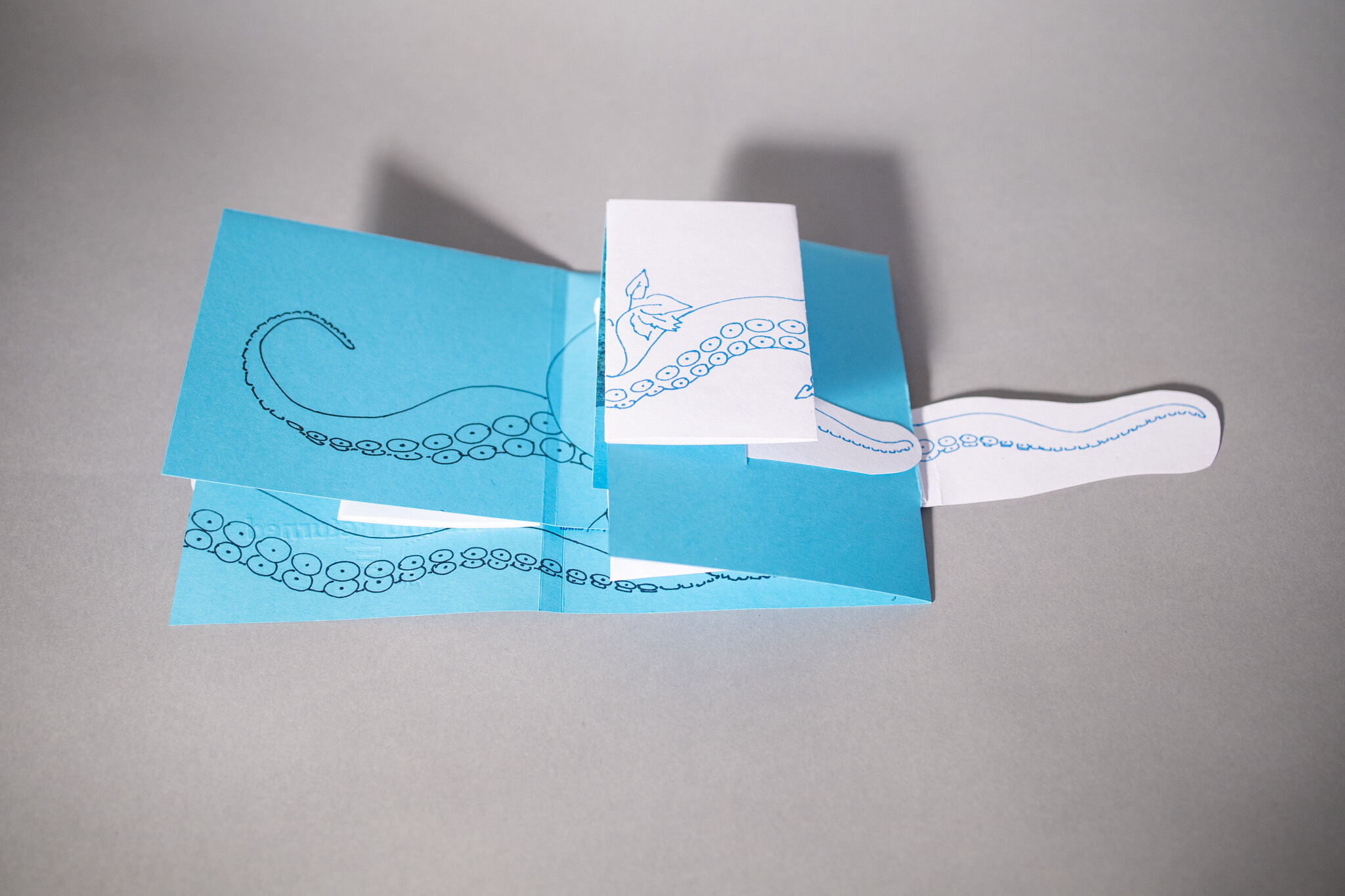

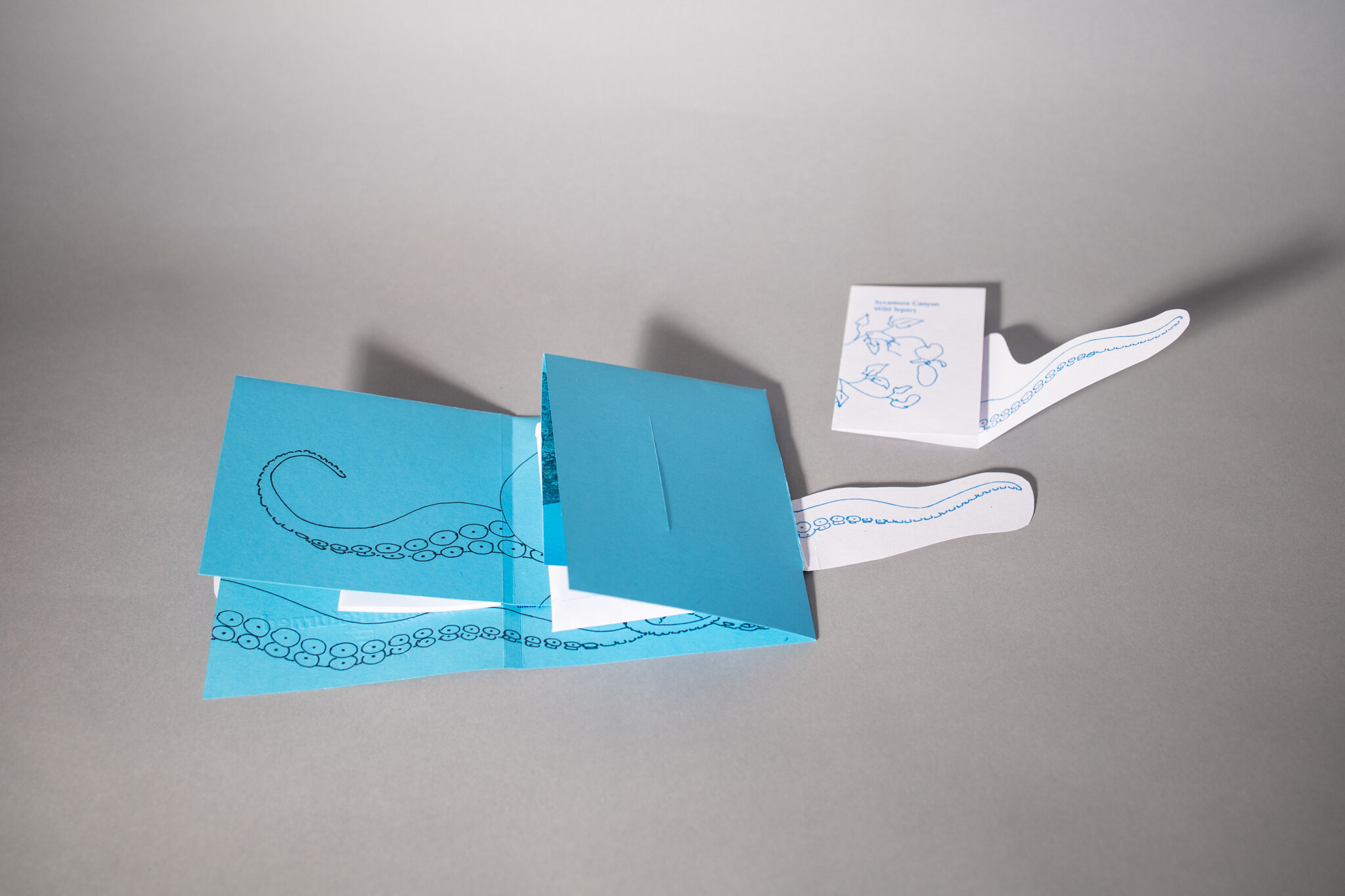
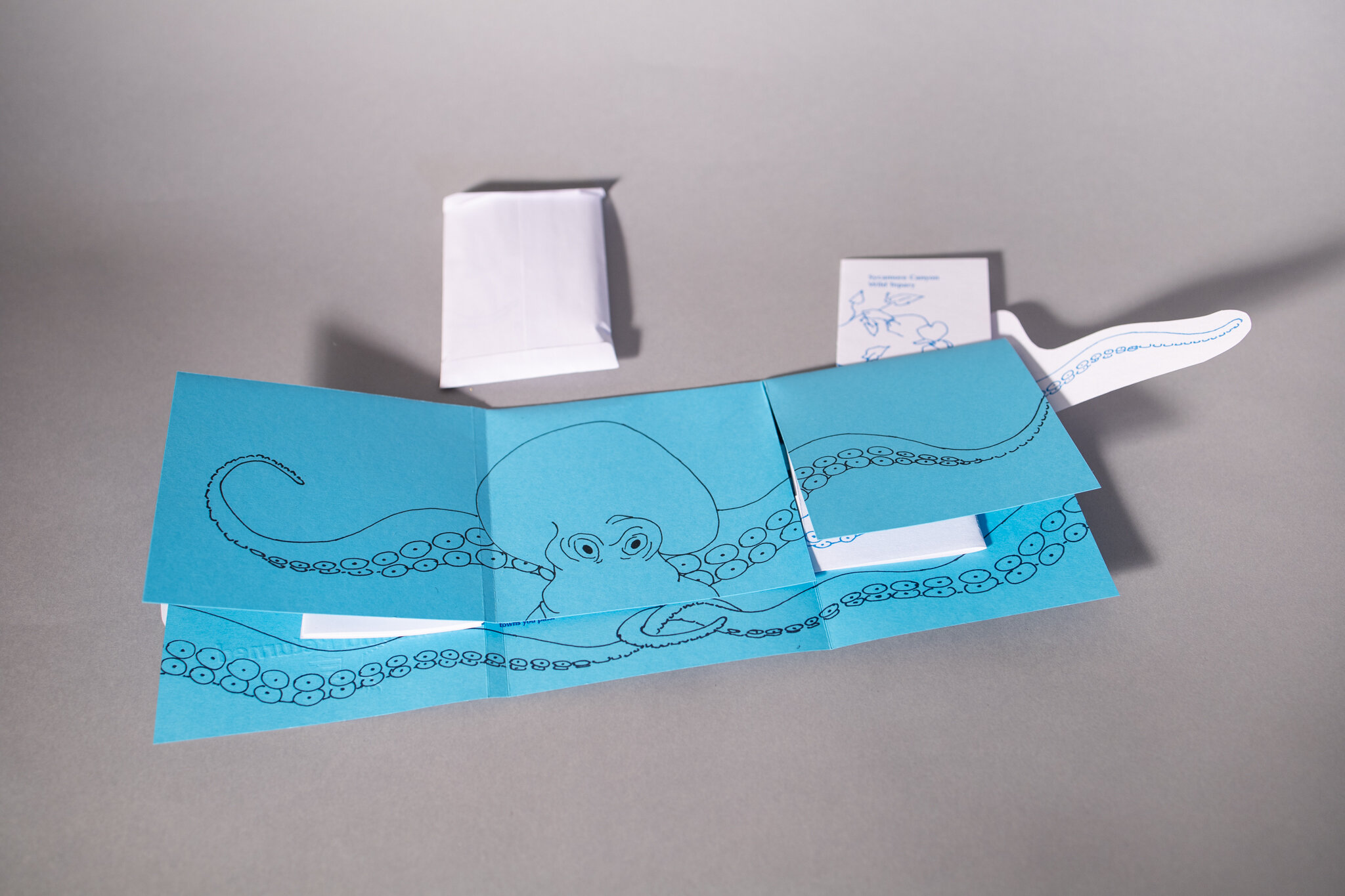
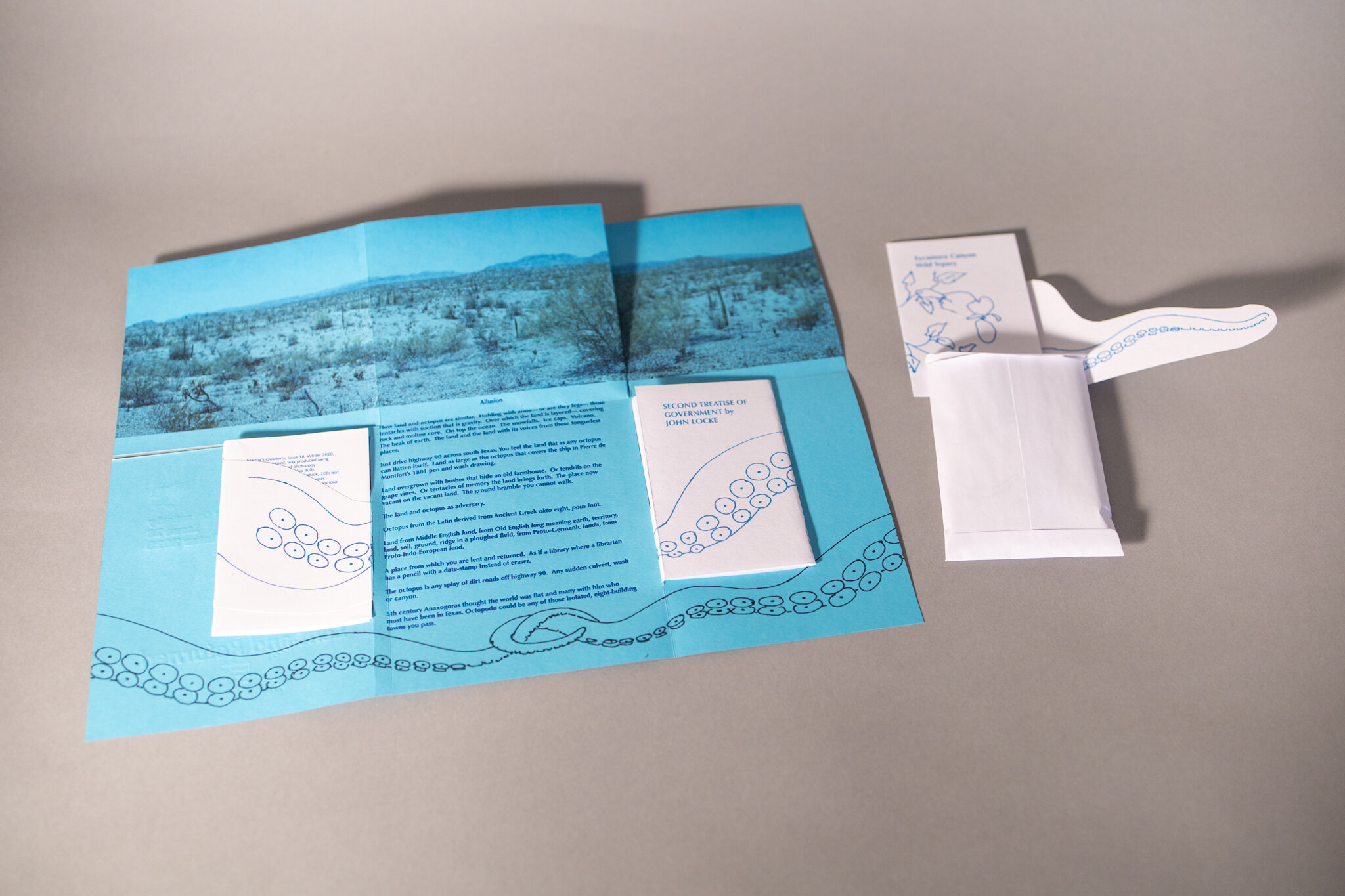
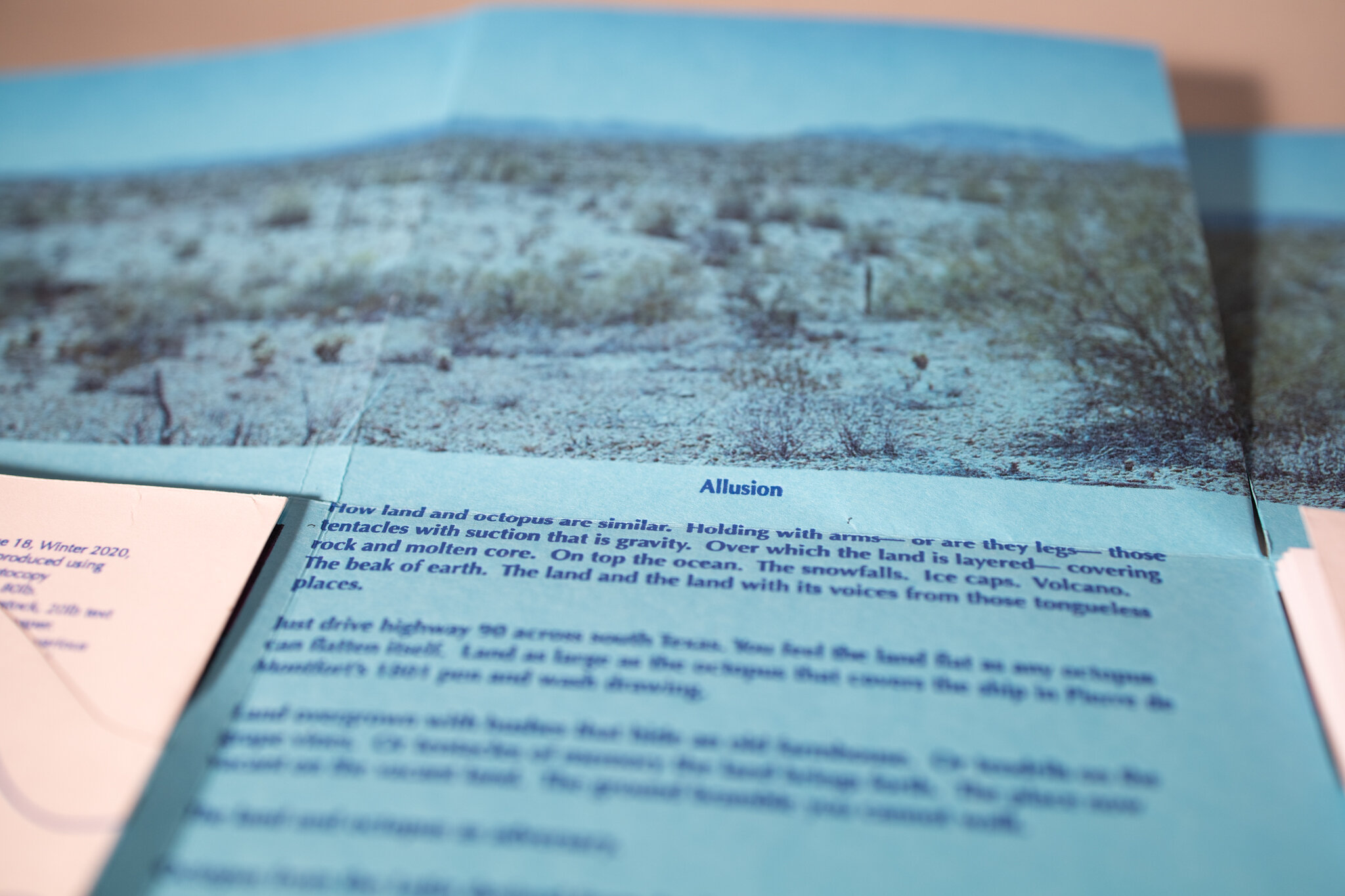
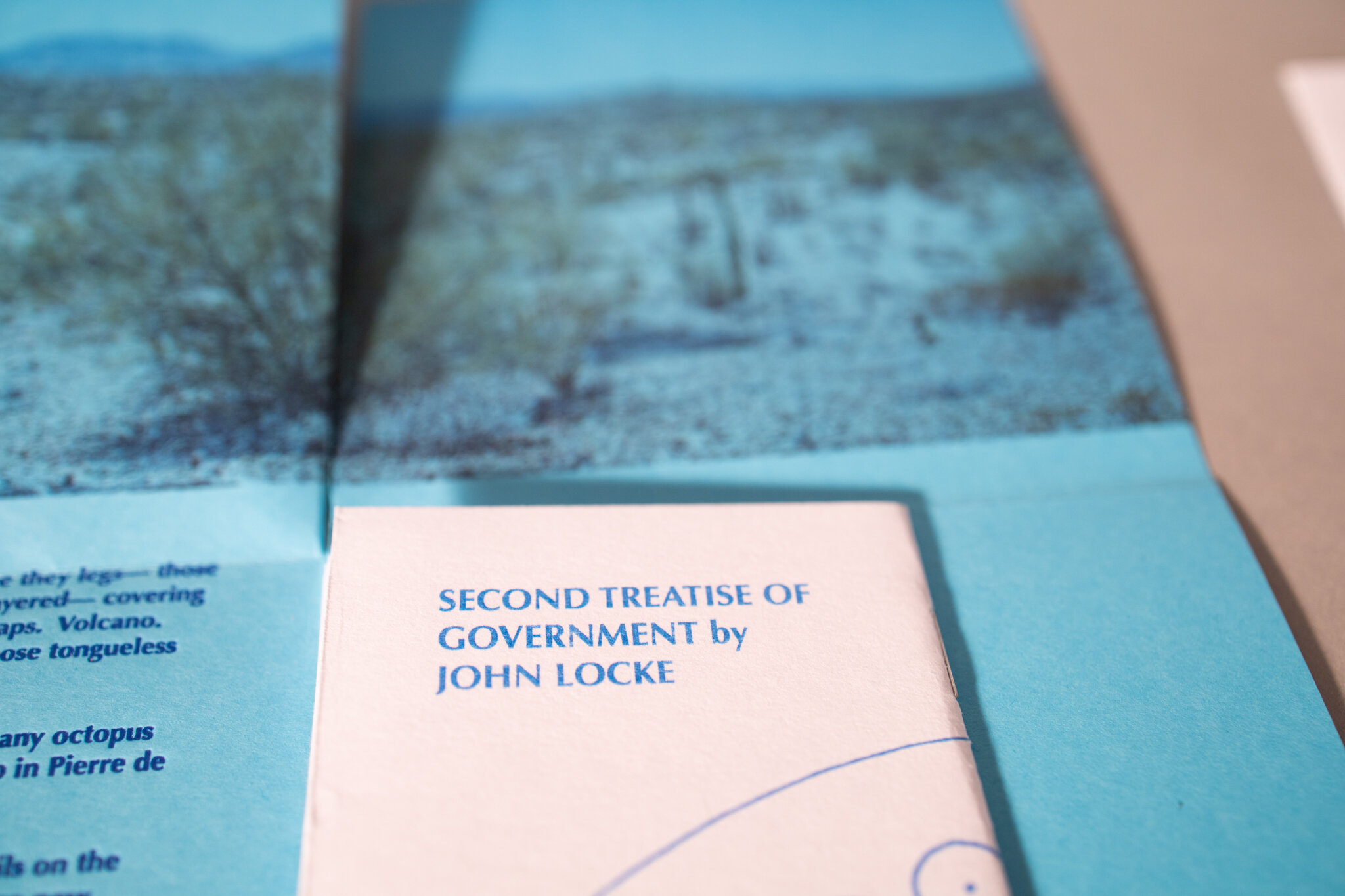
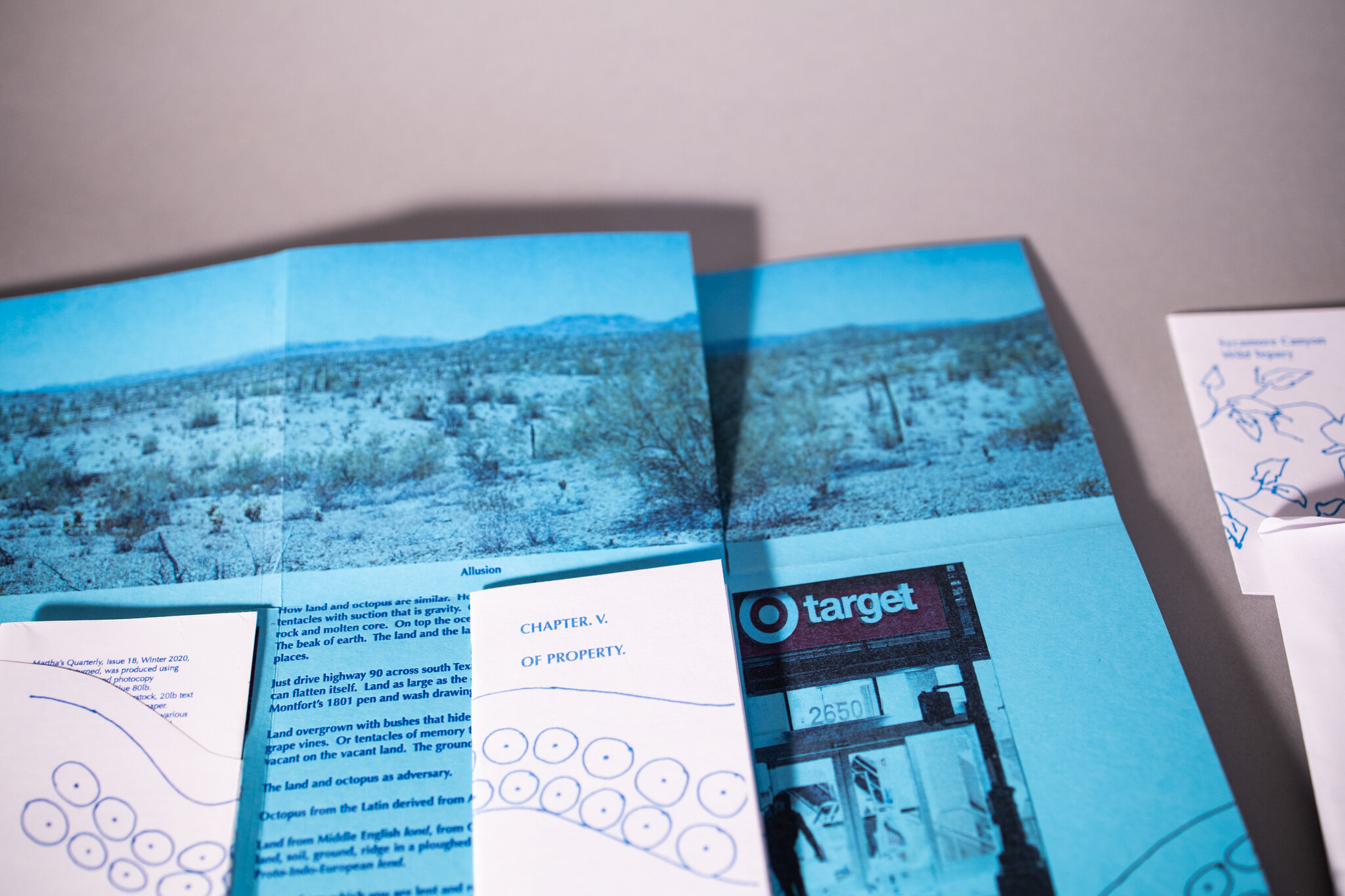
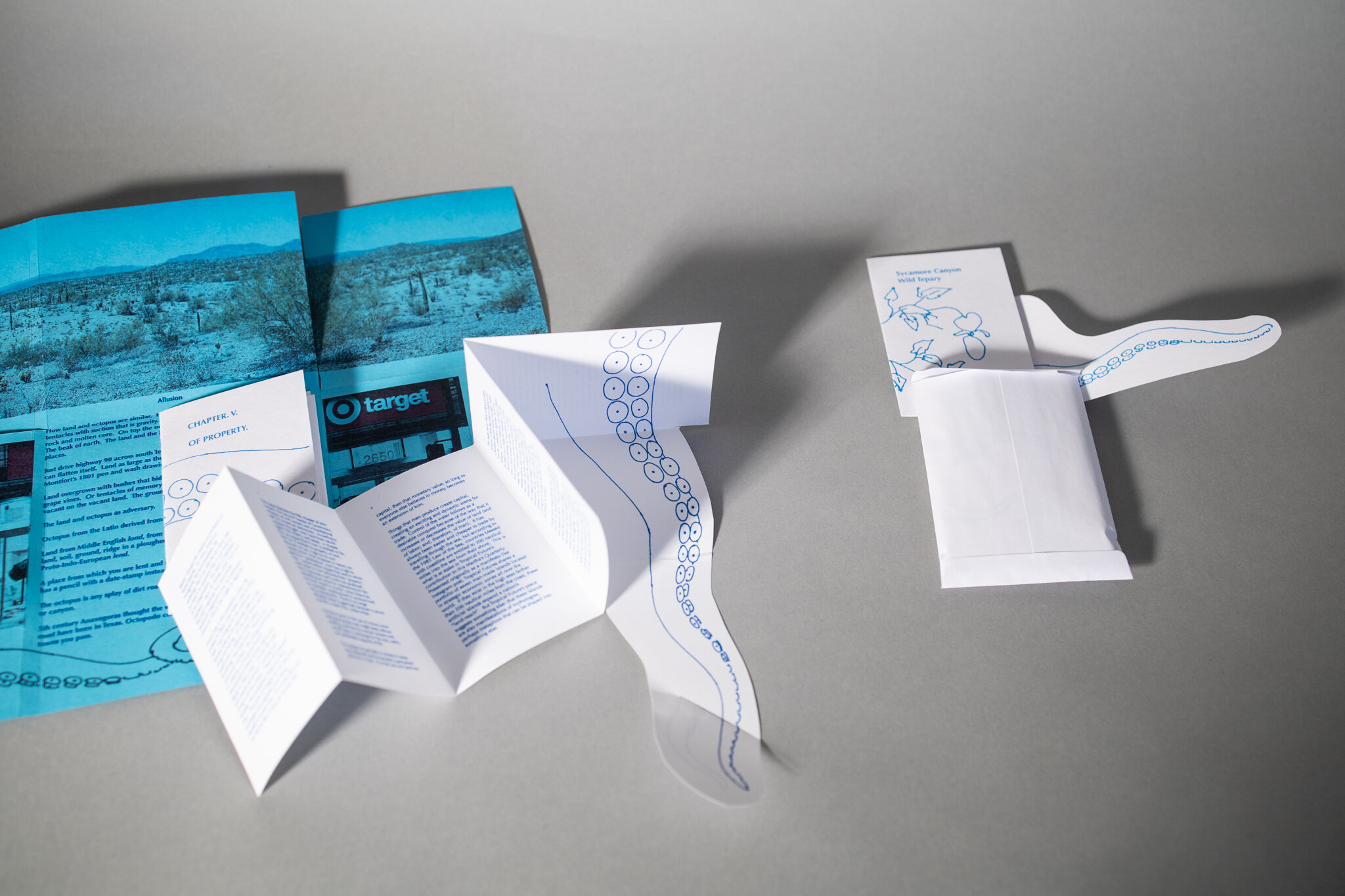
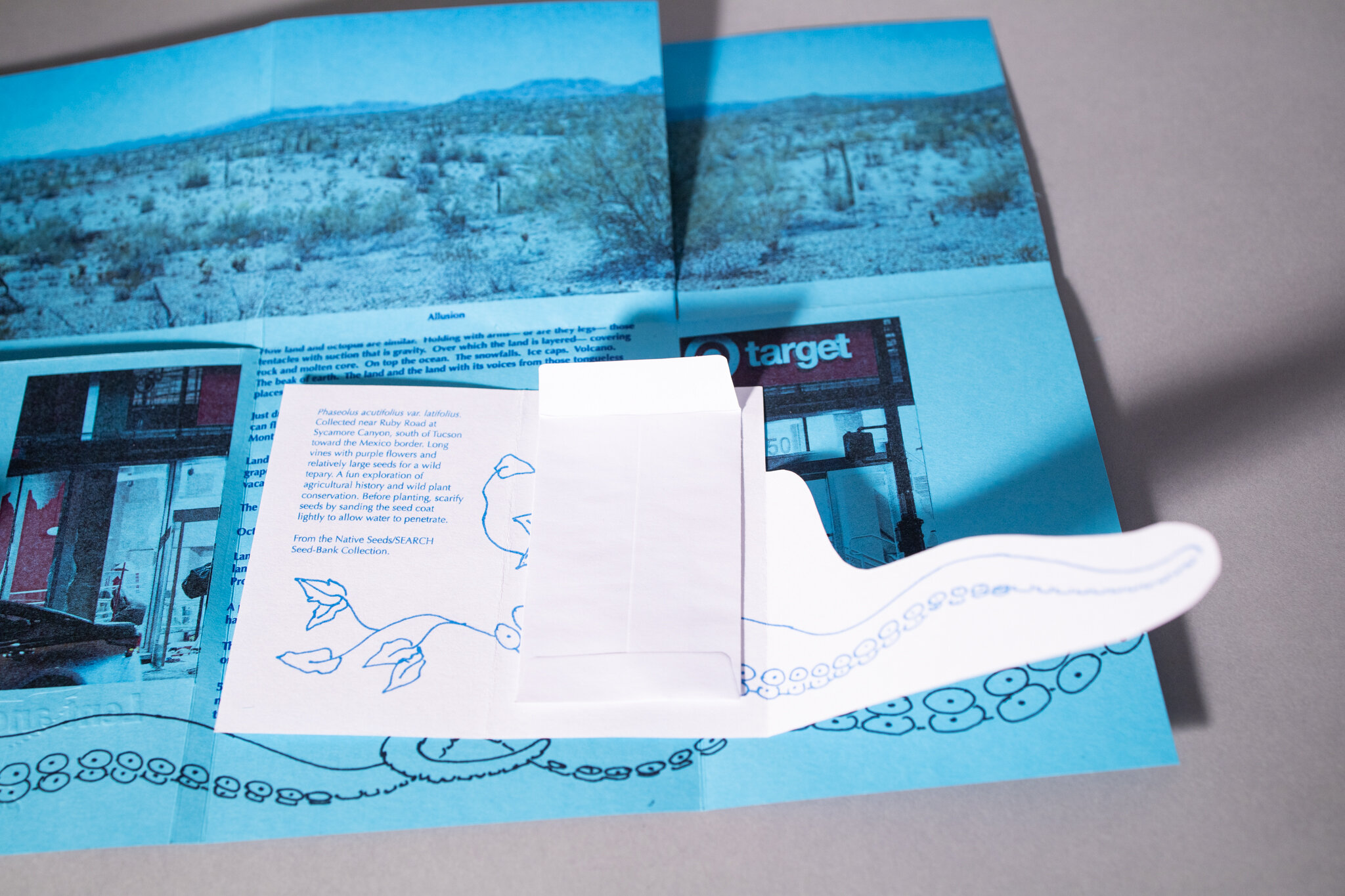
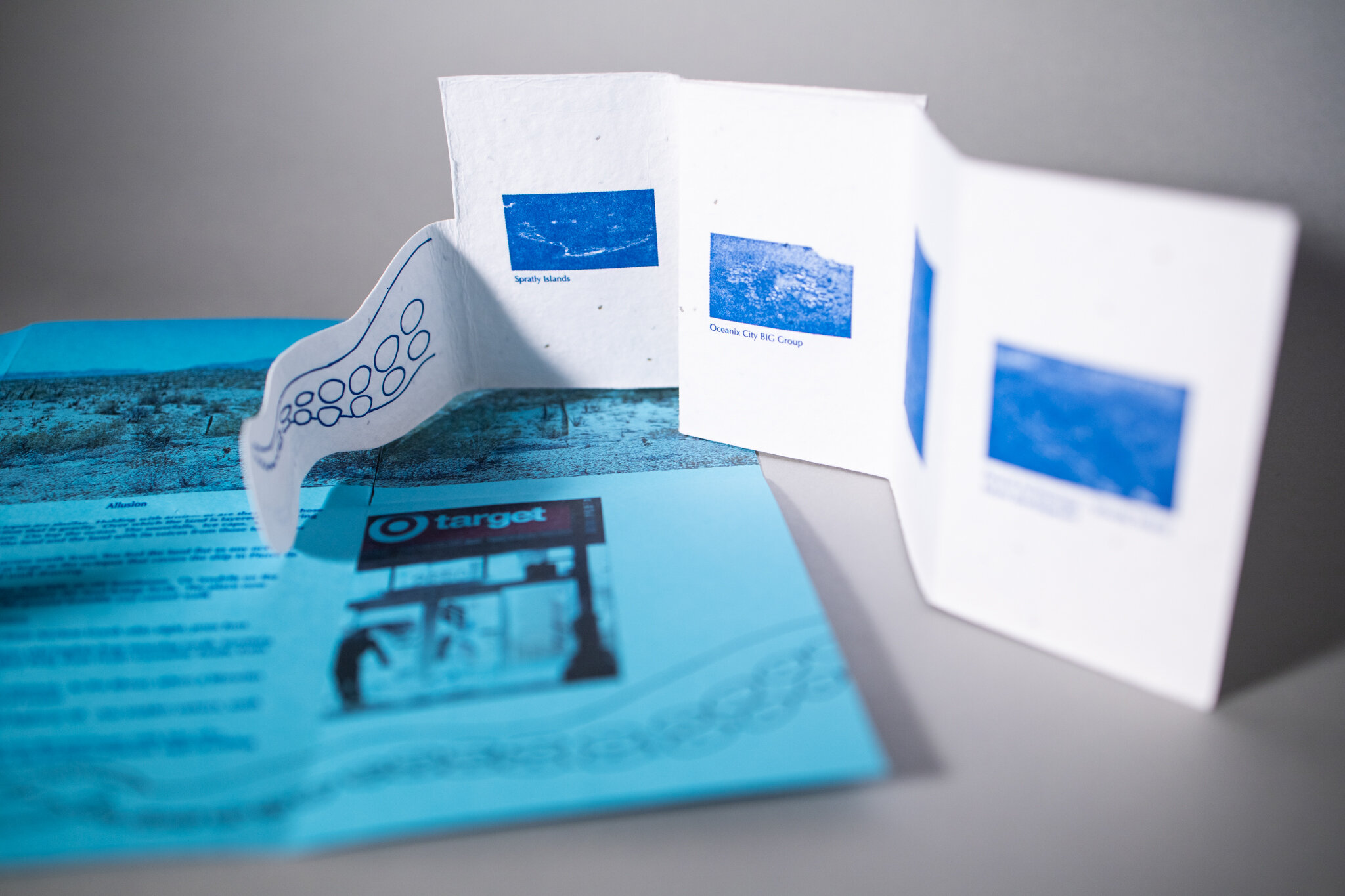
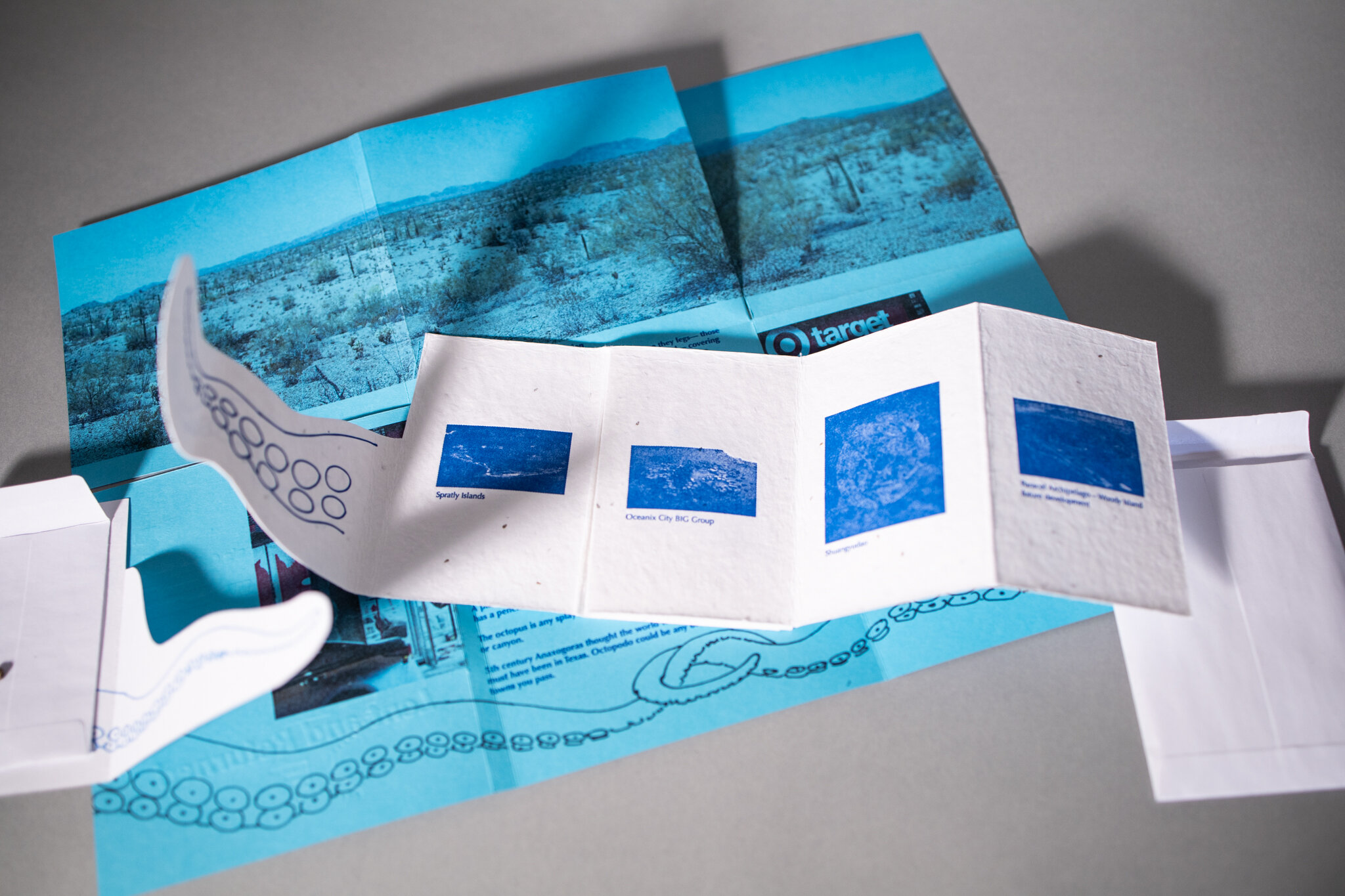
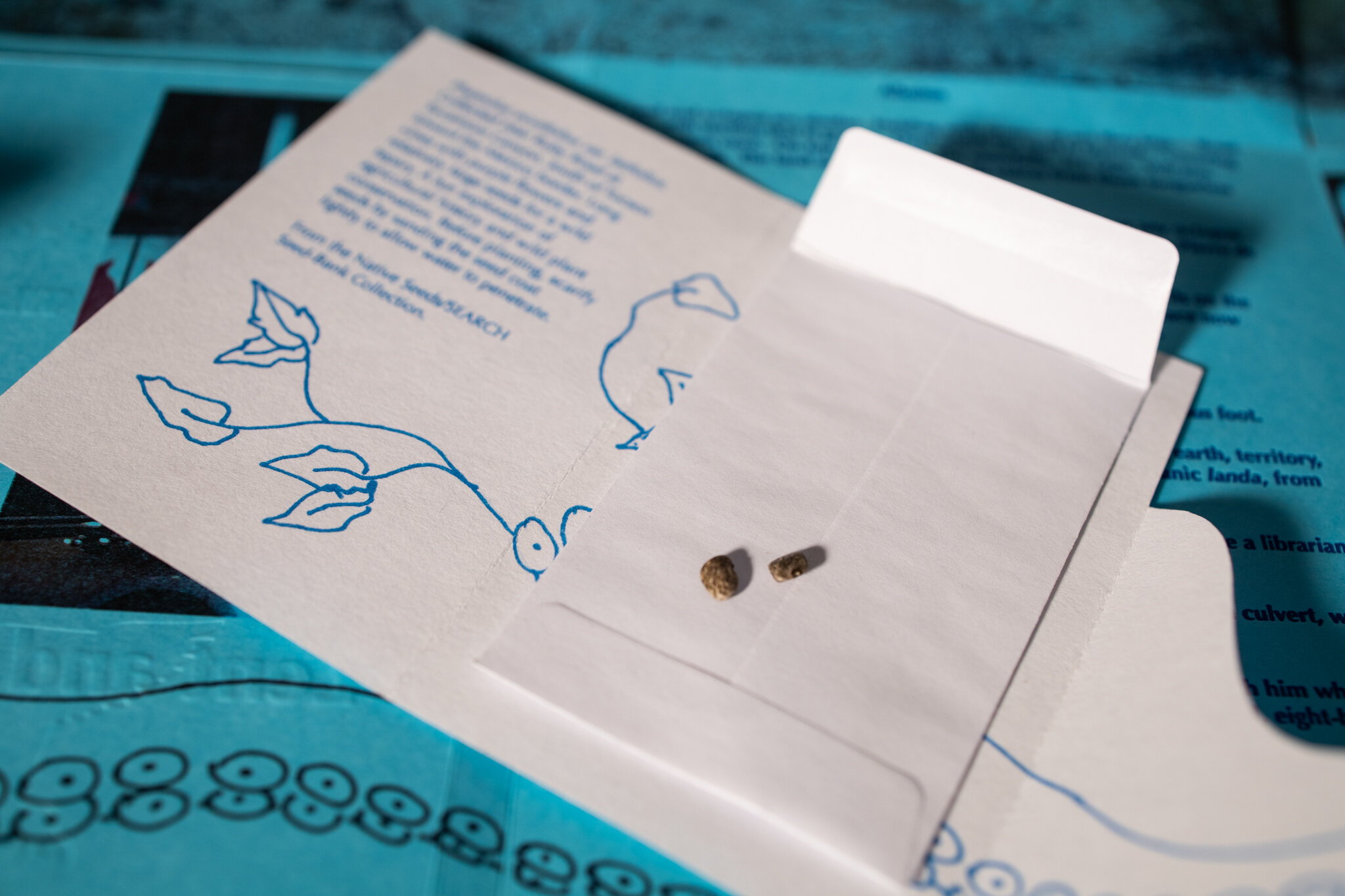
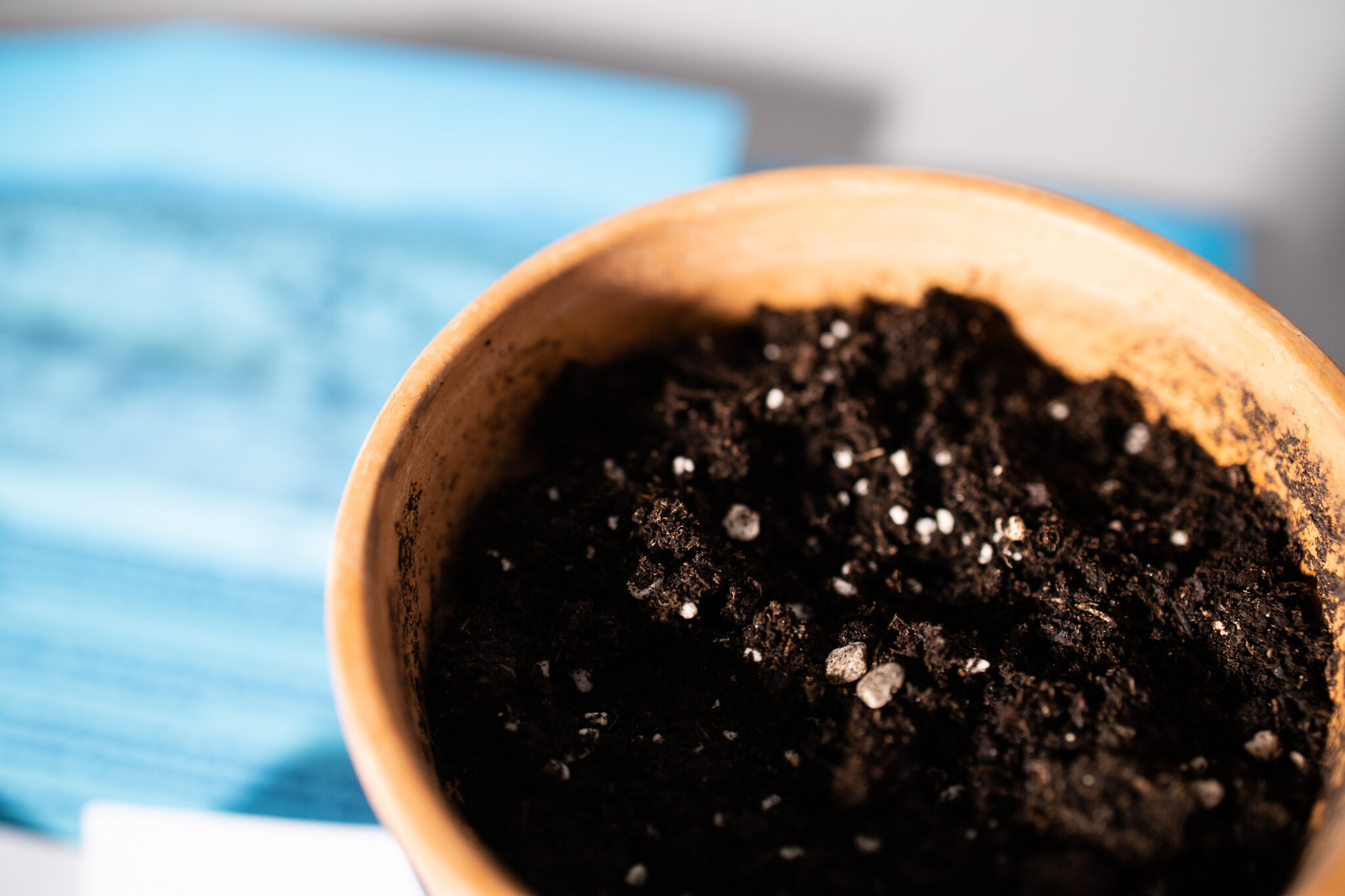
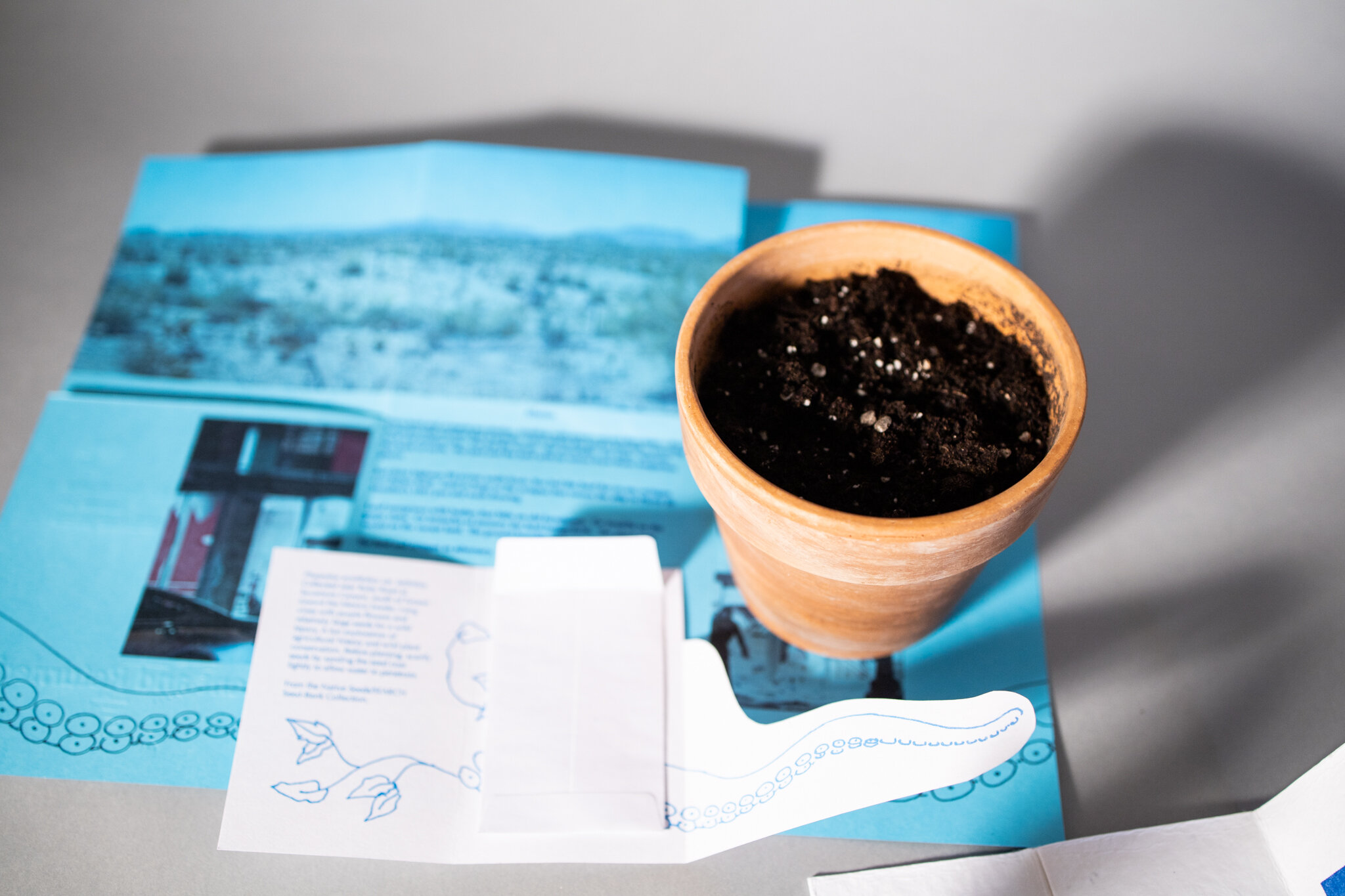
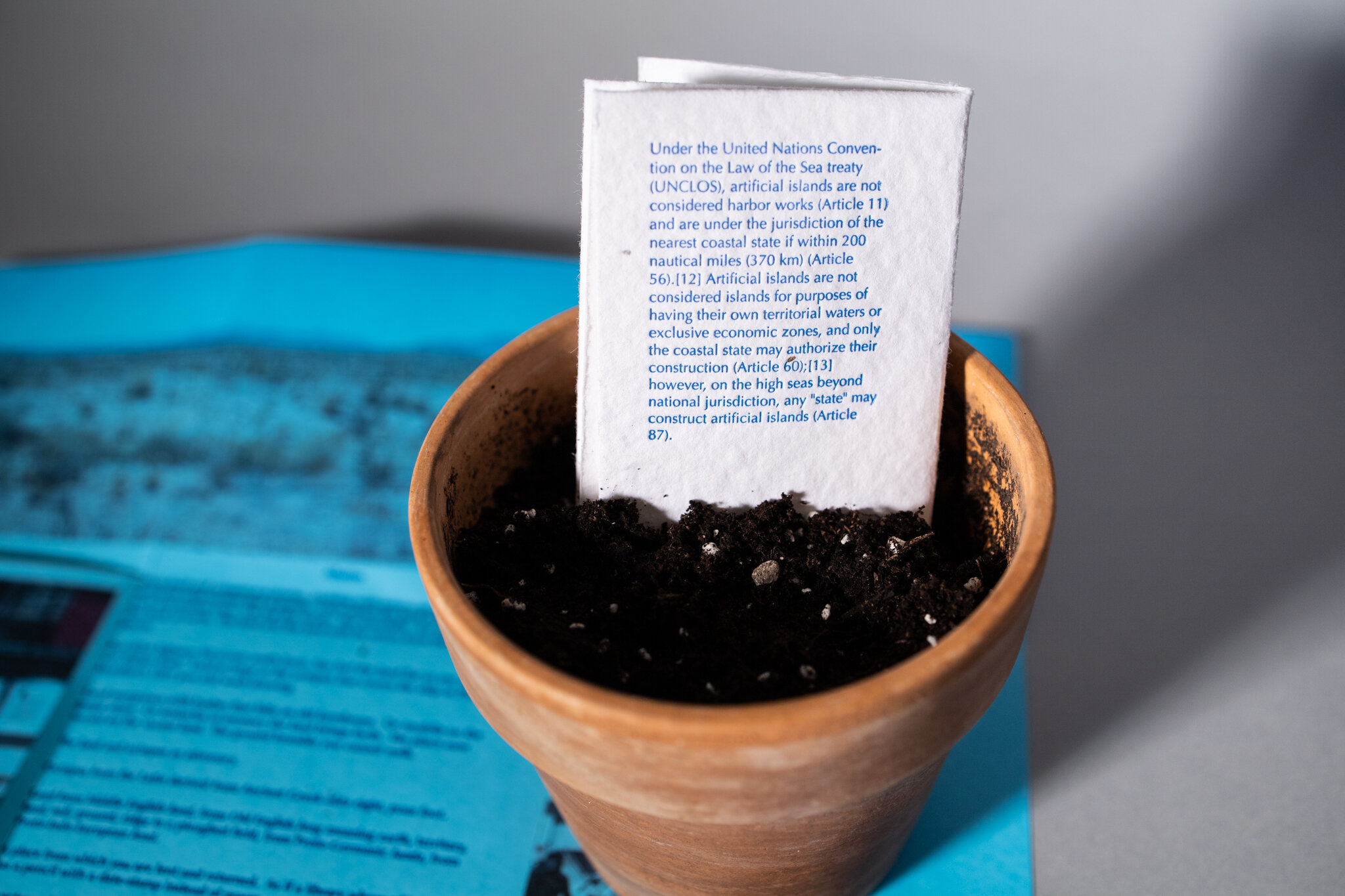
Martha's Quarterly
Issue 18
Winter 2020
Lent and Returned
5.75” x 5”
About the contributors:
Tropical Futures (TFI) is a multidisciplinary think tank studio founded and operated by Chris Fussner, a Filipino American designer based primarily in Cebu, Philippines and the tropics at large. His focus is on looking towards new ideas, models, practices and communications related to the tropics, as well as crafting and supporting the diffusion of new narratives around this climatic and geographic space that wraps around the world and connects various ecologies and peoples. Chris graduated from the School of Design Strategies at Parsons School of Design.
Diane Glancy is a professor emerita at Macalester College. Her latest book is "Island of the Innocent: a Consideration of the Book of Job," Turtle Point Press, 2020. "A Line of Driftwood: a Story of Ada Blackjack" and a collection of essays, "Still Moving, How the Road, the Land and the Sacred Shape a Life," are forthcoming in 2021.
John Locke was a British philosopher, Oxford academic, and medical researcher often credited as being the “Father of Libertarianism”.
Native Seeds/SEARCH (NS/S) is a nonprofit seed conservation organization based in Tucson, Arizona. Their mission is to conserve and promote the arid-adapted crop diversity of the Southwest in support of sustainable farming and food security.
I write this Winter introduction on the Fall morning of Thanksgiving 2020, and it’s a strange holiday this year. We are still in the midst of a pandemic that seems to be resurging quickly and vigorously. The mainstream news stations have all encouraged Americans to stay home and celebrate with only one’s household, generously showing footage of long Covid testing lines coupled with packed airports. For me, Thanksgiving has always been a joyous holiday. In my childhood, I recall my mom or aunt making a turkey accompanied with delicious Asian food, such as stir fry noodles with packaged ham, sweet corn dessert soup, and egg rolls. This year, my husband and I are making a goose while our newborn kicks around on the floor. Later, we will Zoom with everyone whom we would have been with, and surely someone will not know how to turn on their camera or microphone, and it will be endearing.
Thanksgiving, though, is a complex holiday. It’s a day to give thanks for all that we have and, more traditionally, for the bounty of food that our land has given us. Our land is a loaded notion. America, of course, was created out of the breathtaking imagination of British colonizers who “manifested their destiny” through the massive annihilation of Native peoples. For many American immigrants, this land possesses the mythology that it can also be our land; that our land is so expansive that it can hold all of our imaginations. This issue of Martha’s Quarterly一 Issue 18, Winter 2020: Lent and Returned一explores how land holds mankind’s imagination and, by extension, allows our lives to live longer as legacies.
Around May of this pandemic, when the protests for Black Lives Matter were at their peak, I was intrigued by the collisions between folks on the opposing sides of the rioting and looting. On the one hand, some people were in defense of the looters, exclaiming: “We have had it. There is no more social contract. The rioting and looting is a reflection of the government’s abandonment of basic human rights and dignity for Black lives.” On the flip side, some people exclaimed: “Looting and rioting is not the answer. These are people’s business, their properties; these are their lives.” One point of intrigue for me was how businesses and properties were being equated to human lives. Of course, they are not; but are they a proxy for human life?
This issue features the fifth chapter of John Locke’s The Second Treatise of Government, a theory of civil society and a foundational text for American democracy. According to Lockean thought, men have three natural rights: life, liberty, and estate. In chapter five, he argues that if man is entitled to life, then he is entitled to property, or land, because he has a right to his own ‘preservation’; that whatever in nature can give him ‘subsistence’, man has a right to that. Locke further argues that land in which men labor in turn becomes their ‘property’; this is because man’s work has produced something of value for maintaining his life. But then, there is a twist: Locke notes that, for example, working land to produce food has a temporality. Food is no longer valuable when it goes bad, because it cannot nourish a man’s life. Locke writes:
And thus came in the use of money, some lasting thing that men might keep without spoiling, and that by mutual consent men would take in exchange for the truly useful, but perishable supports of life.
The advent of and faith in money in some ways allowed land to become a permanent proxy for a man. If a man can turn land into capital, then that monetary value, so long as everyone else believes in money, becomes an extension of him.
Things that men produce create capital, creating an exciting and dynamic arena for trade. Control of the water follows as a desirable conquest because of the way that it increases or decreases the value of land (and of labor; and, therefore, of man). It has always been easier and cheaper to trade by traveling through the sea, but according to the 1982 Law of the Sea, countries blessed with coastline are entitled to 200 nautical miles into the sea from their shore. This is what is at stake in Tropical Future’s contribution to this Martha’s Quarterly. Presented originally as a manifesto-like Instagram post, Tropical Futures shares a portfolio of seven man-made islands located in strategic economic zones all over the world. If they exist in the high seas farther than 200 nautical miles from the coast, these artificial islands expand a nation’s “land-reach”. But Tropical Future’s piece suggests something else: that these islands are also manifestations of mythologies, perhaps metaphors that can be shaped into something else.
This leads me to Diane Glancy’s poem Allusion, where the poet of English and Cherokee descent forces and then makes true the comparison between land and octopus. Such a metaphor can seem distant, as distant as a metaphor between a human life and something as inanimate as money. Land, Glancy’s poem teaches, is ‘A place from which you are lent and returned.’ As I read this, I think about the octopus that is washed ashore only to slip away with the next tide. But then her poem makes an eerie transition, where the octopus is meshed with the image of buildings in lonely towns. Somehow the sea creature seems lost, the wetness of its vitality drying up. Is there also a drying-up to human life when one tries to live forever in money?
Among many things that this year has made vivid for me, the pandemic has emphasized how temporal life is. It has also demonstrated how life and money are deeply intertwined, and that to merely dismiss the economy as unimportant or unnecessary for human life is misguided. As a species, we all share a communal faith in money. Our belief in the money story's value allows us to provide food and shelter for our families. For many people, the pandemic took away their jobs, preventing them from being able to use their labor to produce nourishment for their families一man’s right to life. And so now, we are at a place of reckoning, as the myth of money is being held against the many lives being lost both in America and globally.
This issue of Martha’s Quarterly also offers you a wild teapry seed native to the Southwest region of the United States. The seed was grown by Native Seeds/SEARCH, a non-profit organization that started in 1983 with the mission to conserve and promote arid-adapted crop diversity in the Southwest. This particular seed is a desert bean that will climb and twine when it becomes a plant. You can plant the seed along with the paper that the artificial islands are printed on, paper that is also implanted with seeds of wildflowers. Perhaps the gesture of planting一a popular hobby of solace during this pandemic一might provide a lively escape from the mythology of our social order that seems so unstable.
– Tammy Nguyen, Editor-in-Chief
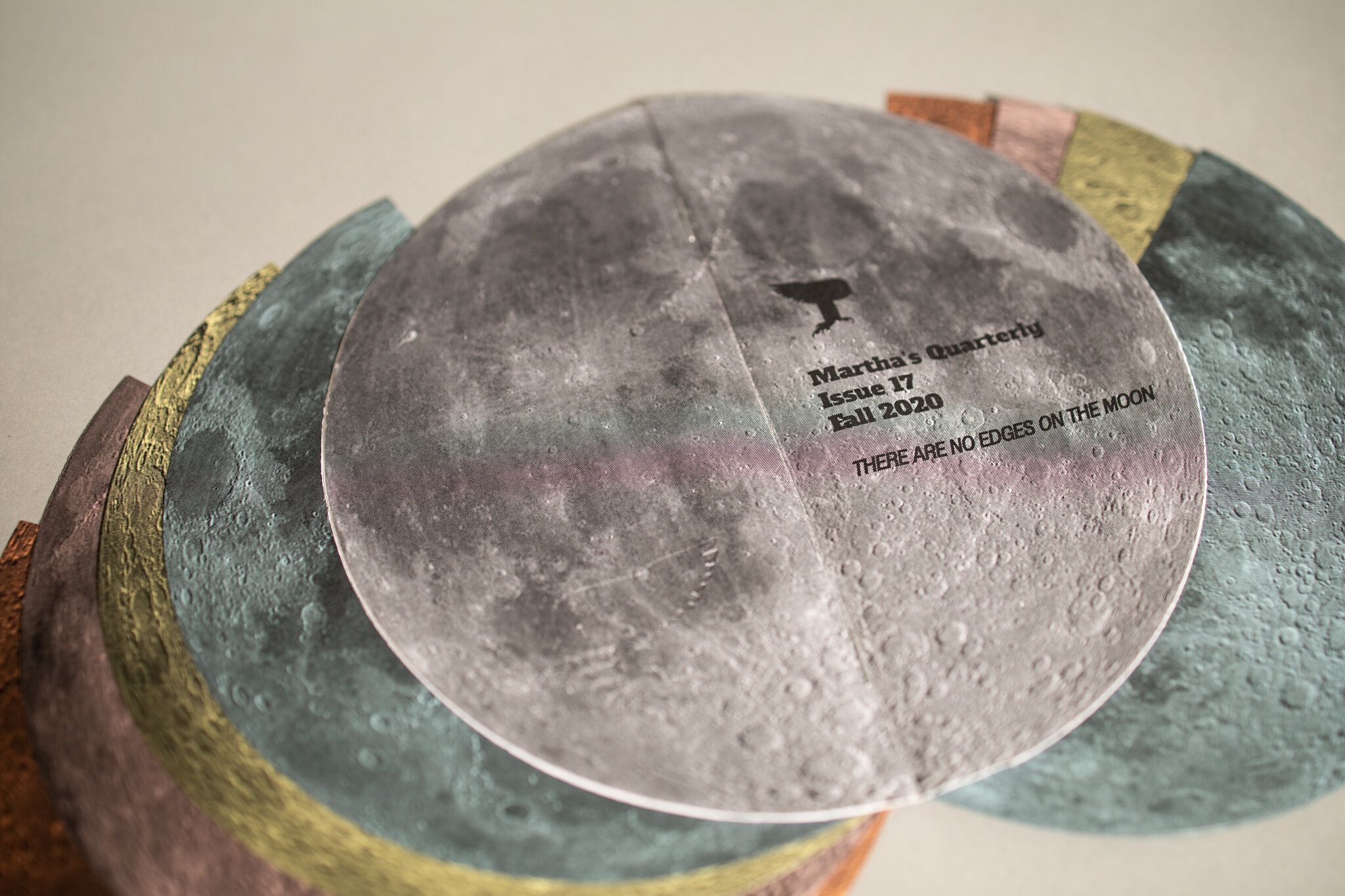
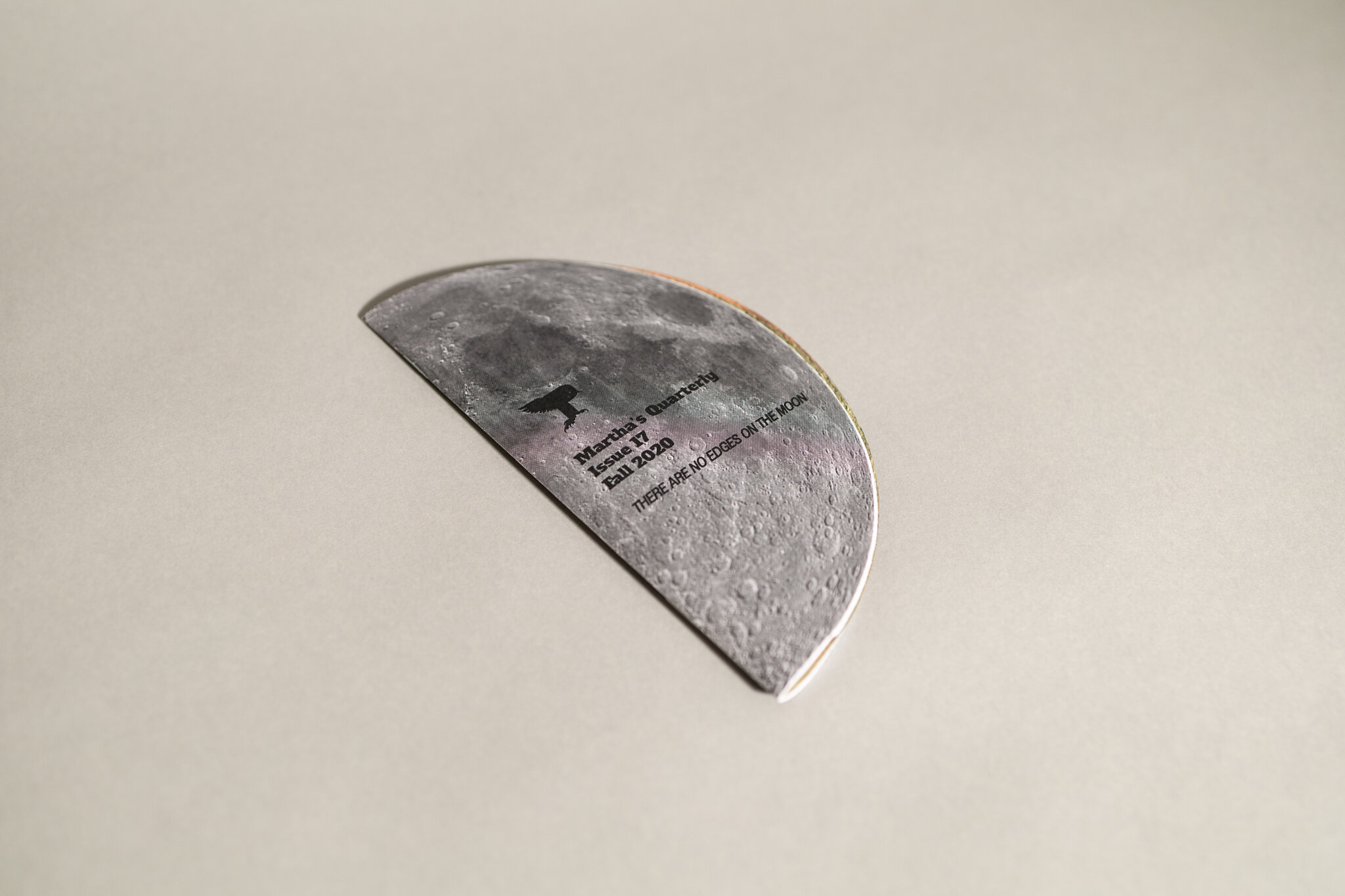
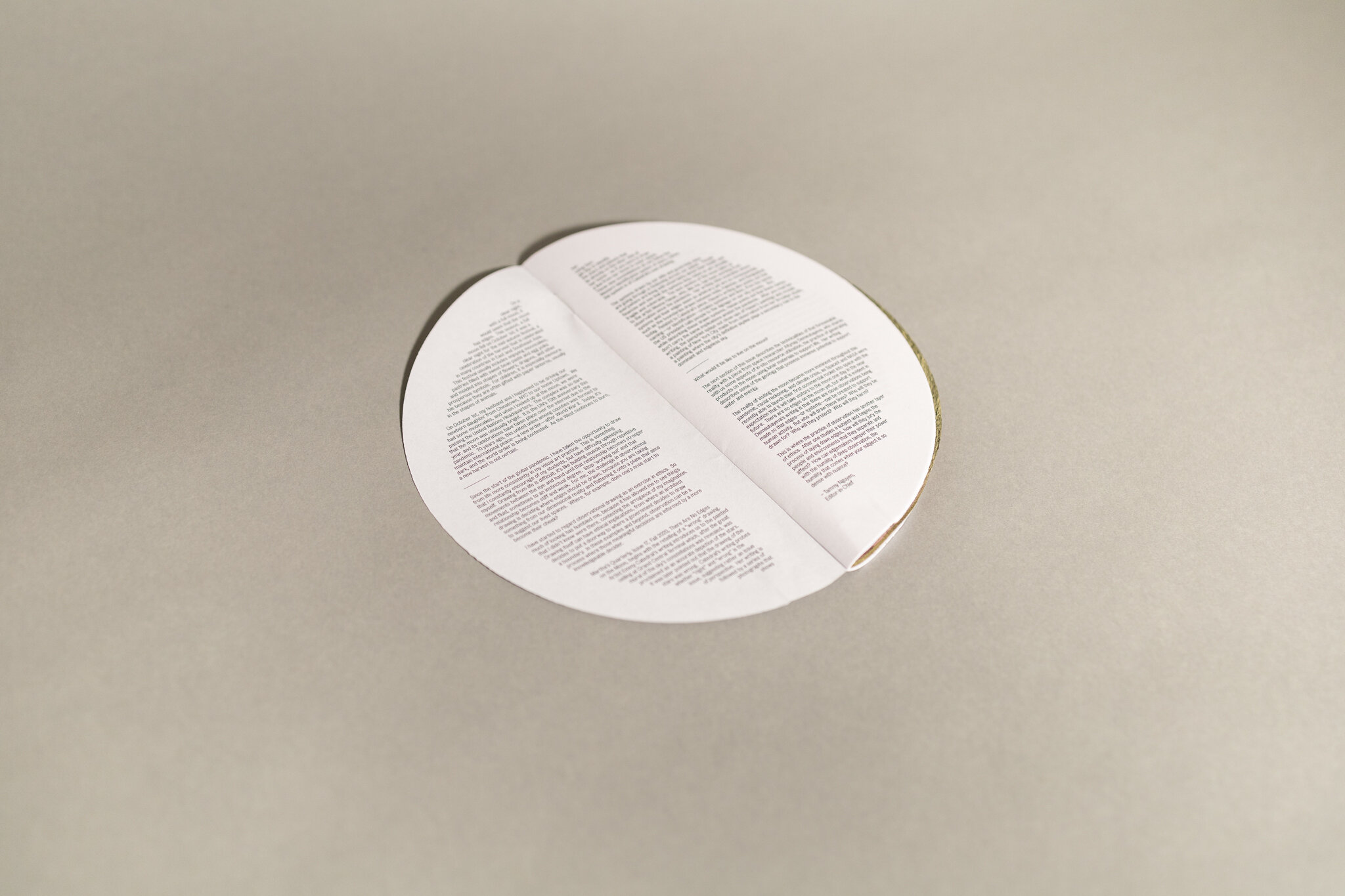
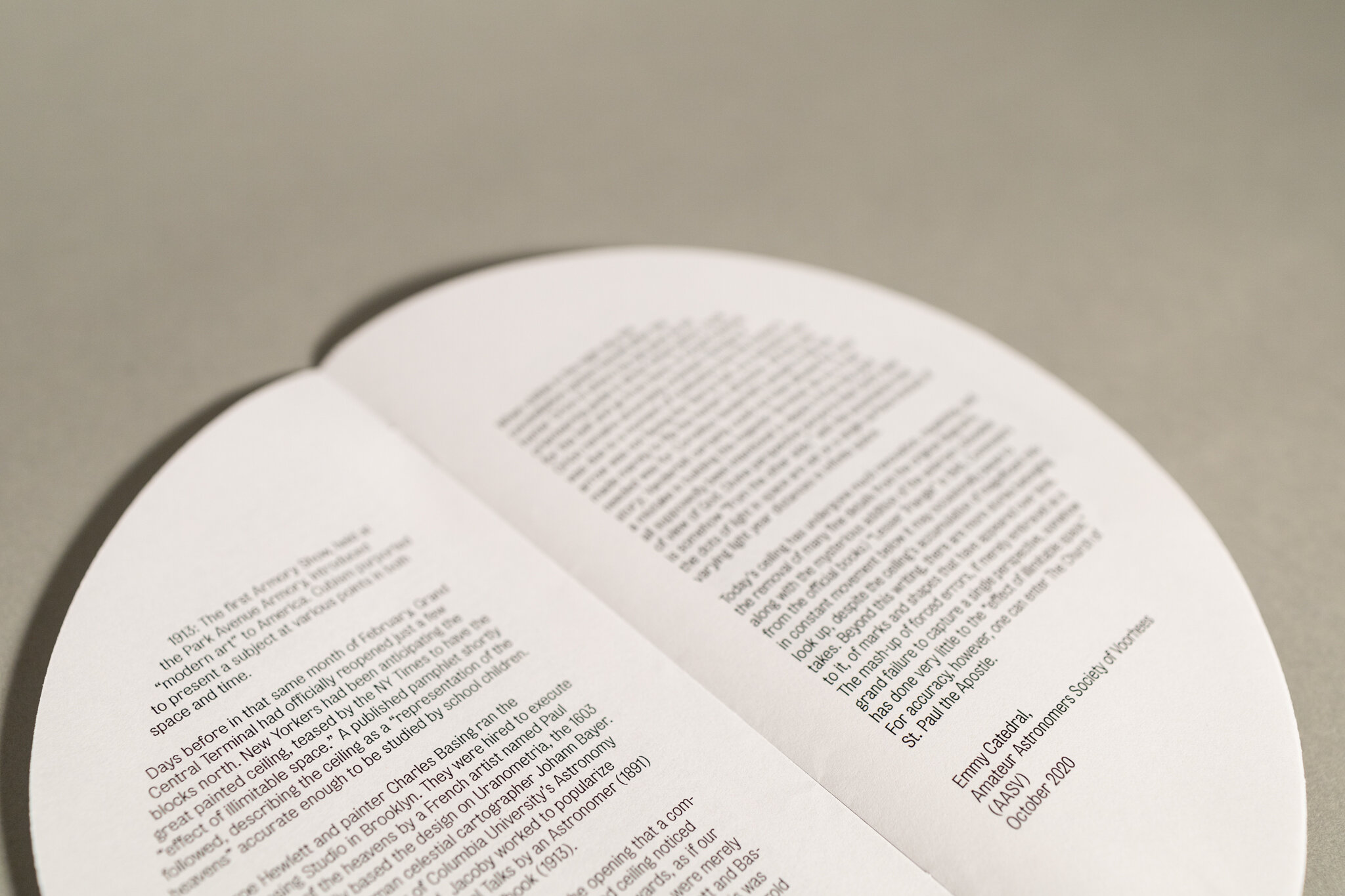


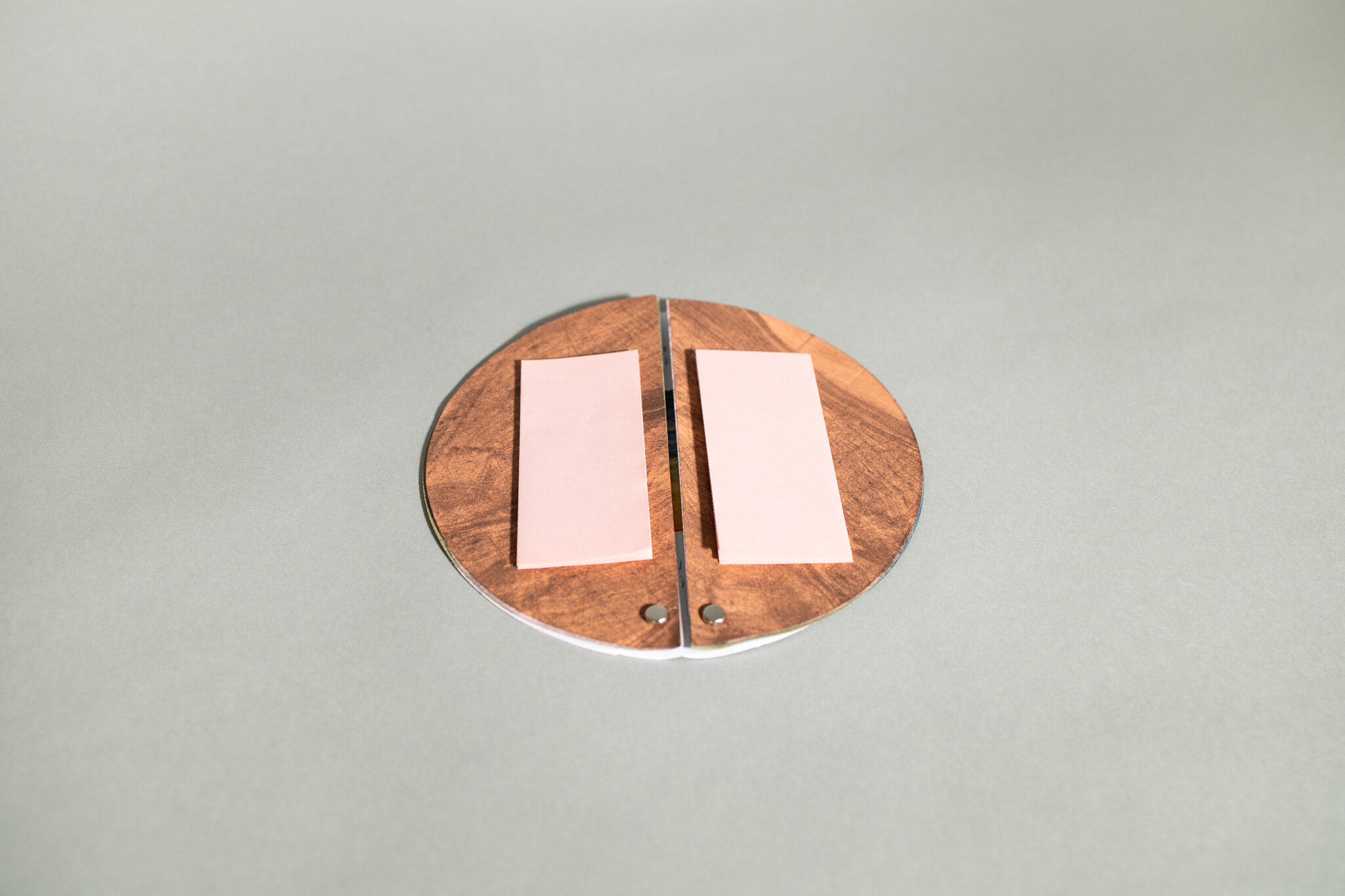
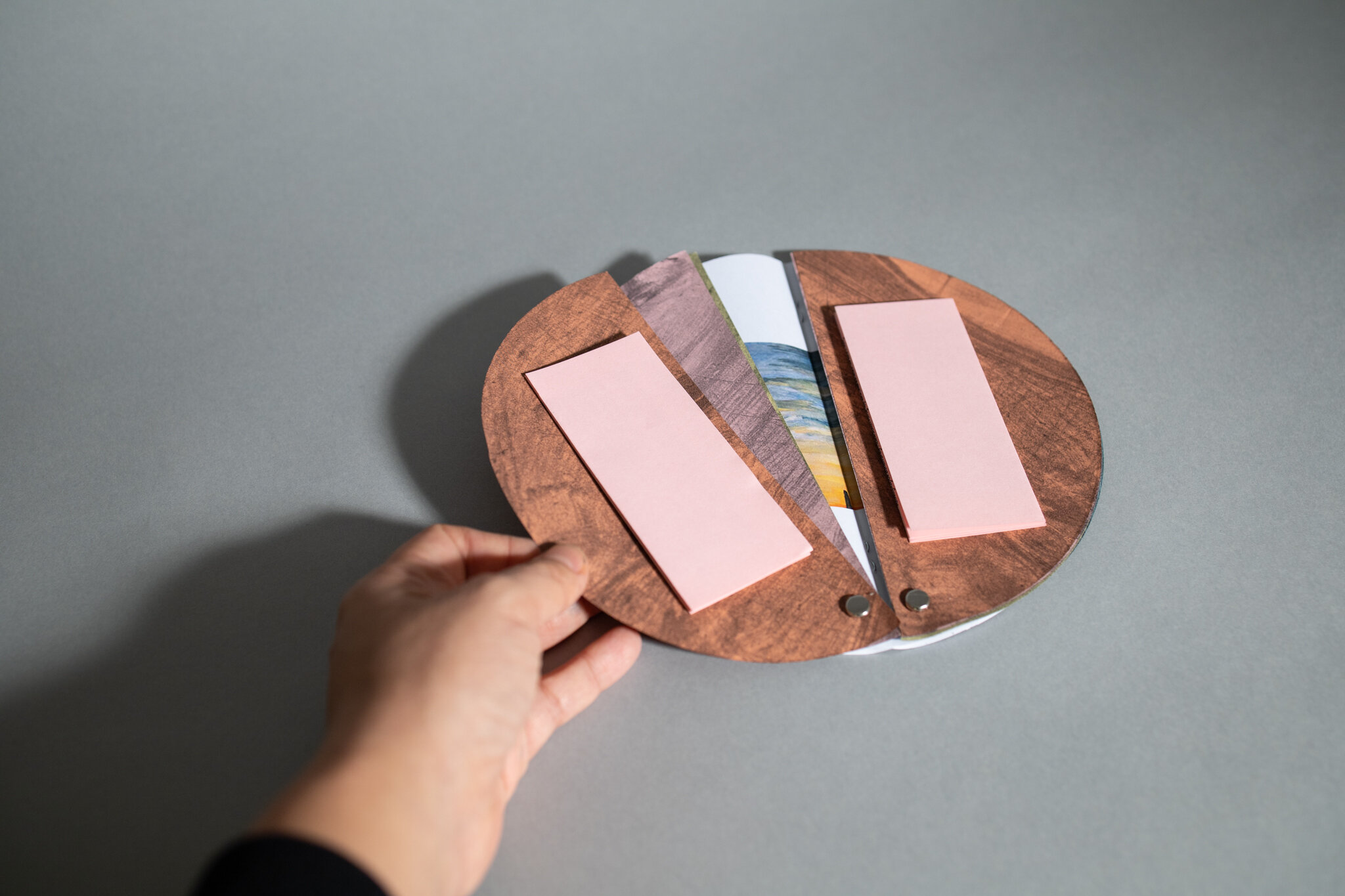

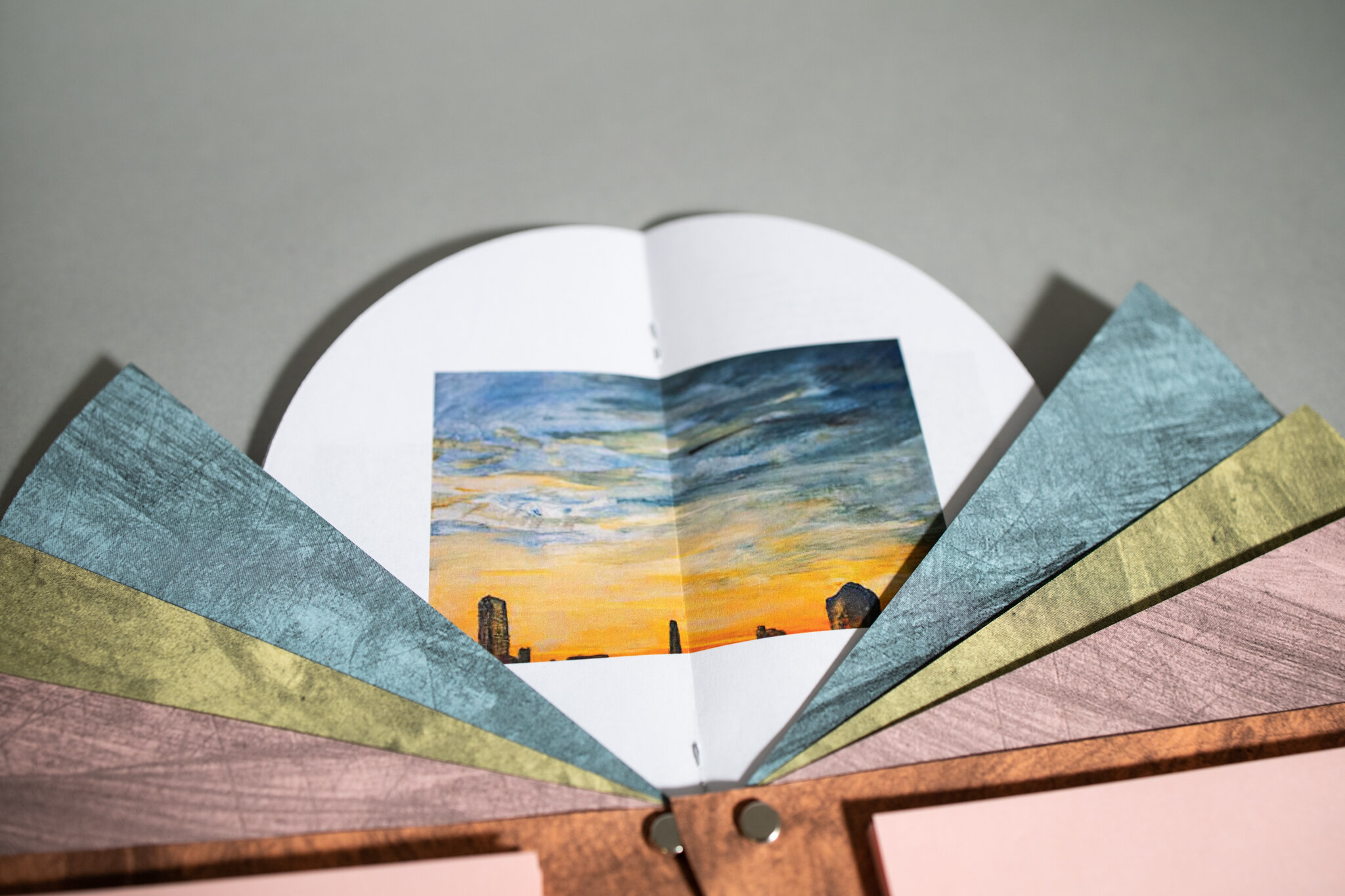
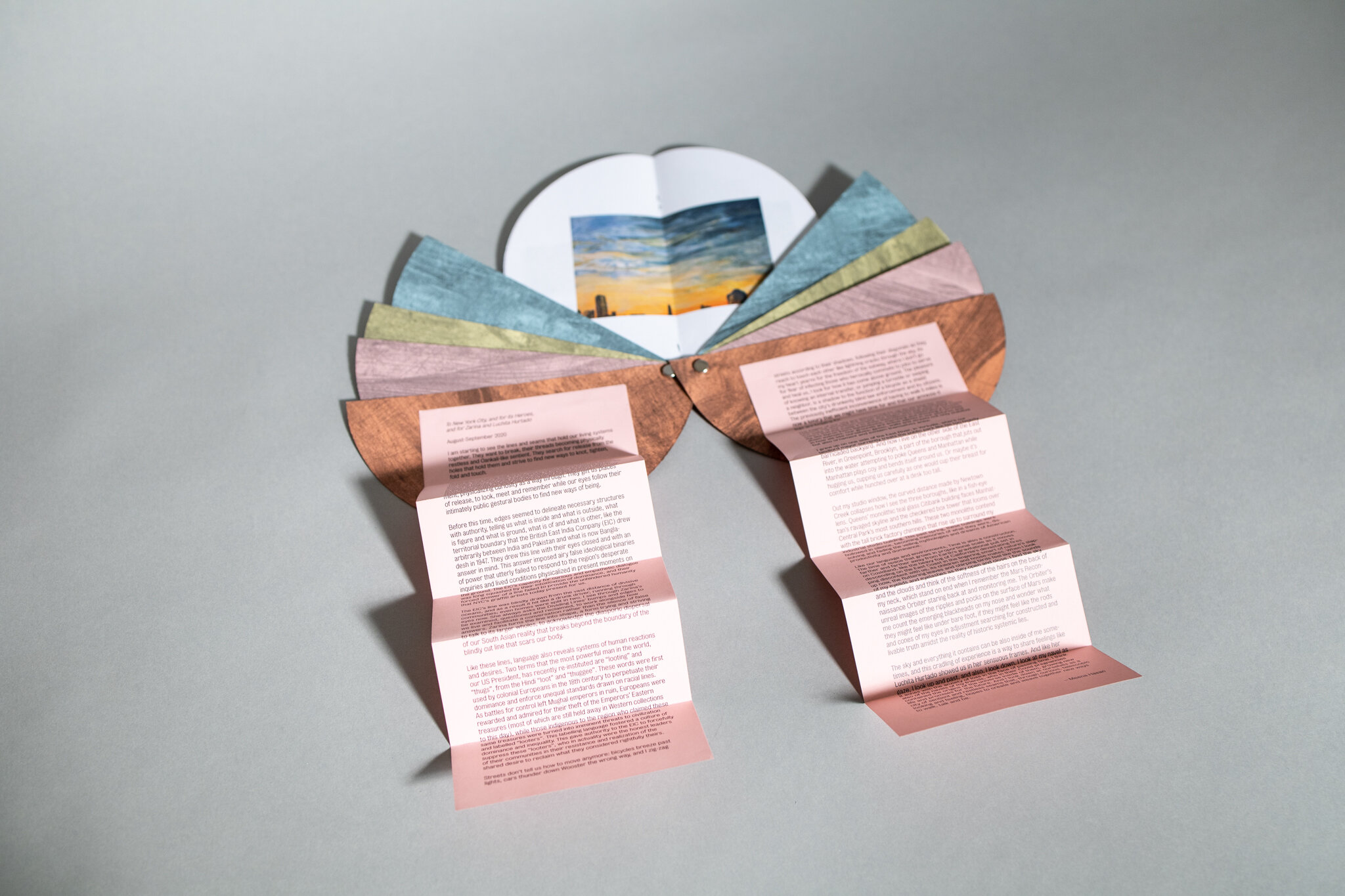
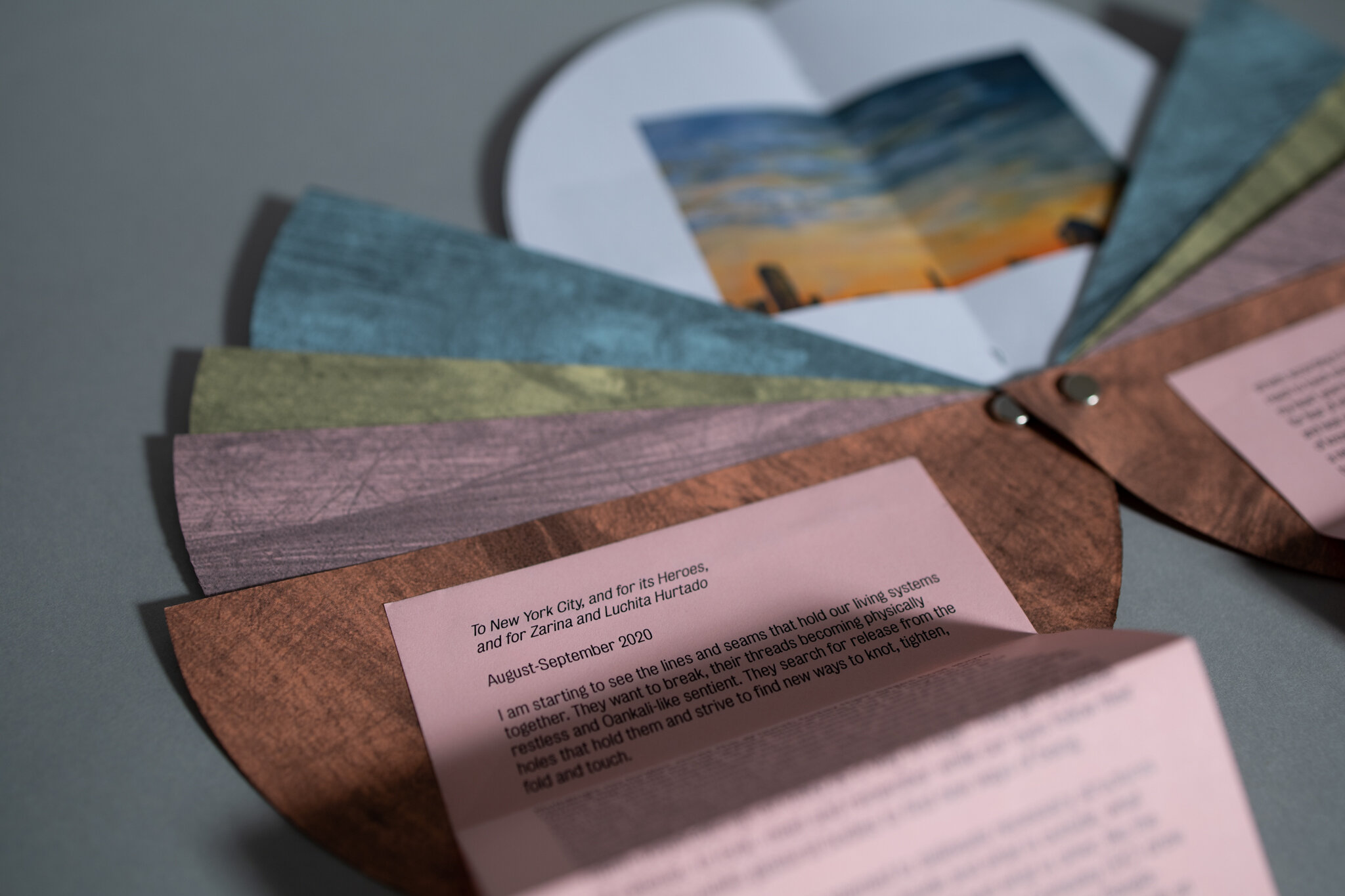
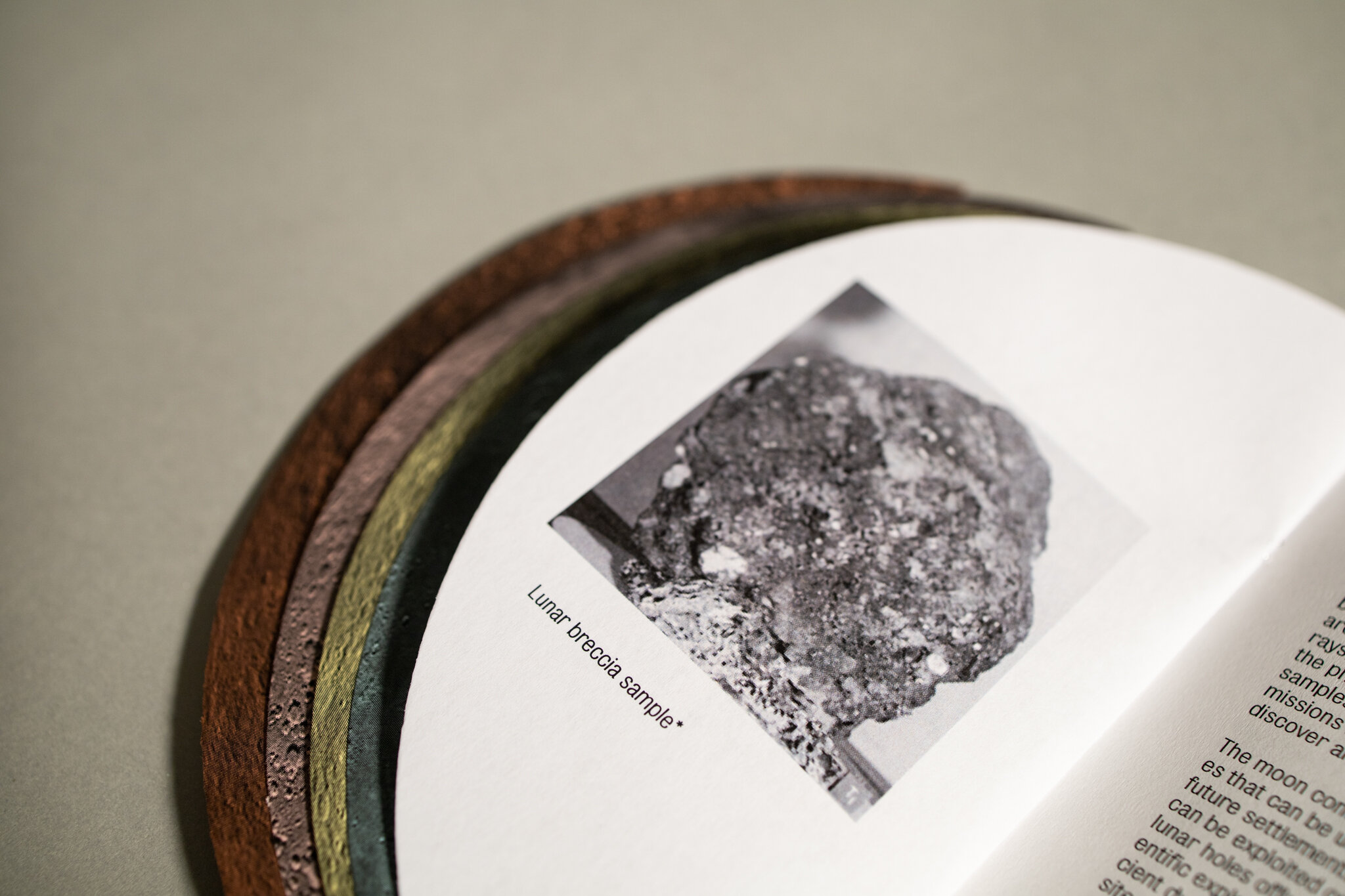
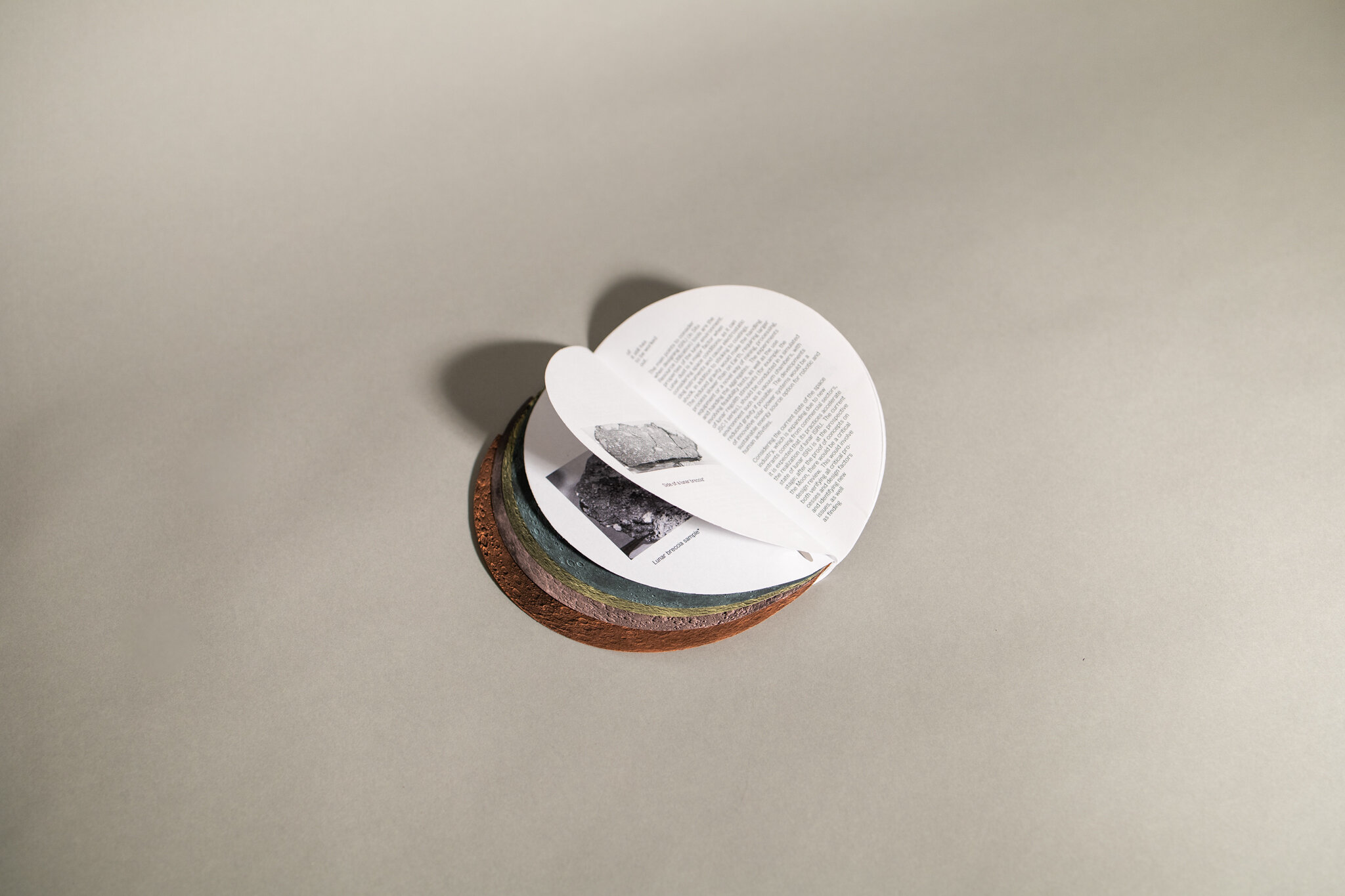

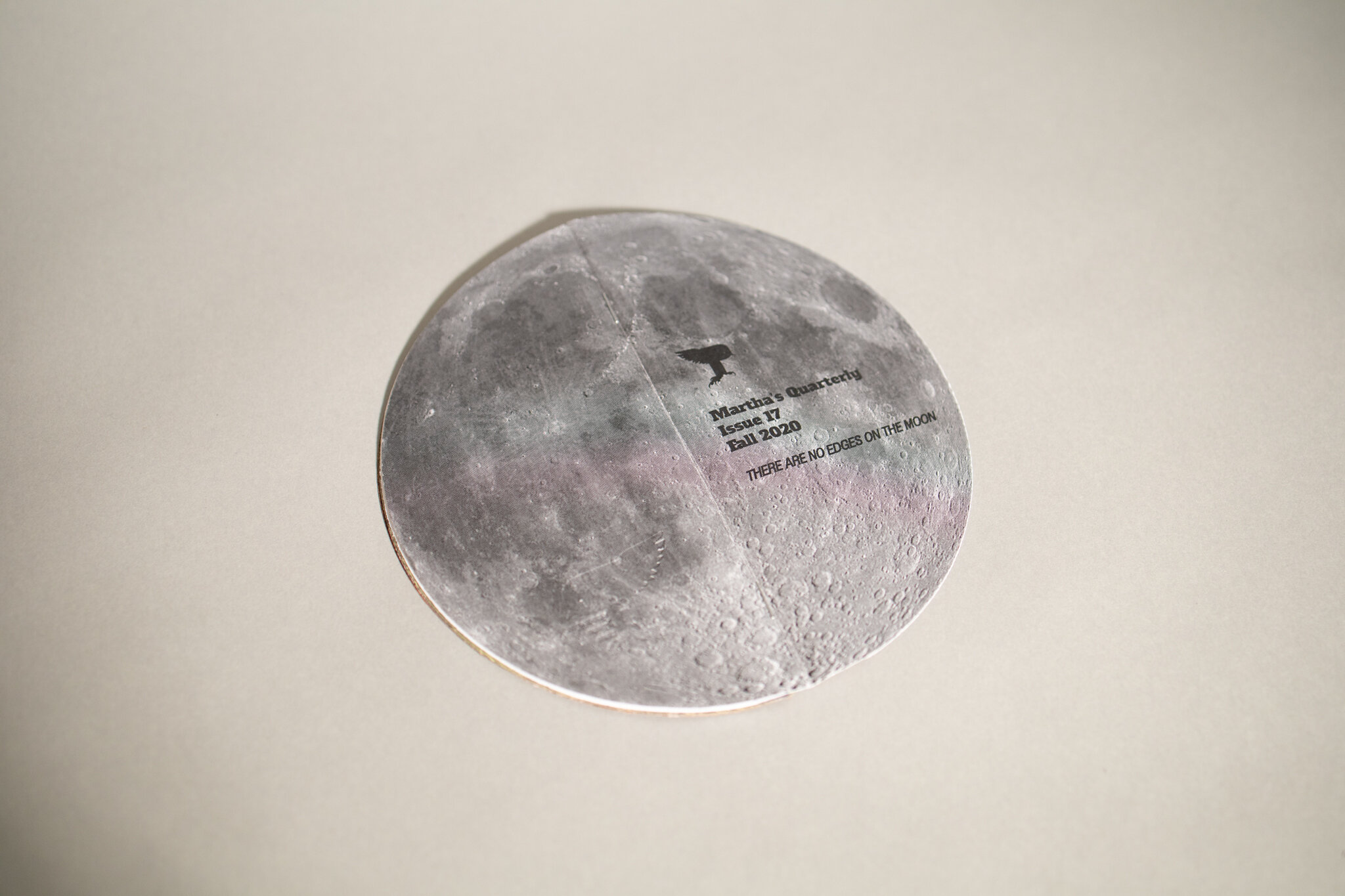
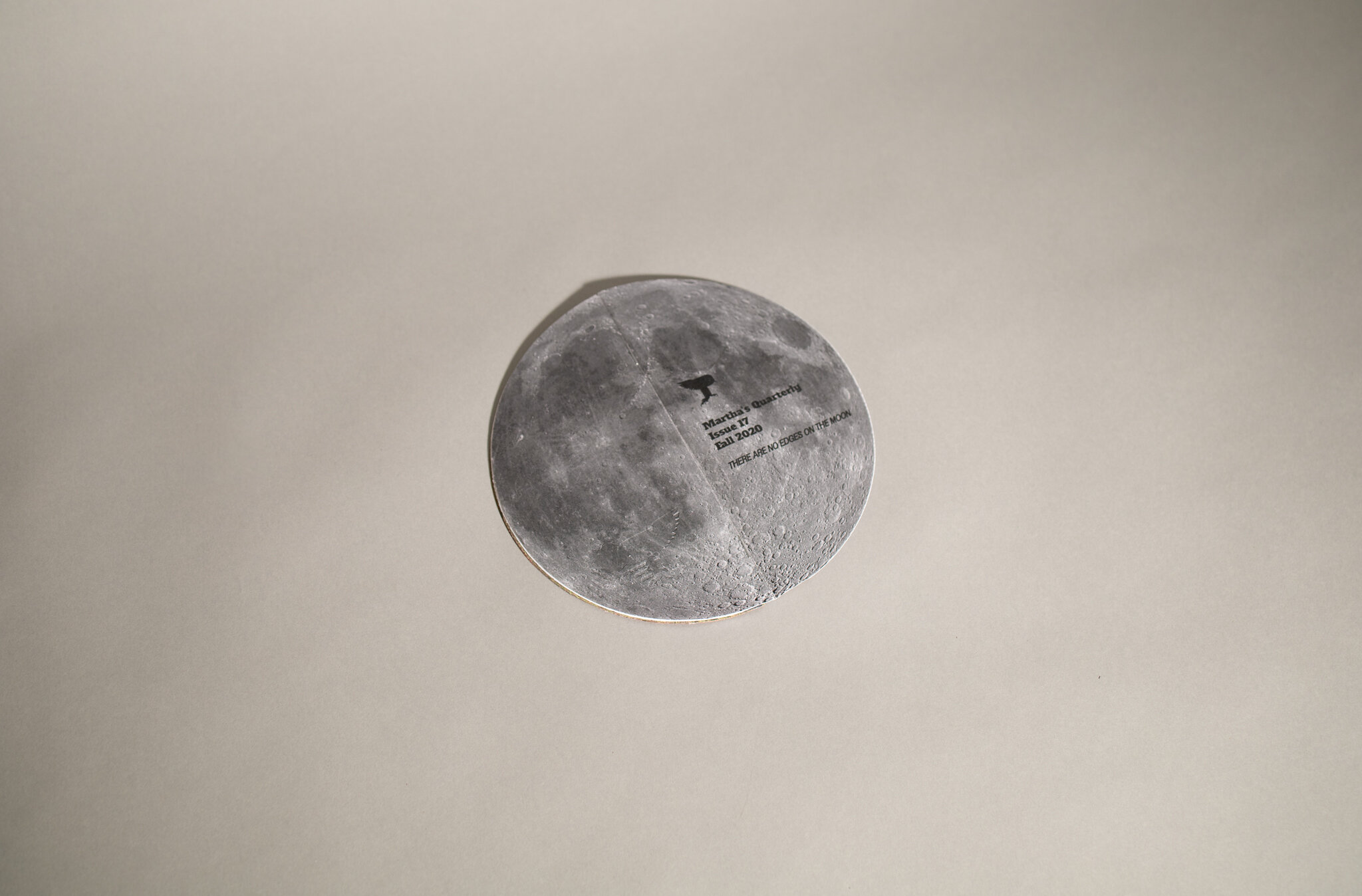
Martha's Quarterly
Issue 17
Fall 2020
THERE ARE NO EDGES ON THE MOON
7.25” x 3.75”
Martha's Quarterly, Issue 17, Fall 2020, There Are No Edges On The Moon
About the contributors:
Amateur Astronomers Society of Voorhees (AASV), established by Emmy Catedral in 2012, examines the ways in which humans fail to use language to codify what we know about the universe. AASV hosts salons inviting guest artists, historians, scientists, collectors, and storytellers to present or demonstrate on a particular subject or question.
Altynay Demeubayeva received her masters degree at the International Space University and currently works on engineering management and business development at HyImpulse Technologies GmbH, a company located in Germany that aims to provide launch services for smallsats.
Meena Hasan is an artist and educator, born in 1987 and raised in New York City. Her practice uses compositional and material strategies to articulate a South Asian American diasporic experience by investigating subjectivity, self-recognition, translation, pattern, ornament and ritual. Meena maintains her studio in Brooklyn and is currently a Lecturer in Painting at Boston University's School of Visual Arts.
On a clear night, with a full moon, it would seem that the moon has edges. This season, a full moon fell on October 1st; it was a clear night for the mid-autumn festival, a celebration of the harvest that is celebrated in many countries in East and Southeast Asia. This festival usually includes enjoying mooncakes, pastries filled with sweet bean paste and egg yolks and molded into shapes of flowers, dragons, and other prosperous symbols. For children, it is especially memorable because they are often gifted with paper lanterns, usually in the shapes of animals.
Mid-Autumn festival lights in Hong Kong. Image credit: SCMP
On October 1st, my husband and I happened to be driving our newborn daughter from Chinatown, NYC to our home Uptown. We had some mooncakes, and when I looked up at the moon, we were passing the United Nations Headquarters. The complex was so dark that the moon was unusually bright. It is the UN’s 70th anniversary this year, and its celebrations have taken place over the internet due to the pandemic. 70 years ago, this united union among counties was formed to maintain international peace—a new order—after World War II. Today, it’s dark, and the world order is being contested. As the West continues to burn, a new harvest is not certain.
—————
Since the start of the global pandemic, I have taken the opportunity to draw from life more consistently in my visual art practice. This is something that I constantly encourage of my students, but have difficulty upkeeping myself. Drawing from life is difficult; it’s like building muscle through repetitive movements between the eye and hand until that relationship becomes stronger and fluid, sometimes to an instinctual degree. Stop ‘working out’ and that relationship becomes stiff and weak. For me, the challenge in observational drawing is deciding where edges should be drawn, because you are taking something from our dimensional reality and flattening it onto a plane that aims to suggest our lived spaces. Where, for example, does one’s nose start to become their cheek?
I have started to regard observational drawing as an exercise in ethics. So much of looking has humbled me, because it has allowed me to see things that I didn’t know were there, contesting the arrogance of my imagination. Drawing itself can have ethical implications, from where an architect decides to put a doorway to where a government decides to draw a boundary. In these examples and beyond, observation can be a process where those meaningful decisions are informed by a more knowledgeable decider.
Martha’s Quarterly, Issue 17, Fall 2020, There Are No Edges on the Moon, begins with the retelling of a “wrong” drawing. Artist Emmy Catedral’s writing introduces us to the painted ceiling at Grand Central Terminal which, after the great mural of the sky’s constellations was revealed, was proclaimed as an accurate depiction of the stars. It was later pointed out that the drawing of the stars was wrong. Catedral’s writing probes whether “right” and “wrong” is the issue, suggesting rather an issue of perspective. Her writing is followed by a series of photographs that shows her using Google Sky to identify the stars and planets that lie directly on the other side of her home—as if you were to draw a line from her home to outer space. These new constellations do not follow the Western identification system of stars; rather, the system is of Catedral’s own drawing.
The systems drawn by our elite and governing class are going through a reckoning across our planet. People everywhere are living with uncertainty about their health and finances and see that the systems they relied on are actually fragile and vulnerable. The next section of this issue takes us to the artist Meena Hasan, who, like me, has been working from observation since the pandemic. Her writing cites examples where systems and their edges seem so arbitrary yet are so consequential, such as the boundaries drawn between India, Pakistan, and Bangladesh today. Related to Catedral’s piece, Hasan’s writing also points out that naming—or identification—creates systems and lines, from the names the US president calls people to the signage on our city streets. But, while describing these drawn systems, Hasan points out that these names don’t carry the same implications amidst the pandemic. After you read her writing, the pamphlet splays out close-ups of Hasan’s paintings and reveals a painting of New York City made from observation from her Brooklyn studio, a painting where the city’s definitive skyline plays a secondary role to the dominant and edgeless sky.
—————
What would it be like to live on the moon?
The next section of this issue describes the technicalities of that foreseeable reality with a piece from space researcher Altynay Demeubayeva, who shares with us some aspects of in-situ resource utilization, the practice of generating products on the moon using lunar materials to support life. Her writing describes some of the geology that possess immense potential to support water and energy.
Artist rendering of the Artemis Lander Development, NASA’s lunar exploration program with aims to create commercial travel to the moon. Image credit: NASA
The reality of visiting the moon became more imminent throughout this pandemic, racial reckoning, and climate crisis, as SpaceX and NASA were recently able to launch their first commercial rocket into space with the expectation that it will take visitors to the moon one day in the near future. There are no edges on the moon yet, but what is evident in Demeubayeva’s writing is that there are close observations being made so that edges—or systems—can be created to support human activity. But who will draw these lines? Who will they be drawn for? Who will they protect? Who will they harm?
This is where the practice of observation has another layer of ethics. After one studies a subject and begins the process of laying down edges, how will they jury the people and environments that they separate and affect? How can edgemakers tamper their power with the humility of deep observation, the humility that comes when your subject is so dense with nuance?
– Tammy Nguyen, Editor-in-Chief
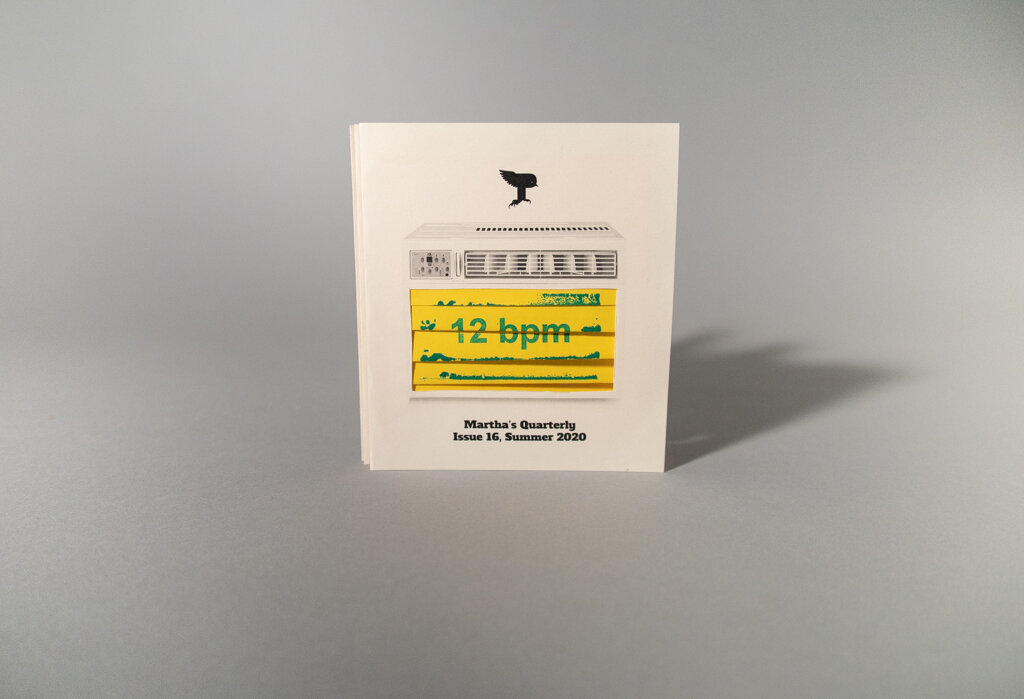
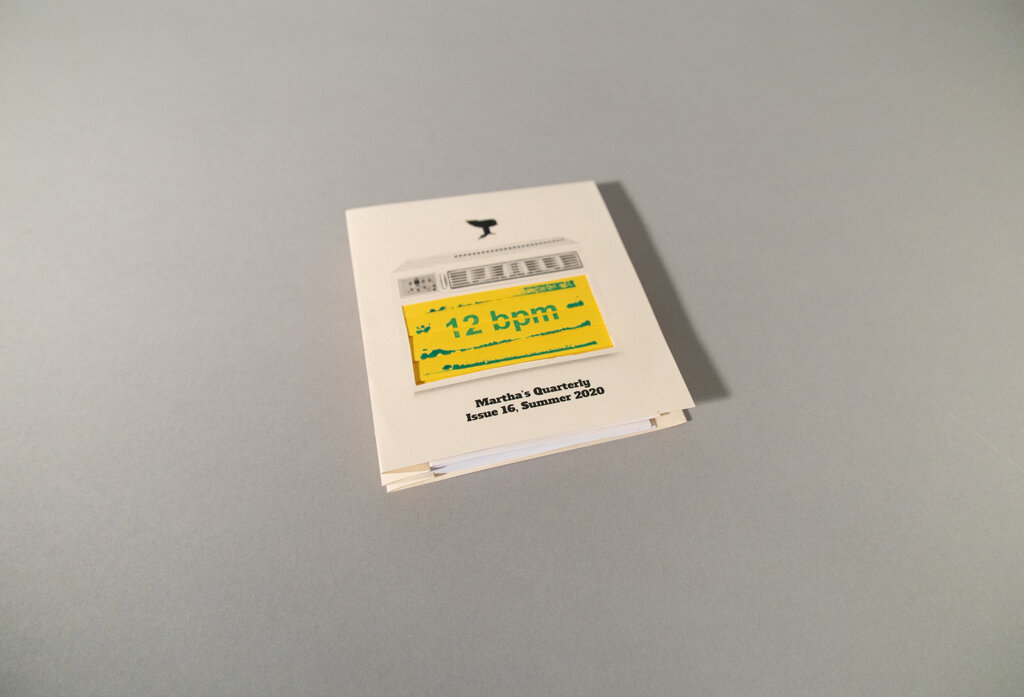
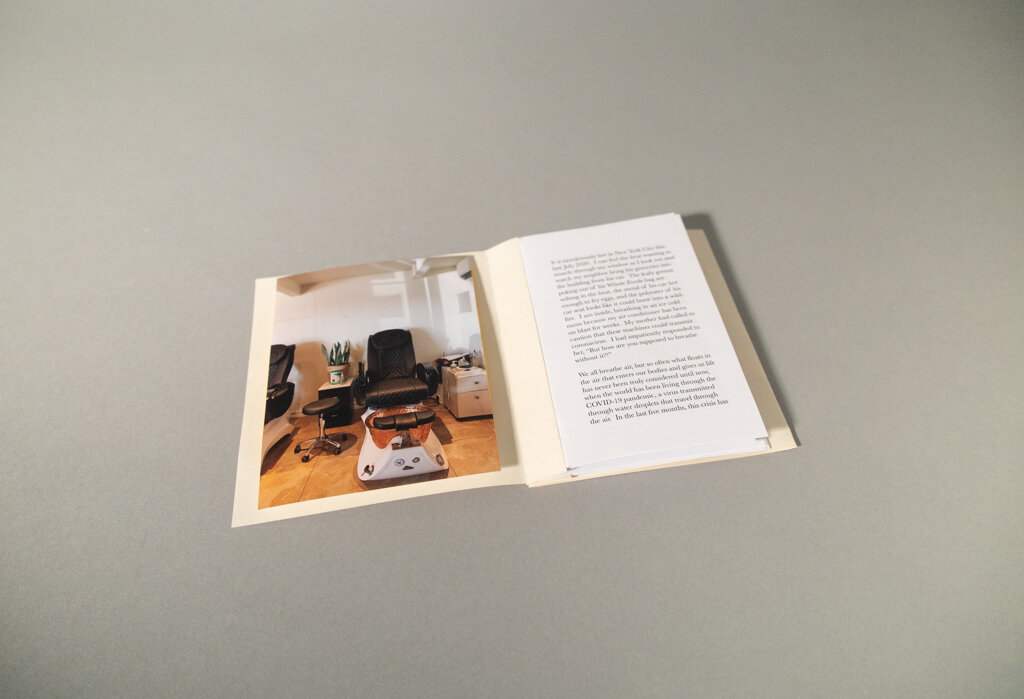
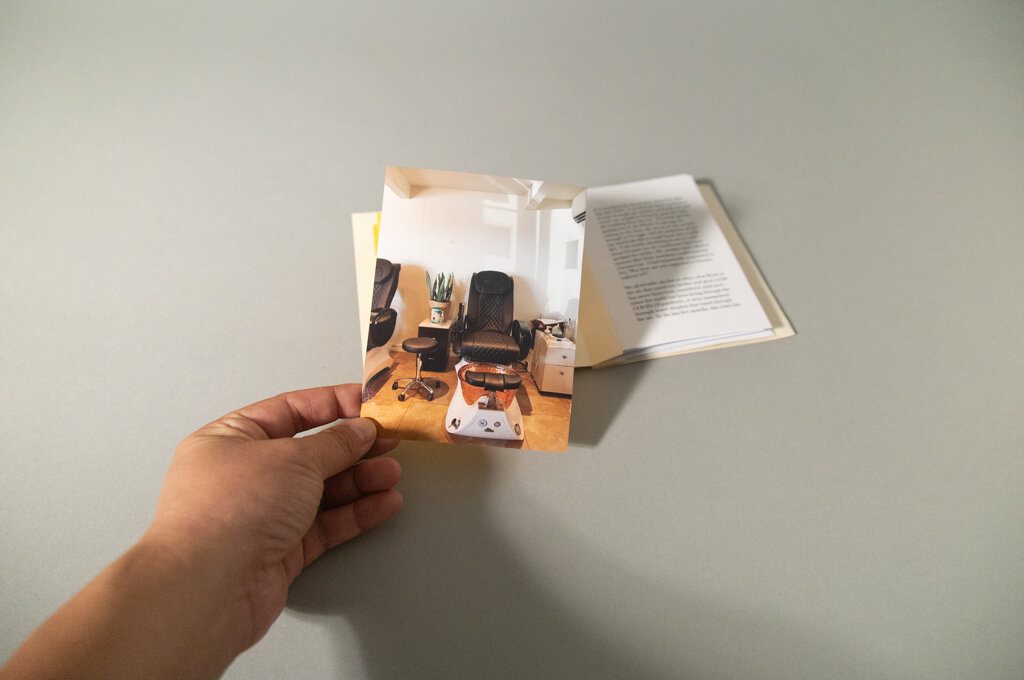
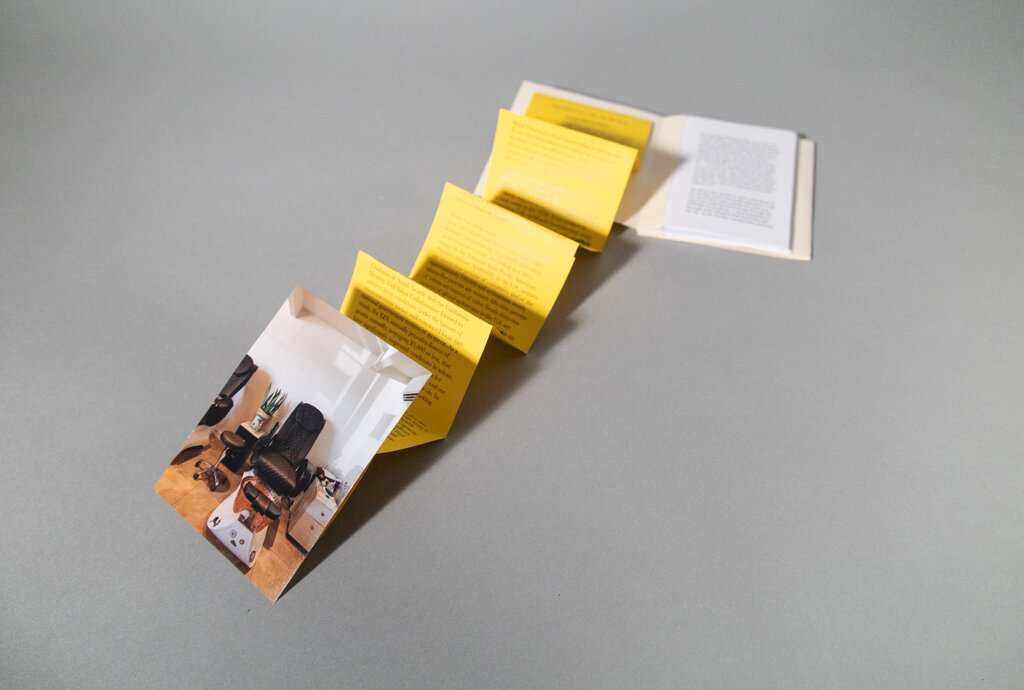

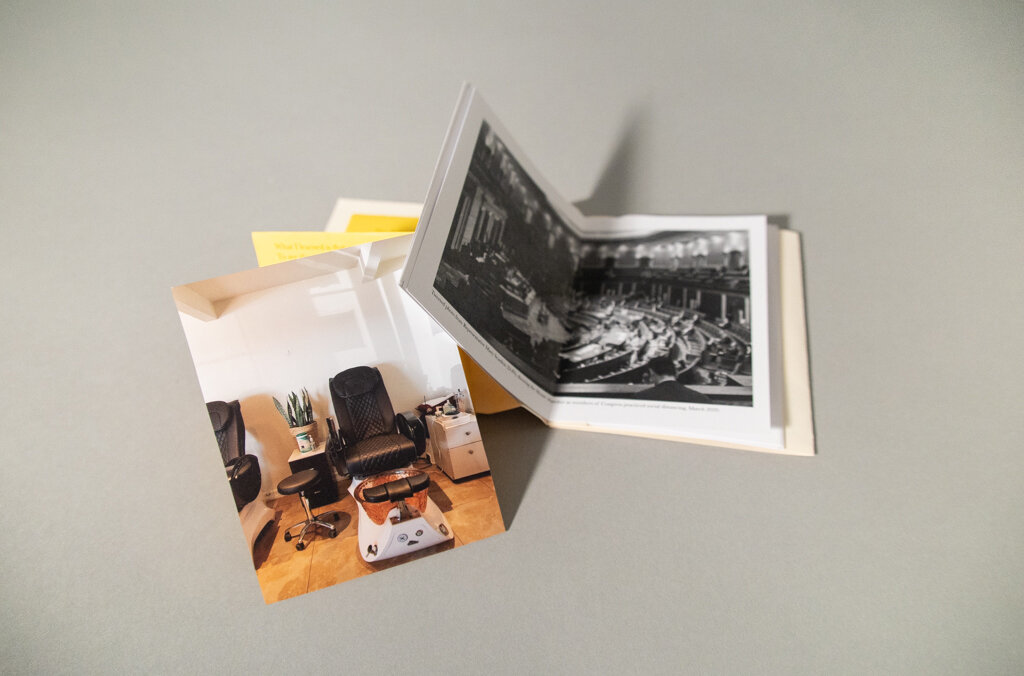
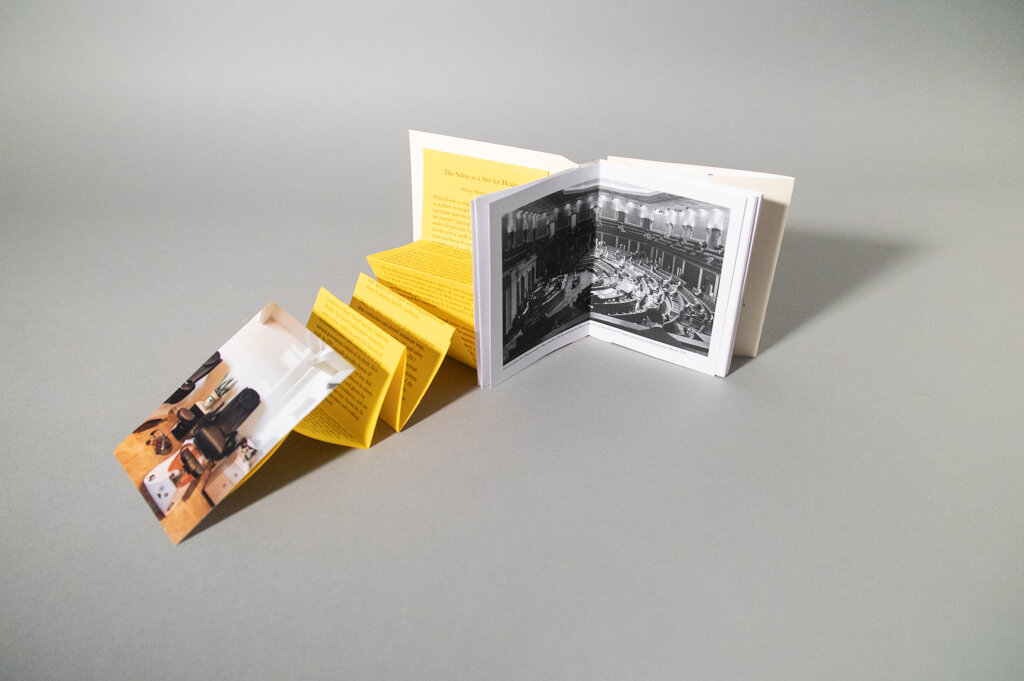
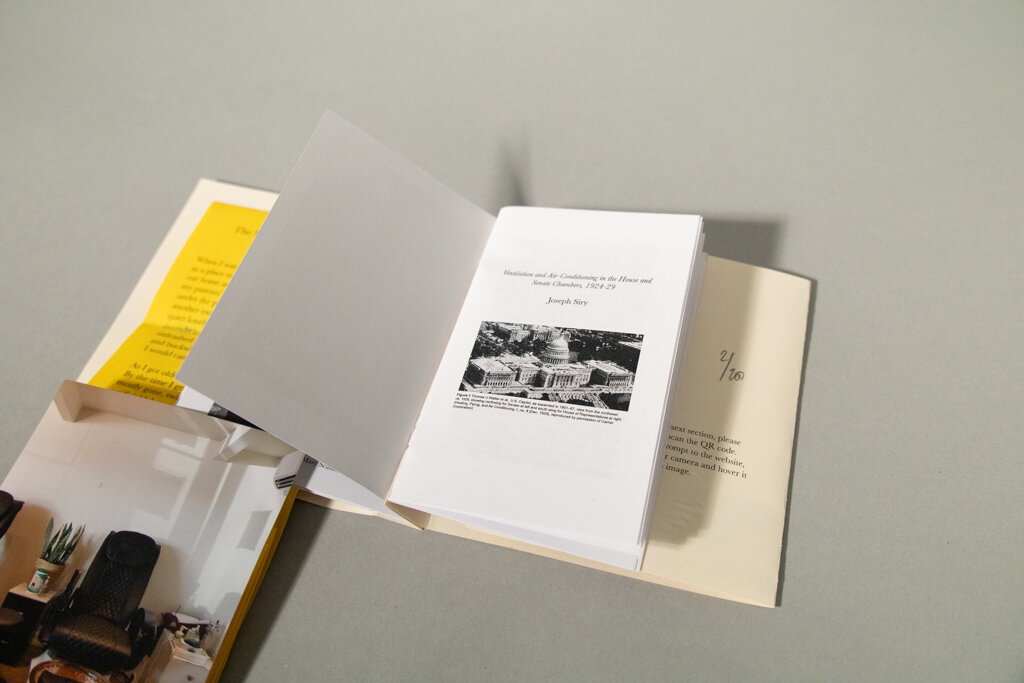

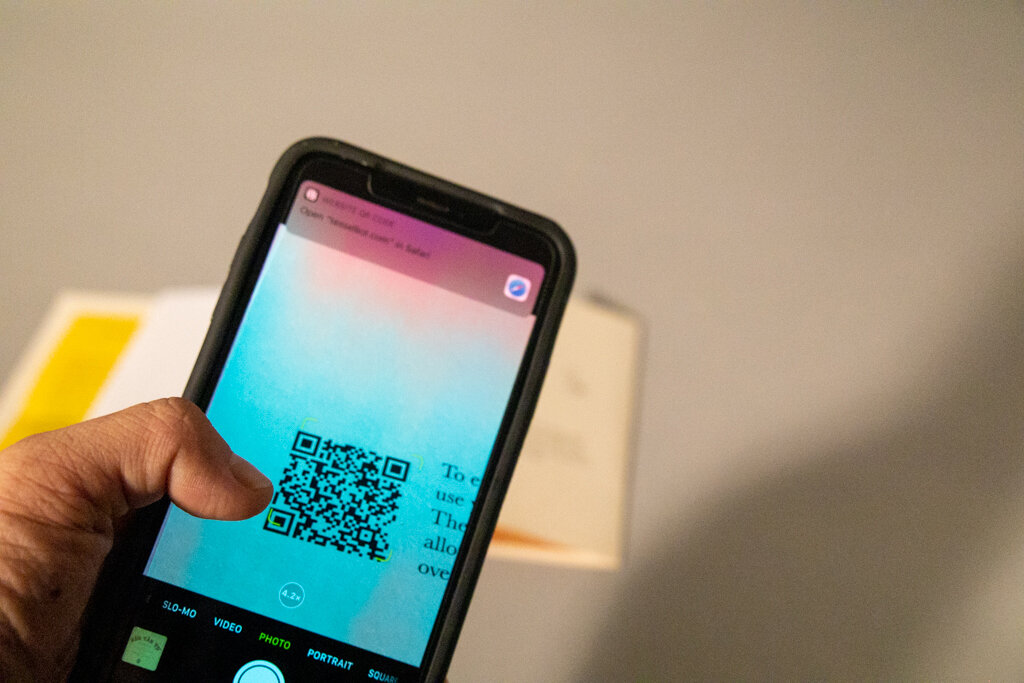
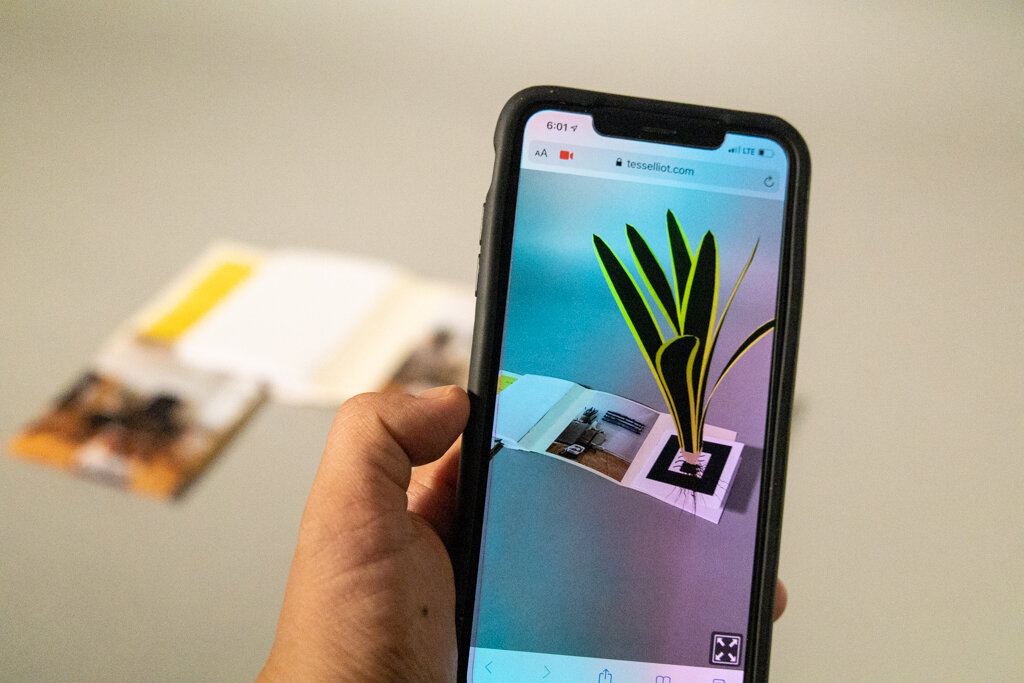


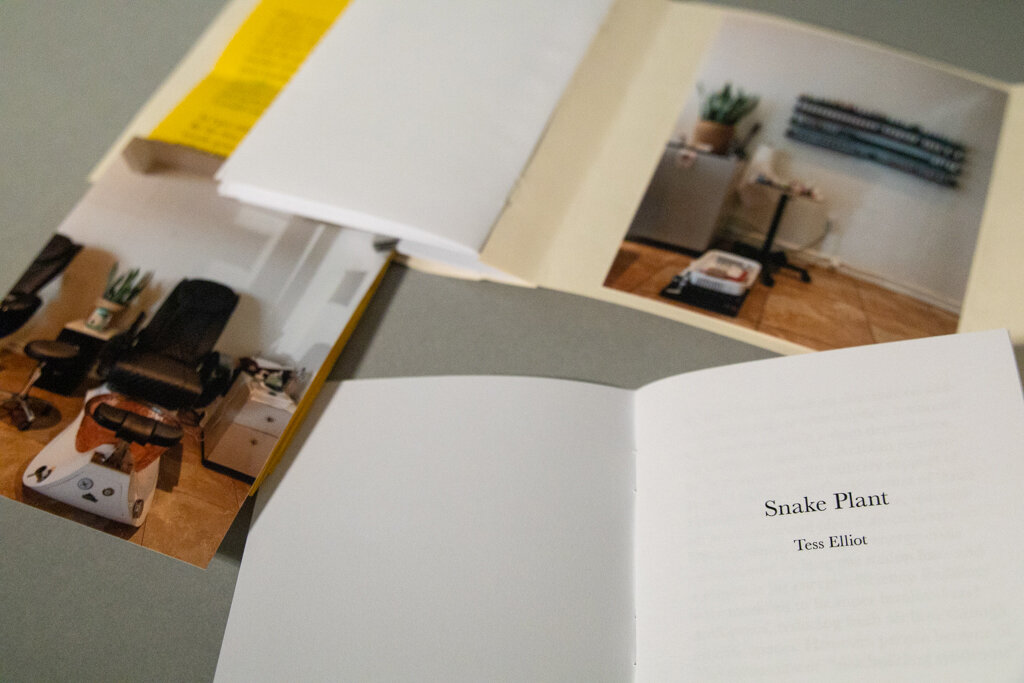
Martha's Quarterly
Issue 16
Summer 2020
12 bpm
5.5” x 4.75”
About the contributors:
Aerica Shimizu Banks is a creative connector, bringing concepts and people together across industries and issues. After careers in tech and environmental policy, she has started her own consultancy, Shiso LLC, and is learning to play guitar.
Tess Elliot is an artist working in emerging tech, installation, and film. She is Assistant Professor of Art, Technology, & Culture at the University of Oklahoma with recent exhibitions at Oklahoma Contemporary, Aggregate Space Gallery, and the Ann Arbor Film Festival.
Joseph Siry is an historian of modern American architecture whose concern for climate change led him to his current work on the history of air-conditioning as energy-consuming mechanical systems.
It is murderously hot in New York City this late July 2020. I can feel the heat wanting to muscle through my window as I look out and watch my neighbor bring his groceries into the building from his car. The leafy greens poking out of his Whole Foods bag are wilting in the heat, the metal of his car hot enough to fry eggs, and the polyester of his car seat looks like it could burst into a wildfire. I am inside, breathing in an ice cold room because my air conditioner has been on blast for weeks. My mother had called to caution that these machines could transmit coronavirus. I had impatiently responded to her, “But how are you supposed to breathe without it?!”
We all breathe air, but so often what floats in the air that enters our bodies and gives us life has never been truly considered until now, when the world has been living through the COVID-19 pandemic, a virus transmitted through water droplets that travel through the air. In the last five months, this crisis has illuminated that, among many things, air does not flow equally across racial and class lines, and that the breathing conditions for those with access gives them an upper hand advantage even if COVID-19 itself does not discriminate. Martha’s Quarterly, Issue 16, Summer 2020, 12 bpm, explores three anecdotes about air that point to how this ubiquitous surrounding substance intersects policy and our personal lives.
Tweeted photo from Representative Mary Scanlon (D-PA) showing the House Chamber as members of Congress practiced social distancing, March 2020
Amidst this heat wave that is passing through America’s Northeast, America’s entire economy could implode by the end of this week, when millions of Americans lose their $600 supplemental unemployment benefit created under the CARES Act in response to the COVID-19 pandemic. Aside from this, the White House continues to encourage the opening of schools and businesses across America, even though there has been a surge of positive cases across the nation’s Sun Belt and in the West. Anxious elderly teachers have written their wills, middle-class parents wonder if they can afford to “pod” with other families, and poor people are left at the mercy of the local and federal governments– not just for options for their children’s schools, but also for options to continue surviving.
Right now, congress is negotiating terms for a new stimulus bill. A few days ago, the Republicans proposed a 1 trillion dollar bill that included slashing the unemployment benefit by $400, offering jobless individuals a $200 weekly supplement. This comes only a few days before August rent is due and other monthly bills. As I sit here in my confusion at the cruelty of what this GOP proposal entails, I wonder what air such powerful people are breathing? What air causes them to separate their humanity from their countrymen? What air makes them deny that what they breathe is also what we breathe?
Beautiful Nails in Laguna Beach, CA. Photo by Patrick Ngo
12 bpm stands for 12 breaths per minute. Any human who breathes below 12 breaths per minute will need medical relief. This could mean that the person cannot breathe on their own and will need the assistance of a ventilator; it could also mean that the person needs their inhaler. Or it could mean that the person needs to come inside, where it is cooler, for a glass of water. The House and Senate chambers, where decisions are being made today about our lives, were transformed into a different kind of ventilated space in 1929, when the capital’s buildings were installed with the first air conditioning system. This issue of Martha’s Quarterly features an excerpt from the historian Joseph Siry’s article Air-Conditioning Comes to the Nation’s Capital 1929-60, which first appeared in the December 2018 issue of Journal of the Society of Architectural Historians. In it he details the conditions by which this important transformation brought a new environment for government. The decision to change the air circulation system in the Senate and House was a discussion that came soon after the the 1918 influenza epidemic, when the dry heated air was blamed for the spread of the flu, and the excessive heat of the summer depleted the energy and tested the tempers of all those who worked in these consequential chambers. It was believed that fresh air would allow for better life and energy for the people inside the buildings. Implicit in this massive, yet subtle, architectural change is that the government would be better functioning if it could breathe more easily.
As I continue to write this, I am grateful that I am able to form sentences in a space where I am privileged with cool clean air to let me work during the midst of this torrid New York summer. The news is on in the background and hums like the sound of my air conditioning machine. Lately, Governor Cuomo has brought up the issue of ventilation systems in his briefings. As we have lived with the lingering coronavirus, we have learned that droplets can circulate and rotate in our indoor air circulation systems, allowing more opportunities for the virus to infect individuals who are inside spaces for prolonged periods of time. As businesses and institutions try to reopen, air ventilations systems need to be considered carefully, and oftentimes– as in the case of public schools or small businesses– there simply is not enough money or support to accommodate a safe indoor space, air circulation being only one of many markers for a safe space.
When you open the left cover picture of a nail salon of this issue, you will also unravel the air condition unit pictured on the front cover. The strip of yellow paper features a piece by policy lawyer Aerica Shimizu Banks, who pens an illustration of how a community’s environment is a reflection of the policies that shape it. More urgently, Banks explains how one’s environment is also a consequence of racial and colonial legacies webbed on our laws. In other words, the air that we breathe, while invisible, reflects the systemic structures that have oppressed, uplifted, and maintained certain groups. This is clear in Banks’ description of nail salon workers, who are exposed to harsh chemicals daily, and the relief that they need to provide them with a healthier air circulation system.
Beautiful Nails in Laguna Beach, CA. Photo by Patrick Ngo
Nail salons were not deemed essential businesses, and many of the industry’s workers have suffered throughout the pandemic’s business closures. These workers– many of whom are low-wage earning women of color– along with many other working-class Americans live amidst constant health risks and economic anxiety. This stress is also occurring as the nation is enduring a racial reckoning ignited by the heinous murder of George Floyd, who cried under the knee of Officer Derek Chauvin, “I can’t breathe!” Since May, protests gathering people of all ages, races, and locales have taken to the streets, despite the looming threat of the coronavirus. Chants cry, “Defund the Police!” and “No Justice, No Peace!” Throughout June, looters raided boarded up stores, police cars were torched, and fantastic fireworks lit up the skies across America. The most recent escalation has been the visible force inflicted by Federal Agents on peaceful protesters in Portland, Oregon.
And it is still so scorching hot outside. “How is everyone breathing? Where do they go home to rest?” are some questions I constantly ask.
And so, this brings us to the last contribution in this Martha’s Quarterly. Artist Tess Elliot created a virtual reality experience wherein a snake plant appears on your phone when you hover it over the image of the nail polish bottle. This artwork extends from her writing about the political significance of this domestic and common household plant. In her writing, Elliot describes a time in the 70s when there was an energy crisis due to a lack of oil; as a result, buildings were insulated and designed to be draft-proof, causing a lack of airflow. As a result, people became sick, reporting symptoms of itchy eyes, rashes, congestion, and more. In response, NASA published Interior Landscape Plants for Indoor Air Pollution Abatement in 1989, a report that encouraged the addition of plants, particularly the snake plant, in closed spaces because of their air-purifying qualities. This was published with the simultaneous desire to create more air purified spaces in space stations and future extraterrestrial colonies.
Throughout the coronavirus lockdown, houseplants have been a source of solace for many people. On social media, pictures of social strife have been interrupted with pictures of newly potted plants– many of them snake plants– that offer a little bit of peace and happiness in a time of prolonged uncertainty. I recall a few pictures of plants that I saw from a friend who is healing from Covid-19. He said he is not back to normal, that he has to take each day slowly, that the virus has changed his breathing, that he cannot breathe as easily anymore. But the plants seem to offer something: if not solace, then something else that remedies the toxic air that seems to have penetrated all layers of our social fabric. I think about the plants that could be waiting at home, purifying the air of all those who are sick, those who are waiting for Congress to make a decision from their air conditioned spaces, or those who have spent a day protesting for social justice– or, more broadly, air for all of us to breathe equally.
– Tammy Nguyen, Editor-in-Chief
Martha's Quarterly
Issue 15
Spring 2020
Mouth to Mouth
8.5” x 6.5”
Below is a video of a performance by Rafael Sanchez entitled New Word No Word New World. This was his response to Passenger Pigeon Press’s prompt to “exonerate the n-word.” We took this performance and turned it into a component of this season’s artist book. Between 3.40 - 8.50 the sound is silent due to copyright issues. If you are a current subscriber, we will send you a private and non-distributable copy of the unedited version to accompany your reading experience.
About the contributors:
Anaïs Duplan is the author of Blackspace: On the Poetics of an Afrofuture (Black Ocean, 2020), a forthcoming book of essays on black digital media artists. He is the founding curator of the Center for Afrofuturist Studies and Program Manager at Recess.
Rafael Sanchez, a Newark native and avid lover of cricket sounds and Mei-mei Berssenbrugge's poetry, began his performance art career in 2000, chasing buses through the Central Ward of the Brick City. Since then, he has explored endurance and installation performance, developed a deep admiration for Butoh, Bill T. Jones, and Merce Cunningham, consistently asked his audience to make a psycho-educational commitment to understanding his work. He teaches in Brooklyn and lives in Harlem.
Lê Thuận Uyên is a curator based in Saigon, Vietnam. Beside her dedication to hanging out with artists, Uyen is interested in investigating alternative micro histories of Vietnam that are sidelined or absent from the mainstream narrative.

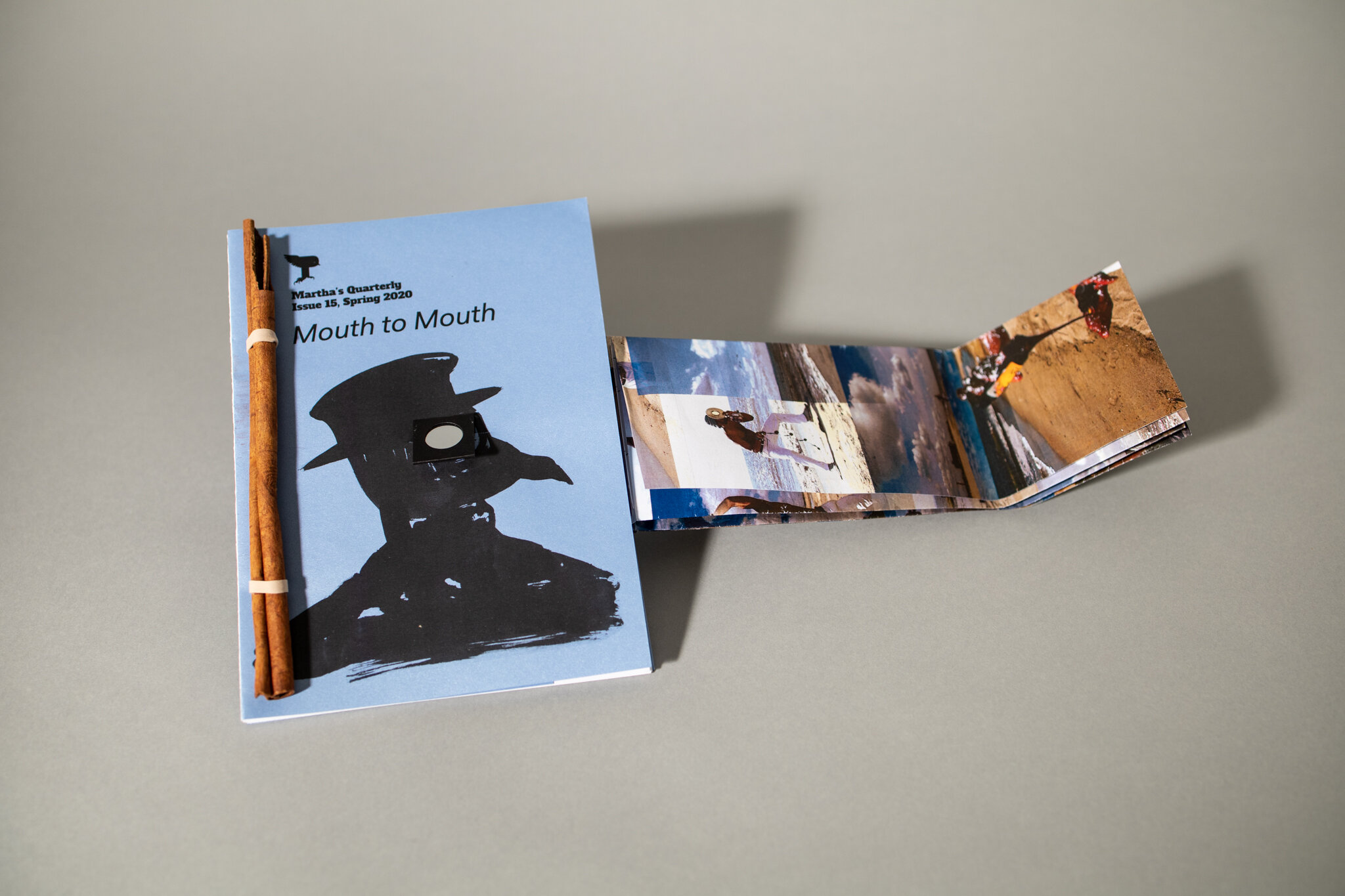

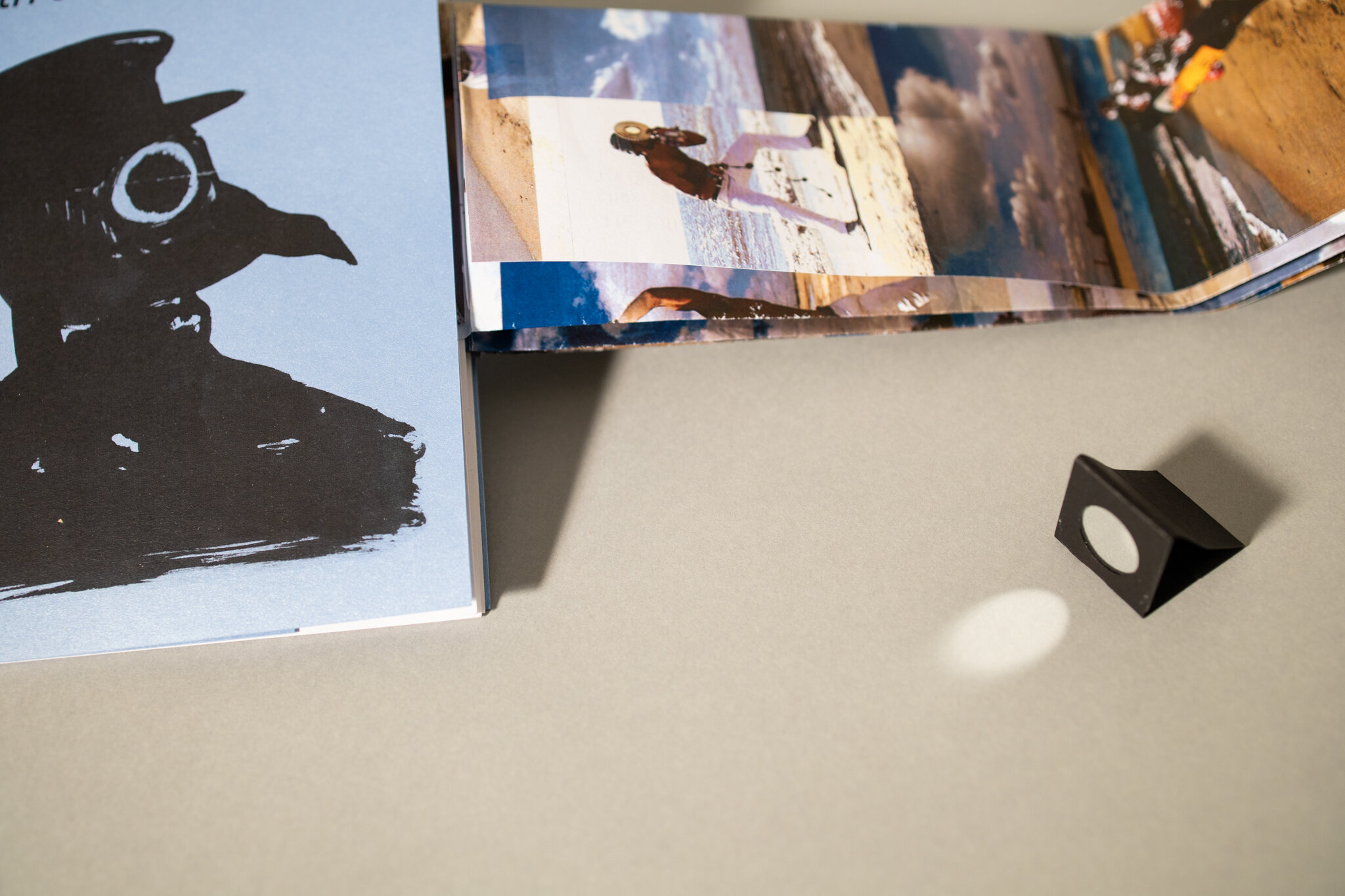
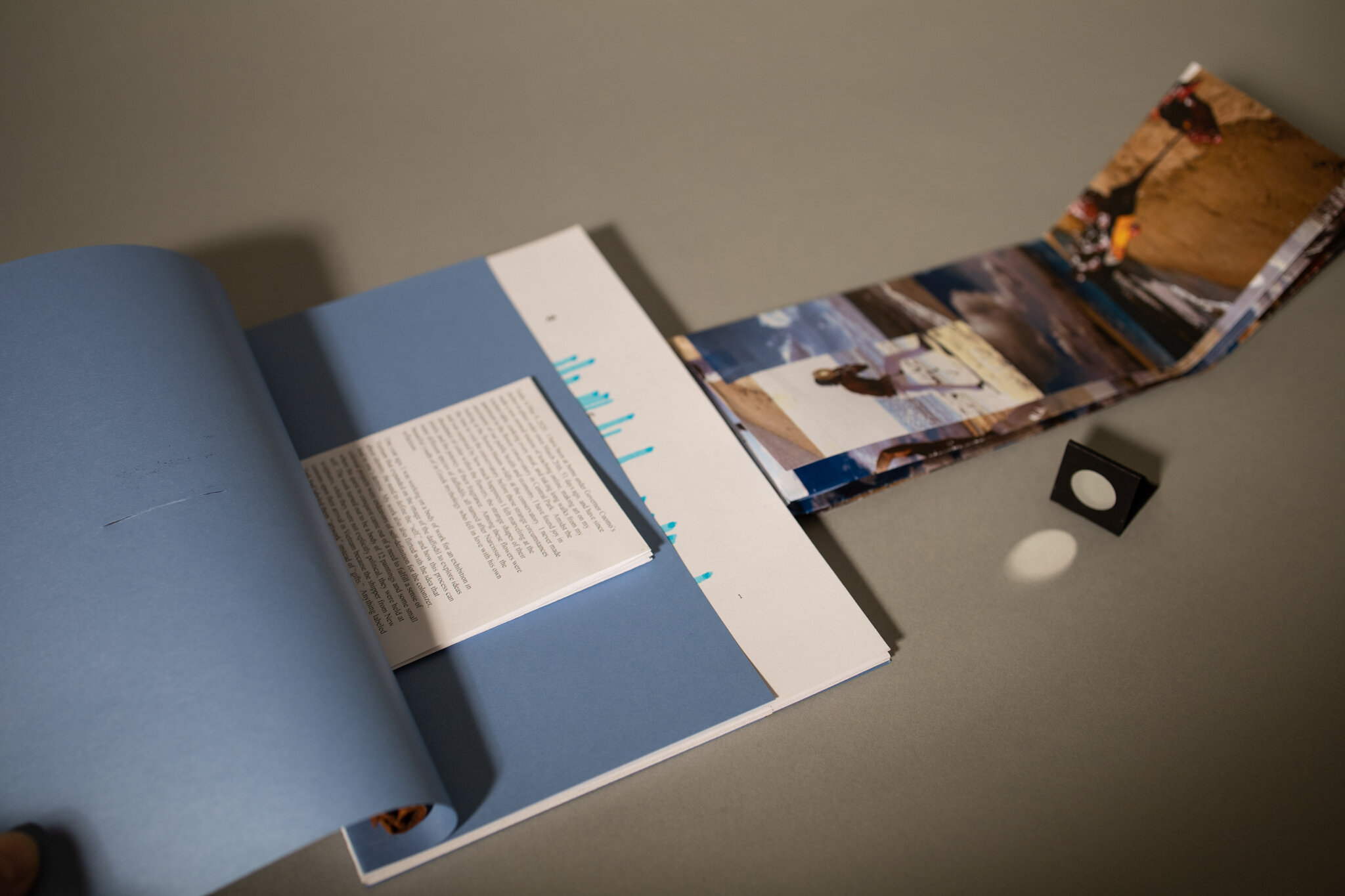
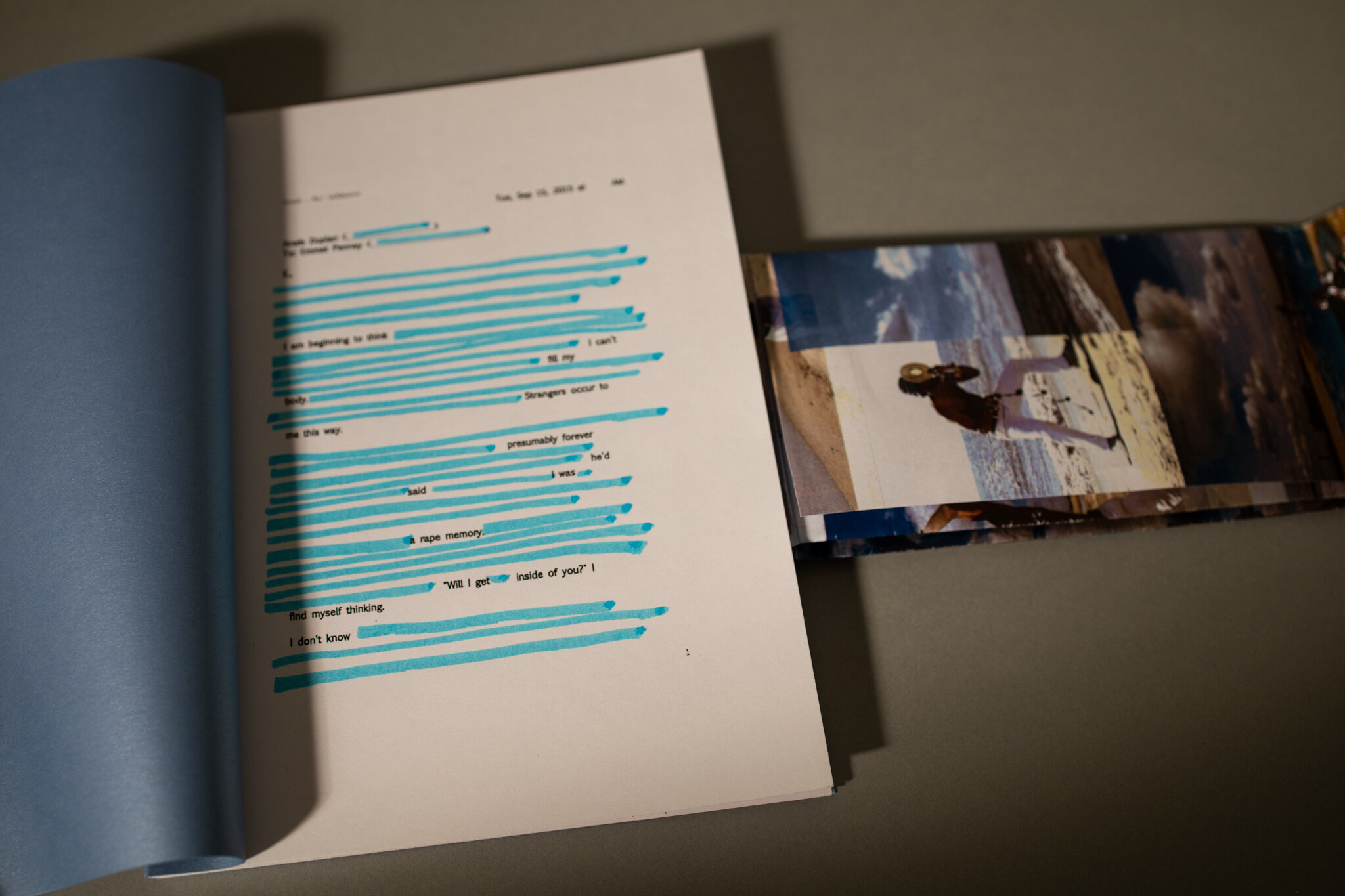
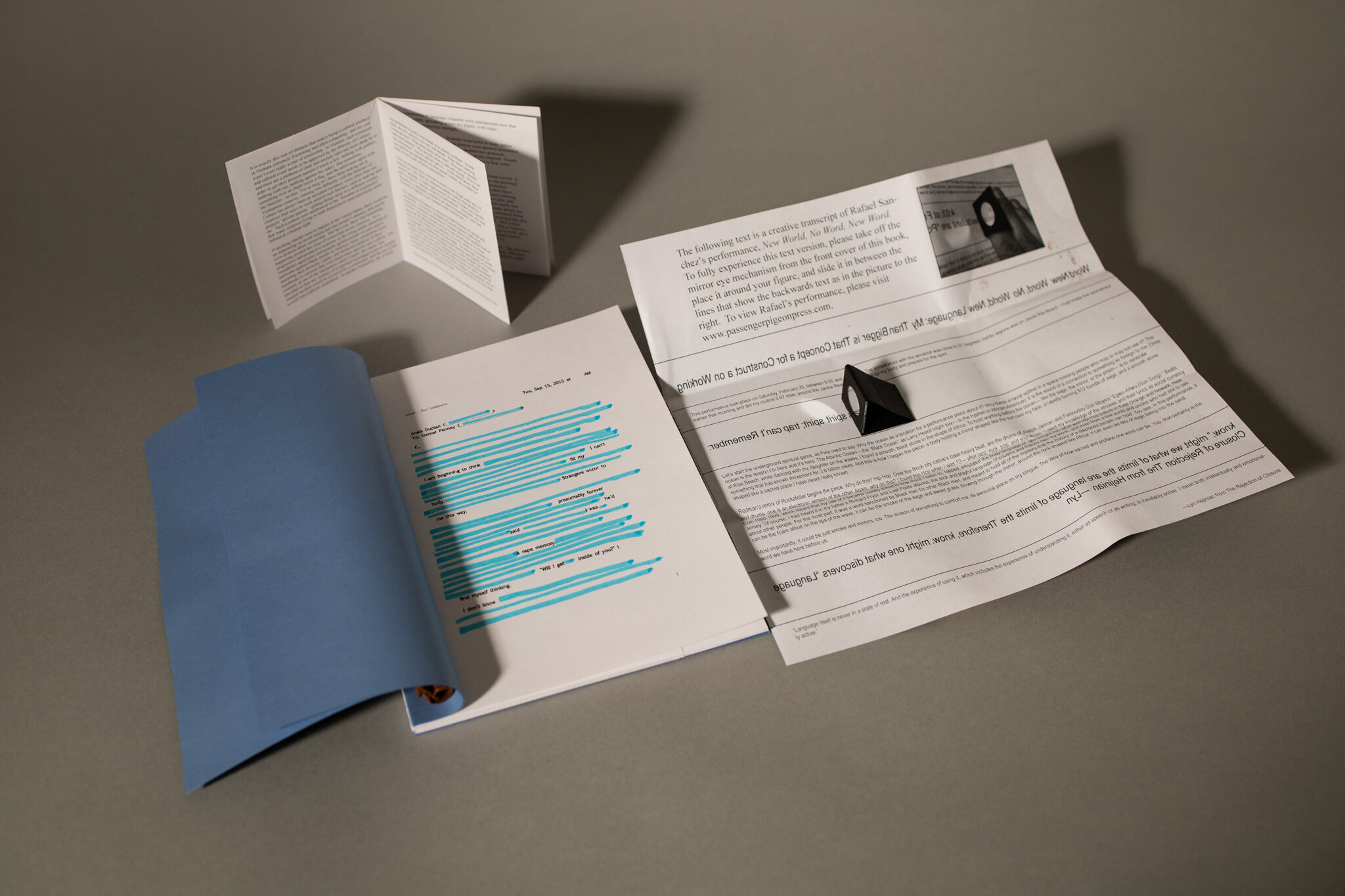
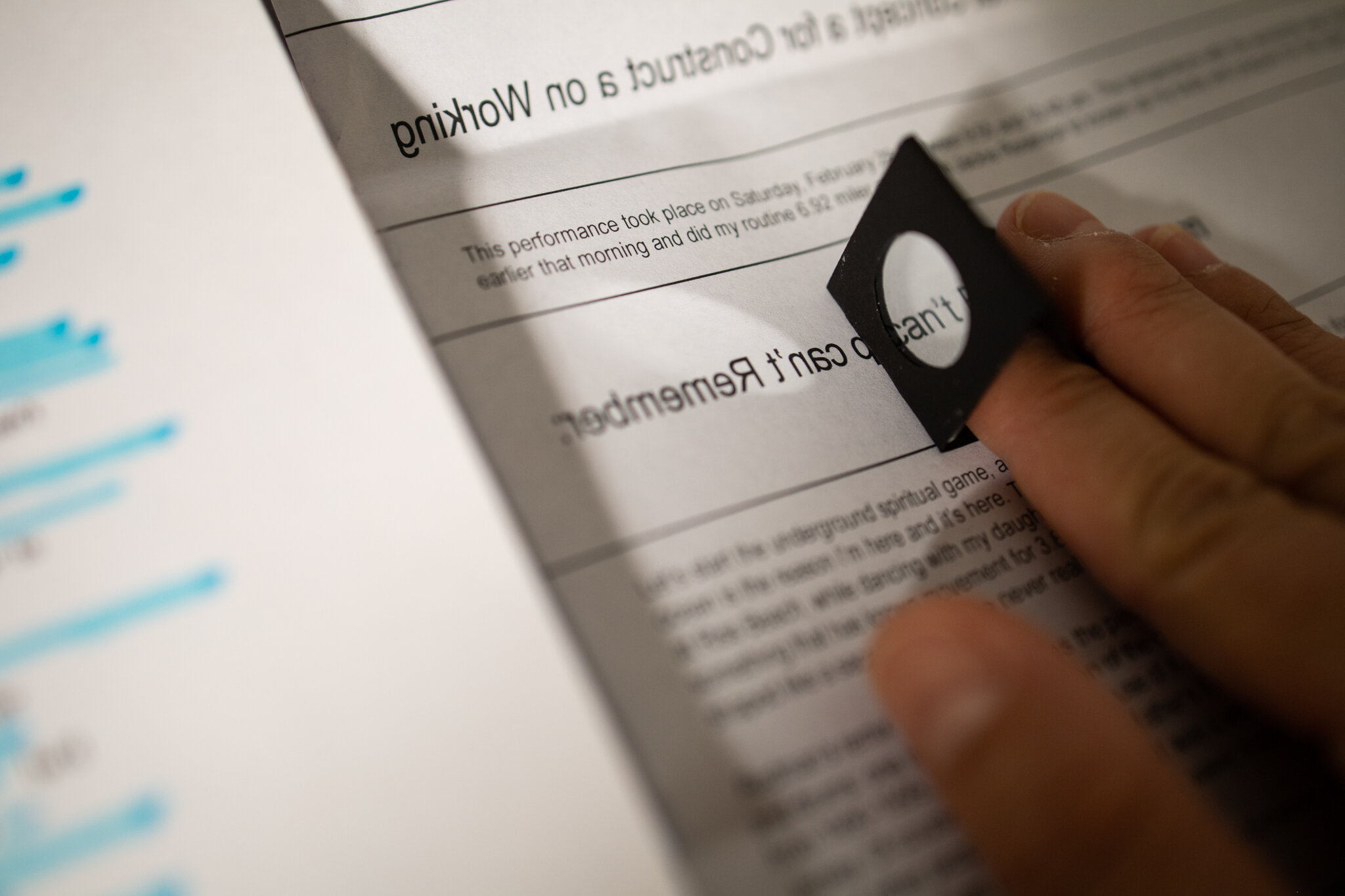
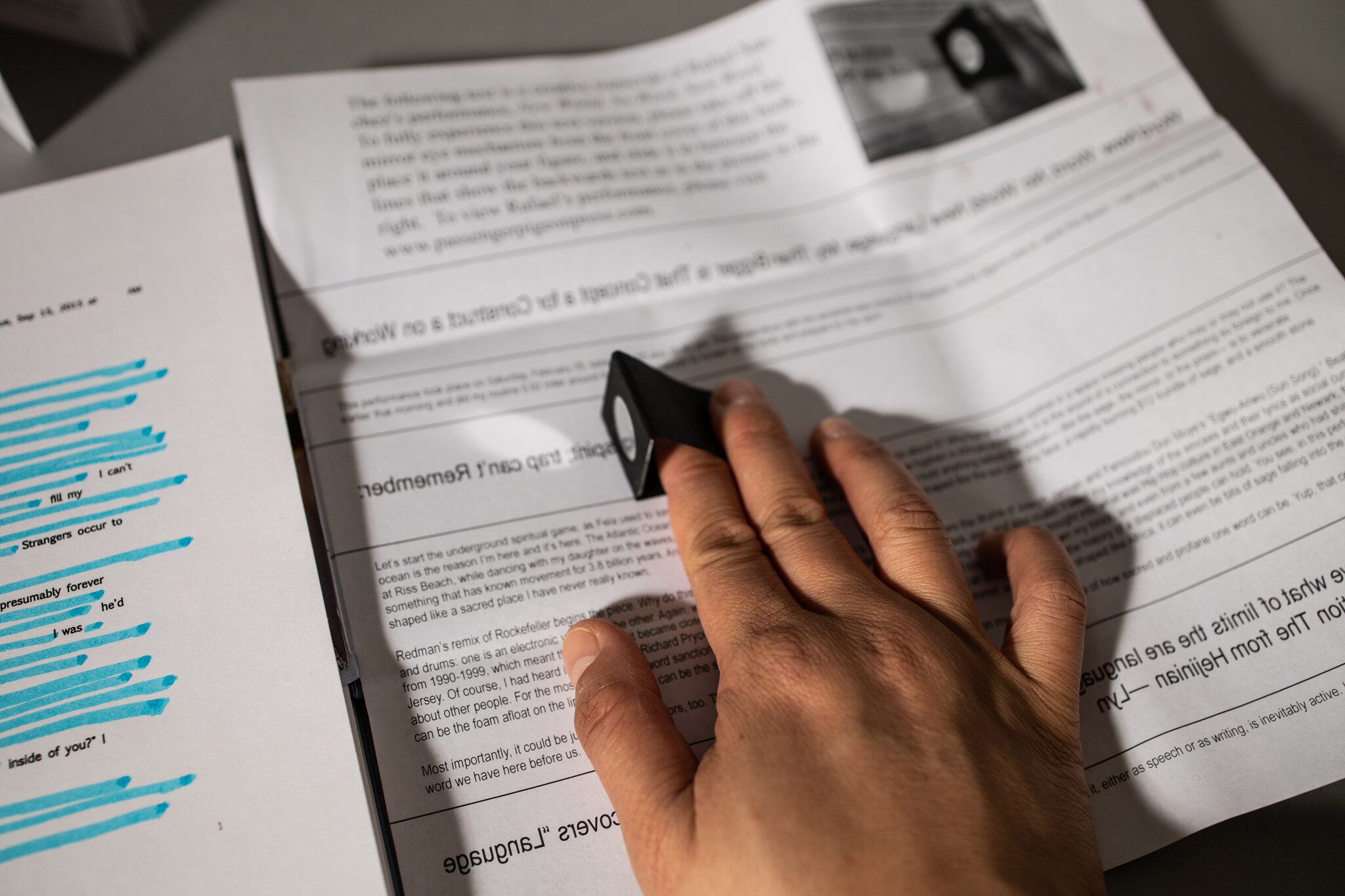
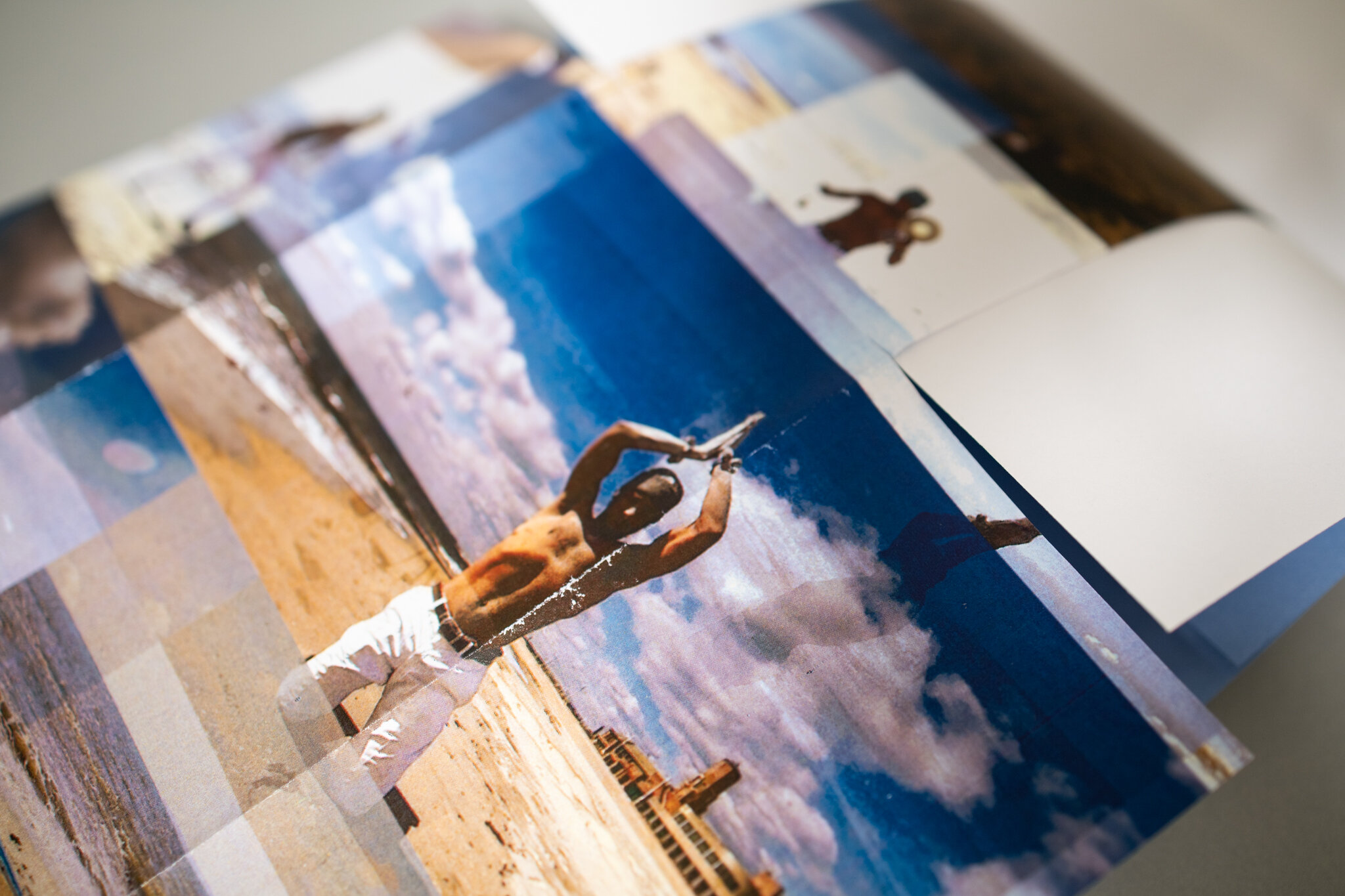
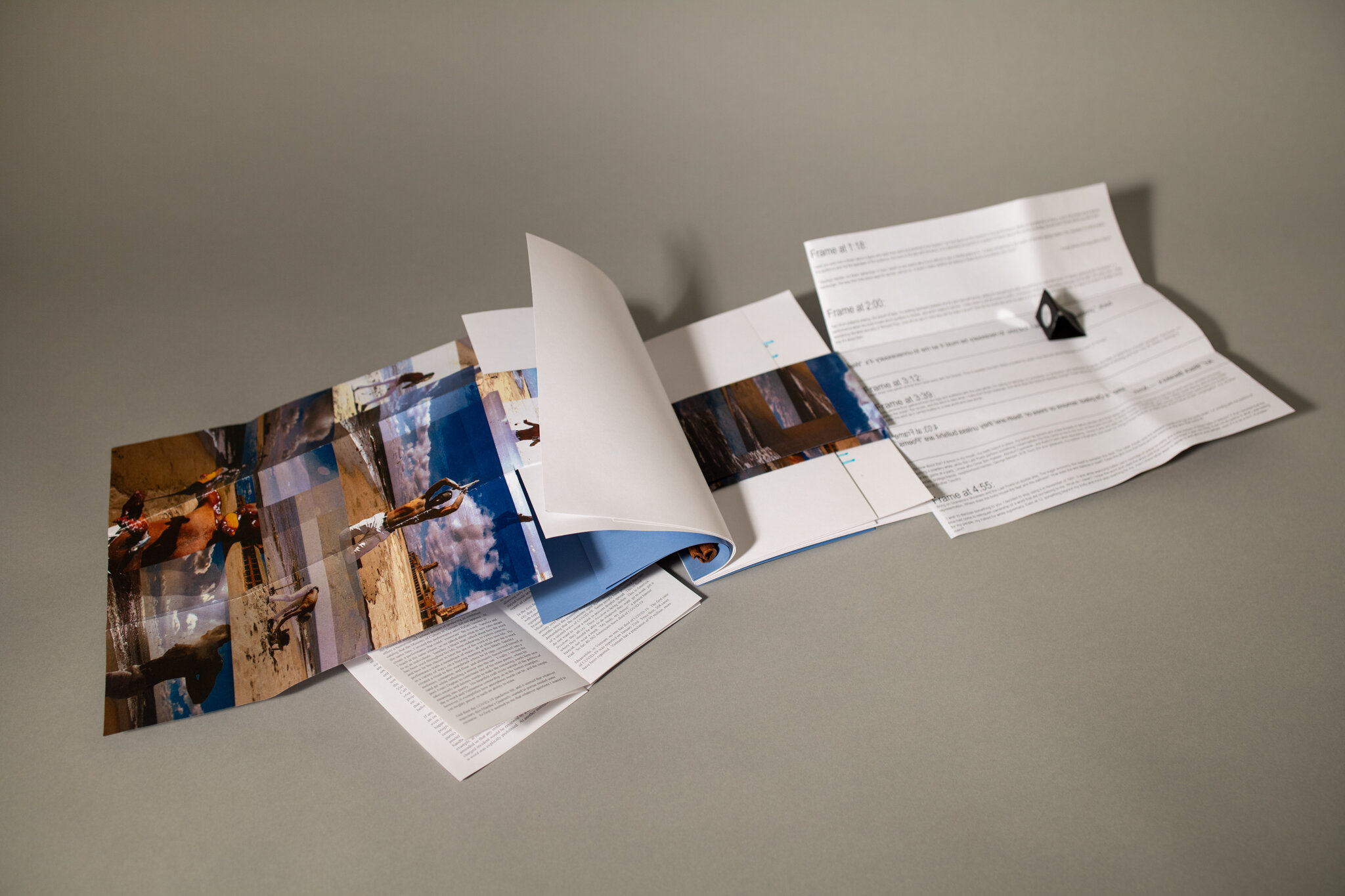
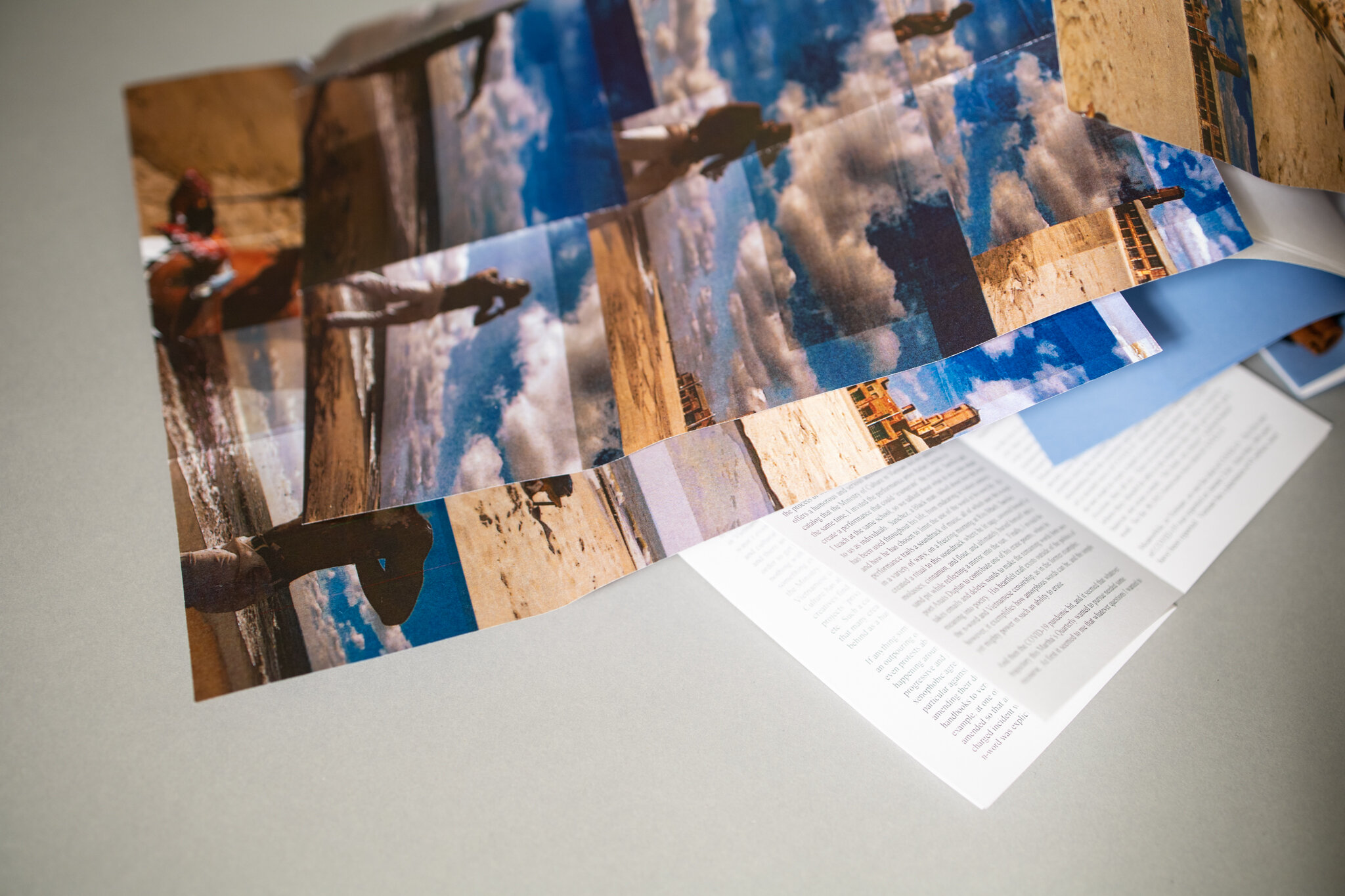
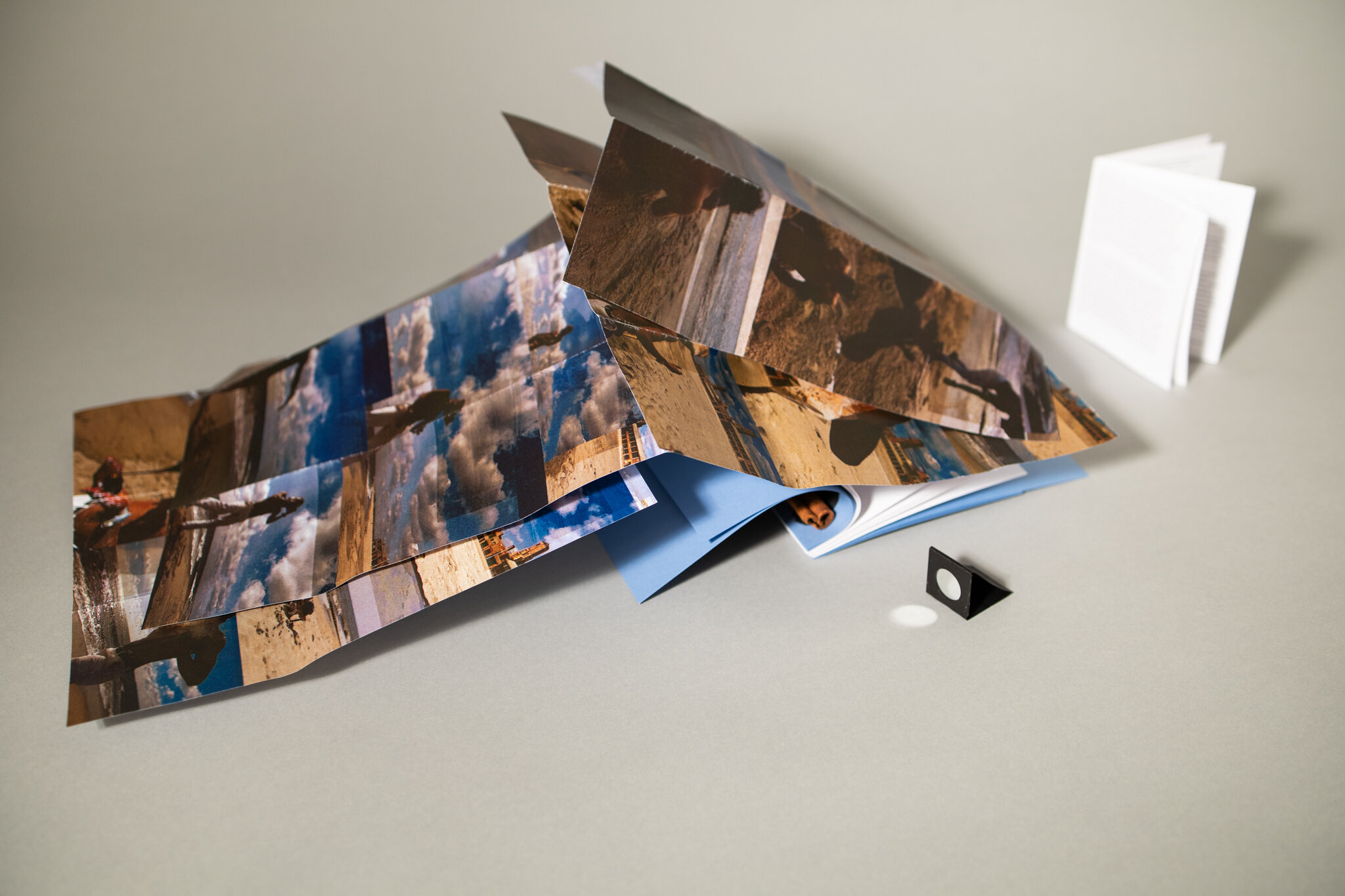
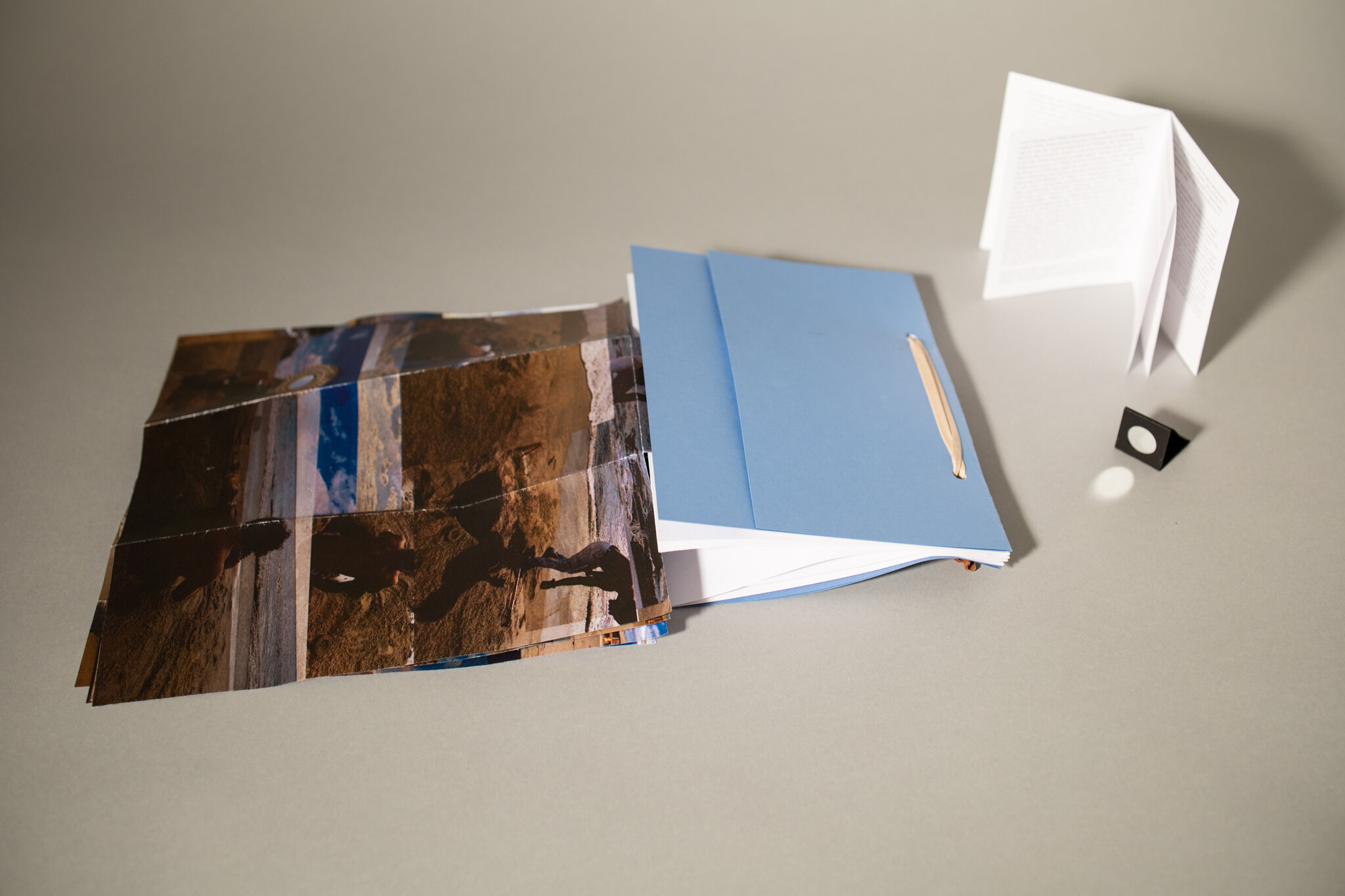
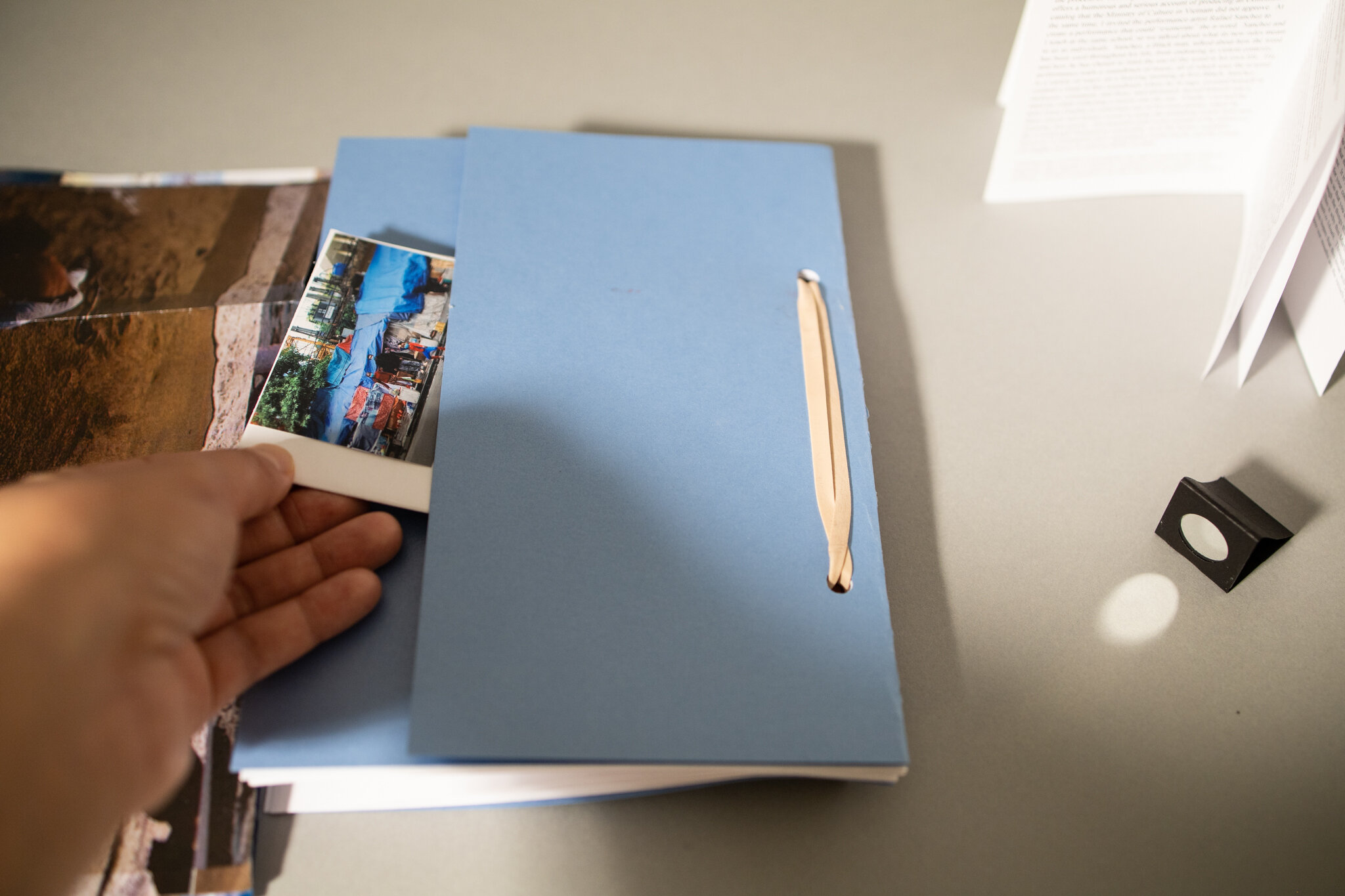
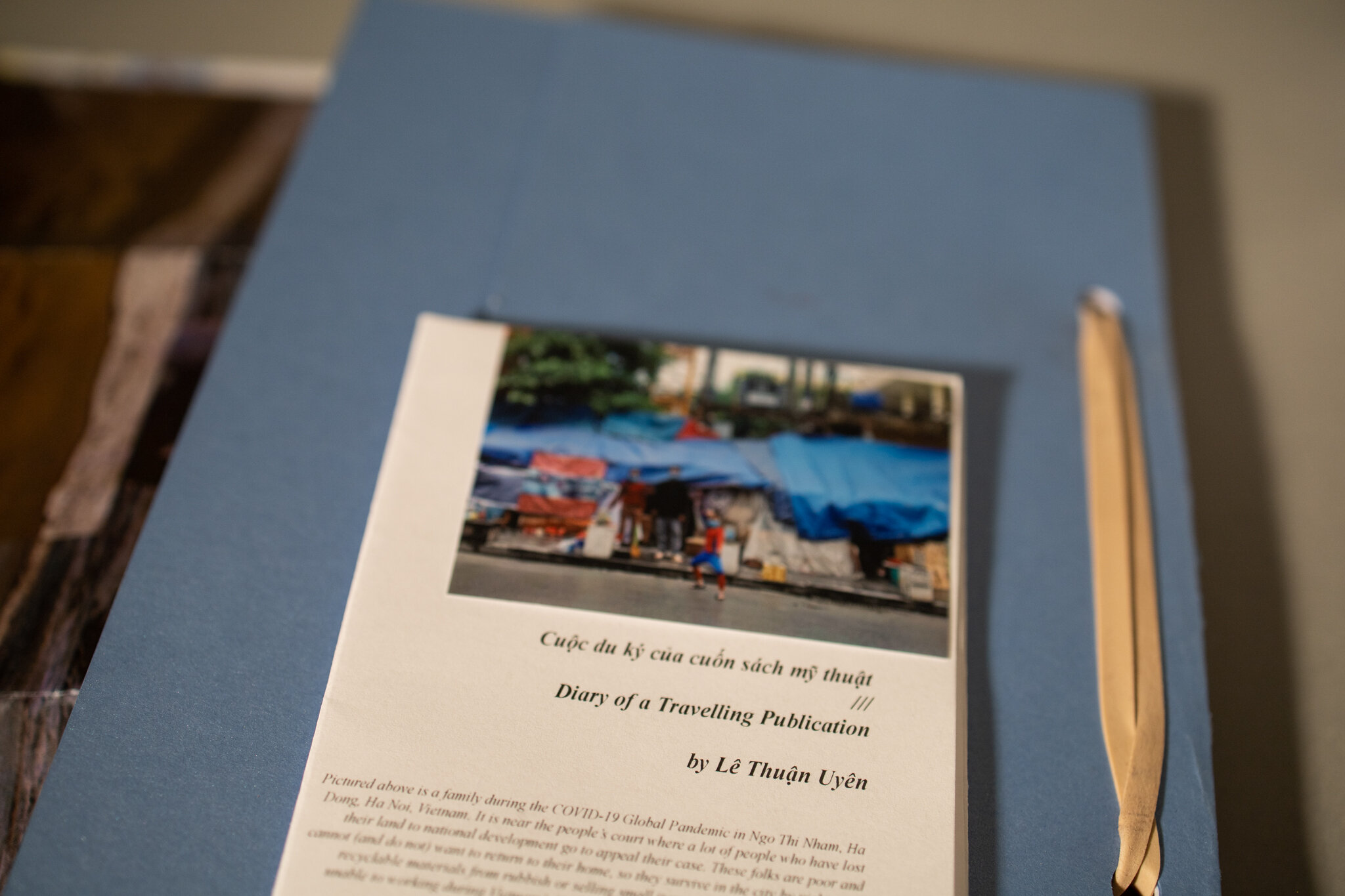

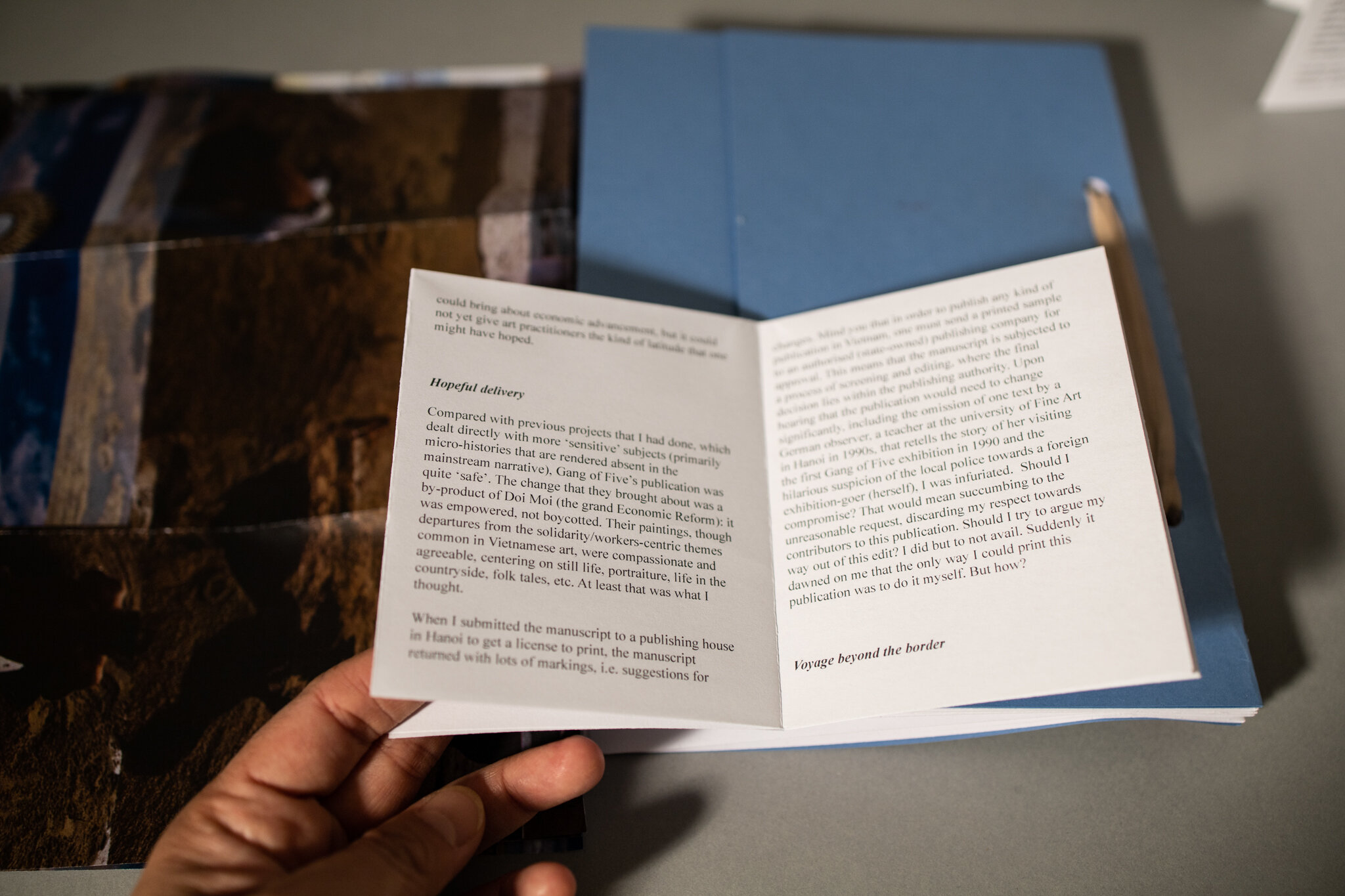
Today is May 9, 2020. I have been at home under Governor Cuomo’s shelter-in-place order since March 20th, 51 days ago, and have since made a new normal routine of teaching online, making art on my kitchen table, cooking every meal, and taking long walks from my apartment to the flower conservatory in Central Park. Amidst the uncertainty of our public health and economy, I have found joy in looking at the flowers bloom wildly at the conservatory. I never made the time to visit the conservatory before these strange circumstances and was surprised by how much happiness I felt marveling at the abundance of color within the flowers, the strange shapes of their pistils, and the potency of their fragrance. Among these flowers were many different species of daffodils, all named after Narcissus, the beautiful youth of in Greek mythology who fell in love with his own reflection.
Echo And Narcissus, John William Waterhouse
One year ago, I was working on a body of work for an exhibition in Vietnam that expanded on the image of the daffodil to explore ideas about identity, the need to define the “self,” and how this process can lead to one’s demise. My work also also flirted with the idea that colonial projects were endeavors of self-definition for the colonizer, where the quest to conquest came out of a need to fulfill a sense of self. The work turned out to be a body of 12 paintings and some small sculptures; while they were not explicitly political, they were held at customs upon their arrival in Vietnam because the shipper from New York had labeled them “artwork” instead of “gifts.” Anything labeled “artwork” coming into Vietnamese customs receives a high level of scrutiny and often an unnecessary amount of hassle. The exhibition opening was postponed for a week in order to get the artworks out of customs.
It is exactly this sort of obstacle that makes being a cultural producer in Vietnam extremely frustrating and often exhausting-- and my case wasn’t even really a case of censorship. In Vietnam, each exhibition and cultural event needs to be approved by the Ministry of Culture, and there are a plethora of clear and unclear rules one must abide by in order to get their projects passed (I know a few: nothing with politics, nothing with sex, nothing against the state). But sometimes, something ever so slight raises a flag, and the artist must agree with the Ministry– or else. For as long as I have been making art in Vietnamese contexts, running into difficulty with the Ministry of Culture has always been an accepted nuisance; more often than not, creatives find ways to work around such barriers, such as making their projects “private parties,” getting things done in a different country, etc. Such a culture runs antithetical to the “freedom of expression” that many creatives living in both democracies and autocracies unite behind as a human right.
If anything similar were to happen in the United States, there would be an outpouring on social media and into people’s inboxes, and maybe even protests about censorship. But last year, there was something happening around this issue of censorship across America. As a progressive and productive response to the rising public reporting of xenophobic agressions and assaults against people of color and in particular against Black people in America, many institutions were amending their diversity, equity, and inclusions policies in their handbooks to versions that were much more specific and explicit. For example, at one of the institutions where I teach, the clause was amended so that any instance of a reported microaggression or racially charged incident would be reviewed by a committee, and the use of the n-word was explicitly prohibited. At another institution, the n-word was prohibited except to individuals who identify as Black. In both cases, the new policies were met with debate. What about teaching historical texts? What about other racial slurs? Who gets to identify with what identity? Who decides what is right and wrong? Who is on the committees? And on, and on, and on... In my observation, these new policies put parameters on what people cannot say in order for them to stay a part of these communities.
Pro-Trump Protester with a "My body my choice” sign.
(The use of racial slurs, even the n-word, is not illegal under any US federal law. But when an institution adopts a policy that prohibits certain language, it needs legal counsel in order to make sure that the policy is not in violation of the first amendment. Ultimately, the way the policy is ultimately worded is of utmost importance, such that freedom of speech is not violated under federal law.)
The question of freedom is intrinsic to both freedom of speech and censorship. In America, freedom of speech protects individual expression, whereas censorship in Vietnam allows for another kind of freedom: one where people are free from knowledge of a certain spectrum of information or opinions. In a way, there is a freedom to not receiving certains kinds of knowledge. So when the use of words or language is prohibited to protect the feelings and dignity of a certain people, another kind of freedom is born: a new freedom for those people who can now move through spaces with a refreshing liberty. Of course, this new freedom becomes a barrier for other groups of people who were used to uttering slurs without consequence, not so dissimilar from creatives trying to express themselves in ways that would offend the Vietnamese state.
Propaganda poster in Vietnam during Covid-19 Shelter-in-Place, 2020
There seems to be no way for any large people to truly be free in the most romantic and liberal understanding of the word, but I wanted to explore these issues around freedom of expression by putting side-by-side the issue of censorship in Vietnam, the significance of banning the n-word in America, and what it means to take out words or not say words in general to create space. In late winter, I asked the Vietnamese curator Lê Thuận Uyên to contribute a piece that speaks to the process of working creatively within a censored context. She offers a humorous and serious account of producing an exhibition catalog that the Ministry of Culture in Vietnam did not approve. At the same time, I invited the performance artist Rafael Sanchez to create a performance that could “exonerate” the n-word. Sanchez and I teach at the same school, so we talked about what its new rules meant to us as individuals. Sanchez, a Black man, talked about how the word has been used throughout his life, from endearing to violent contexts, and how he has chosen to limit the use of the word in his own life. His performance trails a soundtrack of music, all of which uses the n-word in a variety of ways; on a freezing morning at Riis Beach, Sanchez created a ritual to this soundtrack where he lit sage, covered himself in molasses, cinnamon, and flour, and ultimately buried himself into a sand pit while reflecting a mirror into the sun. Finally, I invited the poet Anaïs Duplan to contribute one of his erasure poems, where he takes emails and deletes words to make the remaining words form new meaning into poetry. His heartfelt craft exists outside of the politics of the n-word and Vietnamese censorship, as in the former examples; however, it exemplifies how amorphous words can be, and the simple yet mighty power in such an ability to erase.
And then the COVID-19 pandemic hit, and it seemed that whatever trajectory this Martha’s Quarterly wanted to pursue needed some recourse. At first it seemed to me that whatever questions I wanted to ask about censorship or language etiquette were unimportant now that a disease was wildly spreading across the planet, with many succumbing to its mysterious strength.
The world quickly shut down. Students went home to study online with their teachers. Eye doctors and dentists were deemed unessential, so they went home too. Grocery stores adopted new protocols, allowing only a few shoppers at a time. The streets emptied. People stayed inside anxiously watching the news, waiting to hear some report of certainty.
John Oliver's 'Last Week Tonight' episode on coronavirus featuring Wash Your Hands, a viral Tik Tok video from Vietnam
In the first few weeks, living in New York was somewhat surreal. A city that is always bustling was eerily quiet; the news was drowned with reports of people dying and a lack of personal protective equipment and ventilators; the images of nurses with their faces bruised from wearing masks for 12 hour plus shifts were sobering. Meanwhile, more and more people started to lose their jobs, and anxiety over bills started to sound the alarms. It is now nearly two months since the economy stopped in America, and many people are demanding that the economy open again, despite the imminent threat of a second wave of COVID-19. Some people have protested that they do not want to wear a mask to prevent droplet spread. This is their freedom, they all cry. Their freedom is being stolen. This is America, where they should be able to do whatever they want: go to work, get a haircut, not wear a mask. “My body, my choice!” a protest banner read. So far, 80,562 Americans have died of COVID-19.
Meanwhile, in Vietnam, no one has died of COVID-19. The first case of COVID-19 was reported on January 23rd. Since then, 268 cases have been reported. Vietnam has a population of 95 million, more than South Korea, Taiwan, and Singapore combined, and yet it has had arguably the most successful response to this virus. Much of its success comes from the simple but strict means of testing and contact tracing: anyone who was infected and all their immediate contacts were immediately quarantined. On top of this, there was a unified national rallying to fight the virus. Two mobile apps were quickly developed that allowed people to record their health; lively, creative media campaigns informing the public about COVID-19 that flooded the streets with posters, social media, and TV cartoons. One song about washing your hands was so catchy it ended up on Last Week Tonight with John Oliver. Today, Vietnam is open, and I see my friends there enjoying restaurants with each other again, each with a unified awareness and precaution that the virus still lingers. Vietnam is free.
Paul Fürst, engraving, c. 1721, of a plague doctor of Marseilles
This new backdrop of freedom to live with or in ignorance of COVID-19 is our new normal, which is how I’d like to contextualize the issues of freedom to express that the contributions of Lê Thuận Uyên, Rafael Sanchez, and Anaïs Duplan bring forth. Freedom of speech and the right to life are interconnected. What we say as individuals affect the wellbeing of others, and what institutions, such as schools, companies, and nations say, can protect or endanger their communities.
Keep this in mind as you read through this Martha’s Quarterly. Its design is meant to slow the reading of its words. When you first see this book, you’ll notice that it is bound with a cinnamon stick, meant to allude to Sanchez’s performance. The stills from his performance wrap around Duplan’s erasure poem, which pockets Le’s narrative. When you open Sanchez’s written reflection on his performance, you’ll notice that some words can only be read by taking the mirror from the cover and looking at its reflection. Once you find Lê’s narrative, you’ll also find a small photograph of a masked family during quarantine in Vietnam, further connecting these issues of expression to public safety.
In the 17th century, when the plague was reaping its way through Europe, a full-body-suit costume was designed by the physician Charles de Lorme for doctors to tend to the needs of European royals. One of the most iconic features of this suit was a mask with a foot-long beak-like shape. Physicians believed that the plague spread through the air-- similar to the droplets that spread COVID-19-- and so this bird mask protected the doctor’s face from contamination through the air. Today, it is mandatory to wear a face mask to enter a grocery store in New York City, a habit that many folks living in Asia have been accustomed to for a long time. It is a strange contradiction that you must mask yourself in order for your community to move freely, or in order for the doctor to see you so that you can mend. In a way, we are set free by our mouths, through the things that we say and the contagions that we could spread. This is why this Martha’s Quarterly, Issue 15, Spring 2020, is called Mouth to Mouth. Through these presentations, Passenger Pigeon Press hopes that this issue will probe at these ideas about freedom, and how our mouths are the vessels for freedom to prevail.
- Tammy Nguyen, Editor-in-Chief
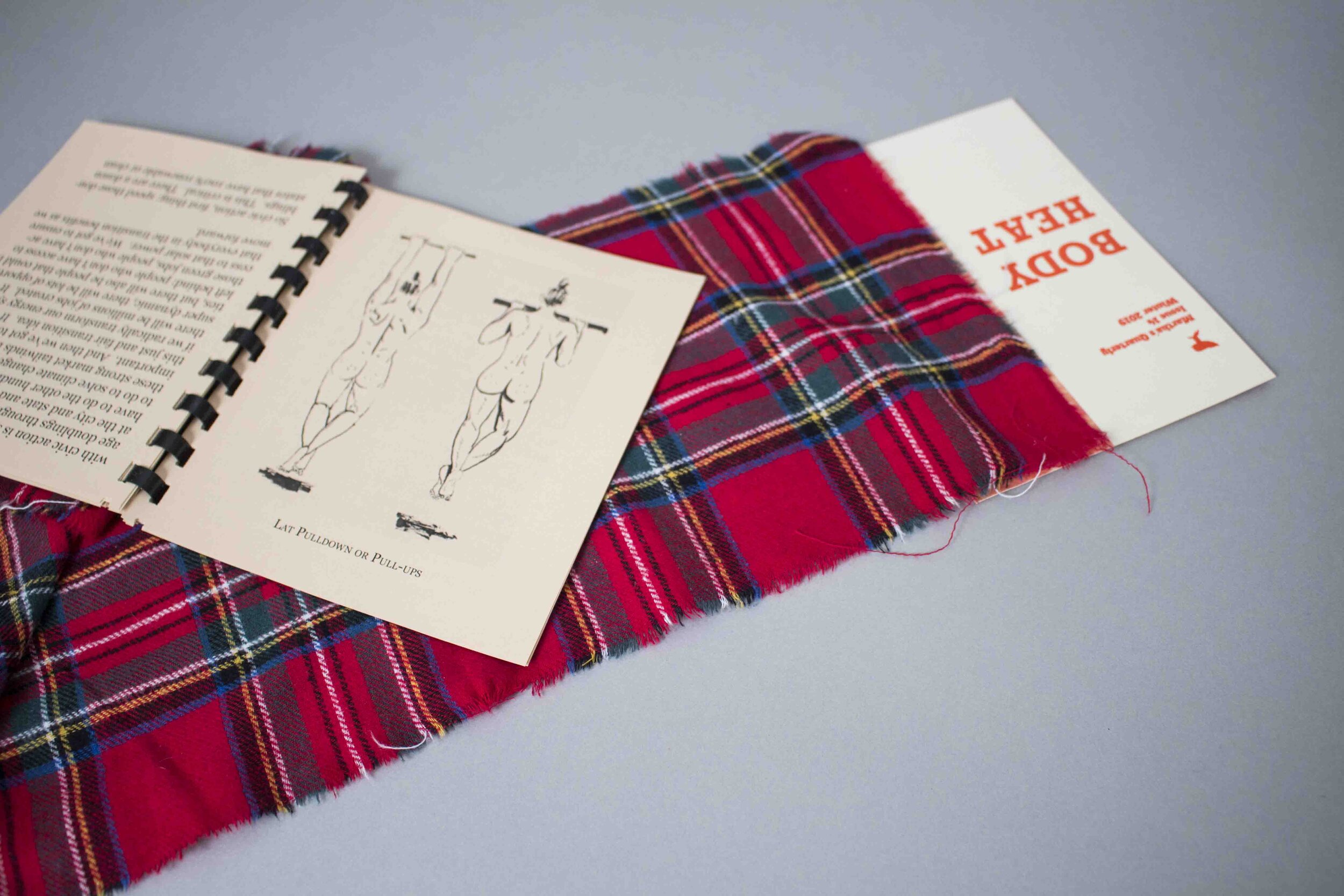
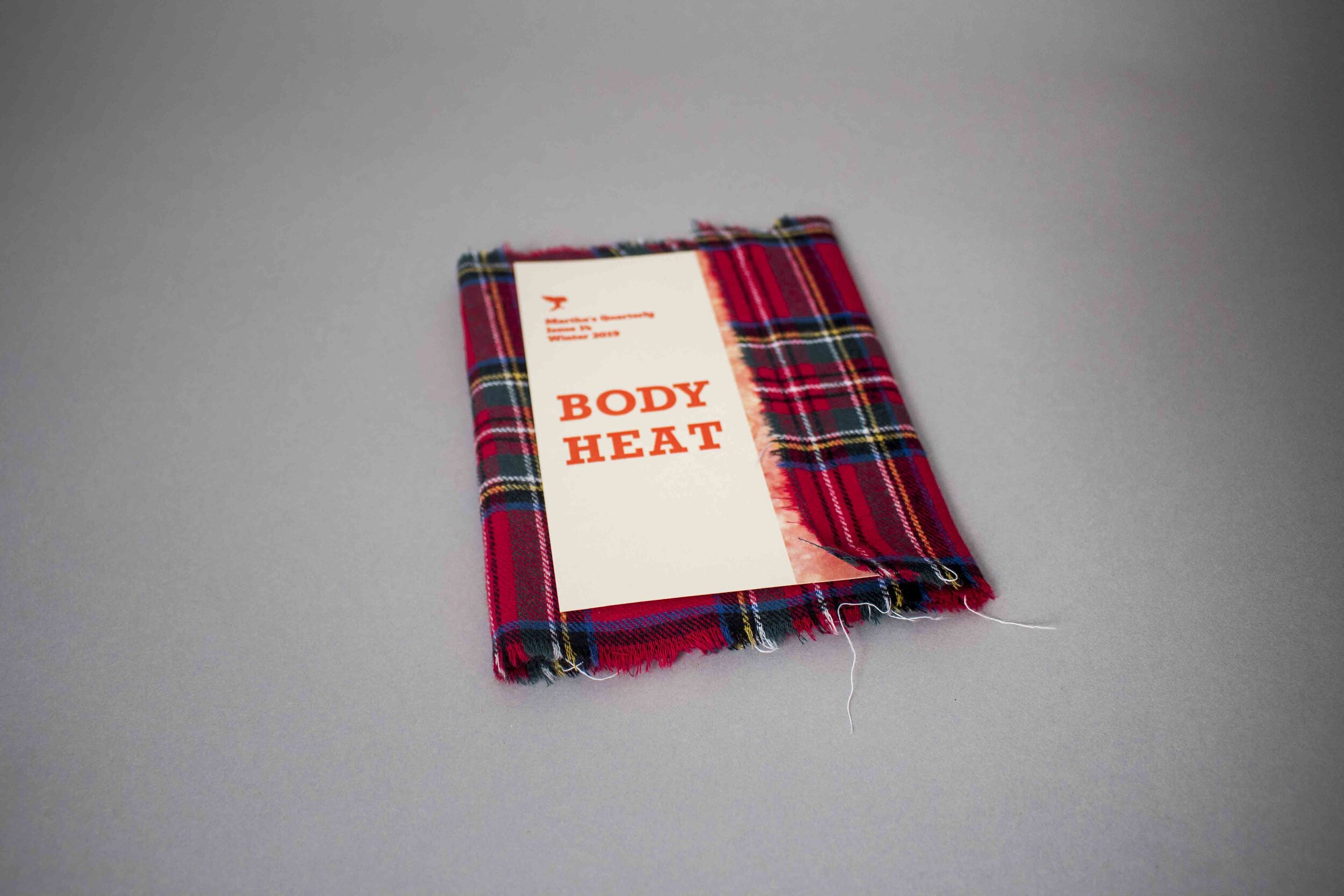
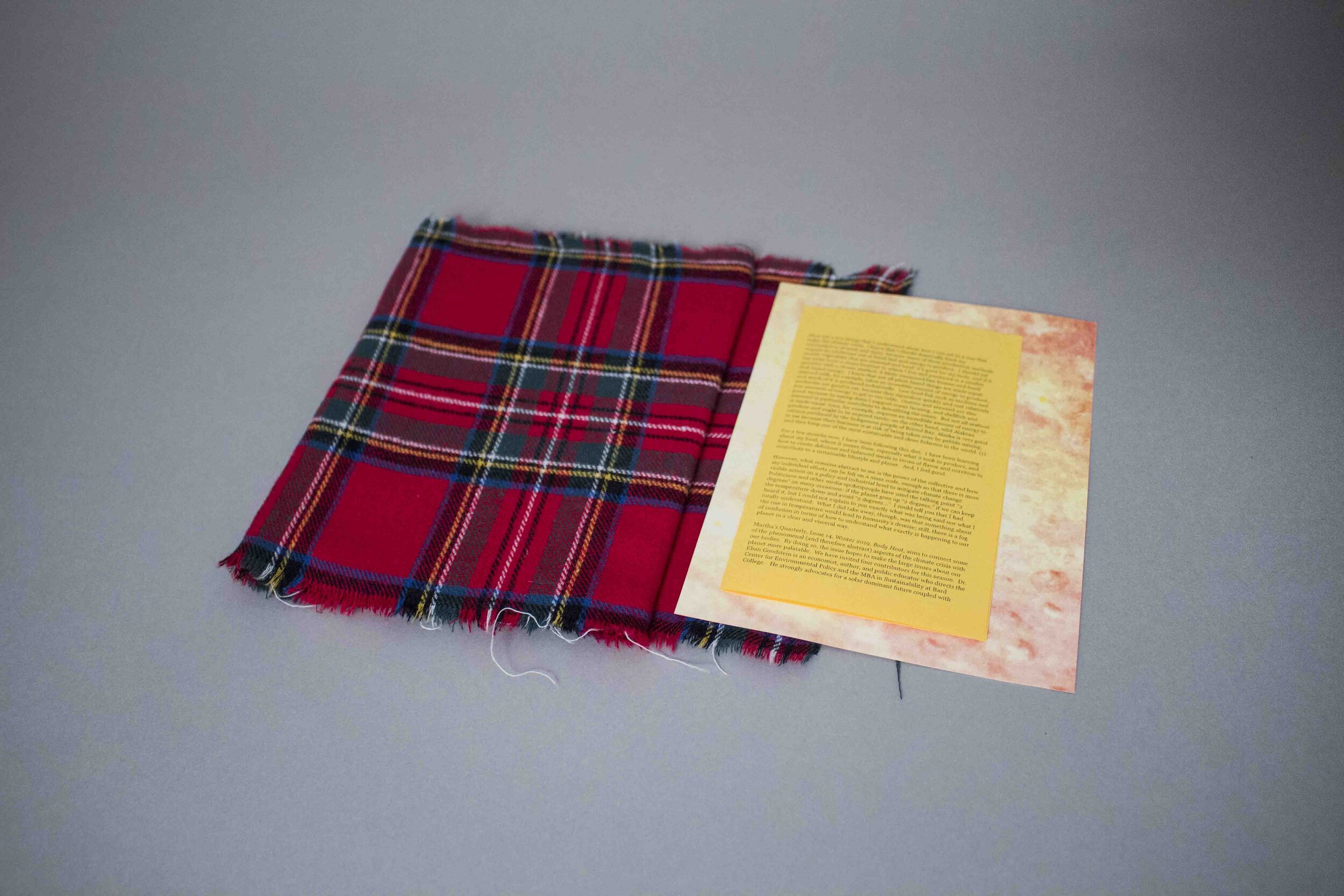
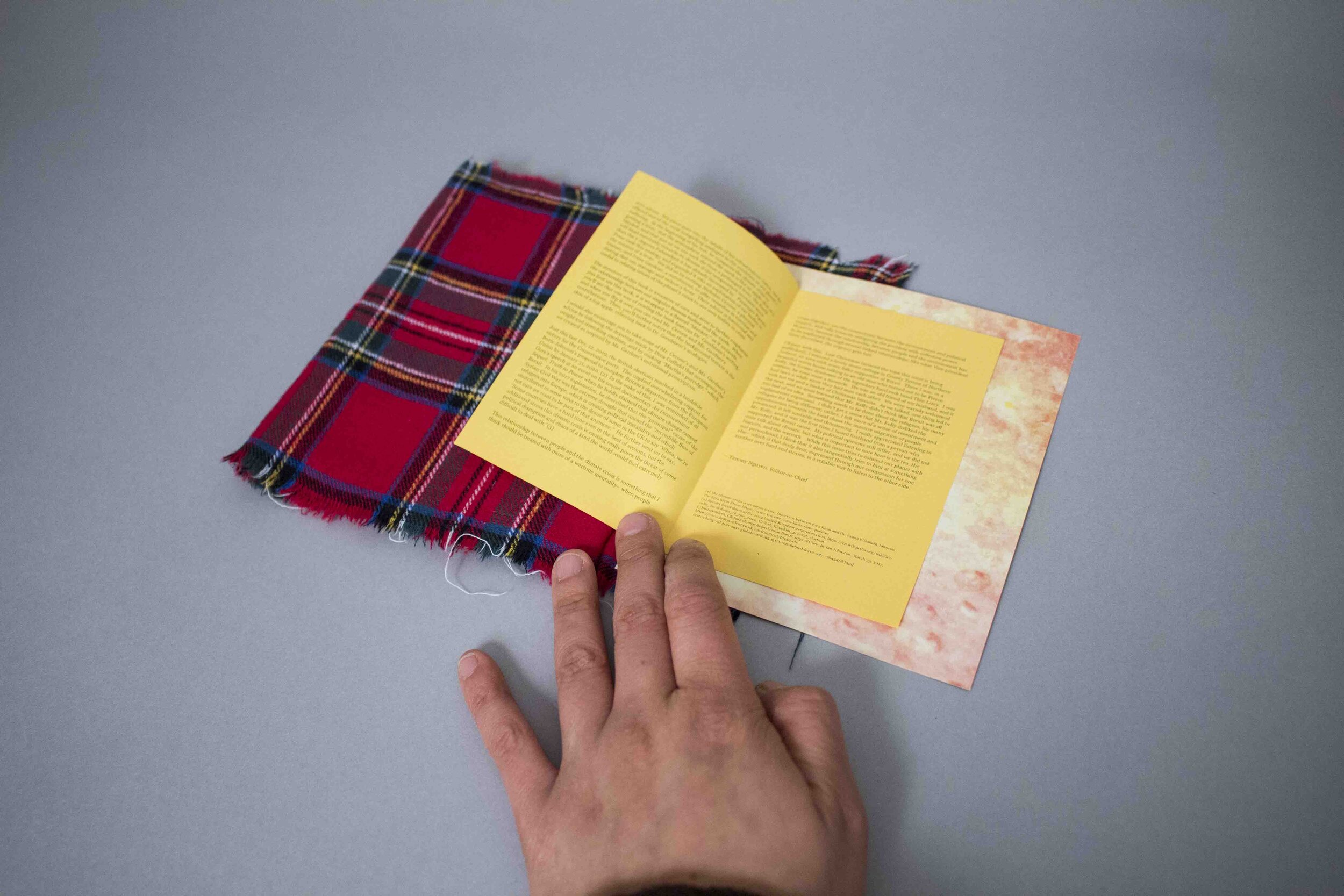
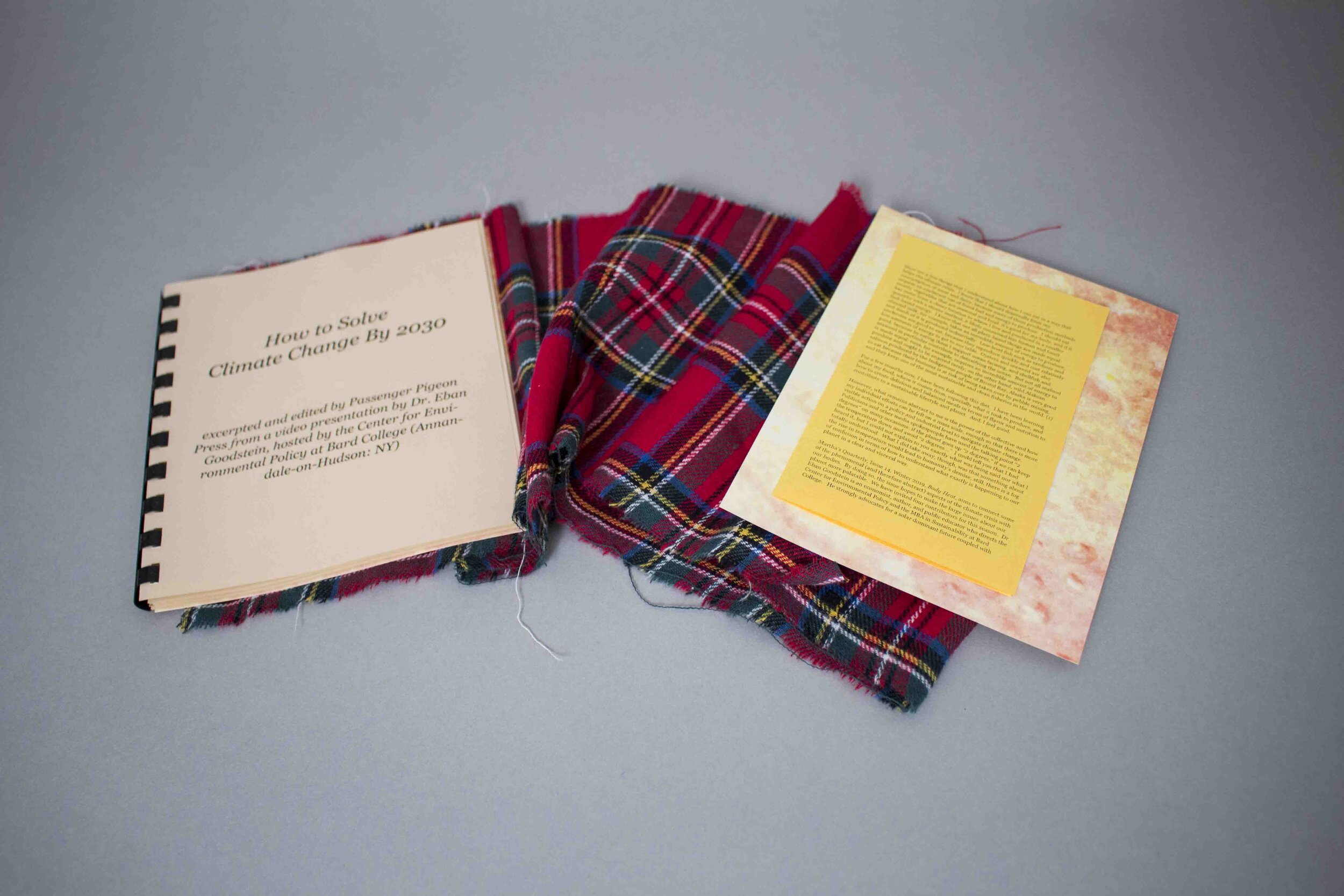
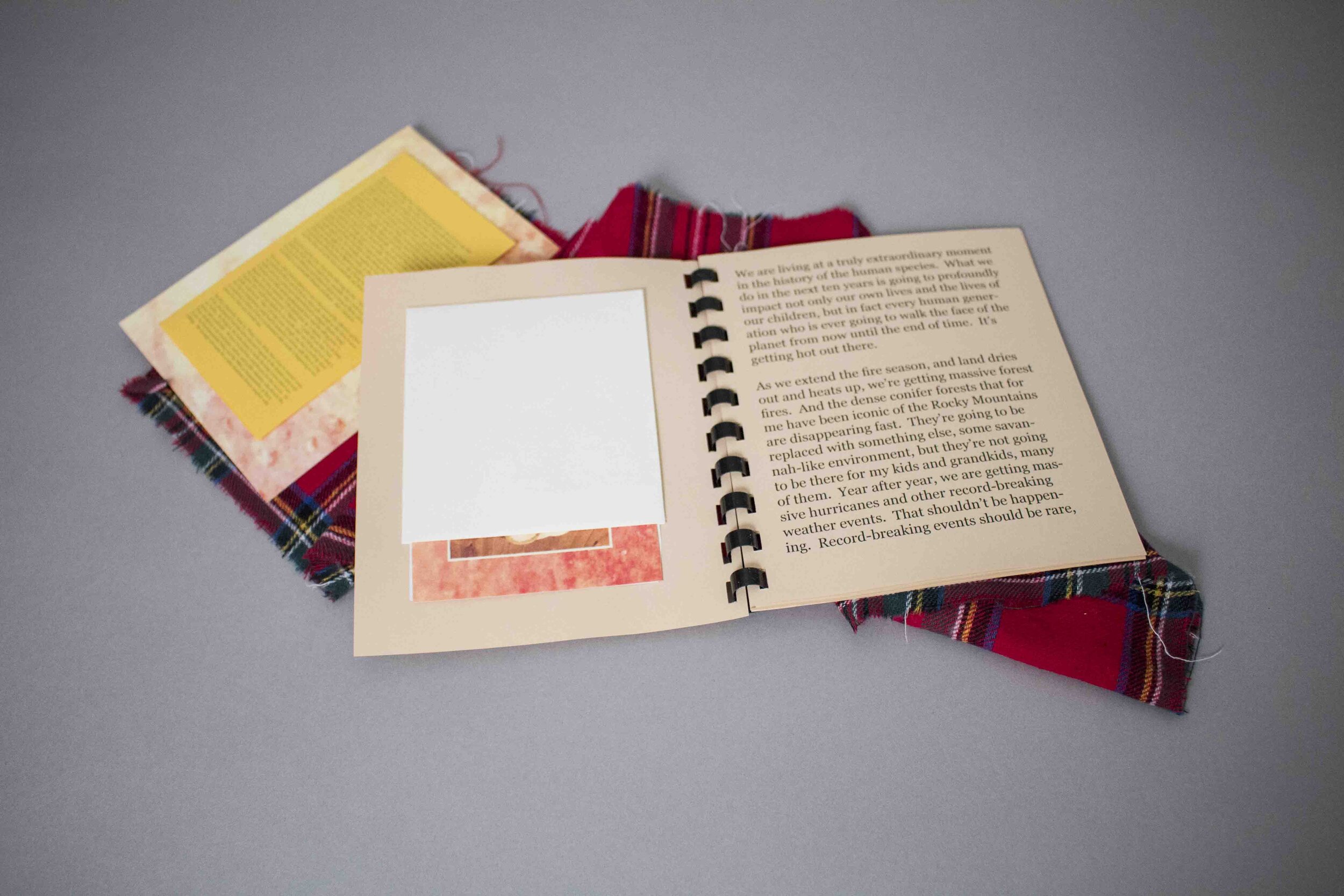

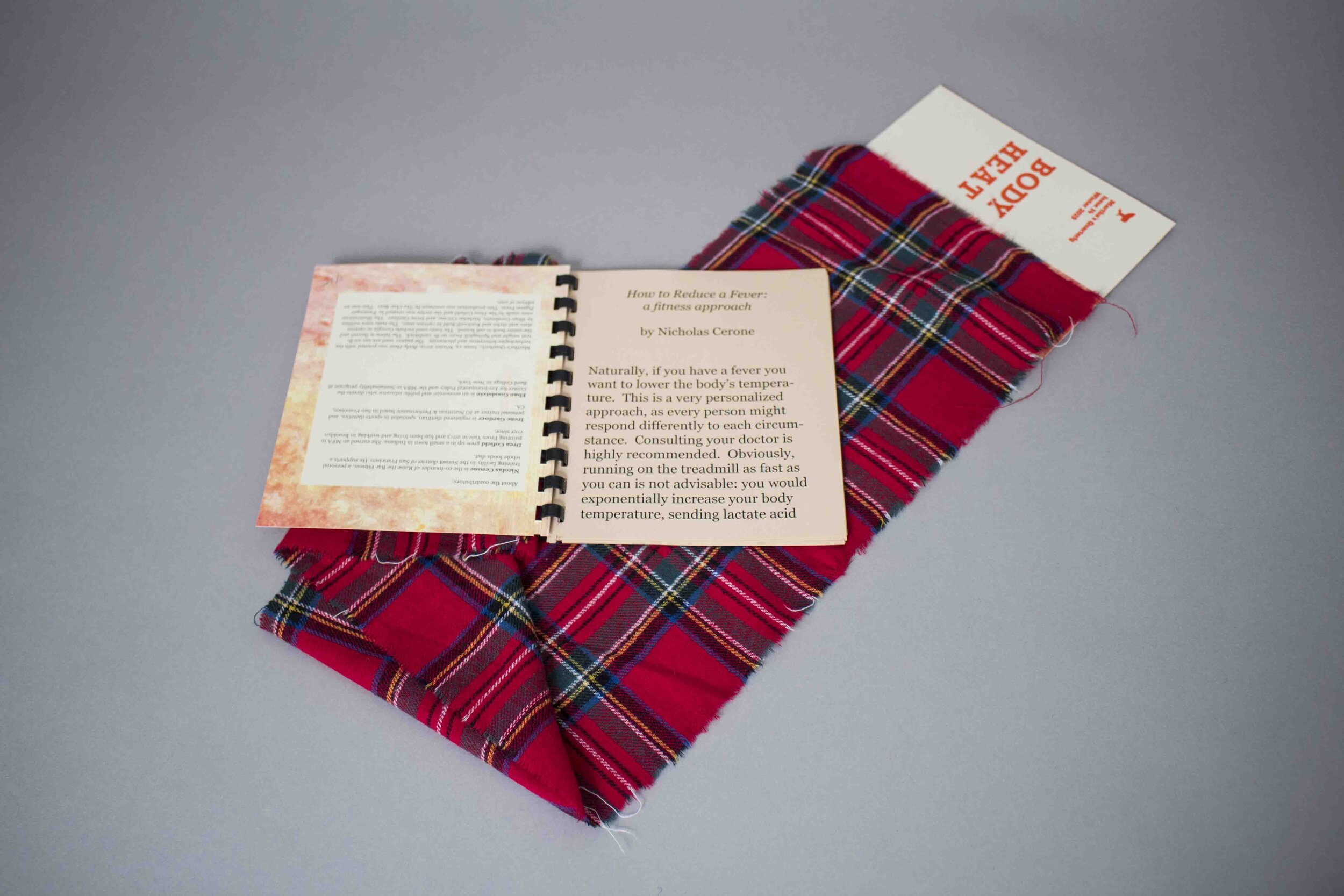
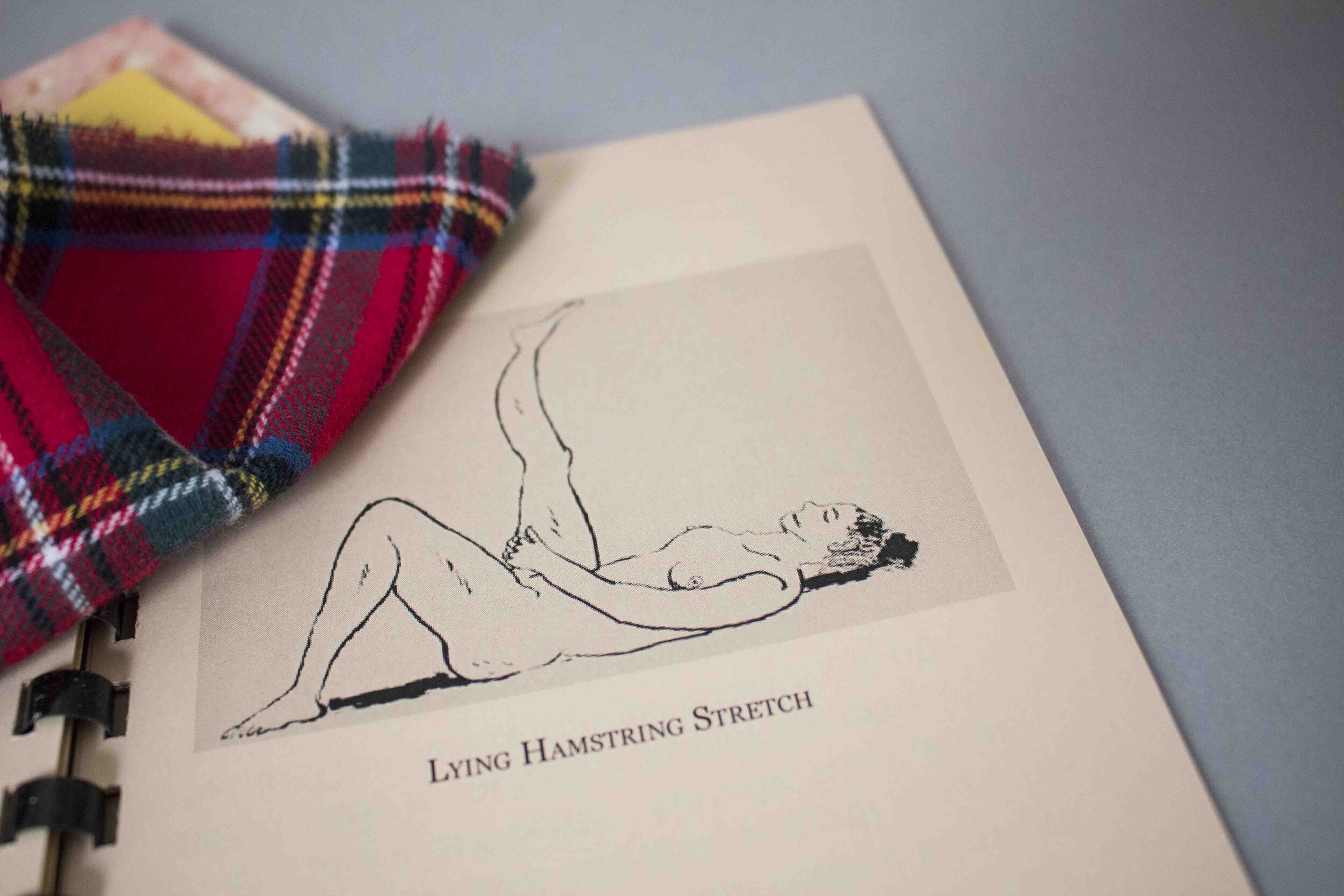
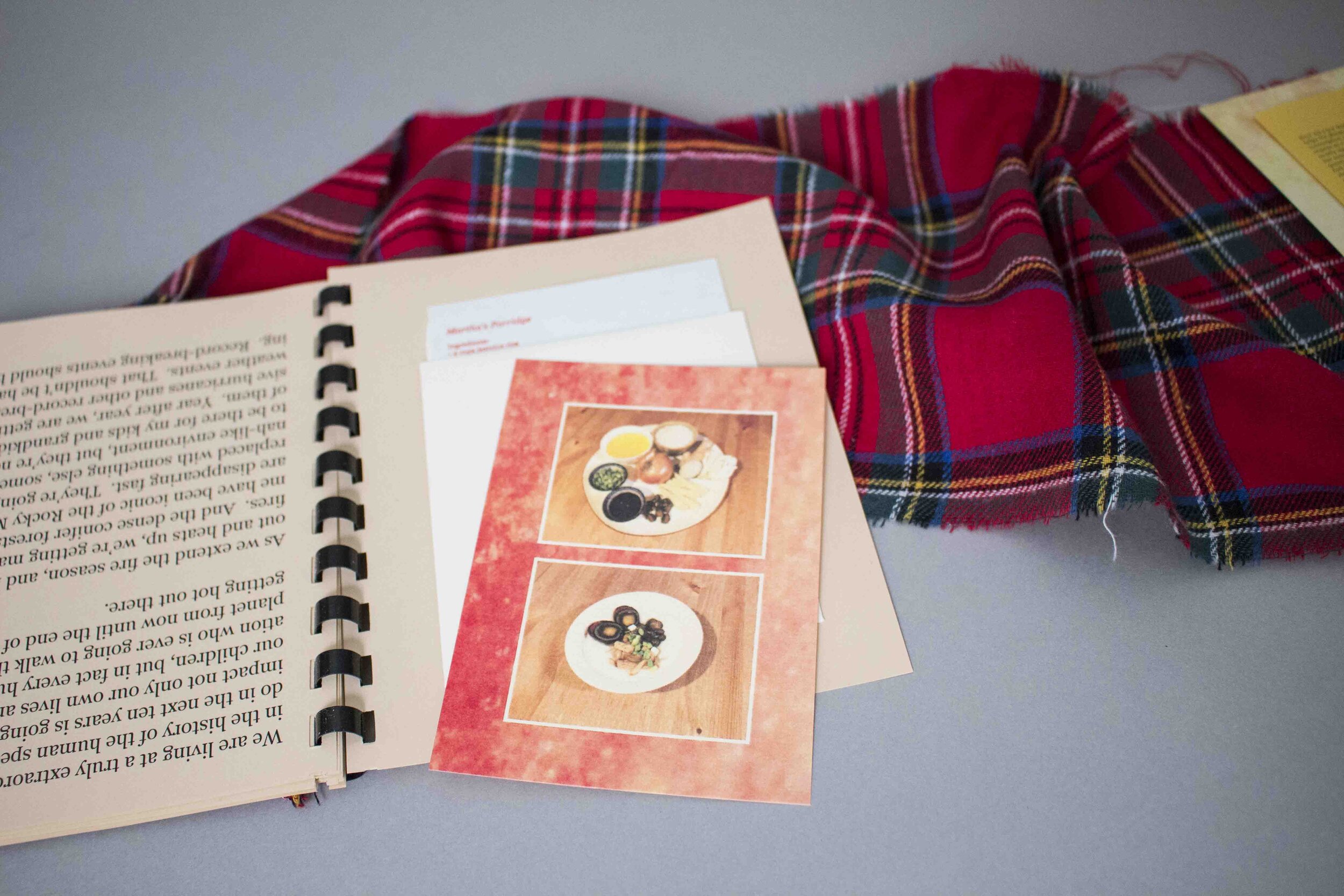
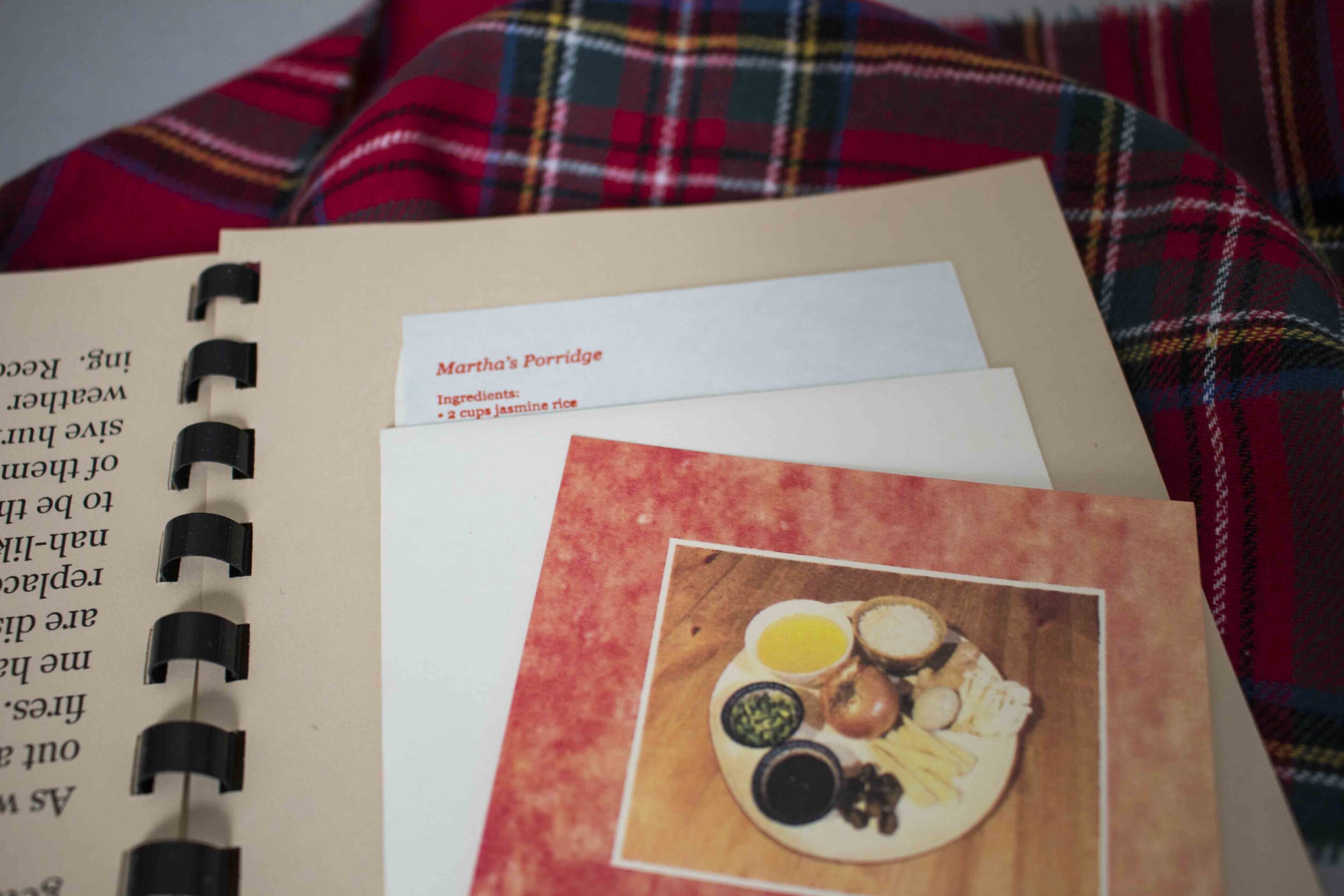
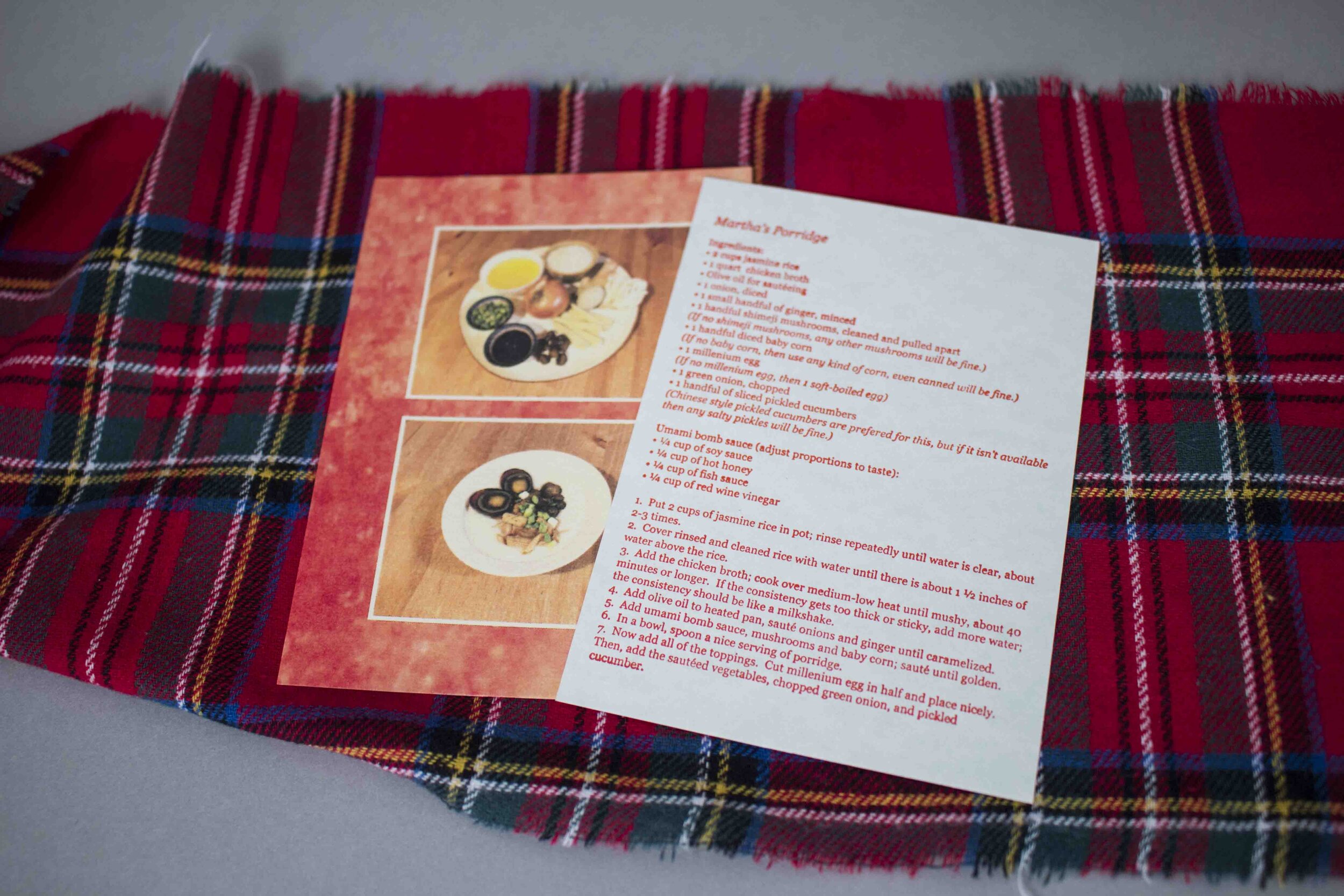
Martha's Quarterly
Issue 14
Winter 2019
BODY HEAT
6.5” x 5.25”
Martha’s Quarterly, Issue 14, Winter 2019, Body Heat
About the contributors:
Nicholas Cerone is the co-founder of Raise the Bar Fitness, a personal training facility in the Sunset District of San Francisco. He supports a whole foods diet.
Drea Cofield grew up in a small town in Indiana. She earned an MFA in Painting from Yale in 2013 and has been living and working in Brooklyn ever since.
Irene Gardner is a registered dietitian, specialist in sports dietetics, and personal trainer at IG Nutrition & Performance based in San Francisco, CA.
Eban Goodstein is an economist and public educator who directs the Center for Environmental Policy and the MBA in Sustainability program at Bard College in New York.
Here are a few things that I understand about how I can eat in a way that helps the climate crisis. I know that I should drastically limit my consumption of meat and dairy, because many of those production methods require an exuberant use of fossil fuel and energy to produce. I should eat mostly vegetables that are seasonal and local: it’s good for my body, and if it has come from a closer location to where I live and produced in a smaller quantity with a slower method, it likely consumed less human and fossil fuel-based energy. I know that not all plant-based things are made equal: almond milk, for example, takes an incredible amount of energy to produce, and much of it is produced industrially. Low-level fish such as sardines and anchovies are good to eat, because they reproduce quickly and cost relatively low amounts of energy to get to our table. Oysters and seaweed are also good, because by eating them I support ocean farming, and shellfish and seaweed in particular contribute to detoxifying the ocean. But not all seafood is made equal: tuna, for example, requires an incredible amount of energy to produce and ought to be enjoyed rarely; on the other hand, wild Alaksan salmon produced by the Indigenous people of Bristol Bay, Alaska is very good to eat because their business is at risk of being taken over by pebble mining, and they keep one of the most sustainable and clean fisheries in the world. (1)
For a few months now, I have been following this diet. I have been learning about my food, where it comes from, especially what it took to produce, and how to create delicious and balanced meals in terms of flavor and nutrition to contribute to a sustainable lifestyle and planet. And, I feel good.
However, what remains abstract to me is the power of the collective and how my individual efforts can be felt on a mass scale, enough so that there is more visible action on a policy and industrial level to mitigate climate change. Politicians and other media spokespeople have used the talking point “2 degrees” on many occasions: if the planet goes up “2 degrees,” if we can keep the temperature down and avoid “2 degrees...” I could tell you that I had heard it, but I could not explain to you exactly what was being said nor what I totally understood. What I did take away, though, was that something about the rise in temperature would lead to humanity’s demise; still, there is a fog of confusion in terms of how to understand what exactly is happening to our planet in a clear and visceral way.
Martha’s Quarterly, Issue 14, Winter 2019, Body Heat, aims to connect some of the phenomenal (and therefore abstract) aspects of the climate crisis with our bodies. By doing so, the issue hopes to make the large issues about our planet more palatable. We have invited four contributors for this season. Dr. Eban Goodstein is an economist, author, and public educator who directs the Center for Environmental Policy and the MBA in Sustainability at Bard College. He strongly advocates for a solar dominant future coupled with civic action. His piece goes into the details of his infrastructure vision, but he offered one of the most compelling analogies to the condition of our planet’s suffering. At the beginning of his text, he compares the climate crisis to getting a fever, that the atmosphere around the earth is like an apple skin or a blanket, and that just as we can each die from a prolonged fever, the Earth will head inevitably towards its demise if the temperature increases more than the 2 degrees Fahrenheit it has already increased by. Passenger Pigeon Press took this analogy and expanded it into an exploration of our bodies in the context of a fever. We did so by inviting Nicholas Cerone, a physical trainer, and Irene Gardner, a nutritionist, to offer remedies in exercise and dieting that can manage and reduce a fever. Their advice is functional and useful to relating issues of the planet’s crisis to our own bodies in crisis.
The structure of this book is evocative of care and aims to further emphasize the relationship between our singular human bodies and the earth. When you first see this book, it is wrapped in a flannel “blanket;” as it unravels, you’ll see that one way of reading the book features Dr. Goodstein’s writing, and when you flip it over you can read Mr. Cerone and Ms. Gardner’s contributions. Then, you’ll further notice that the background texture is the skin of a fuji apple, referring back to Dr. Goodstein’s analogies.
I would also encourage you to take some of Mr. Cerone’s and Ms. Gardner’s advice by following the drawings made by Drea Coffield that accompany the weight and stretching routines, and by cooking “Martha’s porridge,” which we created as inspired by Ms. Gardner’s nutritional prescription.
Just this last Dec. 12, 2019, the British elections resulted in a landslide victory for the Conservative party. This implied overwhelming support for Boris Johnson’s proposal to complete Britain’s departure from the European Union by January 31, 2020. (2) In the wake of this, I was reminded of Al Gore’s speech at an event on his sequel documentary An Inconvenient Sequel: Truth to Power when he boldly claimed that climate change caused Brexit. In his 2017 explanation, he described that the “principal” cause of the Syrian Civil War was the extreme drought that caused the “incredible flow of refugees into Europe, which is creating political instability and which contributed in some ways to the desire of some in the UK to say ‘Whoa, we’re not sure we want to be part of that anymore.” He further went on to say, “Some countries have a hard time even in the best of seasons, but the additional stress this climate crisis is causing really poses the threat of some political disruption and chaos of a kind the world would find extremely difficult to deal with.”(3)
This relationship between people and the climate crisis is something that I think should be treated with more of a wartime mentality– when people come together, see the connections between the environment and political tension, and rally towards mitigating the problem with collective power. However, because the relationship between people and the environment has to be explained through several linked relationships, like what Vice-president Gore described, the urgency gets lost.
I’ll part with this. Last Christmas (around the time this issue is being published), I entered a lovely stone cottage in County Tyrone of Northern Ireland, an area with many folks supportive of Brexit. There I was, in a beautiful warm home talking to an old man who turned out to be Pierce Kelly, the former drummer of the legendary hard rock band Thin Lizzy. I was smitten; he even wore a monocle. He was an old friend of my husband, and it had been a while since they had seen each other. We were warmly welcomed with hot tea and a basket of Christmas biscuits. As we talked, one thing led to the next, and we soon learned that Mr. Kelly didn’t think that Brexit was all too bad of an idea. Something needs to be done about the refugees, his many explanations expressed. I didn’t get a sense that Mr. Kelly disliked the refugees for being different; rather, I felt more of a sense of resentment and apprehension towards the local chaos the massive migration of people presented: it felt unstable and threatening. I really appreciated listening to Mr. Kelly, and it was the first time I heard firsthand from a person who supported the Brexit cause. My political opinions still differ, and we did not once talk about climate, but what is important to note here is the tea, the biscuits, and the warmth. While this issue tries to connect our planet with our personhood, I think that it also tangentially tries to hint at something else– which is that body heat, expressed through our compassion for one another over food and stories, is a reliable way to listen to the other side.
– Tammy Nguyen, Editor-in-Chief
(1) The climate crisis is an ocean crisis, The Ezra Klein Show, interview with Dr. Ayanna Elizabeth Johnson
(2) Results breakdown of the 2019 United Kingdom general election, Wikipedia
(3) Independent, Climate change helped cause Brexit, says Al Gore, by Ian Johnston, March 23, 2017

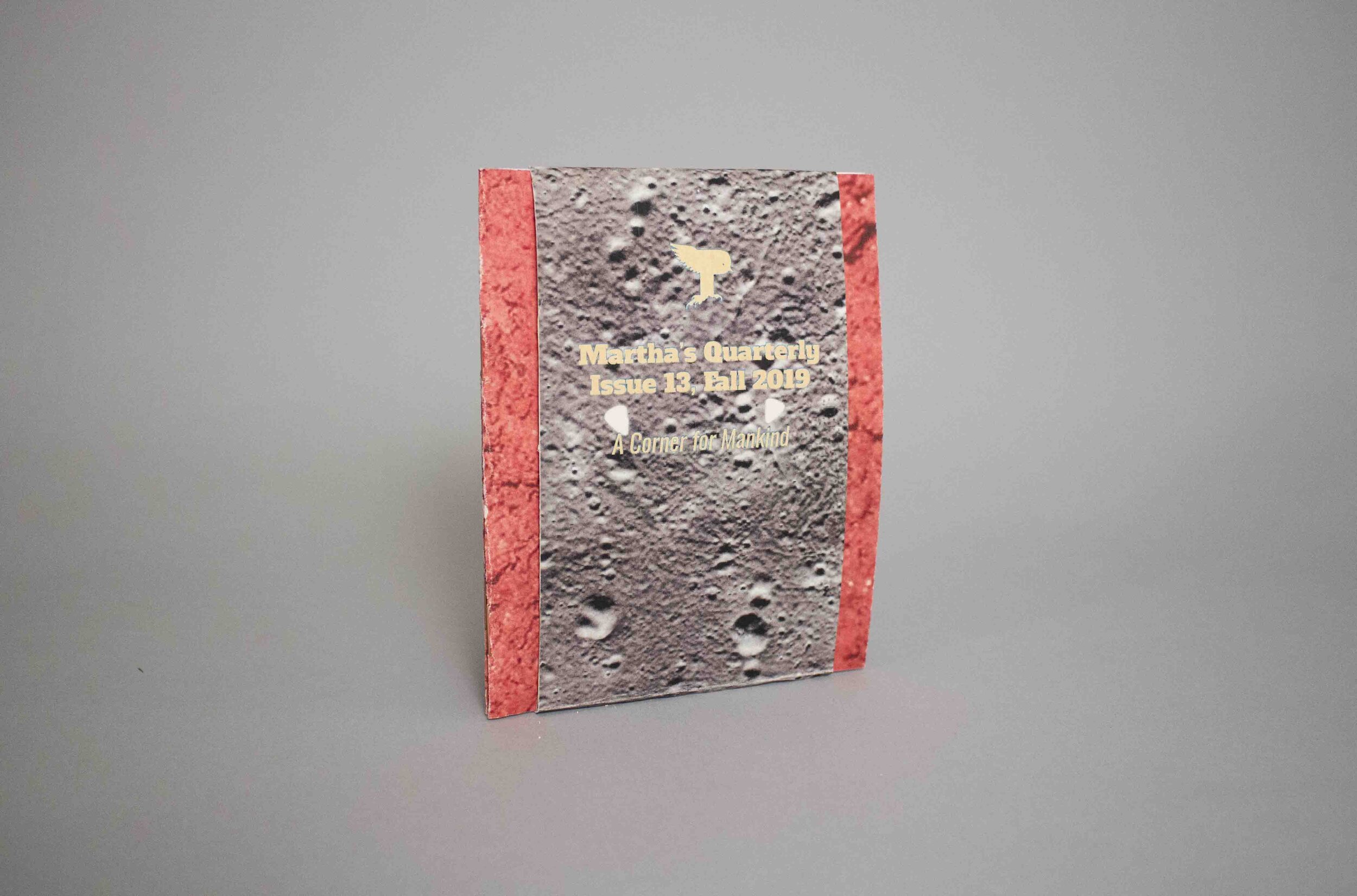
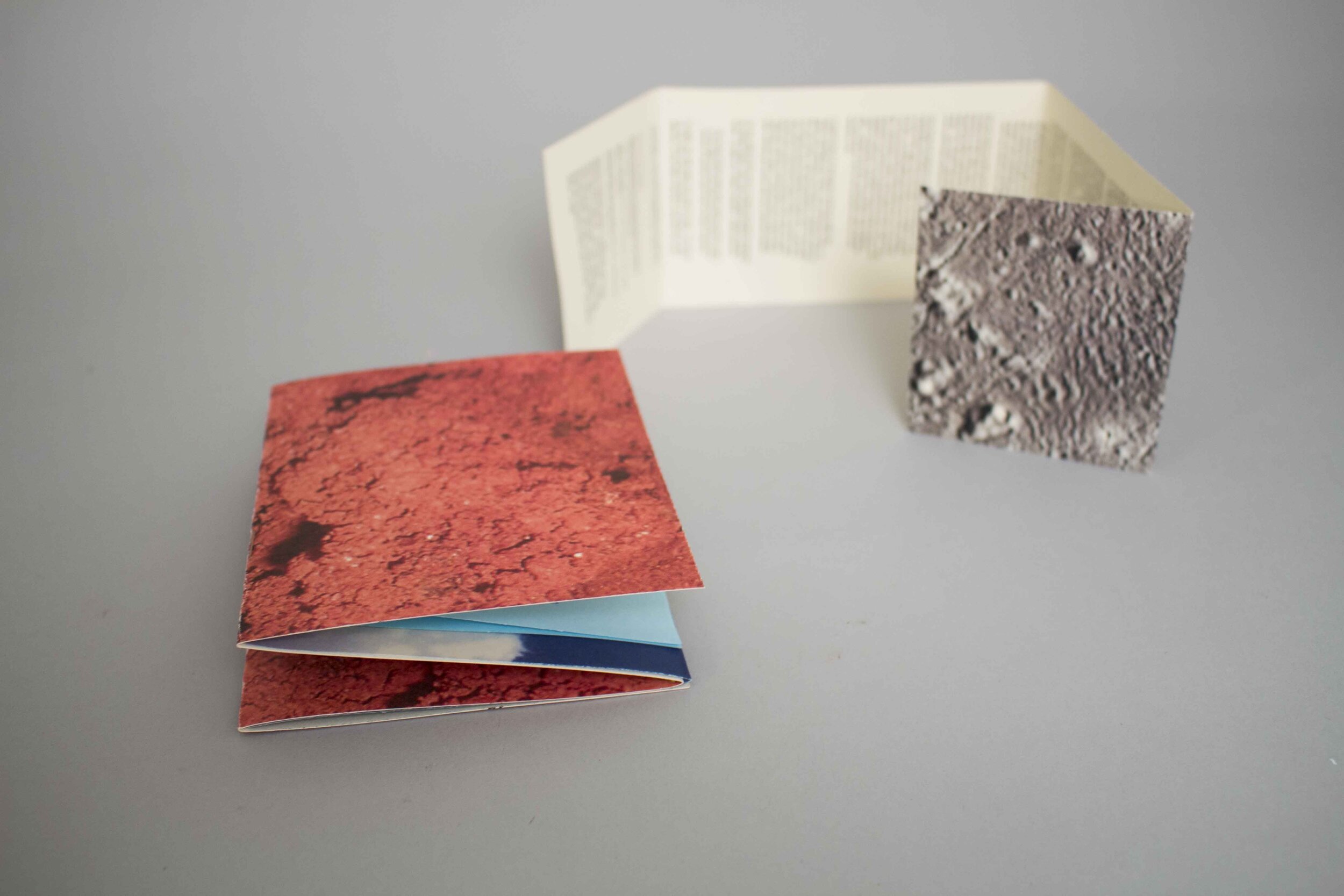
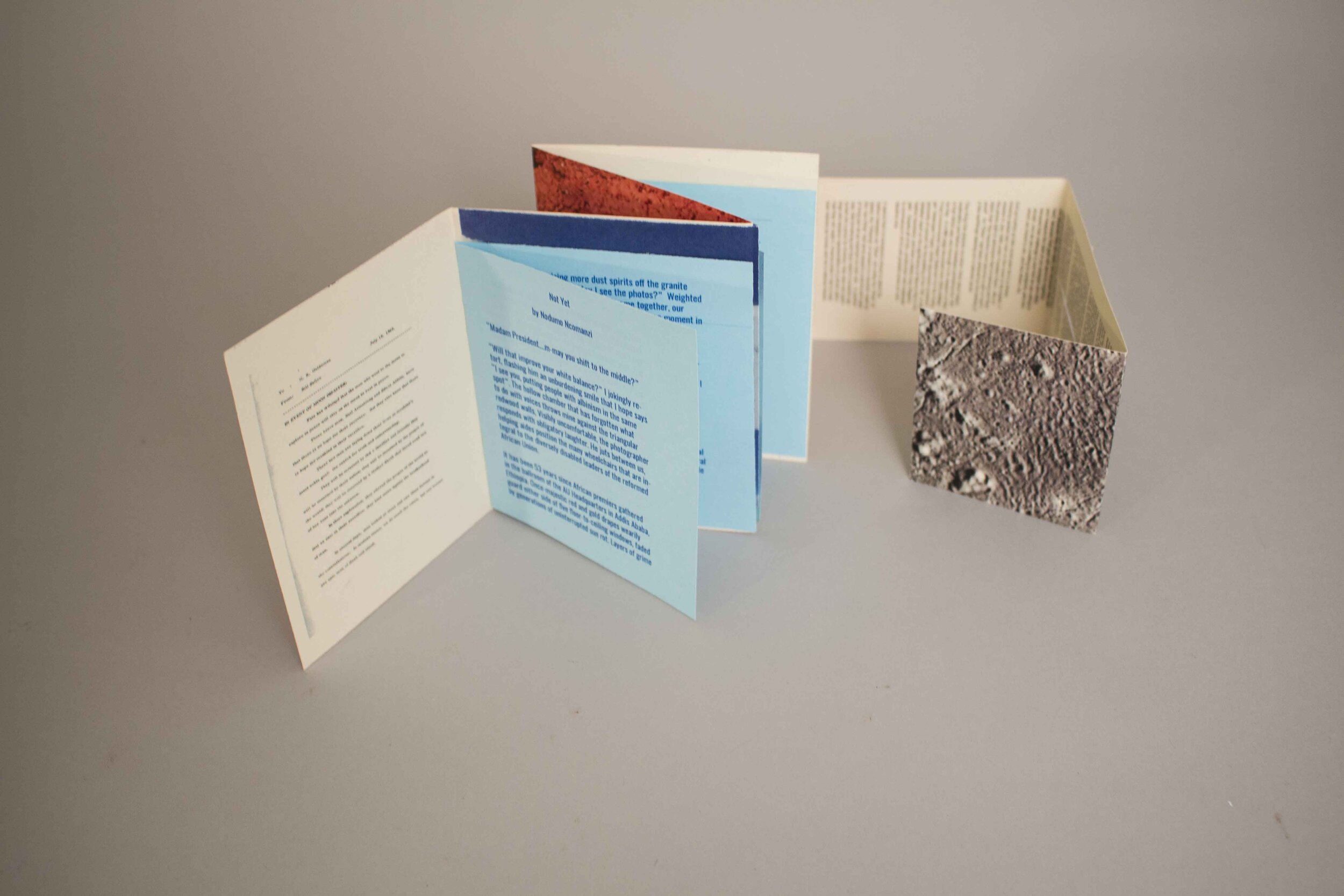
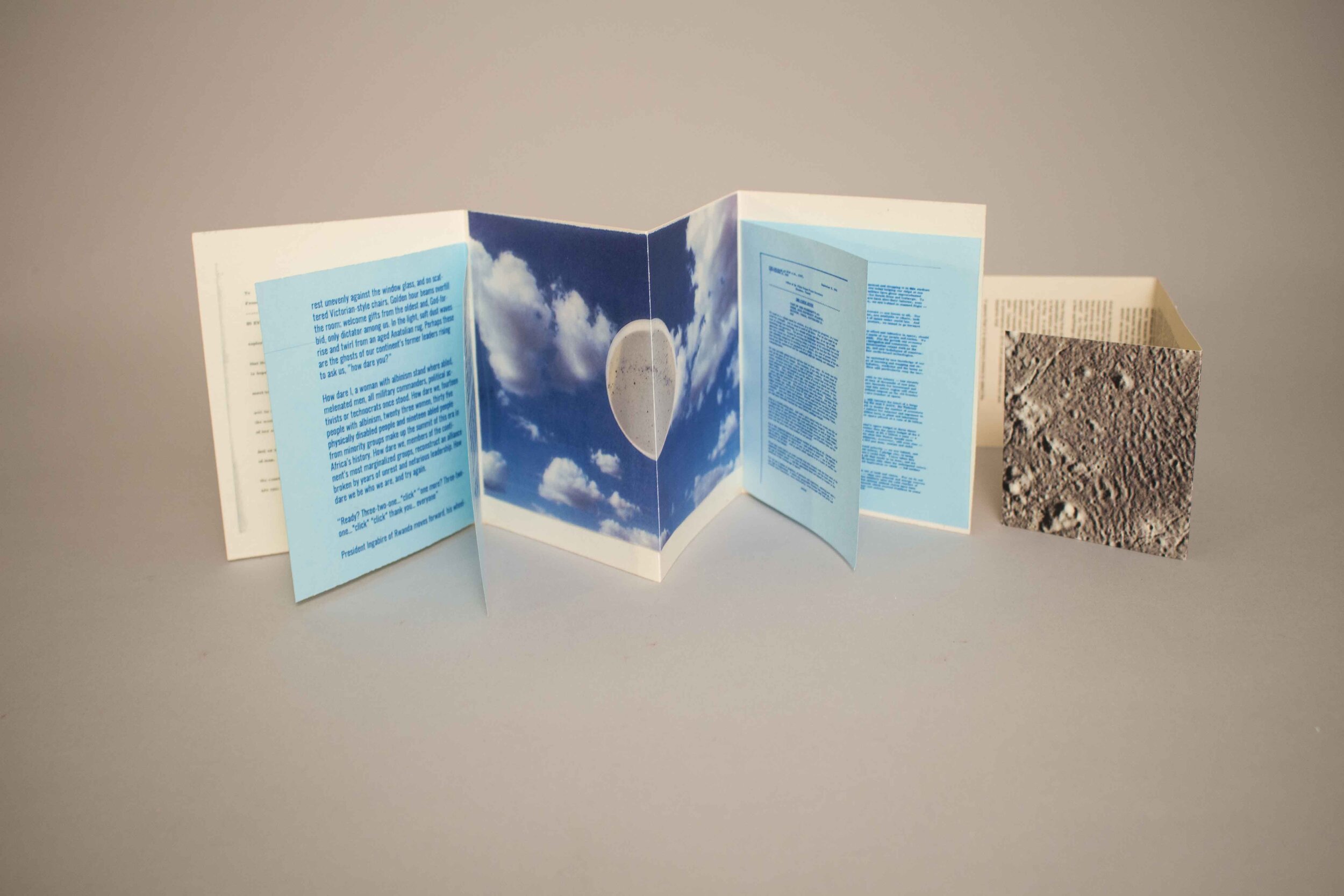

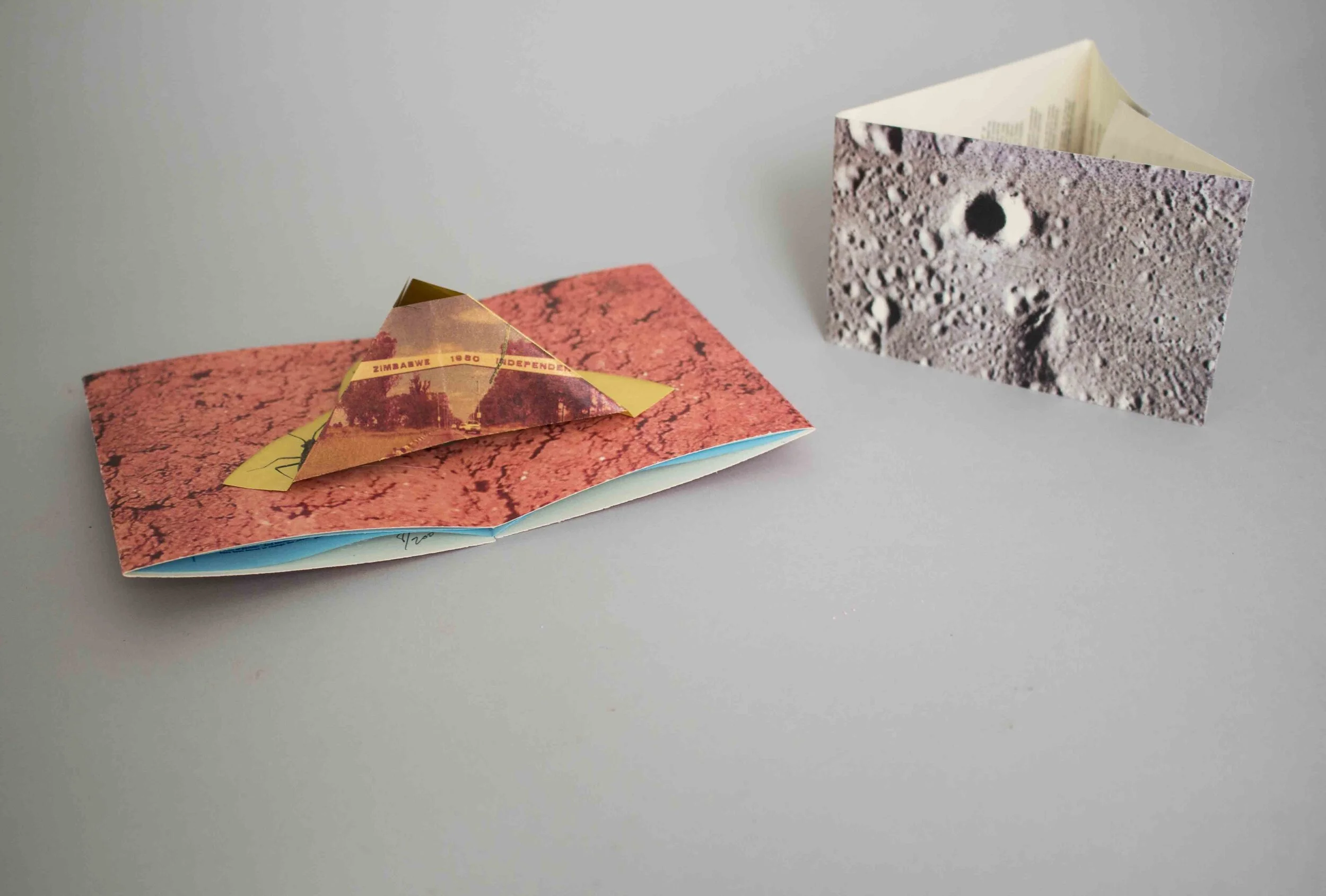
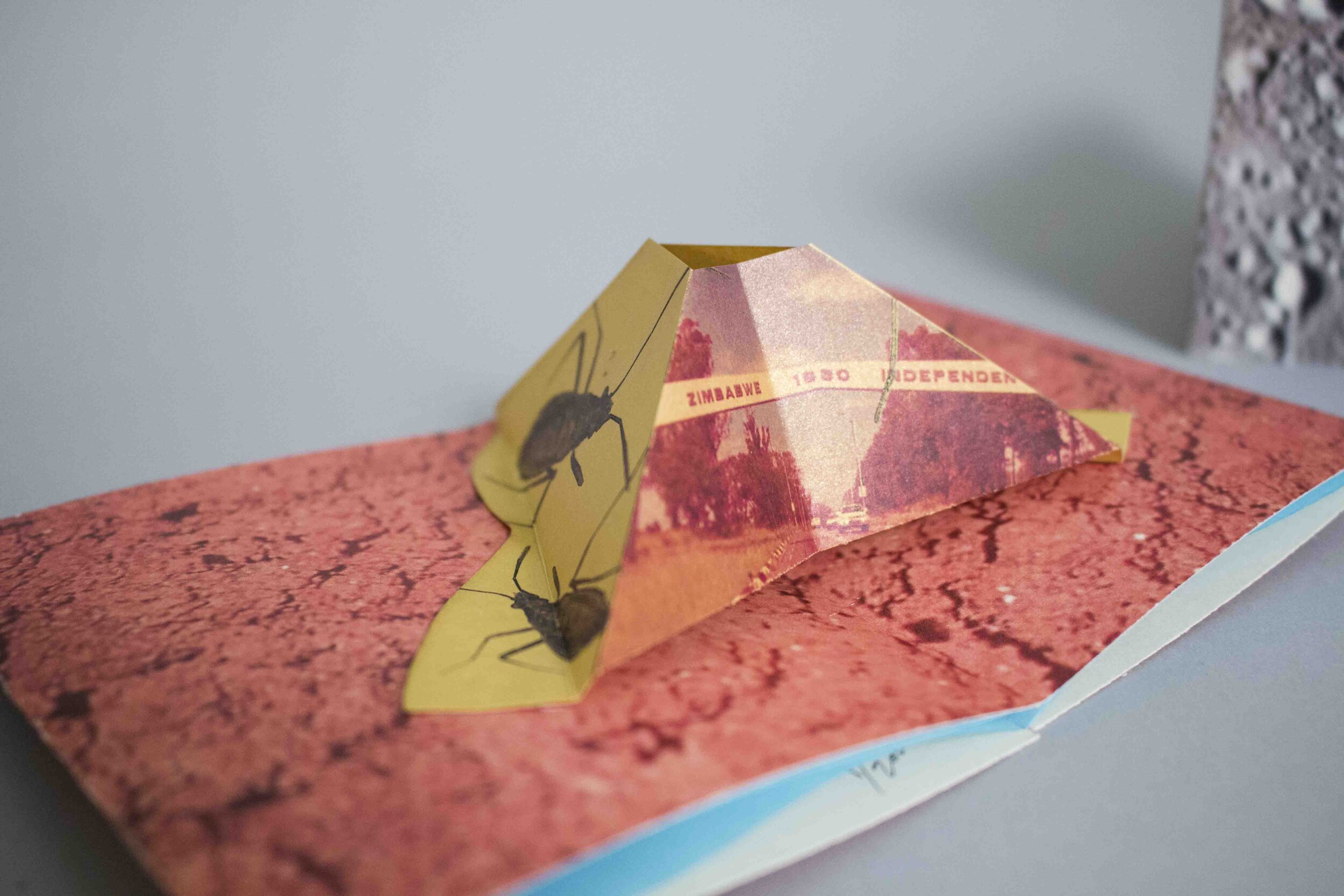

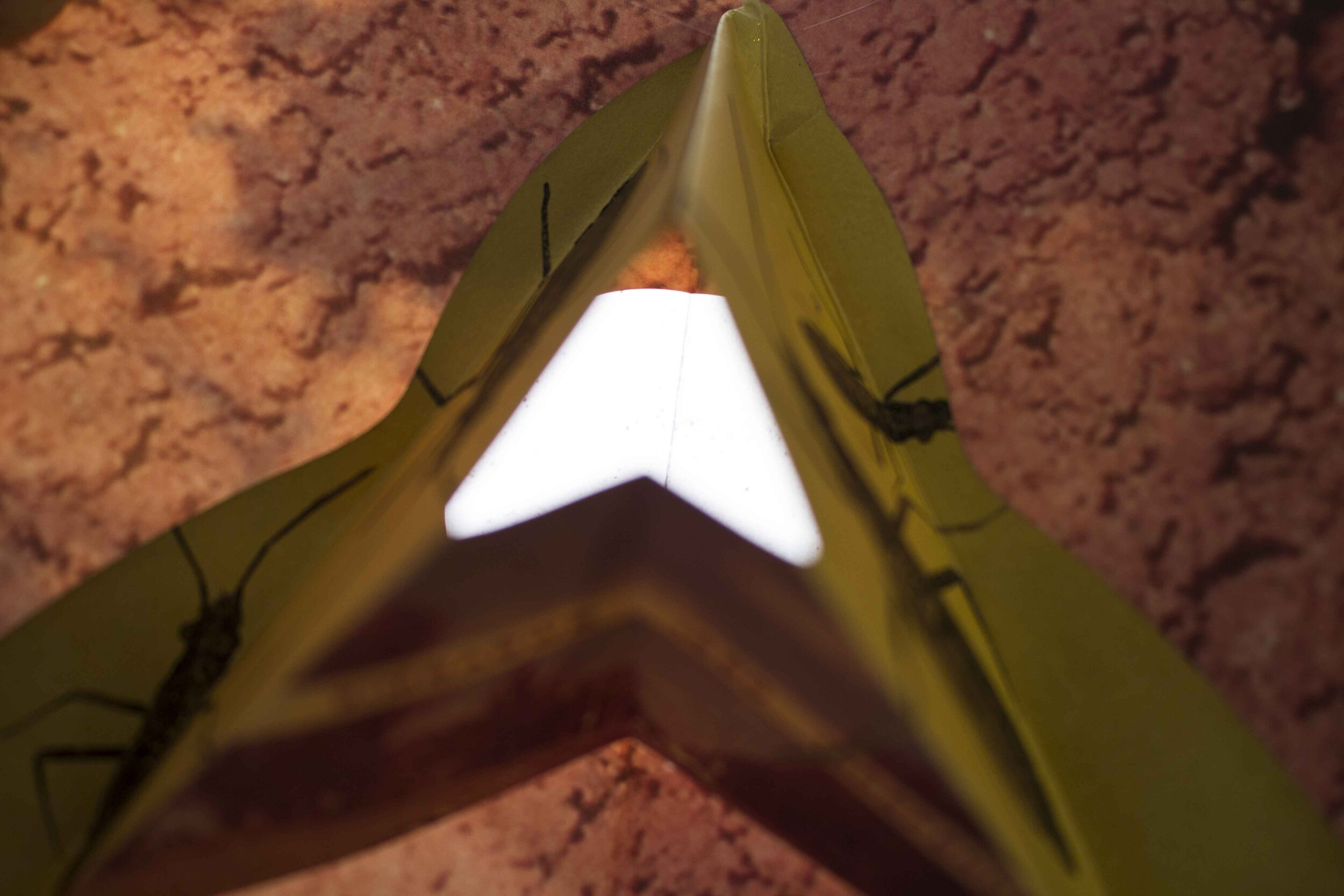
Martha's Quarterly
Issue 13
Fall 2019
A Corner for Mankind
5” x 4”
About the contributors:
Nodumo Ncomanzi is a radical African with albinism. They love snakes and are tired of being excluded from crucial spaces, such as governance.
John F. Kennedy was the 35th president of the United States of America.
William Safire was an author, columnist, lexicographer, journalist, and political speechwriter.
Last July, a protest about a telescope to be built on the big island of Hawaii went viral on my social media. The protesters opposed the construction of an enormous observatory, called the Thirty Meter Telescope (TMT), to be built on the volcano Mauna Kea. The TMT proposes the most grandiose technologies that can “capture images ‘that look back to the beginning of the universe.’”(1) The protesters argue that the construction of this observatory will continue to devastate Mauna Kea, which is already home to many telescopes. Many of the protestors are scientists who have already been working on the volcano and Native Hawaiians who consider themselves kia‘i, or protectors.
Tensions on Mauna Kea date back to 1893, when the Hawaiian Kingdom was overthrown and Hawaiians lost their land and their culture. Mauna Kea is a particularly contentious site because it is sacred to Hawaiians and is known as the home to Wakea, the sky god. On the other hand, Mauna Kea is an idyllic place for astronomical observations and research because the summit is so high that the air is arid, dry, and free of atmospheric pollution. Development for astronomical research has been active, even encouraged, on Mauna Kea since the 1960s. Today there are 13 observational facilities funded by as many as 11 countries.
There are many points of tension in this conflict; one concerns the controversy surrounding the TMT and is about which “Others” deserve respect, attention, and protection. Do we honor the Hawaiians and their faith? Or, do we honor science and its enormous curiosity for the extraterrestrial? The Hawaiians are “Others” to corporations and governments that do not recognize their culture as significant enough to supercede their investing in knowing another “Other” which they believe could advance their idea of humanity.
And so, this issue of Martha’s Quarterly, Issue 13, Fall 2019, A Corner for Mankind, brings together disparate subjects that aim to stretch our imagination from humans to the moon and back.
The centerfold of this zine presents a pop-up volcano graced by illustrations of the Wekiu bug, an insect that thrives on Mauna Kea. Despite the extreme temperatures that can fluctuate between 108F and 25F and there is virtually no plant life, the Wekiu bug has found a way to thrive: by feeding off the insects that are carried by the wind to the mountain top to die.
When you look inside the volcano, it turns into a sort of telescope wherein you can see an illuminated map of the stars from the planet’s Southern Hemisphere that blankets many of humanity’s “Others”, including those on the continent of Africa. In one of the signatures is a short story by Albinism awareness activist Nodumo Ncomanzi, who pens a futurist fiction where people with albinism have taken over governmental reins across Africa. The protestors that flood Harare’s Airport Road in her narrative are remembered in the pop-up volcano: a distorted image of the modern road is centered inside of the volcano, making this particular model of Mauna Kea, a mountain of the mind, occupied by the conscience of the “Other” from within.
In the other signature is another futurist fiction by a man who held the government reins of America for a short time. In 1962, President John F. Kennedy gave a speech at Rice University wherein he rallied America to be excited about putting a man on the moon, a race between American and the Soviet Union. In his famous speech he sermonized:
We choose to go to the moon. We choose to go to the moon in this decade and do the other things, not because they are easy, but because they are hard, because that goal will serve to organize and measure the best of our energies and skills, because that challenge is one that we are willing to accept, one we are unwilling to postpone, and one which we intend to win, and the others, too.
And as truthful as fate could ever be to a choice, America landed two men on the moon in the Apollo 11 mission in July 1969 under President Nixon, who on the phone said to astronauts Neil Armstrong and Buzz Aldrin that “the heavens have become a part of man’s world”. An “Other” had been obtained by the landing of a few earthlings seeking out a national cause.
One thing that disturbs me when I think about space exploration and Native Hawaiians protesting the TMT is that NASA was very thorough in its research of Mauna Kea. In a 660 page document from 2005 entitled Final Environmental Impact Statement For the Outrigger Telescopes Project, NASA documents numerous accounts of concern for the building of the TMT, a very detailed report on the significance of Mauna Kea to the Native Hawaiians, and even a Wekiu bug mitigation plan. Despite all of this, construction was supposed to commence in 2018 until protests broke out and became viral.
It seems that it is someone’s choice to select the Native Hawaiians as “Other”, but unlike the “Other” of space, the “Othering” of humans is a decision made by the “non-Other” that some people’s customs and ways of living are not as important as their own. In another way, Neil Armstrong and Buzz Aldrin’s humanity was turned into a proxy for America: they were two earthlings who became representative of a whole nation. Had they not made it, America knew it had to keep their memory as human and not a national mission.
On the sides of this zine is a back-up speech prepared by William Safire, who was President Nixon’s speechwriter. In case of a “Moon Disaster”, Safire penned:
For every human being who looks up at the moon in the nights to come will know that there is some corner of another world that is forever mankind.
In death, but with ease, the moon is man. It is one of us, but never will the Hawaiians, or those of us with albinism, or the Wekiu bug be a man like the moon.
– Tammy Nguyen, Editor-in-Chief
(1)The Guardian, 'A new Hawaiian Renaissance': how a telescope protest became a movement, by Michelle Broder, August 17, 2019.
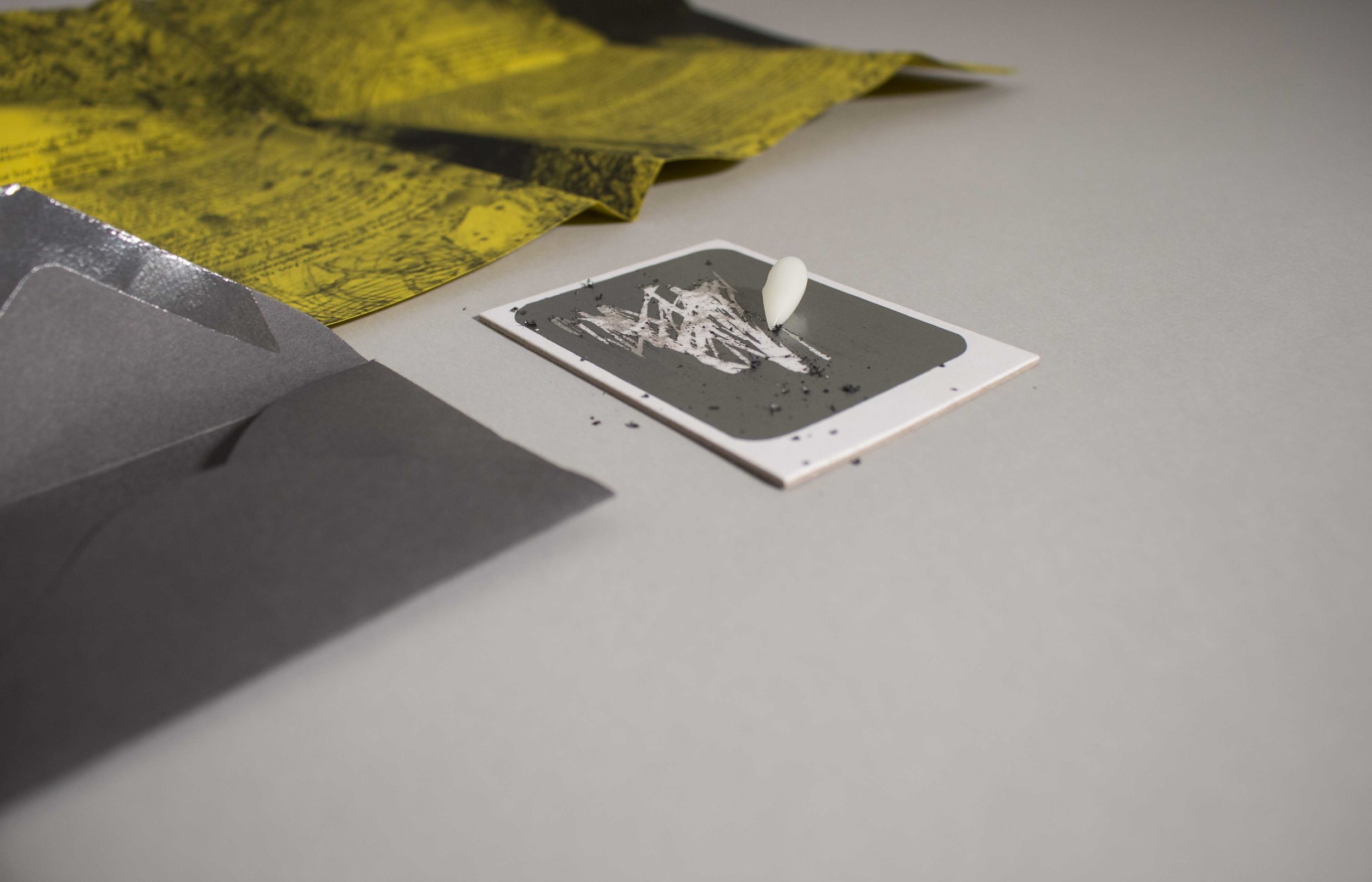
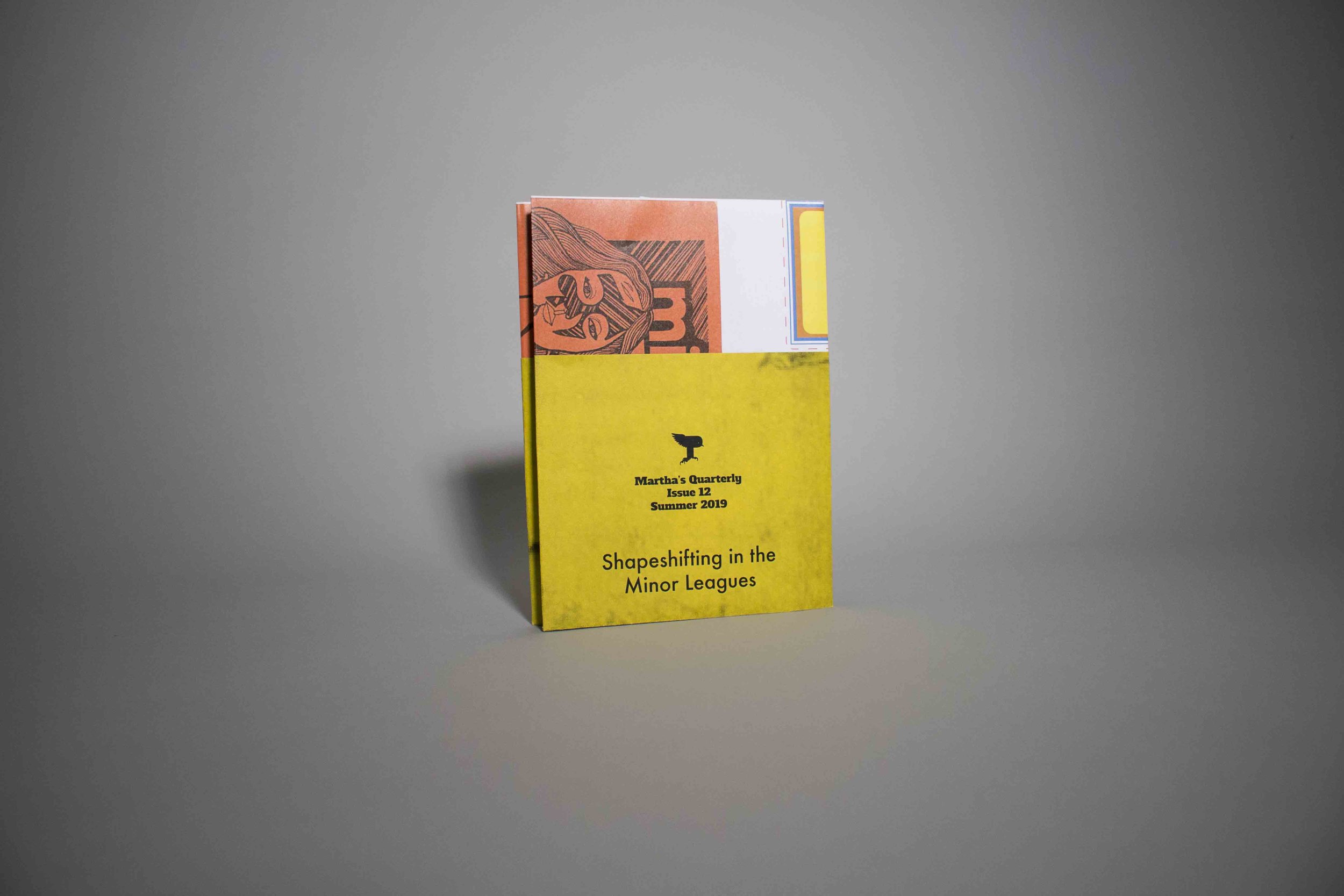
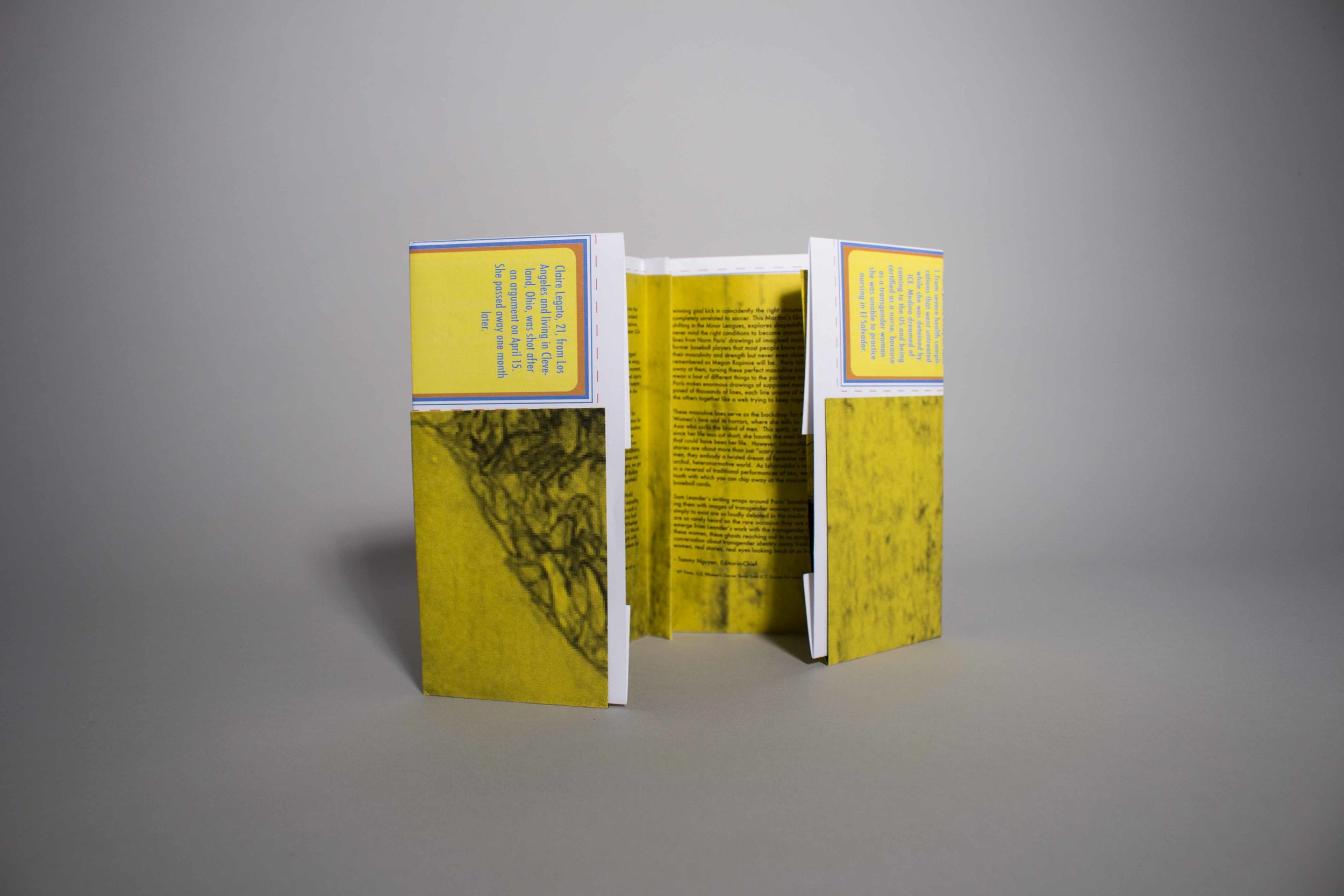
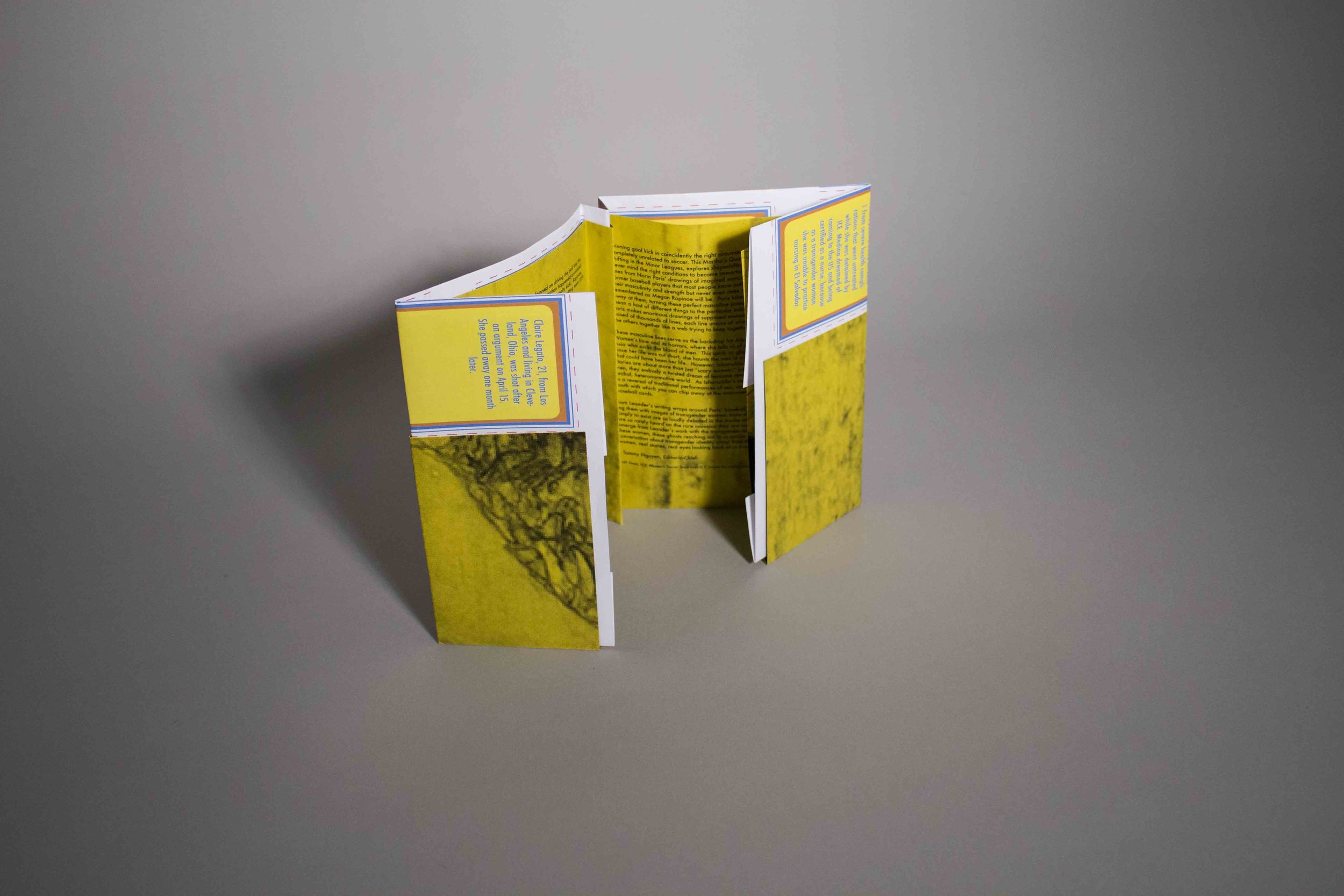
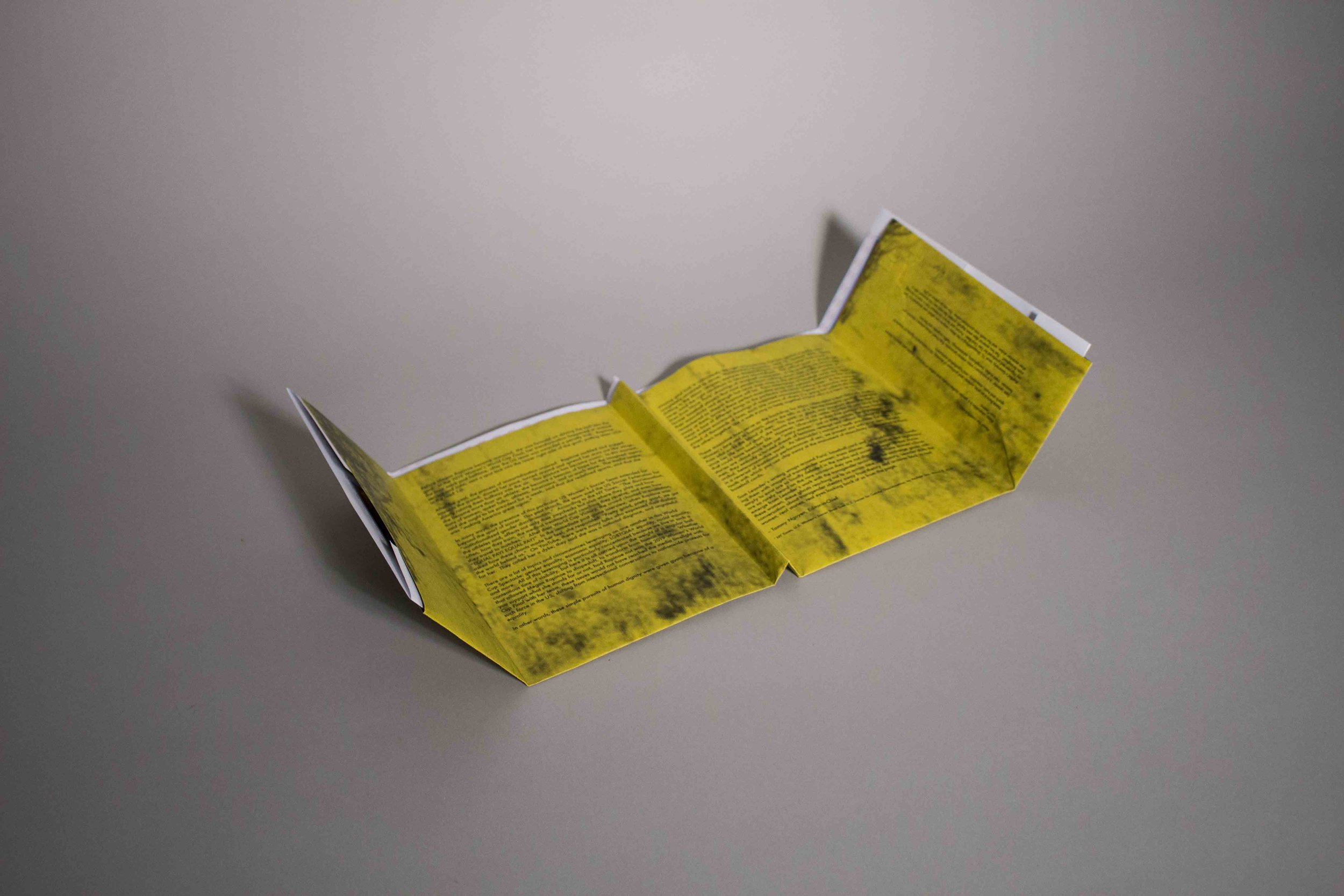
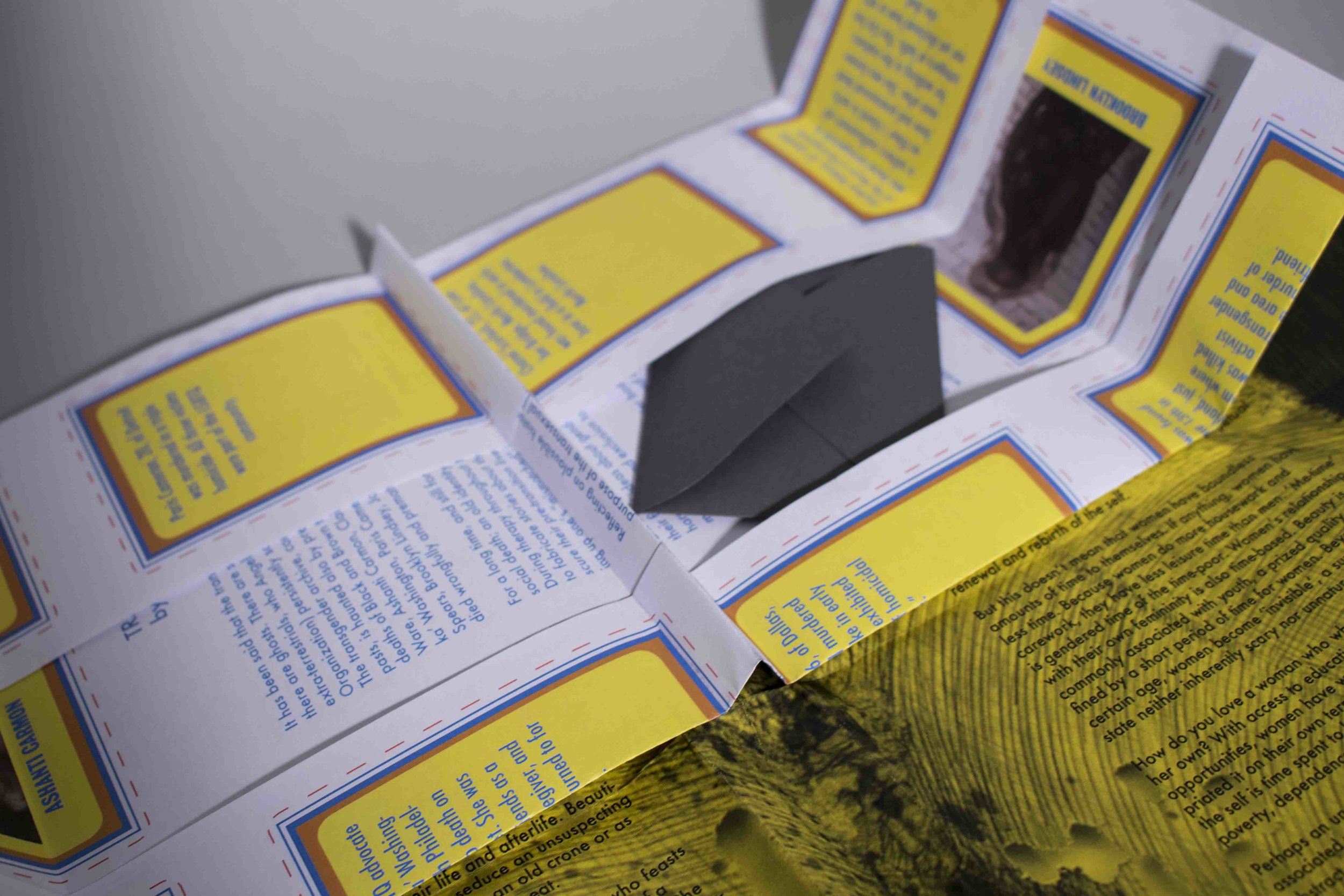

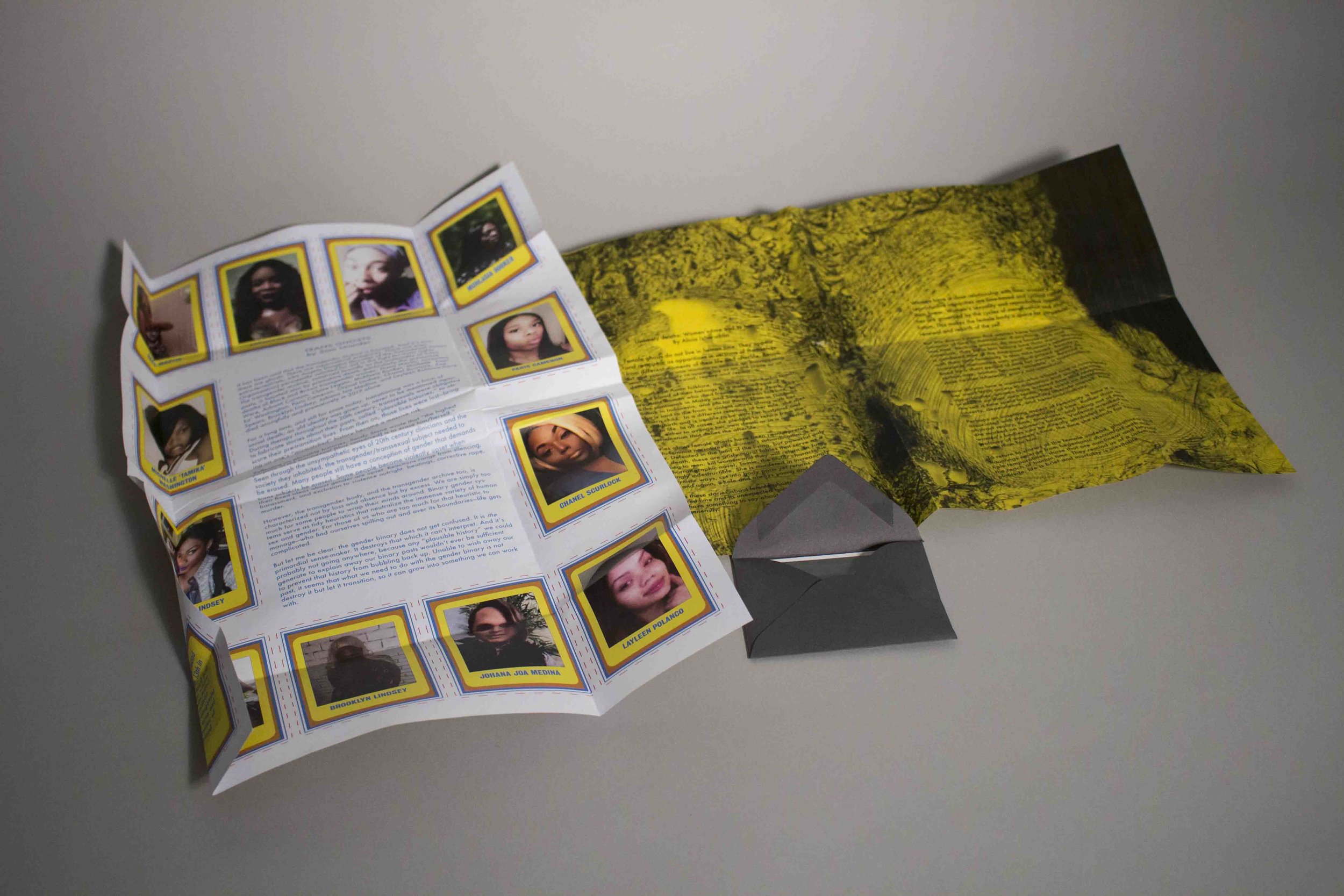
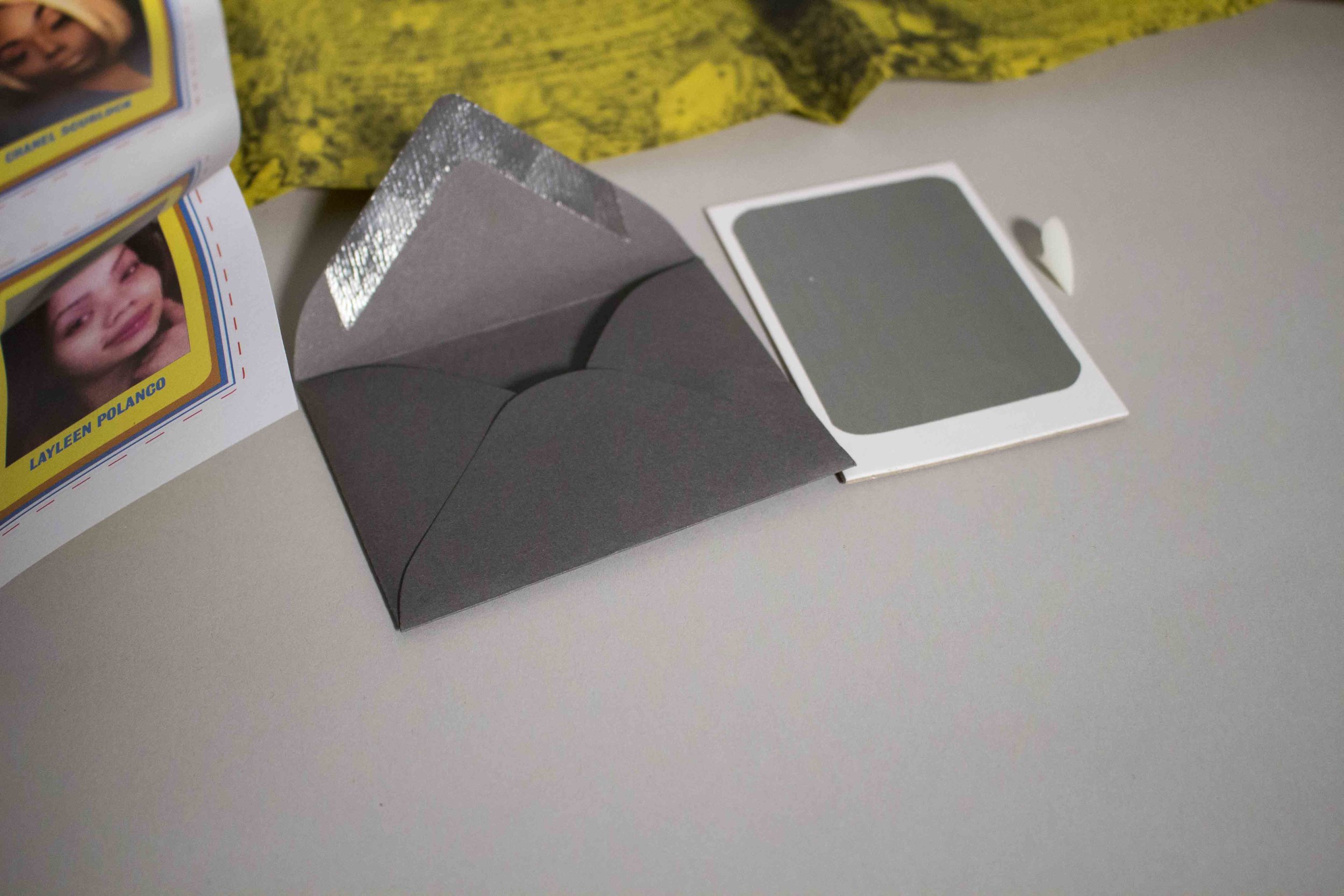
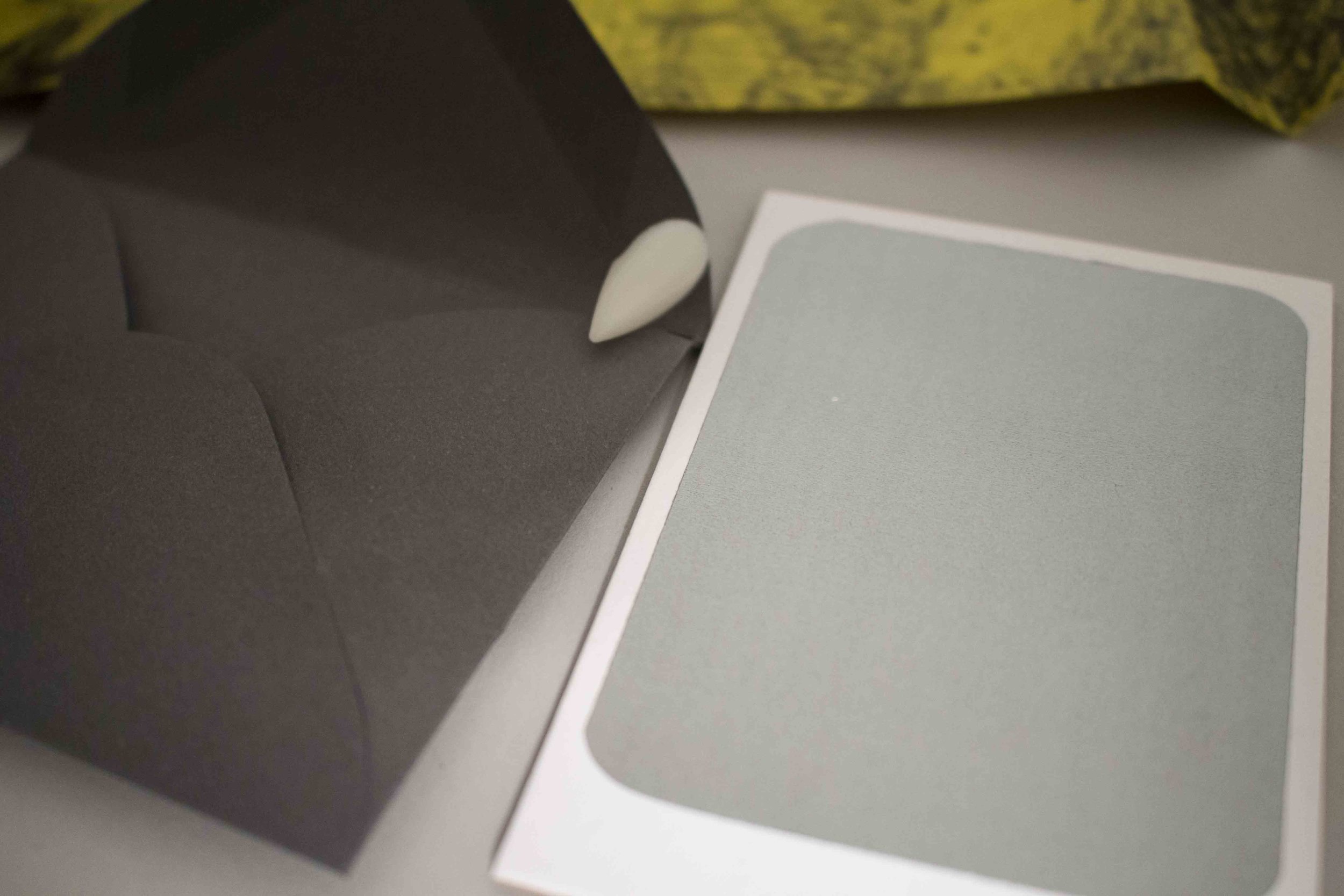
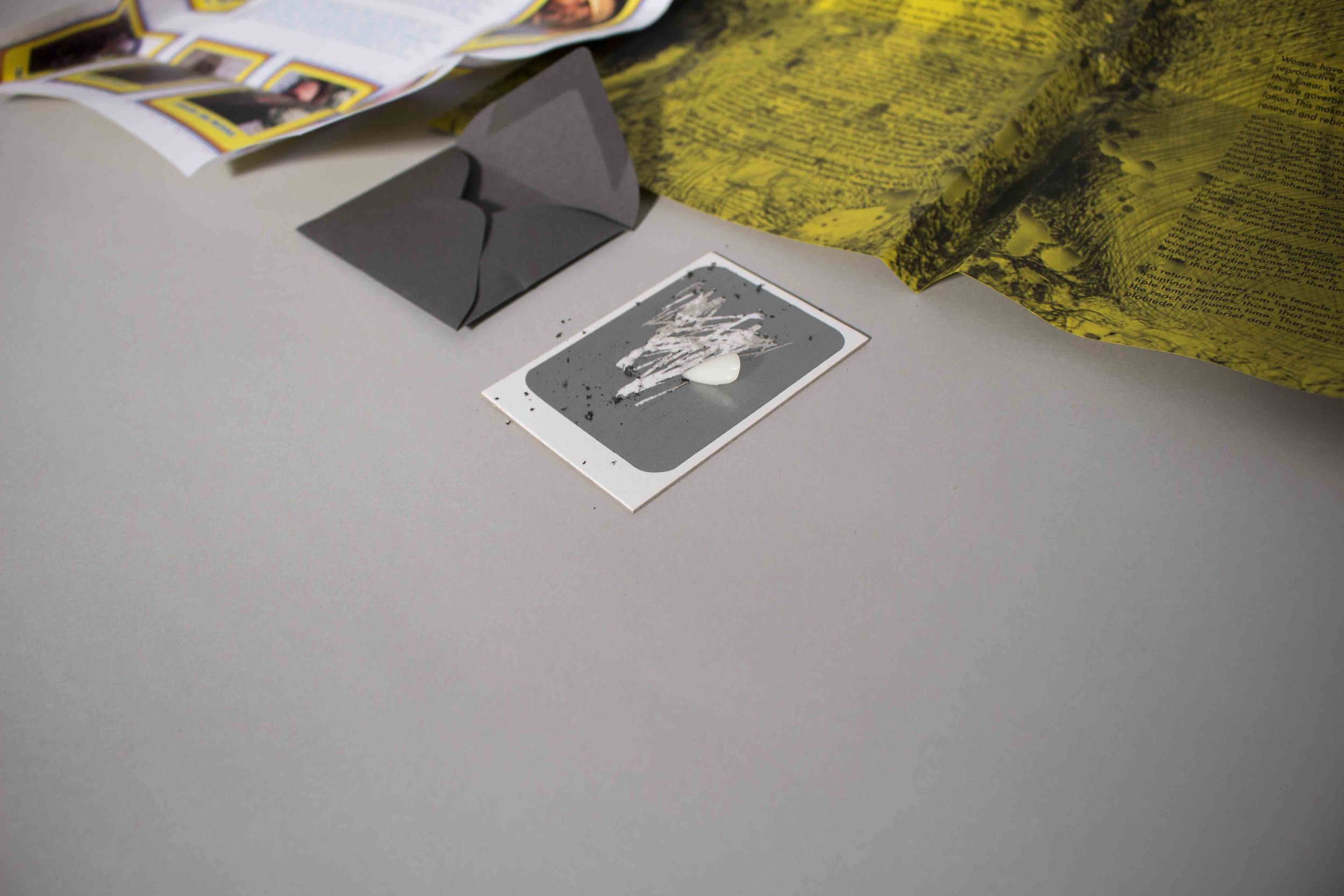

Martha's Quarterly
Issue 12
Summer 2019
Shapeshifting in the Minor Leagues
6.5” x 4.75”
About the contributors:
Alicia Izharuddin is a gender studies scholar and author of the book Gender and Islam in Indonesian Cinema.Norm Paris is an artist, curator, and professor of drawing. He is interested in figures of American sports and music, flawed masculinity, and hypothetical monuments.
Sam Leander is a non-binary trans woman (pronouns: they/them) whose primary interests are feminism, trans studies, metaphysics, epistemology, Netflix originals, and the law.
Before Megan Rapinoe became immortal, she was focused on driving the ball into the goal. In the 2019 Women’s World Cup Final, her transformation happened at around the hour mark past halftime, after the US team was awarded a penalty kick. Rapinoe, serious and calm, sent a spot kick into the lower right side of the goal, putting team USA in the lead 1-0.
After the goal, the process of immortalization occurred. Rapinoe nodded and jogged towards the crowd, slowed her pace, turned around and spread her arms out like wings, slowly raising them halfway into the air. This posture has become iconic. In this moment, she became more than an athlete; she became a beacon of hope for the imagined aspirations of women, queer folks, athletes, Americans, and so much more. The media swarm said she ought to be president for a week, said that she redefined sports, said that she was “making America great again.”
In many ways, the presence of this particular US Women’s Soccer Team extended far beyond the sport of soccer. This past March, the team sued the US Soccer Federation for “institutionalized gender discrimination.” According to the NY Times, “The discrimination, the athletes said, affects not only their paychecks but also where they play and how often, how they train, the medical treatment and coaching they receive, and even how they travel to matches.” (1) After their World Cup Victory, the crowd chanted in exaltation, “EQUAL PAY! EQUAL PAY!” In the immediate post game interview, when Rapinoe was asked how these chants made her feel, she responded: “Pretty good, pretty good, we got the world behind us.” On YouTube, there were many folks who expressed their disdain for her. They called her a dyke; they said she was a national disgrace, and ungrateful.
There are a lot of topics and circumstances leveraging on one another in this World Cup Spectacle: gender equality, economic equality, LGBTQIA+ equality, racial equality, and more. All of this leveraging is particularly concentrated because we live in such a contentious time of visibility, but here it is all carried upon the weight of a singular ball that allowed Megan Rapinoe to shapeshift, to transform from human to idea. Whether you support what she stands for or not, had Rapinoe not won the 2019 Women’s World Cup Final with her team, these issues would not have reached the media limelight with such force in the US, shifting from intersectional conversations to nationwide protests for equality.
In other words, these simple pursuits of human dignity were given gusto because of a winning goal kick in coincidently the right circumstances that has ignited a public spirit completely unrelated to soccer. This Martha’s Quarterly, Issue 12, Summer 2019, Shapeshifting in the Minor Leagues, explores shapeshifting by those who never had a ball, never mind the right conditions to become immortalized. The yellow cover is grazed with lines from Norm Paris’ drawings of imagined monuments. In his practice, he excavcates former baseball players that most people know nothing about, men at the pinnacle of their masculinity and strength but never even close to the pinnacle of their sport to be remembered as Megan Rapinoe will be. Paris takes heaps of baseball cards and sands away at them, turning these perfect masculine poses into agitated abstractions that could mean a host of different things to the particular individual holding them. At the same time Paris makes enormous drawings of supposed monuments, figures of muscular men composed of thousands of lines, each line unsure of where it is going but collectively holding the others together like a web trying to keep together a hero who is a hero no more.
These masculine lines serve as the backdrop for Alicia Izharuddin’s text Untimely deaths: Women’s time and its horrors, where she tells us of a female vampiric spirit of Southeast Asia who sucks the blood of men. This spirit, or ghost, was pregnant when she died; since her life was cut short, she haunts the men in our realm in order to gain back the time that could have been her life. However, Izharuddin probes that perhaps these vampires stories are about more than just “scary women:” just as they contain the nightmares of men, they embody a twisted dream of feminine revenge and refusal to submit to a patriarchal, heteronormative world. As Izharuddin’s vampire’s teeth punctures the male’s skin in a reversal of traditional performances of sex, we present you with your own vampire tooth with which you can chip away at the monument of masculinity as presented in Paris’ baseball cards.
Sam Leander’s writing wraps around Paris’ baseball card and Izharuddin’s tooth, swathing them with images of transgender women: trans women, whose bodies and legitimacy simply to exist are so loudly debated in the media and society at large, whose stories are so rarely heard on the rare occasion they are not dismissed. These women’s faces emerge from Leander’s work with the transgender archive; as we exchange gazes with these women, these ghosts reaching out to us across time and history, Leander shifts the conversation about transgender identity away from theory and archives back to real women, real stories, real eyes looking back at us from the page.
– Tammy Nguyen, Editor-in-Chief
(1) New York Times, U.S. Women’s Soccer Team Sues U.S. Soccer for Gender Discrimination by Andrew Das, March 8, 2019.

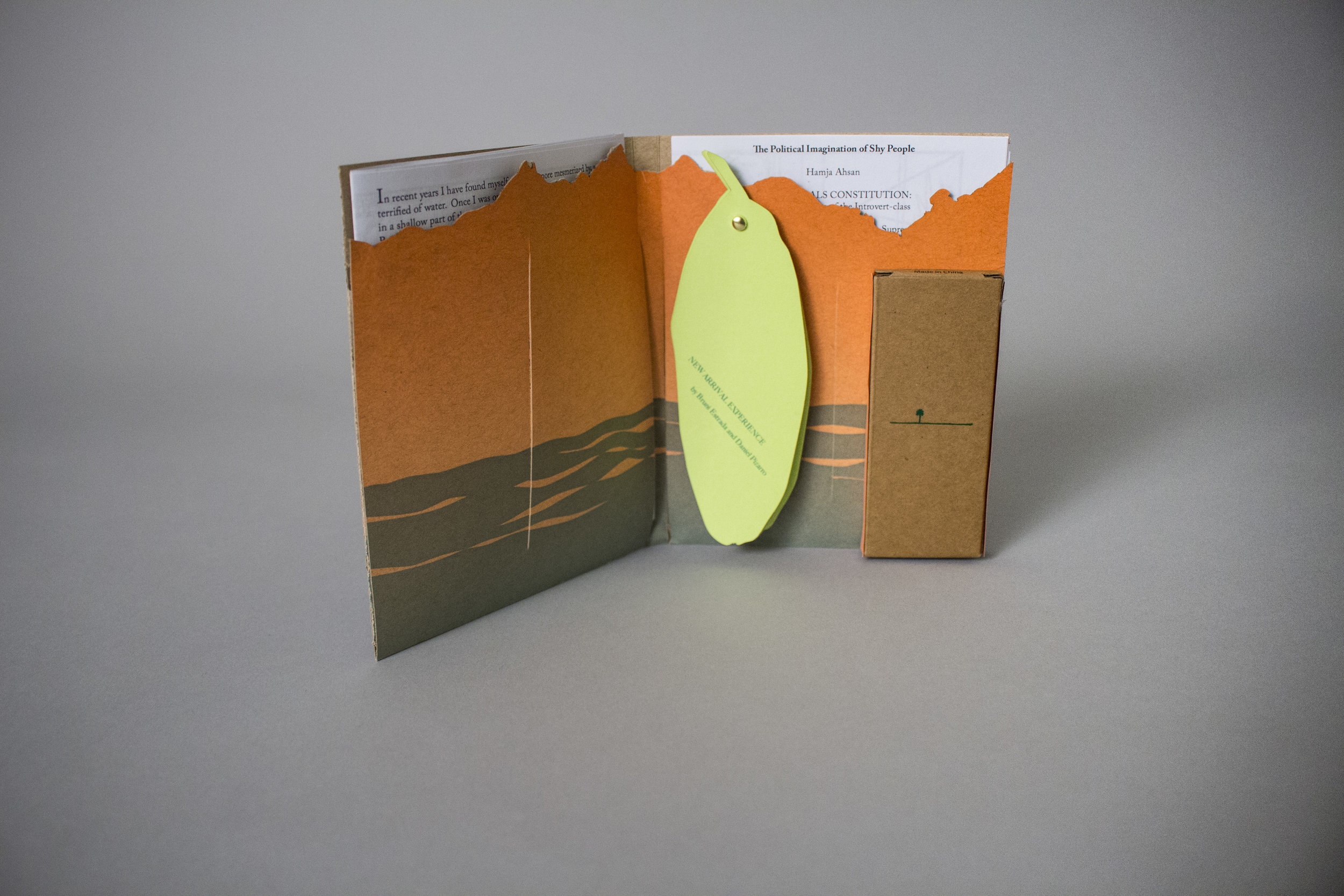

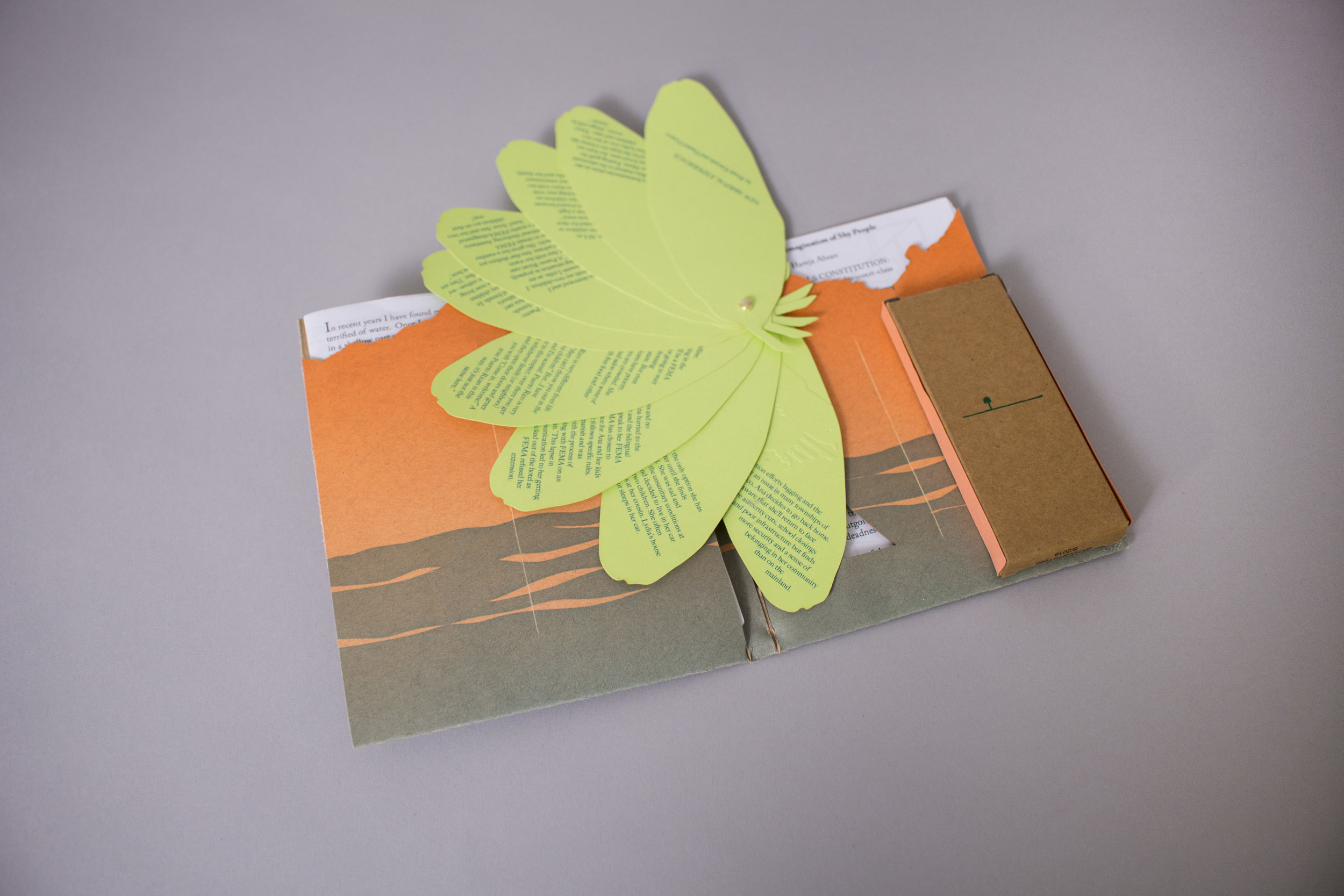
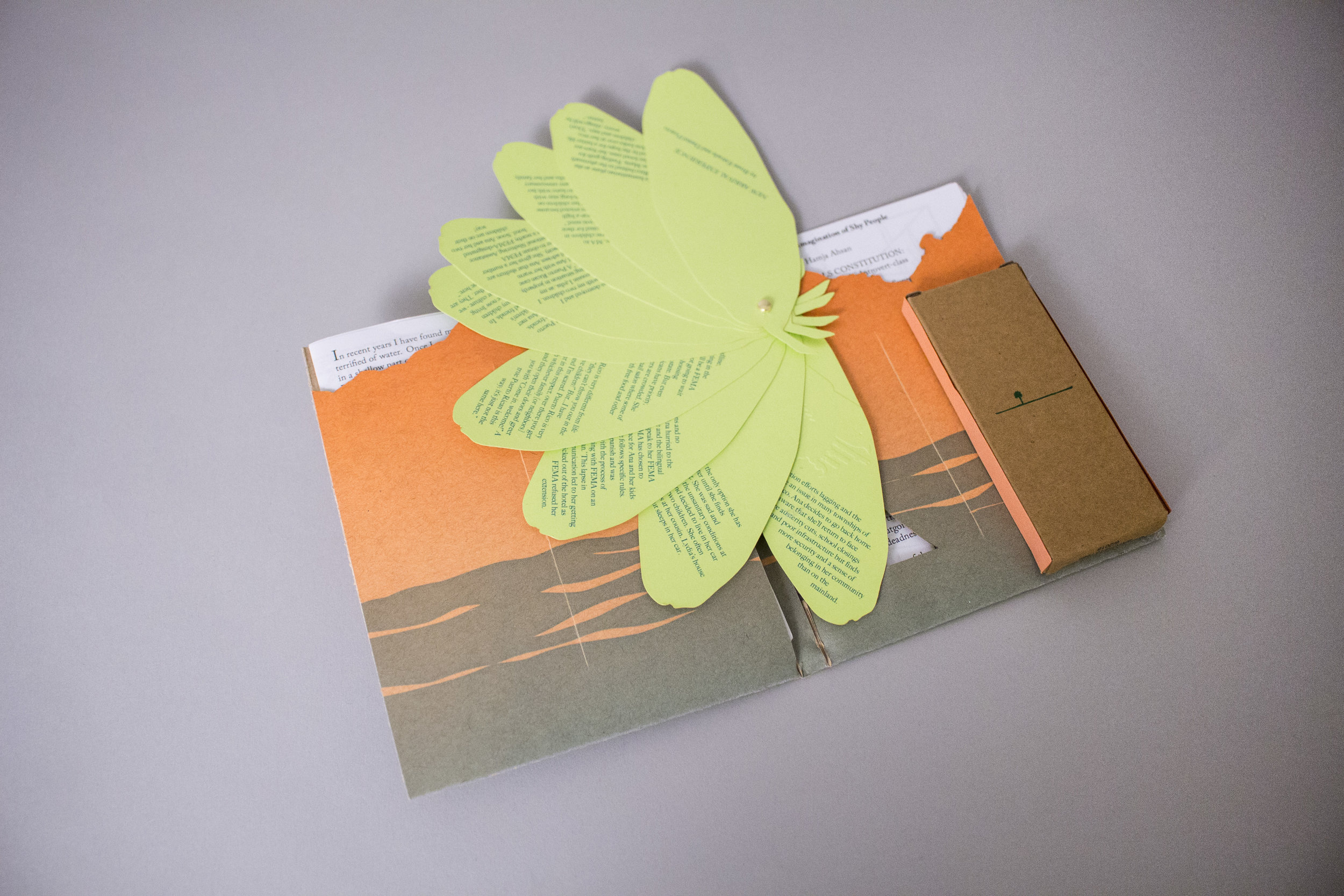
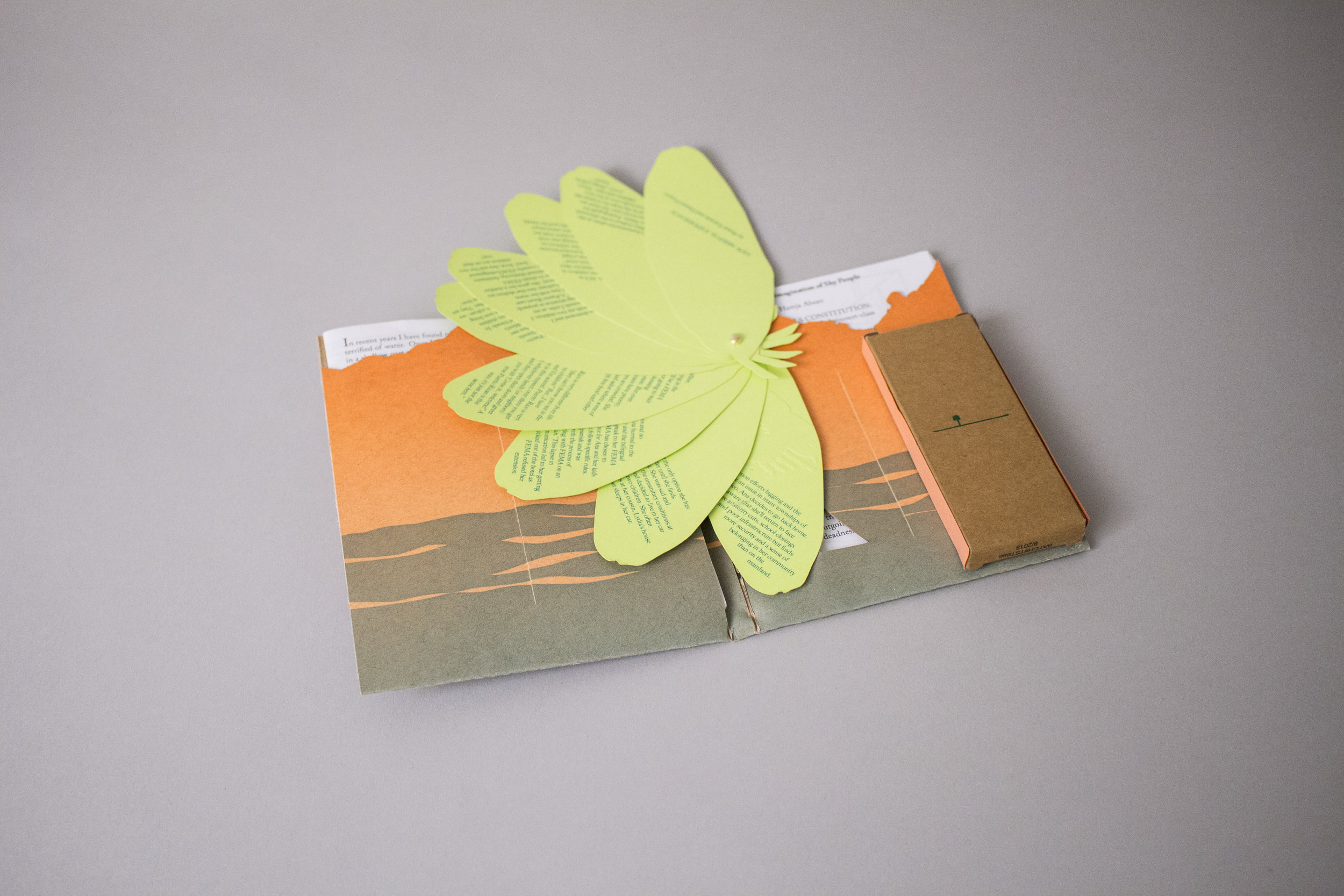
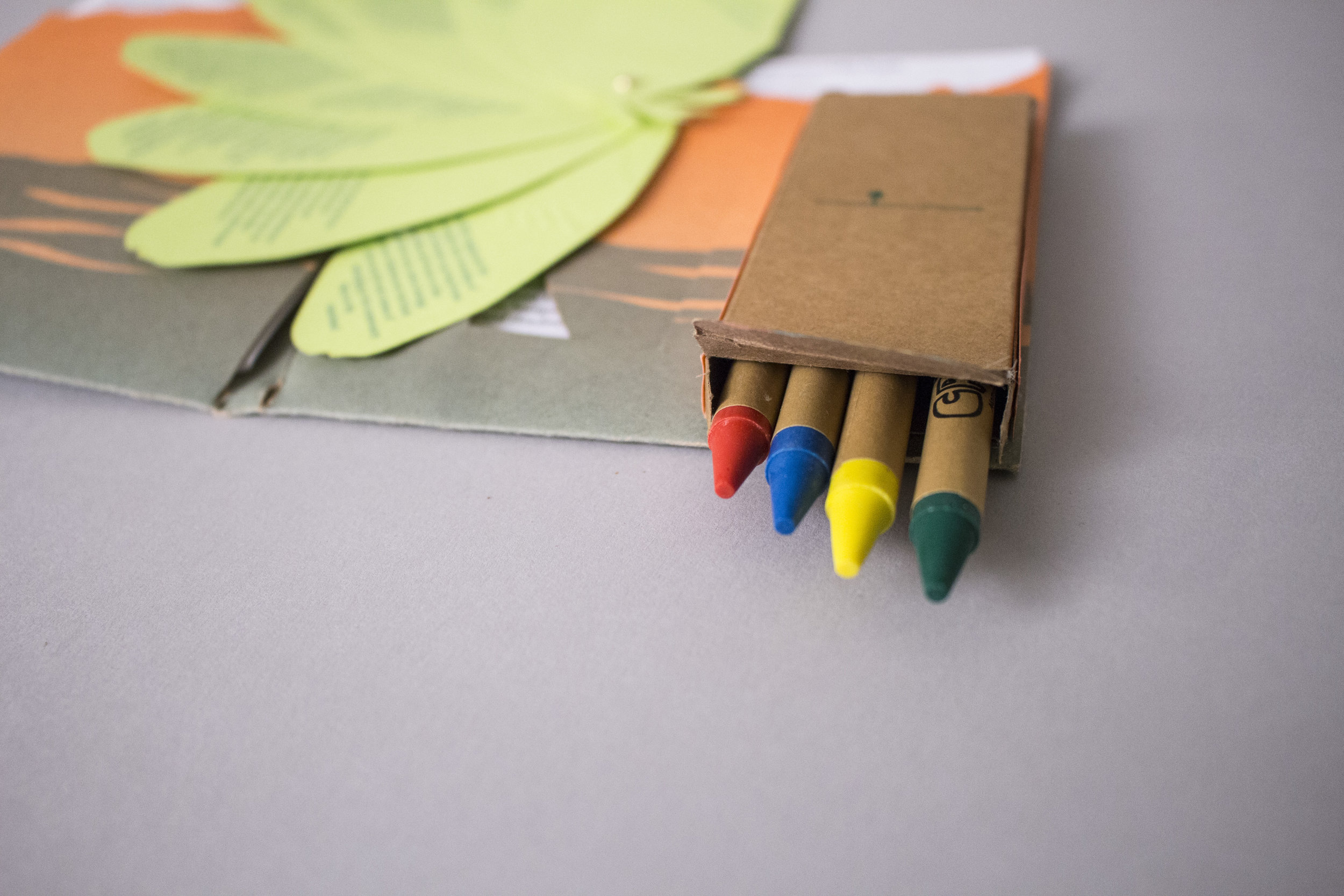

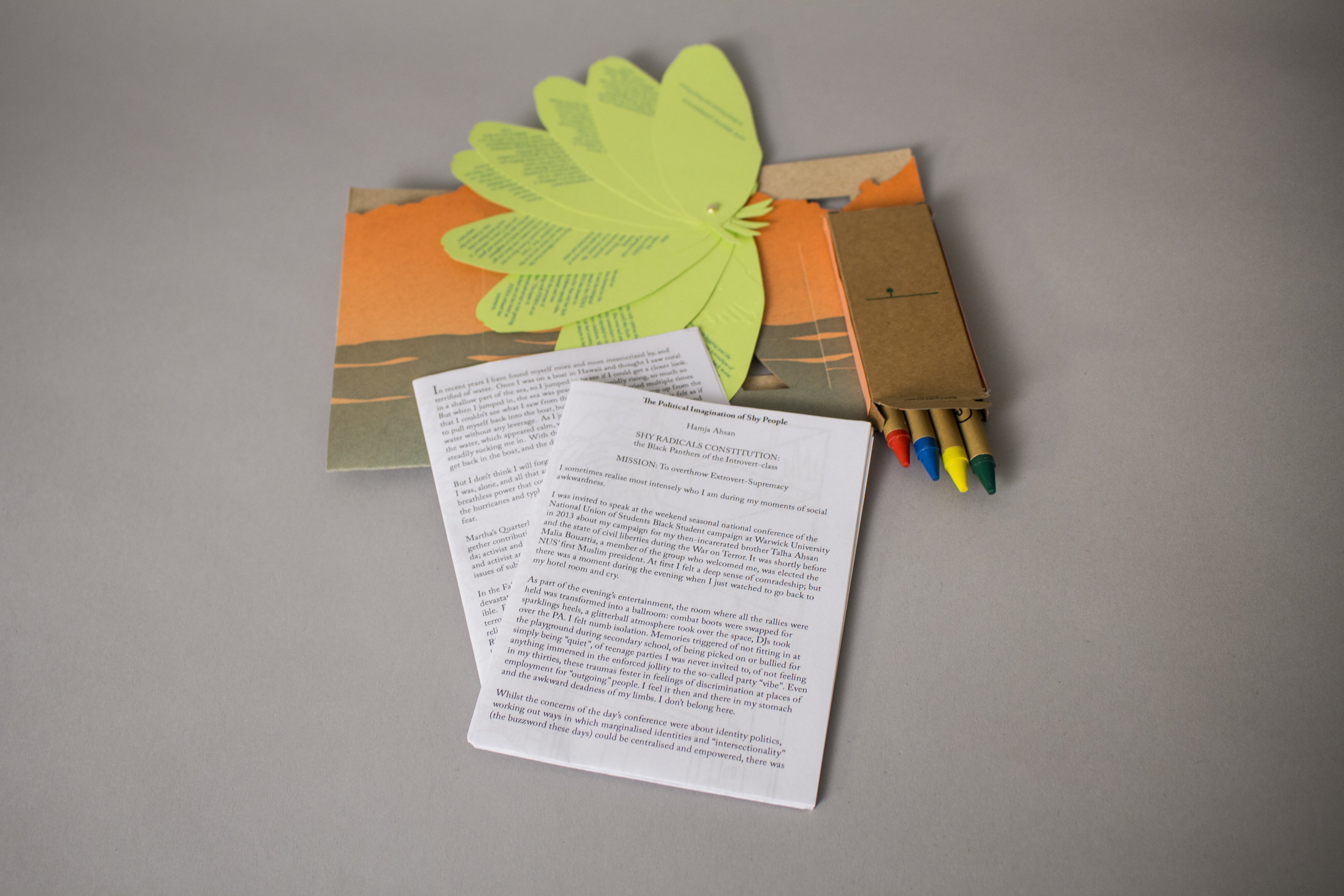
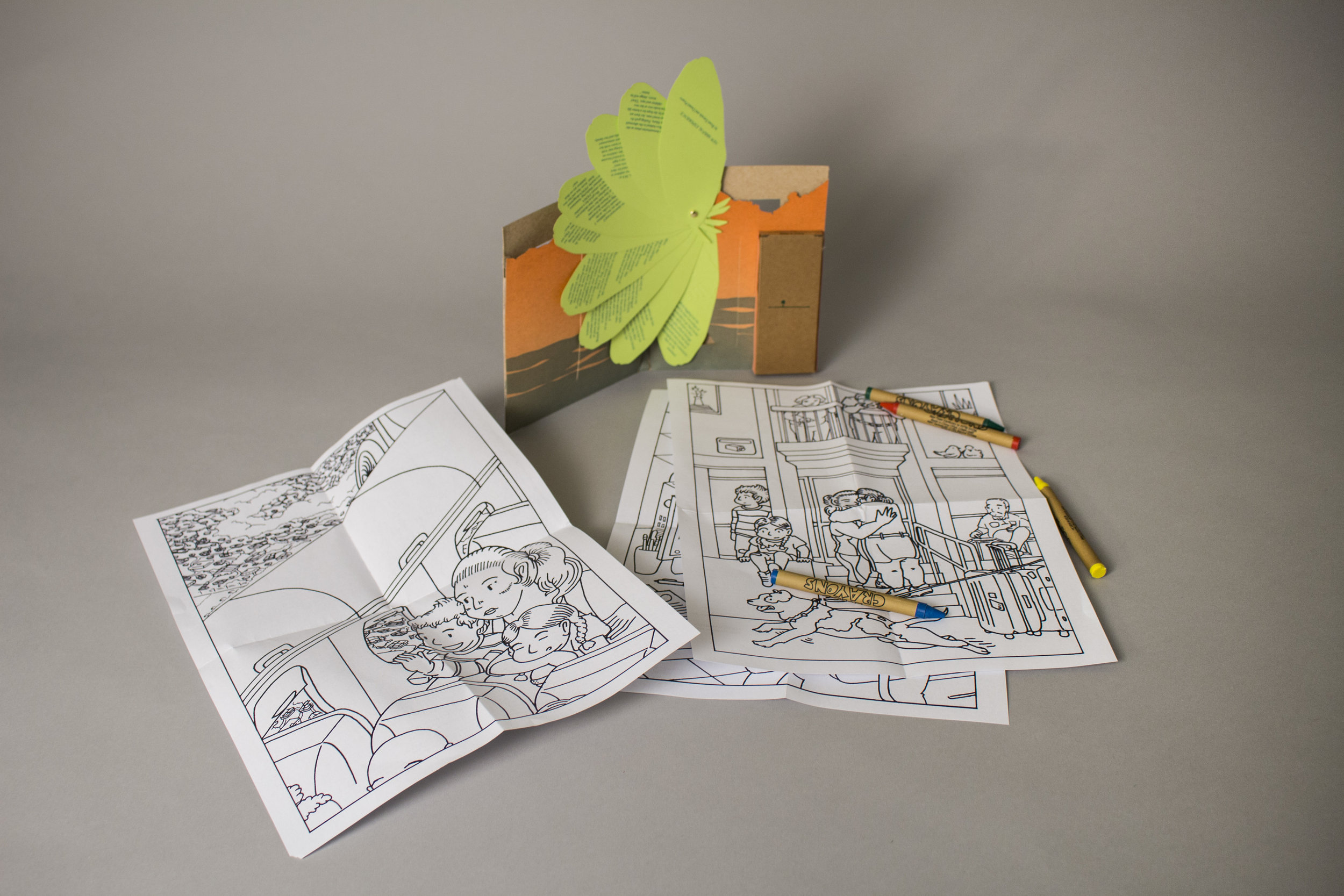
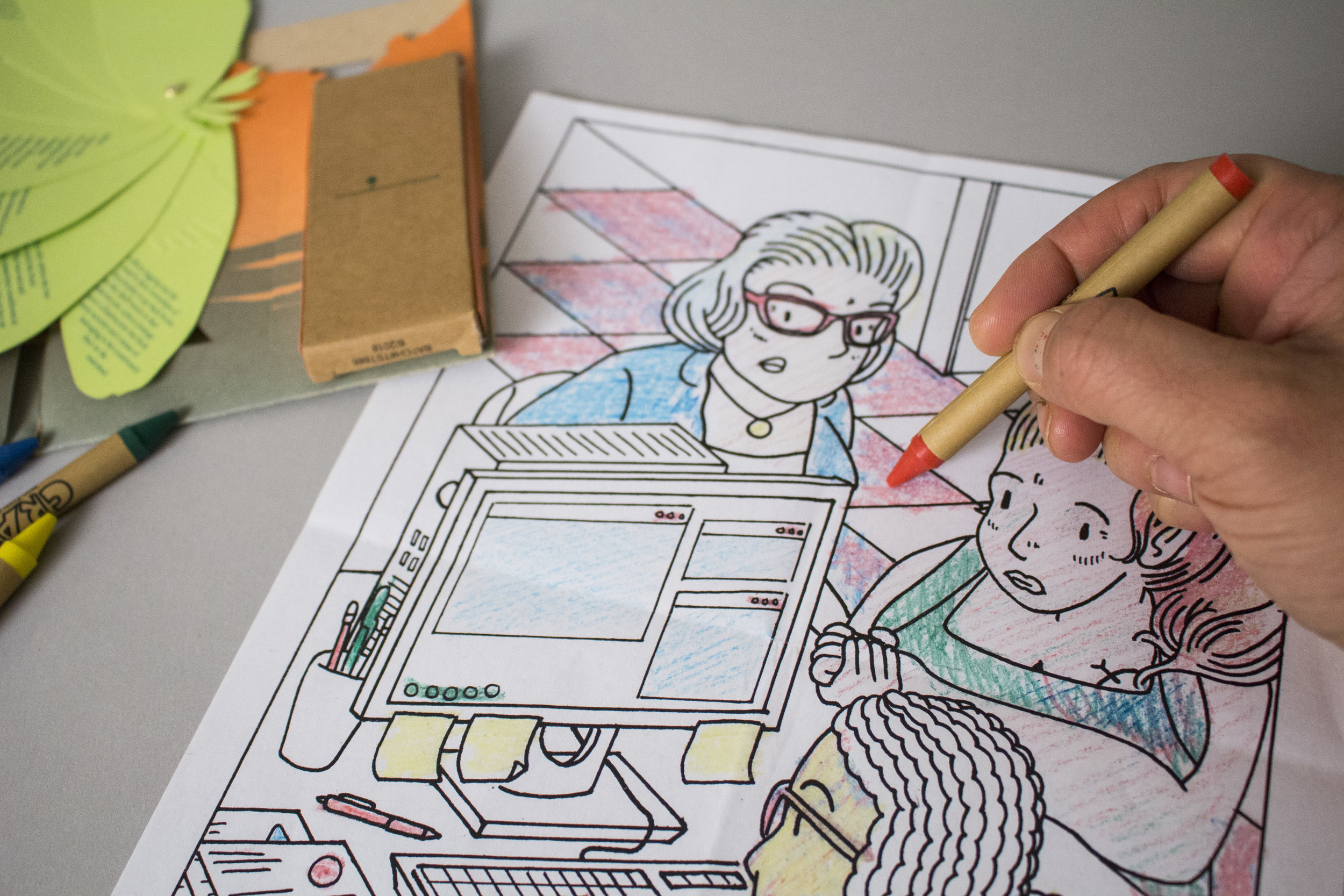

Martha's Quarterly
Issue 11
Spring 2019
The Book of the Homeless
5.5” x 4.25”
About the contributors:
Hamja Ahsan is an activist and author of Shy Radicals.Bruni Estrada is an environmental activist and scholar.
Karl Orozco is an illustrator.
Daniel Pizarro is an activist and graphic designer.
Edith Wharton was an activist and author.
In recent years I have found myself more and more mesmerized by, and terrified of water. Once I was on a boat in Hawaii and thought I saw coral in a shallow part of the sea, so I jumped in to see if I could get a closer look. But when I jumped in, the sea was peacefully yet rapidly rising, so much so that I couldn’t see what I saw from the boat anymore. I tried multiple times to pull myself back into the boat, but it was very difficult to jump up from the water without any leverage. As I jumped and jumped and jumped, it felt as if the water, which appeared calm, was actually swirling around me, gently and steadily sucking me in. With the help of some friends I was able to clumsily get back in the boat, and the day went on.
But I don’t think I will forget what that peaceful water actually felt like. There I was, alone, and all that appeared serene and unassuming actually had a breathless power that could consume me. This knowledge made me look at the hurricanes and typhoons in years to come with a different kind of awe and fear.
Martha’s Quarterly, Issue 11, Spring 2019, Book of the Homeless brings together contributions by social activism team Daniel Pizarro and Bruni Estrada; activist and author of Shy Radicals, Hamja Ahsan; illustrator Karl Orozco; and activist and author of The House of Mirth Edith Wharton to explore the issues of sublime disasters and alienation.
In the fall of 2017, Hurricane Maria swept over the island of Puerto Rico, devastating the island immeasurably. On television, this hurricane was incredible. Puerto Rico was but a freckle in the sea, smothered in white clouds of terror. There were 3,057 fatalities; today, more than a year after the epic storm, relief has barely rejuvenated the former infrastructure that supported Puerto Rican life. Most people witnessing the storm through a screen do not tangibly know the emotional distress of displacement and bureaucracy that has affected thousands of Puerto Rican lives. So, Passenger Pigeon Press invited Bruni Estrada, an environmental scholar, and Daniel Pizzaro, a graphic designer, who have been working on climate change and its intersection with race and displacement in Puerto Rico to inform our public of the common realities that many of Hurricane Maria’s victims face. Reading the story by fanning apart the palm tree, the reader learns of Ana and her two children and how they have been forced into homelessness in their own home.
But, now knowing this, what can a single person possibly do?
In America we don’t always think of the homeless of WWI, but after the war an estimated 200,000 Belgian refugees fled to France. In Paris, the writer Edith Wharton was a volunteer at the American Hostel for Refugees, where in just a year the charity had assisted 9,300 people. As the hostel dawned on its second year, with the usual worry of zero funding, Ms. Wharton rallied her colleagues across the arts to compile a book of poetry, literature, and art. This book, which this Martha’s Quarterly is named after, was called The Book of the Homeless, and all of the proceeds from its sales would go towards the funding of a second year of operations at the American Hostel. Included in this issue is Ms. Wharton’s preface to the anthology, where she illustrates the dire circumstances of the people newly displaced by WWI and the purpose of her book.
I admire that Ms. Wharton’s activism is through her presence and active participation in the hostel. Then, when she needs to extend to folks who cannot be present, she does so through art. In this way, social justice presents itself through an individualized-- and maybe lonely– process of reflection and absorption of intimate literature. In this way, The Book of the Homeless created space for contemplation while being an active help to those on the frontlines of war relief.
In the last three years or so, populist activism has spread through social media and tribalist gatherings, all of which has been more amplified as people cut and paste, post, retweet memes, selfies, and hashtags that align their beliefs with one camp or another, squeezing out room for nuance and contradiction. This is why when I read Hamja Ahsan’s sharp debut book Shy Radicals, I found it refreshing and insightful. His book satirically imagines a movement of people and a transformation of the world led by folks who are introverts-- or shy. He advocates for 24-hour access of art and libraries, so that folks can take culture in deeply and quietly. This issue of Martha’s Quarterly includes a reflection that Mr. Ahsan wrote before the manifestation of Shy Radicals: in this writing he sets up a strong case for the urgency of solitude after having attended an activist gathering at Warwick University. I think that Ms. Wharton could be considered a shy radical too, as demonstrated by her quiet yet assertive hard efforts at the hostel and her reaching outward through art.
The fourth component of this Martha’s Quarterly is an invitation for you to contemplate Ms. Estrada and Mr. Pizzaro’s narration of Ana’s hurricane story by coloring in thoughtful illustrations by Karl Orozco. After you open this introduction, Edith Wharton’s preface to Book of the Homeless and Hamja Ahsan’s The Political Imagination of Shy People, you will find Orozco’s drawings depicting the first three palm leaves of Ms. Estrada and Mr. Pizzaro’s story. Please, then, open up the enclosed crayons and color, color in between the lines, or all over. Color the people blue and green and the house in yellow. Color however you wish, but allow for the act of coloring to invite you into this house for the homeless as a shy radical.
– Tammy Nguyen, Editor-in-Chief
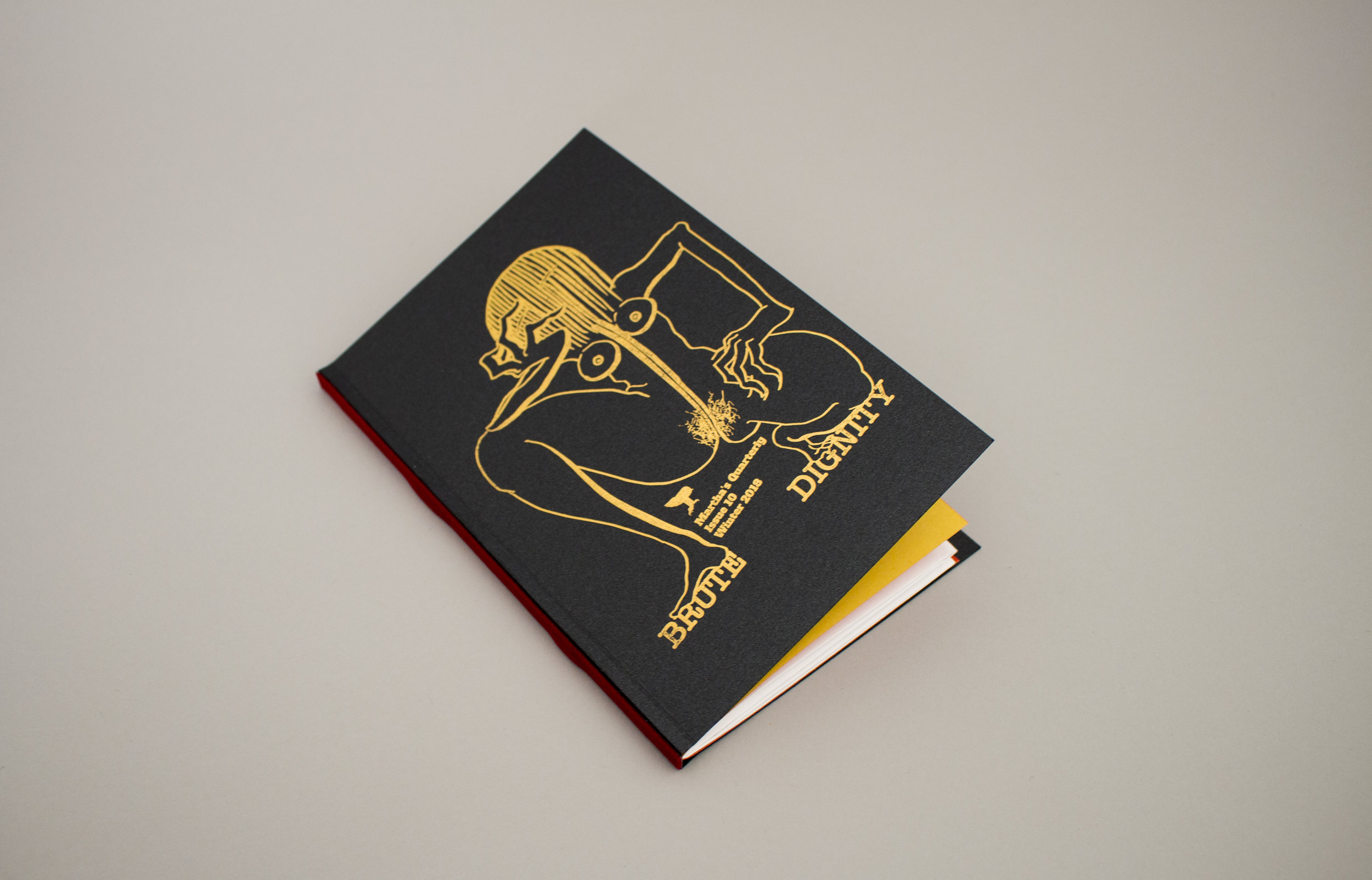
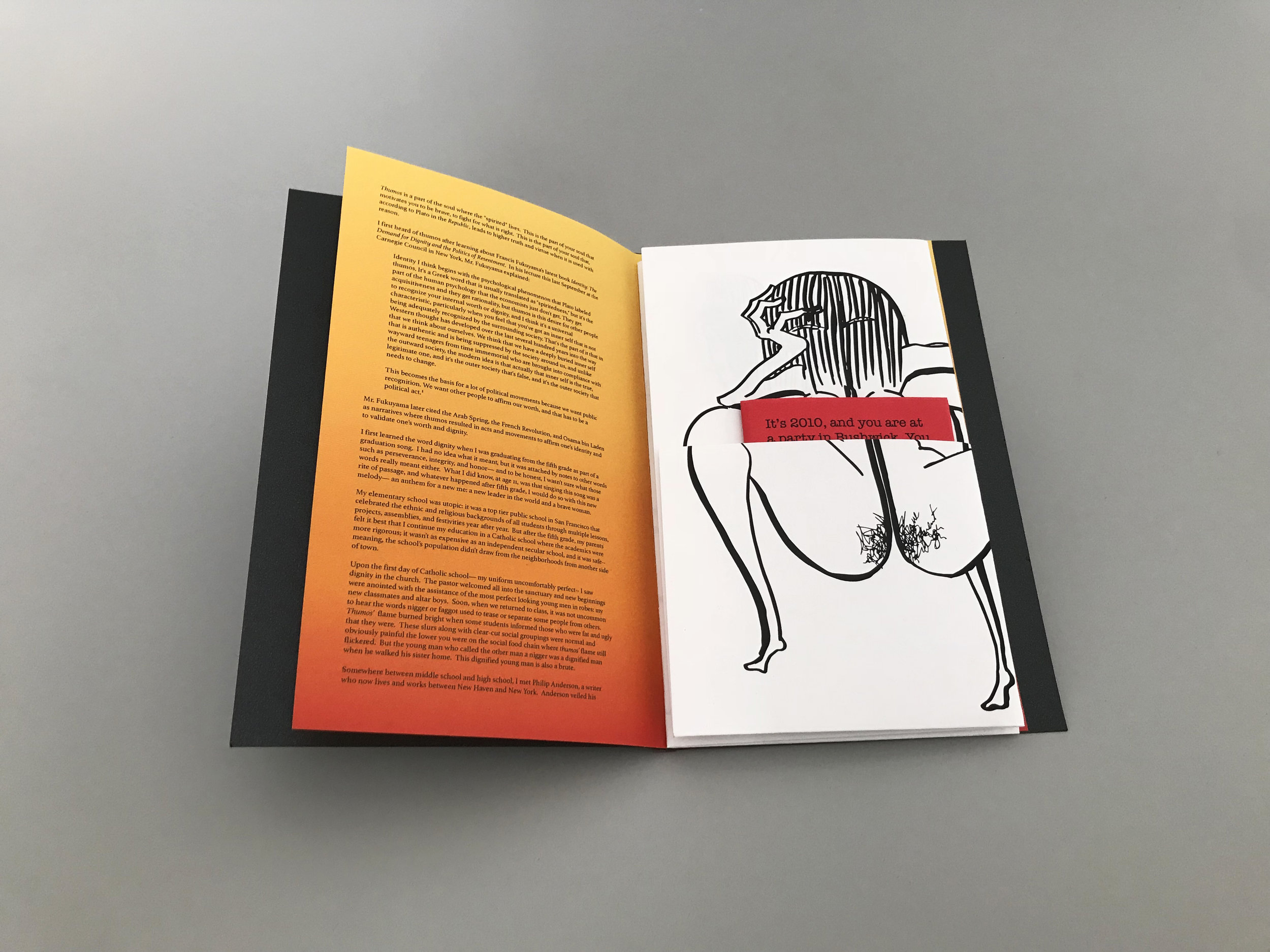
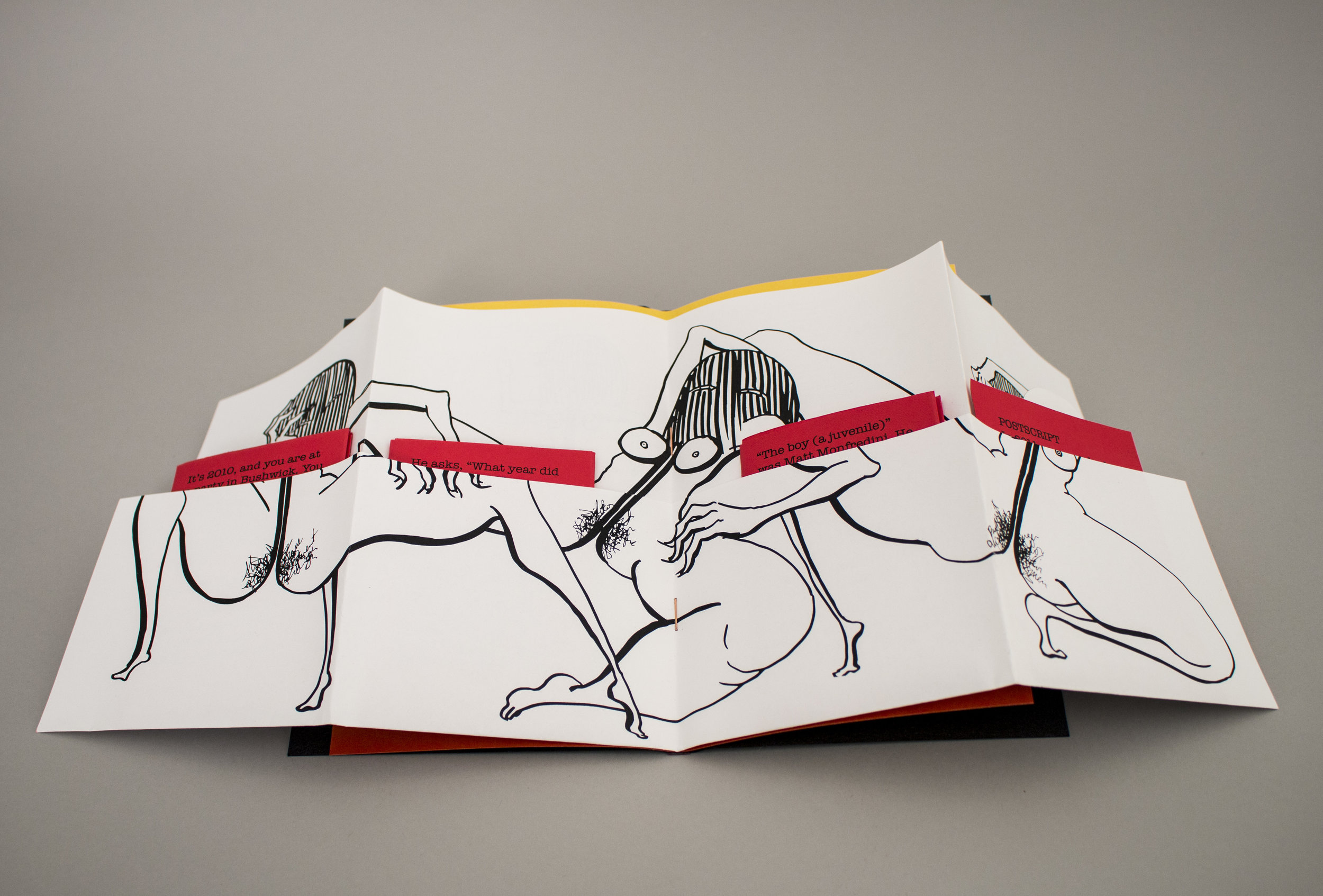
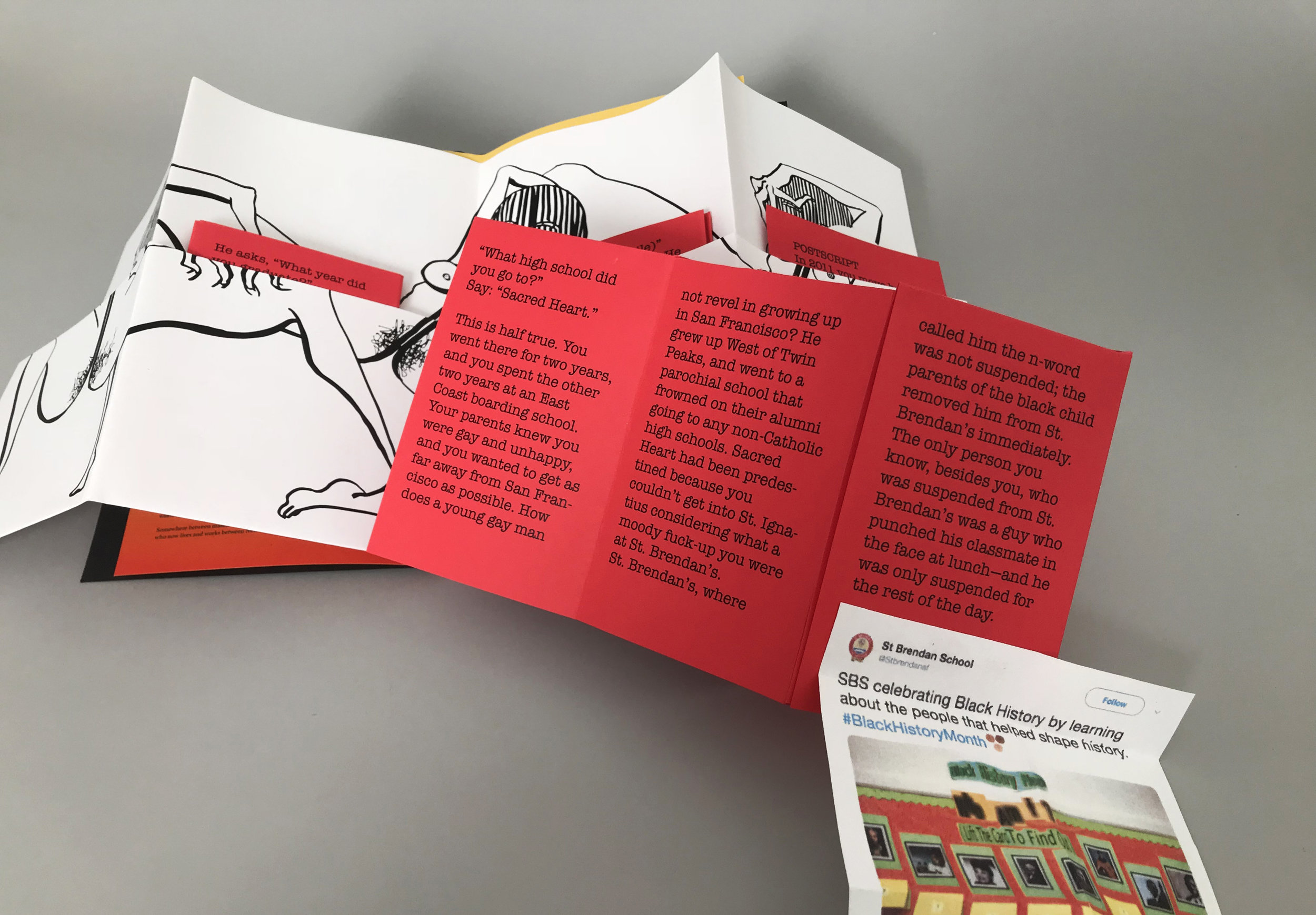
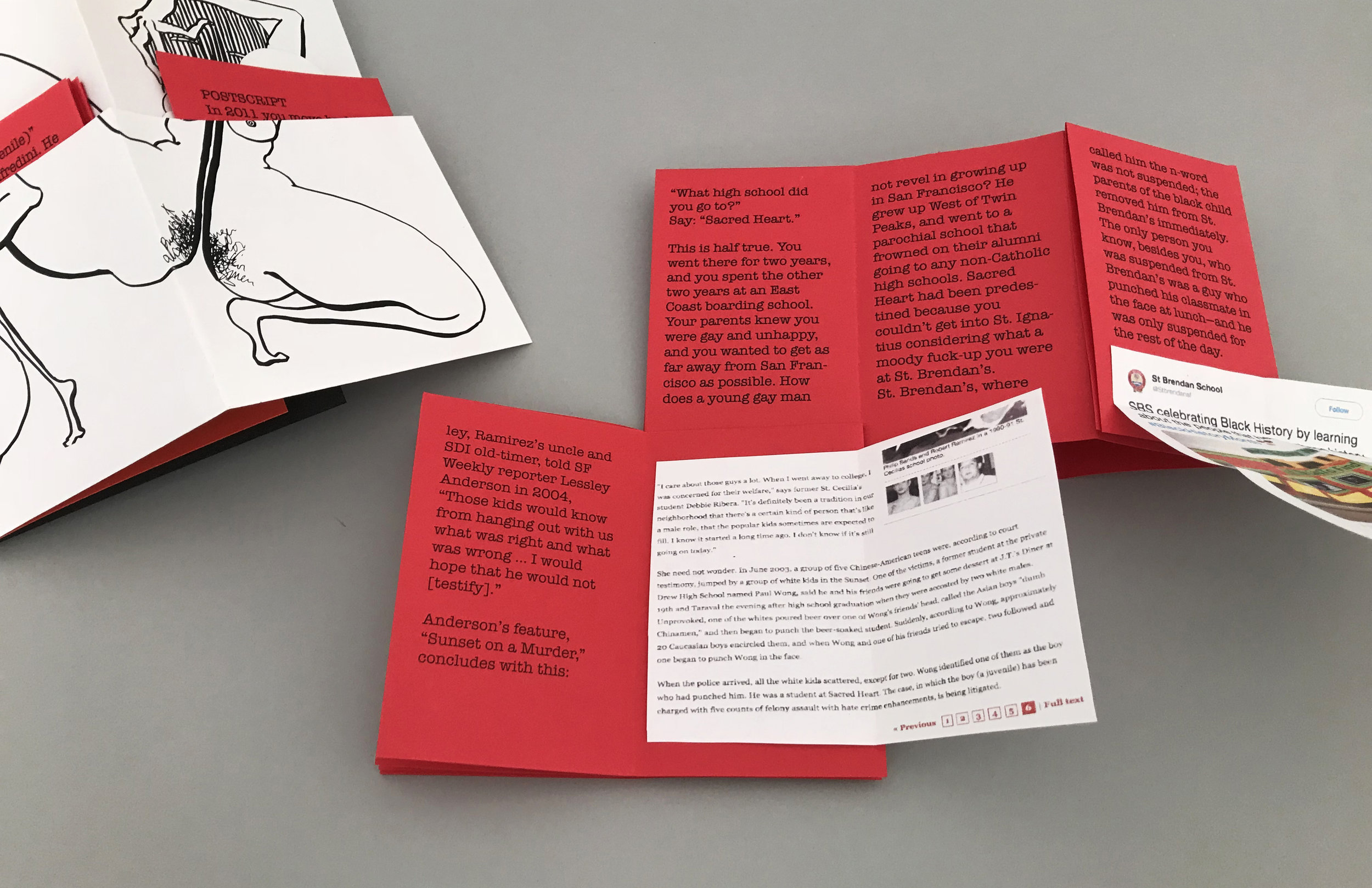
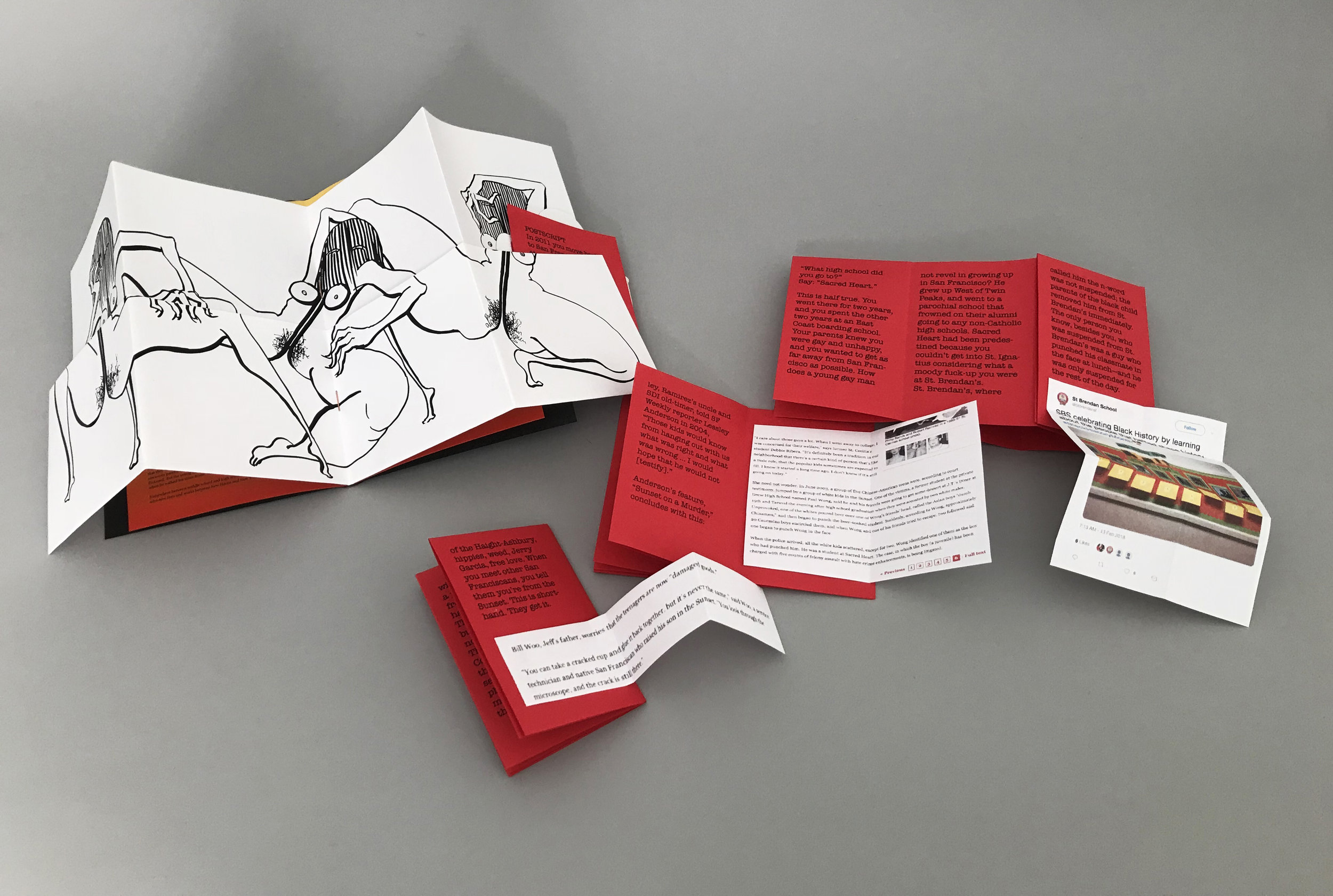
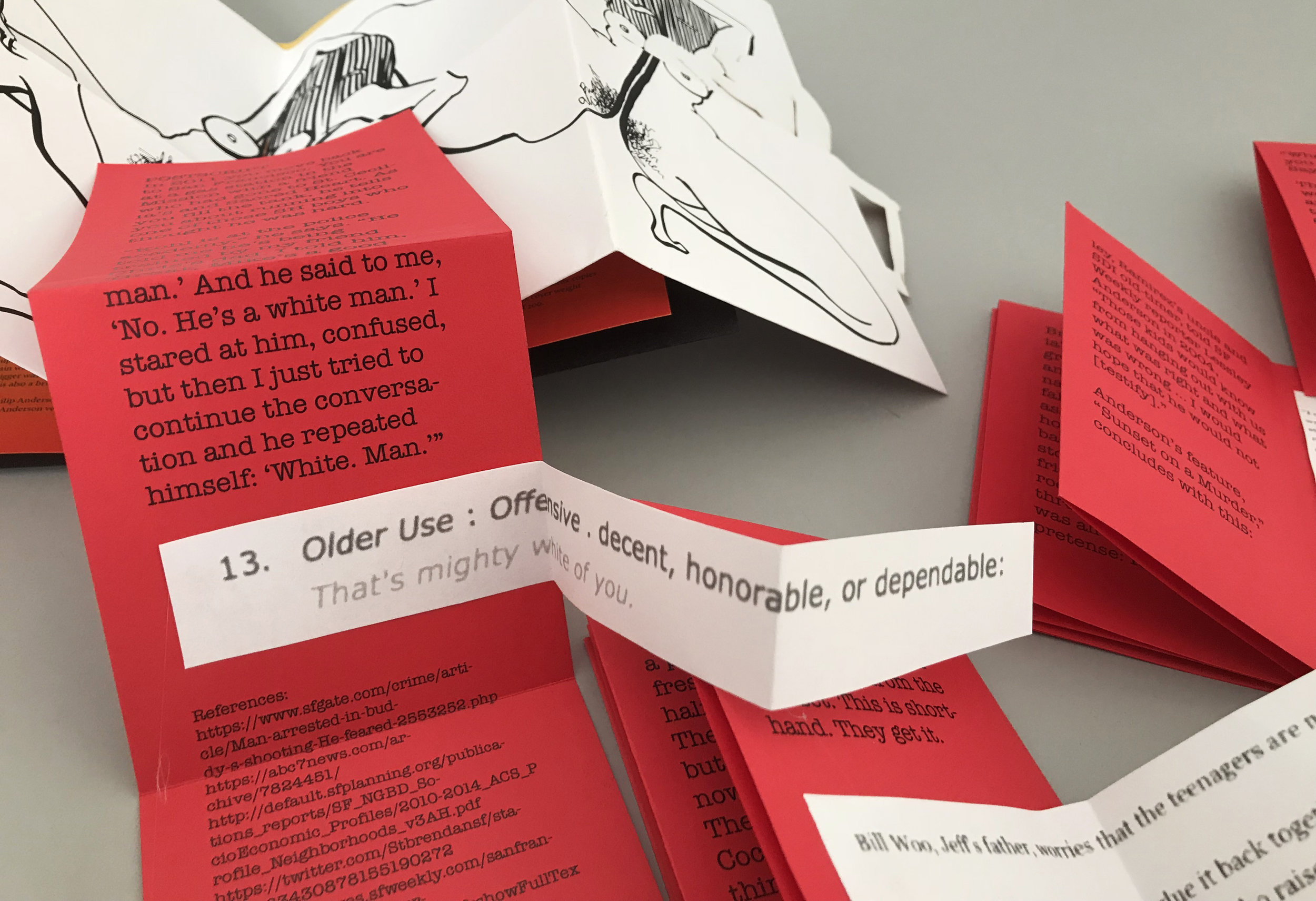

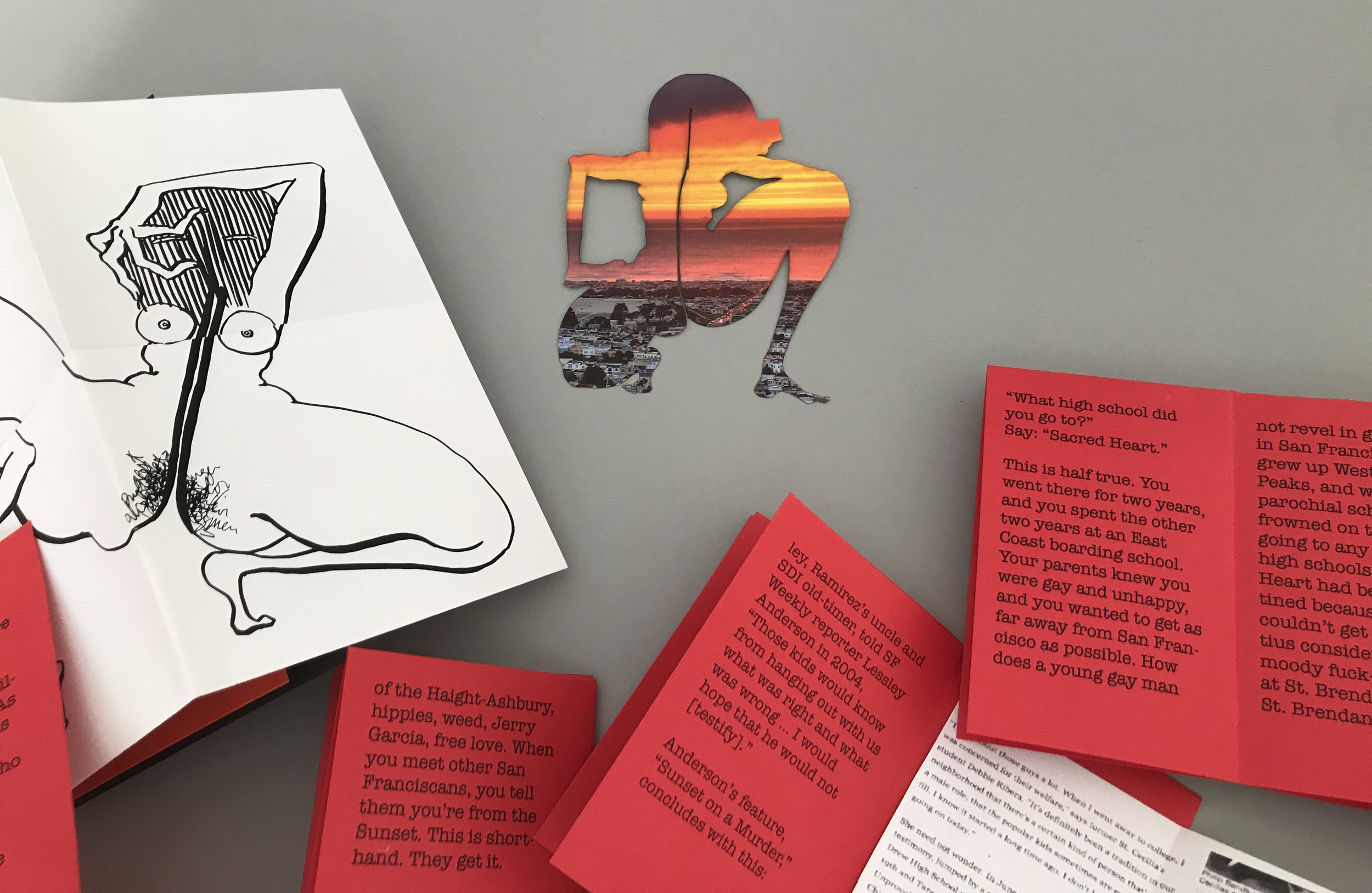
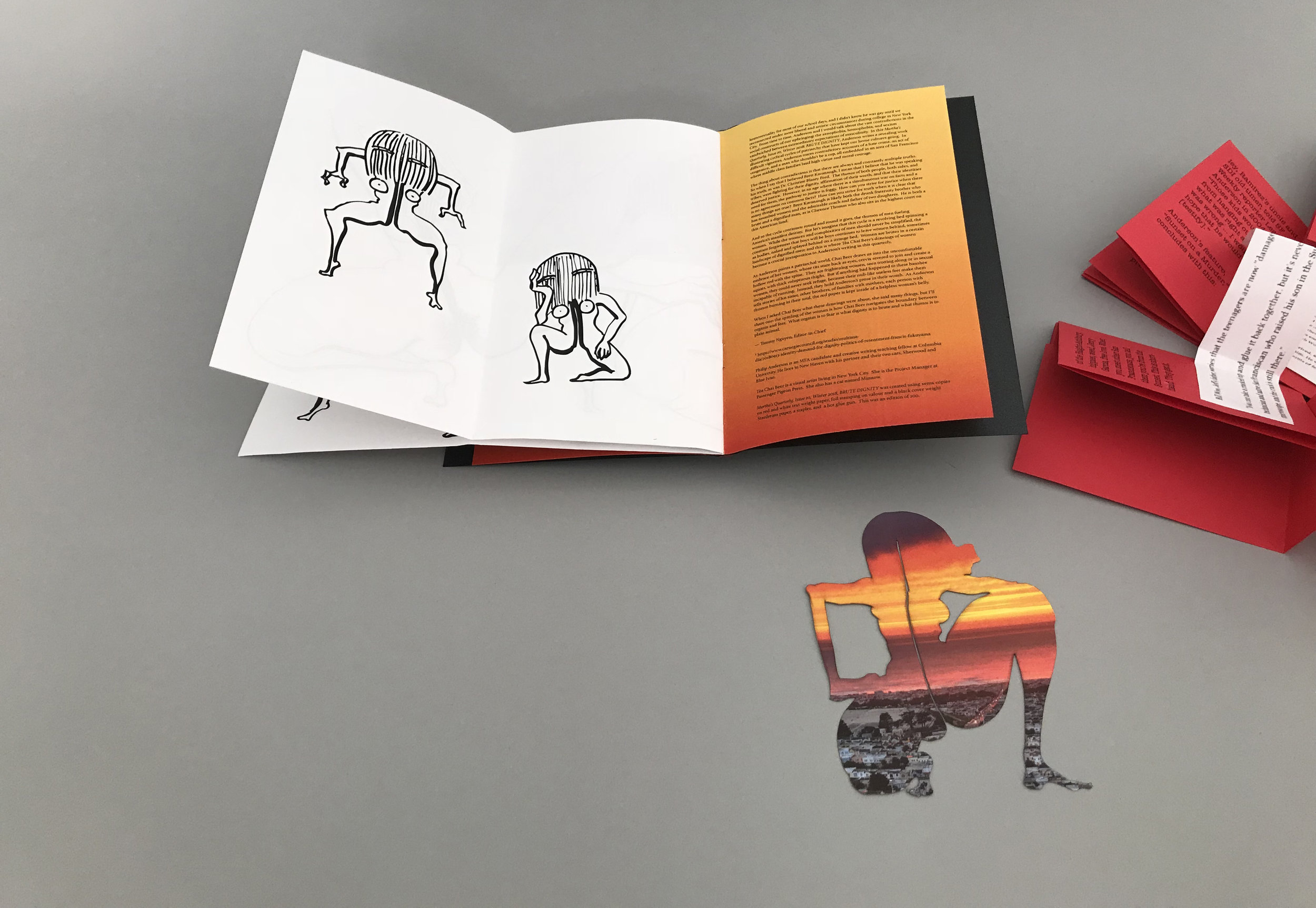
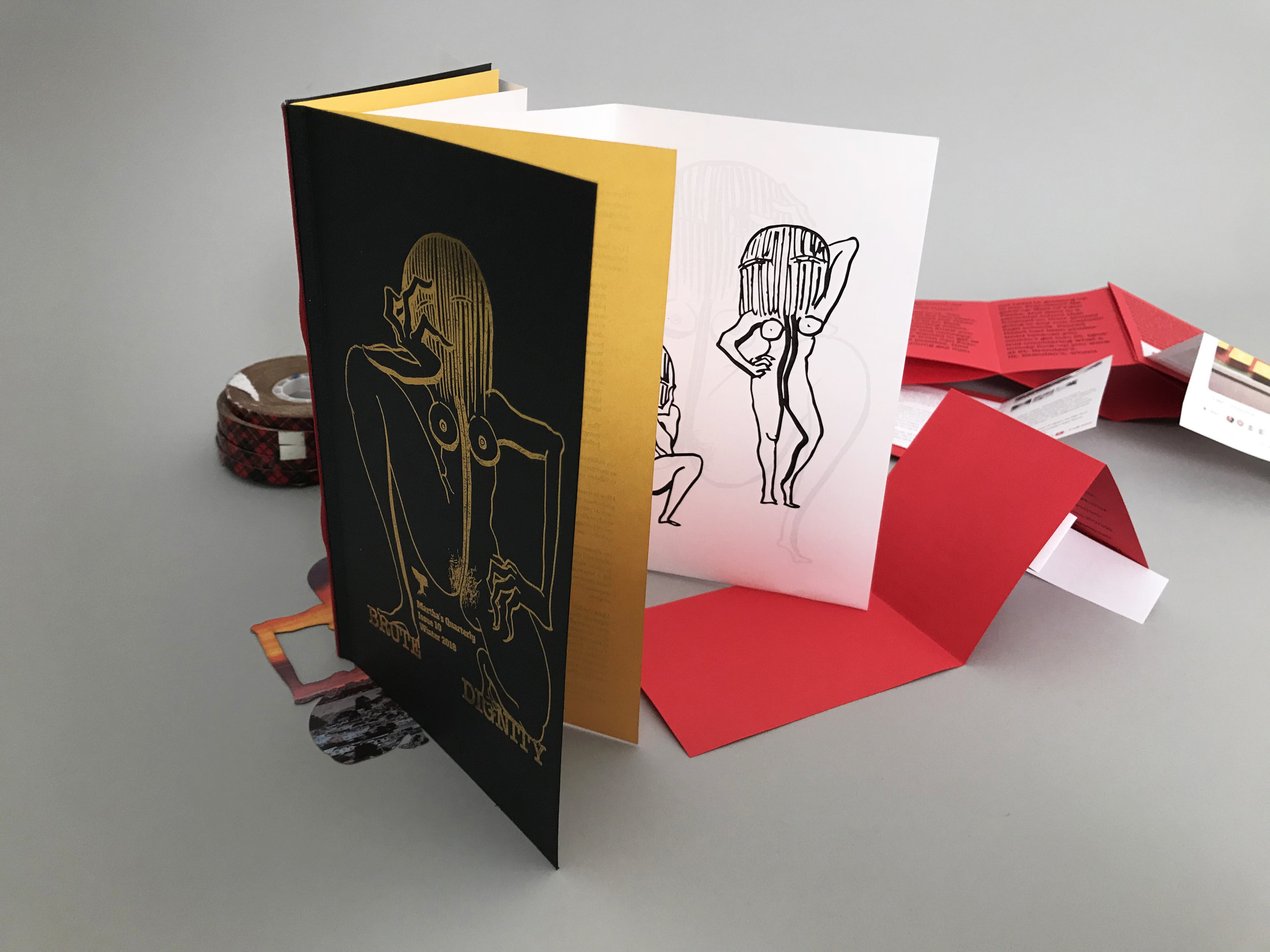
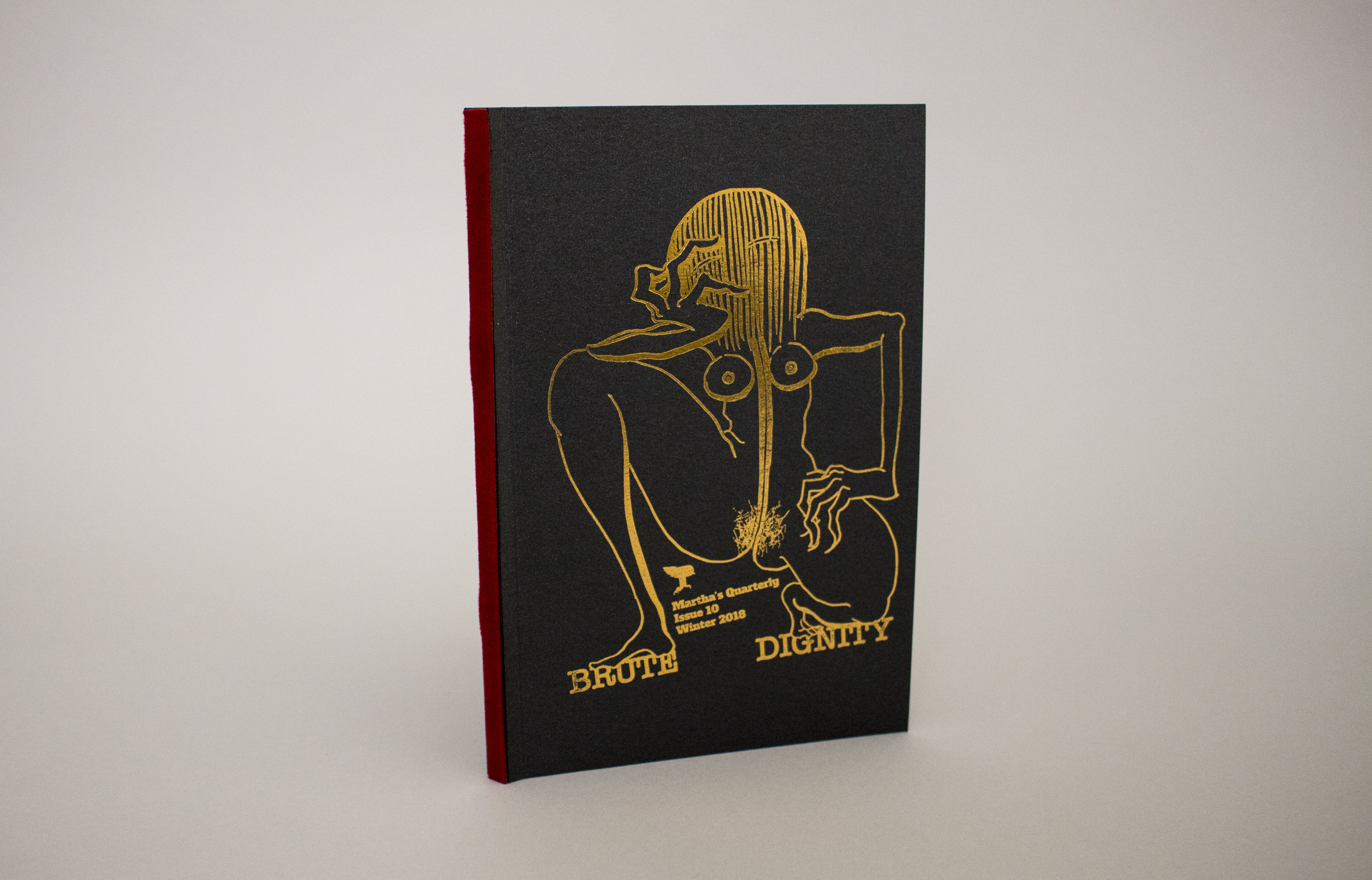
Martha's Quarterly
Issue 10
Winter 2018
BRUTE DIGNITY
7” x 5”
About the contributors:
Philip Anderson is an MFA candidate and creative writing teaching fellow at Columbia University. He lives in New Haven with his partner and their two cats, Sherwood and Blue Ivan.Téa Chai Beer is a visual artist living in New York City. She is the Project Manager at Passenger Pigeon Press. She also has a cat named Minnow.
Thumos is a part of the soul where the “spirited” lives. This is the part of your soul that motivates you to be brave, to fight for what is right. This is the part of your soul that, according to Plato in the Republic, leads to higher truth and virtue when it is used with reason.
I first heard of thumos at last September at the Carnegie Council in New York. Francis Fukuyama was giving a lecture based on his latest book Identity: The Demand for Dignity and the Politics of Resentment. He explained:
Identity I think begins with the psychological phenomenon that Plato labeled thumos. It's a Greek word that is usually translated as "spiritedness," but it's the part of the human psychology that the economists just don't get. They get acquisitiveness and they get rationality, but thumos is this desire for other people to recognize your internal worth or dignity, and I think it's a universal characteristic, particularly when you feel that you've got an inner self that is not being adequately recognized by the surrounding society. That's the part of it that in Western thought has developed over the last several hundred years into the way that we think about ourselves. We think that we have a deeply buried inner self that is authentic and is being suppressed by the society around us, and unlike wayward teenagers from time immemorial who are brought into compliance with the outward society, the modern idea is that actually that inner self is the true, legitimate one, and it's the outer society that's false, and it's the outer society that needs to change.
This becomes the basis for a lot of political movements because we want public recognition. We want other people to affirm our worth, and that has to be a political act. (1)
Mr. Fukuyama later cited the Arab Spring, the French Revolution, and Osama bin Laden as narratives where thumos resulted in acts and movements to affirm one’s identity and to validate one’s worth and dignity.
I first learned the word dignity when I was graduating from the fifth grade as part of a graduation song. I had no idea what it meant, but it was attached by notes to other words such as perseverance, integrity, and honor– and to be honest, I wasn’t sure what those words really meant either. What I did know, at age 11, was that singing this song was a rite of passage, and whatever happened after fifth grade, I would do so with this new melody--an anthem for a new me: a new leader in the world and a brave woman.
My elementary school was utopic: it was a top tier public school in San Francisco that celebrated the ethnic and religious backgrounds of all students through multiple lessons, projects, assemblies, and festivities year after year. But after the fifth grade, my parents felt it best that I continue my education in a Catholic school where the academics were more rigorous; it wasn’t as expensive as an independent secular school, and it was safe--meaning, the school’s population didn’t draw from the neighborhoods from another side of town.
Upon the first day of Catholic school--my uniform uncomfortably perfect– I saw dignity in the church. The pastor welcomed all into the sanctuary, and new beginnings were anointed with the assistance of the most perfect looking young men in robes; my new classmates and altar boys. Soon, when we returned to class, it was not uncommon to hear the words nigger or faggot used to tease or separate some people from others. Thumos’ flame burned bright when some students informed others that they were fat or ugly. These slurs, along with clear-cut social groupings, were normal and obviously painful the lower you were on the social food chain where thumos’ flame still flickered. But the young man who called the other man a nigger was a dignified man when he walked his sister home. This dignified young man is also a brute.
Somewhere between middle school and high school, I met Philip Anderson, a writer who now lives and works between New Haven and New York. Anderson veiled his homosexuality for most of our school days, and I didn’t know he was gay until we reconnected under more liberal and artistic circumstances during college in New York City. From time to time, Anderson and I would talk about the vast contradictions in the social constructs of our upbringing: the xenophobia, homophobia, and sexism sandwiched between extraordinary expectations of masculinity. In this Martha’s Quarterly, Issue 10, Winter 2018: BRUTE DIGNITY, Anderson writes a revealing work illustrating cyclical cycles of patriarchy that have kept our home cultures going. In difficult vignettes, Anderson traces contradictory accounts of a hate crime, an act of vengeance, and a man who shouldn’t be a cop, all embedded in an area of San Francisco where middle class families laud high virtue and moral courage.
The thing about contradictions is that there are always and constantly multiple truths. So when I say that I believed Brett Kavanaugh, I mean that I believe that he was speaking his truth, as was Dr. Christine Blasey Ford. The thumos of both people, both sides, and tribes, were fighting for their dignity, affirmation of their worth, and that their identities deserved justice. However, in an age where there is a simultaneous war on facts and a need for them, the pathway to justice is foggy. How can you strive for justice when there is no agreement on common facts? How can you strive for truth when it is clear that many things are true? Brett Kavanaugh is likely both the drunk fraternity brother who has assaulted women and the admirable coach and father of two daughters. He is both a brute and a dignified man, as is Clarence Thomas who also sits in the highest court on this American land.
And so the cycle continues: round and round it goes, the thumos of men fueling America’s manifest destiny. But let’s imagine that this cycle is a revolving bed spinning a woman. While the nuances and complexities of men should never be simplified, the constant forgiveness that boys will be boys continues to leave women behind, sometimes as bodies, naked and splayed behind on a strange bed. Women are brutes in a certain landscape of dignified men; and this is where Téa Chai Beer’s drawings of women become a crucial juxtaposition to Anderson’s writing in this quarterly.
As Anderson paints a patriarchal world, Chai Beer draws us into the uncomfortable embrace of her women, whose tits stare back as eyes, cervix severed to join and create a hollow rod with the spine. They are frightening women, seen trotting along or in sexual squats, with thick voluptuous thighs. But if anything bad happened to these banshee women, they could never seek refuge, because their nub-like useless feet make them incapable of running. Instead, they hold Anderson’s prose in their womb. As Anderson tells stories of his sister, other brothers, of families with mothers, each person with thumos burning in their soul, the red paper is kept inside of a helpless woman’s belly.
When I asked Chai Beer what these drawings were about, she said many things, but I’ll share one: the spittling of the woman is how Chai Beer navigates the boundary between orgasm and fear. What orgasm is to fear is what dignity is to brute and what thumos is to plain animal.

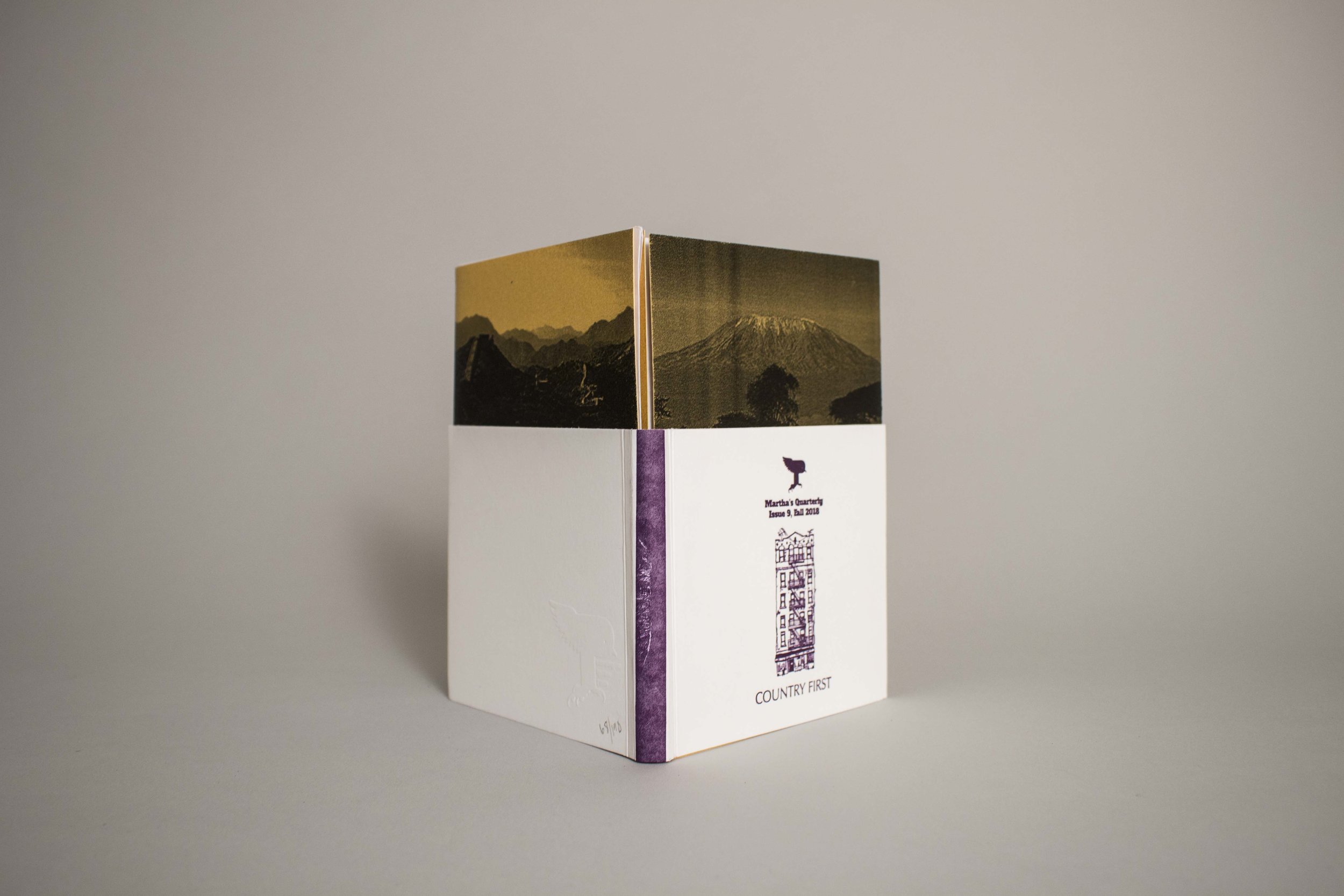
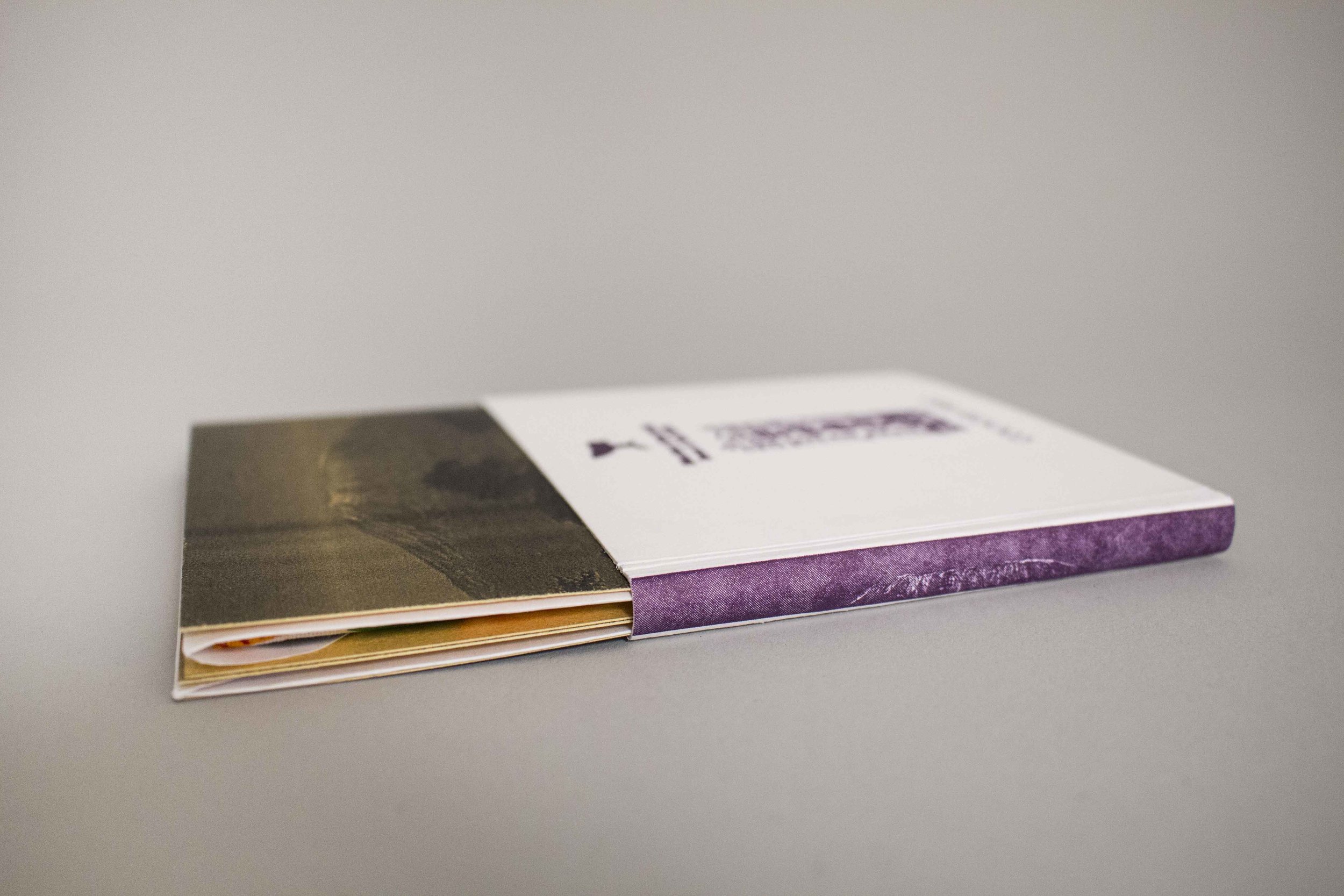

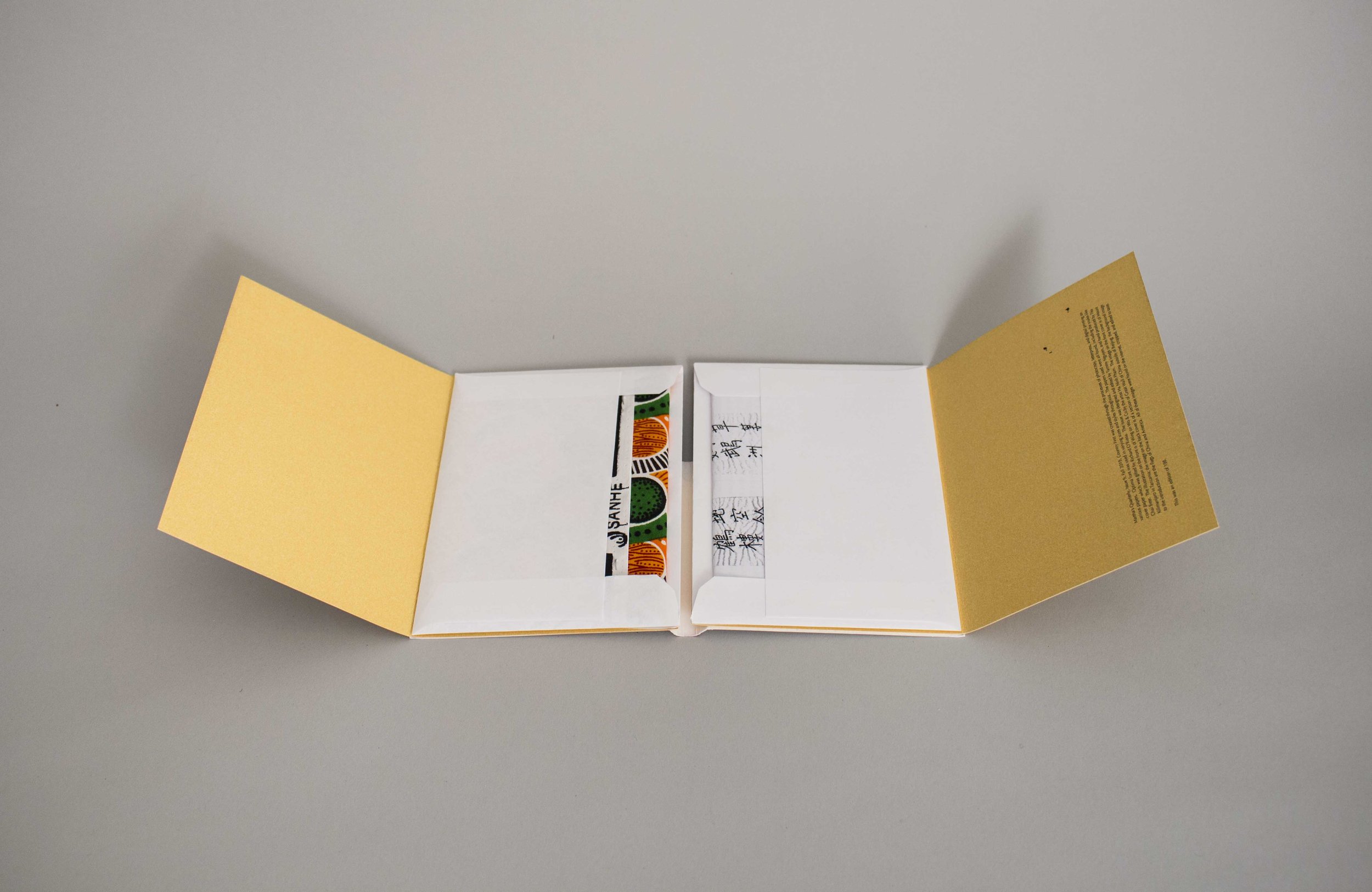
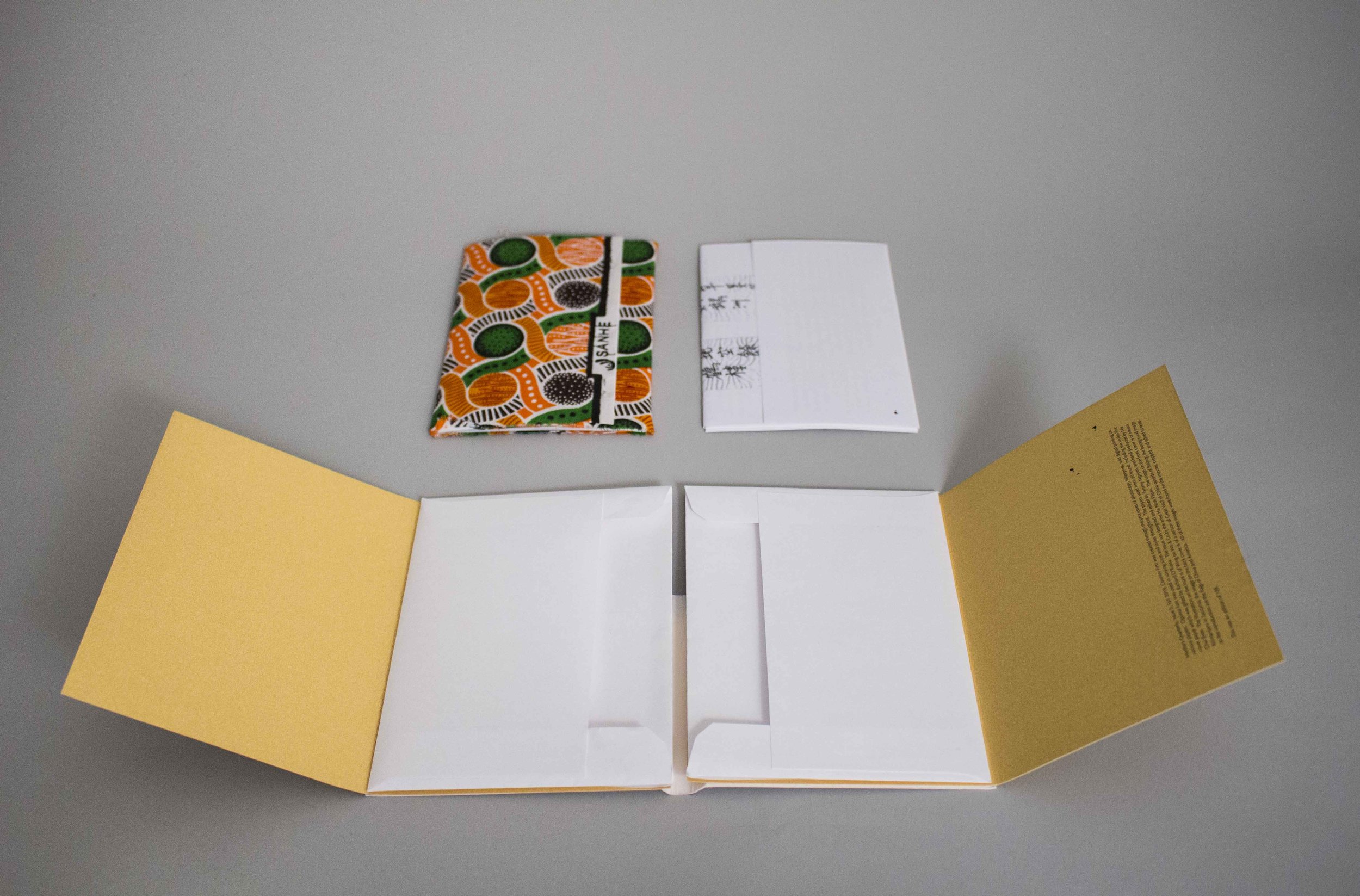

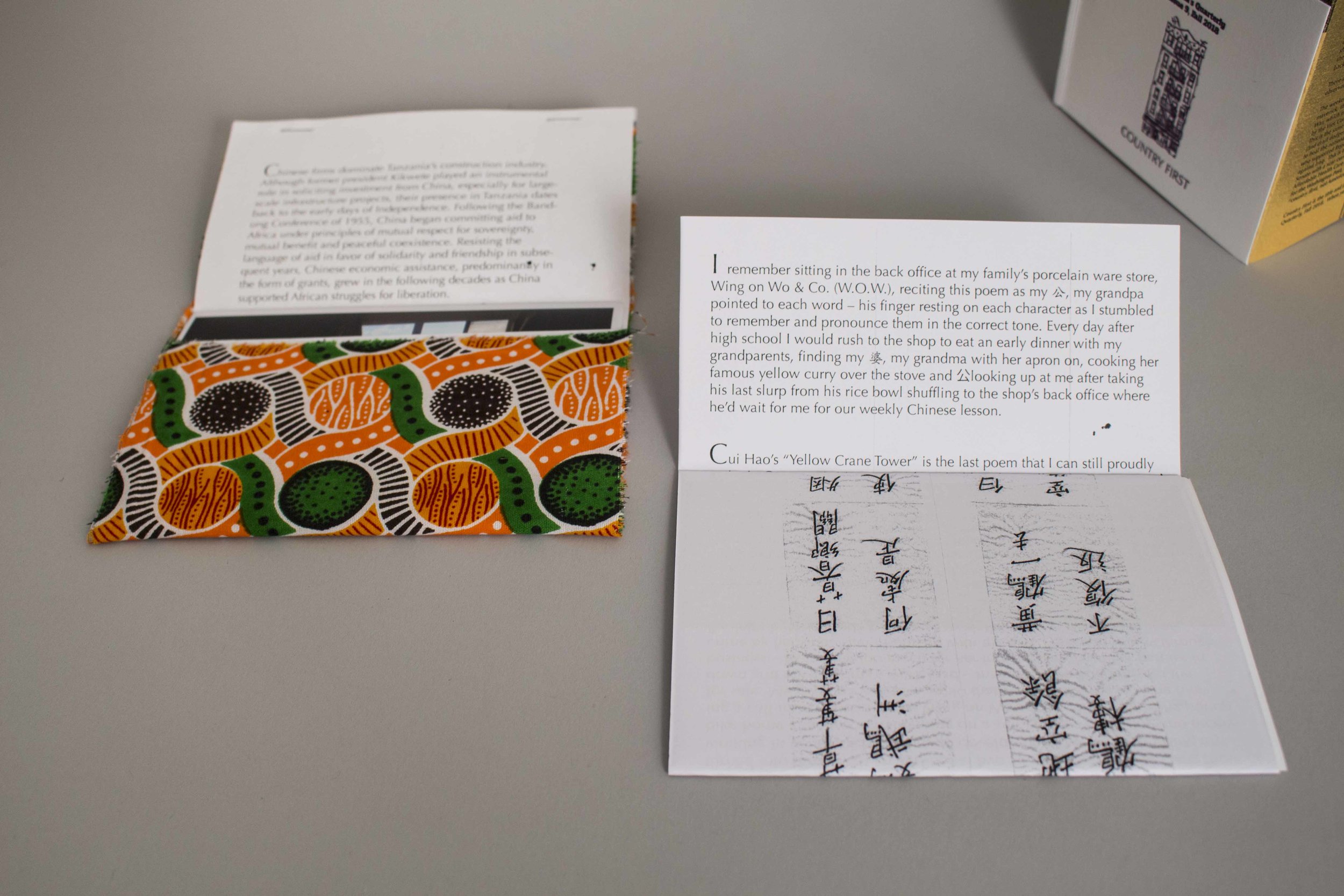
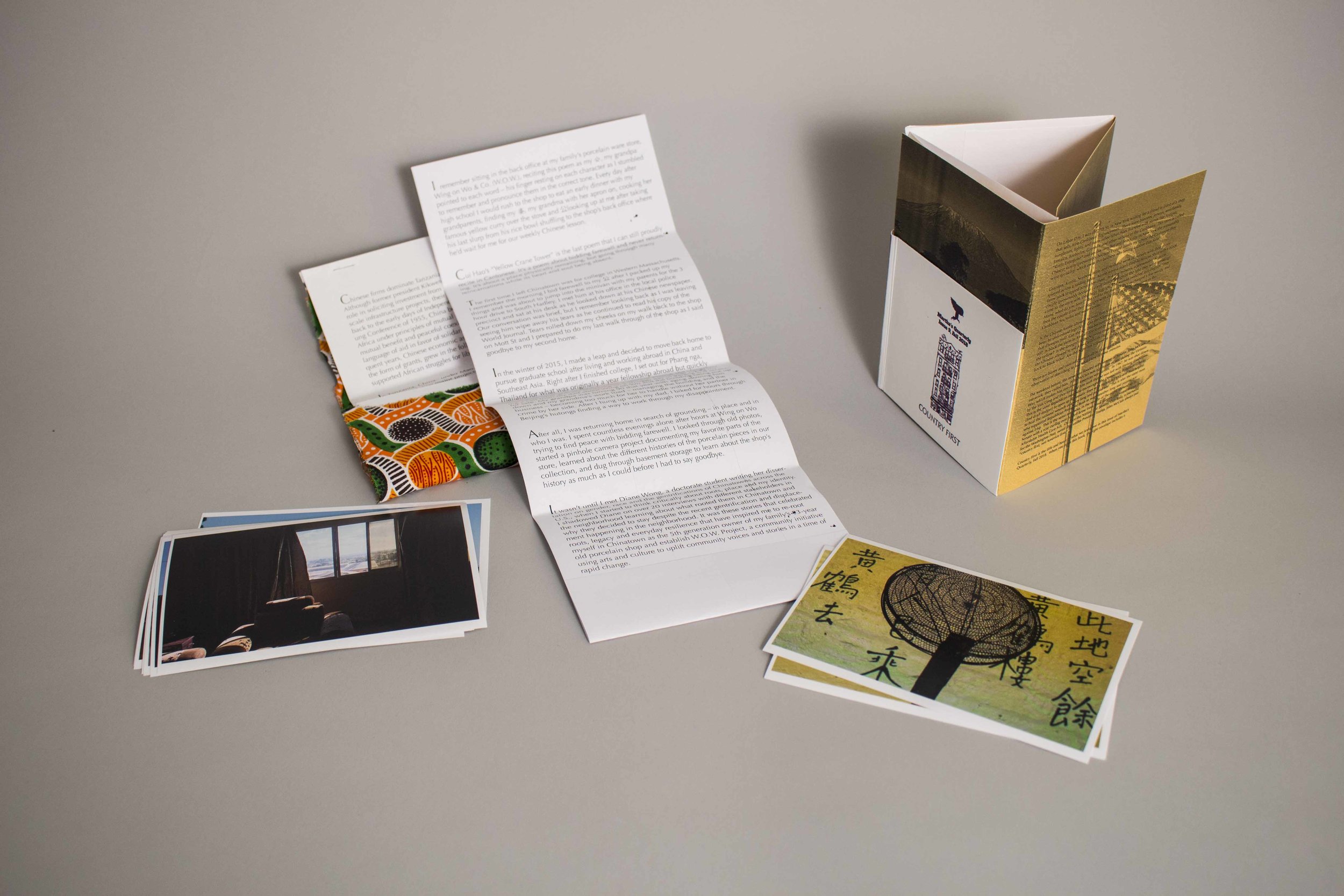
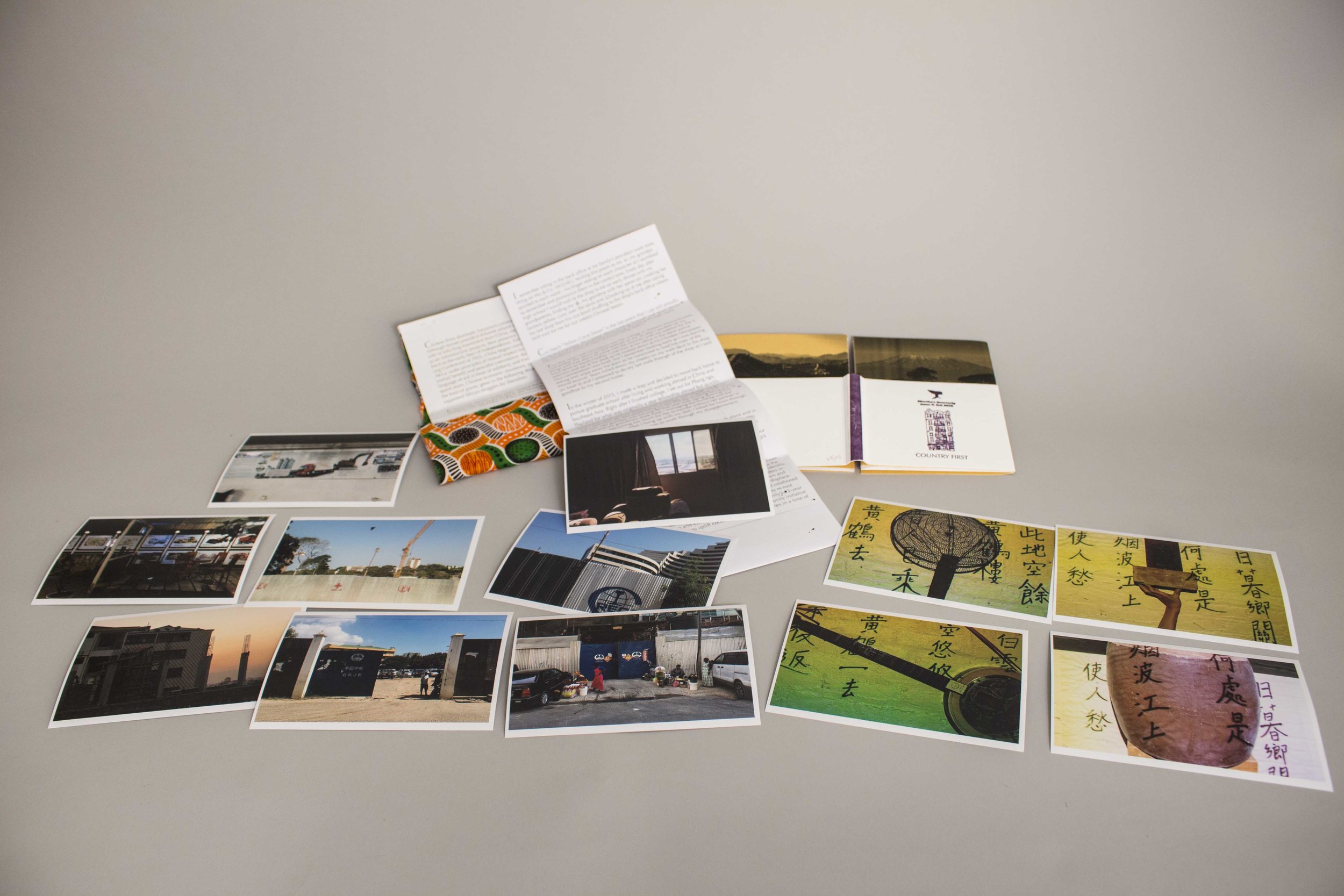
Martha's Quarterly
Issue 9
Fall 2018
Country First
6.25” x 4.75”
About the contributors:
Mei Lum is the 5th generation owner of her family’s 93-year-old porcelain ware business and the oldest operating store in NYC's Chinatown, Wing on Wo & Co. (W.O.W.). In light of Chinatown's rapid cultural displacement, Mei established a community initiative, the W.O.W. Project, out of a desire to amplify community voices and stories through art, culture and activism.
Rakhee Kewada is a Zimbabwean geographer currently studying the political economy of Tanzania's cotton textile industry. She is a PhD Candidate in Geography at the Graduate Center, City University of New York (CUNY) and teaches Urban Studies at Hunter College. Her art practice is research-based and collaborative. Committed to engaging the politics of knowledge production and dissemination, she has developed a series of participatory public art projects. She is currently exploring film and photography as a means of presenting her research on trade and commodity flows between China and Africa.
On Labor Day, I was on 27th St. in New York waiting for a friend in front of a shop that sells Afro-Caribbean flag souvenirs. There were banners, jerseys, wristbands, sunglasses, lights, and many other tchotchkes branded with names like Antigua, Jamaica, Barbados, Grenada, and other nations of the Caribbean. This store is called “Rasta Enterprise” and on this very hot and heavy day in New York the presumably Chinese family (presumably because I could faintly recognize the Cantonese they were speaking) which owns this business was having a Labor Day Sale.
Grandpa, Auntie, Nephew, Wife, and Husband were all outside with their goods splayed across a folding table. Auntie wore a man’s Dashiki African Shirt with a black fanny pack strapped across her chest. In a few minutes, a presumably Nigerian couple (presumably because I could faintly recognize the Igbo they were speaking) came to the store with their huge luggage. The woman switched into English: “Hey Mami, what do you have?” she said to the Auntie. They exchanged a few words, and then the couple filled their luggages with the flags of all these nations in the Caribbean Sea miles and waters away.
Is the Chinese Auntie allowed to wear that African shirt? Can African and Afro-Caribbean be understood together? Can the Nigerian woman call the Auntie “Mami”? Is that disrespectful? Can she say that because she’s black? Is anyone getting ripped off? Is black the same as Africa? The same as the Caribbean? Is the Auntie black? Is she yellow? Is she foreign? Is the Nigerian couple foreign? Are they Americans? Are the Chinese allowed to sell Afro-Caribbean flags? Are they allowed to sell “black” back to black folks? Are the Nigerians allowed to sell the Caribbeans?
There are biases and contradictions in all of these questions, which take root in my observation of describing to you what I saw in these minutes.
The weekend before, the news was flooded with the passing of Senator John McCain. A maverick, they called him. John McCain was a prisoner of war during the Vietnam War, which makes him one of our American war heroes. In 1967, he was shot down by the Viet Cong and they tortured him such that he was left with lifelong disabilities. This is the same Republican man who encouraged the Democratic President Clinton (and draft dodger) to open up diplomatic lines with Hanoi in 1993, and thus helped to heal the national wounds of a very long and painful war. This is also the same man who supported Republican President Bush to wage another long and painful war against Iraq. This is the same man who, in the middle of the night, showed up to Senate with a scar curling over his left brow from brain surgery and voted to save the Affordable Health Care Act. On Face the Nation that Sunday, Dan Balz, a journalist for the Washington Post, noted that unlike President Trump, John McCain always put “country first, not America first.”
Country First is the title and heart of what we juxtapose in this issue of Martha’s Quarterly, Fall 2018. When you open this book, the right envelope includes a portfolio of photographs with writing by Mei Lum, the fifth generation owner of her family’s 93-year-old porcelain shop in New York’s Chinatown called Wing on Wo & Co. The photographs are wrapped with her grandfather’s calligraphy of the only poem she can still recite in Cantonese. On the other side of the paper, Lum recounts the the time she received the dizzying news from her father that the family planned to close Wing on Wo & Co. She was living in Beijing at the time, and as she cycled around this instrumental city in China, she thought of another China. Very soon thereafter she returned to her Chinatown in New York to regenerate the family business, to defend her “country” in the midst of an economic war against those outside of Lum’s Chinatown.
Far away from New York City, another kind of China has dominated Tanzania’s construction industry as illustrated by the writing and portfolio of photography by the Zimbabwean geographer Rakhee Kewada in the left envelope. As Kewada reports, China increased its support of Africa and demonstrated its support of sovereignty after the Bandung Conference of 1955. Over the years, this “support” which began as aid transformed into grants of significant projects, including the Tanzania-China Textile Mills. This drew many Chinese construction workers to Tanzania, and also birthed a booming real estate industry with which Tanzanians cannot compete. Whose country is first here?
Country First was John McCain’s campaign slogan in 2008 when he ran against soon-to-be America’s first black president Barack Obama. The slogan resonated with many: it encouraged people to be patriots, to work with the other side of the aisle, to see those different from you as your countrymen. Many of us know this to be easier in theory than in practice. Could you really call the man who calls you a slur because you are darker than he or because you are a woman your countryman? And if you can, will you also welcome him?
Whether you see yourself in your neighbor, the appetite of every nation seems to be to spread its own idea of country as in the case with America First. They might have called Mr. McCain a maverick, but if Culture was a person, then it would be the ultimate maverick. Culture is country, nation, and man— and conveniently can be certain or none of these things for people with intersectional identities. Culture sells itself at “Rasta Enterprise”, but it is not Jamaica, or Grenada, or Barbados. “Rasta Enterprise” is an American company. The Chinese woman selling the Afro-Caribbean flag is not an American. Ms. Lum is American in China, but Chinese in America. John McCain’s country is not the same as the Nigerian couple’s, but they both use the dollar. The Chinese in Tanzania are not African, but they do not belong with the Chinatown New Yorkers. Where can Tanzanians invest in real estate? In Tanzania? In Africa? In China? And would Chinatown, New York continue to fight if she truly knew the face of her gentrifier?
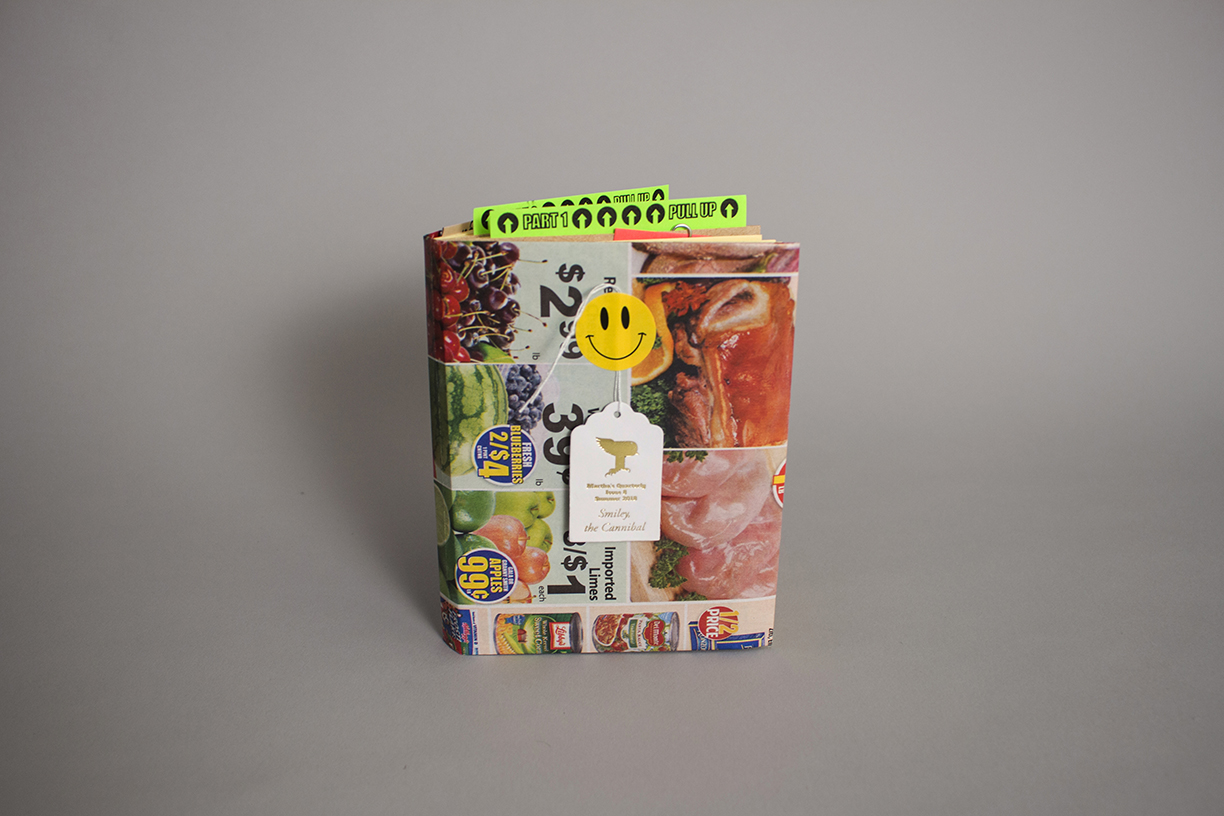
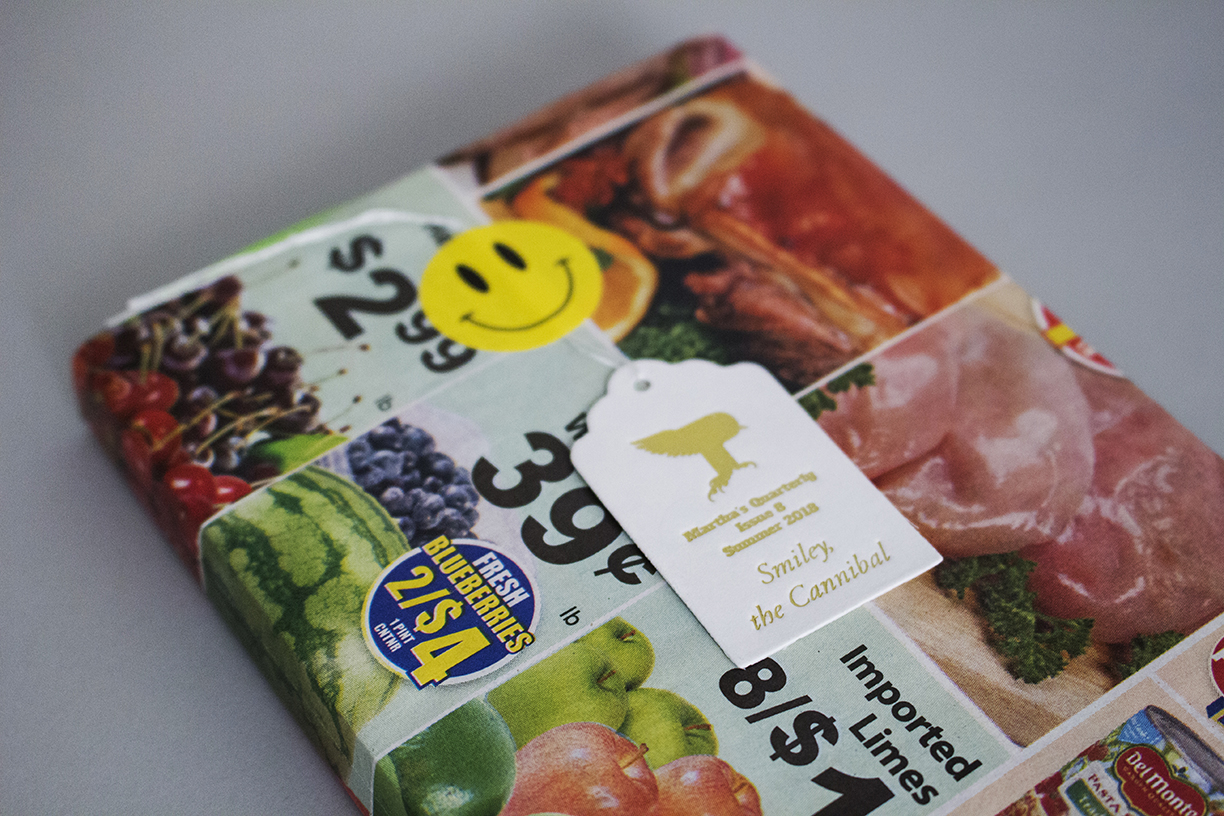
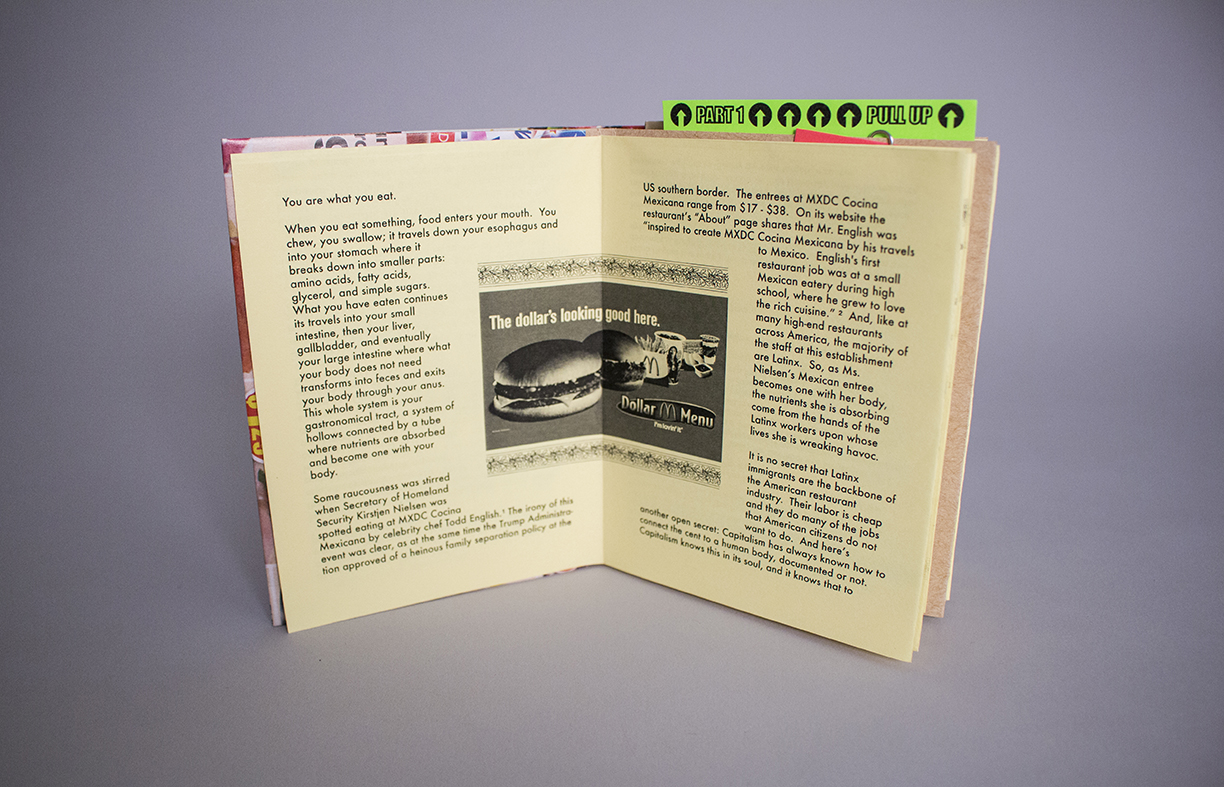
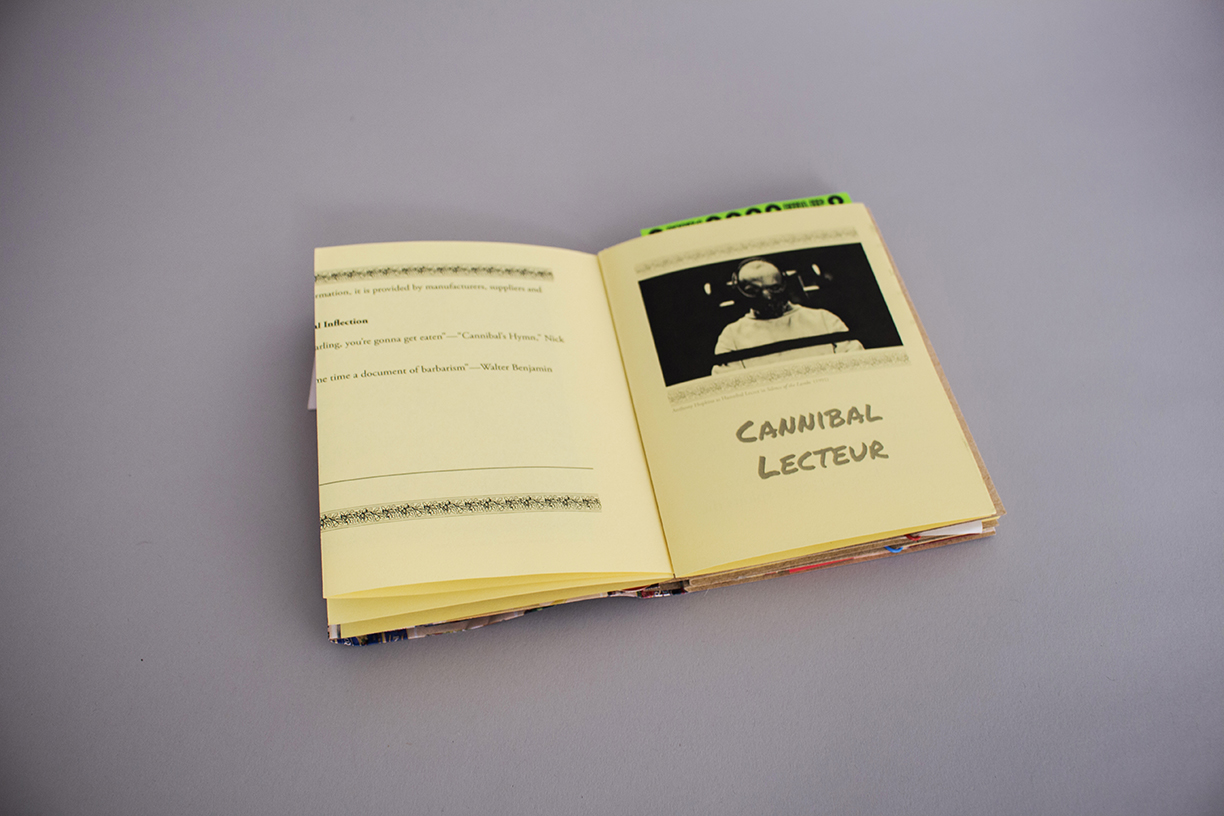
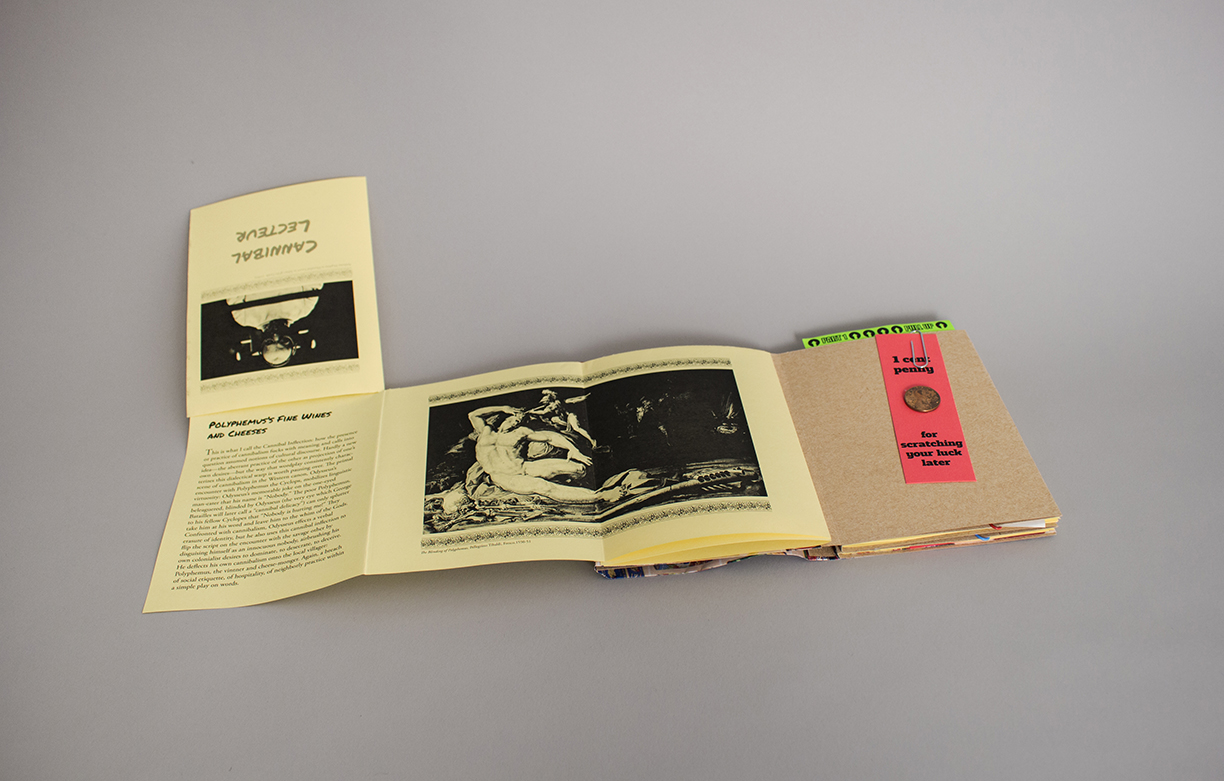
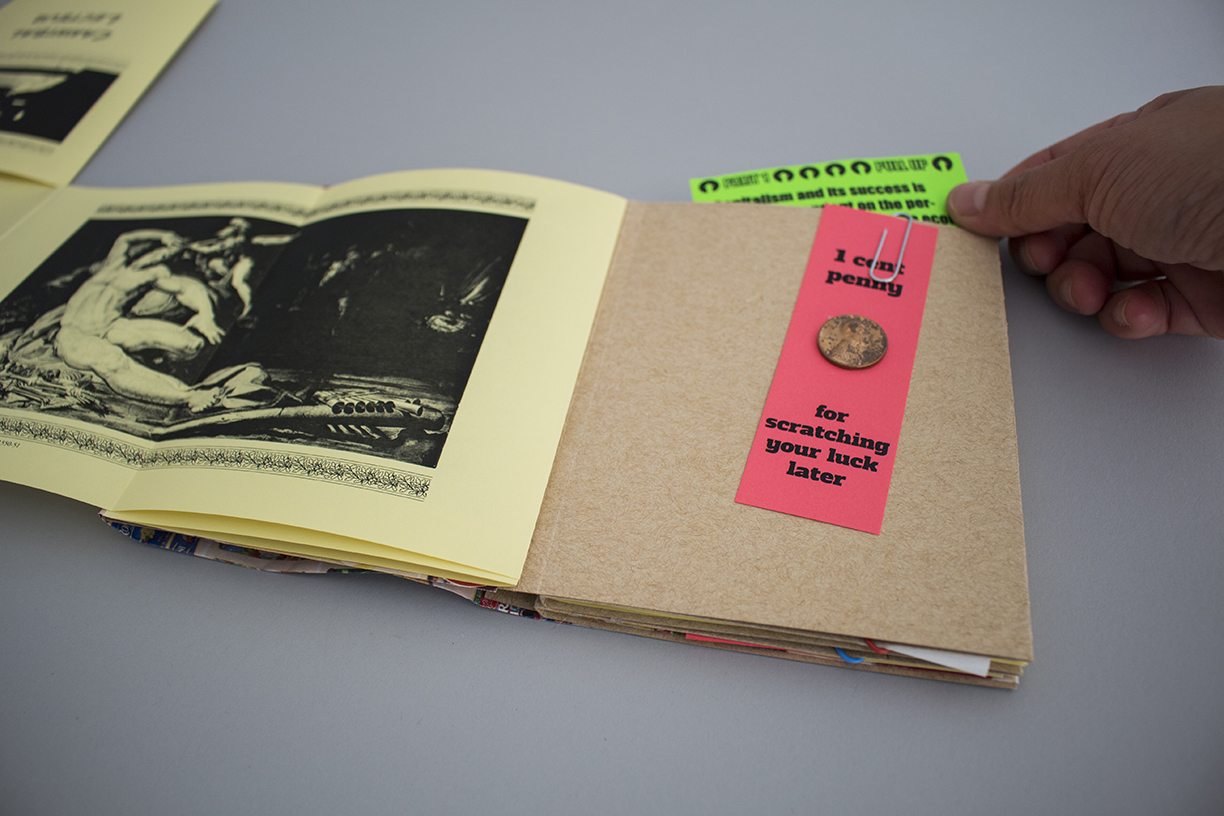

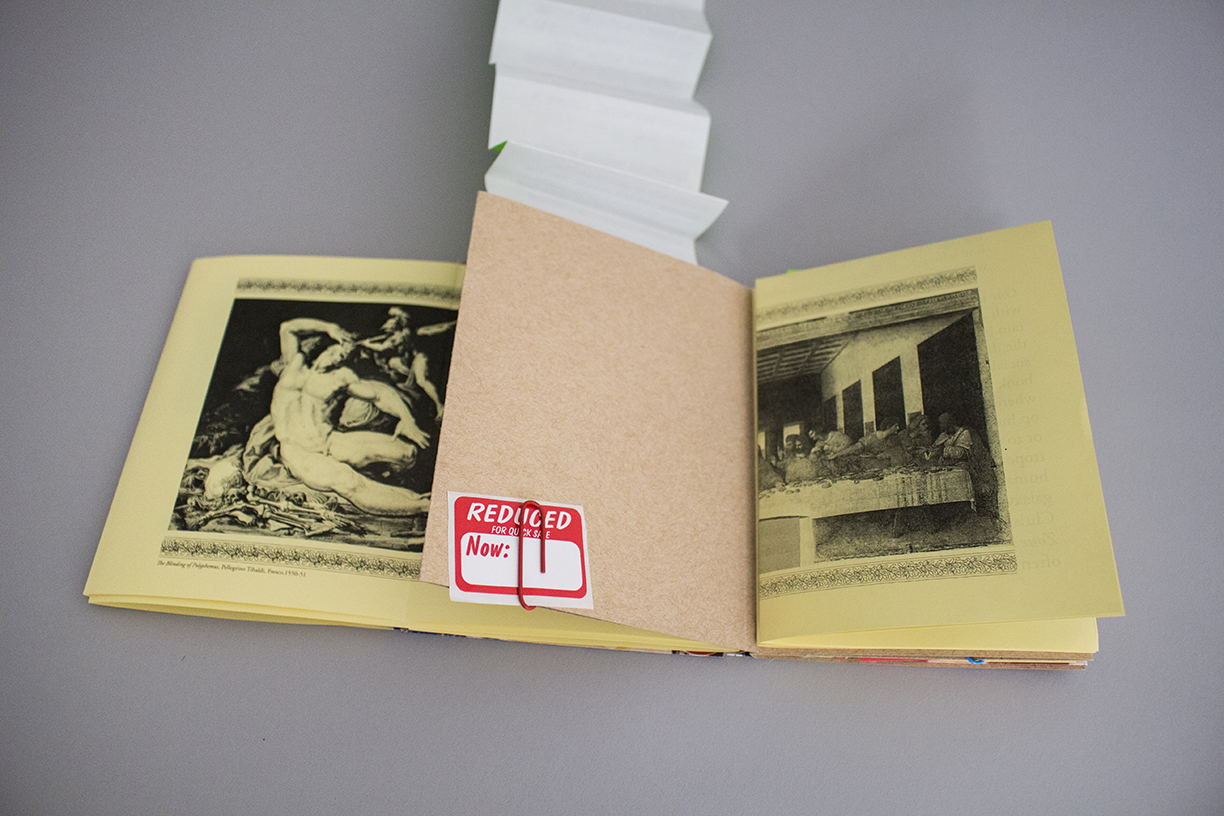
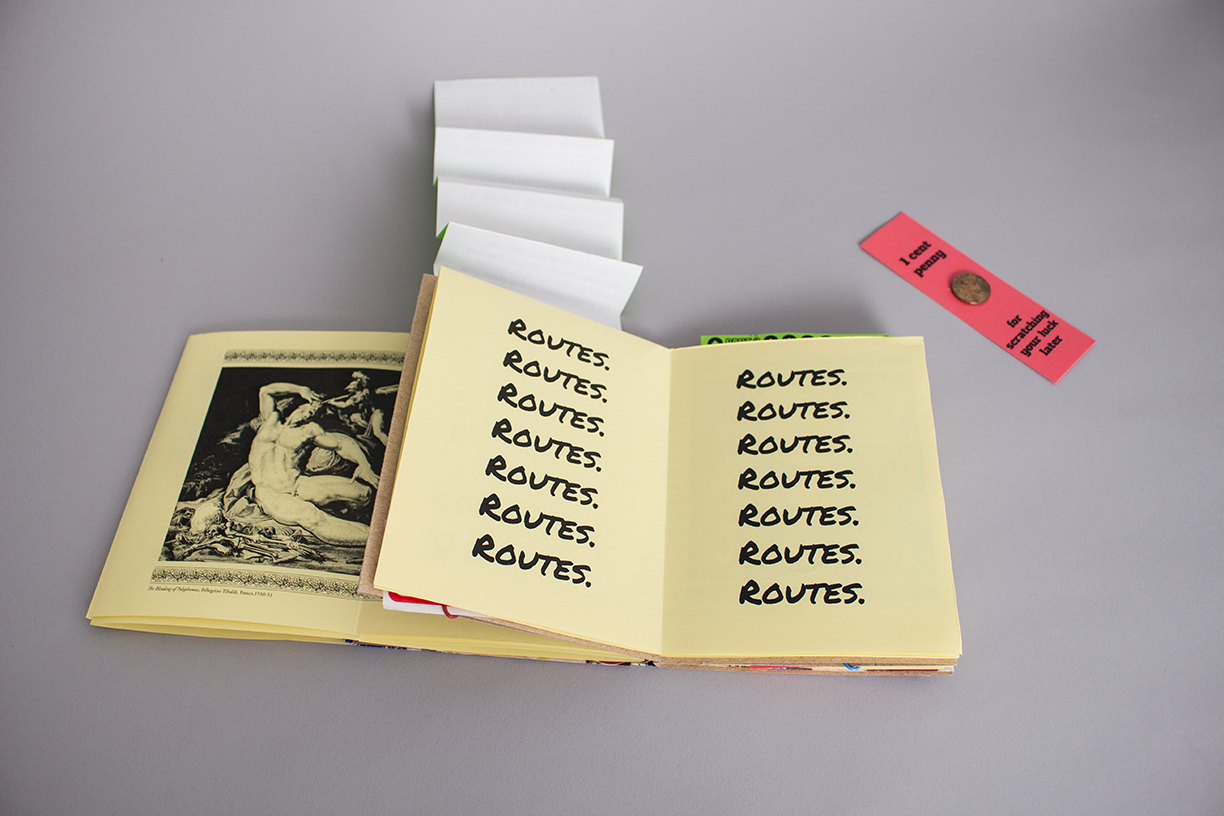
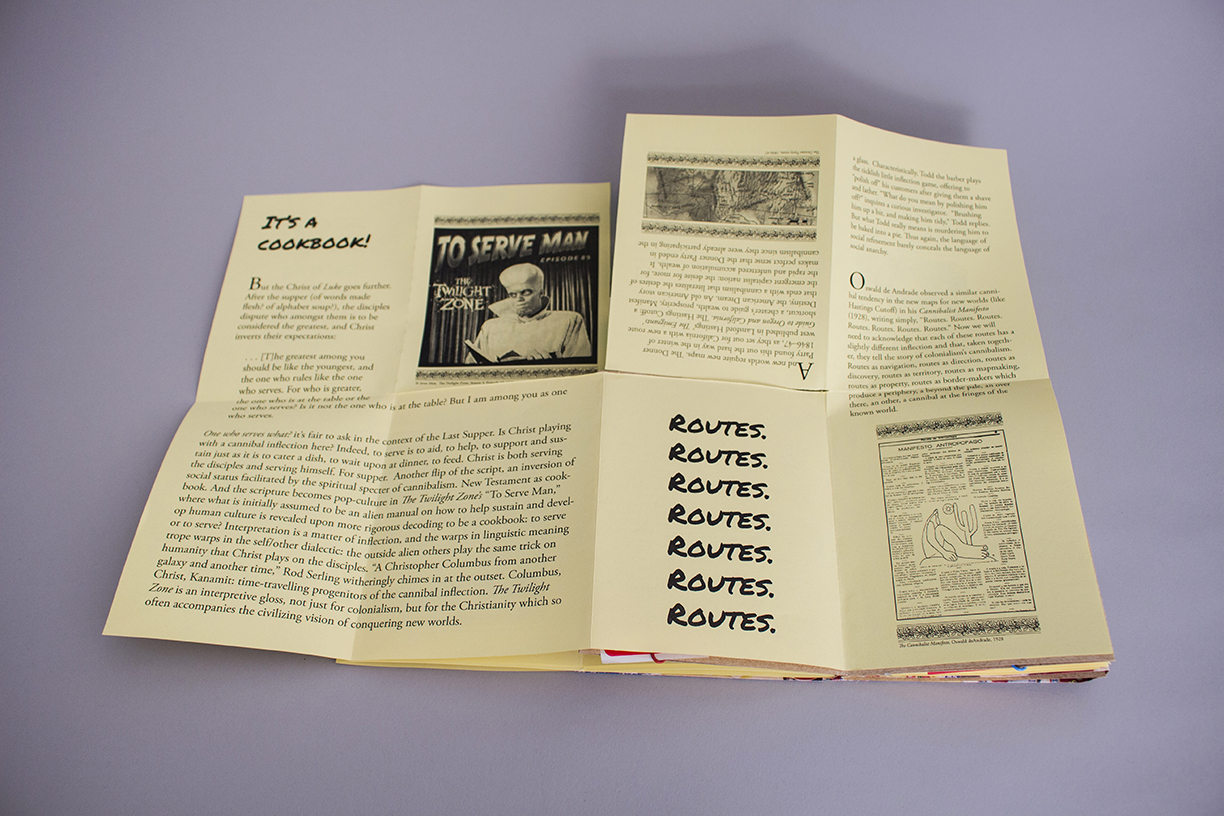



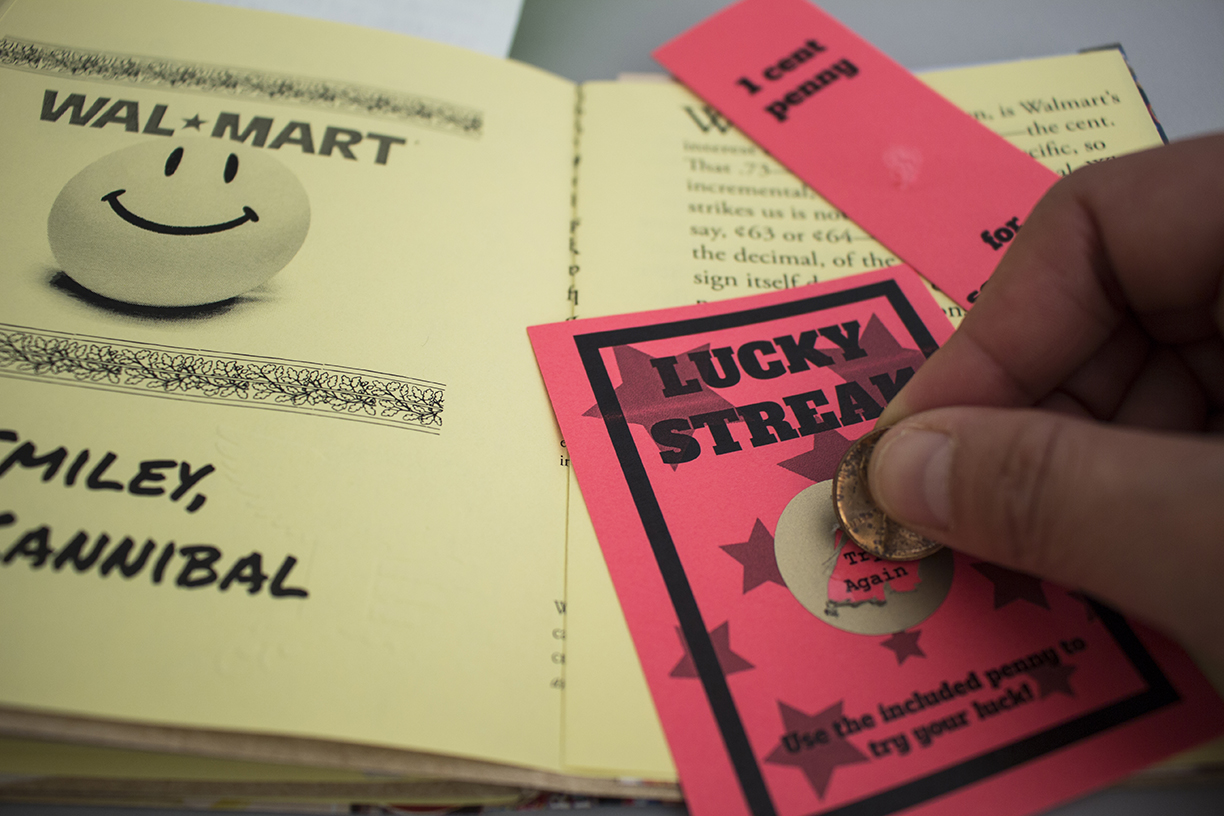
Martha's Quarterly
Issue 8
Summer 2018
Smiley, the Cannibal
5.75” x 4.5”
About the contributors:
Jacob Hughes is a court jester at the Berkeley Carroll School with a doctorate in British Romanticism. His interests include literary form and style, hermeneutics, Joe Strummer, and intestinal aesthetics.
Taiwo Togun is the founder of SeqHub Analytics, a data science consulting company that provide predictive analytics and data science solutions and strategies to businesses. He earned his Ph.D in Computational Biology & Bioinformatics from Yale University, where his research focused on methods to identify genomic targets in cancer.
You are what you eat.
When you eat something, food enters your mouth. You chew, you swallow; it travels down your esophagus and into your stomach where it breaks down into smaller parts: amino acids, fatty acids, glycerol, and simple sugars. What you have eaten continues its travels into your small intestine, then your liver, gallbladder, and eventually your large intestine where what your body does not need transforms into feces and exits your body through your anus. This whole system is your gastronomical tract, a system of hollows connected by a tube where nutrients are absorbed and become one with your body.
Some raucousness was stirred when Secretary of Homeland Security Kirsten Nielsen was spotted eating at MXDC Cocina Mexicana by celebrity chef Todd English. (1) The irony of this event was clear, as at the same time the Trump Administration approved of a heinous family separation policy at the US southern border. The entrees at MXDC Cocina Mexicana range from $17 - $38. On its website the restaurant’s “About” page shares that Mr. English was “inspired to create MXDC Cocina Mexicana by his travels to Mexico. English's first restaurant job was at a small Mexican eatery during high school, where he grew to love the rich cuisine.” (2) And, like at many high-end restaurants across America, the majority of the staff at this establishment are Latinx. So, as Ms. Nielsen’s Mexican entree becomes one with her body, the nutrients she is absorbing come from the hands of the Latinx workers upon whose lives she is wreaking havoc.
It is no secret that Latinx immigrants are the backbone of the American restaurant industry. Their labor is cheap and they do many of the jobs that American citizens do not want to do. And here’s another open secret: Capitalism has always known how to connect the cent to a human body, documented or not. Capitalism knows this in its soul, and it knows that to become stronger, bigger, and great again, it is best to continually apply the lowest amount of cents to the largest amount of human effort. In this way, it can eat the cents produced by that human effort.
In Christianity, Capitalism’s brother from another mother, the Eucharist is perhaps the most sacred of sacraments: one’s body can be one with that of Christ by eating a wafer and drinking wine that represent Christ’s flesh and blood. In some ways, this sacrament is what Capitalism performs countless times each and everyday: consuming the flesh and blood of its own producers through the products created by those same humans. This is the crux of our exploration in this issue of Martha’s Quarterly, Issue 8, Smiley, the Cannibal, which features contributions by Dr. Jacob Hughes, an English Literature Scholar, and Dr. Taiwo Togun, a data scientist.
Dr. Hughes takes us down a kind of digestive tract of his own, where he illustrates the many ways in which cannibalism is manifested throughout our culture, from the Eucharist to the Twilight Zone, to the savings we enjoy at Walmart, its Smiley face mascot knocking all the prices down by the cent. One point he makes is that capitalism relies on this cent-to-object/human relationship, and that that relationship is a cycle of consumption and releasing, of eating and excreting.
On July 11th, 2018, just five days before I write this, President Trump intensified his trade war with China by announcing 200 billion dollars worth of tariffs on Chinese goods to be imposed in September. A list of more than 6,000 products was released, including a tariff on all Chinese canned tuna and cotton thread. (3) As this trade war becomes more palpable to us-- maybe by a sudden craving for rare canned tuna, or a more urgent worry when our clothes become tattered-- the relationship between the cent and human products will become more physically and viscerally tangible. New people, many people, will resent China, the United States, and whatever nation is making their cent to human product relationship more fragile.
But we are at the advent of a new force: cryptocurrency and the blockchain, where what something is worth does not necessarily direct back to one nation’s economy, and therefore the cent no longer attaches itself to the human product and the human as decisively. I asked Dr. Togun to explain how cryptocurrency changes the relationship between money and the object. How does Capitalism change when the economy is no longer tied to a concrete object? In an almost propagandist three concise paragraphs, Dr. Togun explains the profound concept of “secure transfer of value via networks without a central oversight.” There’s no more cannibalism here-- it was our singular gastronomical tract which allowed for the capital consumption of our bodies through our own goods.
A year ago from this writing, China became the first country to test a national cryptocurrency. (4) Today, more than 70% of the world’s crypto-mining occurs in China for two big reasons: cheap electricity and an excess of coal. (5) Despite its efforts to release itself from a self-consuming structure, cryptocurrency can still only be birthed from cannibalism. Or maybe there is metamorphosis occurring, that the Cannibal has transformed into another beast we just cannot understand quite yet.
— Tammy Nguyen, Editor-in-Chief
(1)The Absurdity of Trump Officials Eating at Mexican Restaurants During an Immigration Crisis, Helen Rosner, The New Yorker, June 22, 2018
(2) https://www.mxdcrestaurant.com/our-team/
(3) US fires next shot in China trade war, BBC News, July 11, 2018
(4) China Becomes First Country in the World to Test a National Cryptocurrency, by Tom Ward and Abby Norman , Futurism, June 23, 2017
(5) Bitcoin Mining in China, Jordan Tuwiner, June 30, 2018
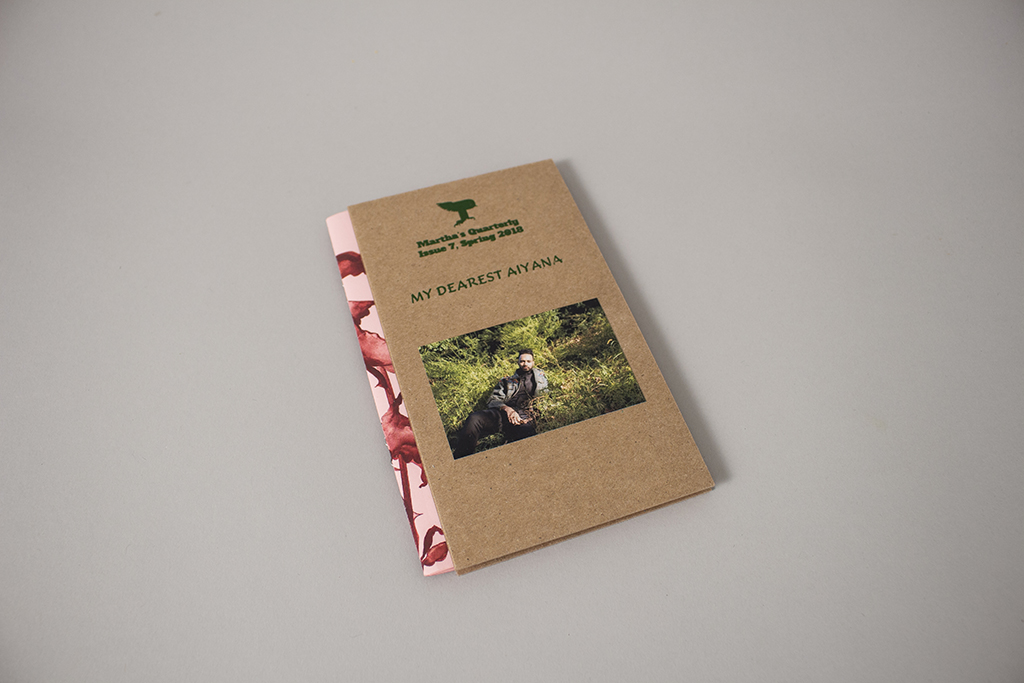
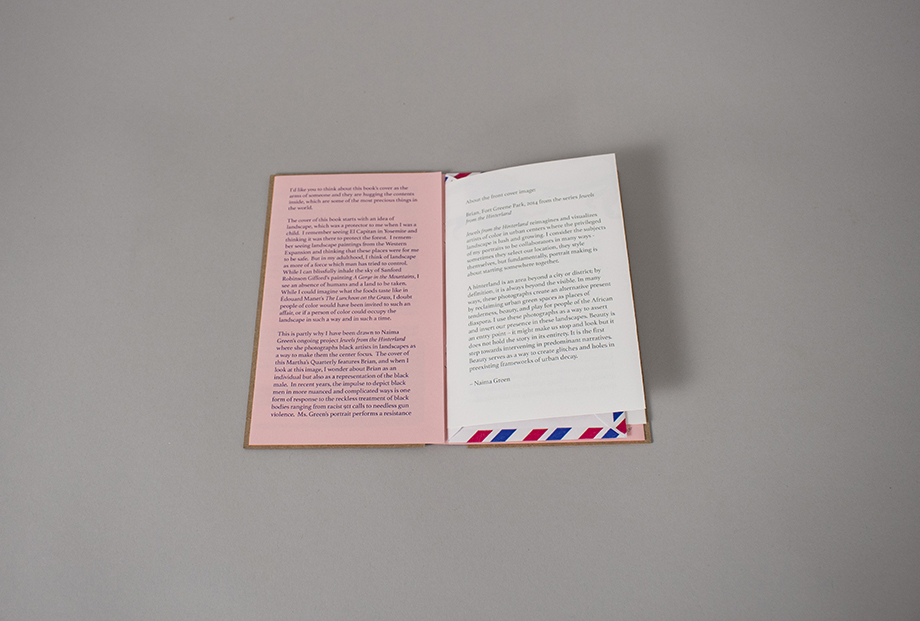
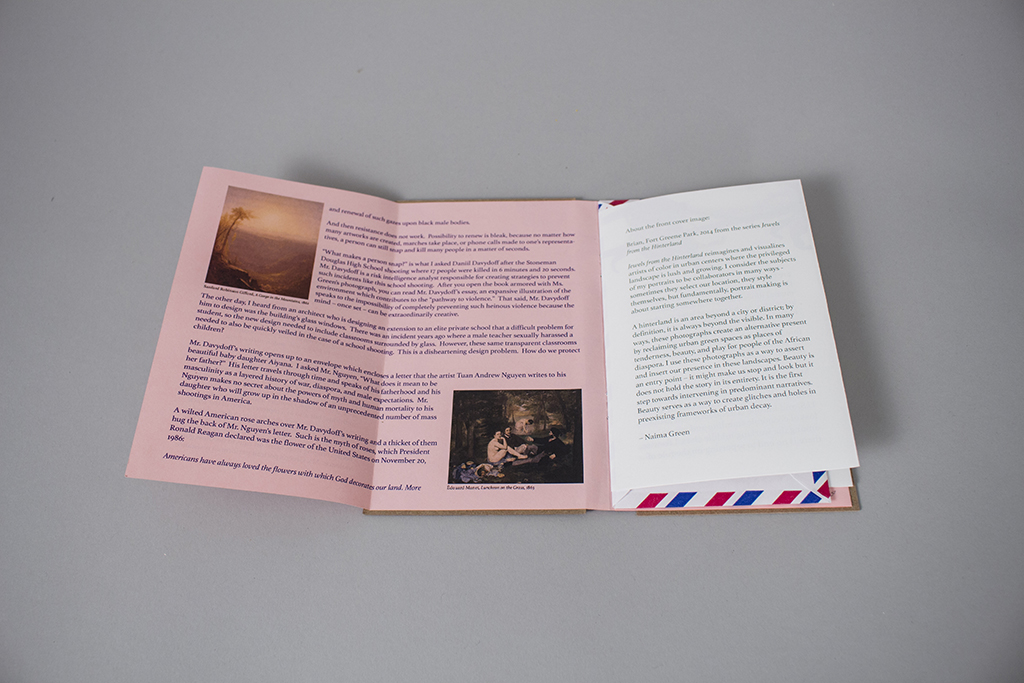
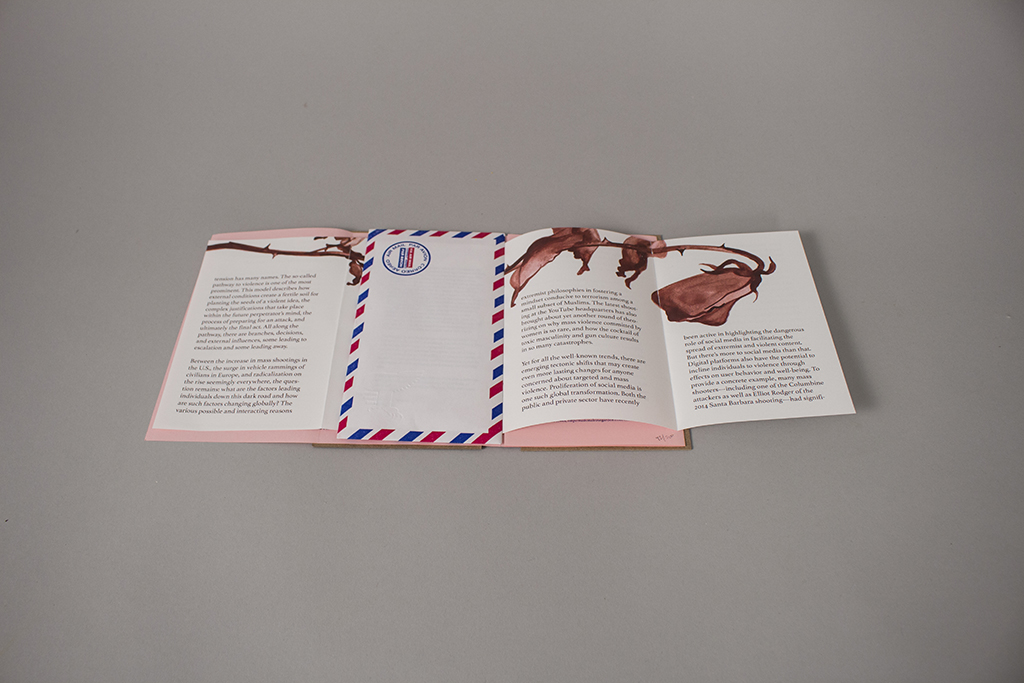
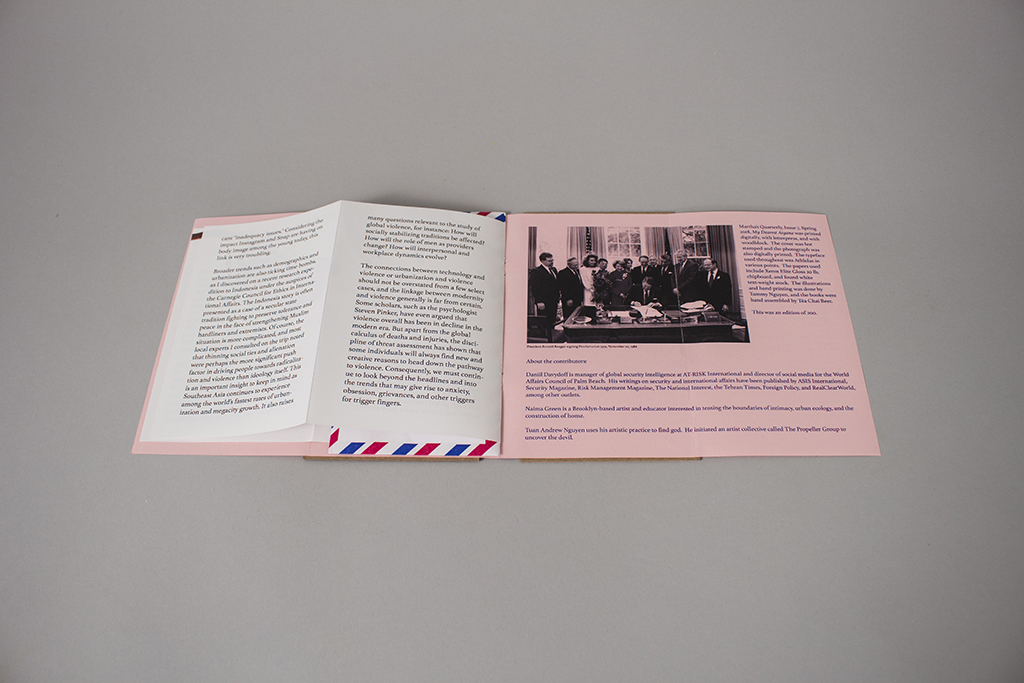
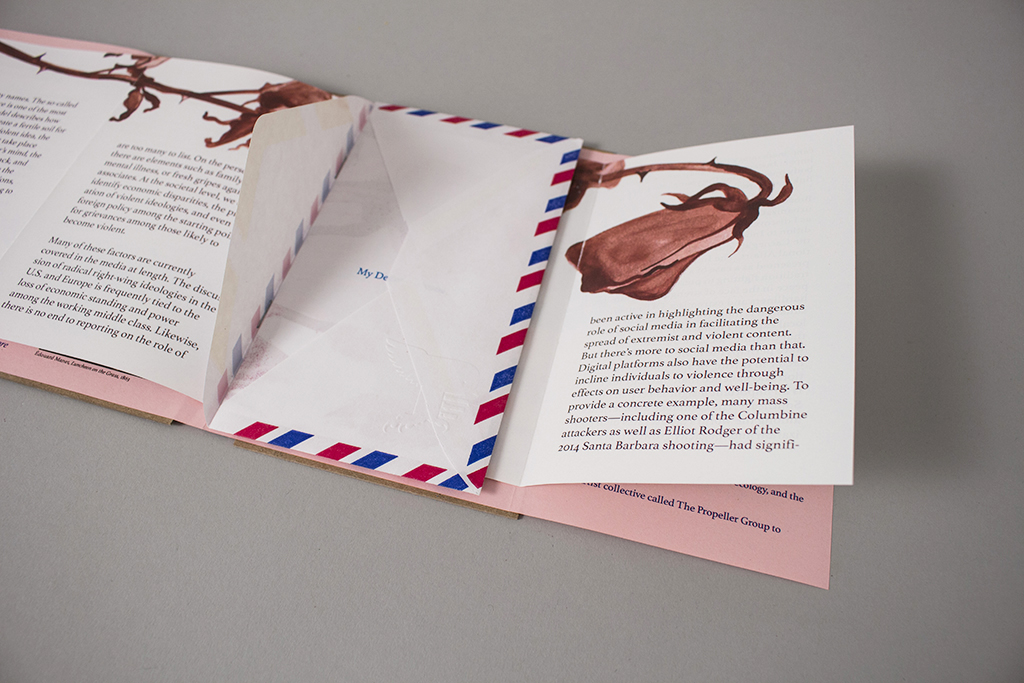
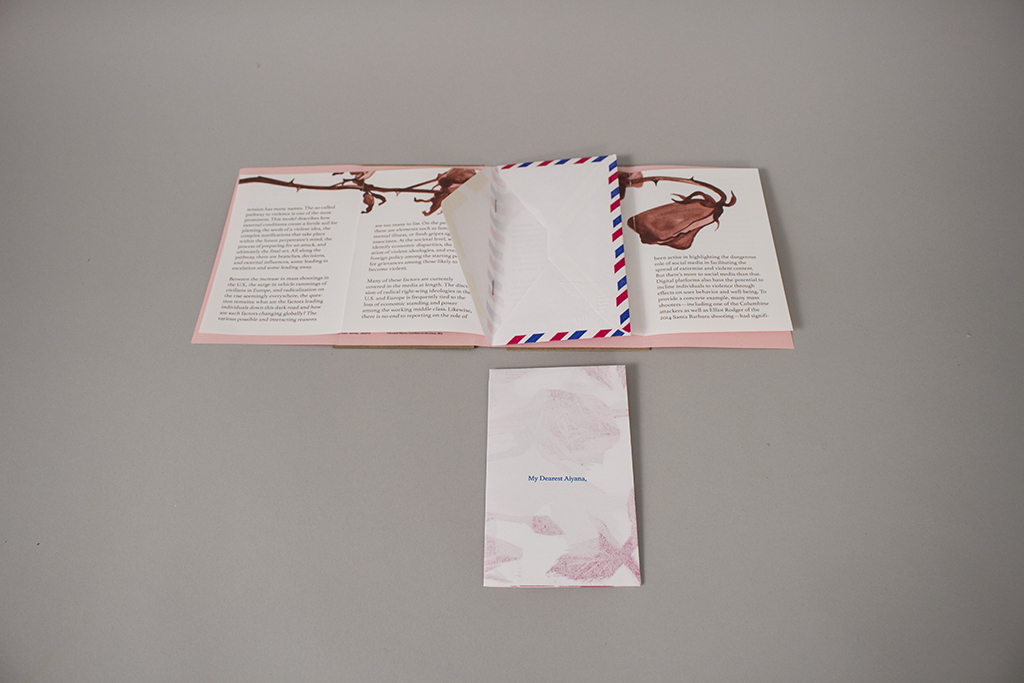
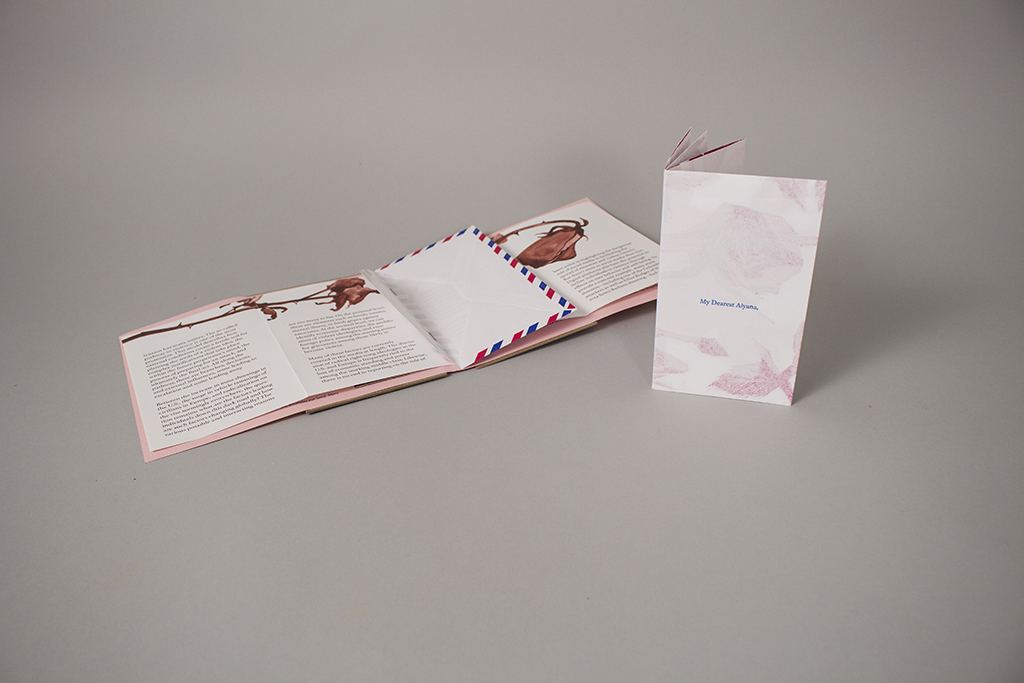
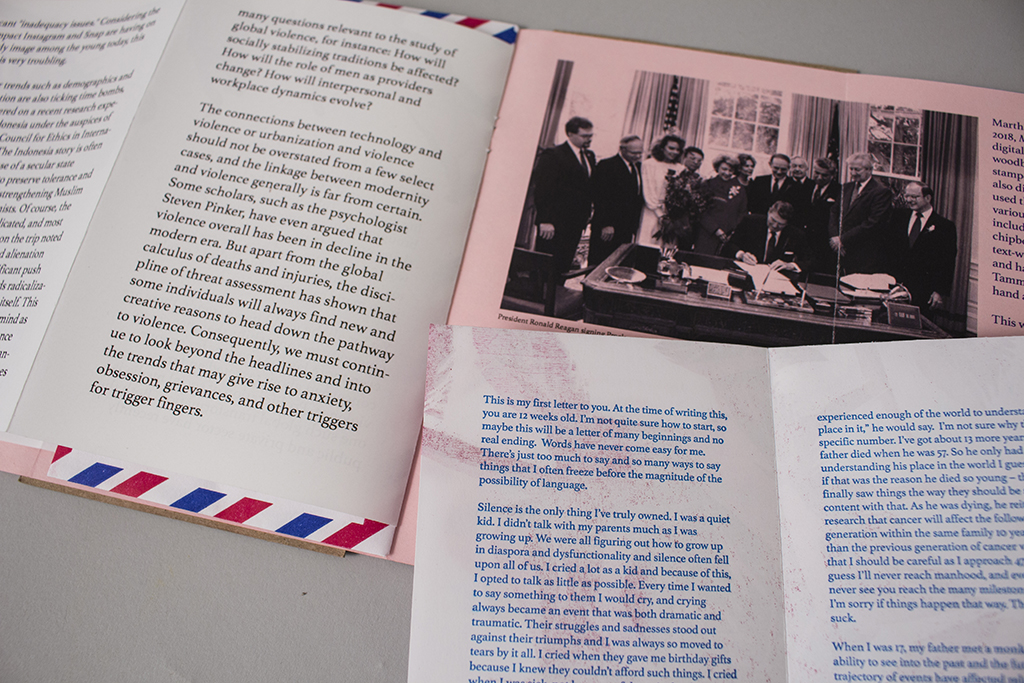
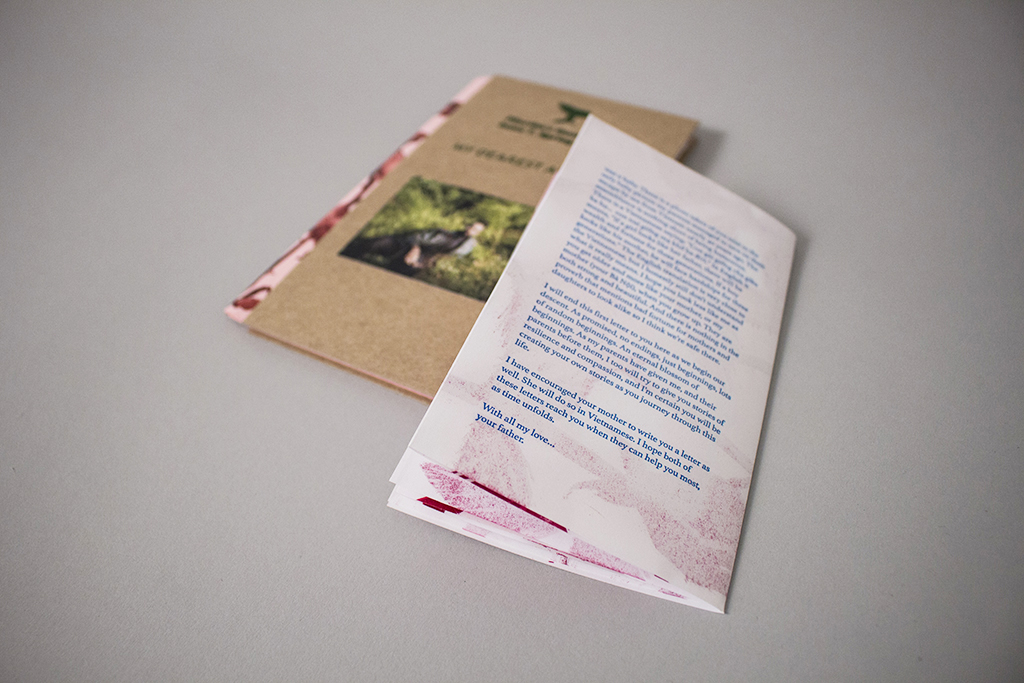
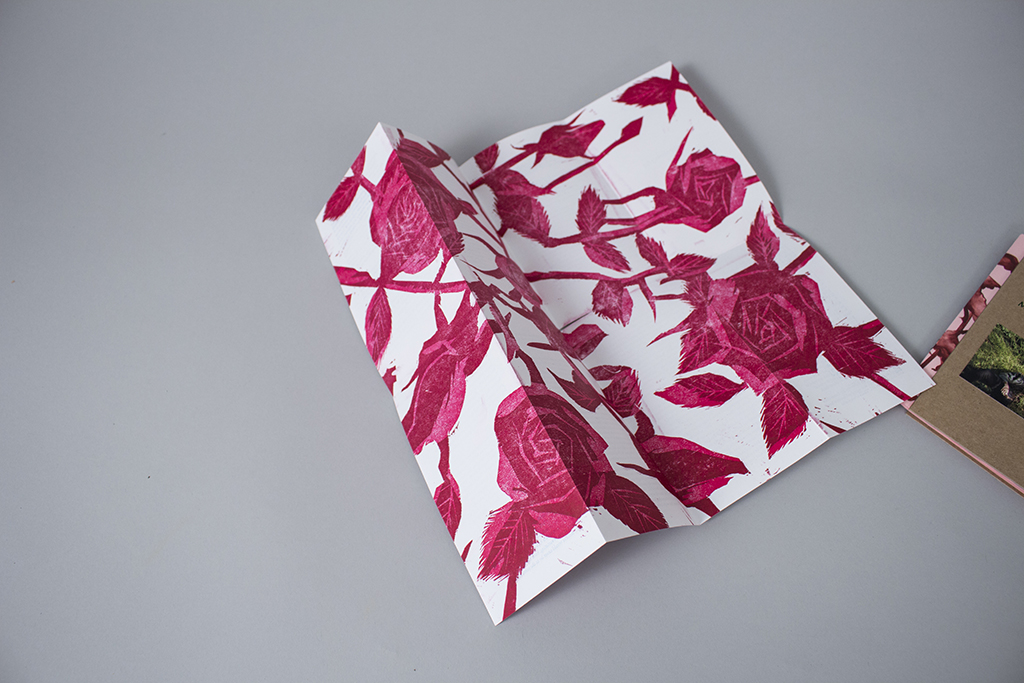
Martha's Quarterly
Issue 7
Spring 2018
My Dearest Aiyana
6.5” x 4.25”
About the contributors:
Daniil Davydoff is manager of global security intelligence at AT-RISK International and director of social media for the World Affairs Council of Palm Beach. His writings on security and international affairs have been published by ASIS International, Security Magazine, Risk Management Magazine, The National Interest, the Tehran Times, Foreign Policy, and RealClearWorld, among other outlets.
Naima Green is a Brooklyn-based artist and educator interested in teasing the boundaries of intimacy, urban ecology, and the construction of home.
Tuan Andrew Nguyen uses his artistic practice to find god. He initiated an artist collective called The Propeller Group to uncover the devil.
I’d like you to think about this book’s cover as the arms of someone and they are hugging the contents inside, which are some of the most precious things in the world.
The cover of this book starts with an idea of landscape, which was a protector to me when I was a child. I remember seeing El Capitan in Yosemite and thinking it was there to protect the forest. I remember seeing landscape paintings from the Western Expansion and thinking that these places were for me to be safe. But in my adulthood, I think of landscape as more of a force which could either protect or kill me. While I can blissfully inhale the sky of Sanford Robinson Gifford’s painting A Gorge in the Mountains, I see an absence of humans and a land to be taken. While I could imagine what the foods taste like in Édouard Manet’s The Luncheon on the Grass, I doubt people of color would have been invited to such an affair, or if a person of color could occupy the landscape in such a way and in such a time.
Sanford Robinson Gifford, A Gorge in the Mountains, 1862
This is partly why I have been drawn to Naima Green’s ongoing project Jewels from the Hinterland where she photographs black people in landscapes as a way to make them the center focus. The cover of this Martha’s Quarterly features Brian, and when I look at this image, I wonder about Brian as an individual but also as a representation of the Black male. In recent years, the impulse to depict Black men in more nuanced and complicated ways is one form of response to the reckless of treatment of black bodies ranging from racist 911 calls to needless gun violence. Ms. Green’s portrait performs a resistance and renewal of such gazes upon black male bodies.
And then resistance does not work. Possibility to renew is bleak, because no matter how many artworks are created, marches take place, or phone calls made to one’s representatives, a person can still snap and kill many people in a matter of seconds.
“What makes a person snap?” is what I asked Daniil Davydoff after the Stoneman Douglas High School shooting where 17 people were killed in 6 minutes and 20 seconds. Mr. Davydoff is a risk intelligence analyst responsible for creating strategies to prevent such incidents like this school shooting. After you open the book armored with Ms. Green’s photograph, you can read Mr. Davydoff’s essay, an expansive illustration of the environment which contributes to the “pathway to violence.” That said, Mr. Davydoff speaks to the impossibility of completely preventing such heinous violence because the mind – once set – can be extraordinarily creative.
Édouard Manet’s The Luncheon on the Grass, 1863
The other day, I heard from an architect who is designing an extension to an elite private school that a difficult problem for him to design was the building’s glass windows. There was an incident years ago where a male teacher sexually harassed a student, so the new design needed to include classrooms surrounded by glass. However, these same transparent classrooms needed to also be quickly veiled in the case of a school shooting. This is a disheartening design problem. How do we protect children?
Mr. Davydoff’s writing opens up to an envelope which encloses a letter that the artist Tuan Andrew Nguyen writes to his beautiful baby daughter Aiyana. I asked Mr. Nguyen, “What does it mean to be her father?” His letter travels through time and speaks of his fatherhood and his masculinity as a layered history of war, diaspora, and male expectations. Mr. Nguyen makes no secret about the powers of myth and human mortality to his daughter who will grow up in the shadow of an unprecedented number of mass shootings in America.
A wilted American rose arches over Mr. Davydoff’s writing and a thicket of them hug the back of Mr. Nguyen’s letter. Such is the myth of roses, which President Ronald Reagan declared was the flower of the United States on November 20, 1986:
Americans have always loved the flowers with which God decorates our land. More often than any other flower, we hold the rose dear as the symbol of life and love and devotion, of beauty and eternity. For the love of man and woman, for the love of mankind and God, for the love of country, Americans who would speak the language of the heart do so with a rose.
We see proofs of this everywhere. The study of fossils reveals that the rose has existed in America for age upon age. We have always cultivated roses in our gardens. Our first President, George Washington, bred roses, and a variety he named after his mother is still grown today. The White House itself boasts a beautiful Rose Garden. We grow roses in all our fifty States. We find roses throughout our art, music, and literature. We decorate our celebrations and parades with roses. Most of all, we present roses to those we love, and we lavish them on our altars, our civil shrines, and the final resting places of our honored dead.
The American people have long held a special place in their hearts for roses. Let us continue to cherish them, to honor the love and devotion they represent, and to bestow them on all we love just as God has bestowed them on us. (1)
President Ronald Reagan singing Proclamation 5574, November 20, 1986
Roses have been laid on the dead bodies of Black male victims, as they have been laid on all of the slain from the Stoneman Douglas shooting. One day a rose will be given to Aiyana. All these roses from the American landscape. Such is the myth of landscape, men, and manifest destiny.
— Tammy Nguyen, Editor-in-Chief
1 The National Flower, http://nationalrosegarden.com/the-national-flower/
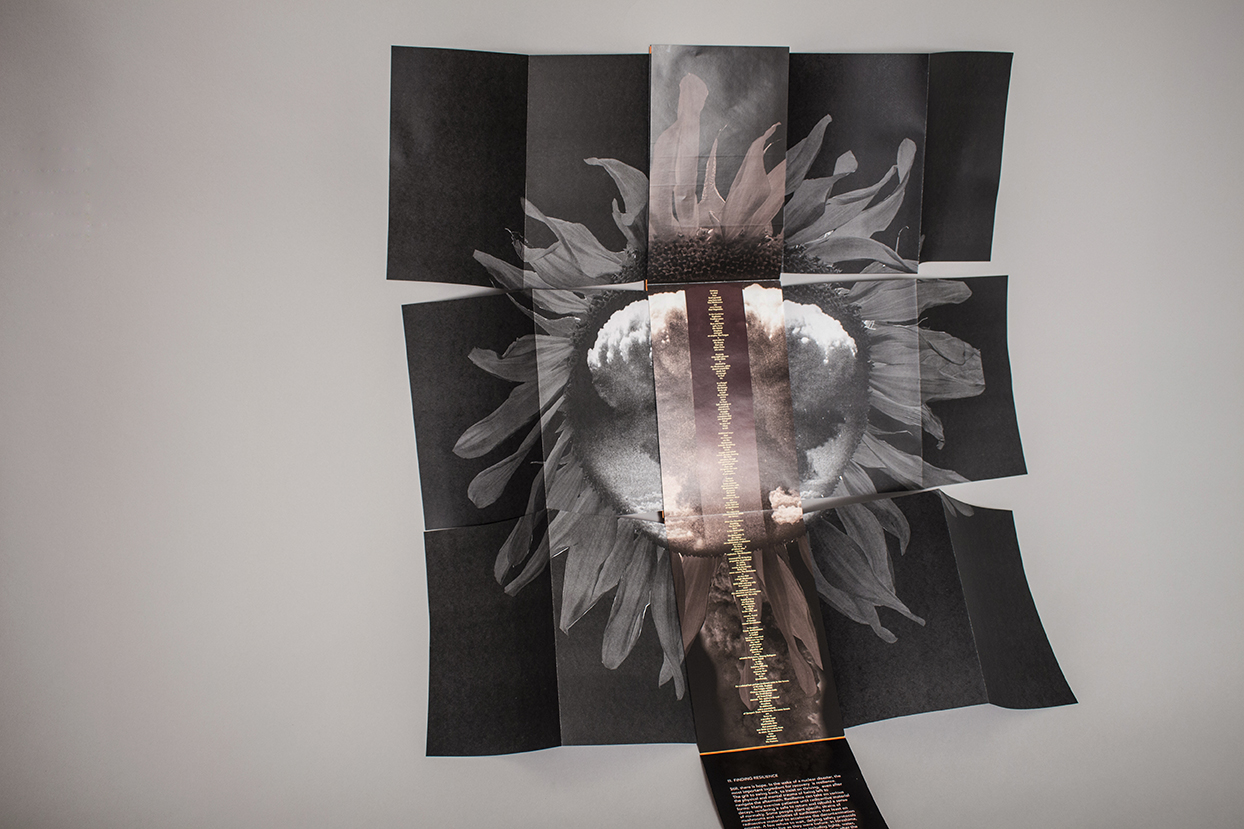
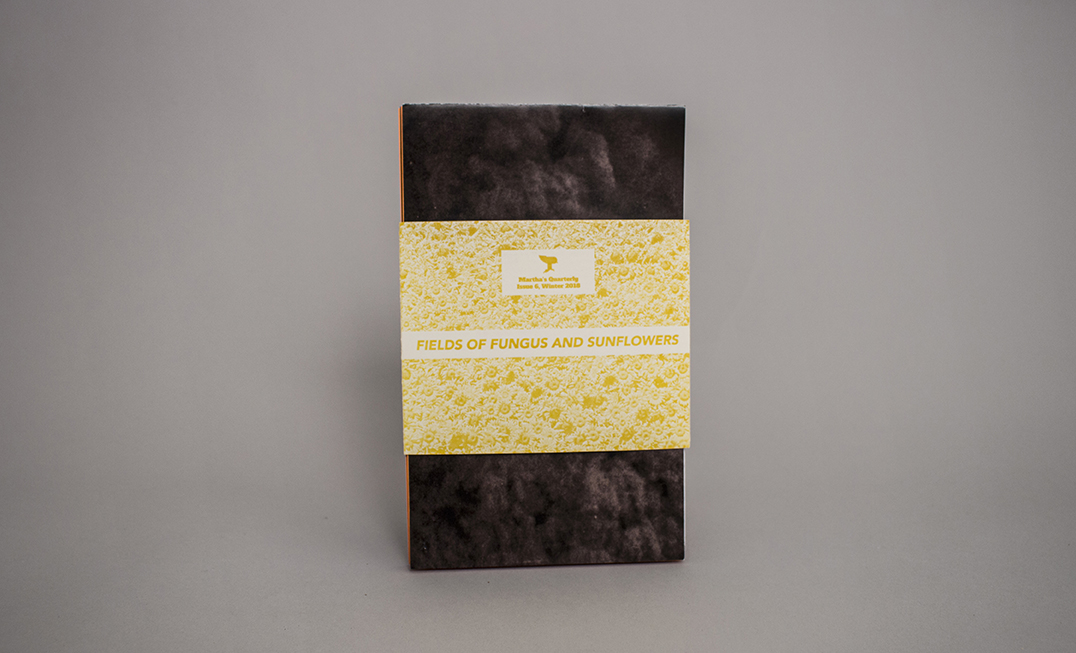

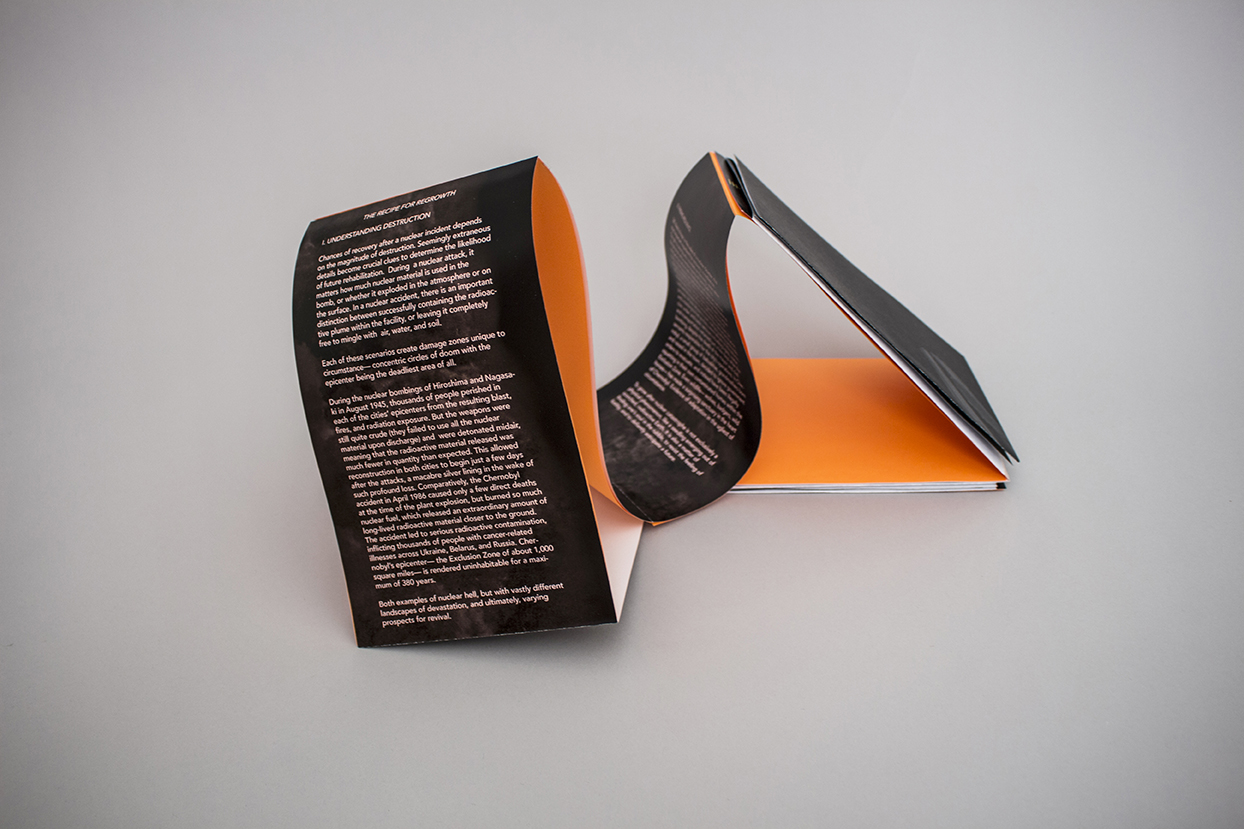

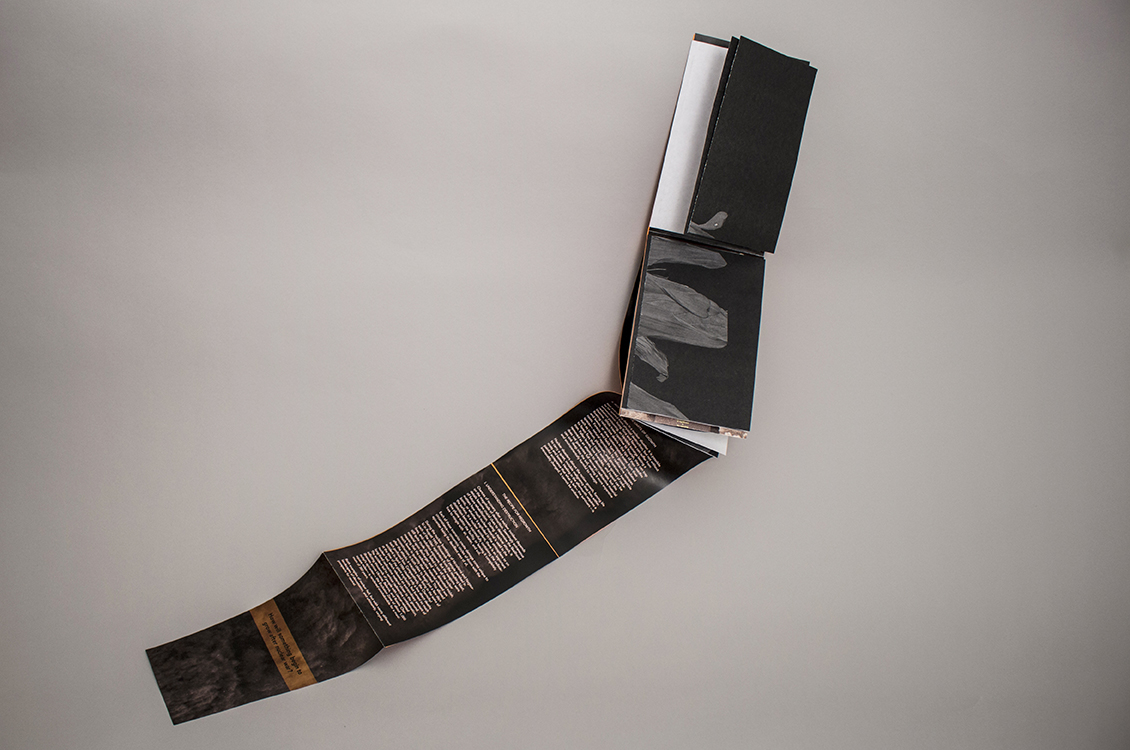

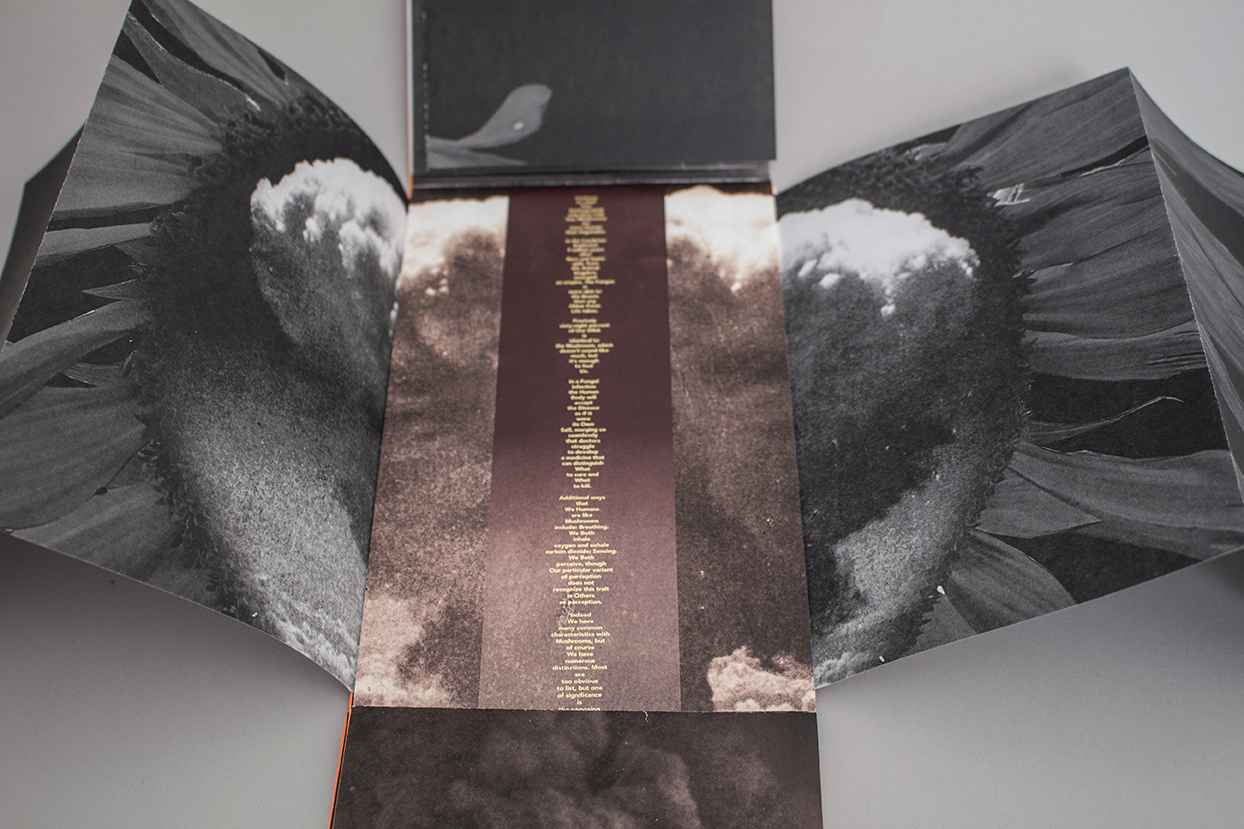
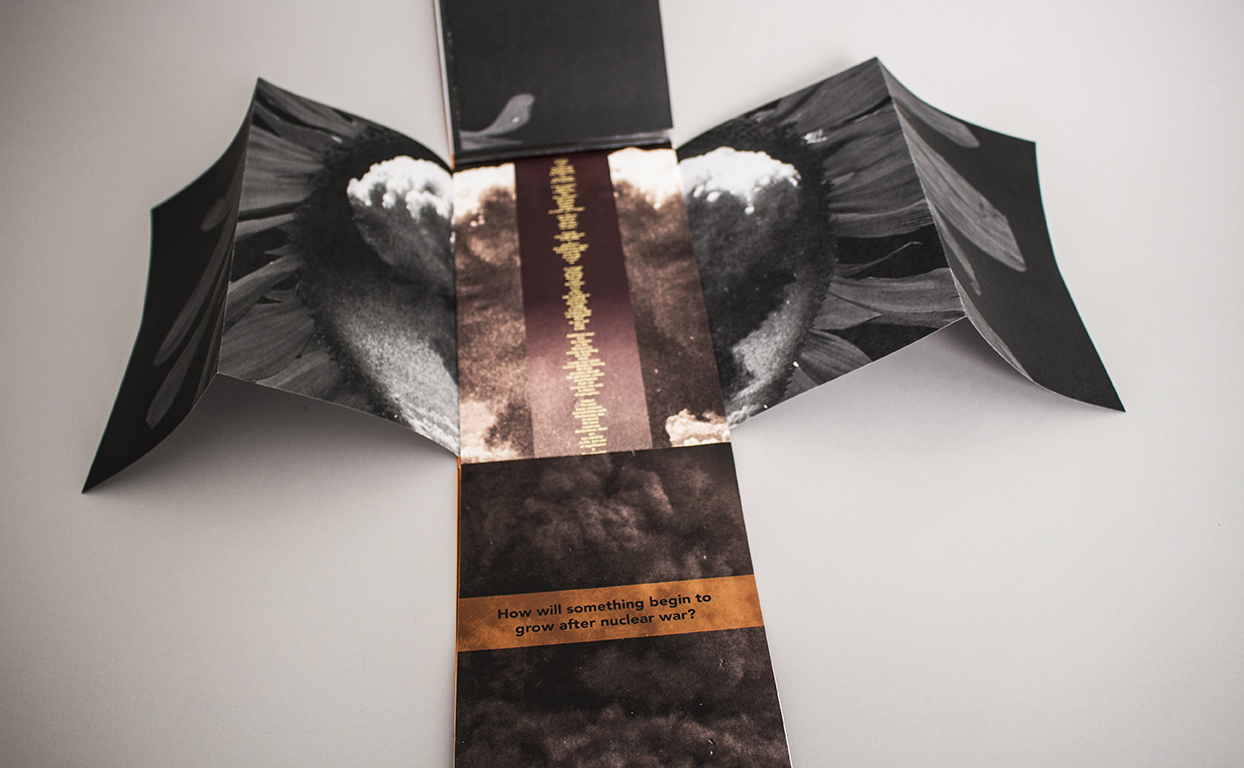
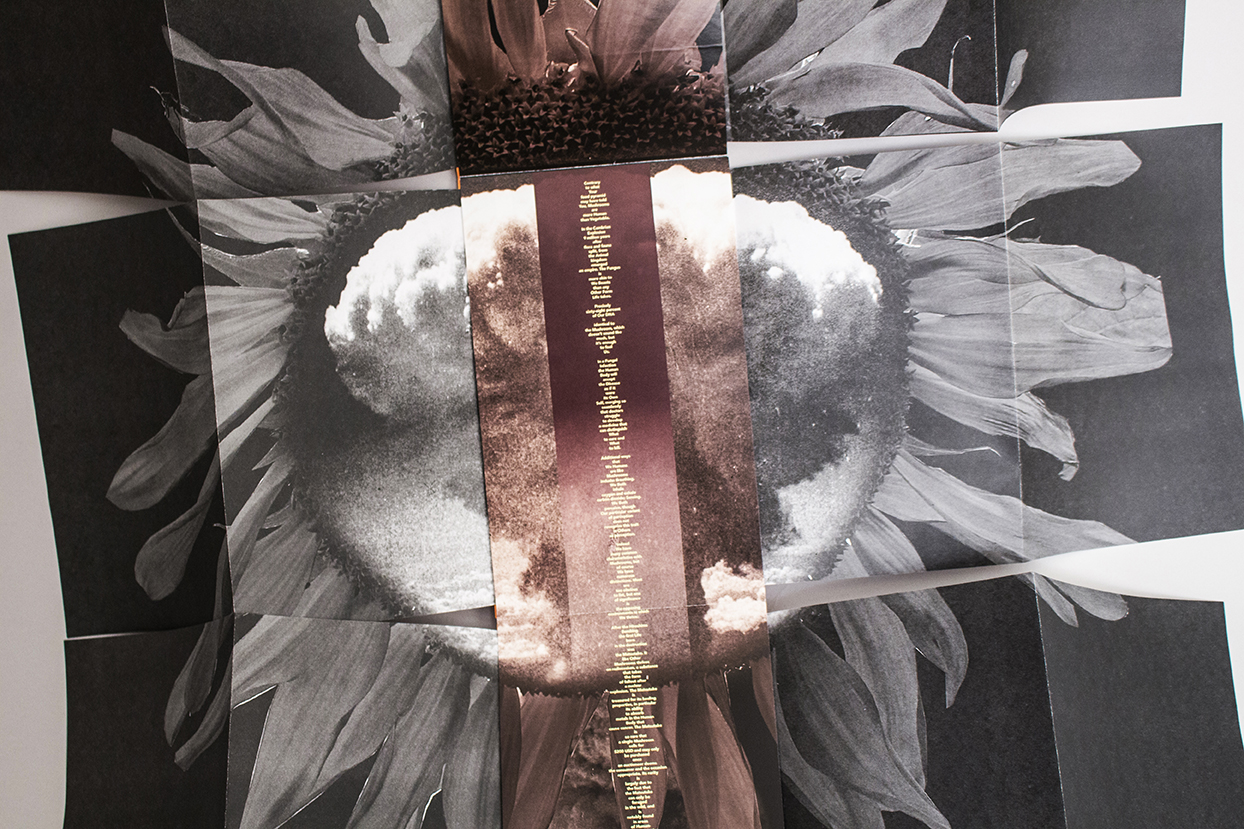
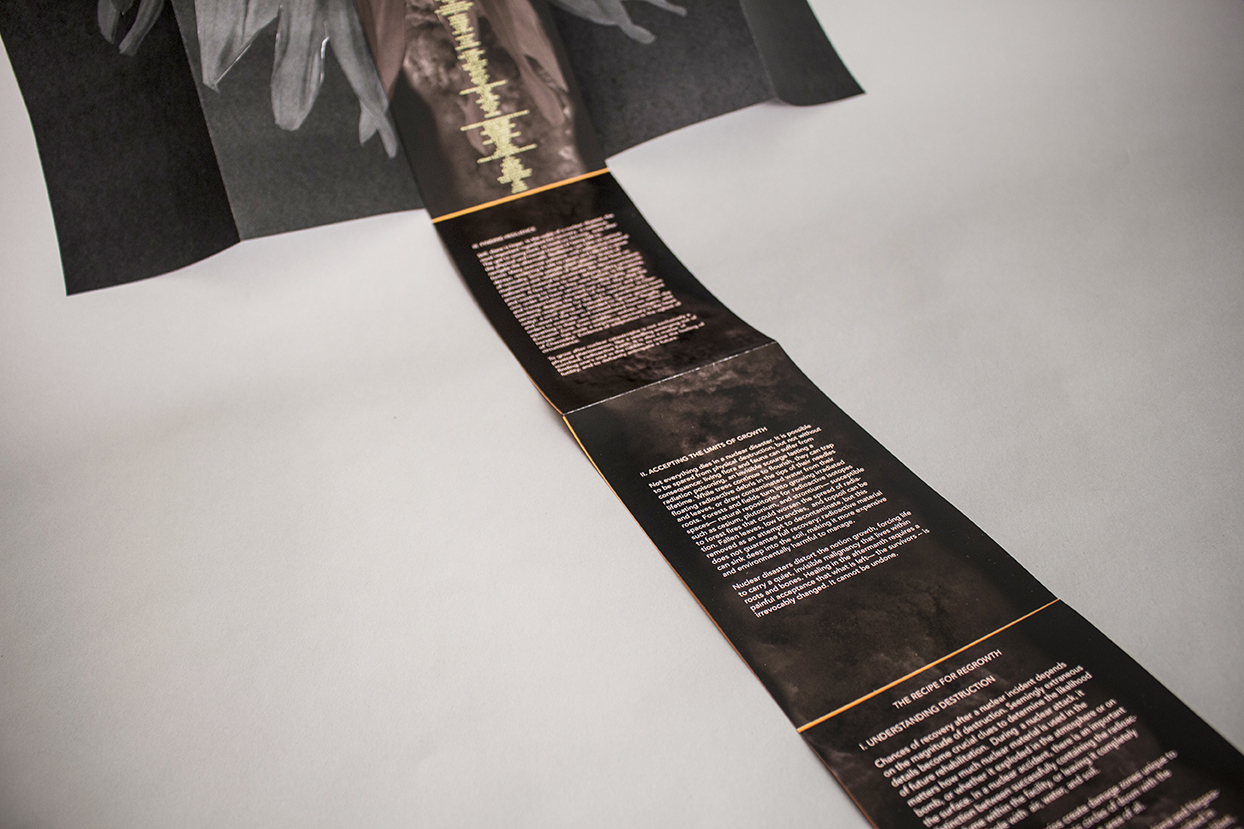
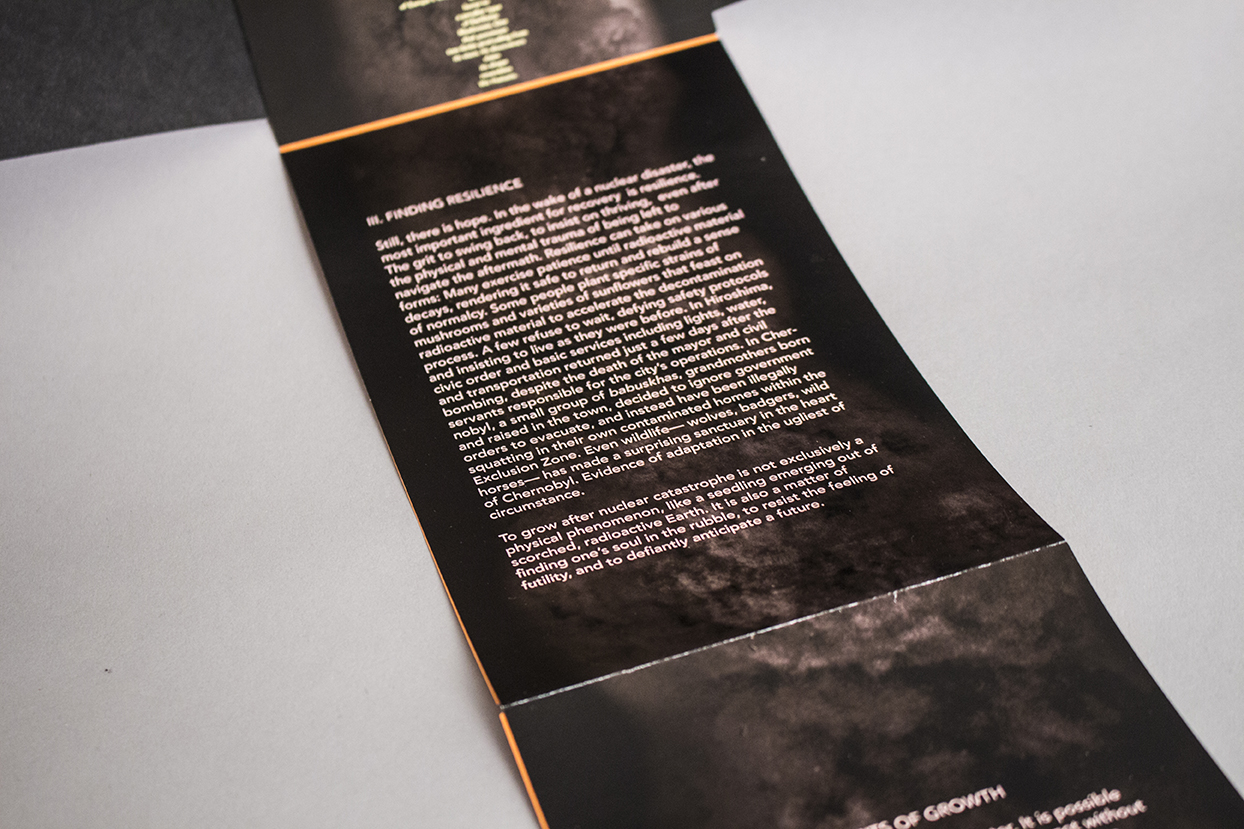
Martha's Quarterly
Issue 6
Winter 2018
Fields of Fungus and Sunflowers
8” x 5”
About the contributors:
Everything Adriel Luis does is driven by the belief that social justice can be achieved through surprising, imaginative and loving methods. His writing, music, designs and curatorial work to this end can be found at drzzl.com.
Lovely Umayam is the founder of Bombshelltoe, a project examining the intersection of nuclear policy, arts, and community organizing to achieve a nuclear weapons-free world. She is also a Program Manager at the Stimson Center in Washington DC, where she develops programs to secure civilian nuclear material and technologies from being disseminated and misused for nuclear weapons development.
What happens when the thing you can’t possibly imagine happens?
When the Winter Olympics opened this year, South Korea and North Korea walked together, teasing a united Korea to the entire world. Vice President Pence sat in front of Kim Yo Jong, the sister of Kim Jong Un— they didn’t exchange any words. Days later, Korean-American teenager Chloe Kim took gold for America in the Women’s halfpipe, stunning the world with back to back 1080s.(1) As she came down the pipe, her father, who immigrated to the United States from South Korea in 1982, held a sign reading “Go Chloe!” as he shouted, “American Dream!”(2)
What happens when the worst thing is about to happen?
A few months ago, all of the smart phones in Hawaii alarmed in unison and alerted the people that there was a ballistic missile headed towards the islands. A long 38 minutes after, people were informed that the alert was a mistake. William J. Perry, who was Secretary of Defense under Clinton, recalled a time when a watch officer reported that 200 intercontinental ballistic missiles were headed to the United States. In his memoir My Journey at the Nuclear Brink, he wrote, “For one heart-stopping second I thought my worst nuclear nightmare had come true.” (3) But somewhere on the Hawaiian Islands that day, Joshua Keoki Versola opened himself a bottle of Hibiki 21 and waited for his fiancée to return home. (4)
And then the worst thing happens...
On Valentine’s Day of 2018, an American teenager gunned down 17 members of his former high school in Parkland, Florida.
Recent events have pushed people to see the brink. Sometimes, we see what is beyond that brink which has ranged from glory to devastation. Nuclear threat might be one of the least comprehensible threats on the global stage. What does it mean? What happens? Could it happen? How is it possible? And then what? Do we stop? These kinds of questions swirl in my constantly unstill and perplexed mind.
And so, I asked Lovely Umayam, a nuclear policy analyst at the Stimson Center in Washington DC, How will something begin to grow after nuclear war? This Martha’s Quarterly, Issue 6, Winter 2018, Fields of Fungus and Sunflowers, features Ms. Umayam’s answer. I also asked Adriel Luis, musician/poet/visual artist/curator/coder to respond to my question and Ms. Umayam’s response with something lyrical. Upon receiving Mr. Luis’ poem, I read it outloud. As my eyes followed the poem’s dramatic verticality, I saw the words fungus, beast, DNA, cancer, and human stack like bricks of a tower representing our fragile civilization.
— Tammy Nguyen, Editor-in-Chief
(1) How Chloe Kim Won Gold With a Nearly Perfect Score in Halfpipe, By Alexandra Garcia, Haeyoun Park, Bedel Saget, Joe Ward, Margaret Cheatham Williams, and Jeremy White, NY Times, Feb. 13, 2018.
(2) Chloe Kim: Meet the Olympic snowboarder who won gold, by Daniel Arkin, The Associated Press, Feb.14, 2018
(3) Hawaii Panics After Alert About Incoming Missile Is Sent in Error, by Adam Nagourney, David E. Sanger, and Johanna Barr, NY Times, Jan. 13, 2018
(4) Hawaii ballistic missile false alarm results in panic, Julia Carrie Wong and Liz Barney, The Guardian, Jan. 14, 2018.
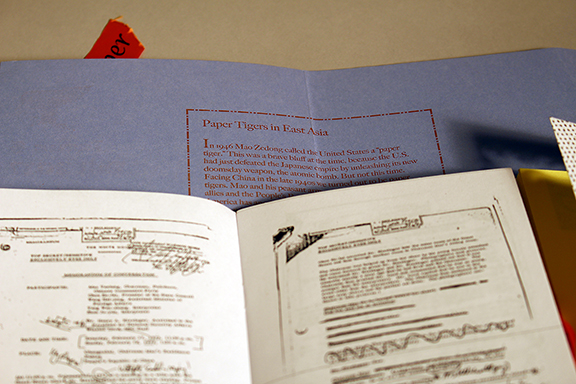

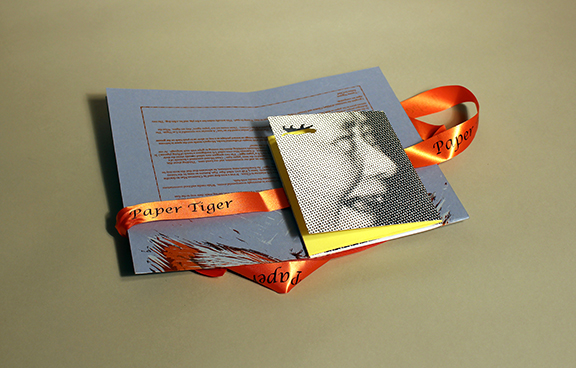
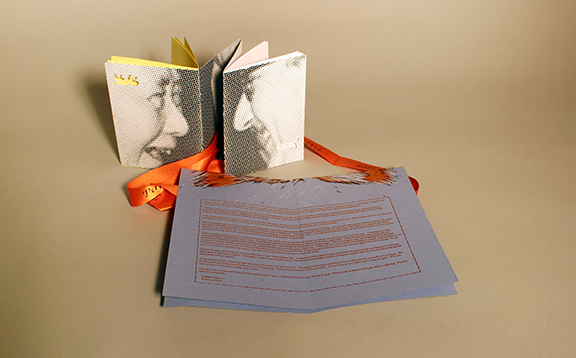
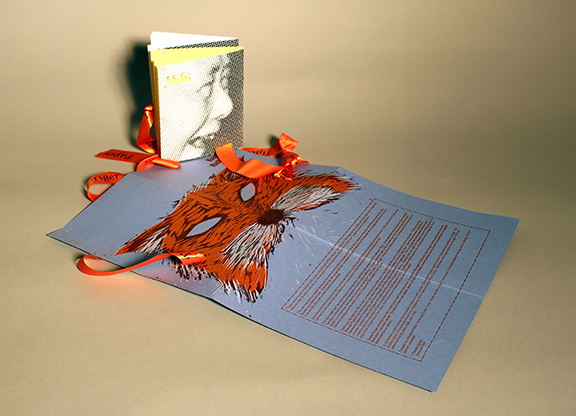
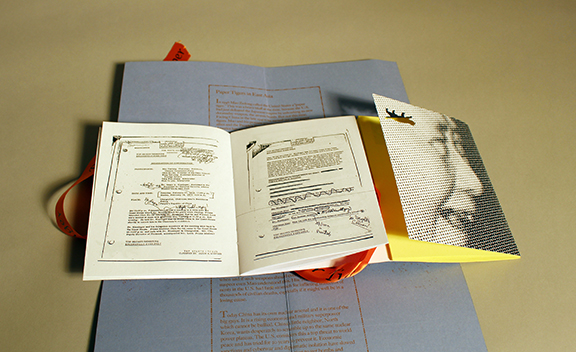
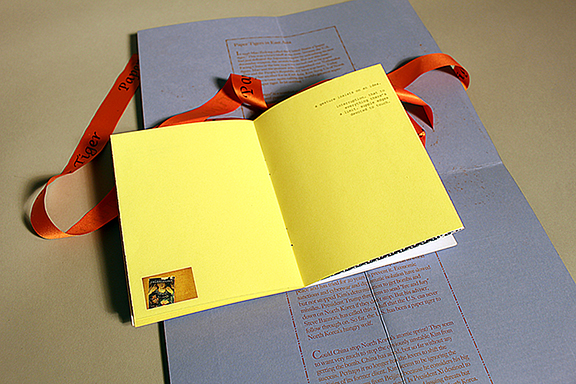
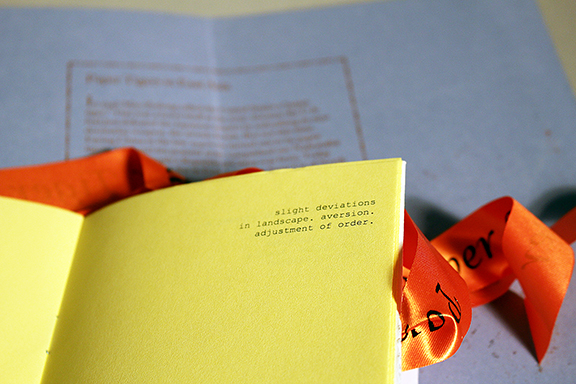
Martha's Quarterly
Issue 5
Fall 2017
Paper Tiger
8” x 5”
About the contributors:
Lorne Swarthout is a history and economics teacher at the Berkeley Carroll School. His academic compass has pointed him towards the histories of East Asian peoples, of the world's oceans, and of national economic development.
Larry Ossei-Mensah is a Ghanaian-American curator and cultural critic who uses contemporary art and culture as a vehicle to redefine how we see ourselves and the world around us. Ossei-Mensah is also the Co-Founder of ARTNOIR, a global collective of culturalists who design multimodal experiences aimed to engage this generation’s dynamic and diverse creative class.
Saretta Morgan is author of the chapbooks room for a counter interior (Portable Press @ Yo-Yo Labs, 2017) and Feeling Upon Arrival (Ugly Duckling Presse, 2018). She has designed interactive, text-based experiences for the Whitney Museum of American Art, Dia Beacon and as a 2016-2017 Lower Manhattan Cultural Council Workspace resident. She is a member of the feminist publishing collective, Belladonna* Collaborative, and a contributing interviewer at The Common (Amherst College).
“There was no way she would have won,” a man at the table said of Hillary Clinton. He continued, “She’s a tiger, and he’s a dragon, and when a tiger meets a dragon, they will always lose. In order to take him out, the next person who runs against him will have to be a dragon too.” Laughter followed his explanation.
This man was one of my parents’ friends, and they were all having dinner at another friend’s house after an afternoon of dancing at the Vietnamese community center; karaoke was to follow the food. These folks, all over 65 years old, were Vietnamese refugees, displaced from Vietnam after the war, having made their way to the San Francisco Bay Area over a period of time by various means.
It has frequently been striking to me that my parents and their peers can keep calm and find humor in stunningly consequential events. While media and local conversations have tried to make sense of last year’s election, here, this group of war-experienced people speculates the results with faith.
The term “paper tiger” has been coming up in foreign policy, especially in discussions about US relations to China. It was a term first used by Chairman Mao to describe “one that is outwardly powerful or dangerous but inwardly weak or ineffectual.” Martha’s Quarterly, Issue 5, Fall 2017 features an essay by the history teacher Lorne Swarthout, who recounts Chairman Mao calling the United States a “paper tiger.” As Swarthout’s essay continues, he advocates that that this term may be relevant in thinking about the nuclear powered China and its “little brother” North Korea.
Nations are big entities as they are ideas, but those big things trickle down to the little things like us, and our communities, and our loved ones. Thinking about this, Passenger Pigeon Press invited curator Larry Ossei-Mensah and poet Saretta Morgan to respond to the term “paper tiger.” Ossei-Mensah annotated a facsimile of a conversation between Chairman Mao and Henry Kissinger where Mao admits to calling the US a “paper tiger.” The two arrogant men talked casually about the their countries, Germany, Russia, and England with riddles, sarcasm, and a lot of laughter in between. (Chairman Mao even called US intelligence a bunch of flying pigeons.) It is hard to read such a transcript and know the fatalities of both Mao’s reign and WWII. Ossei-Mensai’s scribbling shows his coming to grips with such language. At one point, Ossei-Mensah writes in the column, “Are Democracy and Communism just one and the same?”
Saretta Morgan moves forward with the term “paper tiger” in her poem on lines. Juxtaposed with images of influential books, Morgan’s words and the space in between them seem to talk about a border. She opens, “a border is only habitable. sensual”. Morgan’s poems brings us inward perhaps as a way to allow us to push back on the greater institutions that are nations.
In the last few months hurricanes have devastated America and Latin America. The people of Catalan roared for an “out.” A terrorist was successful in Las Vegas. The Rohingya people of Myanmar flee for survival in Bangladesh. Flames destroyed parts of Wine Country. These events are not “paper tigers;” they are tigers. What the nations prove to be, paper or flesh, time will tell.
I googled the birthdays of Hillary Clinton and Donald Trump. Clinton was born in 1947, Trump in 1946. This makes her a fire pig, and he, a fire dog. The two signs are compatible.
— Tammy Nguyen, Editor-in-Chief
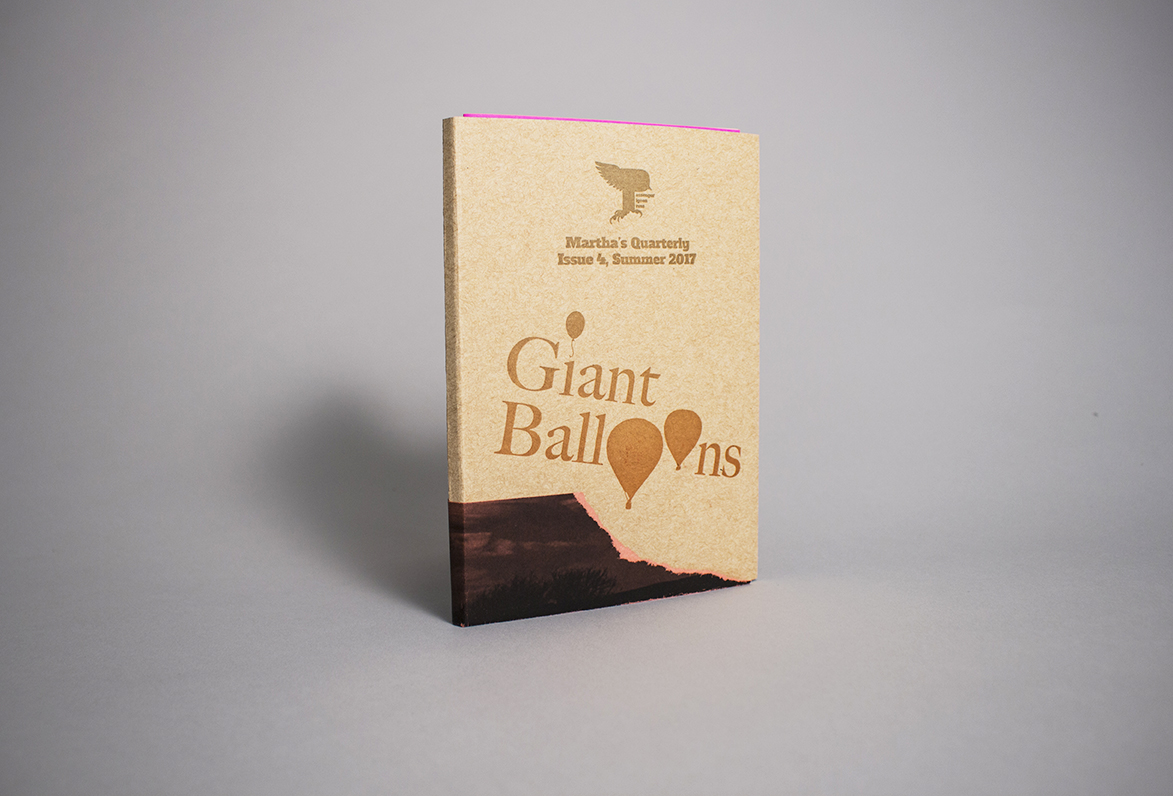
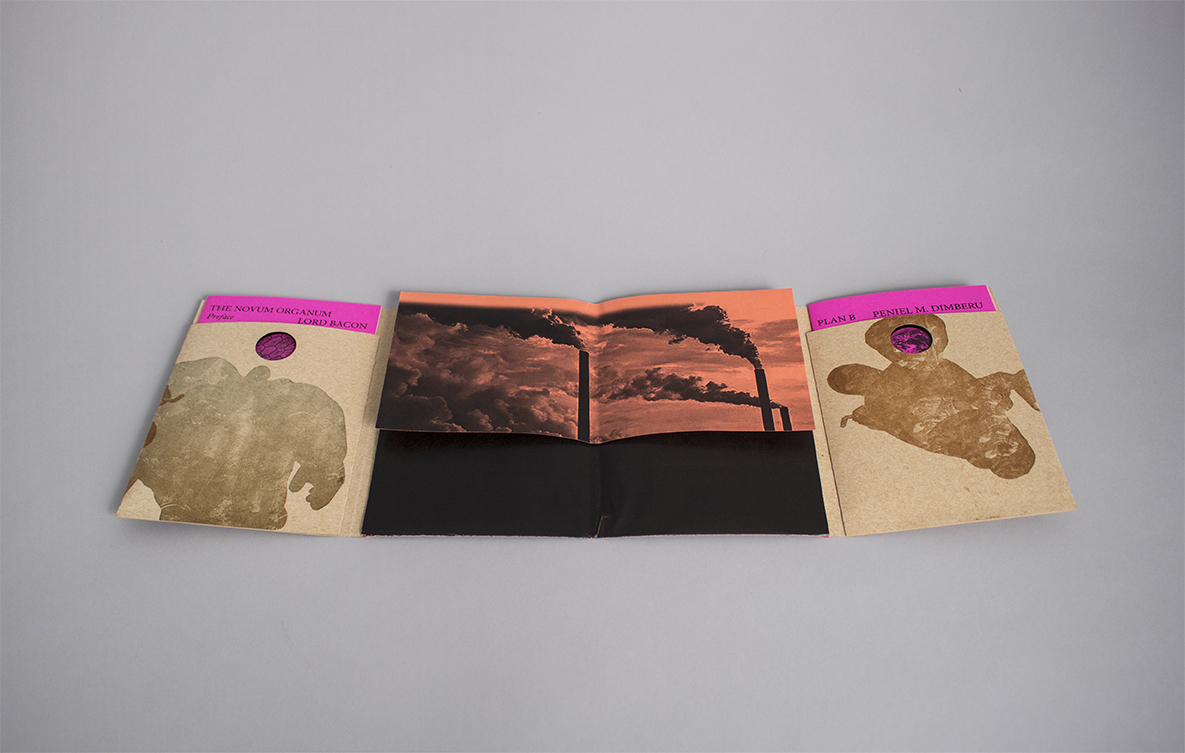
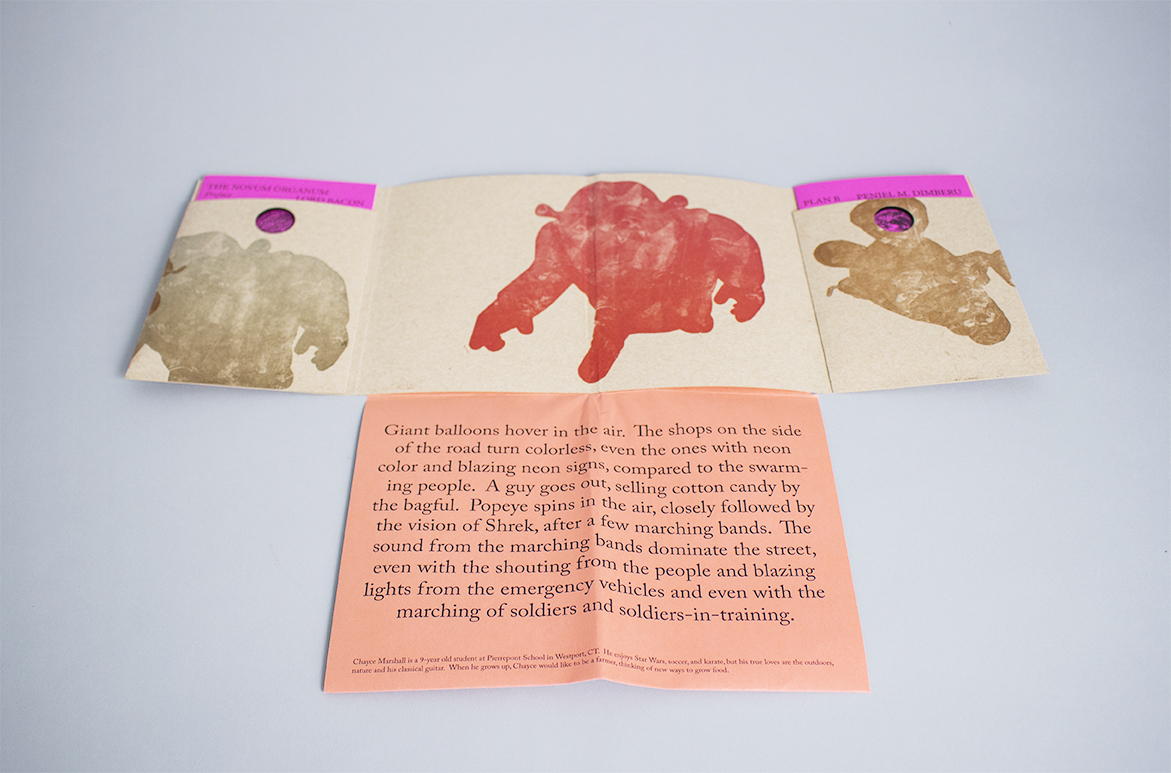


Martha's Quarterly
Issue 4
Summer 2017
Giant Balloons
7” x 5”
About the contributors:
Peniel M. Dimberu, PhD is a biologist, writer and educator. His graduate work was focused on how cells detect an infection and then alert the immune system to respond. Peniel is an ardent believer that science literacy is an important metric for any society but even more so under the current US political climate.
Chayce Marshall is a 9-year old student at Pierrepont School in Westport, CT. He enjoys Star Wars, soccer, and karate, but his true loves are the outdoors, nature and his classical guitar. When he grows up, Chayce would like to be a farmer, thinking of new ways to grow food.
Francis Bacon (1561-1626) was a philosopher, scientist, and stateman who served as the Attorney General and Lord Chancellor of England. He has been frequently called the father of empiricism– the theory that knowledge comes from one’s own sensorial experiences.
It's hot in Manila, as it was a week ago when I was in New York. Today, on July 9th, I sit at Manila Ocean Park, at a pan-Asian lunch buffet pleasantly chilled in air conditioning. is was my escape from the humid heat and stench of Manila Bay, where this tourist attraction sits side-by-side with the US Embassy. The shore’s contour is artificial, as much of it has been designed and manufactured with sand, extending Manila’s natural landmass. Here, the aspirations of militaries and capitalism merge— this water has been the stage of many battles and now it serves as the Port of Manila distributing goods throughout the Filipino trade-dependent economy. Like many bays throughout the world, this bay has served the interests of powerful navies and then transformed into a site for commerce.
I’d like to think about this setting of Manila Bay as an allegory for the climate change crisis. Along this bay, capitalism appears in many forms which all follow the military trajectories of the Spanish, Japanese, and Americans. As the battles have left memories of massacre and visible neglect, the ambitions behind them have also left an invisible trail of damage felt and smelt in the air and heat. Climate change is sublime; and a literal consequence of collective human passion and pursuit of power.
Last year, I learned of geoengineering from the Carnegie Council’s program: Carnegie Climate Geoengineering Governance Initiative (C2G2). Geoengineering is a, “deliberate large-scale manipulation of an environmental process that affects the earth's climate, in an attempt to counteract the effects of global warming.” (1) It entails solutions for the climate change crisis that I have found as equally sublime as climate change itself. And so, this issue of Martha’s Quarterly entitled Giant Balloons addresses the profundity of climate change by springing from the idea of geoengineering through the contributions of the biologist Dr. Peniel M. Dimberu, the 9- year old poet Chayce Marshall, and the philosopher/scientist Francis Bacon. Dr. Dimberu explains geoengineering as Marshall presents his observations of the Macy’s Thanksgiving Day parade in NYC. Juxtaposed to these pieces is the preface to Francis Bacon’s Novum Organum where he transforms man’s gaze on his planet— turning nature into a natural resource. (2)
I’m finishing this introduction on July 12th. As I navigate torrid Manila for souvenirs to gift my friends and family, an iceberg the size of Delaware broke off of Antarctica. While scientists have not confirmed the direct link between this event and climate change, one thing is for sure: maps will be redrawn creating new opportunities for the doubled edged ambitions of capitalism.
— Tammy Nguyen
(1) https://en.oxforddictionaries.com/definition/geoengineering
(2) Idea adopted from The Darker Side of Modernity by Walter Mignolo, The Formation and Transformation of “Patrón colonial de poder”
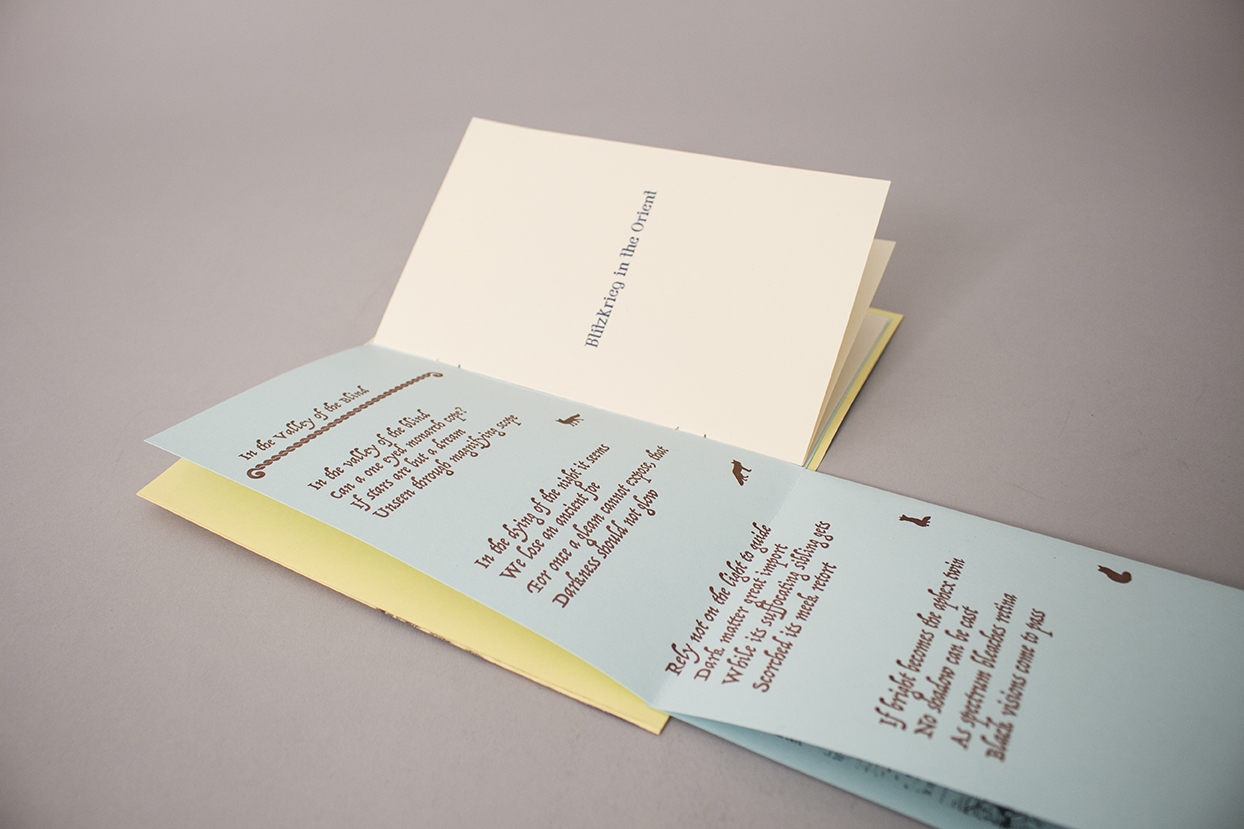
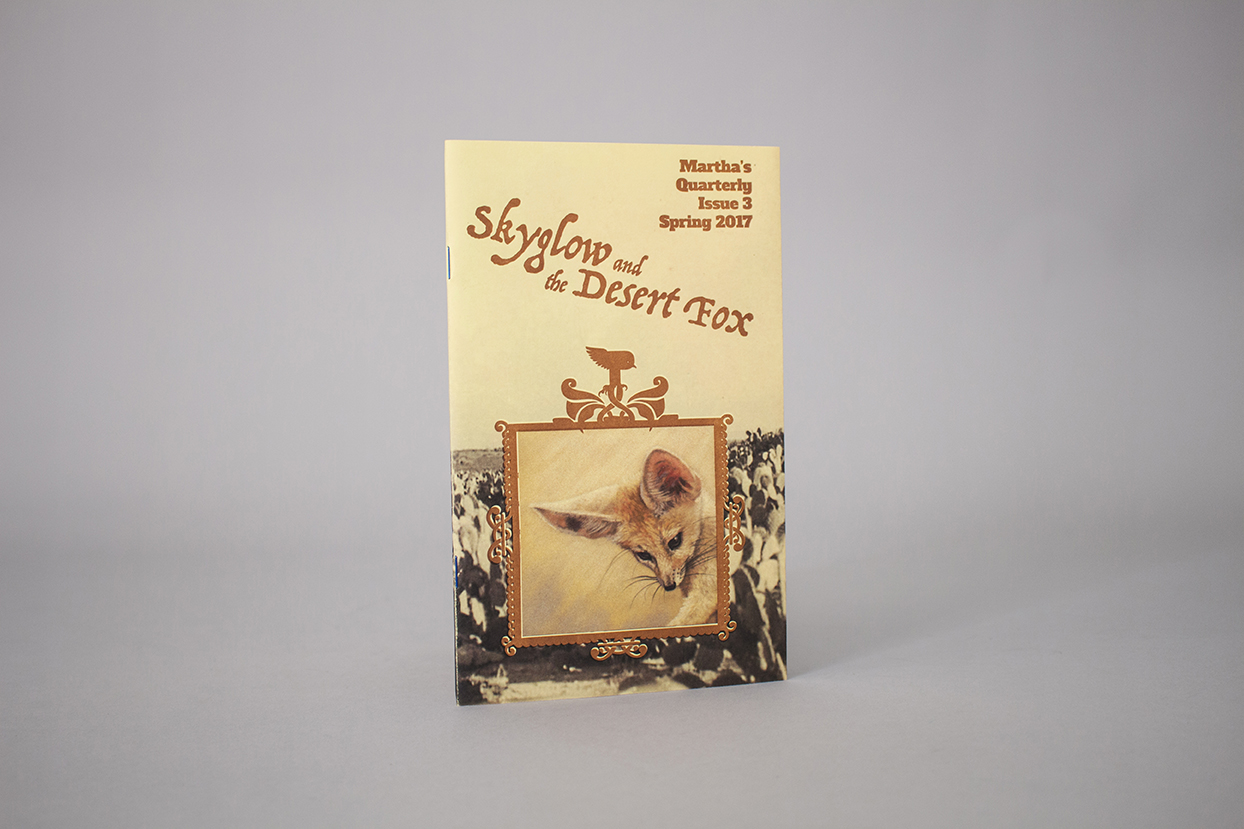

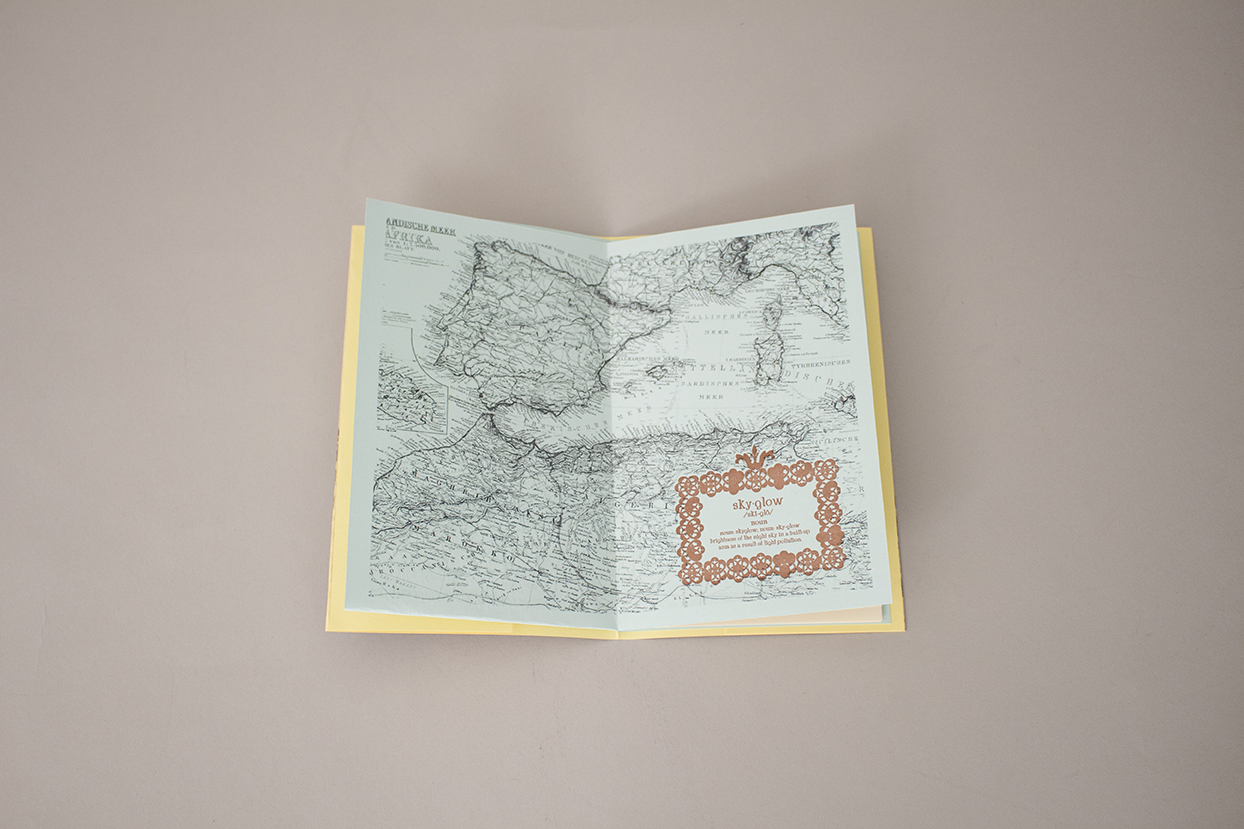
Martha's Quarterly
Issue 3
Spring 2017
Skyglow and the Desert Fox
8.25” x 5.25”
About the contributors:
Emma Colbert is a Northern Irish born artist who specializes in pastel portraiture, wildlife, and landscape. Inspired by nature, she produces paintings in a realistic vibrant style. To see her work digitally, visit: www.emmacolbertart.com.
Andrew Hughes is a Writer, Musician, & Nomad. Traveling and performing in Europe.
Andrew Stein is a history and American Studies instructor at The Berkeley Carroll School. His research interest lies in race, gender, and sexuality in the U.S. and the Global South, particularly South Africa and the Caribbean.
On January 19th, 2017, The Financial Times published an article by the Delhi-based author Nilanjana Roy, The dark side of too much light, where she described “skyglow” — a phenomenon where the night sky is brightened over inhabited areas. This is commonly seen in the night skies of urban areas, where the stars are faint, and the horizon radiates from the city’s electricity. This light has lengthened the human’s work day, allowing for more productivity. It has allowed for more interaction and connection into the darkest hours of night. Yet at the same time, this light is also the sublime sky of pollution, the brilliant child of oil and man.
January 19th, 2017 was also the eve of the inauguration of President Trump. In only a few weeks, he denounced the EPA, implemented an immigrant band, and comparisons between his administration to Hitler’s was viral. In this context, this issue of Martha’s Quarterly takes the toxic phenomenon of “skyglow” and considers it as sky, light, and heat of many literal and figurative understandings.
History, climate change, xenophobia, and government are interrelated, as any other seemingly separate subjects. Before we invited contributors, Passenger Pigeon Press conceptually compared skyglow to the light of Orientalist paintings in the 19th century. These images were some of the first cinematic imaginations of the brown and black body as “discovered” by European explorers. Some of these paintings were interpretations of Morocco, Algeria, Tunisia, and Egypt— the region of some Nazi operations in WWII led by Commander Erwin Rommel, also known as, “The Desert Fox.” This nickname is also the common name for the fennec fox, a fox breed famous for its small size, and big ears which allows it to bare the extreme heat of the Sahara Desert. That said, greenery has sprouted in patches across the desert due to climate change as if to turn the region into a grassland as it once was, 11,000 years ago. Only this time, plants sprout beneath a sky lit by the dazzle of globalizing cities across North Africa.
With this daisy chain of connections, Passenger Pigeon Press invited three cultural producers— the history teacher Andrew Stein, the visual artist Emma Colbert, and the poet Andrew Hughes — to respond to a directed prompt. Andrew Stein is a history teacher in Brooklyn, and we asked him to tell a story about Erwin Rommel and to incorporate skyglow as part of its literary atmosphere. The visual artist Emma Colbert and poet Andrew Hughes are currently traveling across Europe in a motorhome that is also their studio. A naturalist who specializes in animals, we asked Ms. Colbert to interpret the fennec fox with the knowledge that it lives in North Africa and possesses special temperature-controlling ears. Finally, we asked Andrew Hughes to read the Financial Times article mentioned earlier and to respond with a poem.
Their work is now juxtaposed in this Martha’s Quarterly, entitled: Skyglow and the Desert Fox. Mr. Stein recounts Commander Rommel’s theatrical activities in North Africa. Meanwhile, Ms. Colbert and Mr. Hughes’ work were made in Tarifa, Spain as they looked across the Strait of Gibraltar towards Tangier, Morocco. Surrounded by the same cacti that covers North Africa today and throughout WWII, Ms. Colbert painted the fennec fox as Mr. Hughes’ poem created tension between notions of darkness, brightness, and power.
— Tammy Nguyen
Martha’s Quarterly, Issue 3, Spring 2017, Skyglow and the Desert Fox was designed by Tammy Nguyen, founder of Passenger Pigeon Press. It utilizes risograph, digital, and letterpress printing. The papers used are: Staples 20 lb. Ivory, Staples Coverstock Beige, French Paper Poptone Snow Cone Lightweight Cardstock, and Basis Colors 80 lb. Light Yellow. The front image behind Emma Colbert’s painting is a photograph of US military vehicles in Tunisia during WWII. The photograph of Erwin Rommel’s death mask was found discovered by the U.S. Seventh Army troops in 1945. The map of North Africa is a cropped section from 19th century map drawn by the German cartographer, Adolf Stieler.
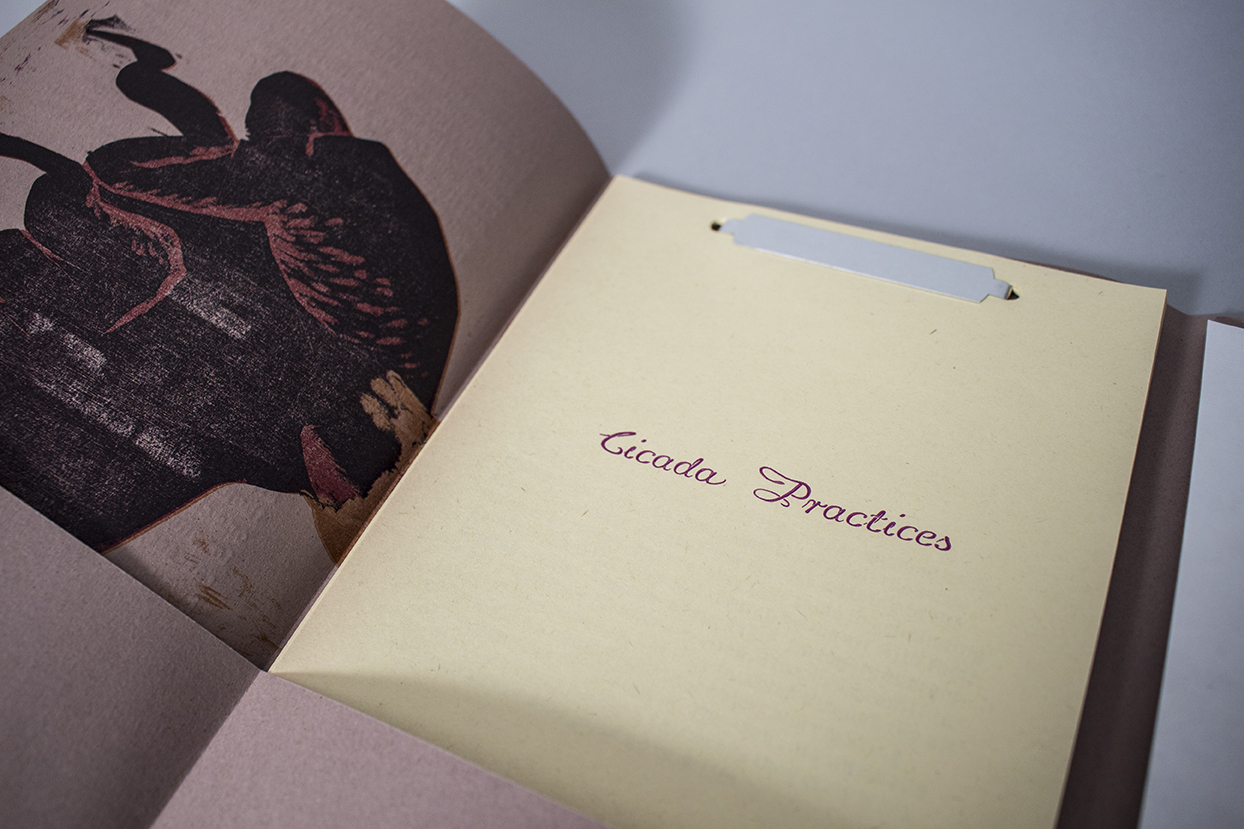
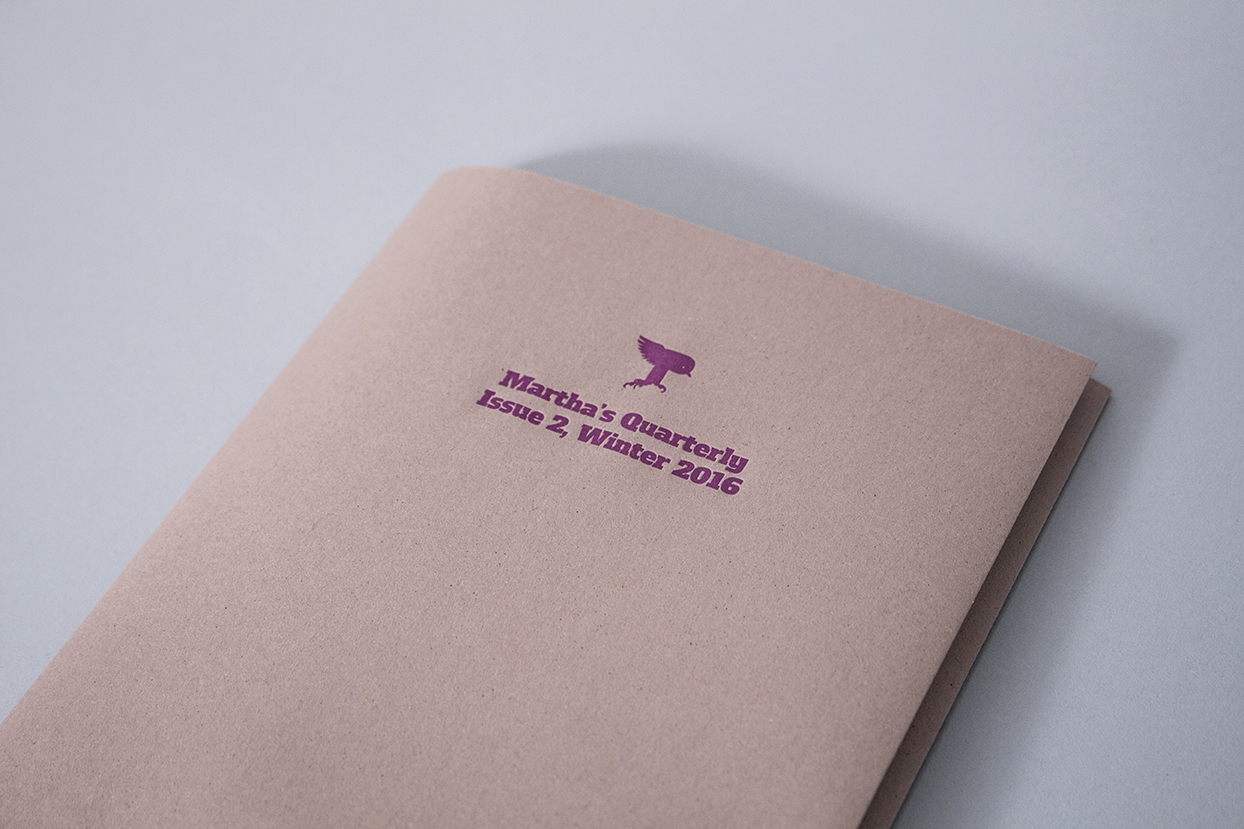
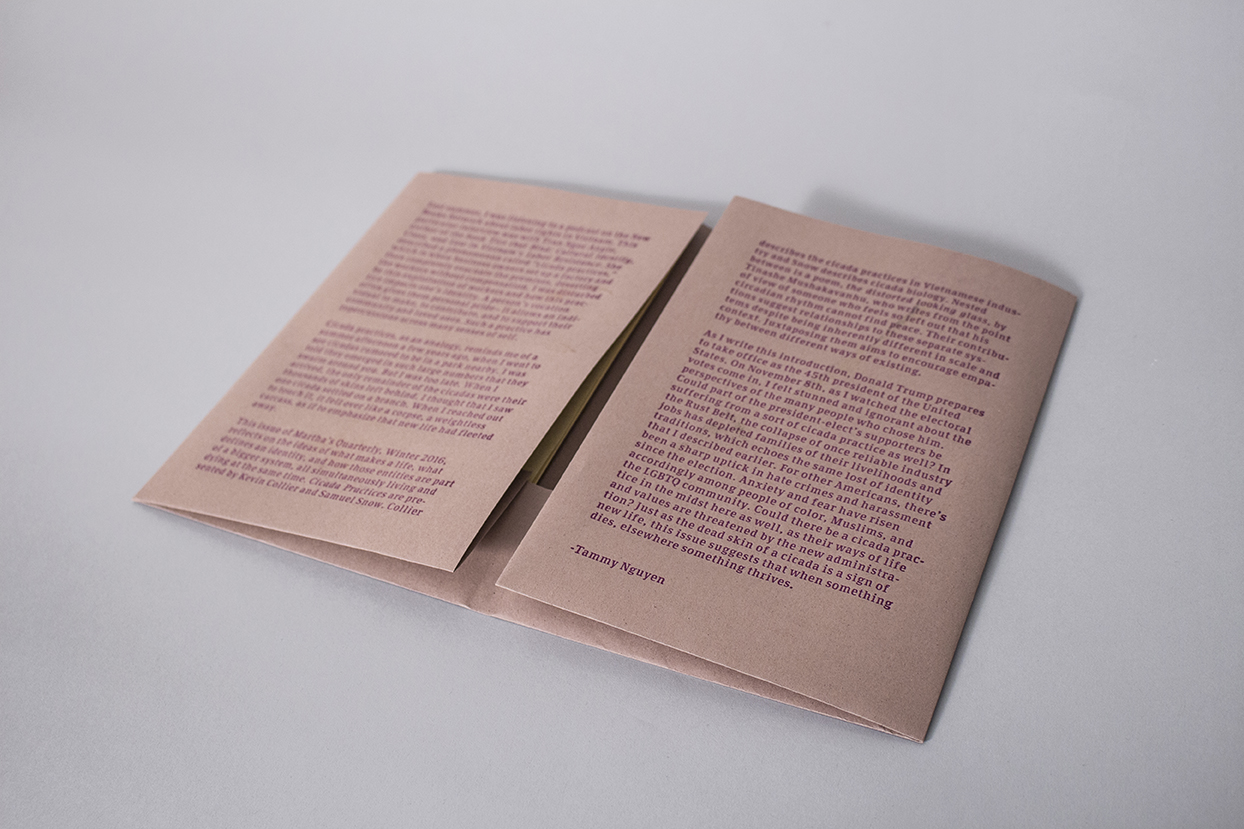
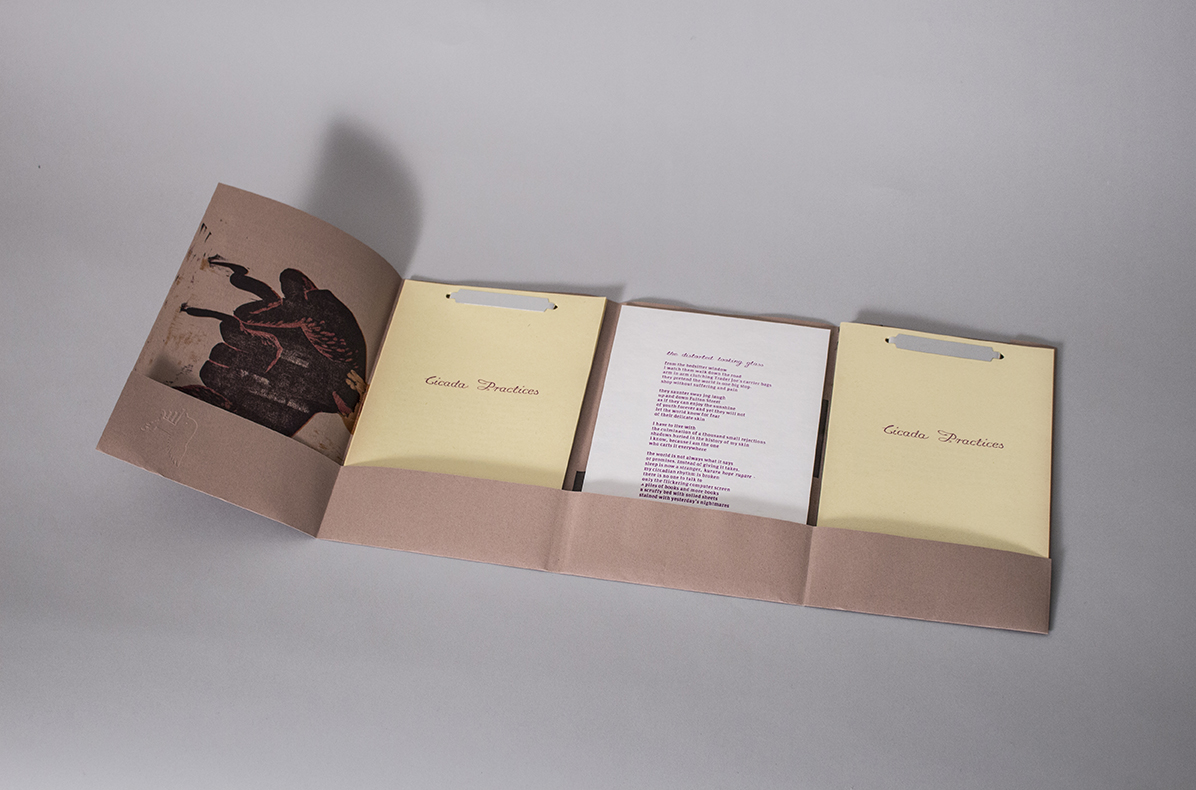
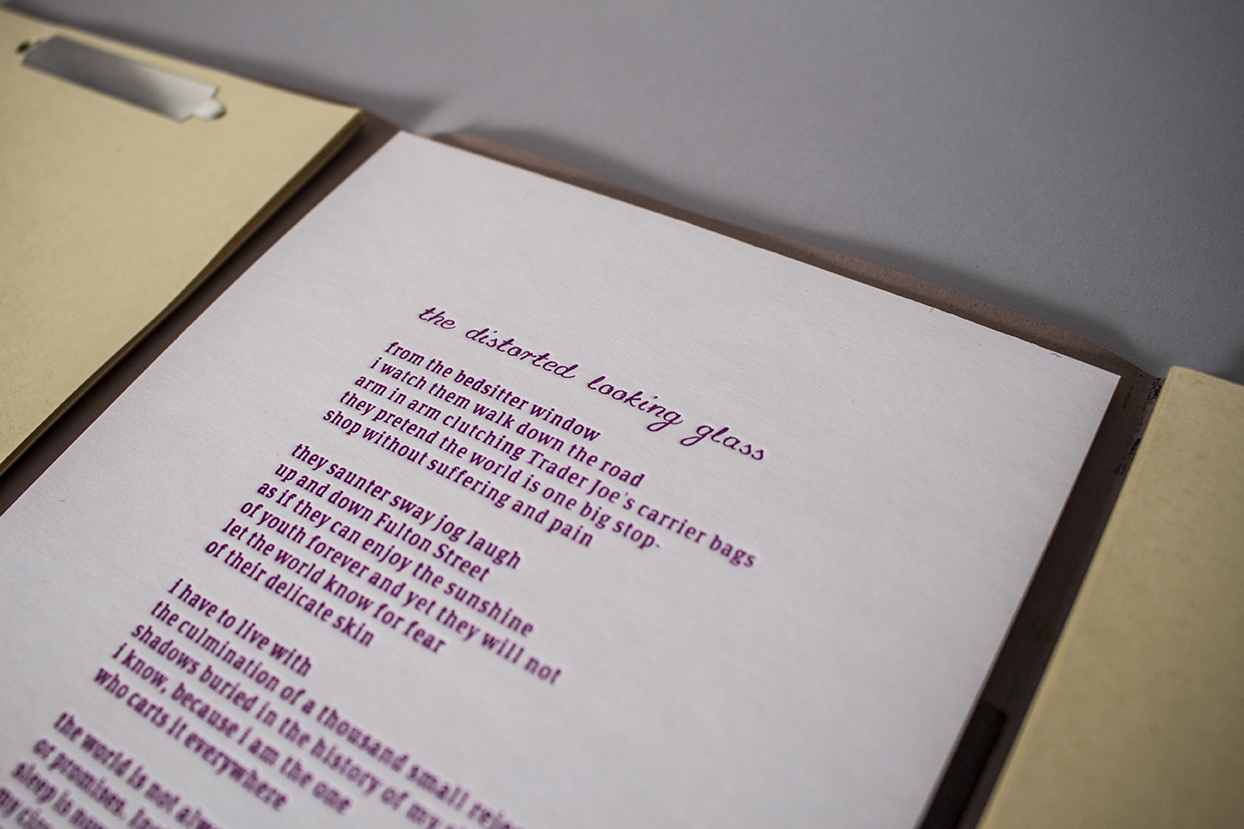
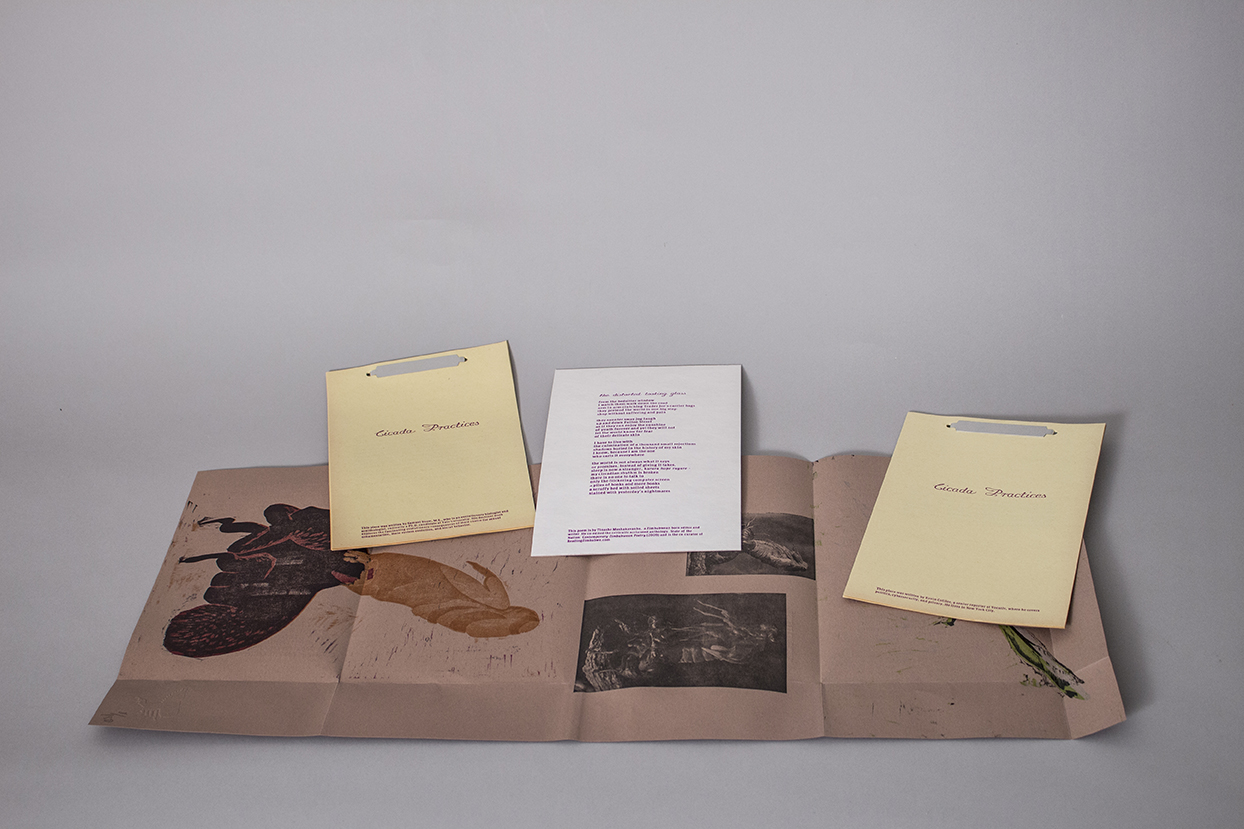

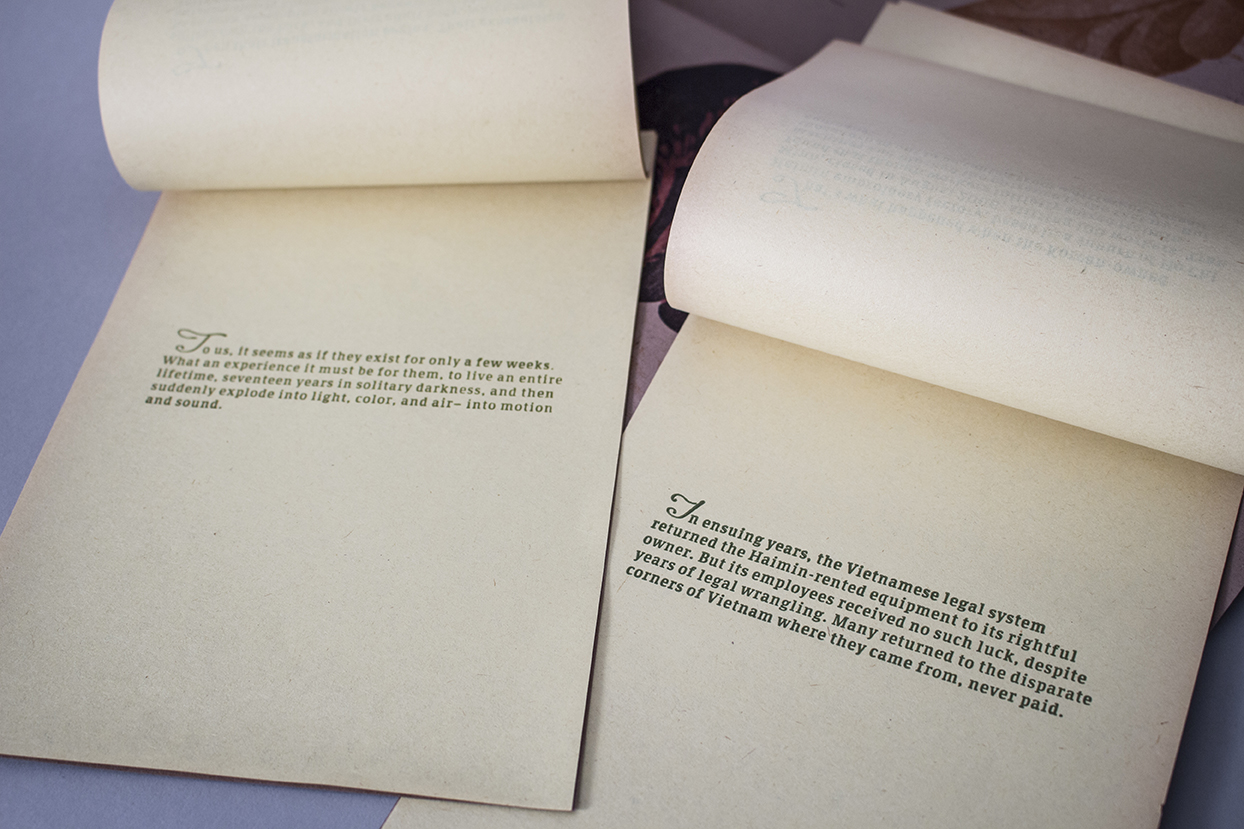
Last summer, I was listening to a podcast on the New Books Network about labor rights in Vietnam. This particular interview was with Tran Ngoc Angie, author of the book Ties that Bind: Cultural Identity, Class, and Law in Vietnam’s Labor Resistance. She described a phenomenon called “cicada practices,” which is when business owners set up a factory and then completely evacuate the premises, deserting the workers without compensation. I was disturbed by this exploitation of workers and how this practice impacts one’s identity. A person’s vocation often gives them personal pride— it allows an individual to make, to contribute, and to support their community and loved ones. Such a practice has repercussions across many senses of self.
Cicada practices, as an analogy, reminds me of a summer afternoon a few years ago, when I went to see cicadas rumored to be in a park nearby. I was told they emerged in such large numbers that they swarm around you. But I was too late. When I arrived, the only remainder of the cicadas were their thousands of skins left behind. I thought that I saw one cicada settled on a branch. When I reached out to touch it, it fell over like a corpse, a weightless carcass, as if to emphasize that new life had fleeted away.
This issue of Martha’s Quarterly, Winter 2016, reflects on the ideas of what makes a life, what defines an identity, and how those entities are part of a bigger system, all simultaneously living and dying at the same time. Cicada Practices are presented by Kevin Collier and Samuel Snow. Collier describes the cicada practices in Vietnamese industry and Snow describes cicada biology. Nested between is a poem, the distorted looking glass, by Tinashe Mushakavanhu, who writes from the point of view of someone who feels so left out that his circadian rhythm cannot find peace. Their contributions suggest relationships to these separate systems despite being inherently different in scale and context. Juxtaposing them aims to encourage empathy between different ways of existing.
As I write this introduction, Donald Trump prepares to take office as the 45th president of the United States. On November 8th, as I watched the electoral votes come in, I felt stunned and ignorant about the perspectives of the many people who chose him. Could part of the president-elect’s supporters be suffering from a sort of cicada practice as well? In the Rust Belt, the collapse of once reliable industry jobs has depleted families of their livelihoods and traditions, which echoes the same loss of identity that I described earlier. For other Americans, there’s been a sharp uptick in hate crimes and harassment since the election. Anxiety and fear have risen accordingly among people of color, Muslims, and the LGBTQ community. Could there be a cicada practice in the midst here as well, as their ways of life and values are threatened by the new administration? Just as the dead skin of a cicada is a sign of new life, this issue suggests that when something dies, elsewhere something thrives.
- Tammy Nguyen
Martha’s Quarterly, Issue 2, Winter 2016, presents three texts: Cicada Practices by Samuel Snow, Cicada Practices by Kevin Collier, and the distorted looking glass by Tinashe Mushakavanhu. This project utilizes woodblock and letterpress printing. The fonts used in the text include Communist sizes 12 and 8, and Promocyja sizes 12 and 36. The jacket which holds the three texts flattens out to a poster. The papers used include Crush Almond 90lbs, and found office paper. The drawings, design, printing, and construction was completed by Tammy Nguyen. This edition was of 150 hand-made portfolios.
Martha's Quarterly
Issue 2
Winter 2016
Cicada Practices
About the contributors:
Samuel Snow, M.S., is an evolutionary biologist and ornithologist, currently a Ph.D. candidate at Yale University. His doctoral work explores the fascinating evolutionary consequences of mate choice for sexual ornamentation, mate-system evolution, and social behavior.
Tinashe Mushakavanhu is a Zimbabwean born editor and writer. He co-edited the critically acclaimed anthology, State of the Nation: Contemporary Zimbabwean Poetry (2009) and co-cuartor of ReadingZimbabwe.com.
Kevin Collier is a senior reporter at Vocativ, where he covers politics, cybersecurity, and privacy. He lives in New York City.

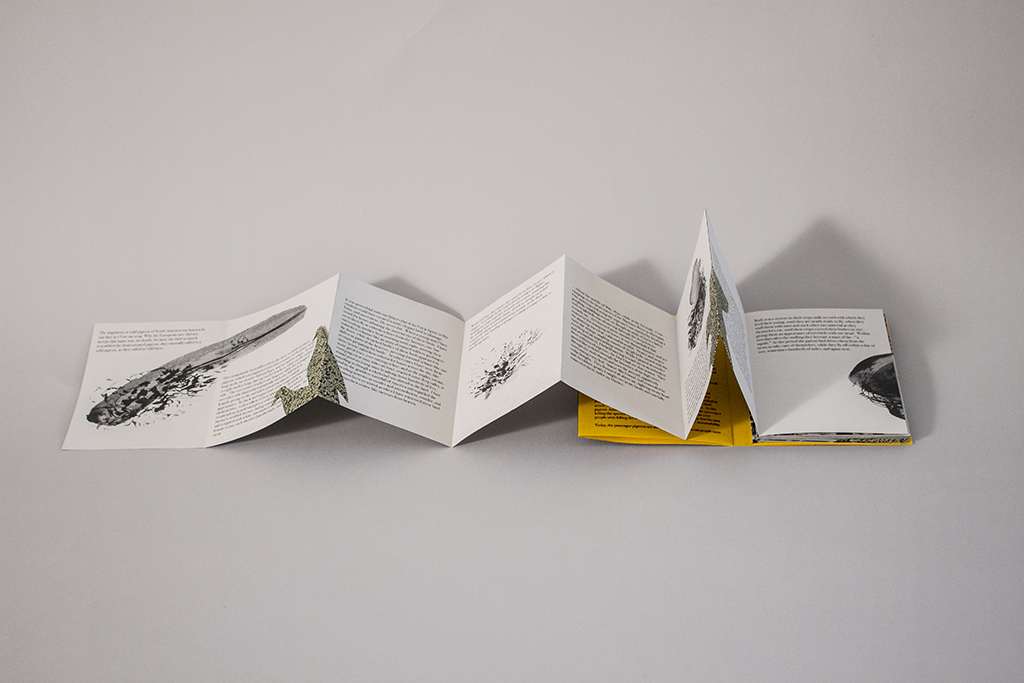
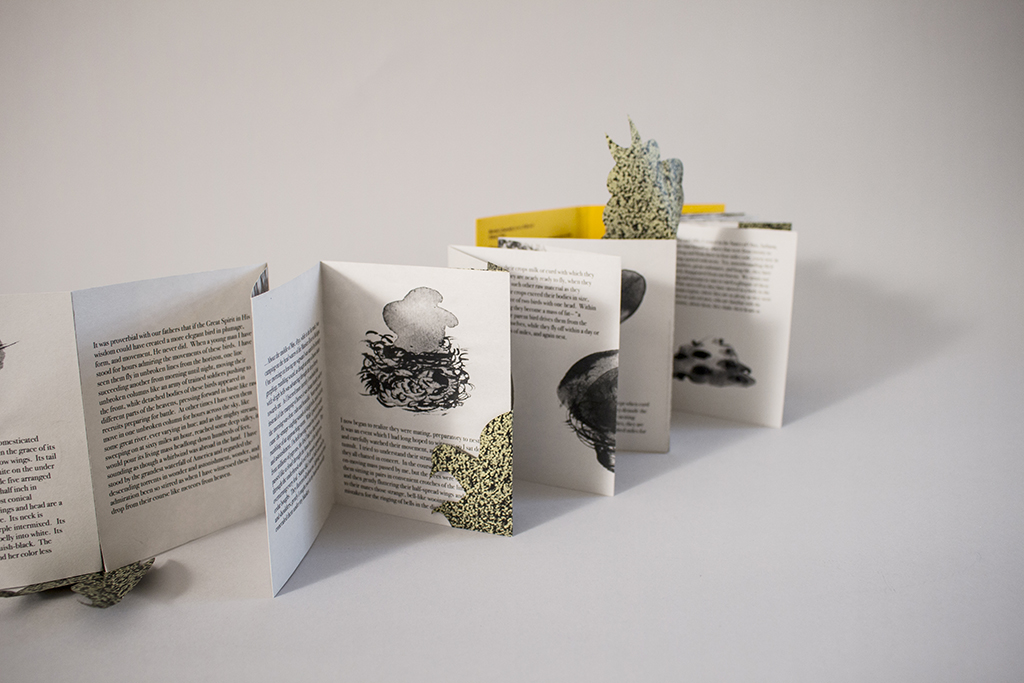
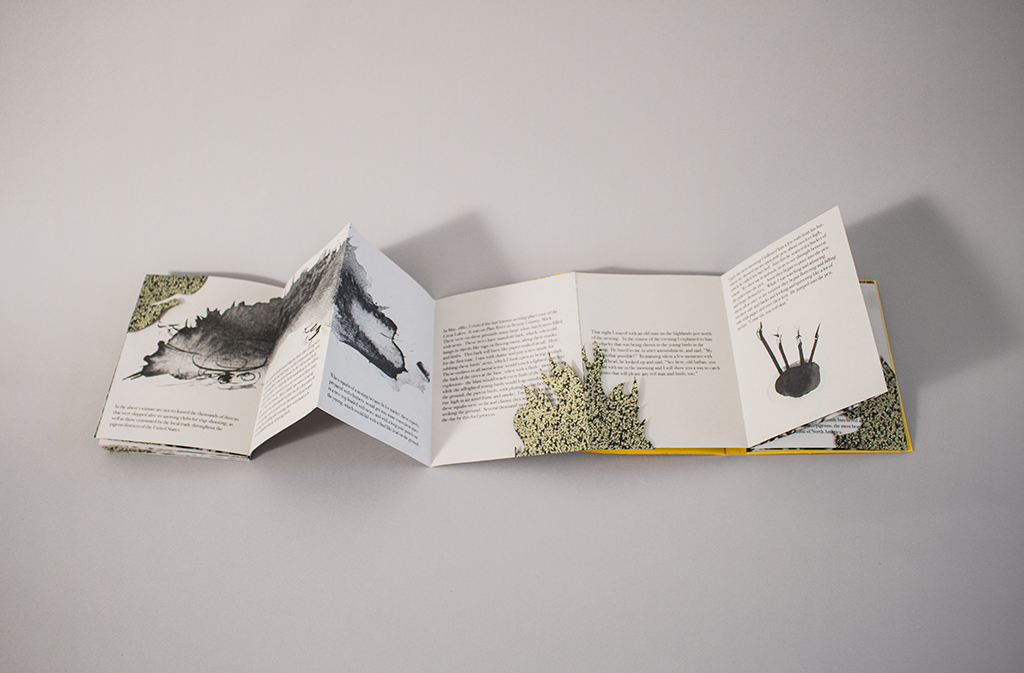
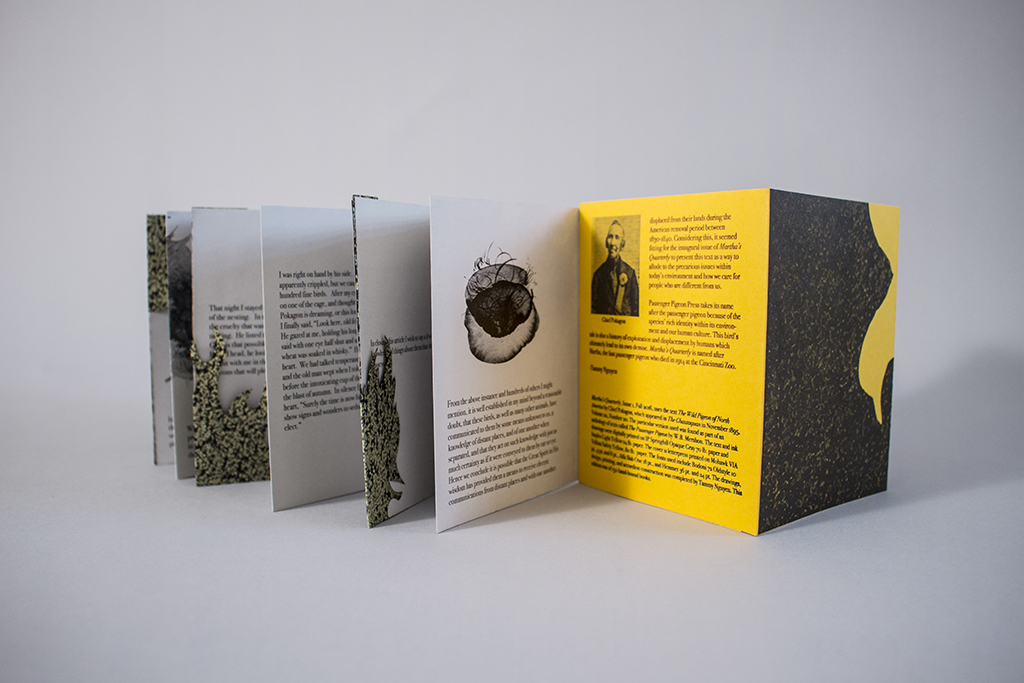
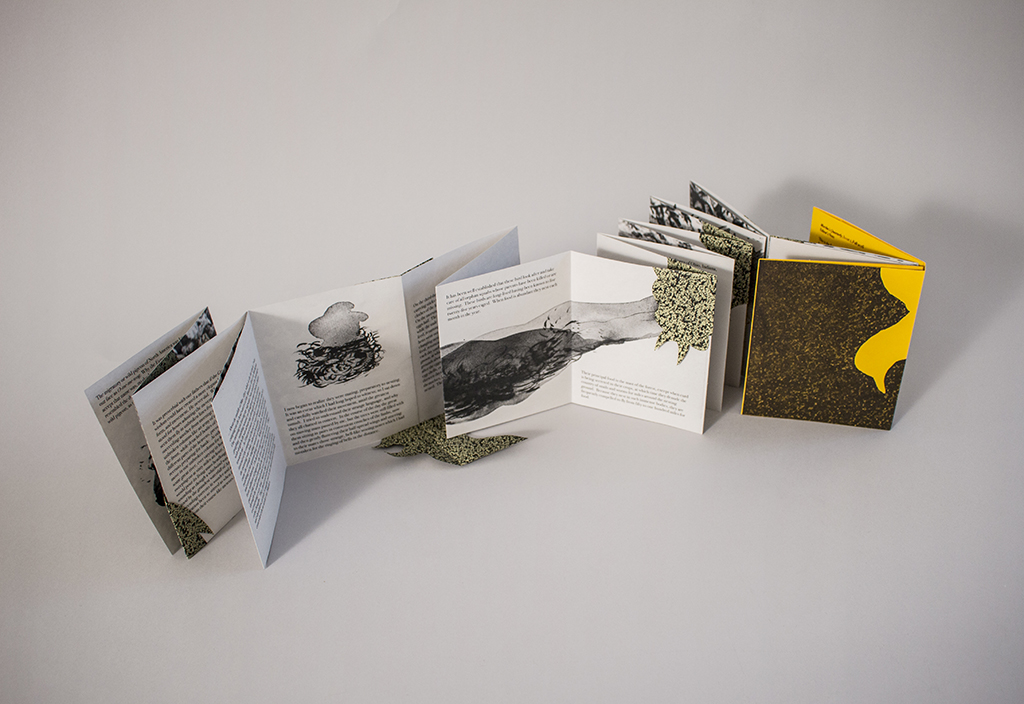
Martha's Quarterly
Issue 1
Fall 2016
The Wild Pigeon of North America
This first issue is a visual presentation of the text The Wild Pigeon of North America by Chief Pokagon, which appeared in The Chautaquan in November 1895, Volume 22, Number 20. Chief Pokagon, or Simon Pokagon, was nicknamed by the press as the “Redskin poet, bard, and Longfellow of his race.” He was a full-blooded Native American and a member of the Pokagon Band of Potawatomi Indians that once dwelled in the Great Plains of North America. An activist, writer, and poet, Chief Pokagon fought for the fair treatment of Native American people. In this article, Chief Pokagon describes his awe for what we know as the passenger pigeon. Additionally, he accounts the way that white Americans were killing the species by the masses. He compares this to the way that his own people were killing the bird while also ensuring the species’ sustainability.
Today, the passenger pigeons are extinct and the Potawatomi people were displaced from their lands during the American removal period between 1830-1840. Considering this, it seemed fitting for the inaugural issue of Martha’s Quarterly to present this text as a way to allude to the precarious issues within today’s environment and how we care for people who are different from us.
Passenger Pigeon Press takes its name after the passenger pigeon because of the species’ rich identity within its environment and our human culture. This bird’s tale is also a history of exploitation and displacement by humans which ultimately lead to its own demise. Martha’s Quarterly is named after Martha, the last passenger pigeon who died in 1914 at the Cincinnati Zoo.
- Tammy Nguyen
